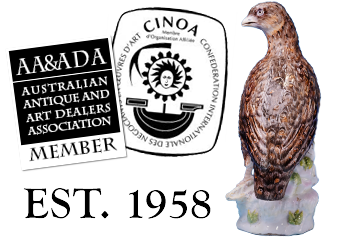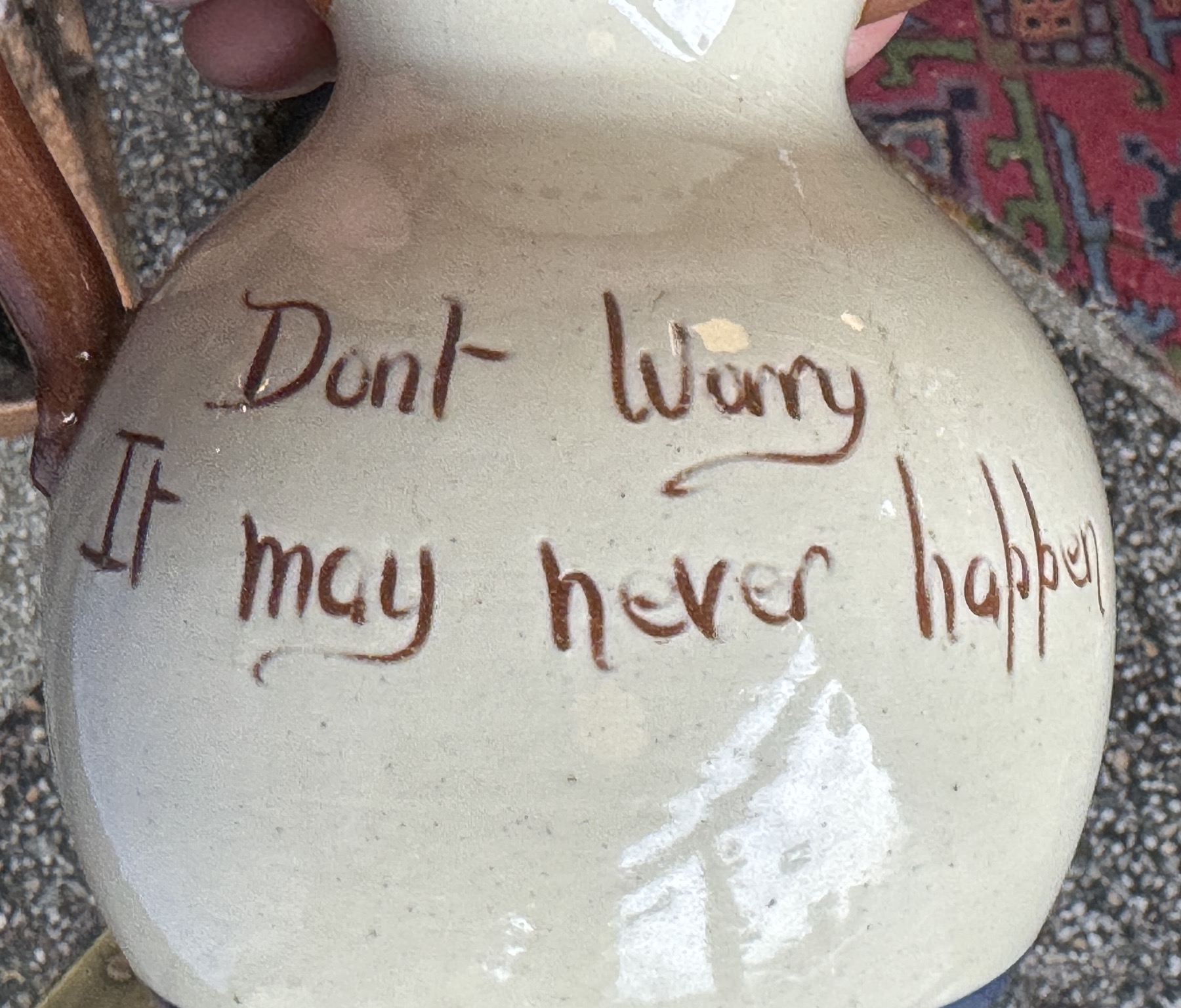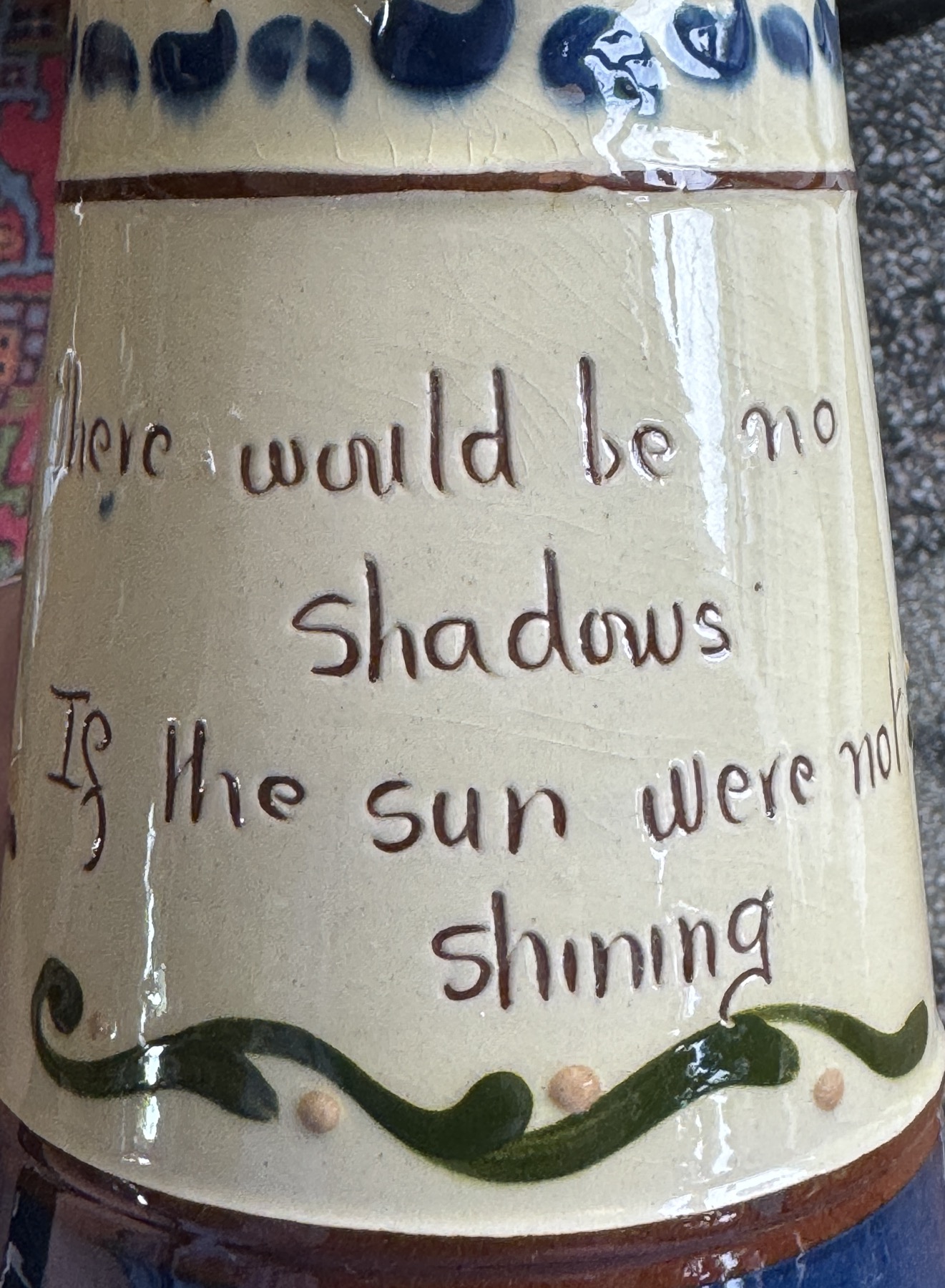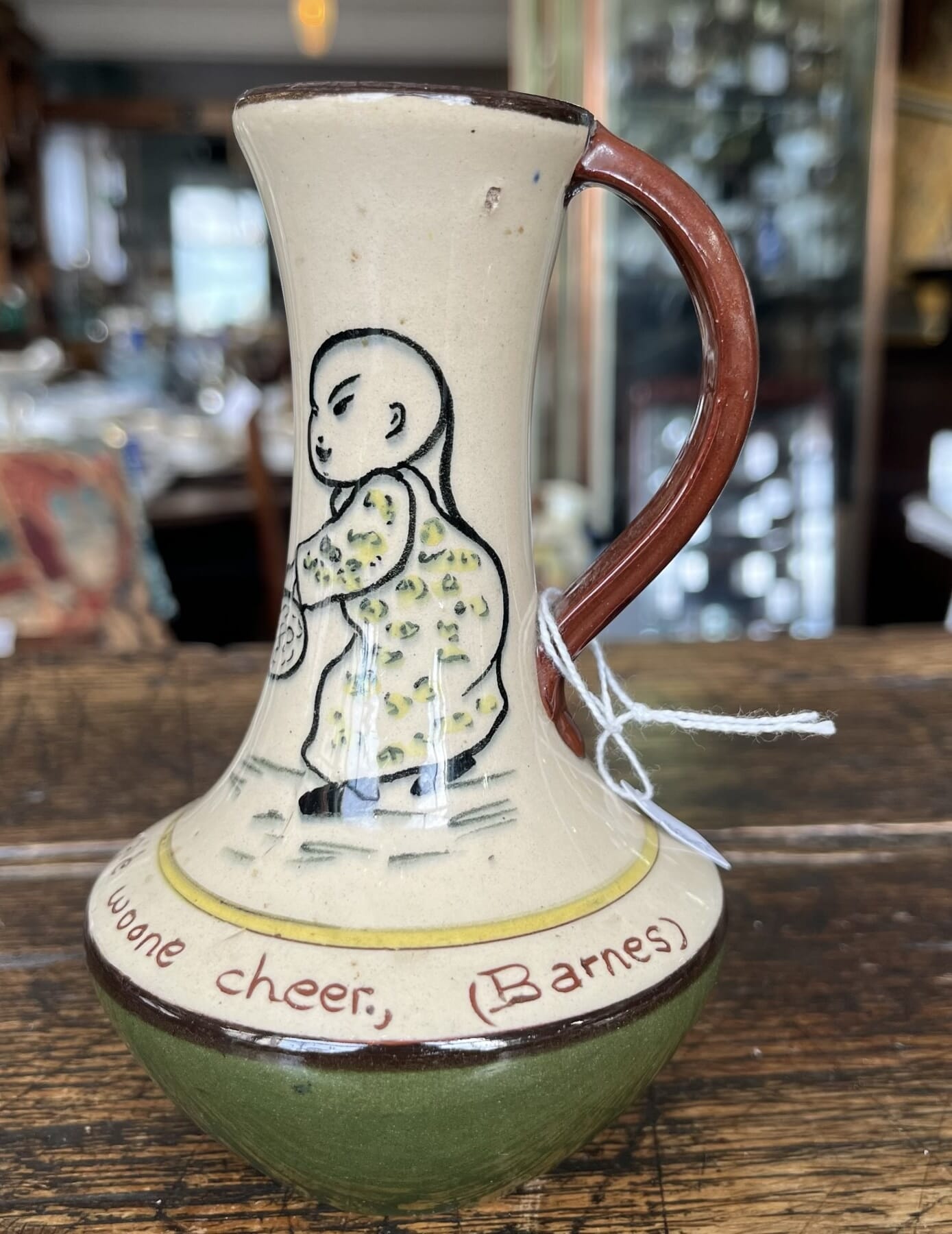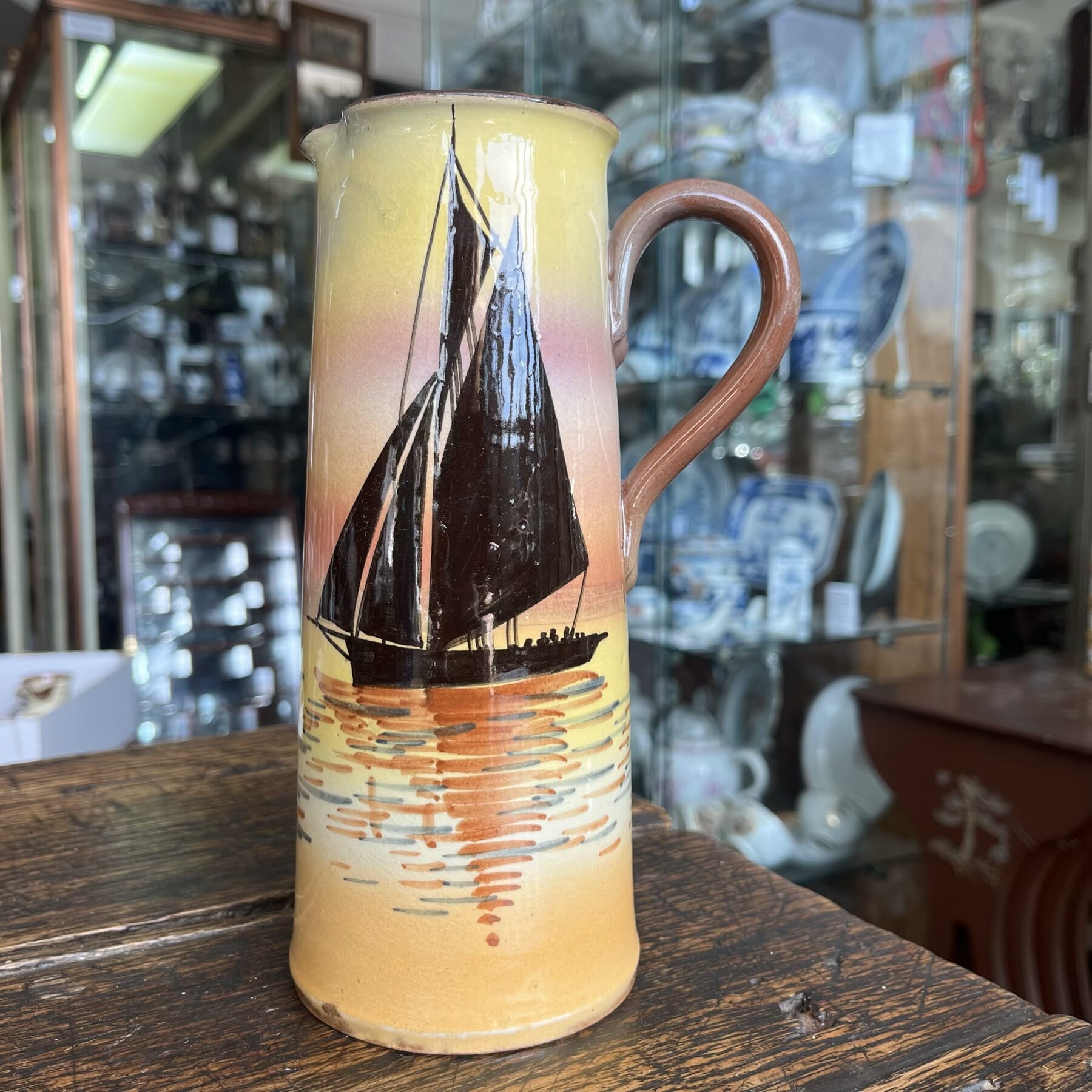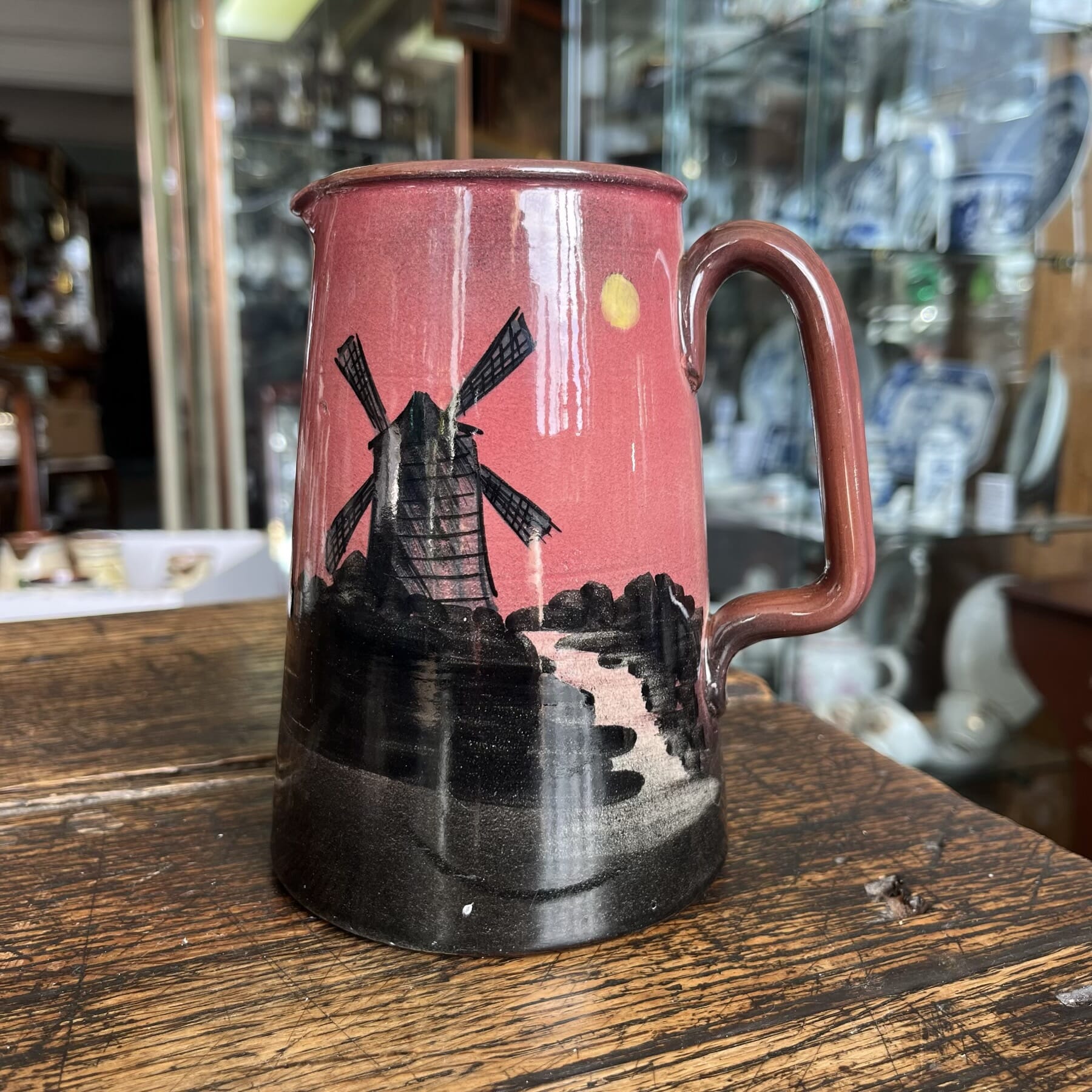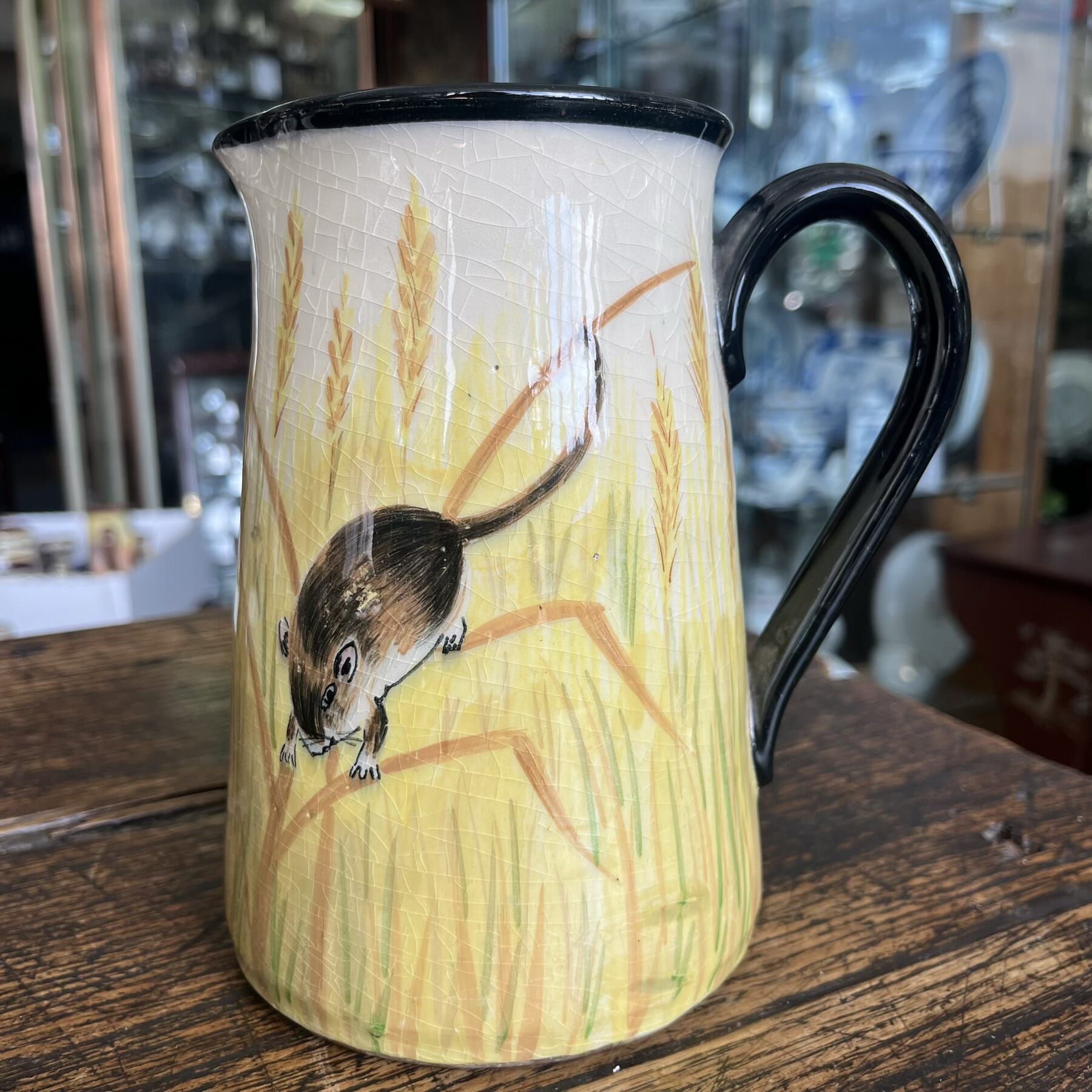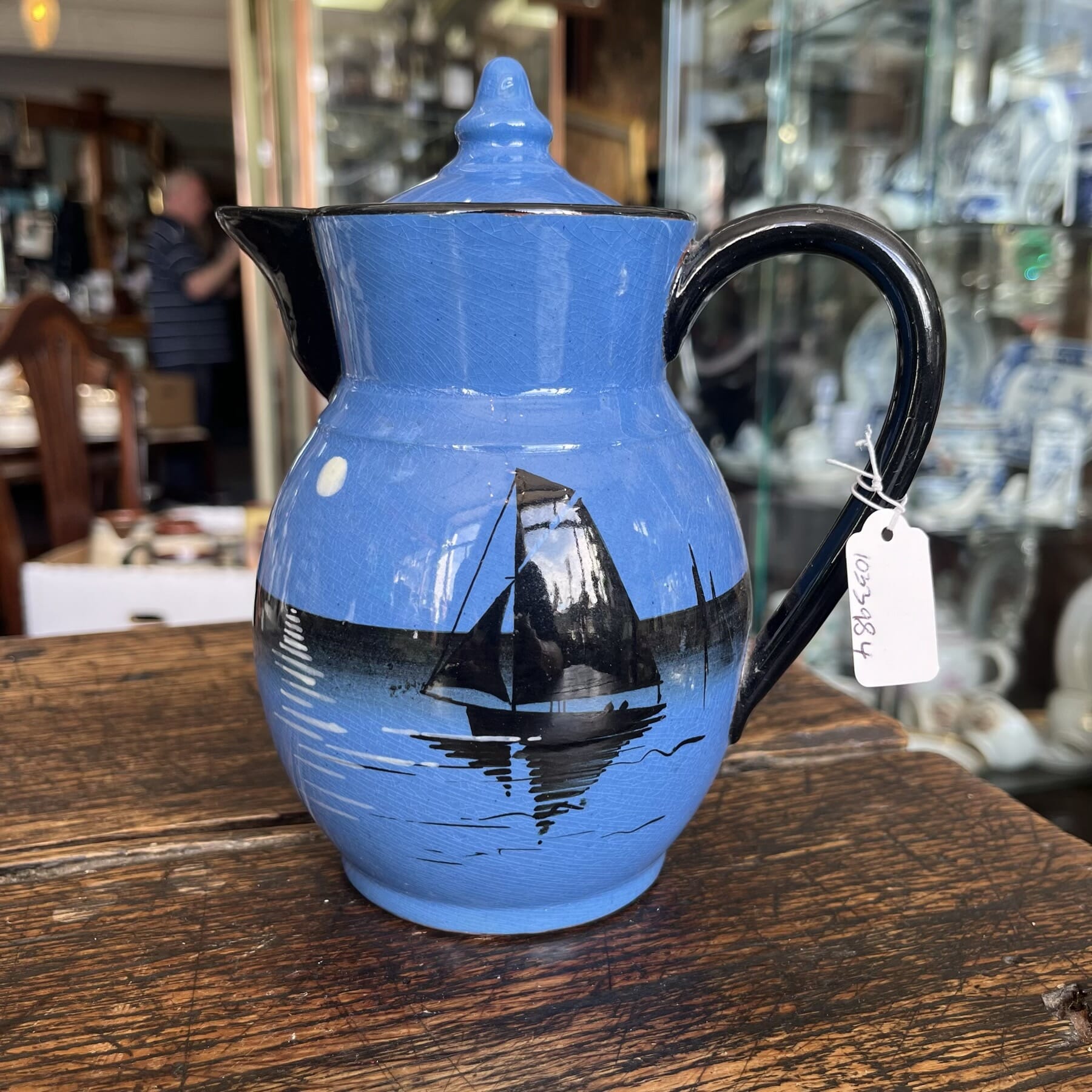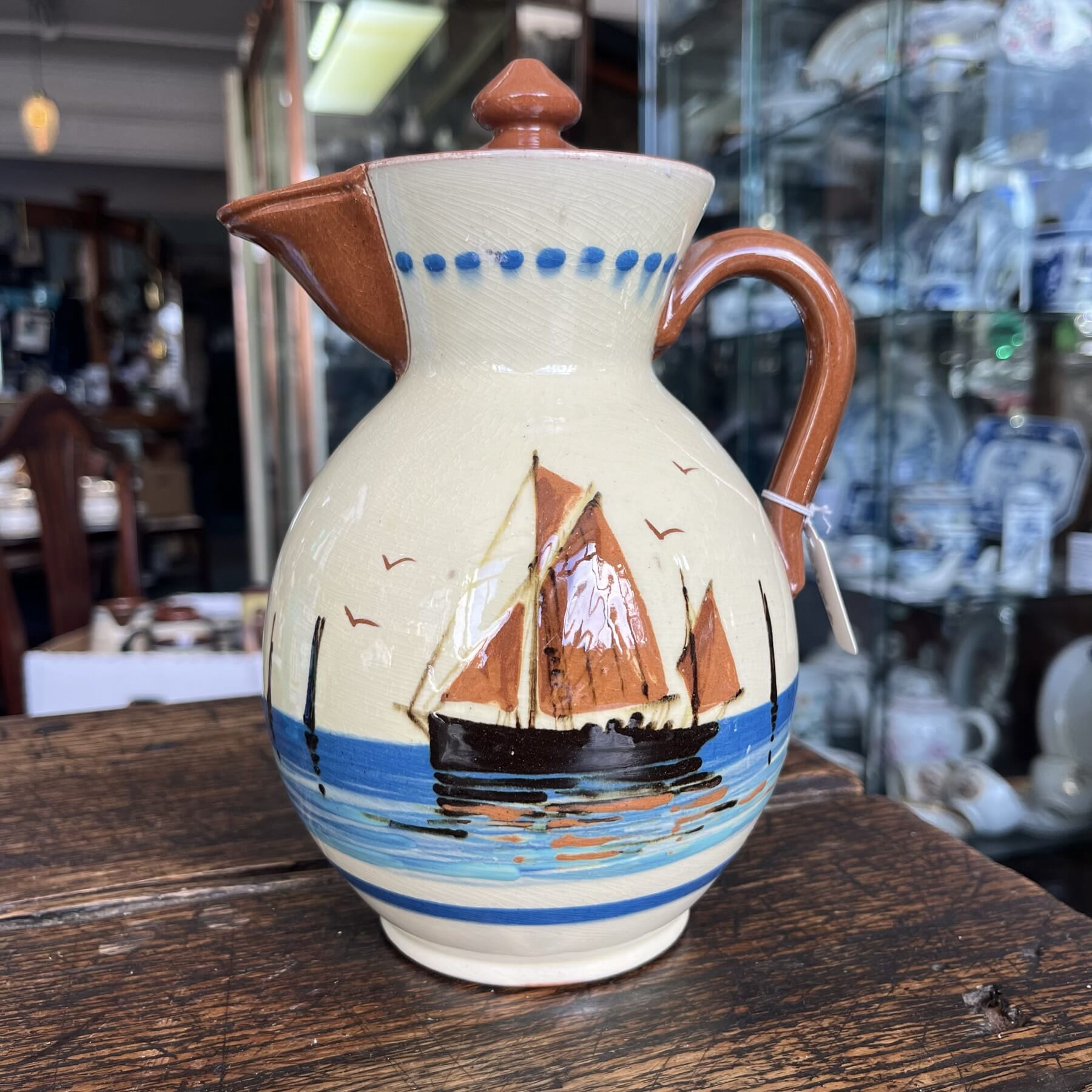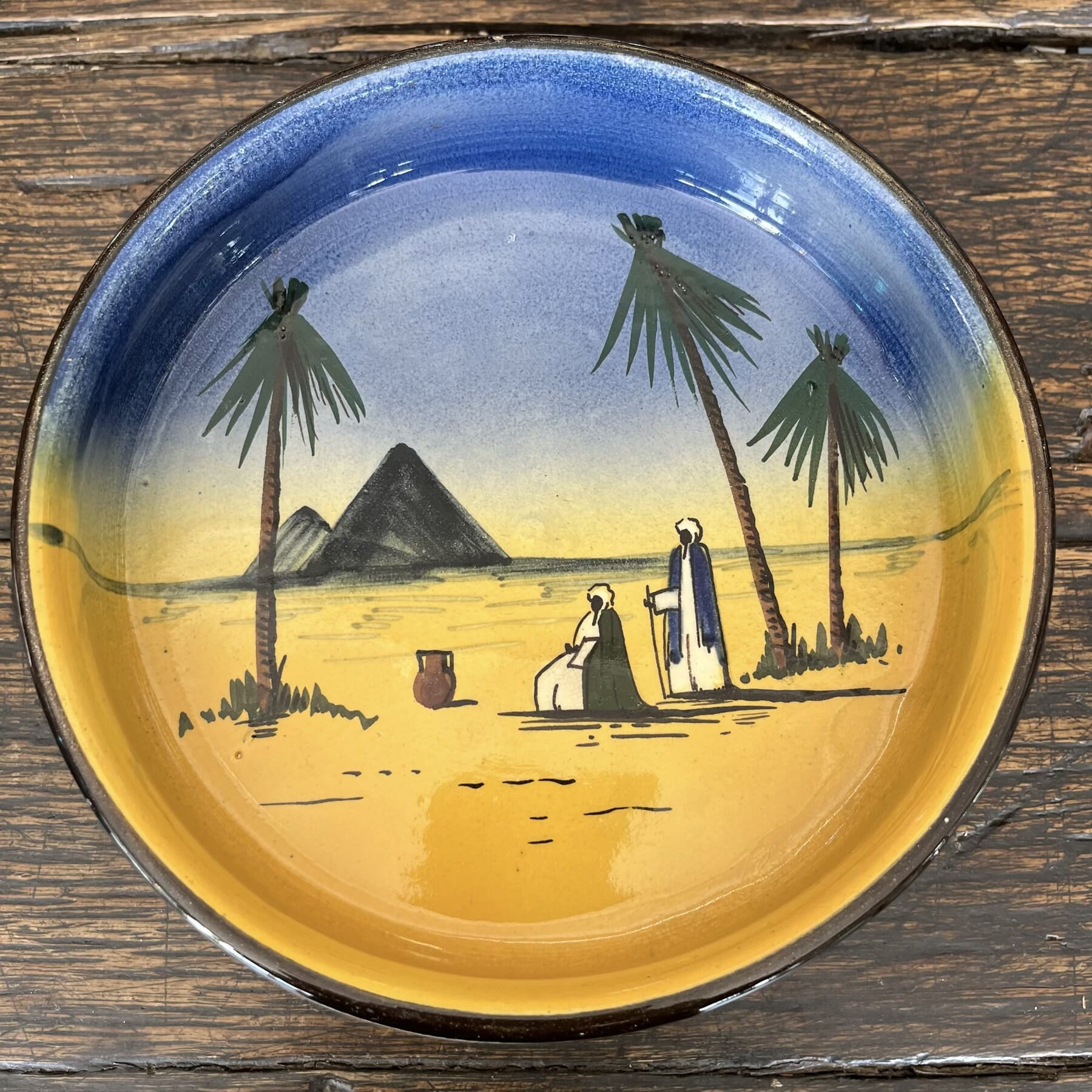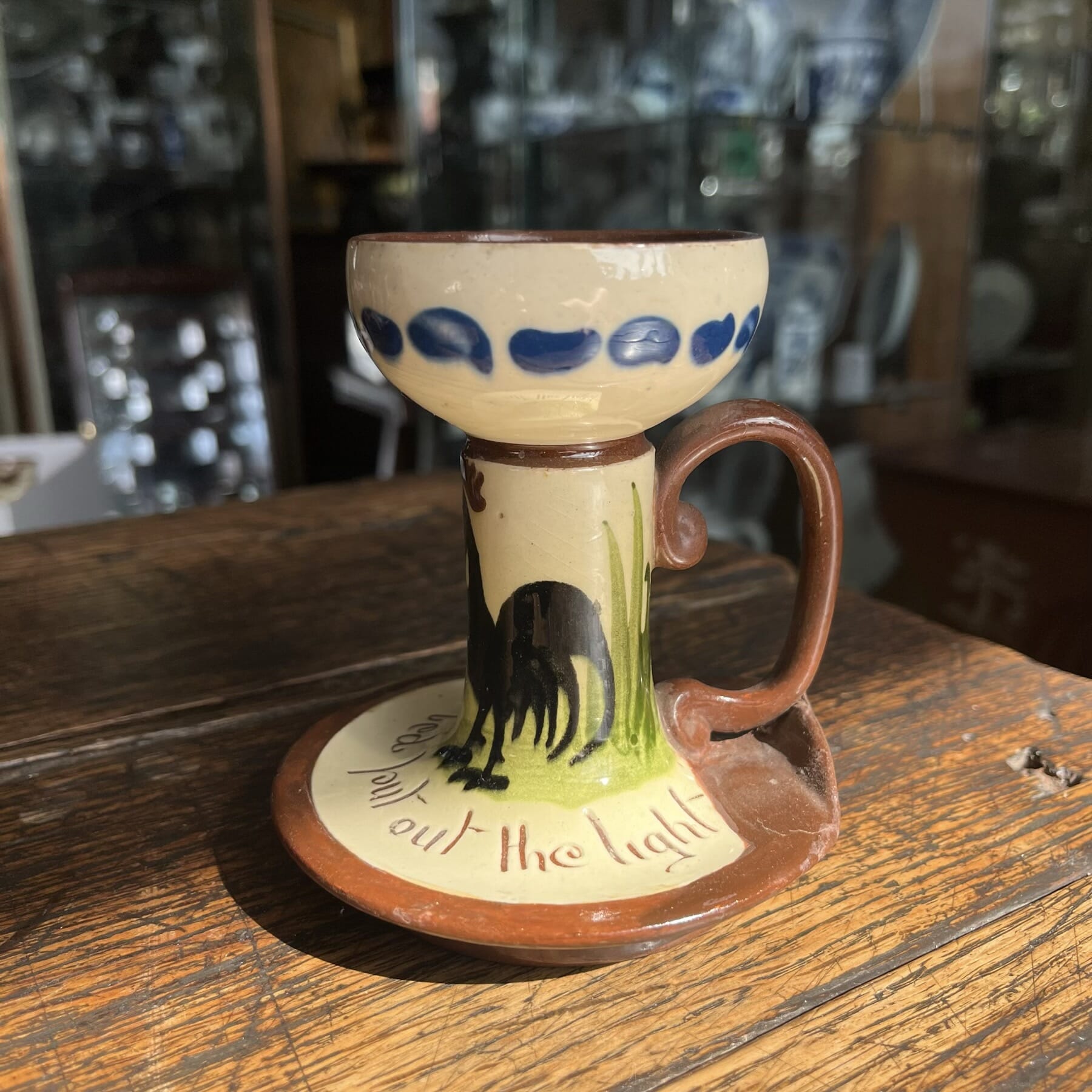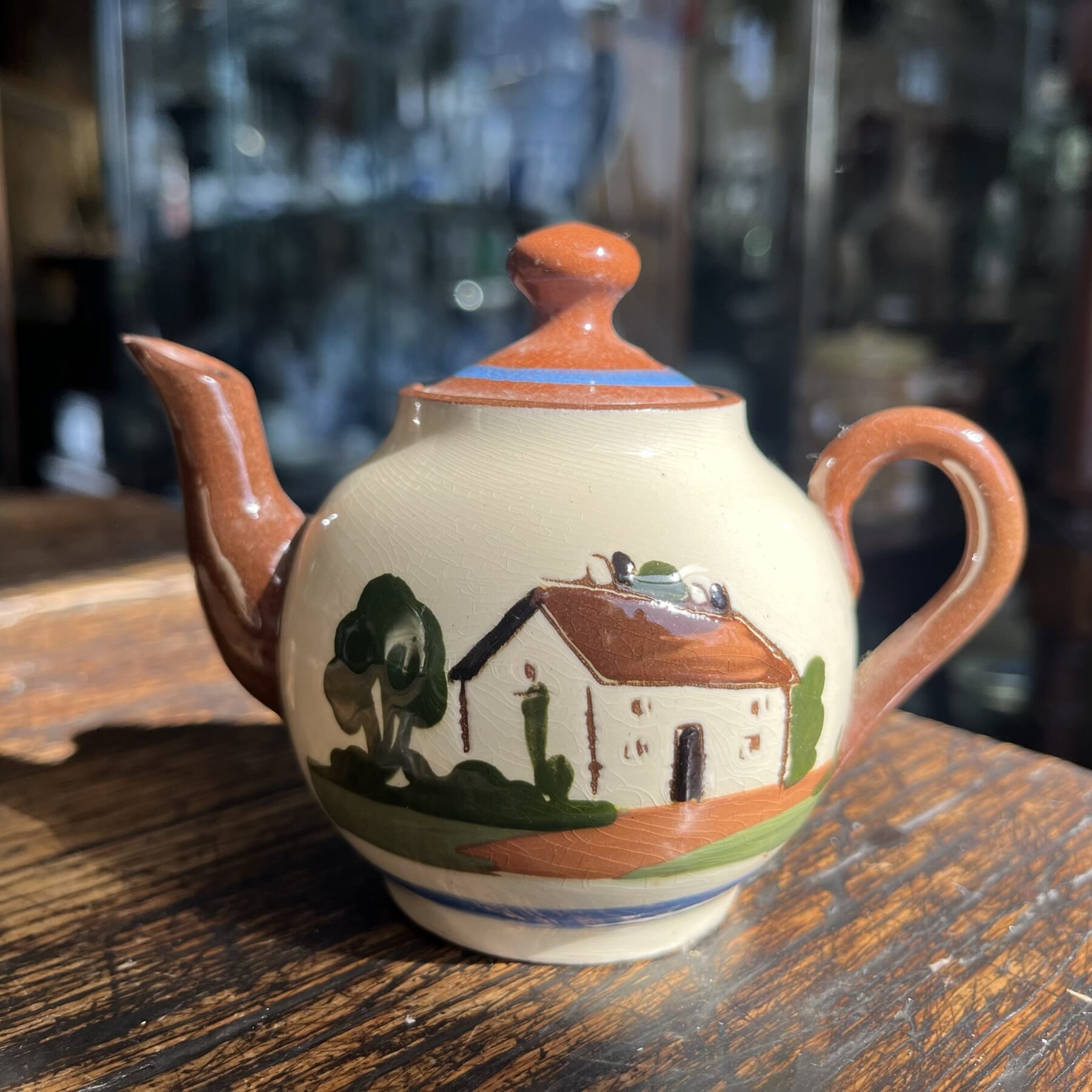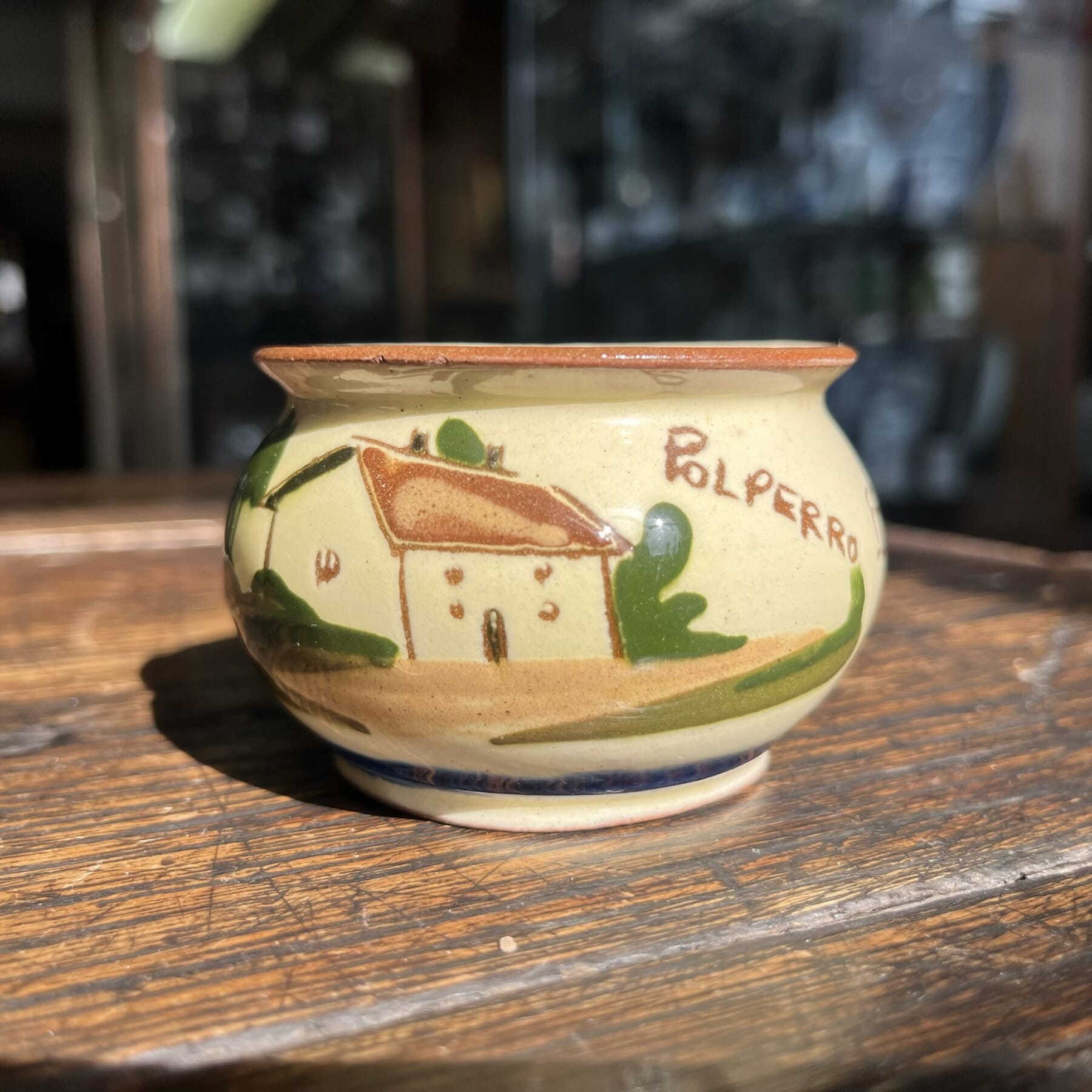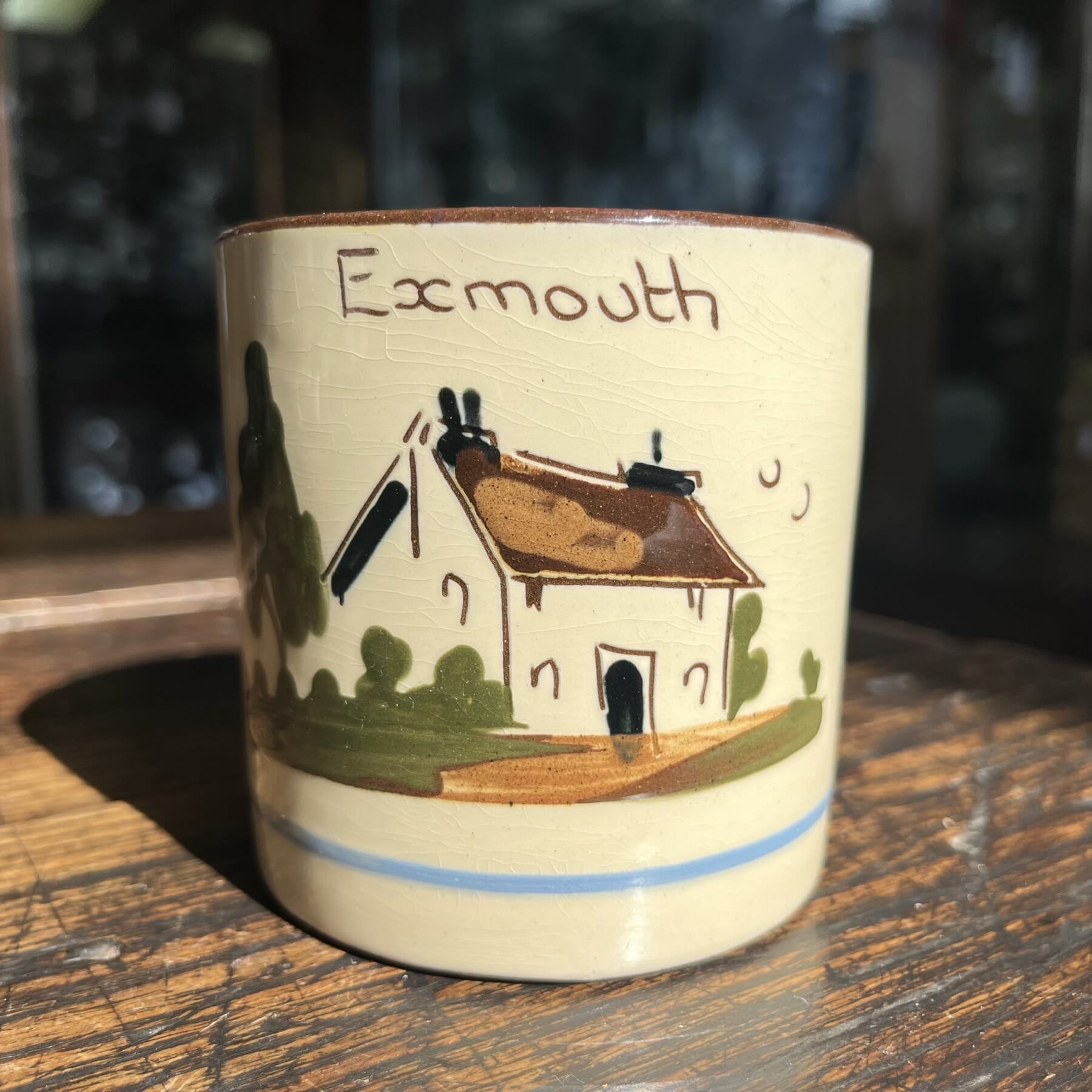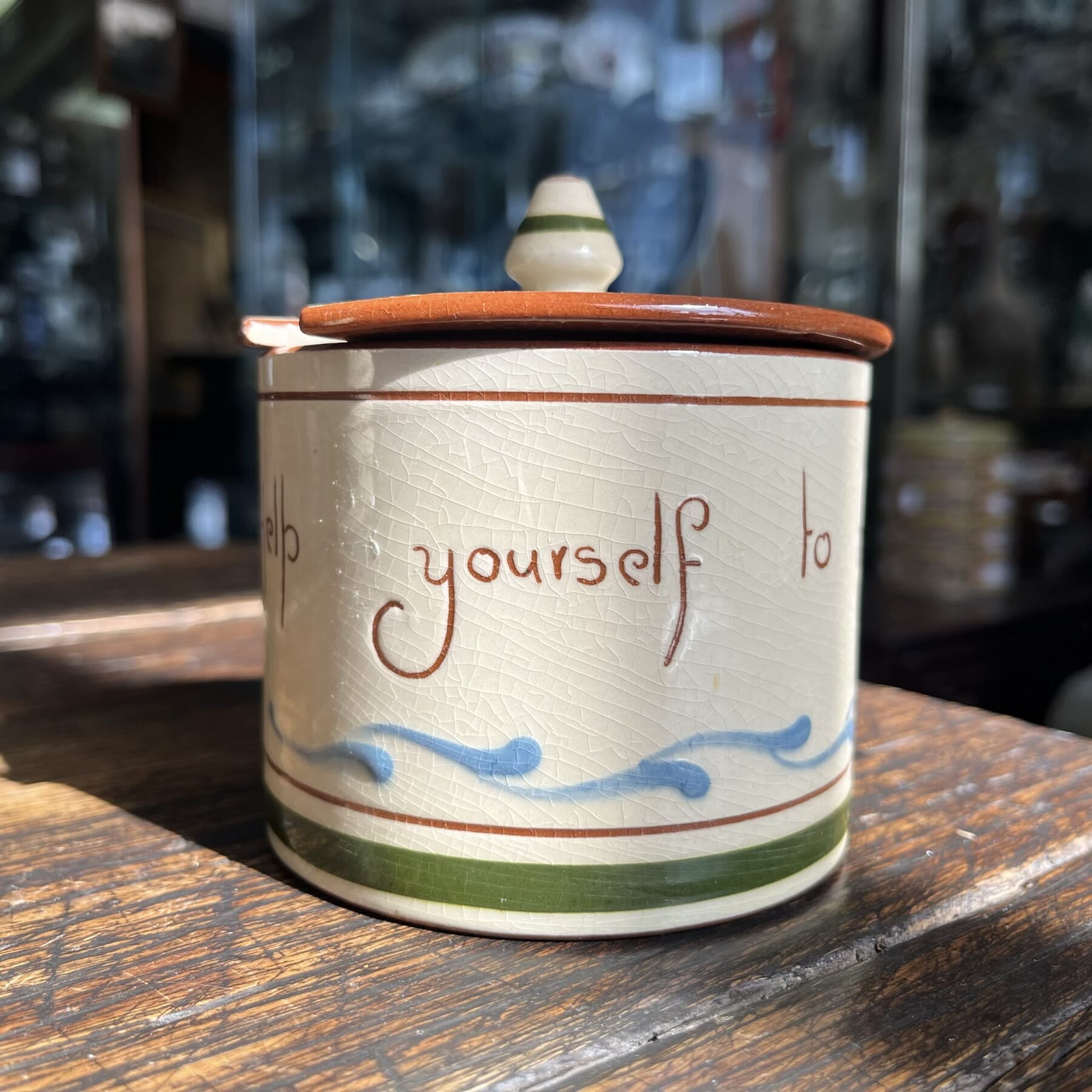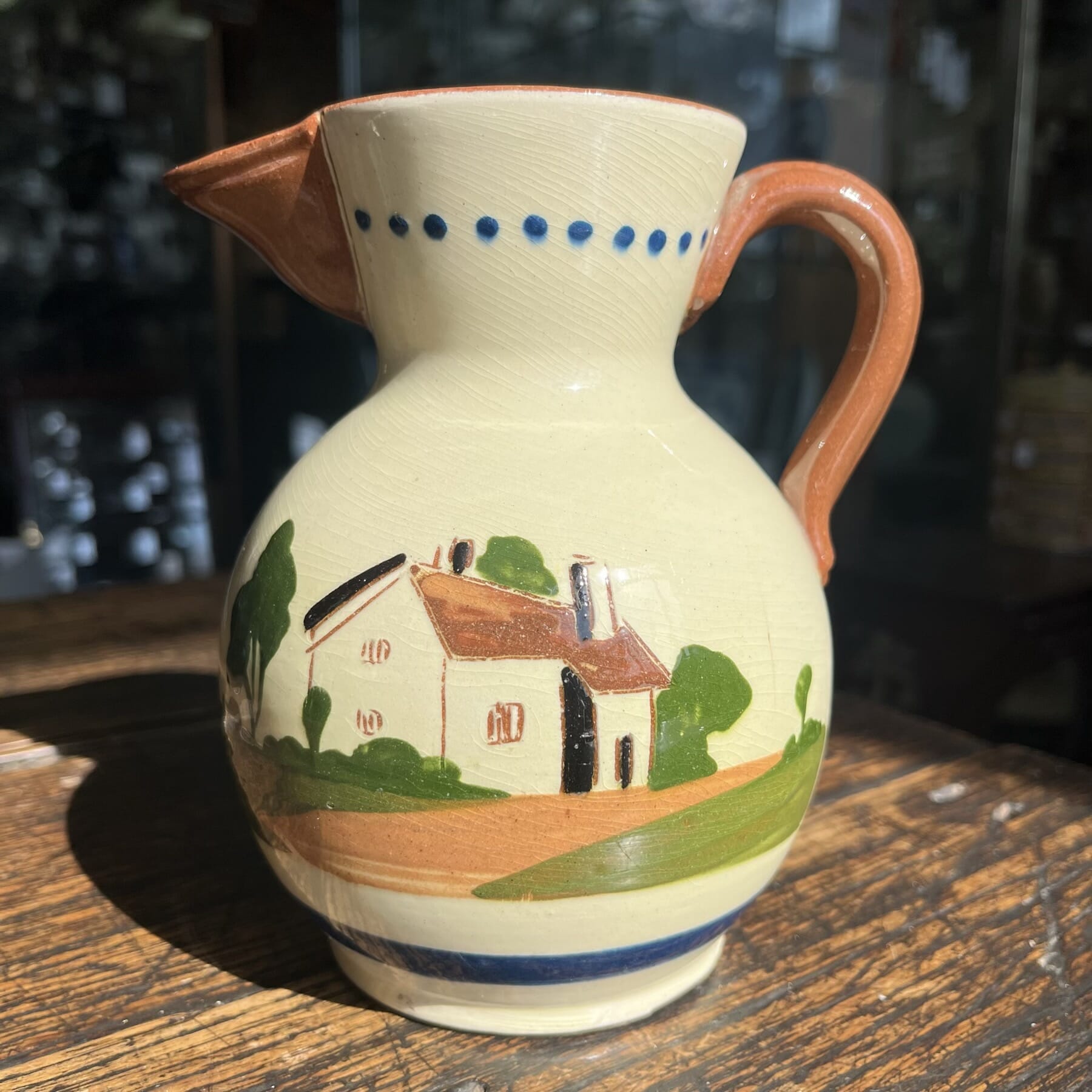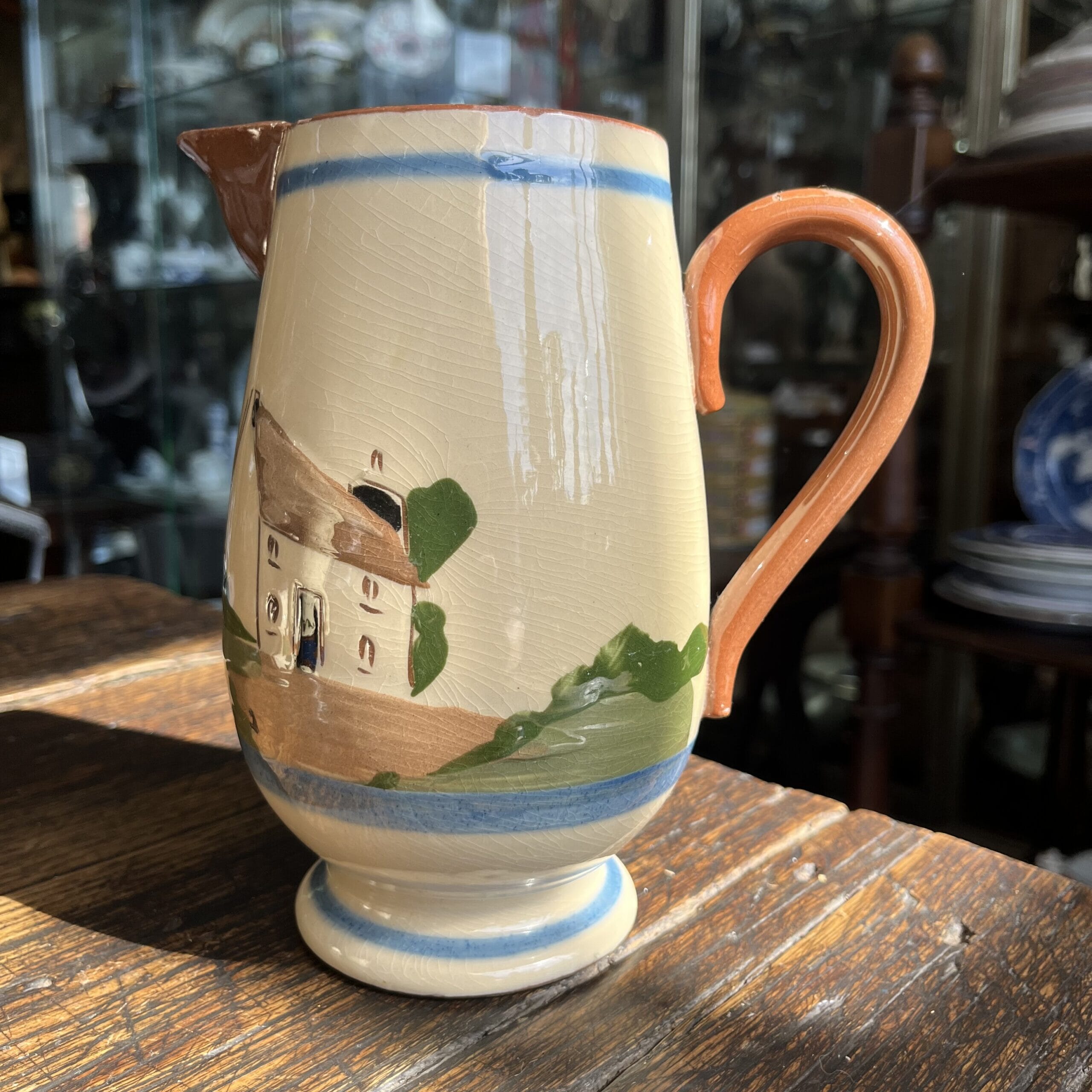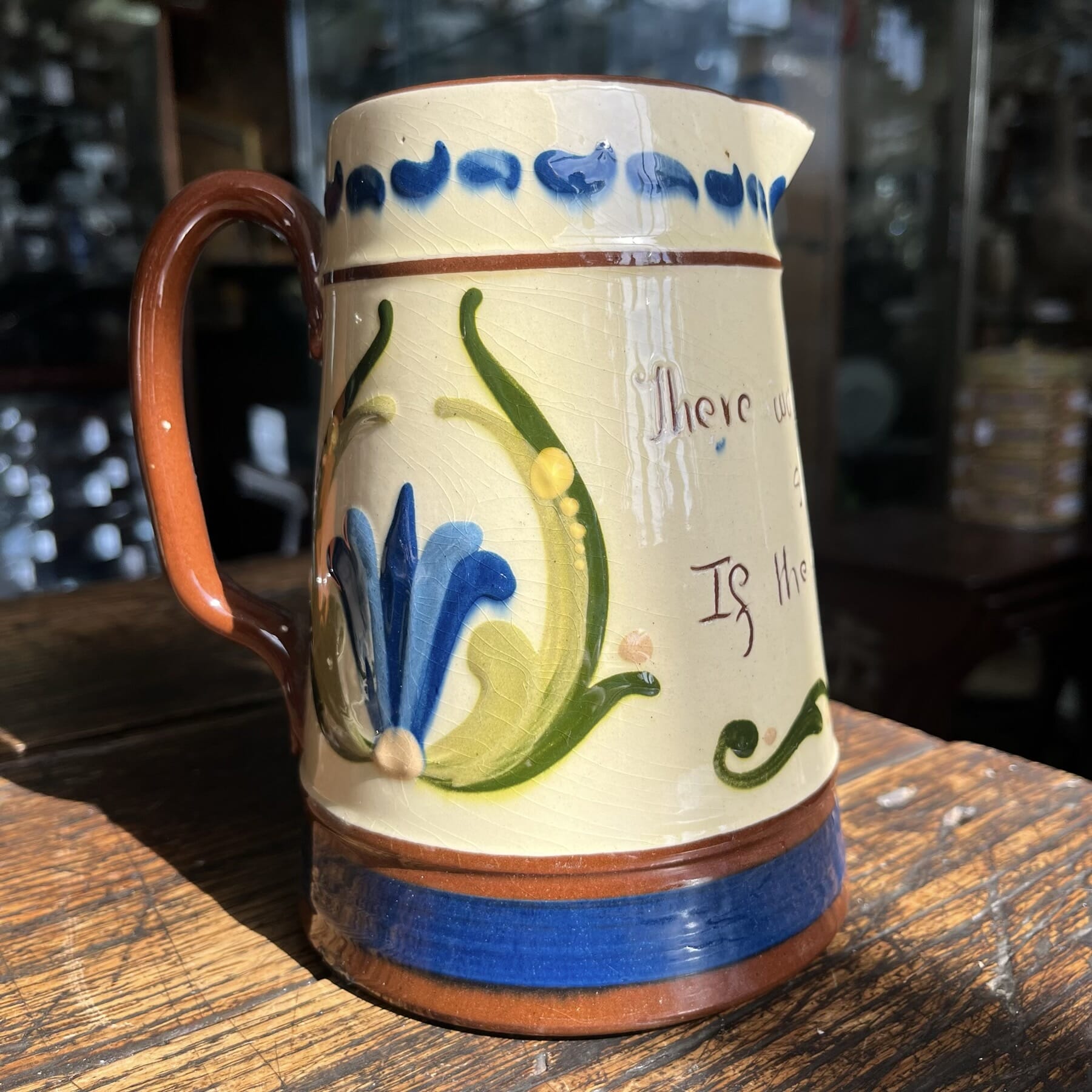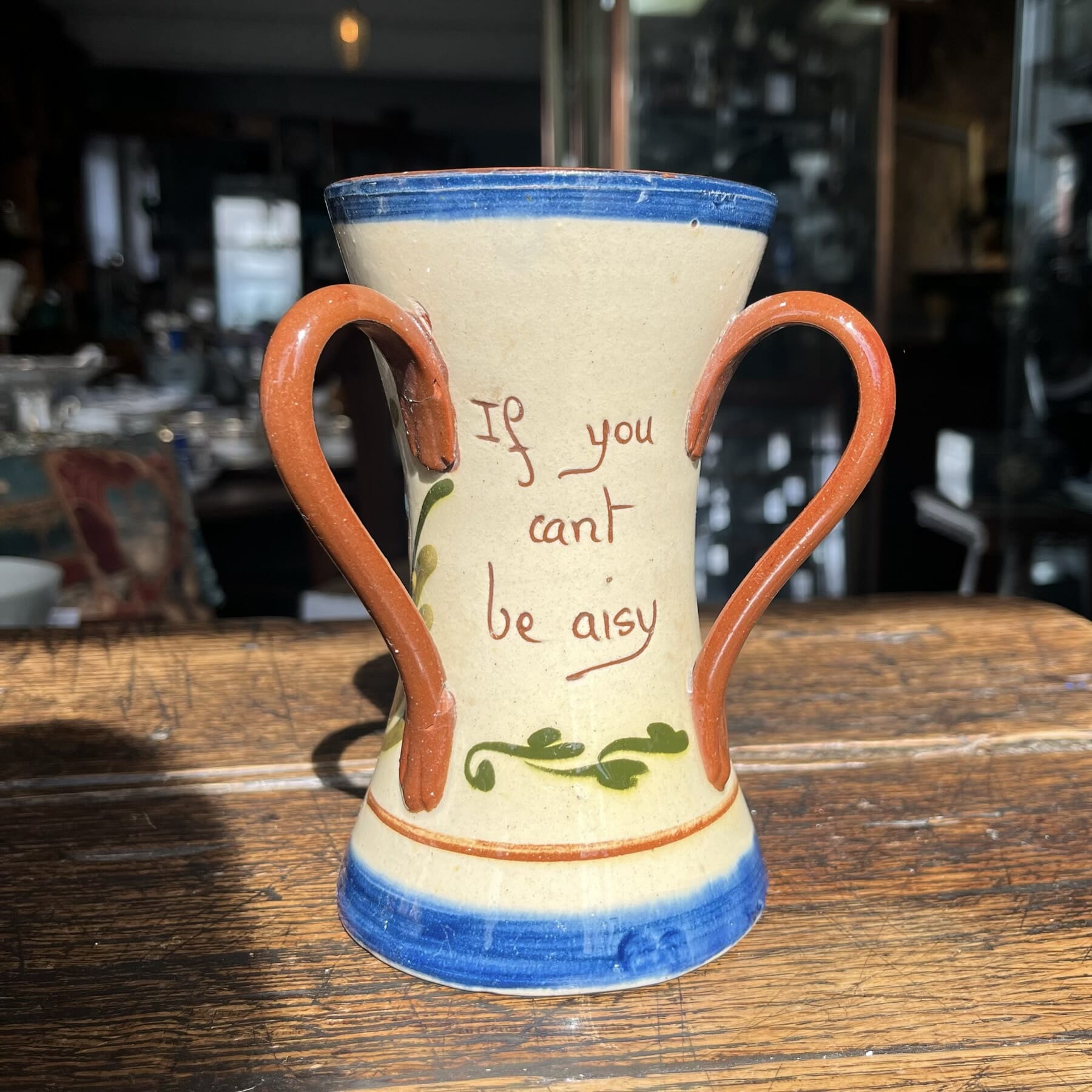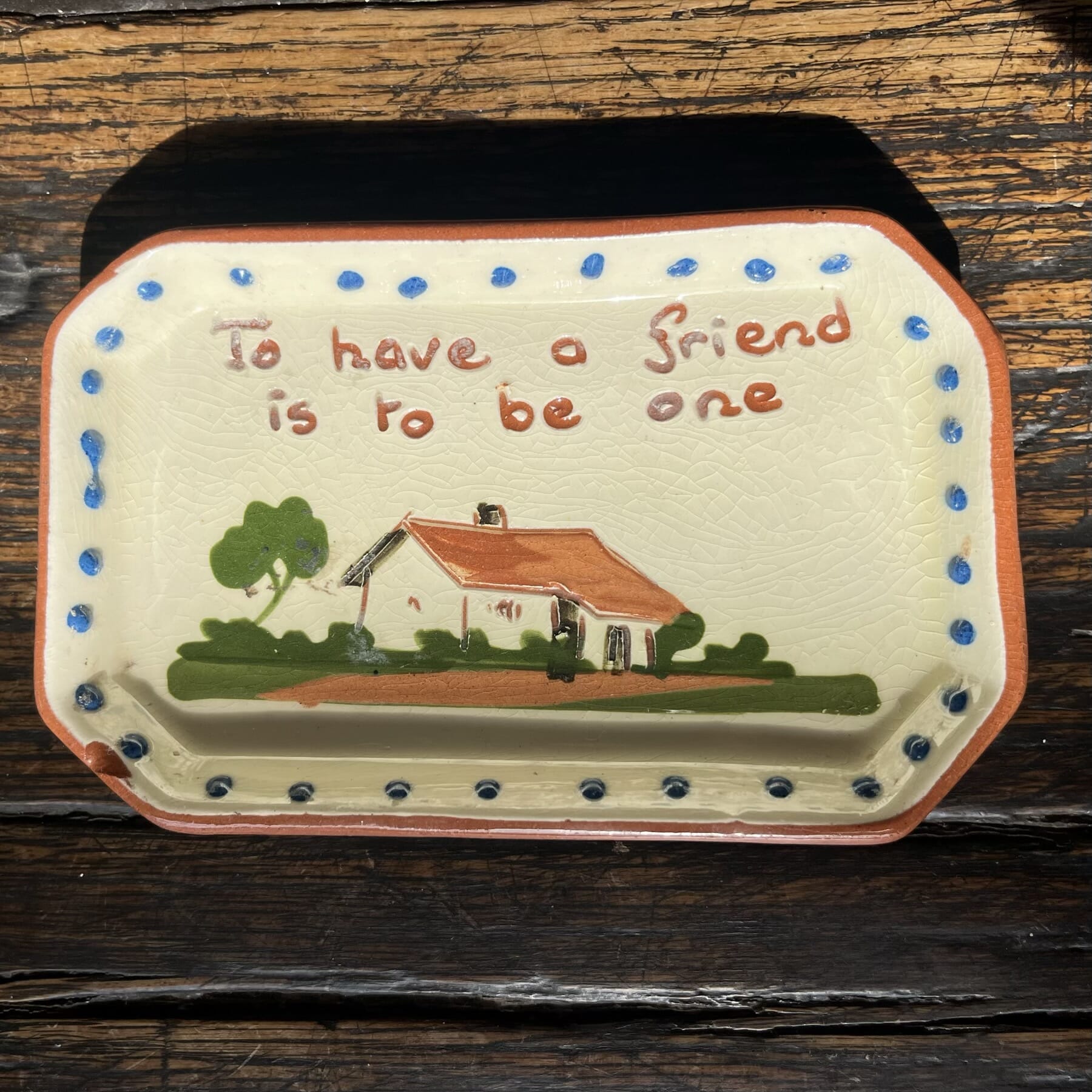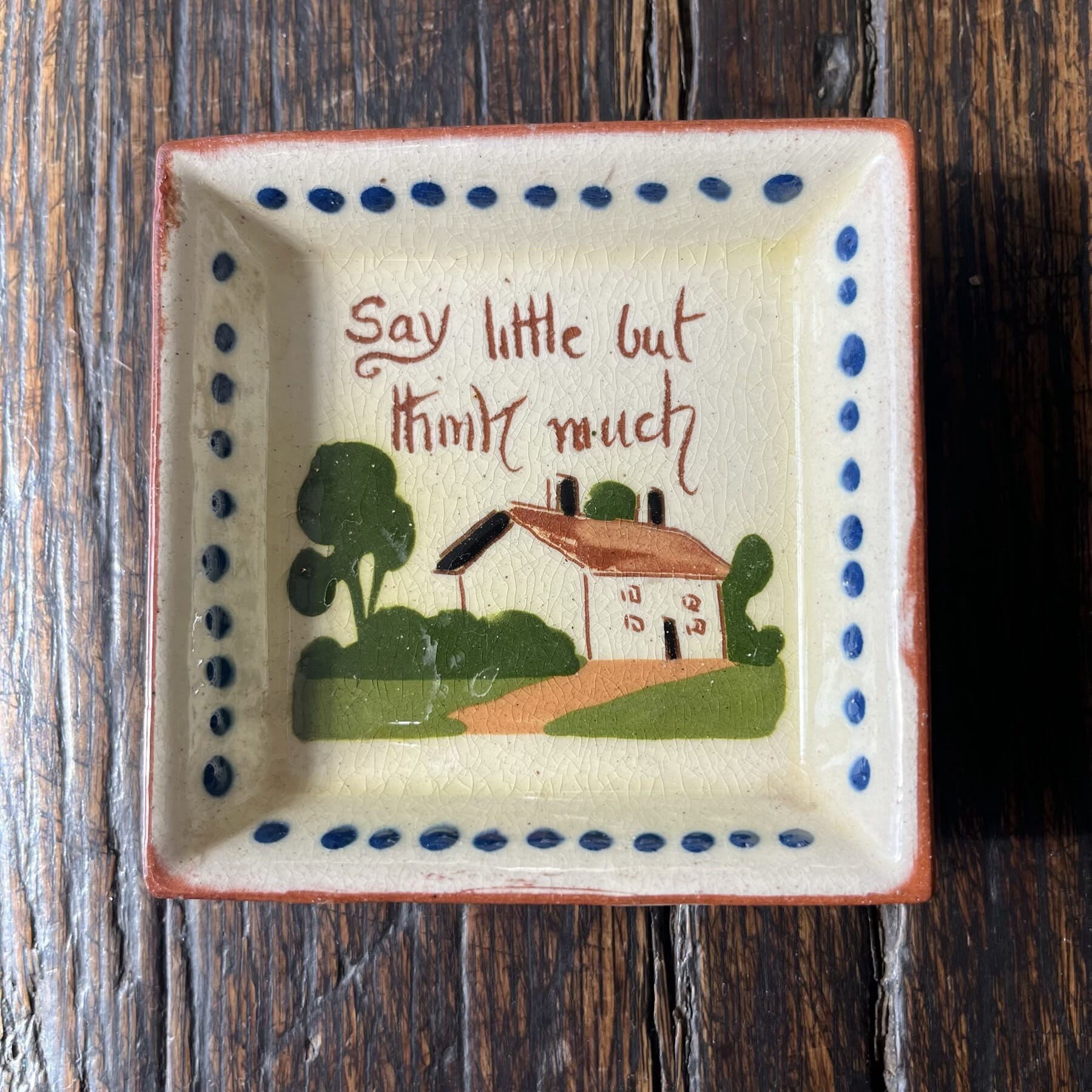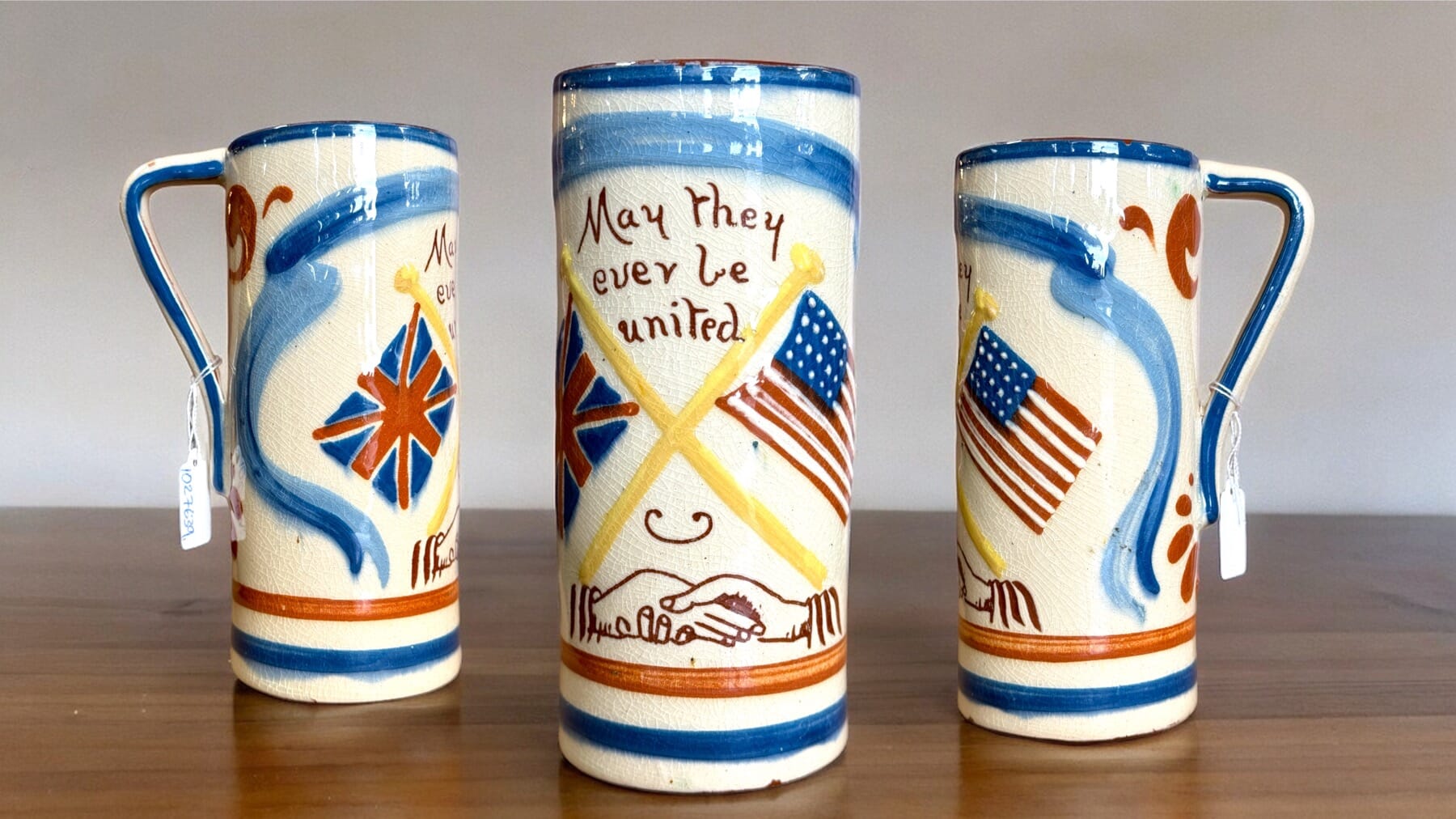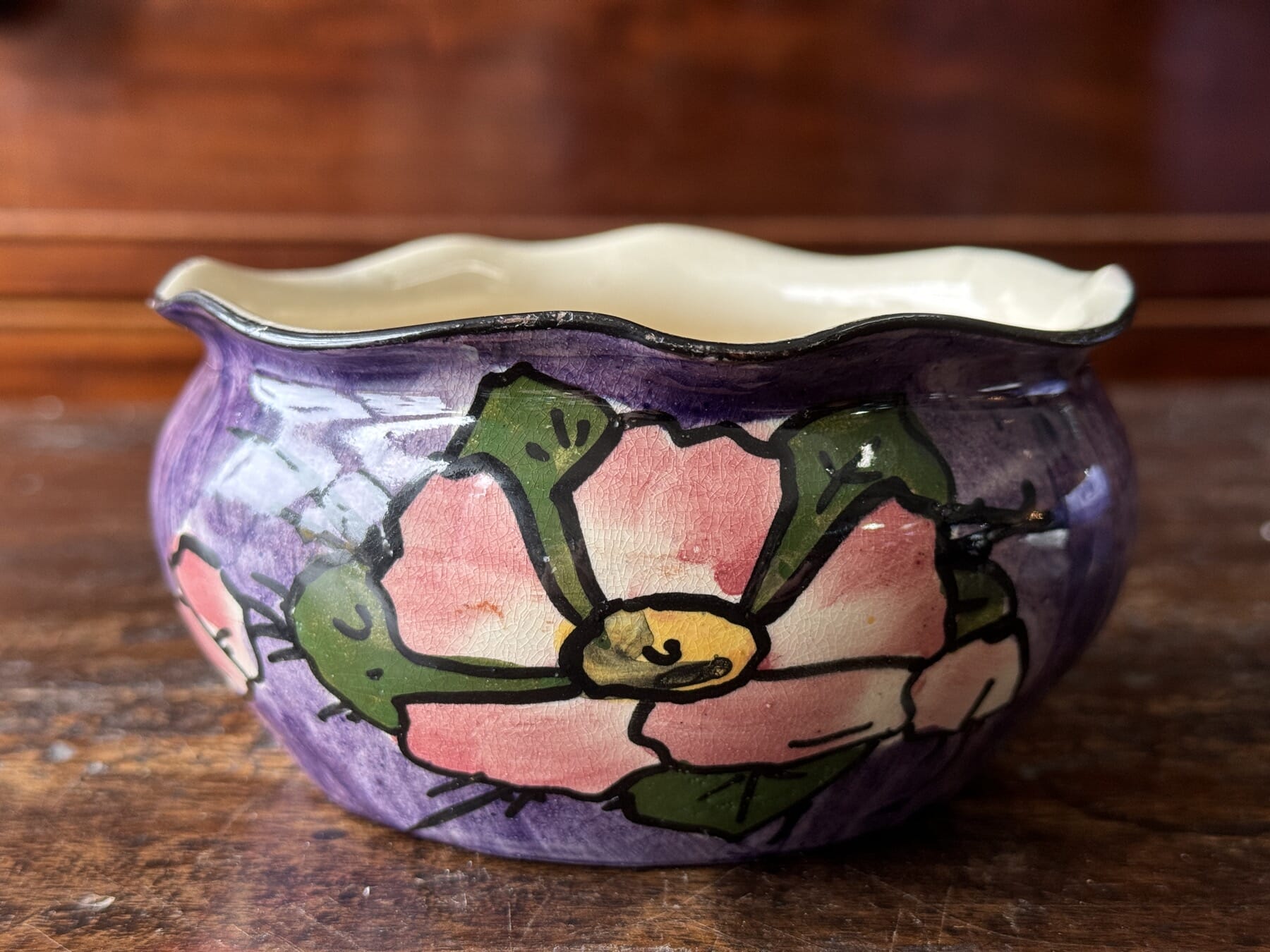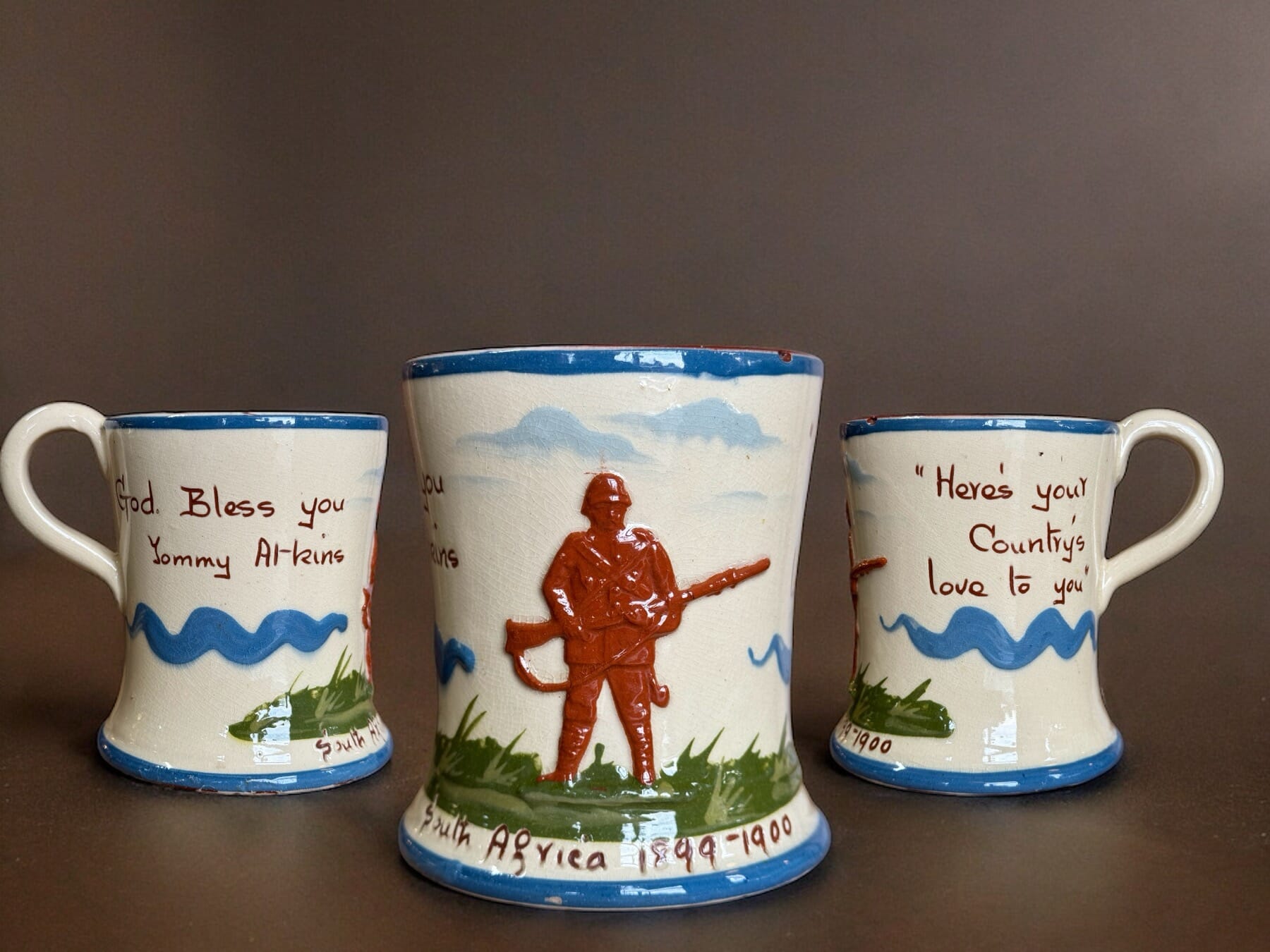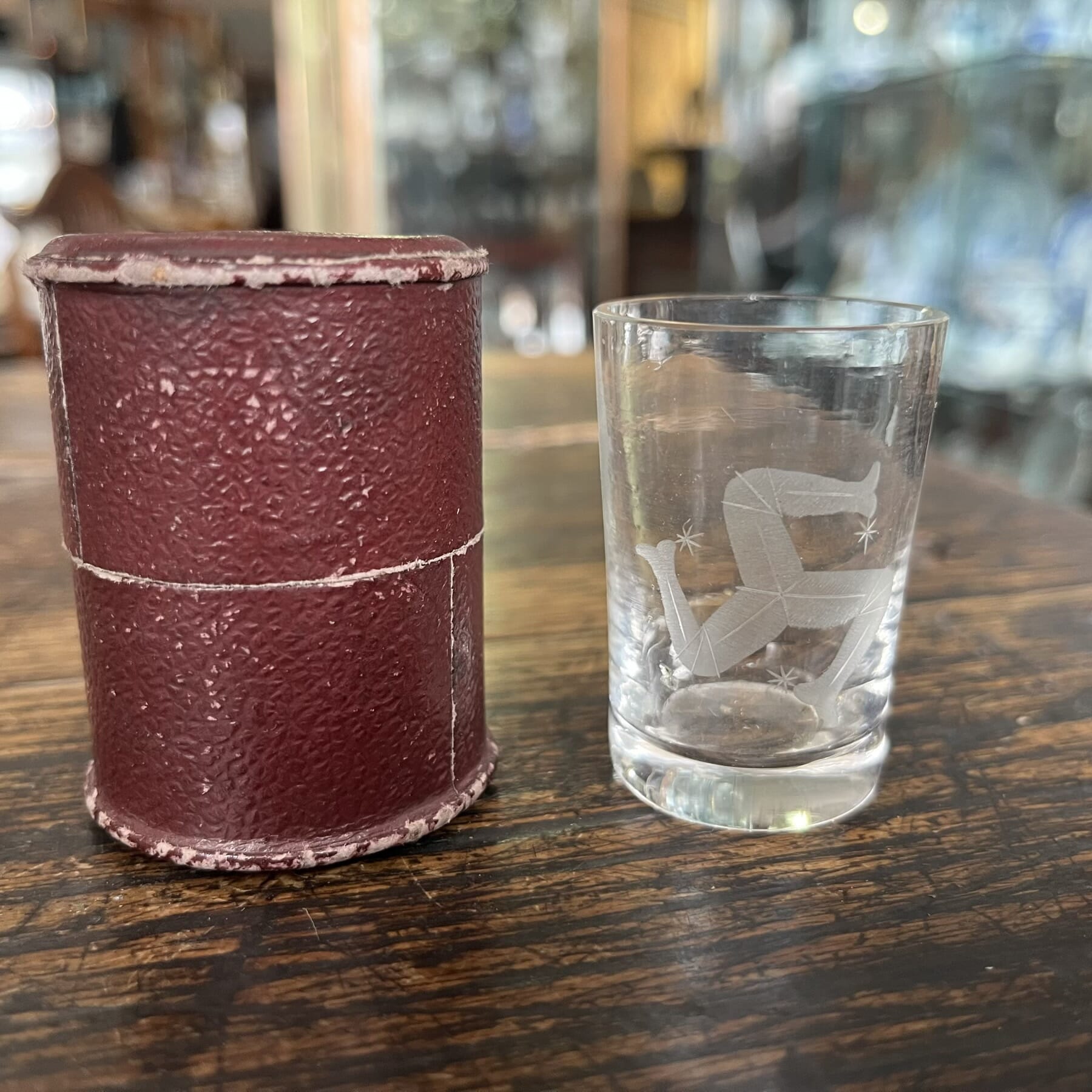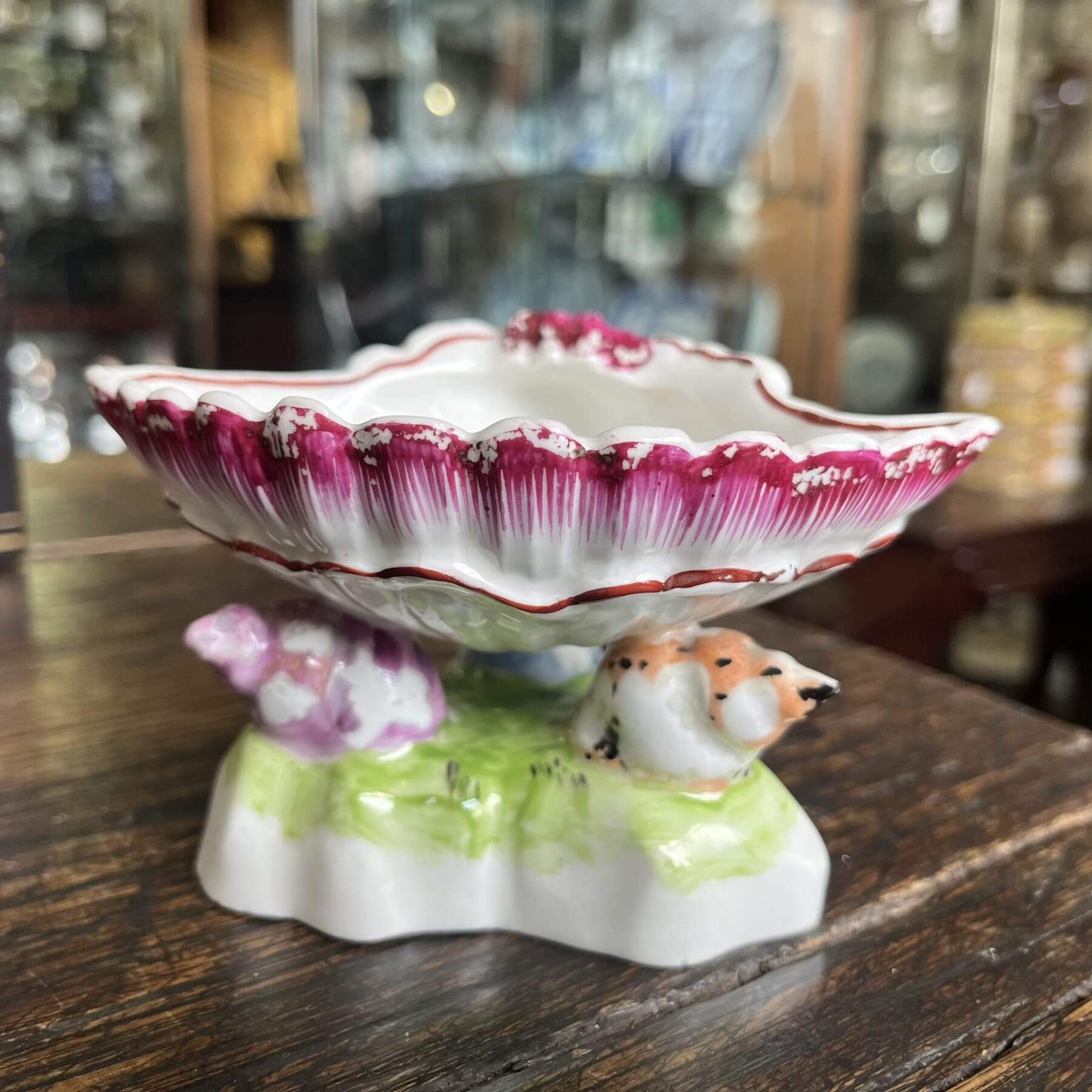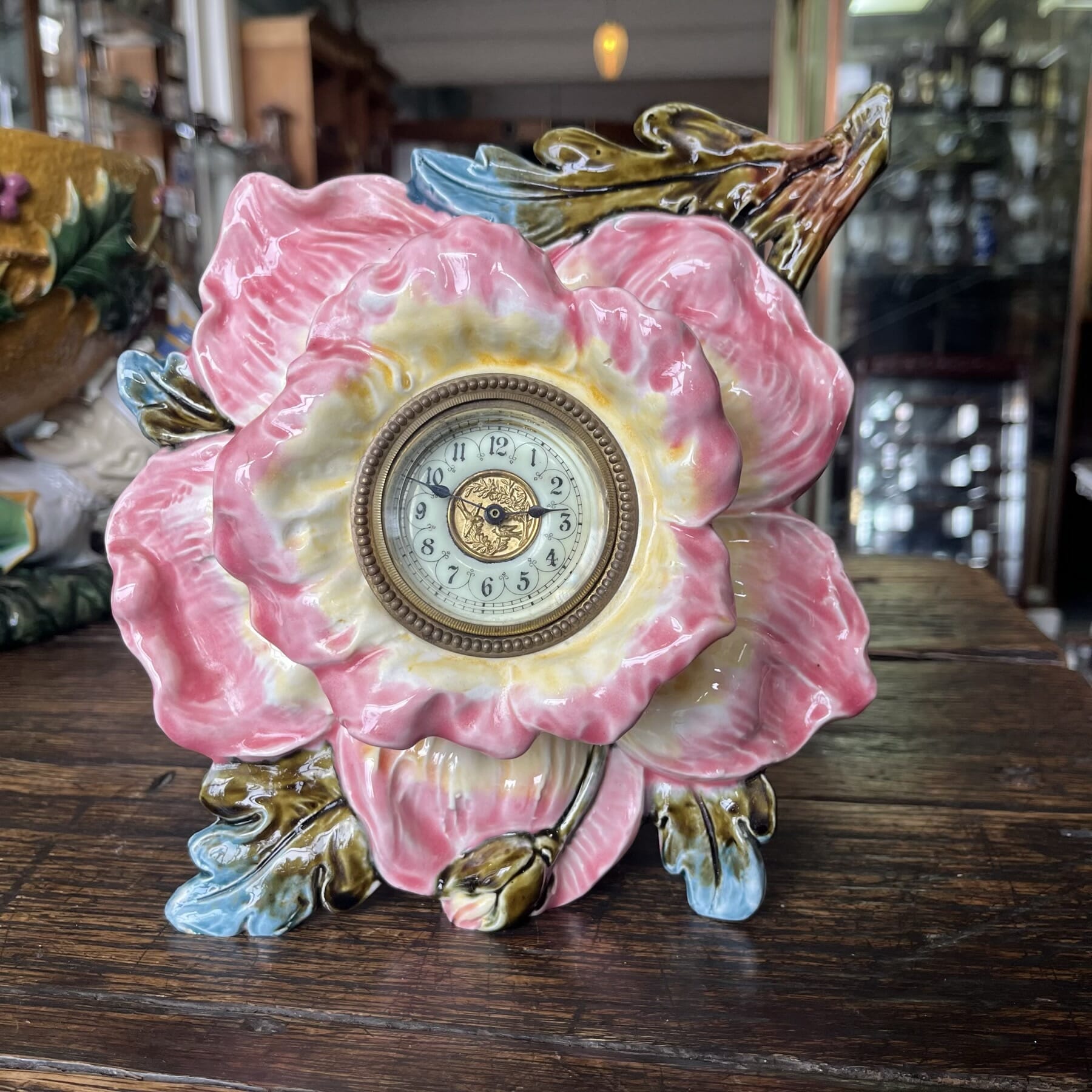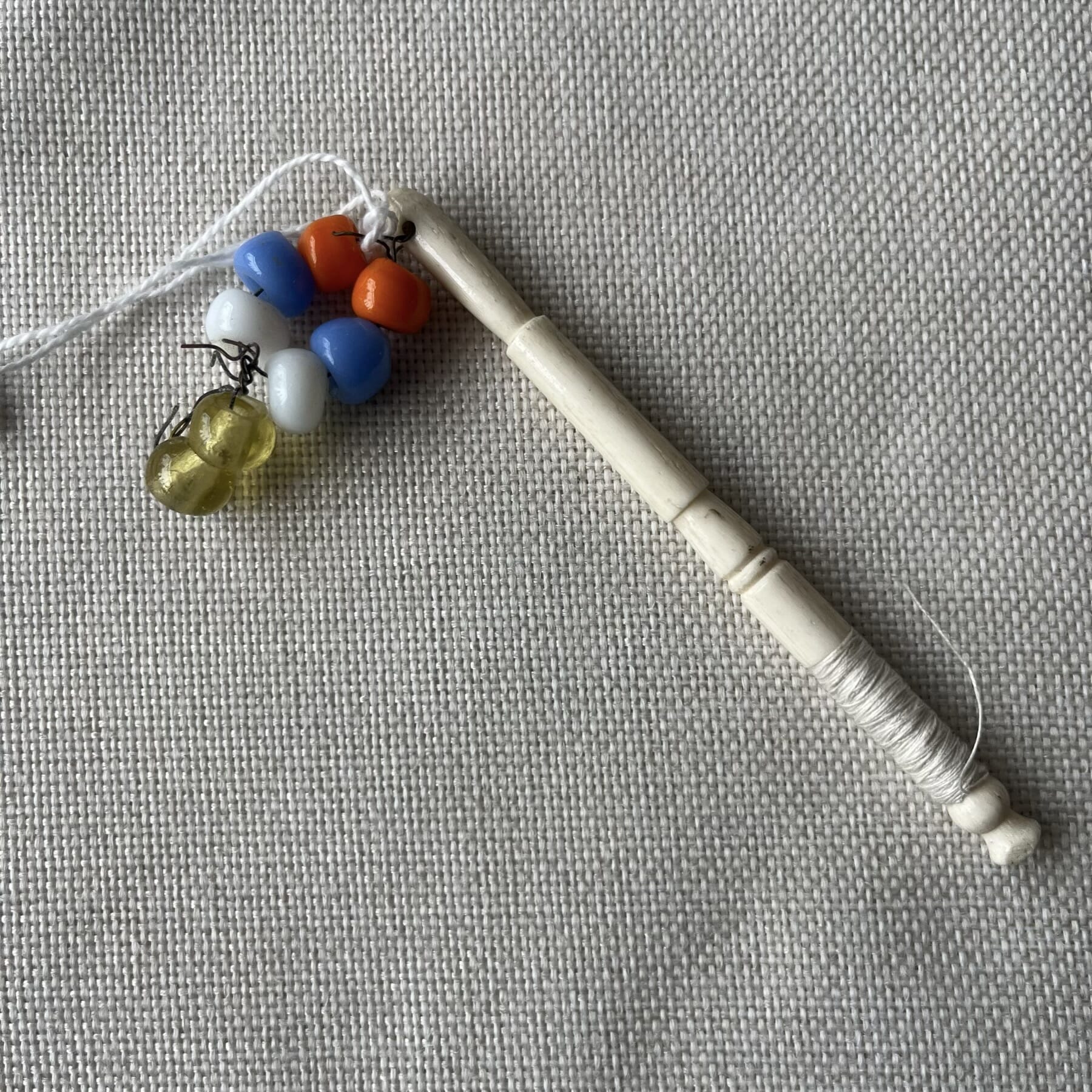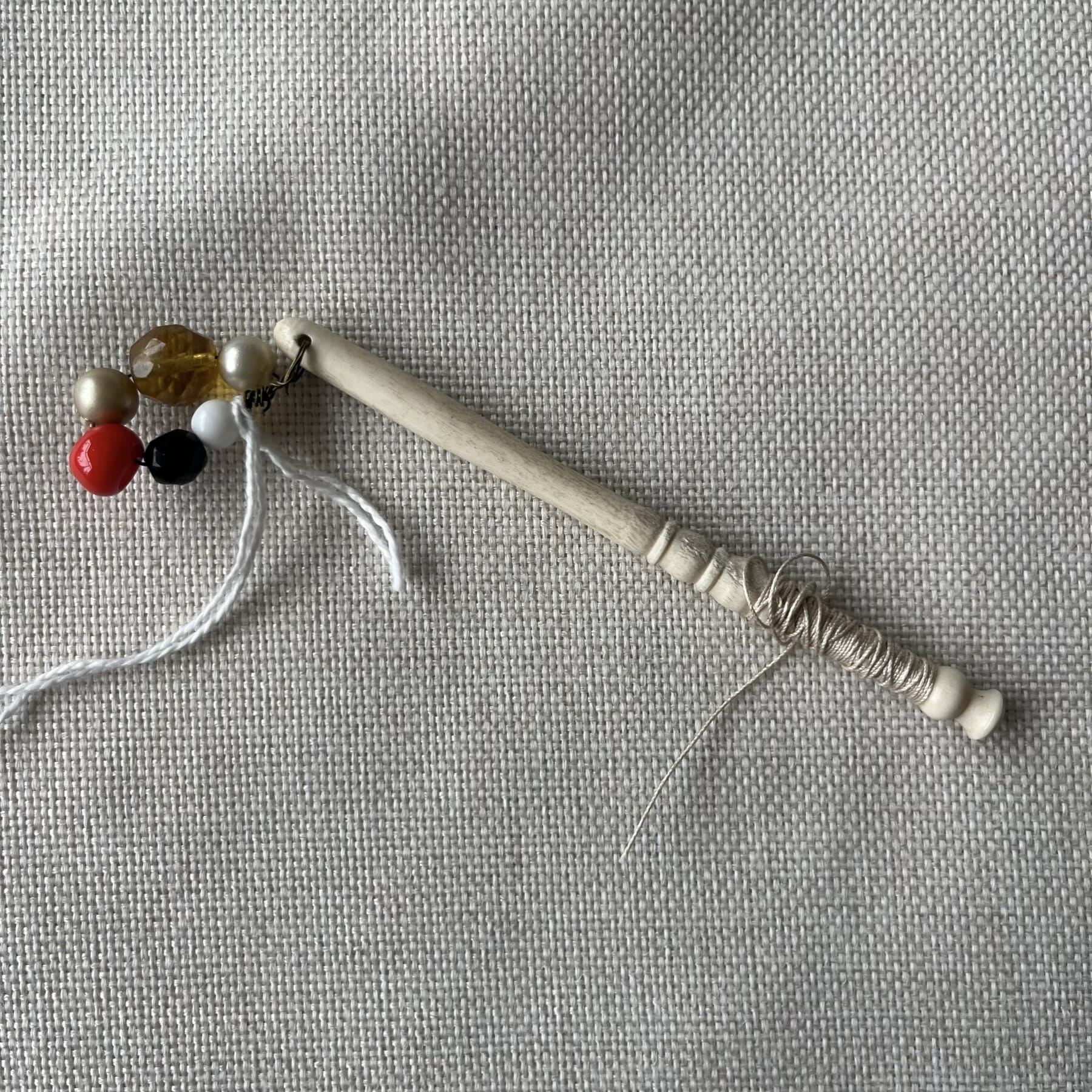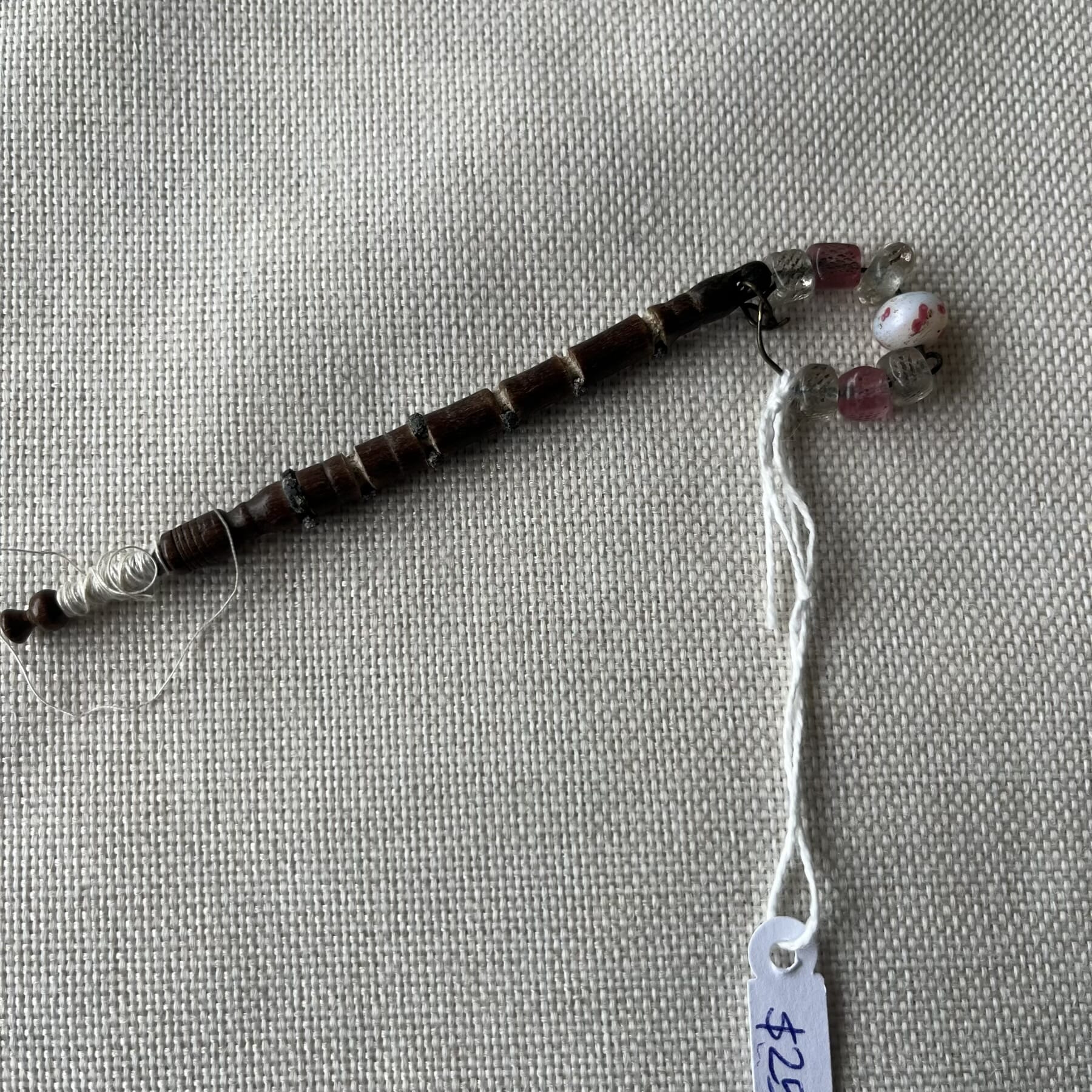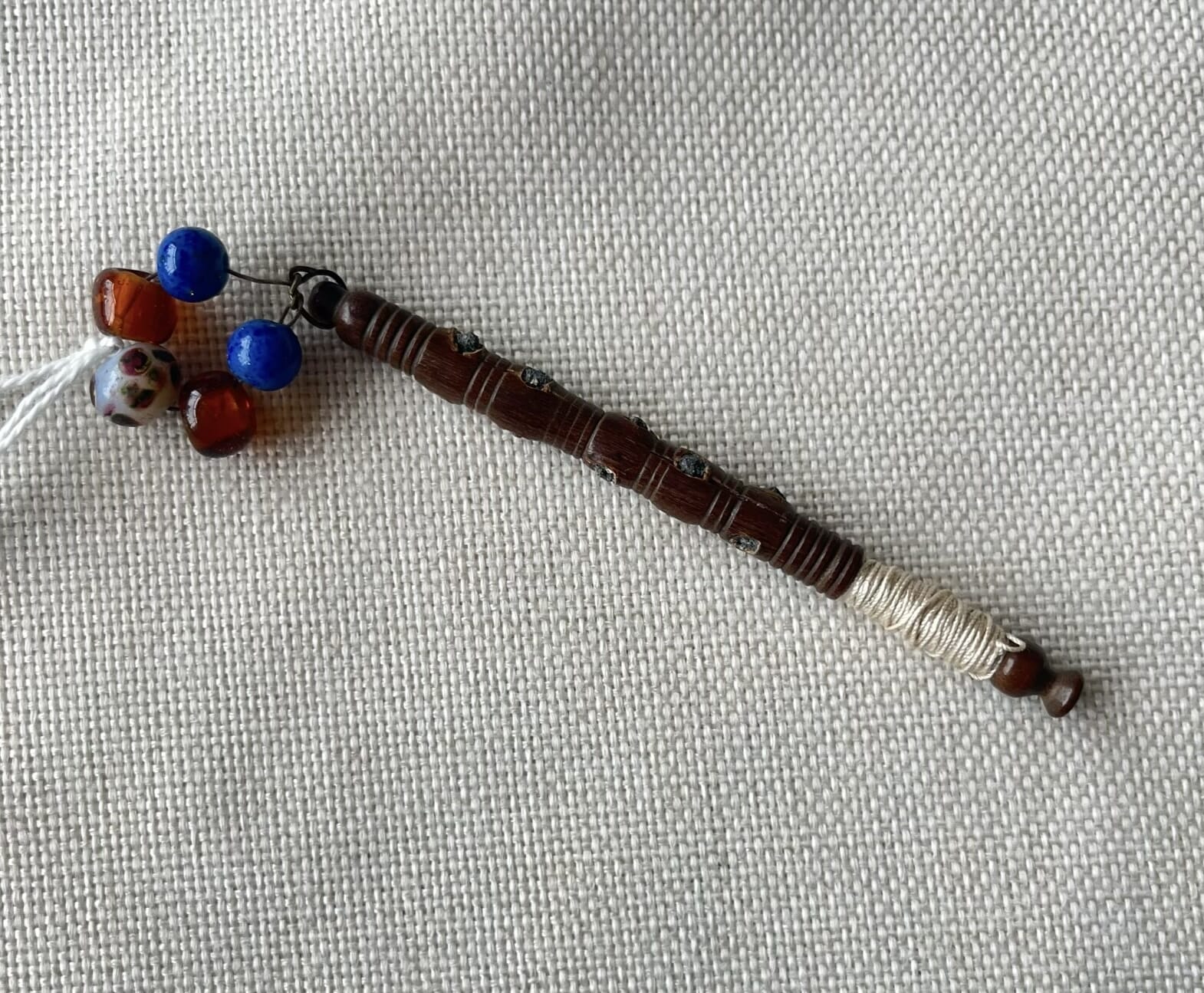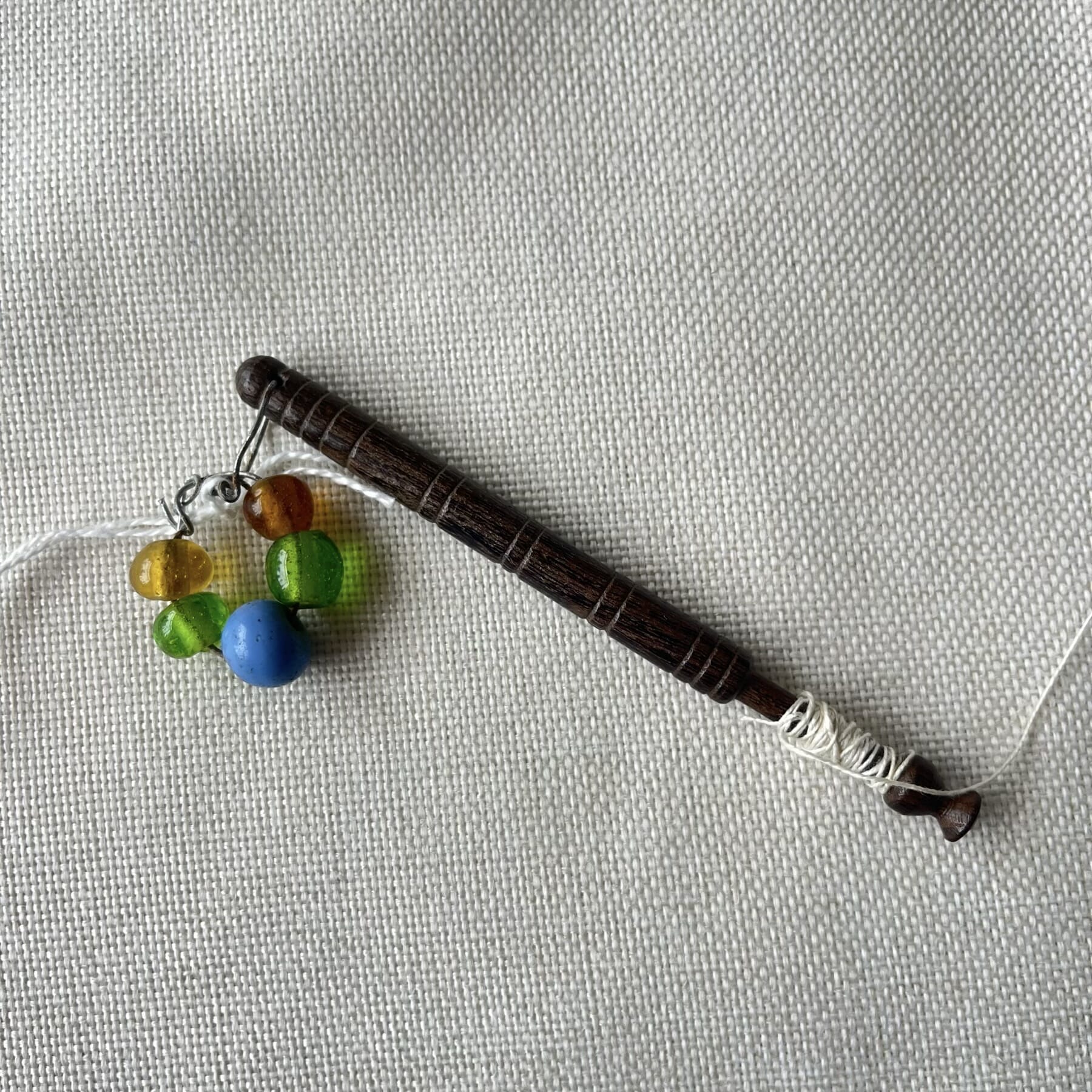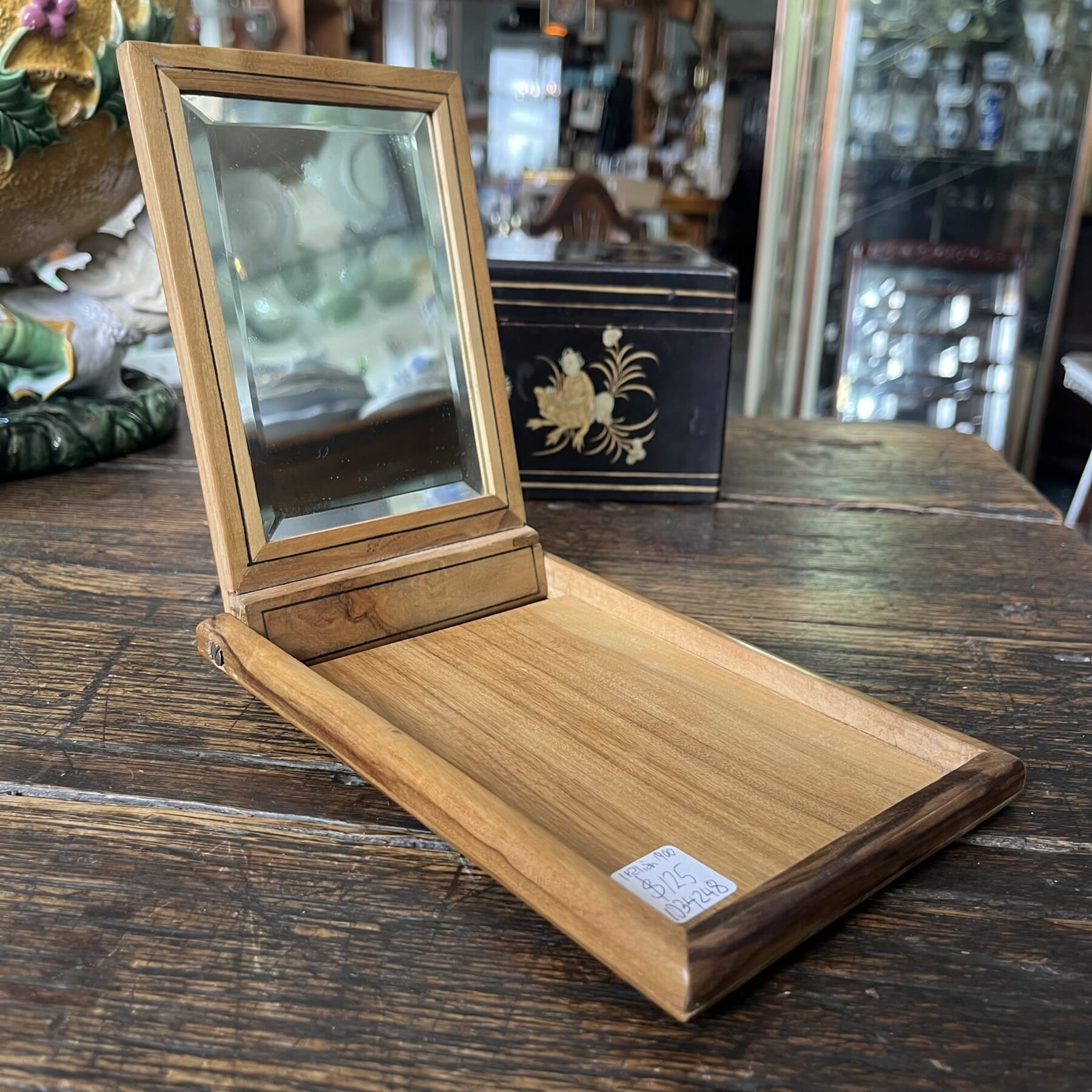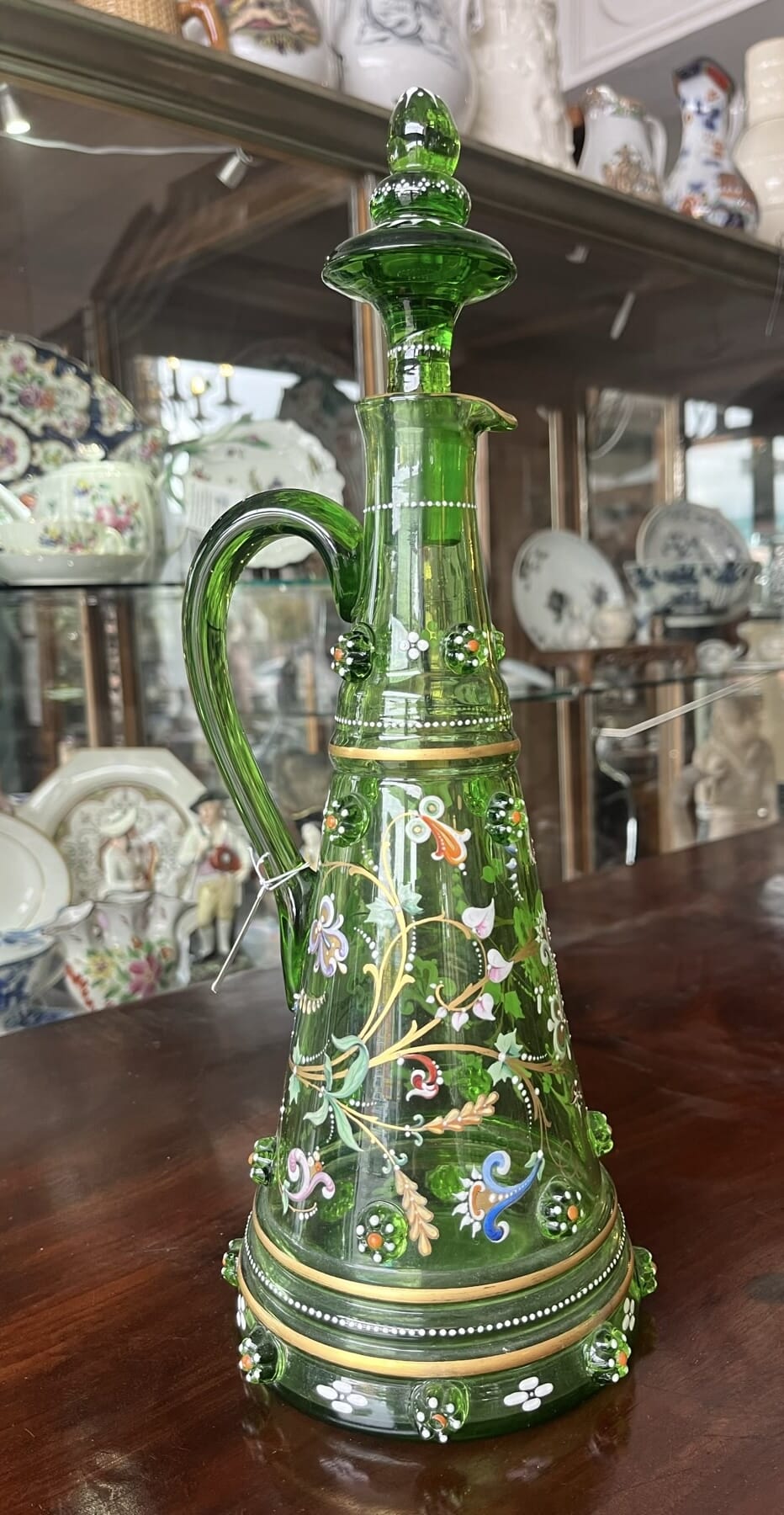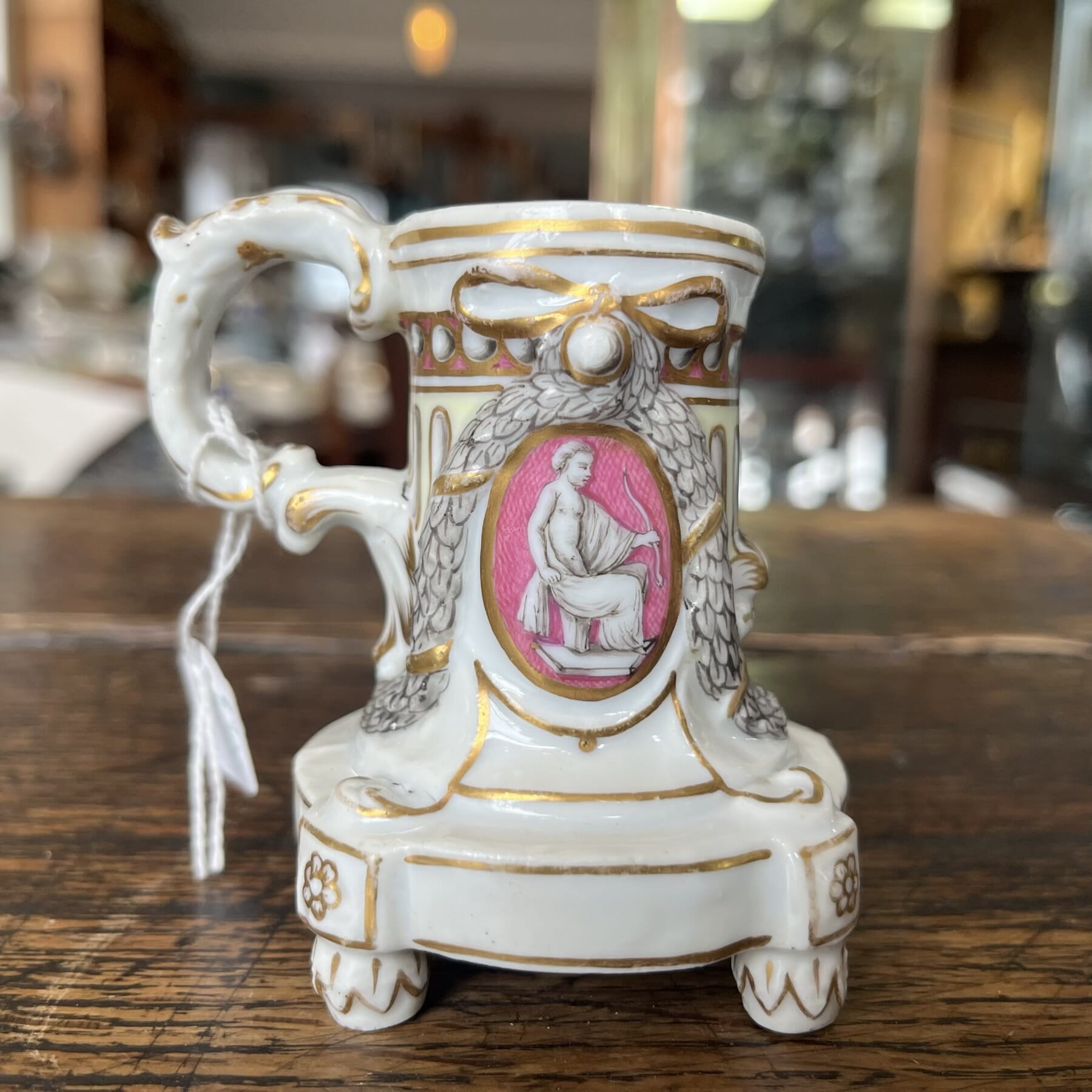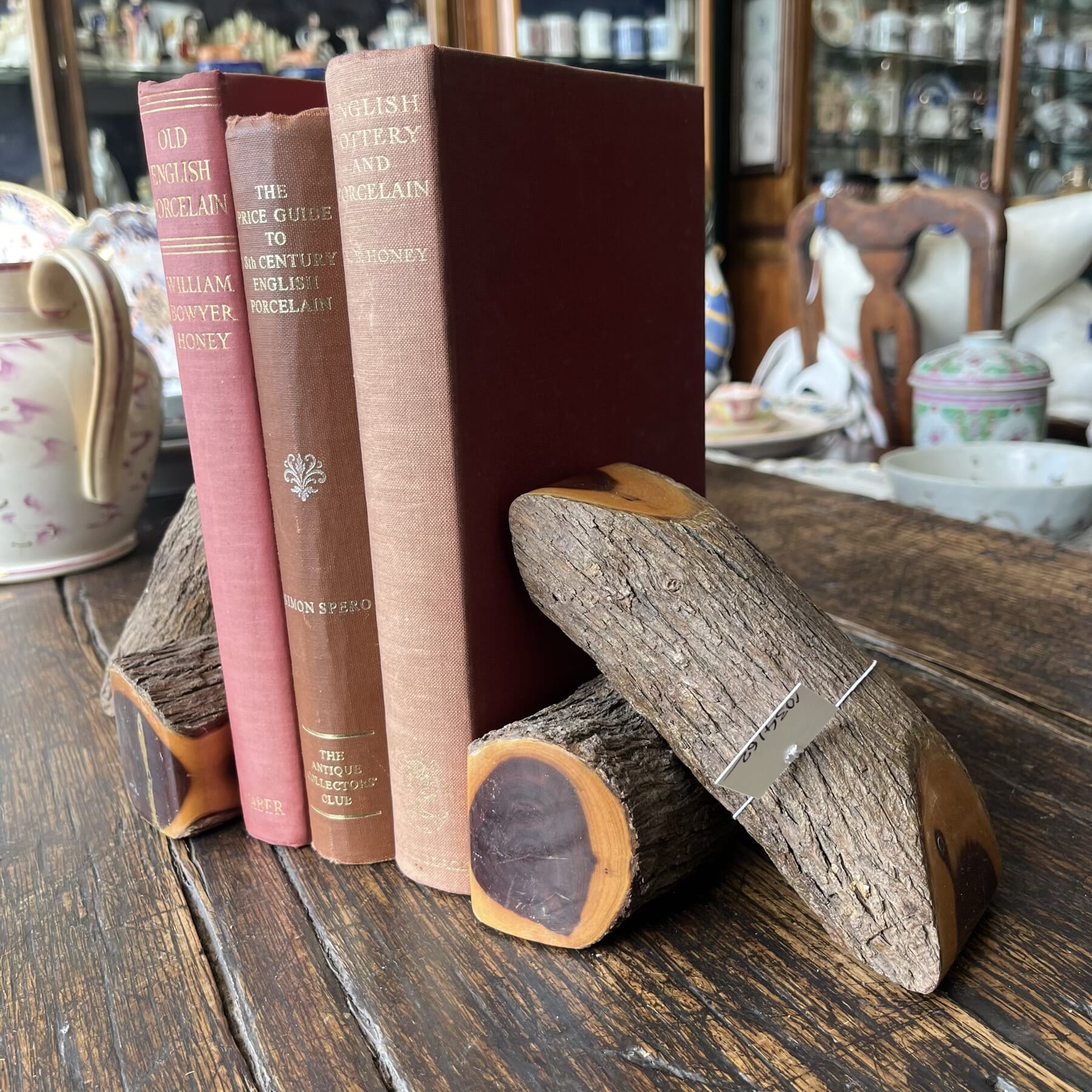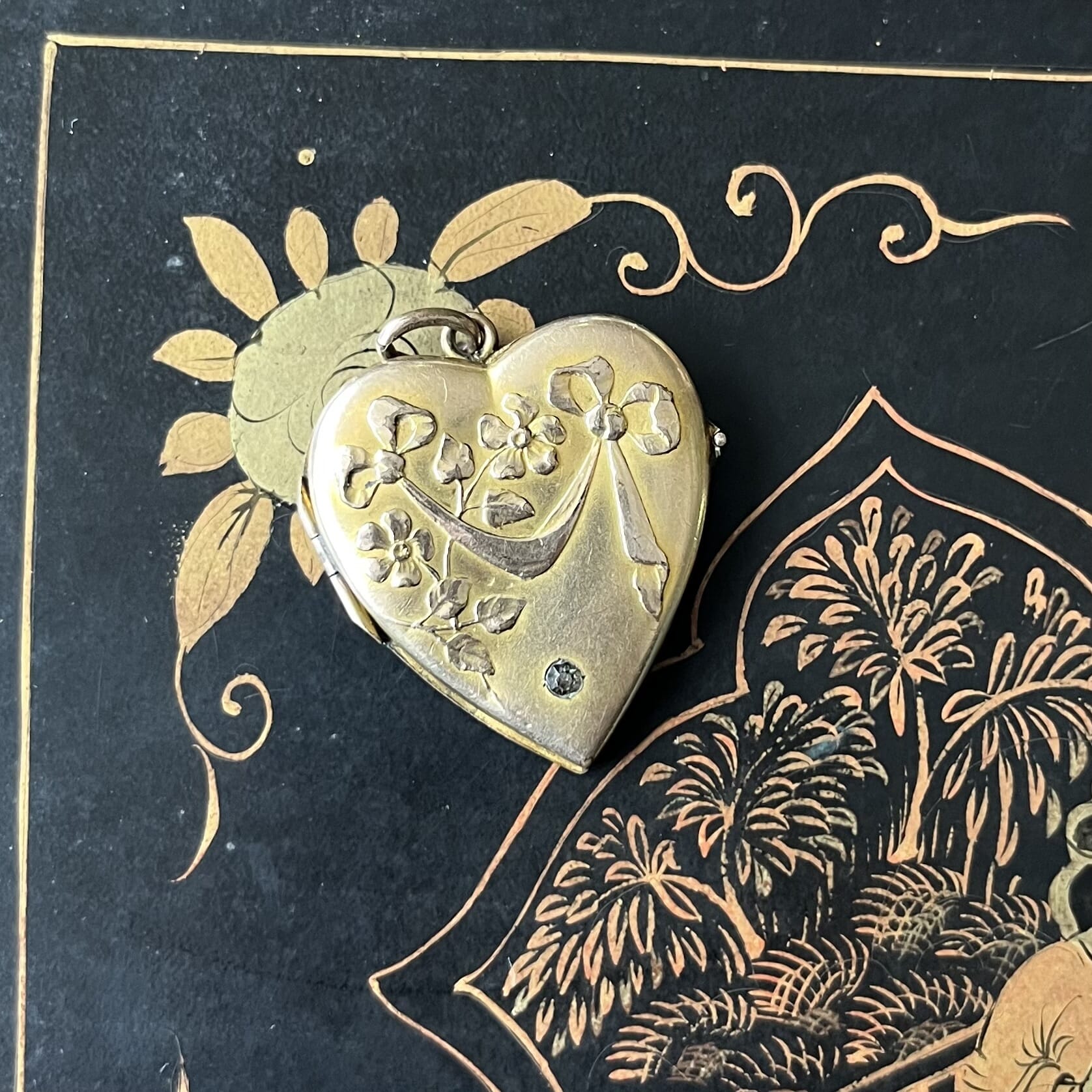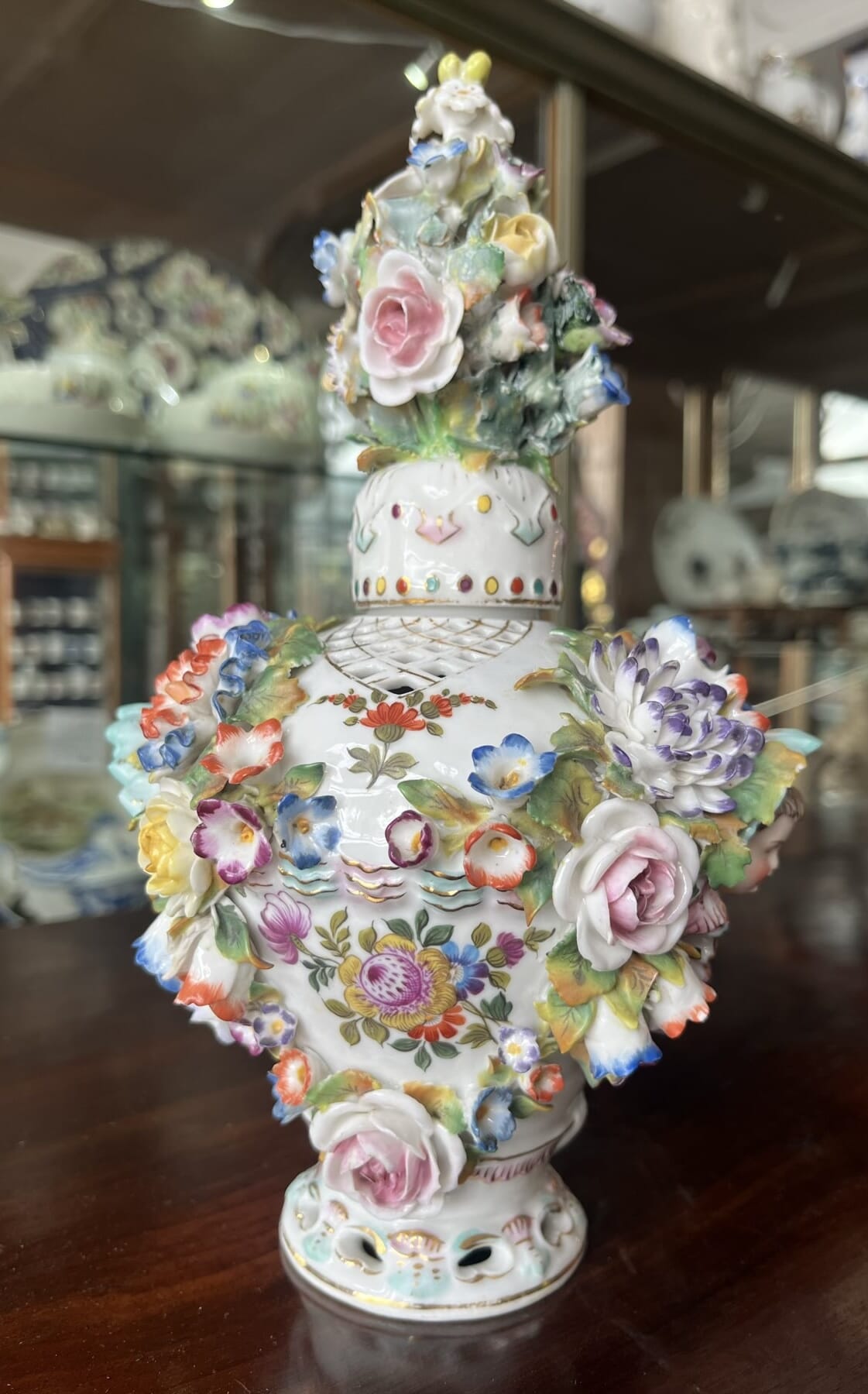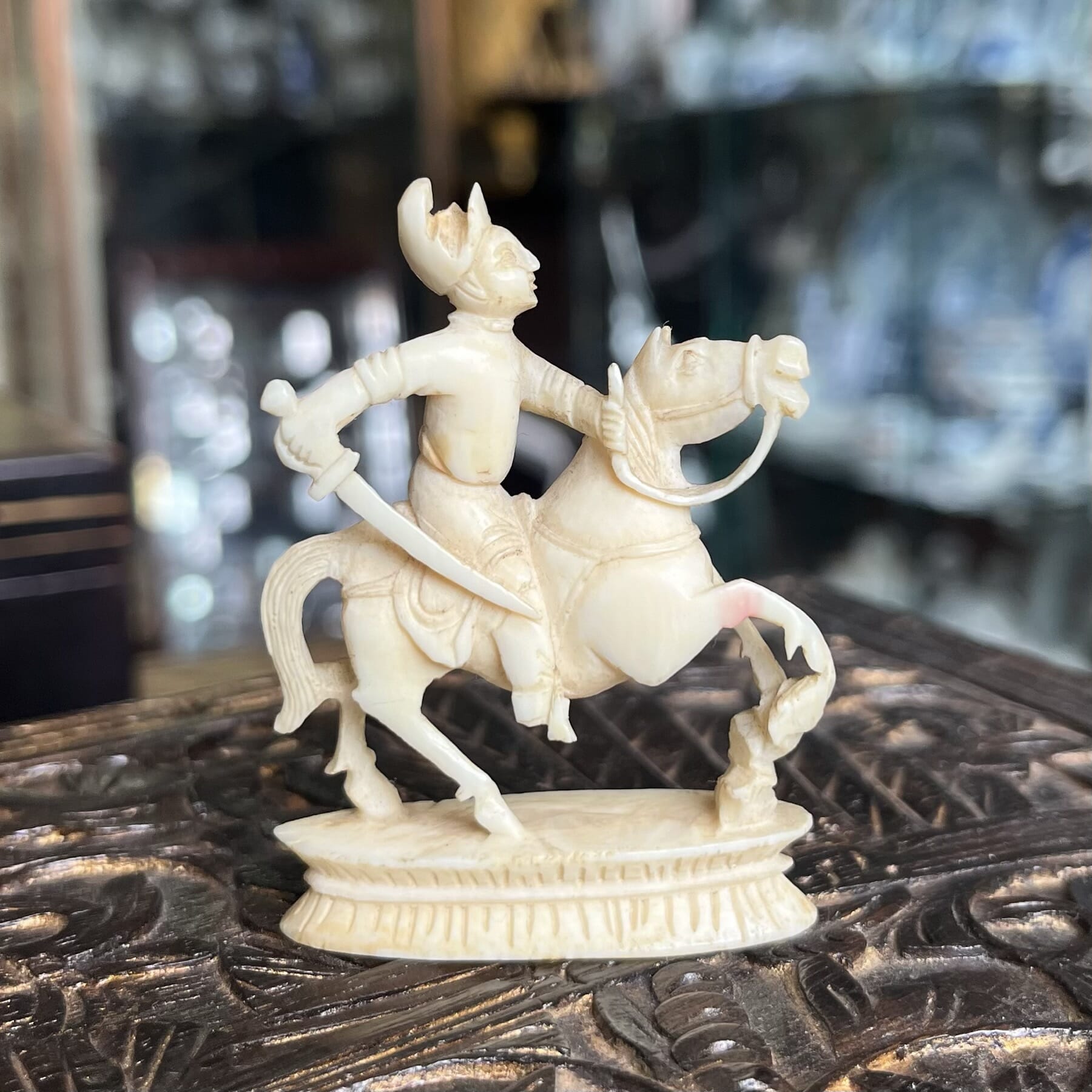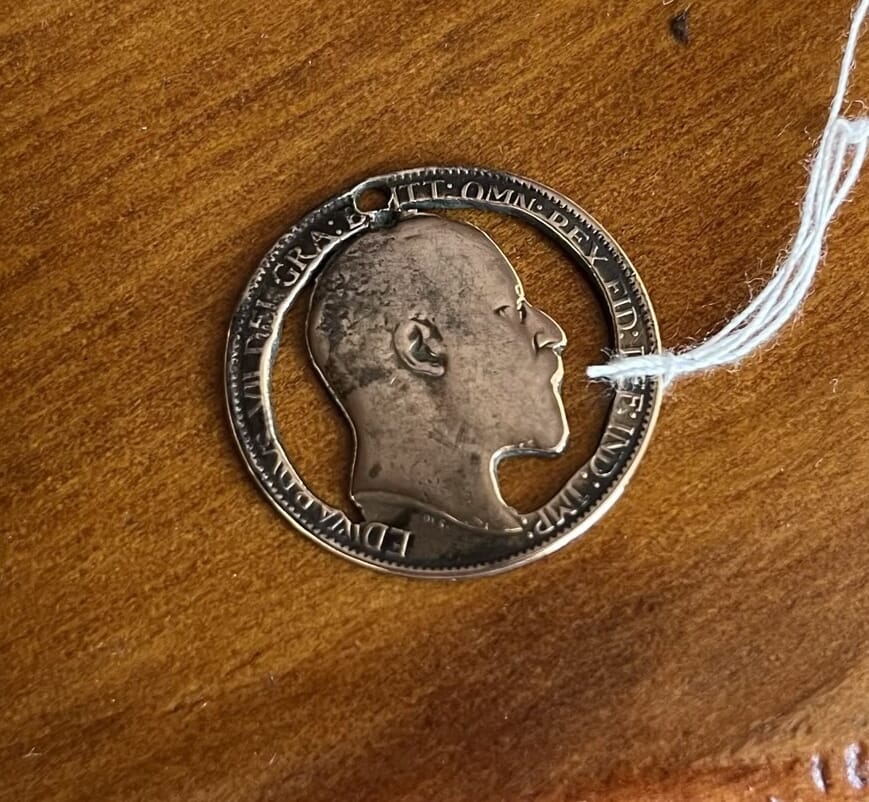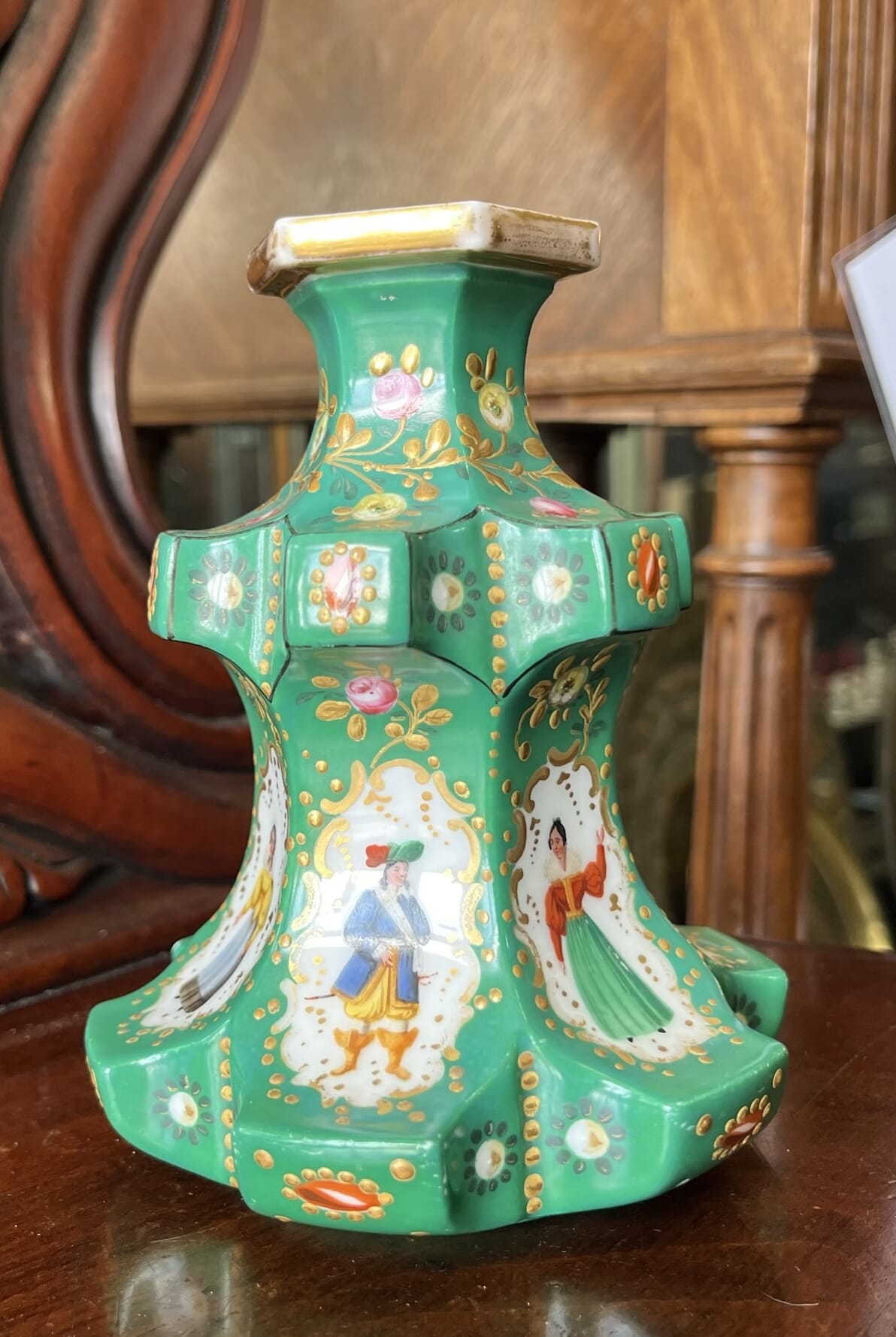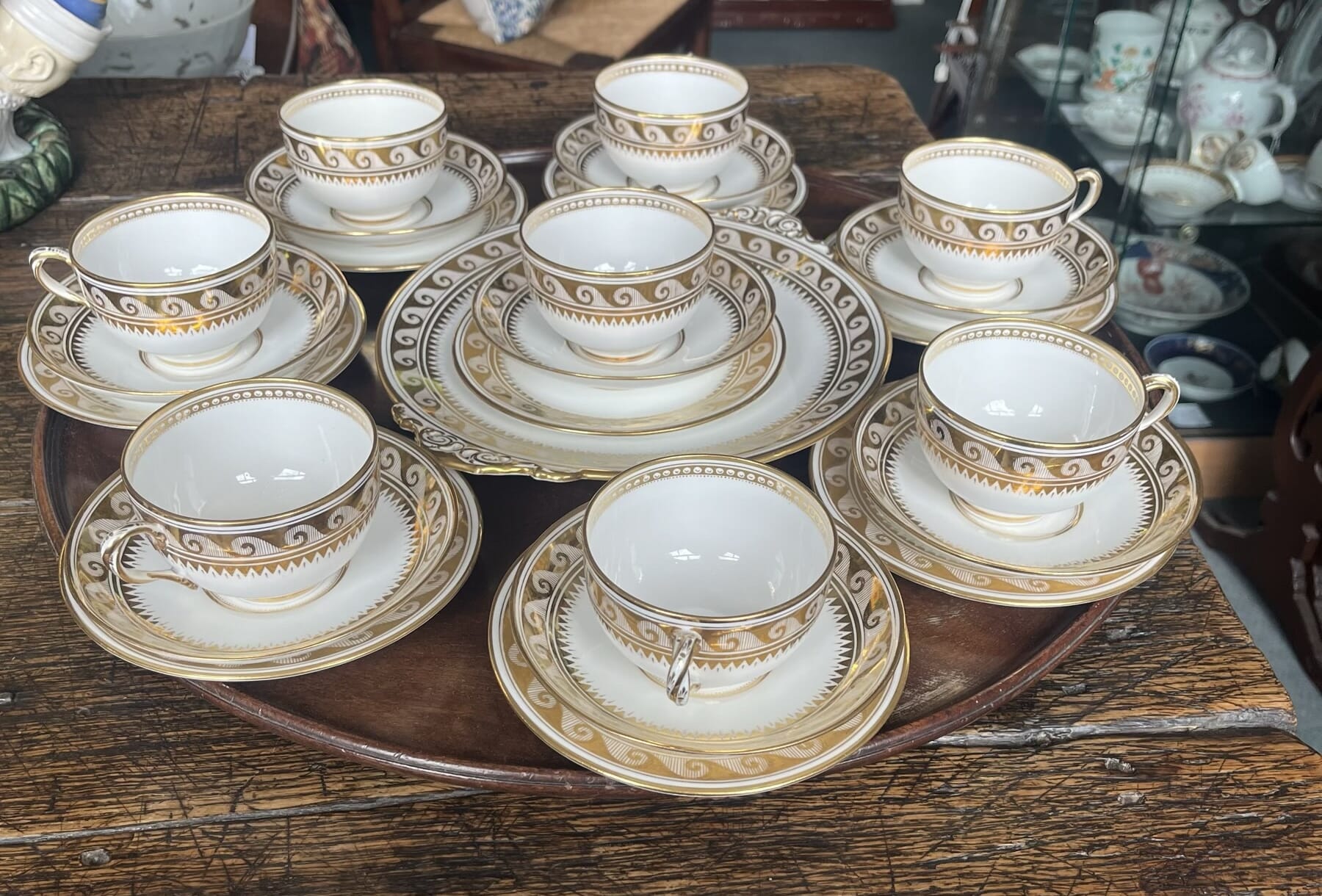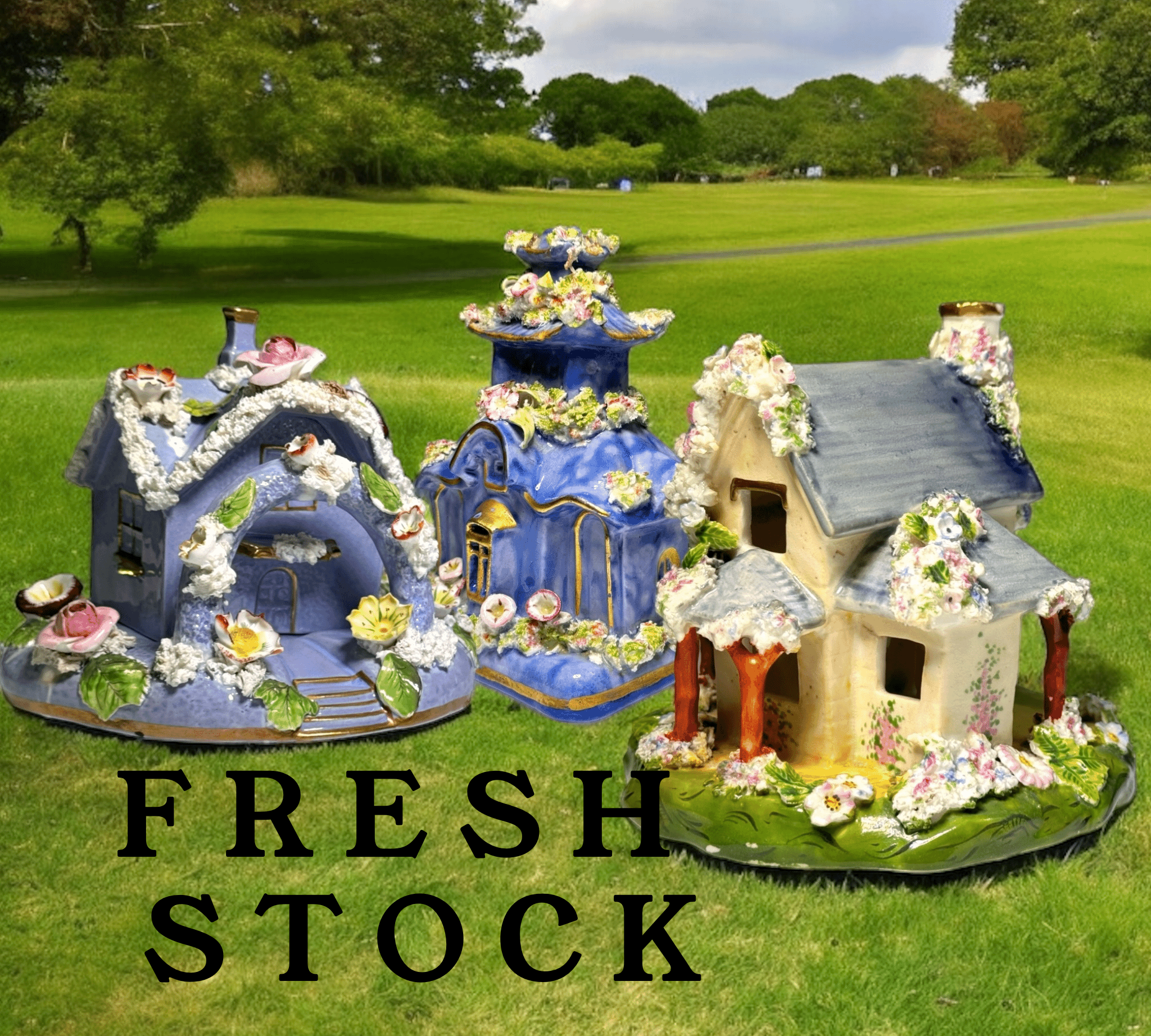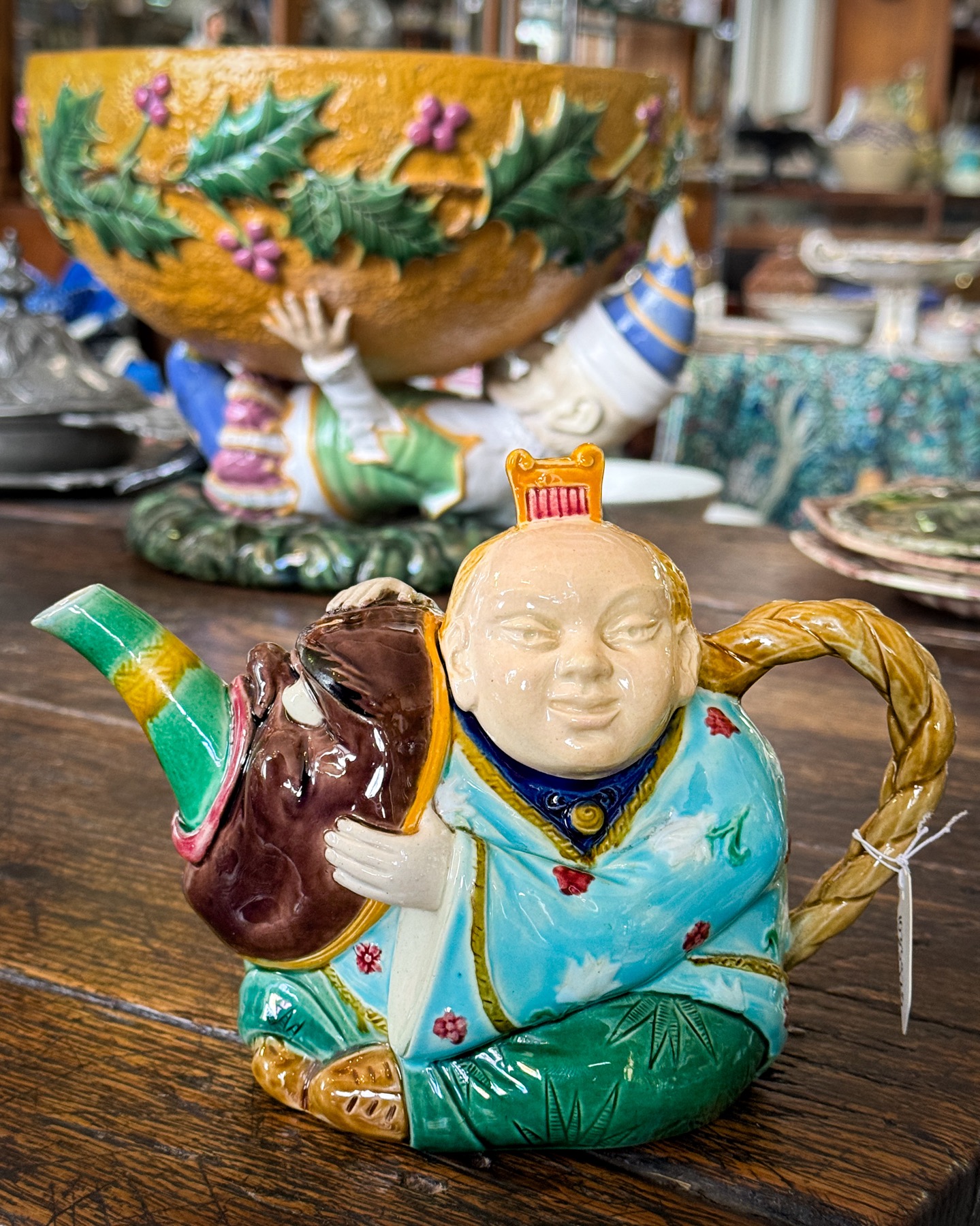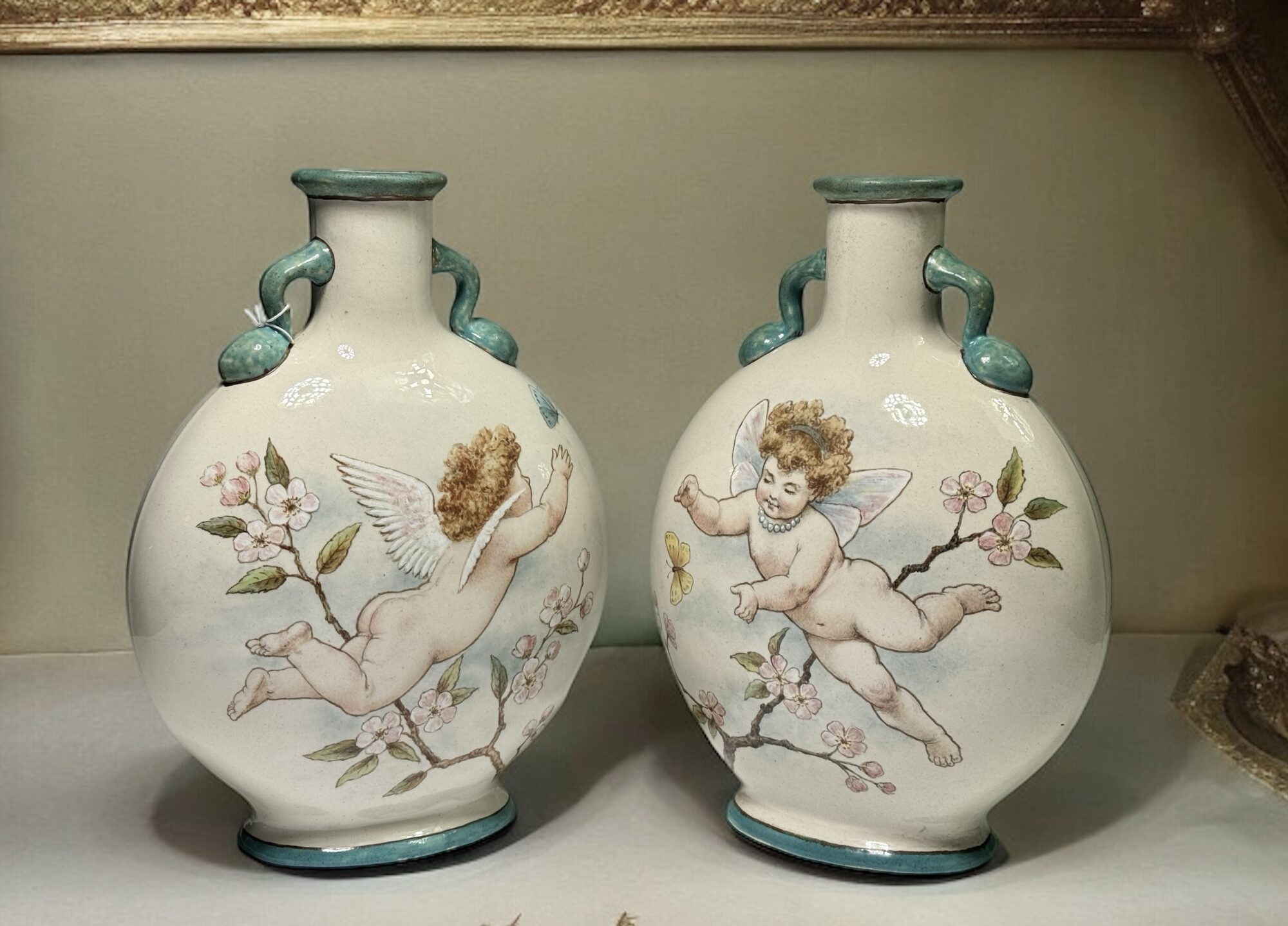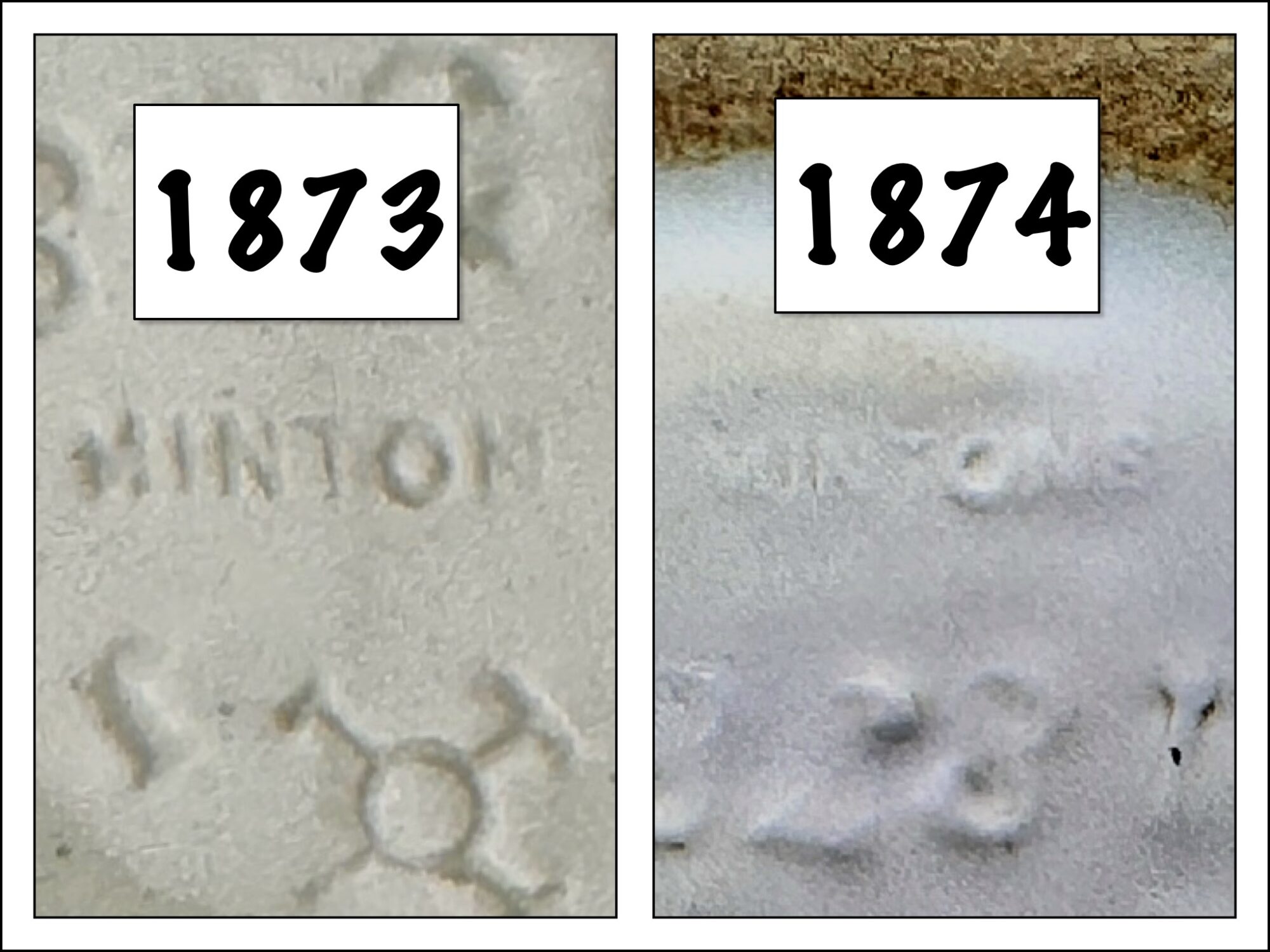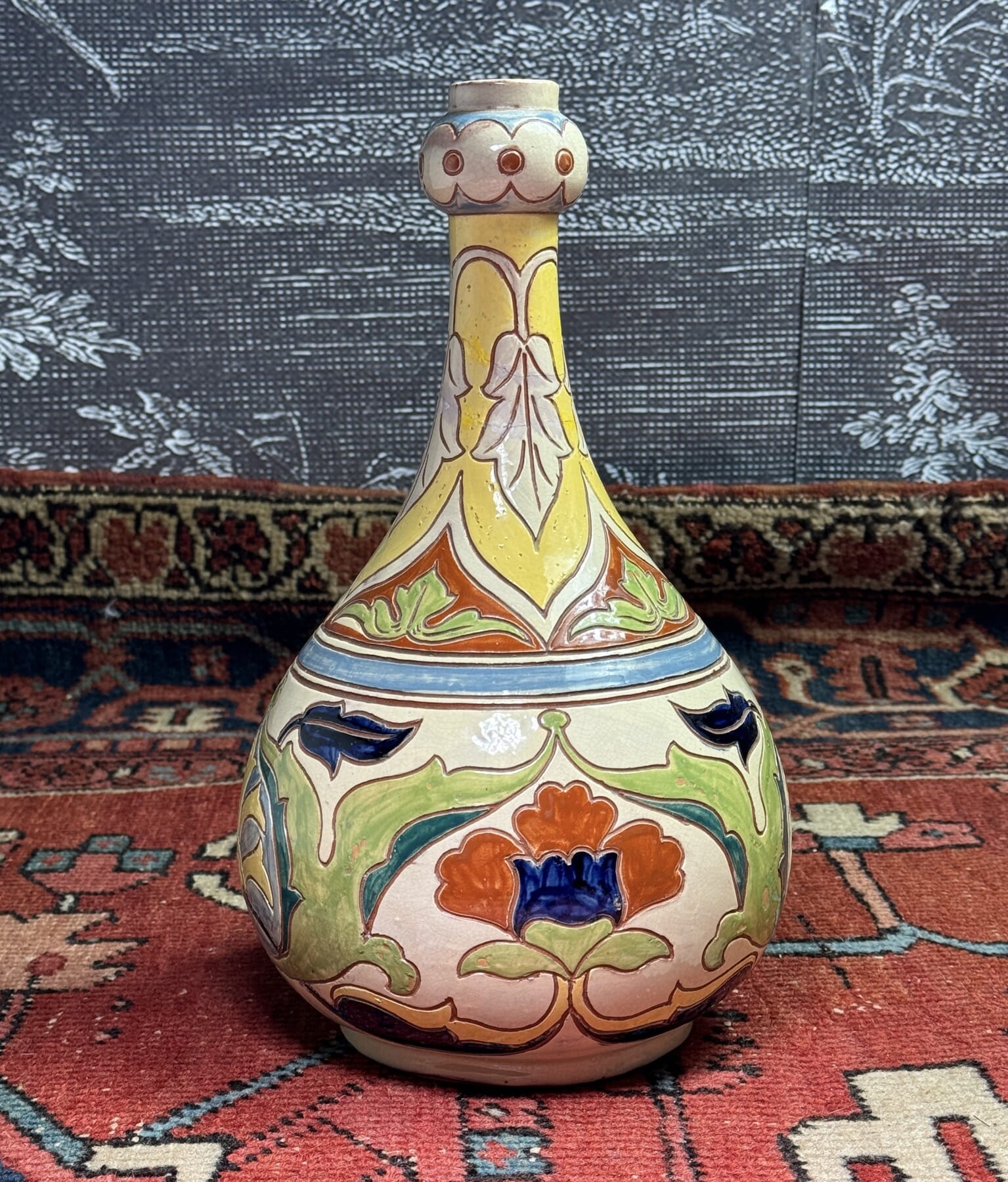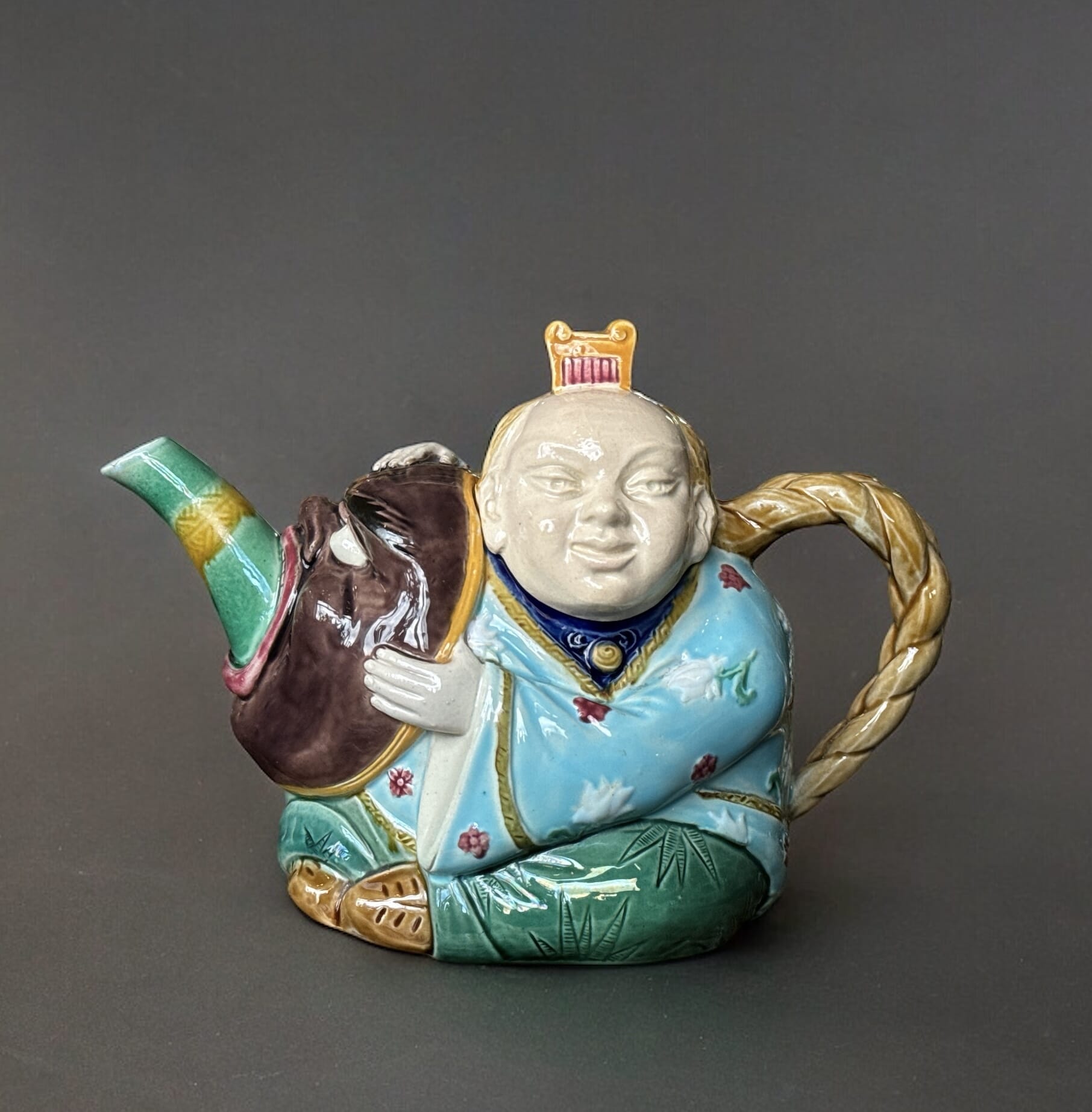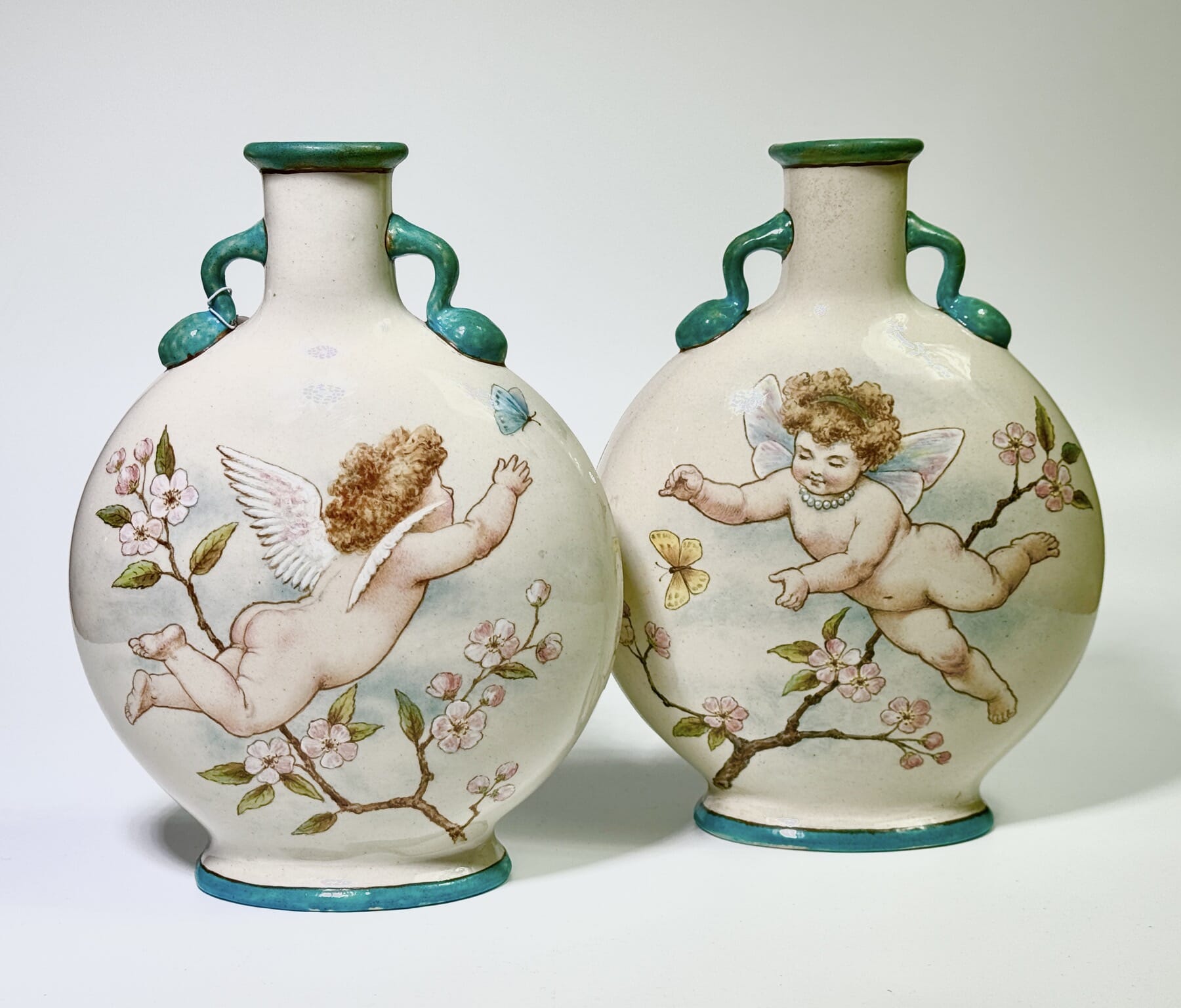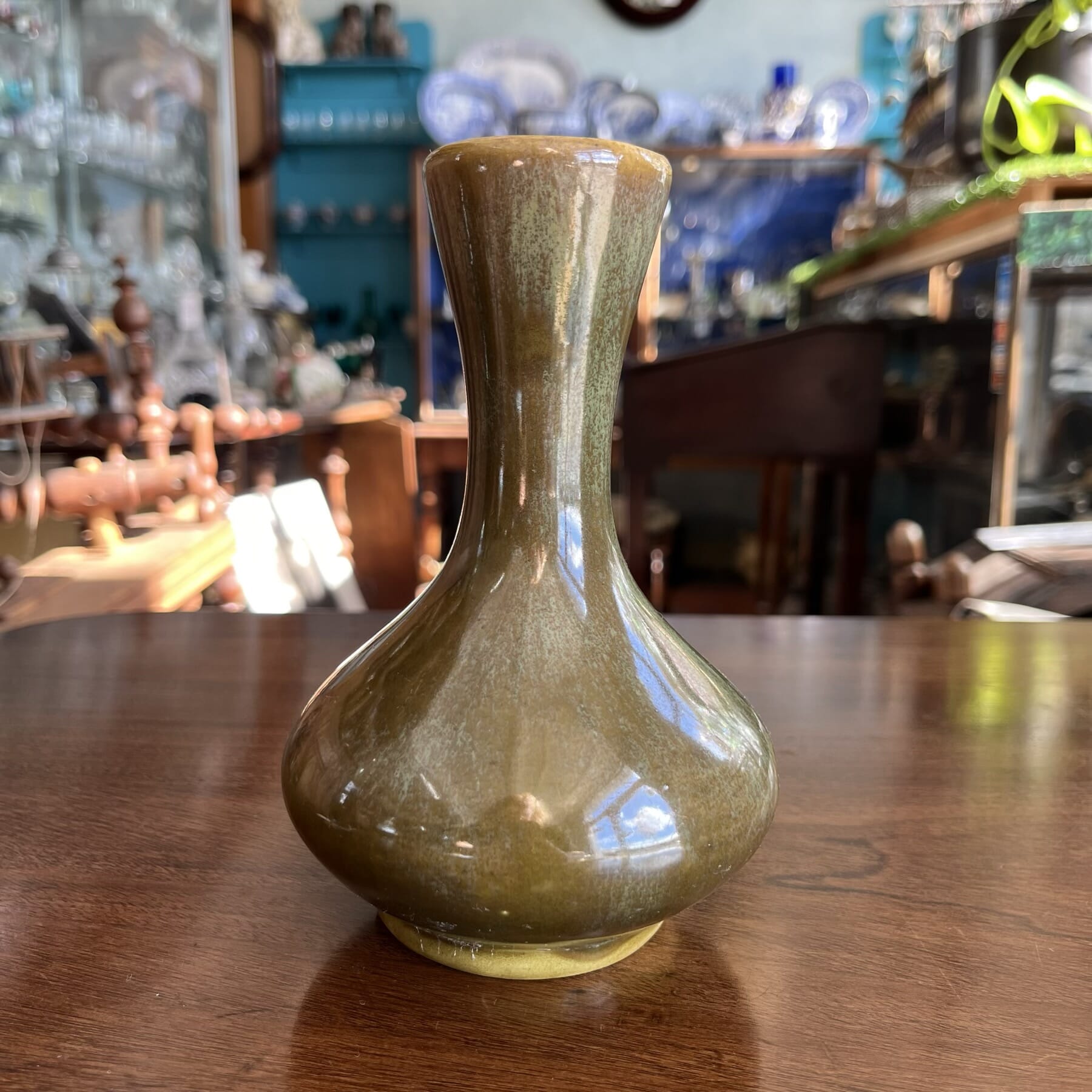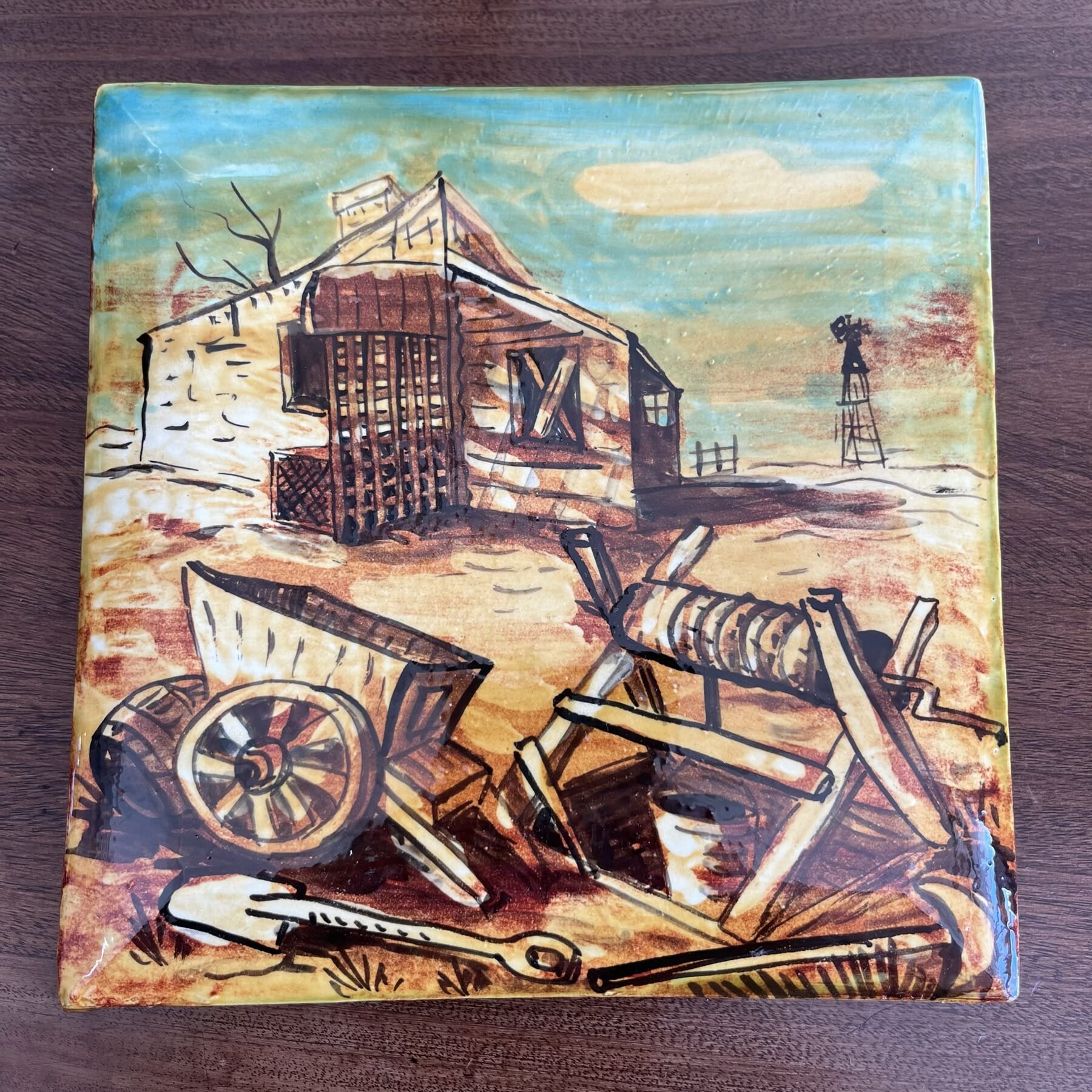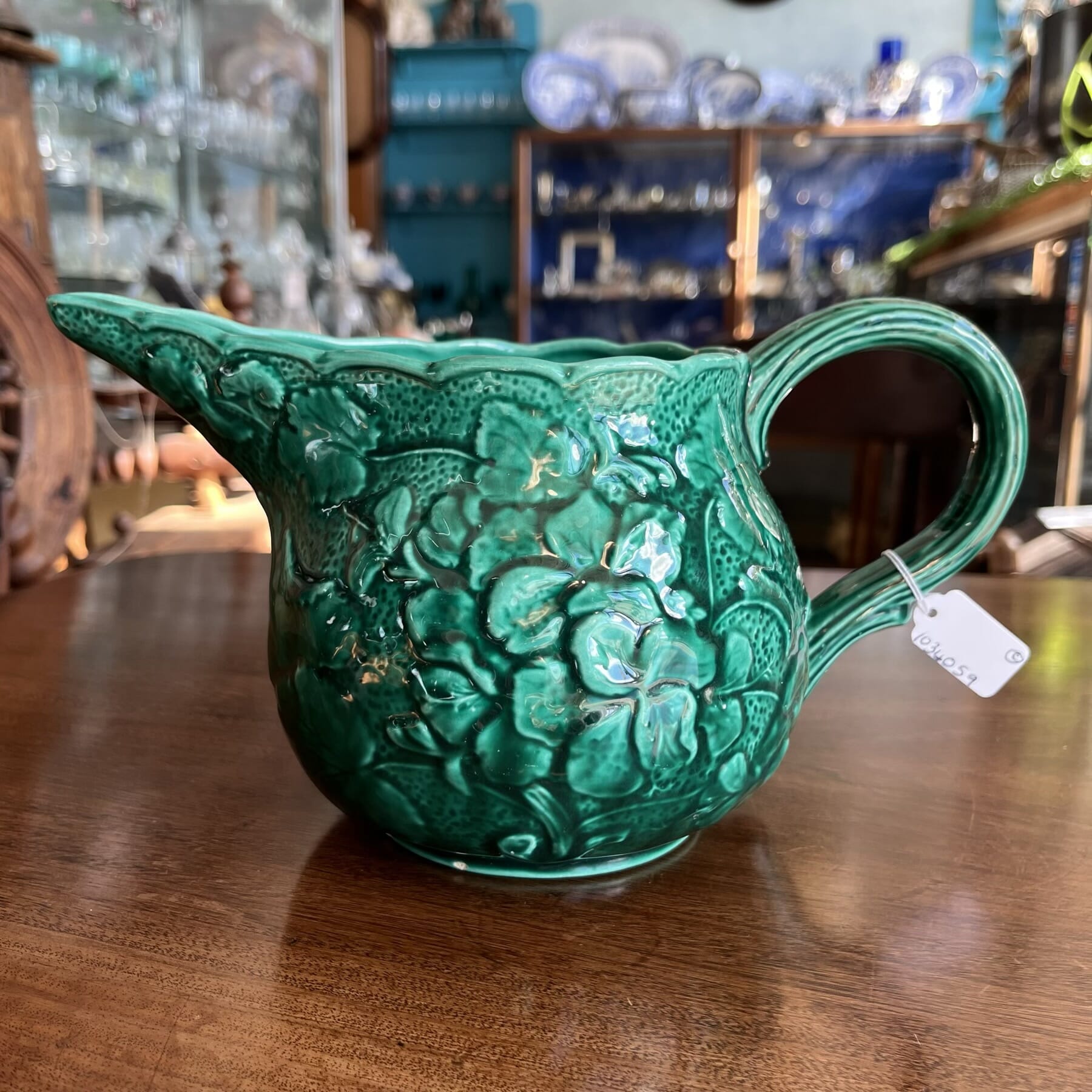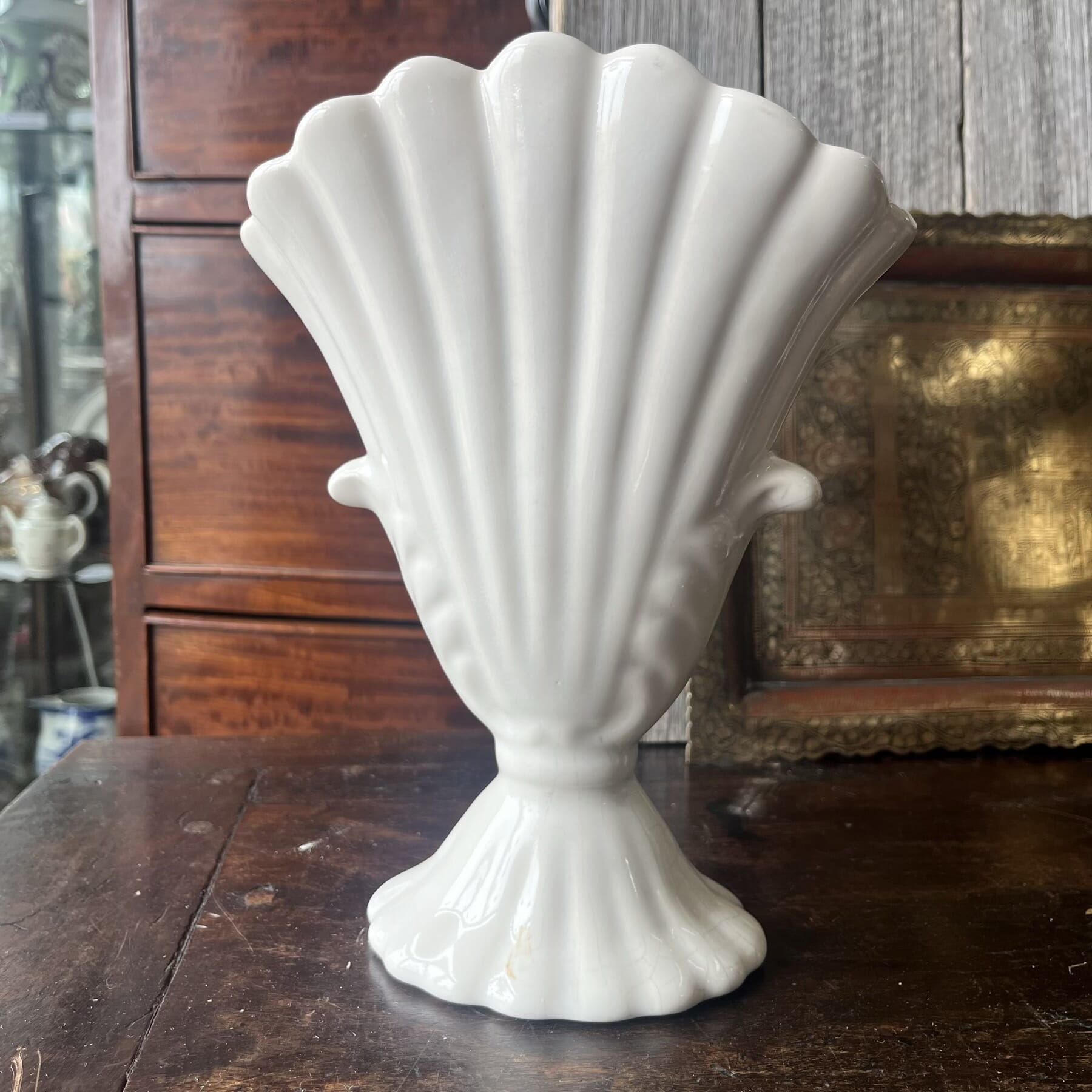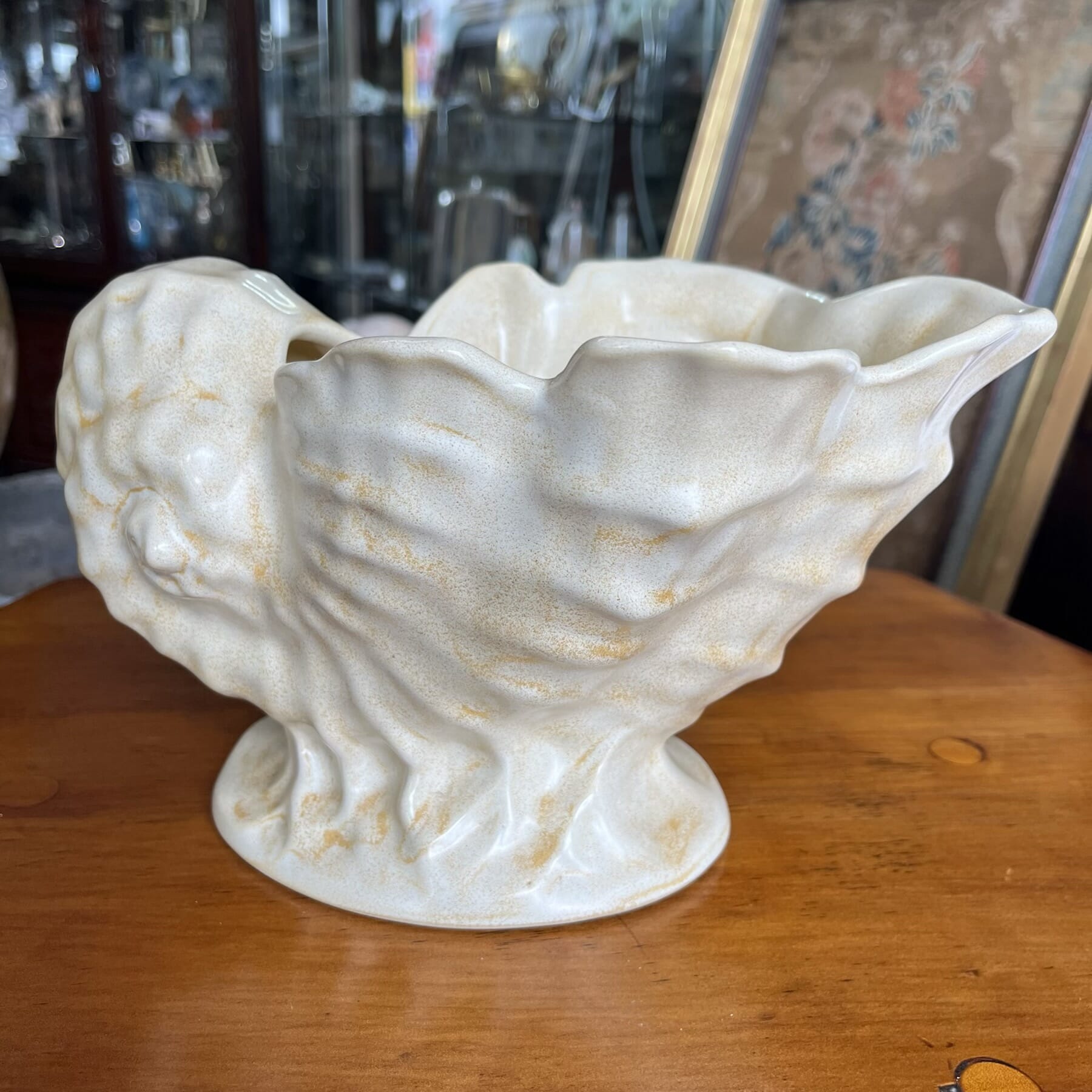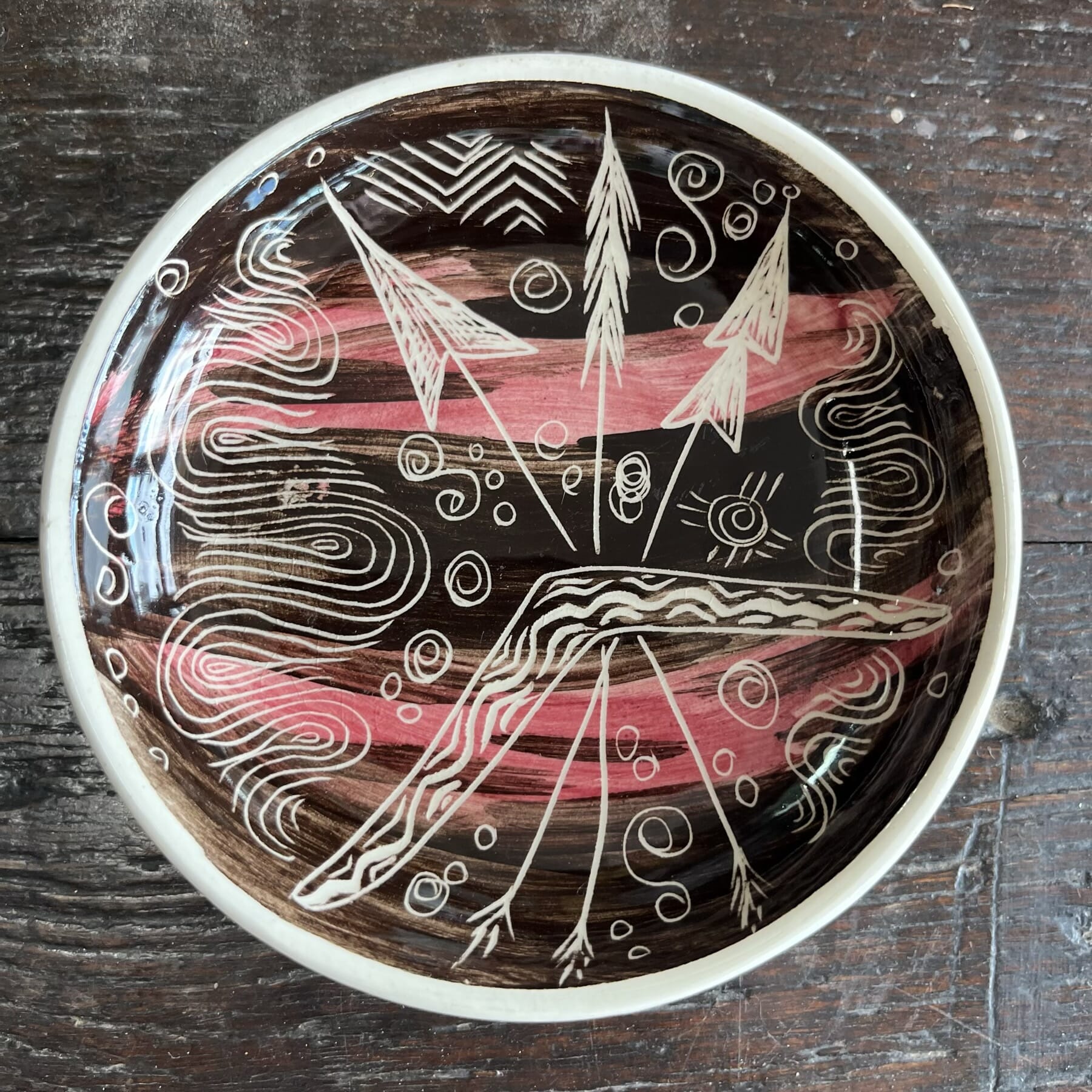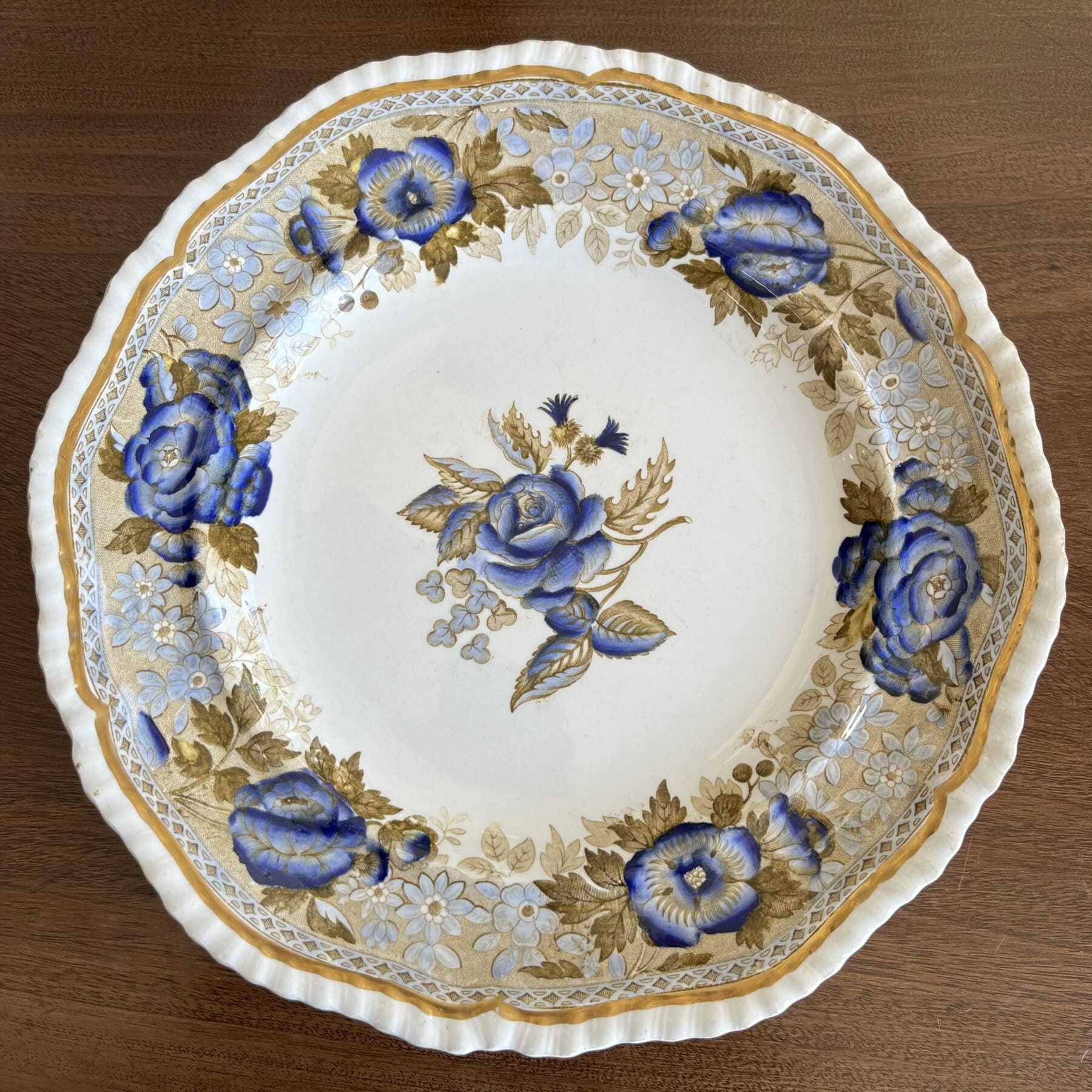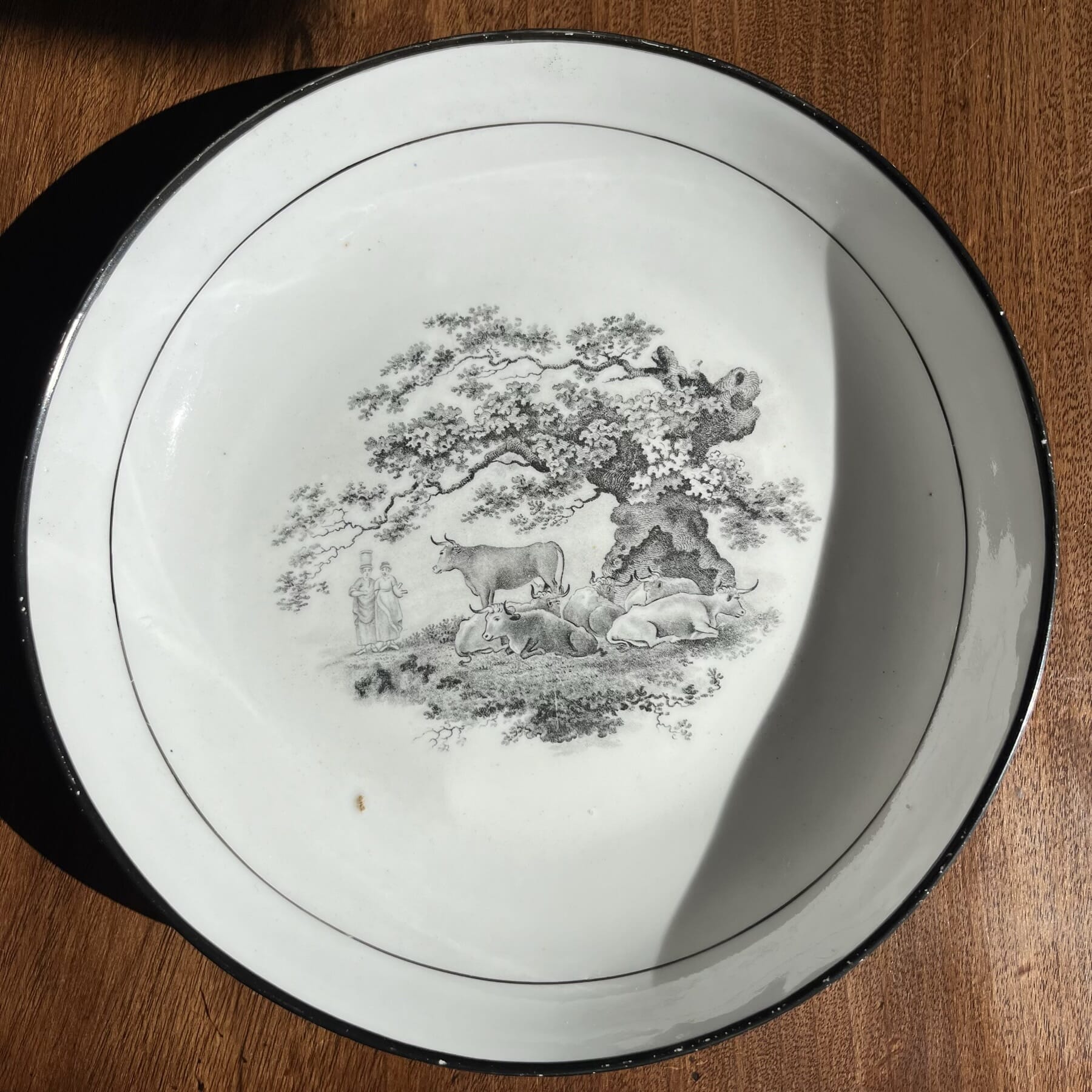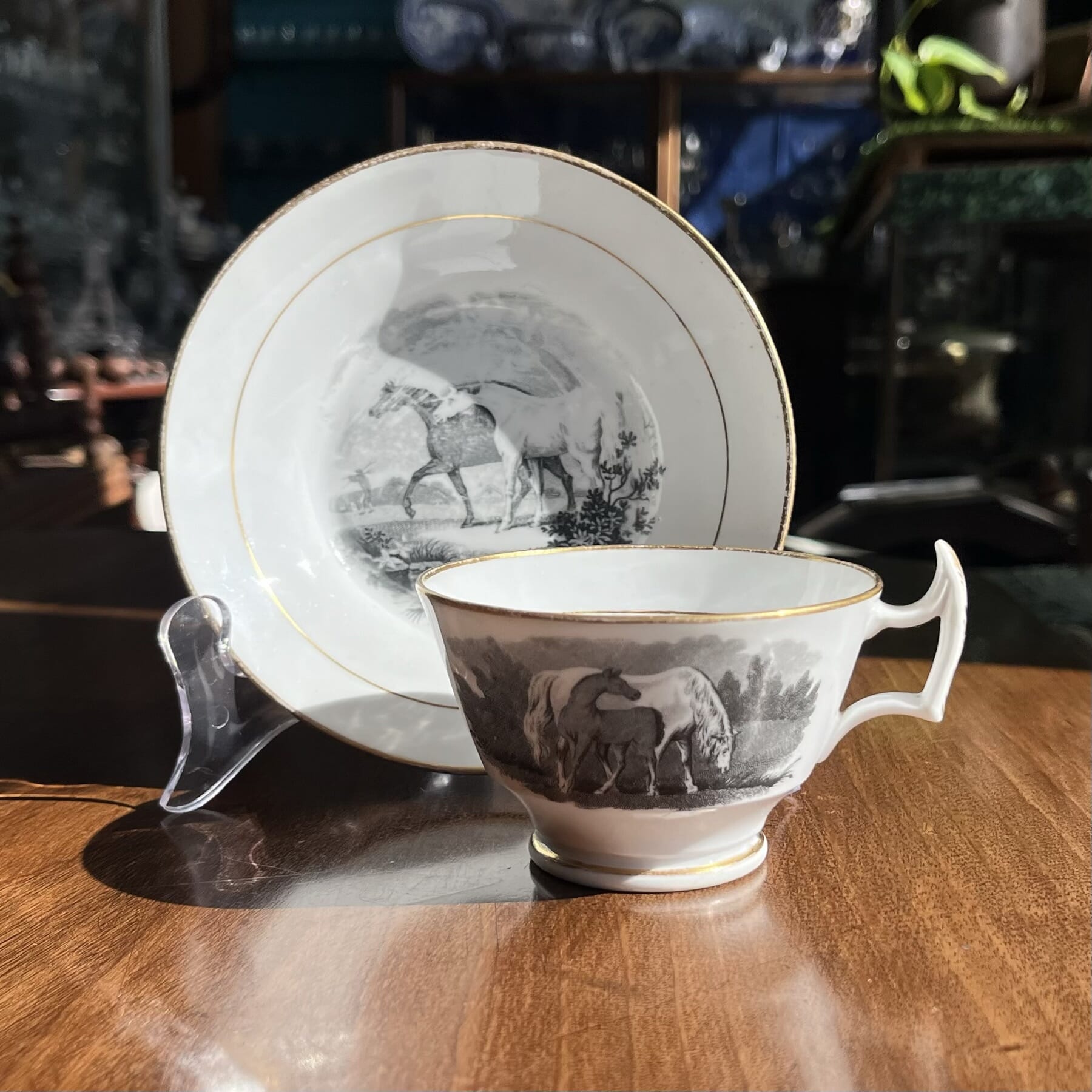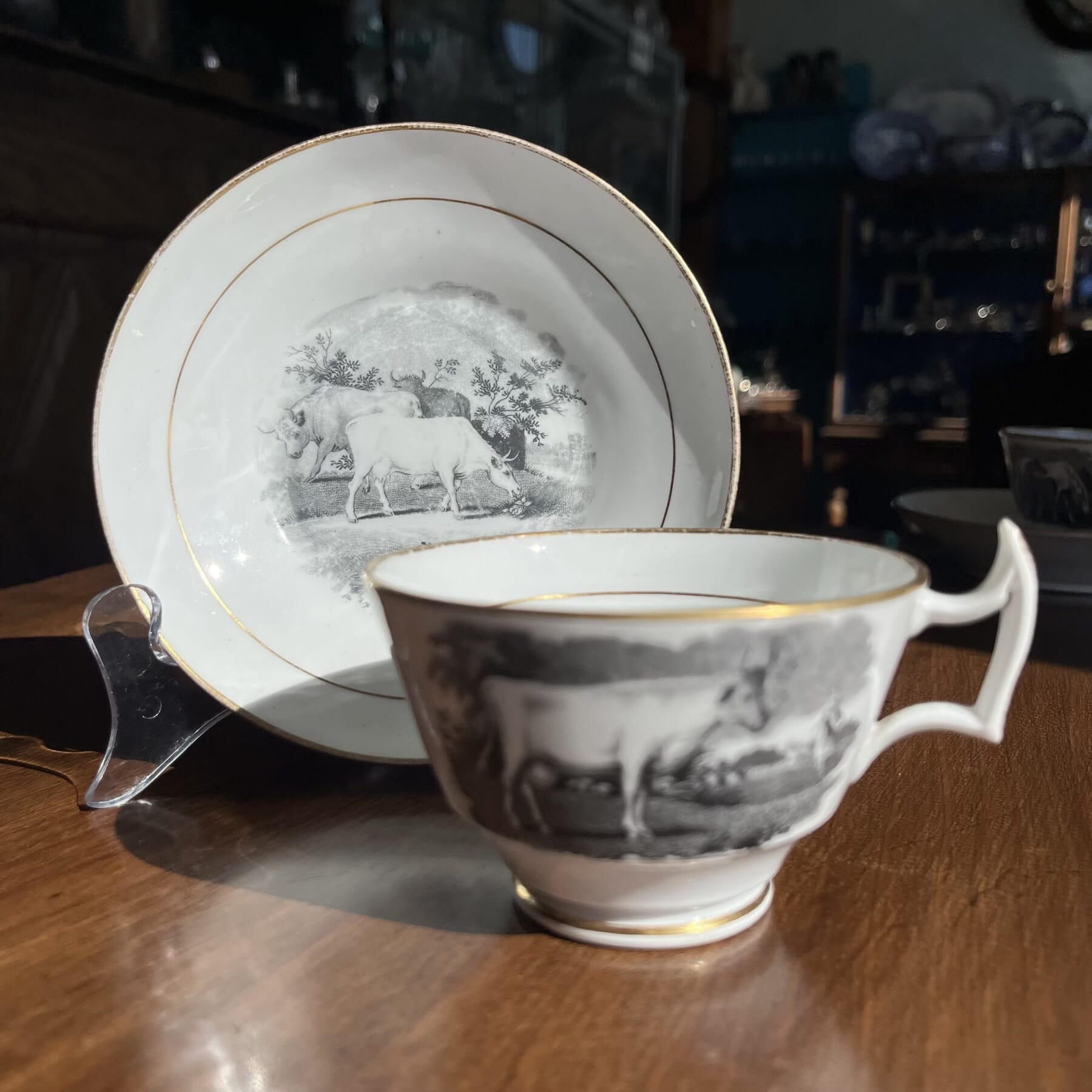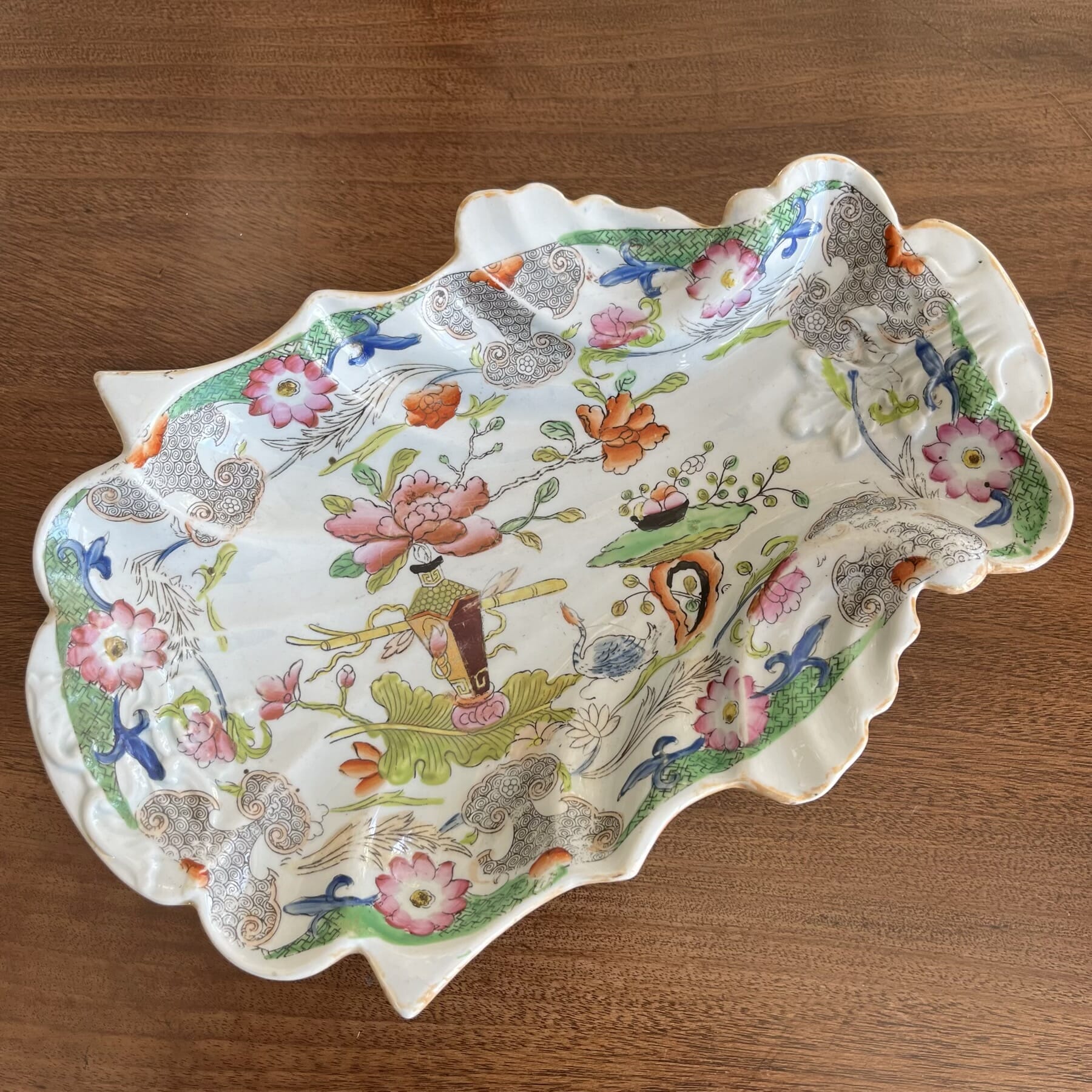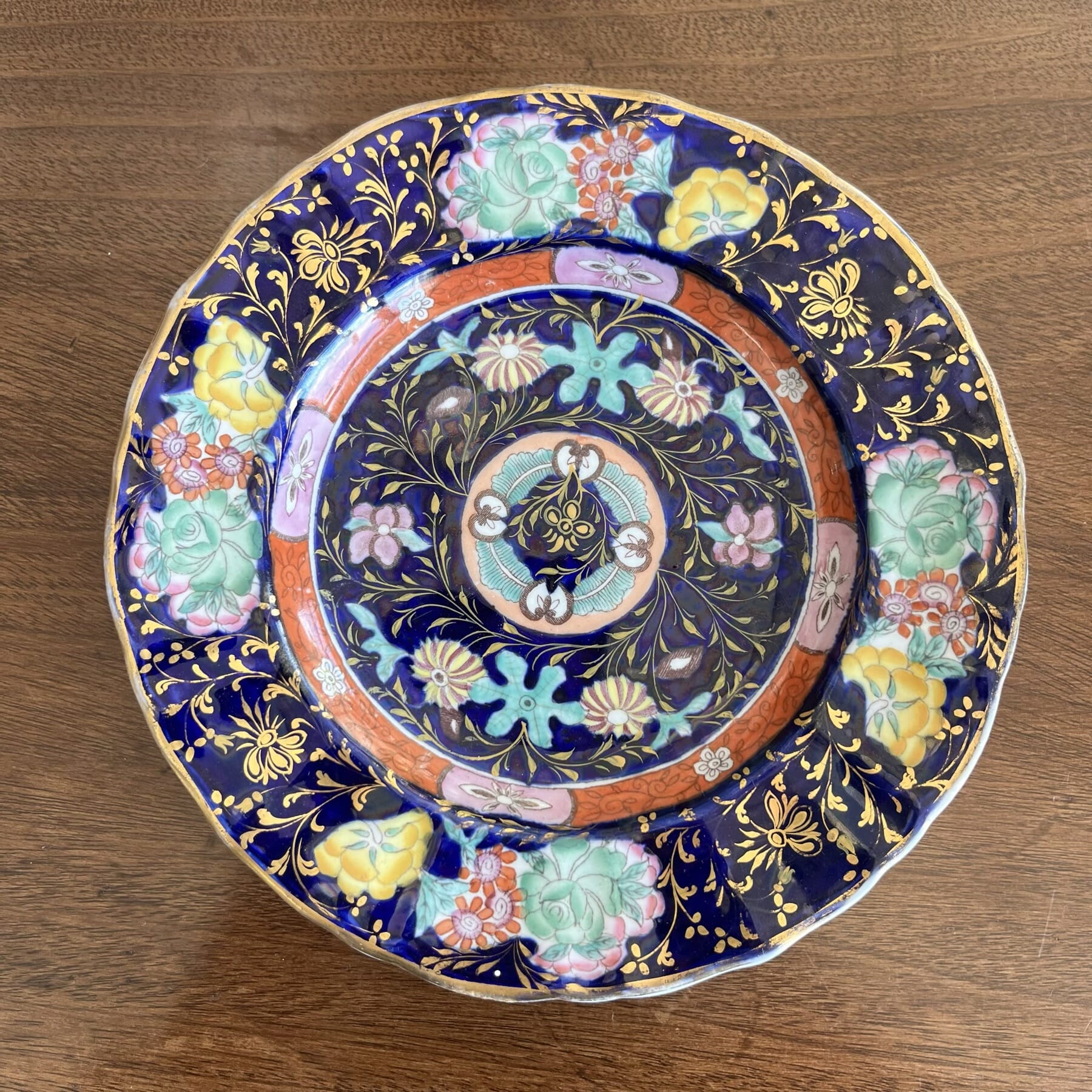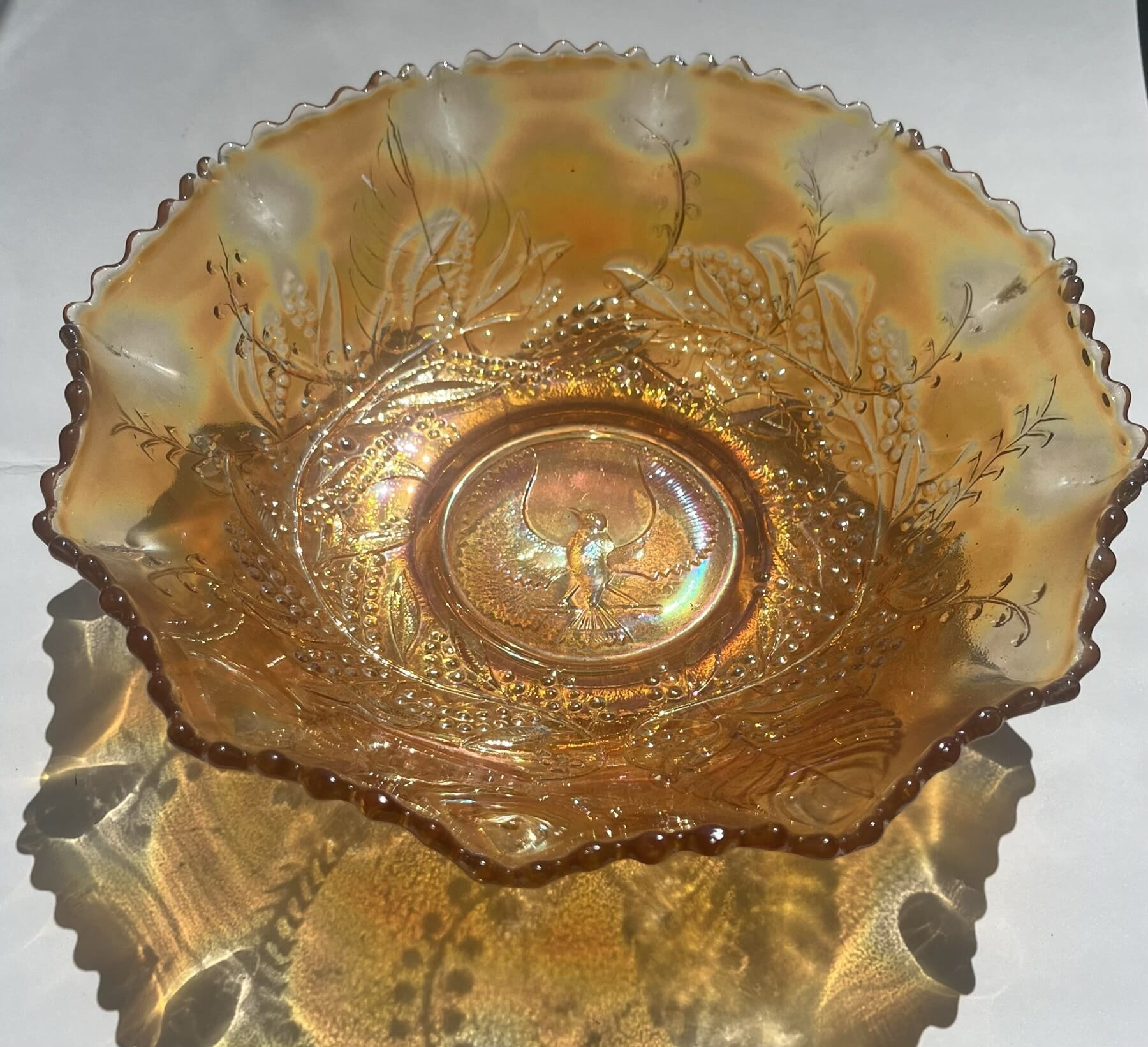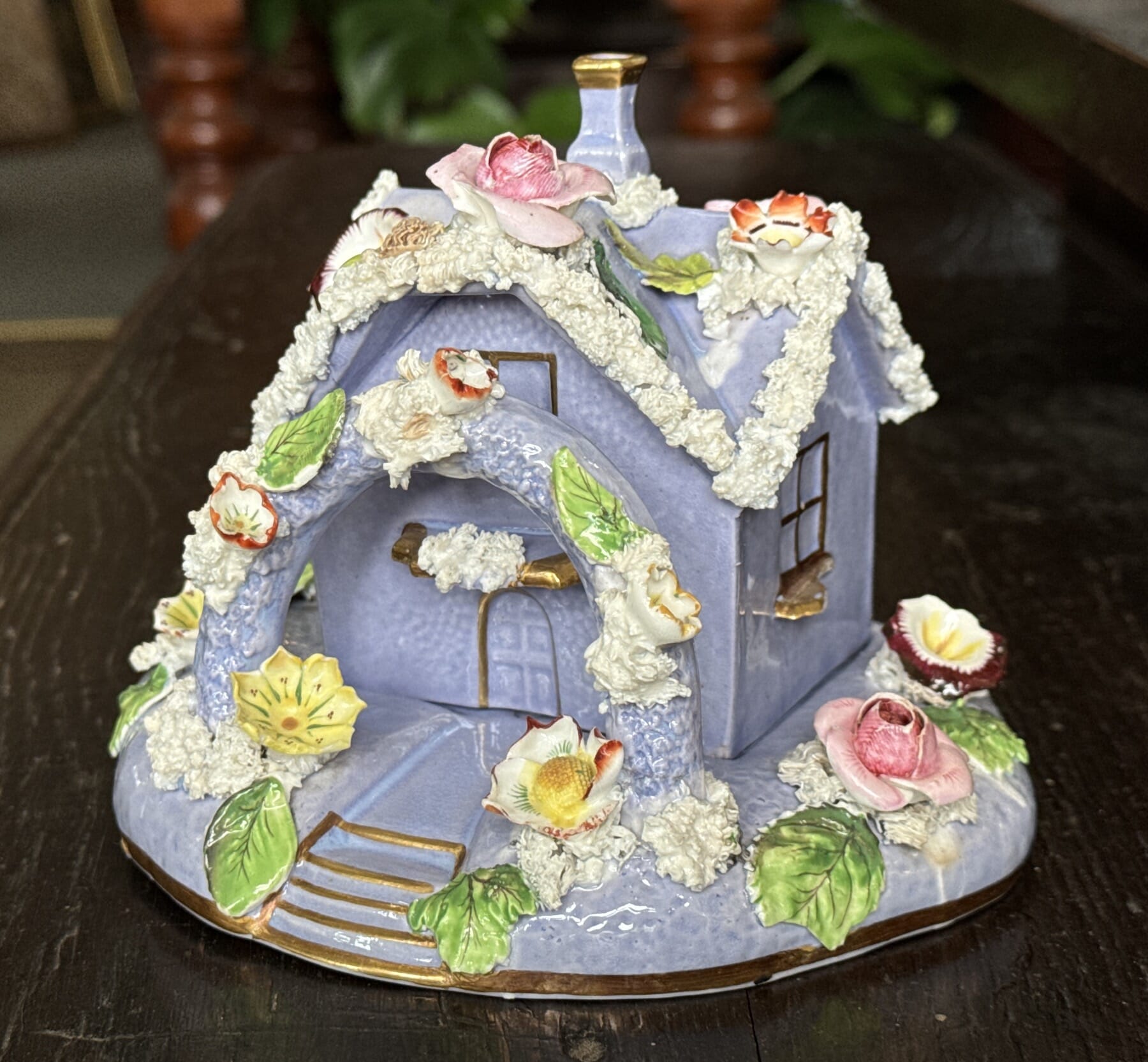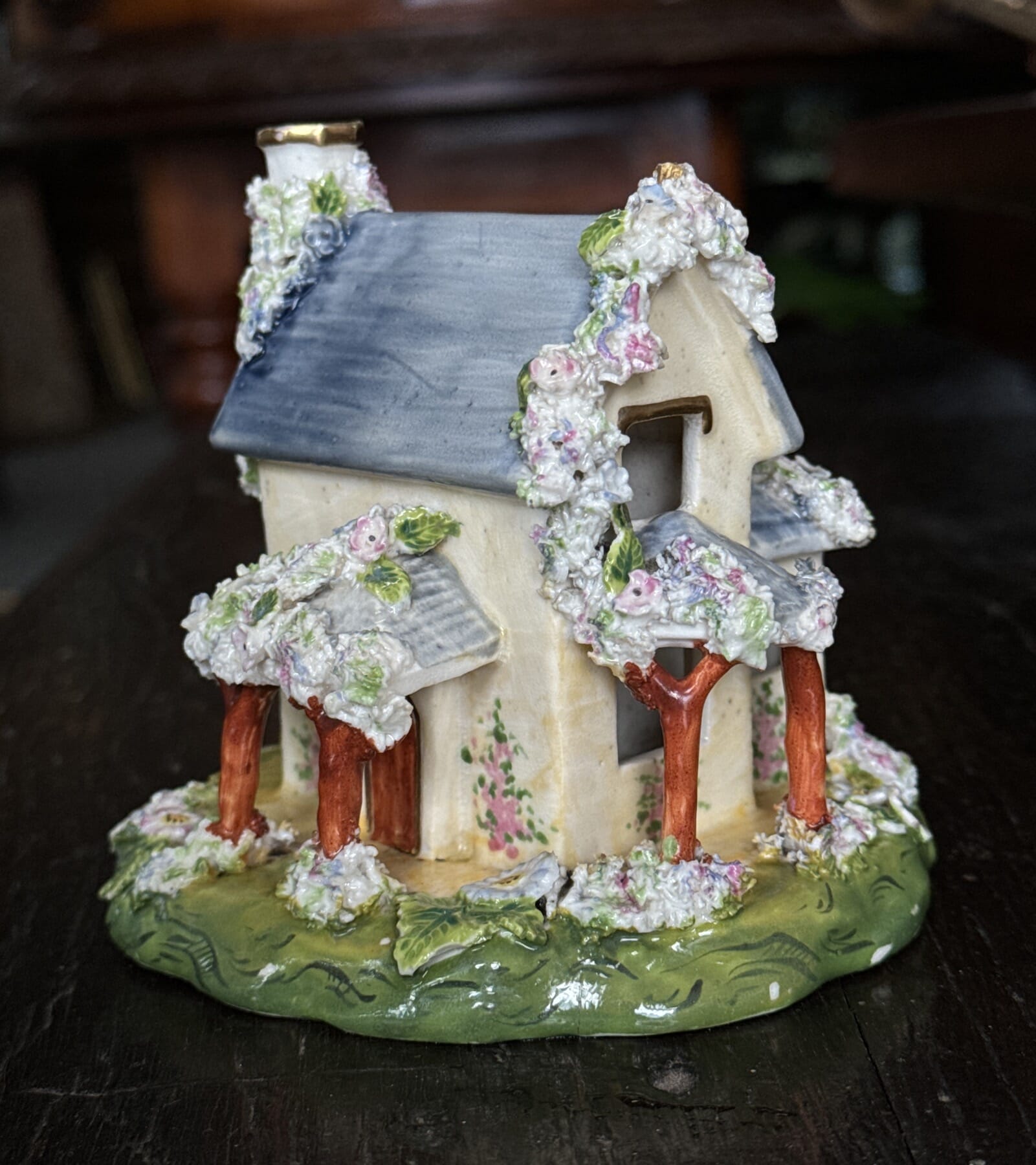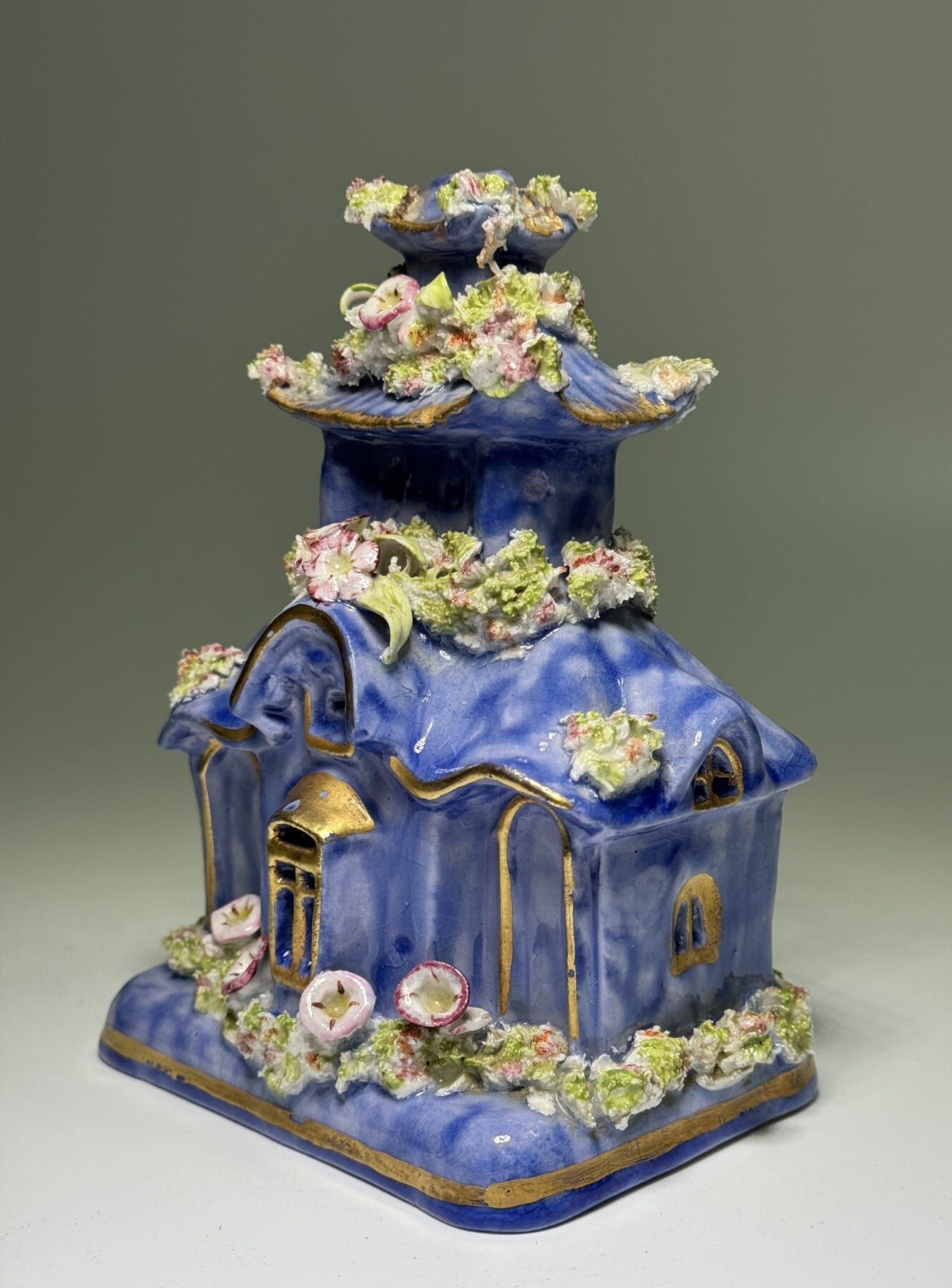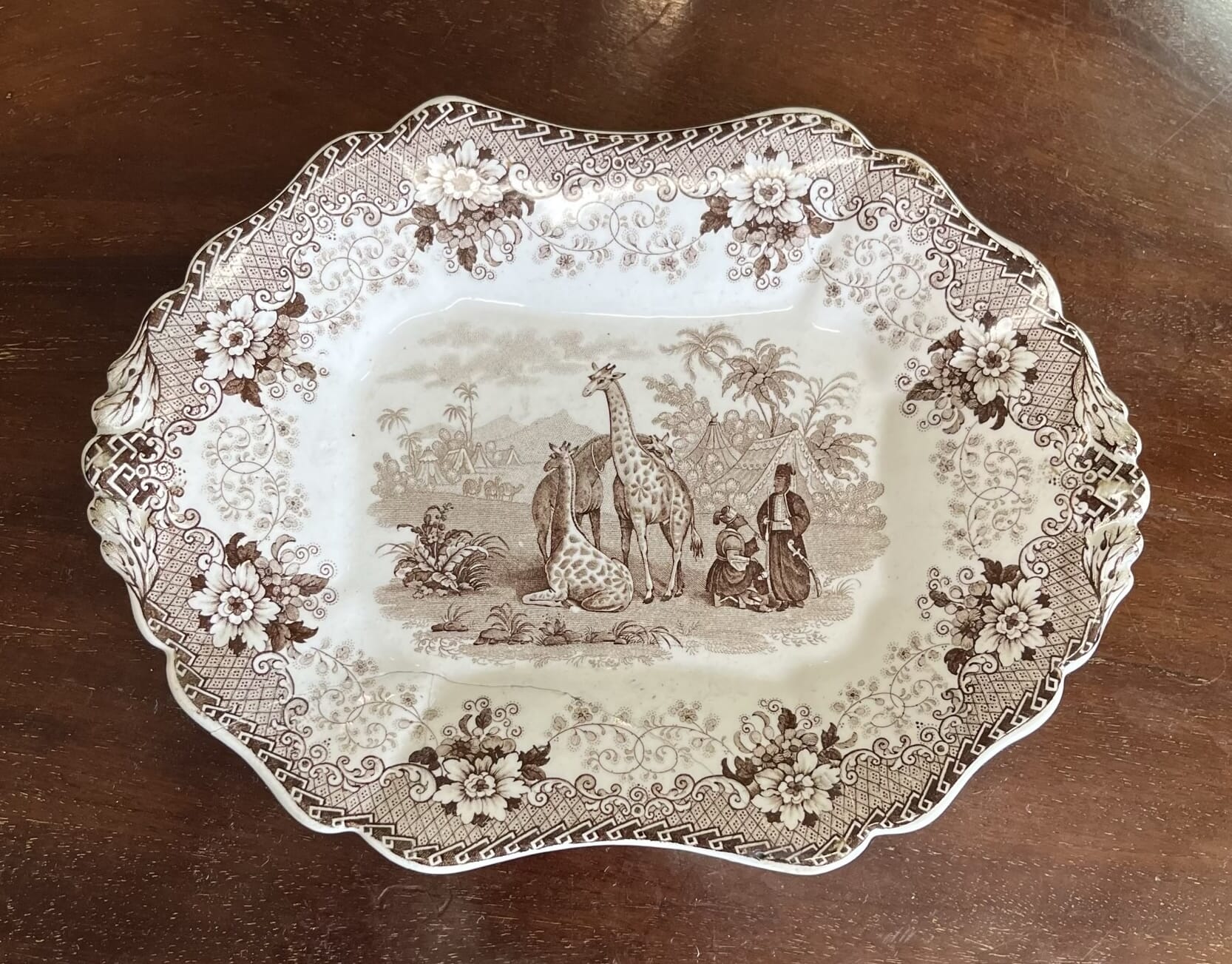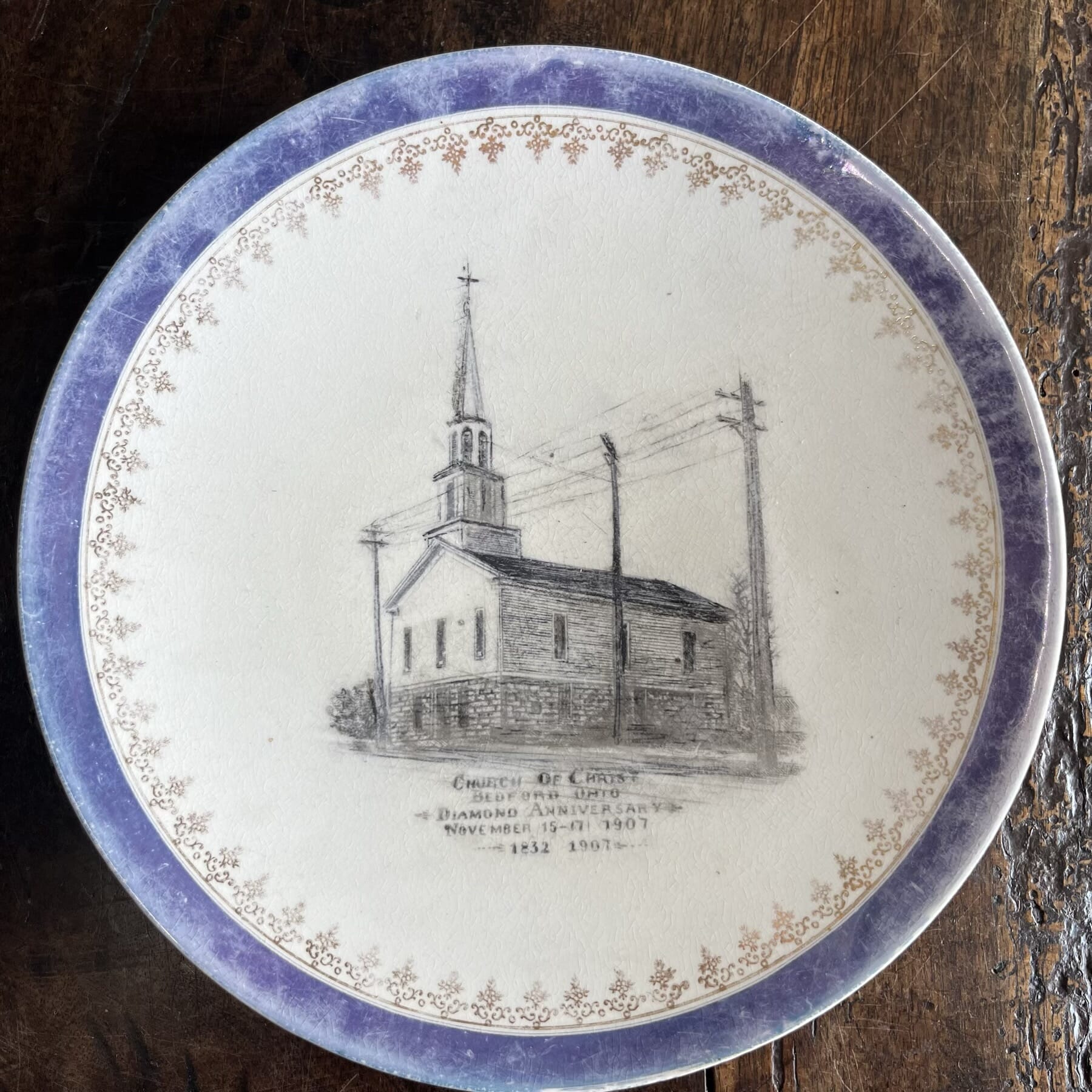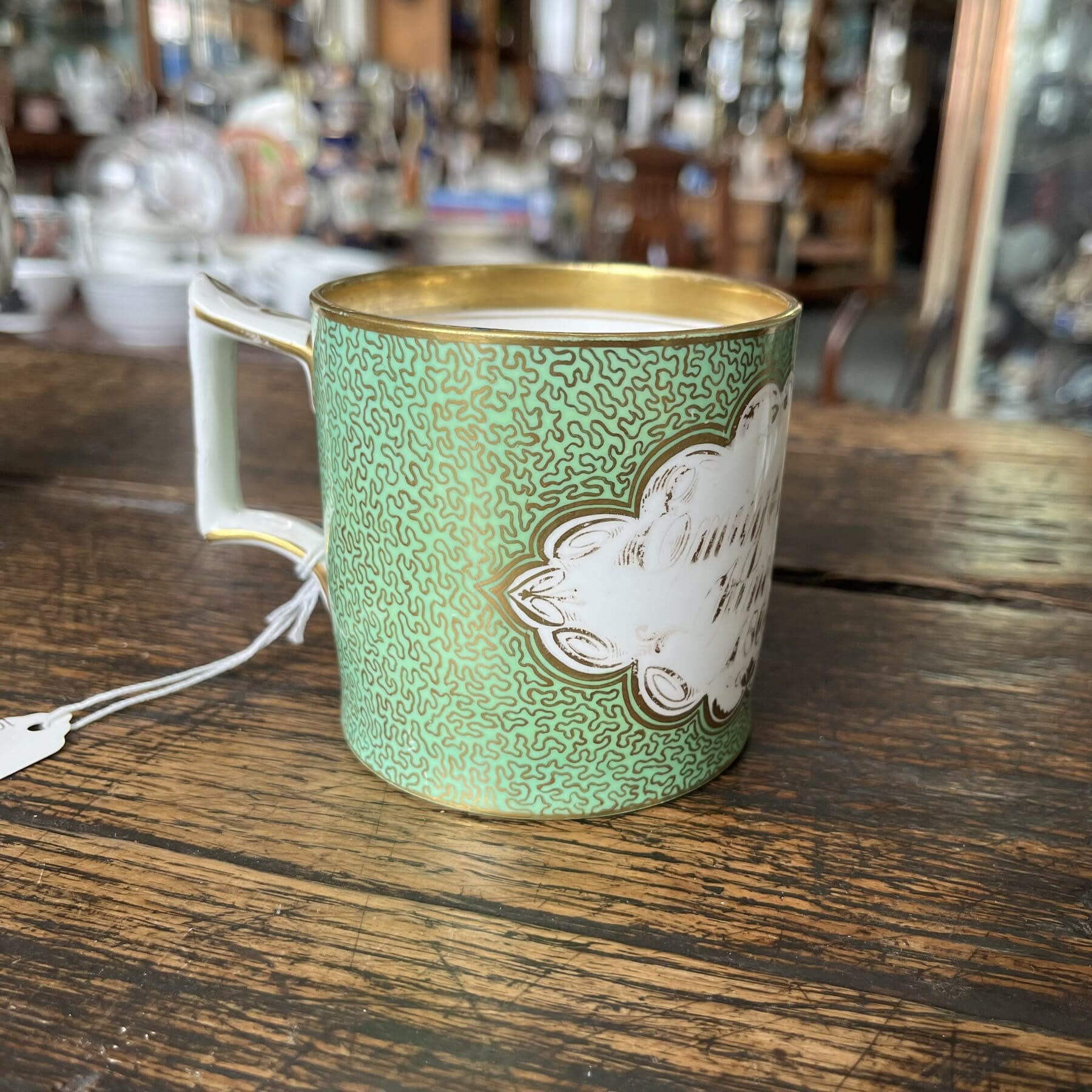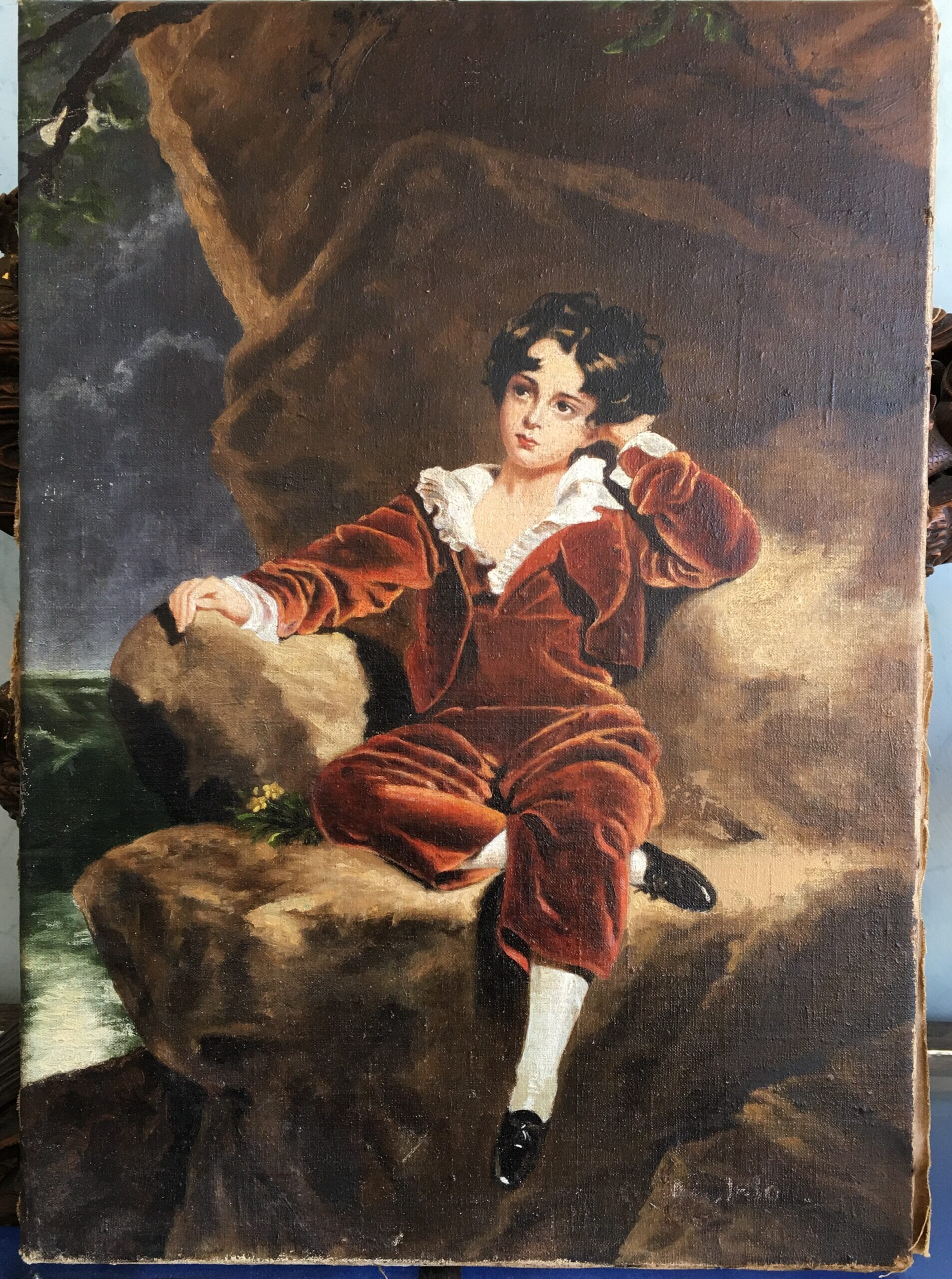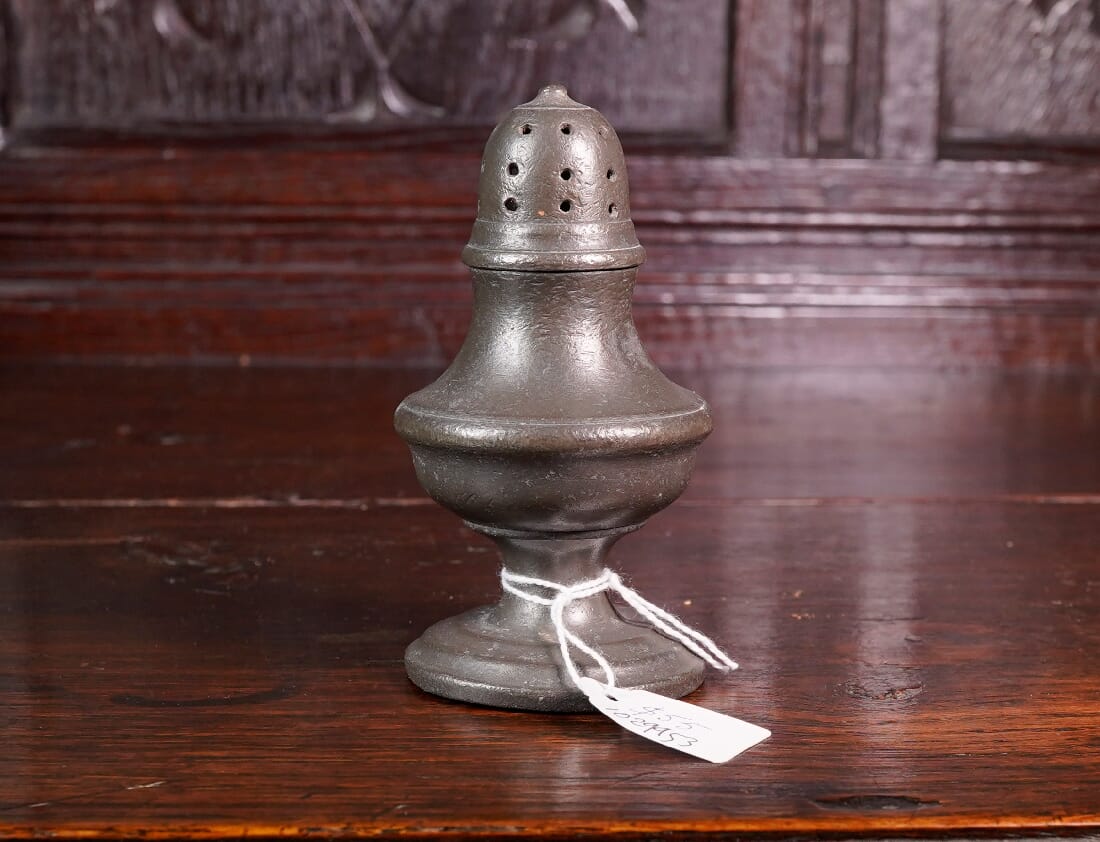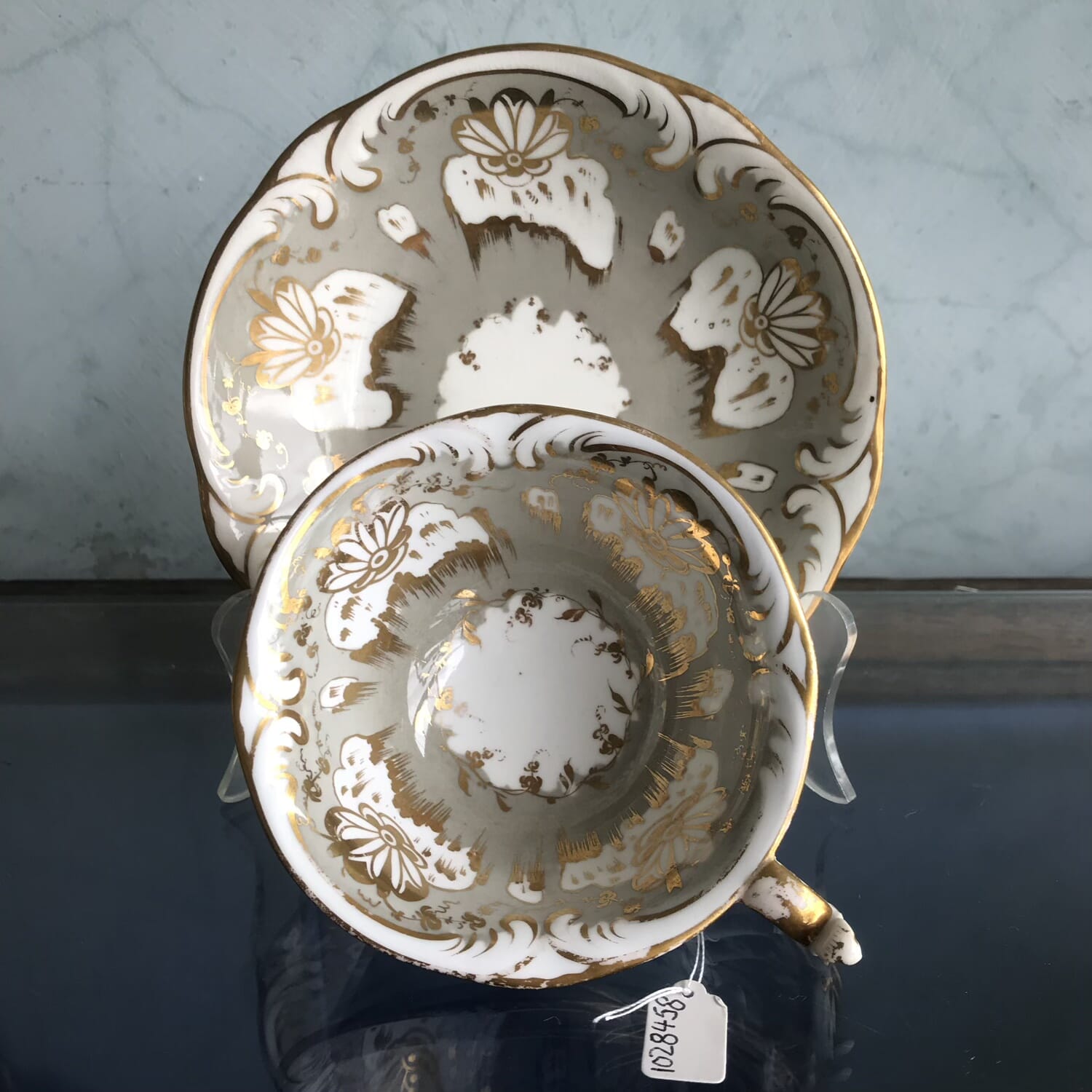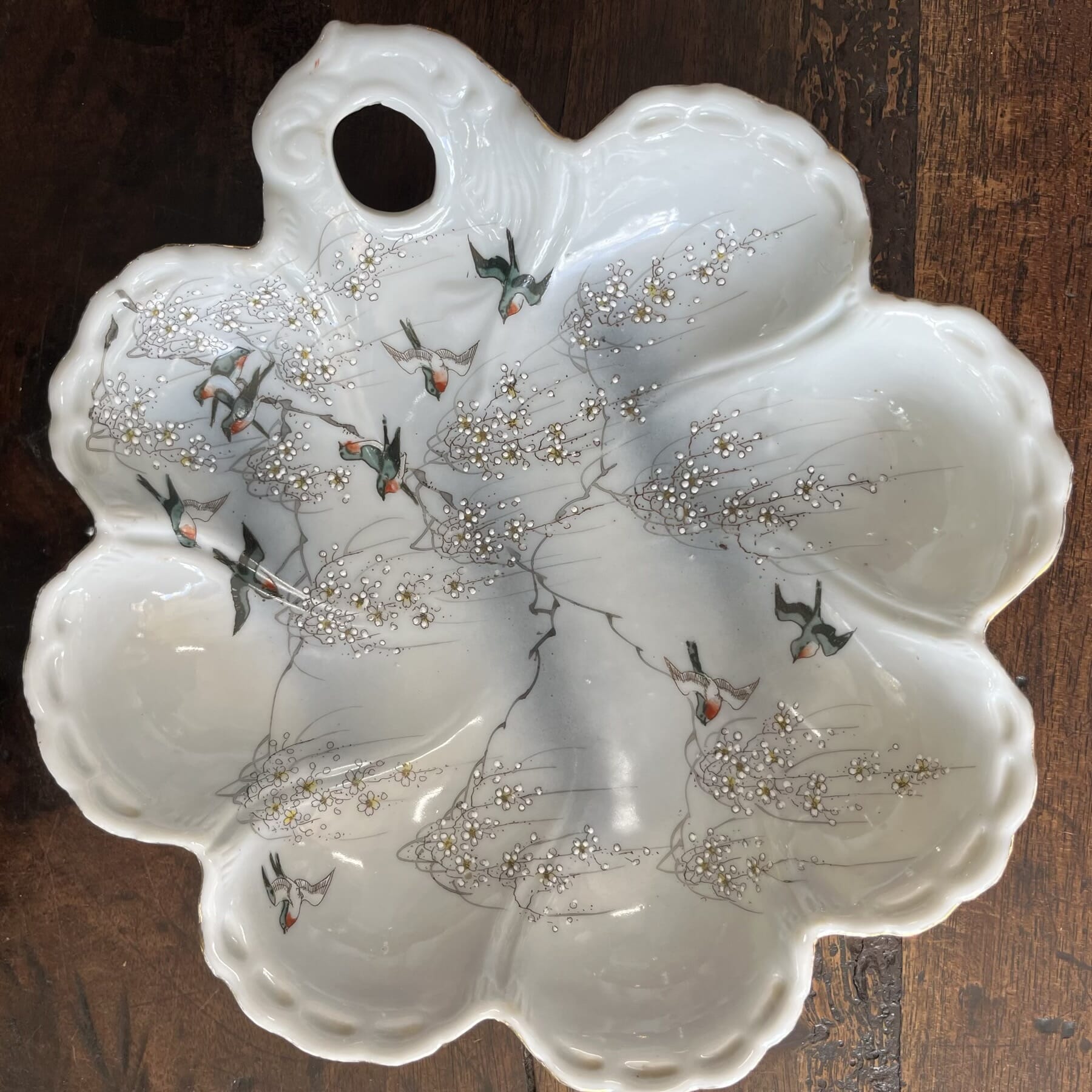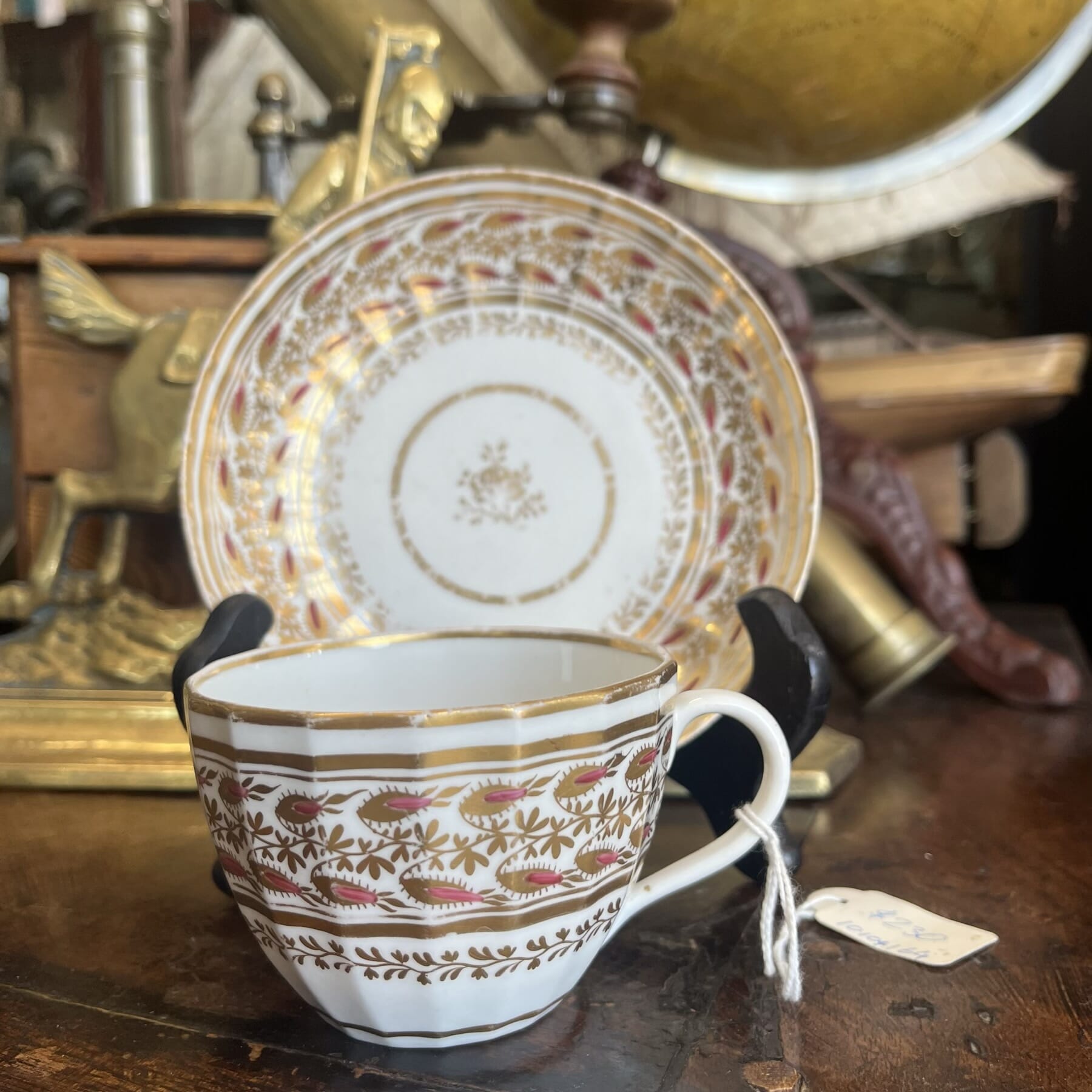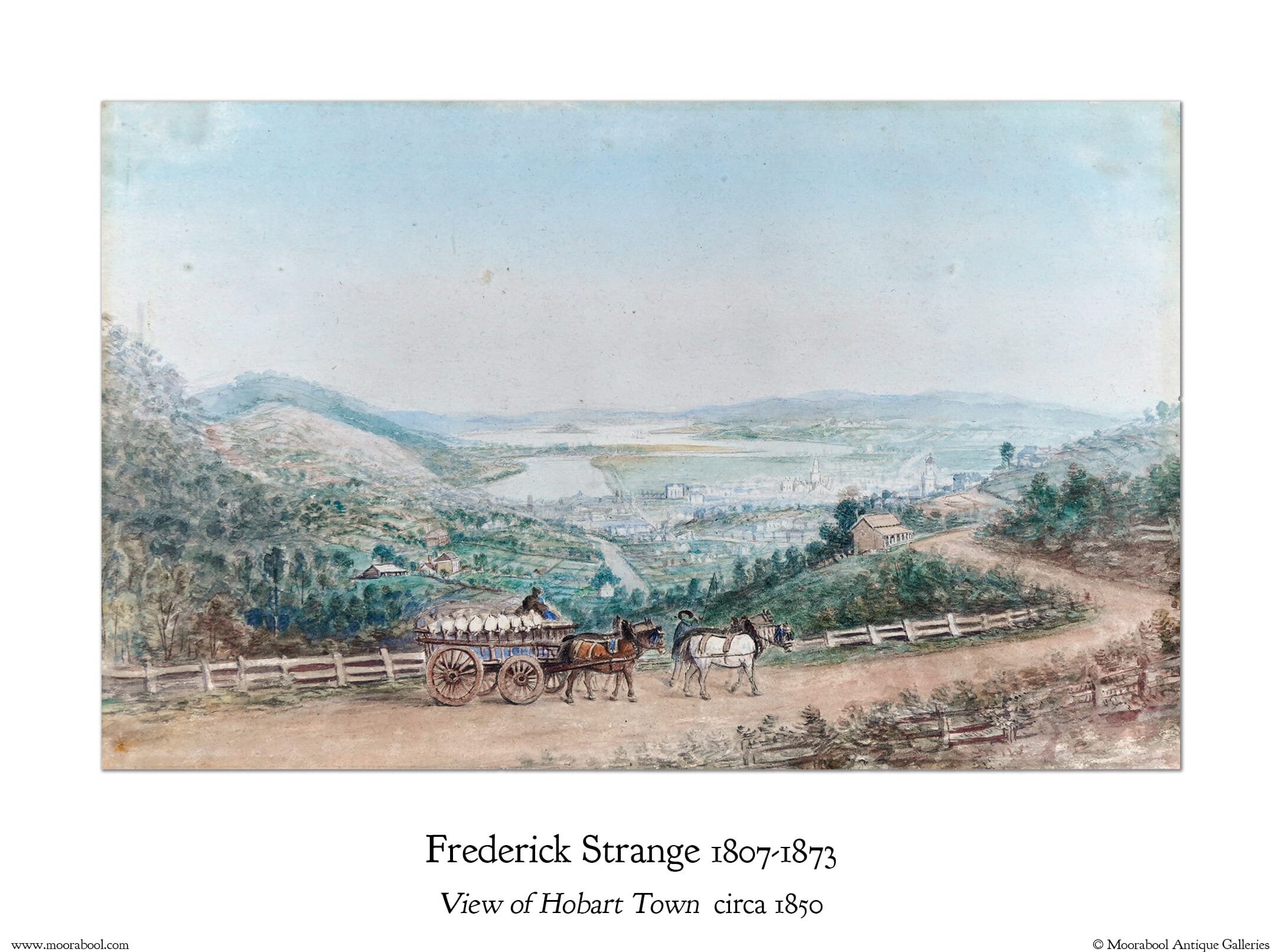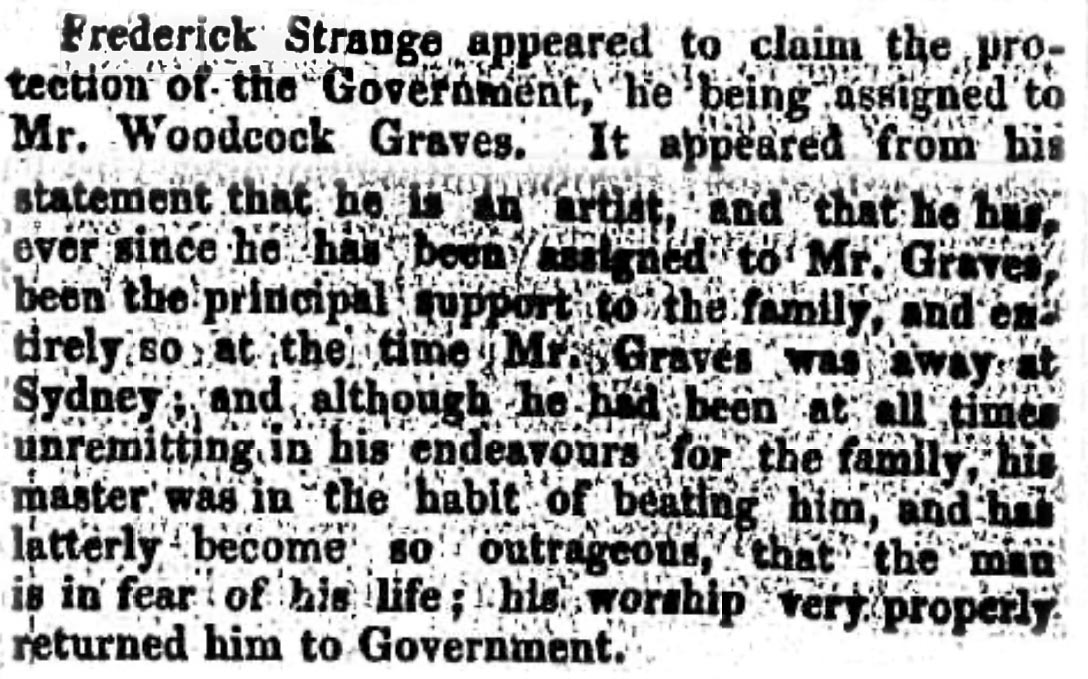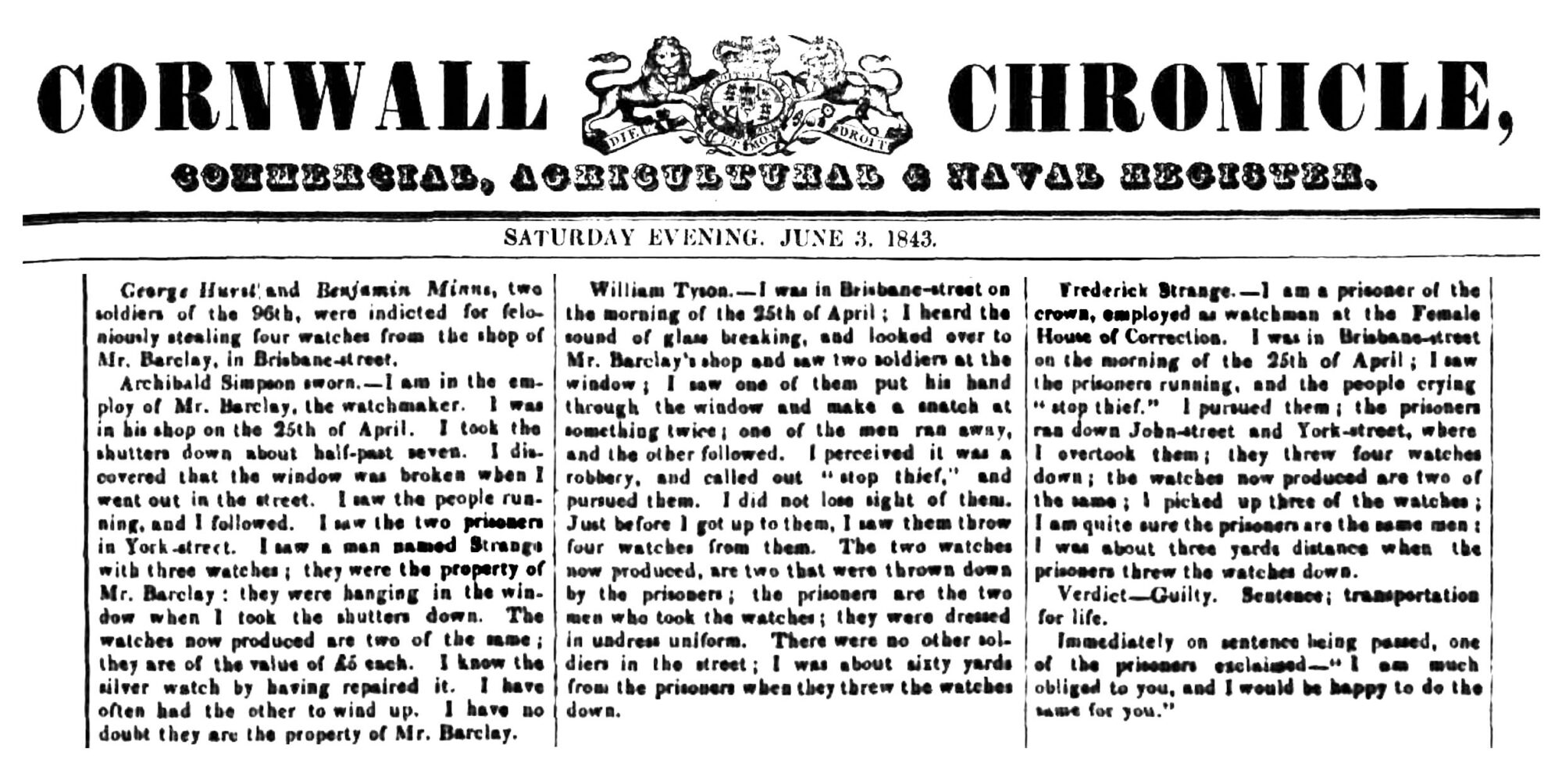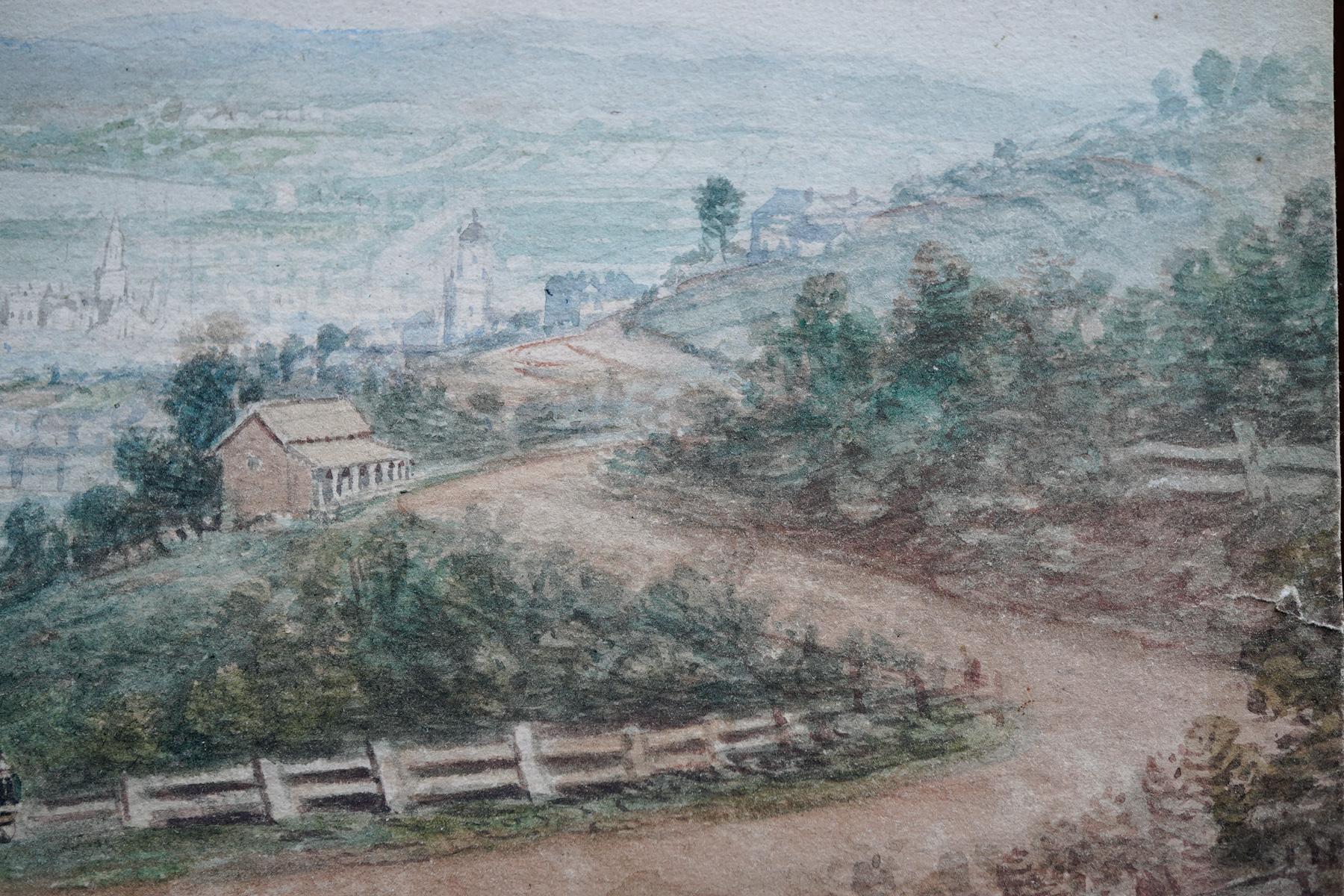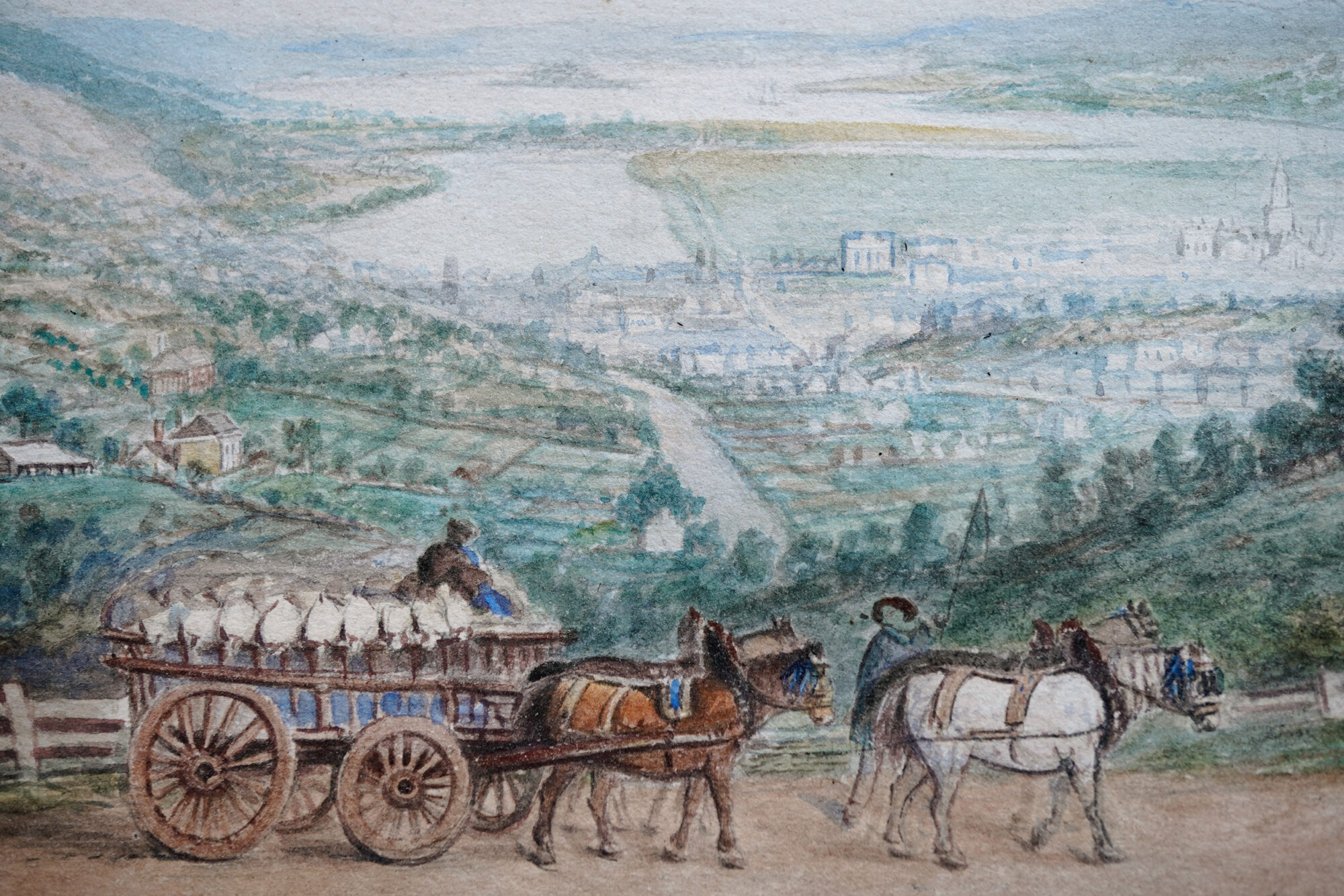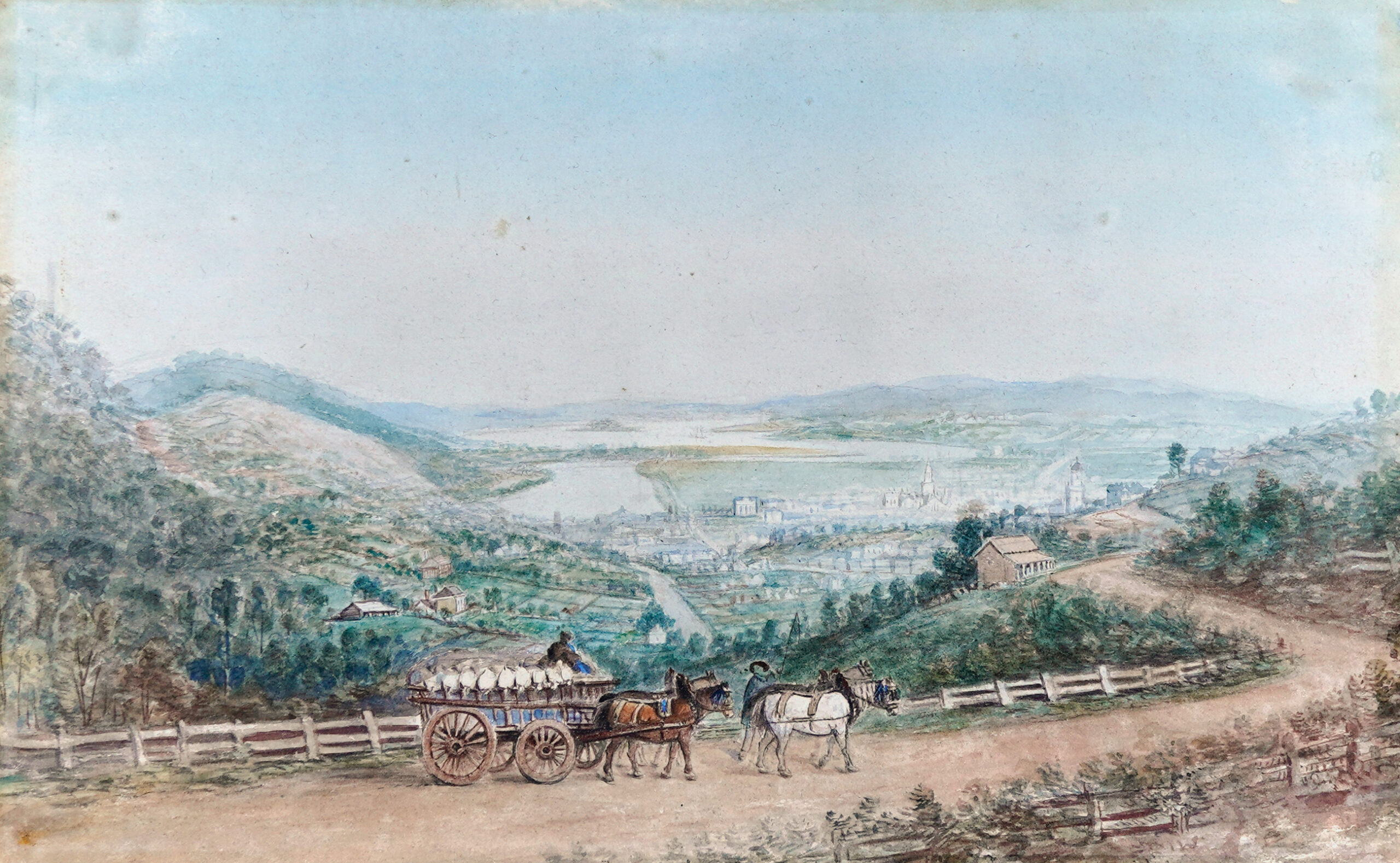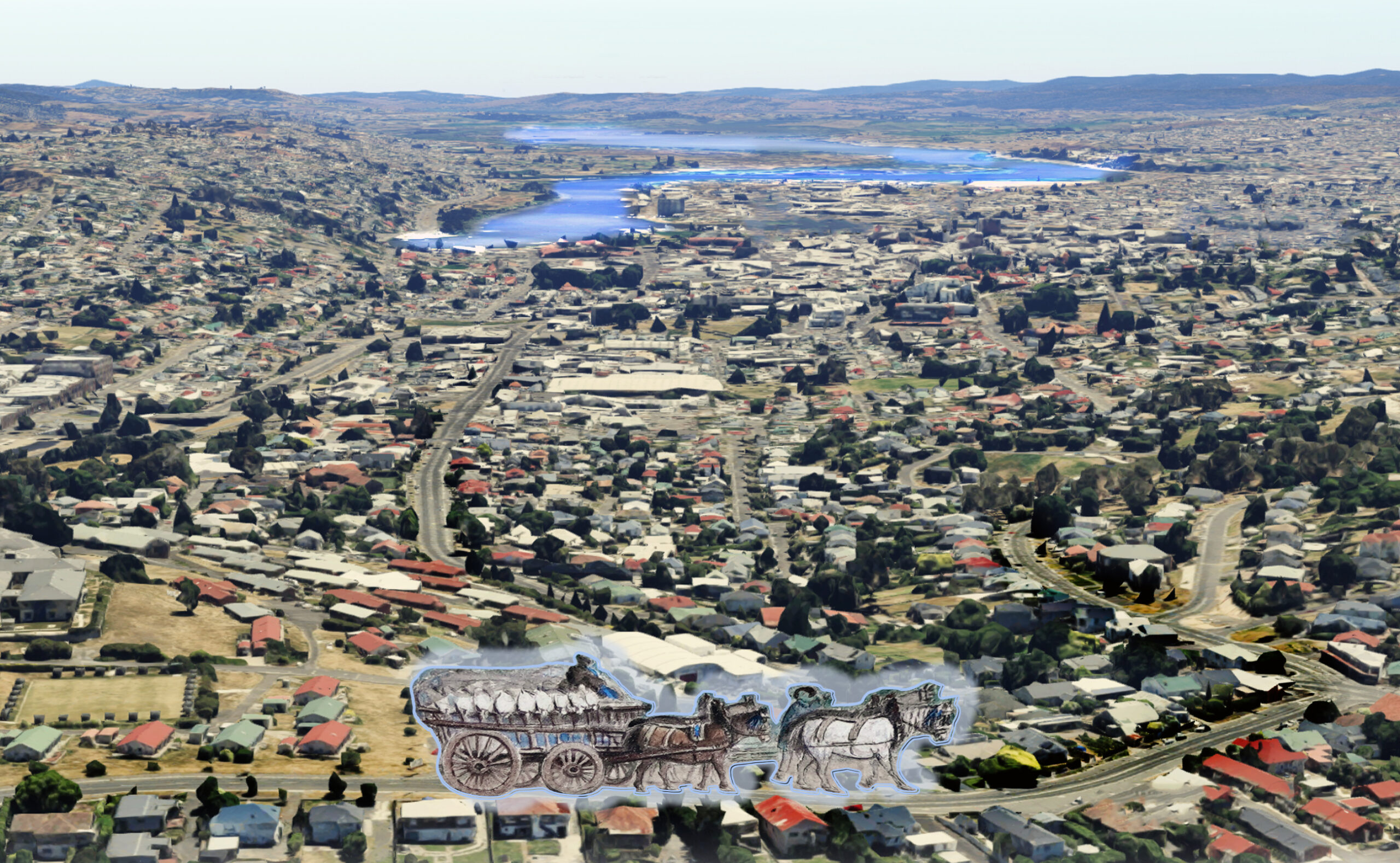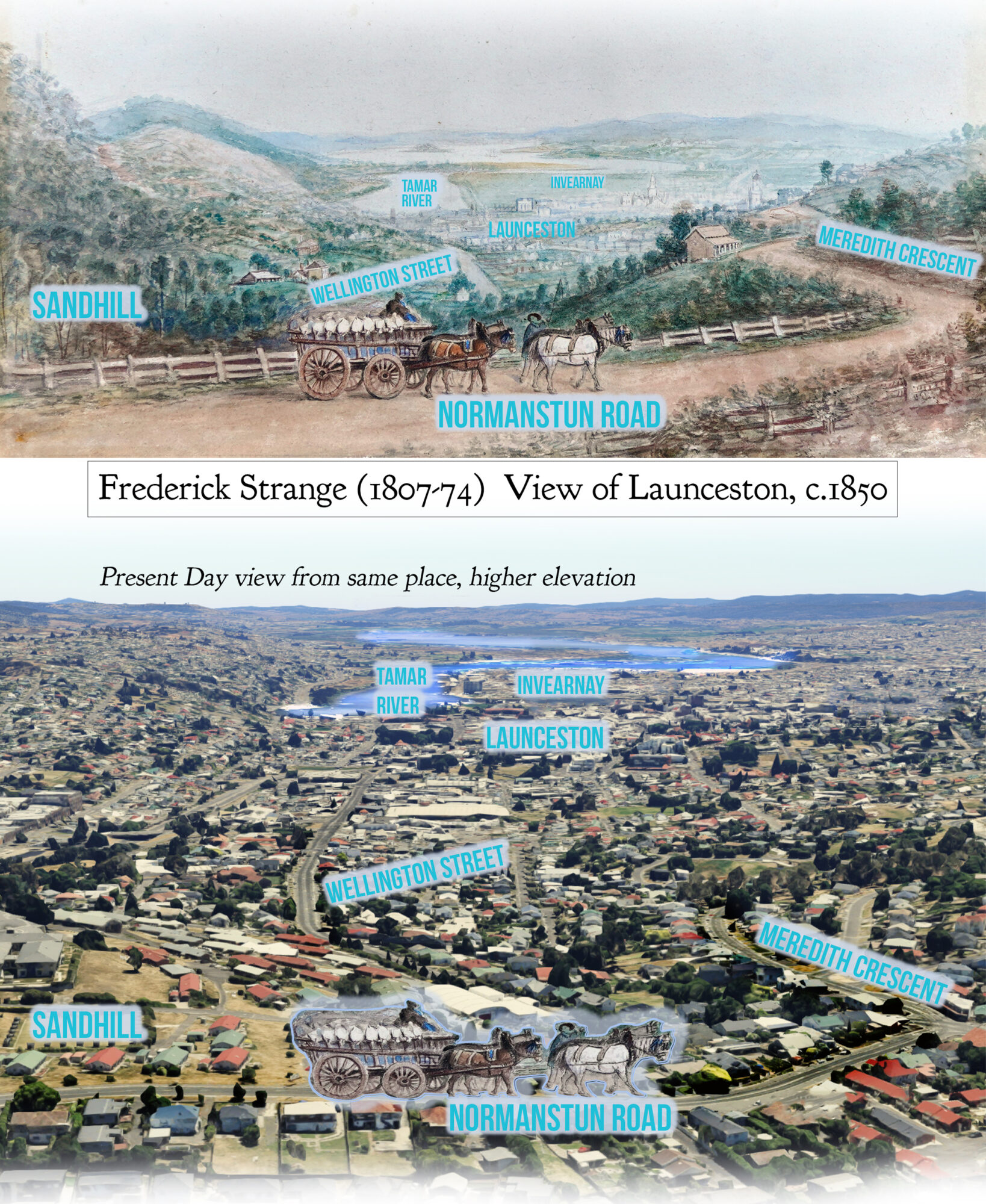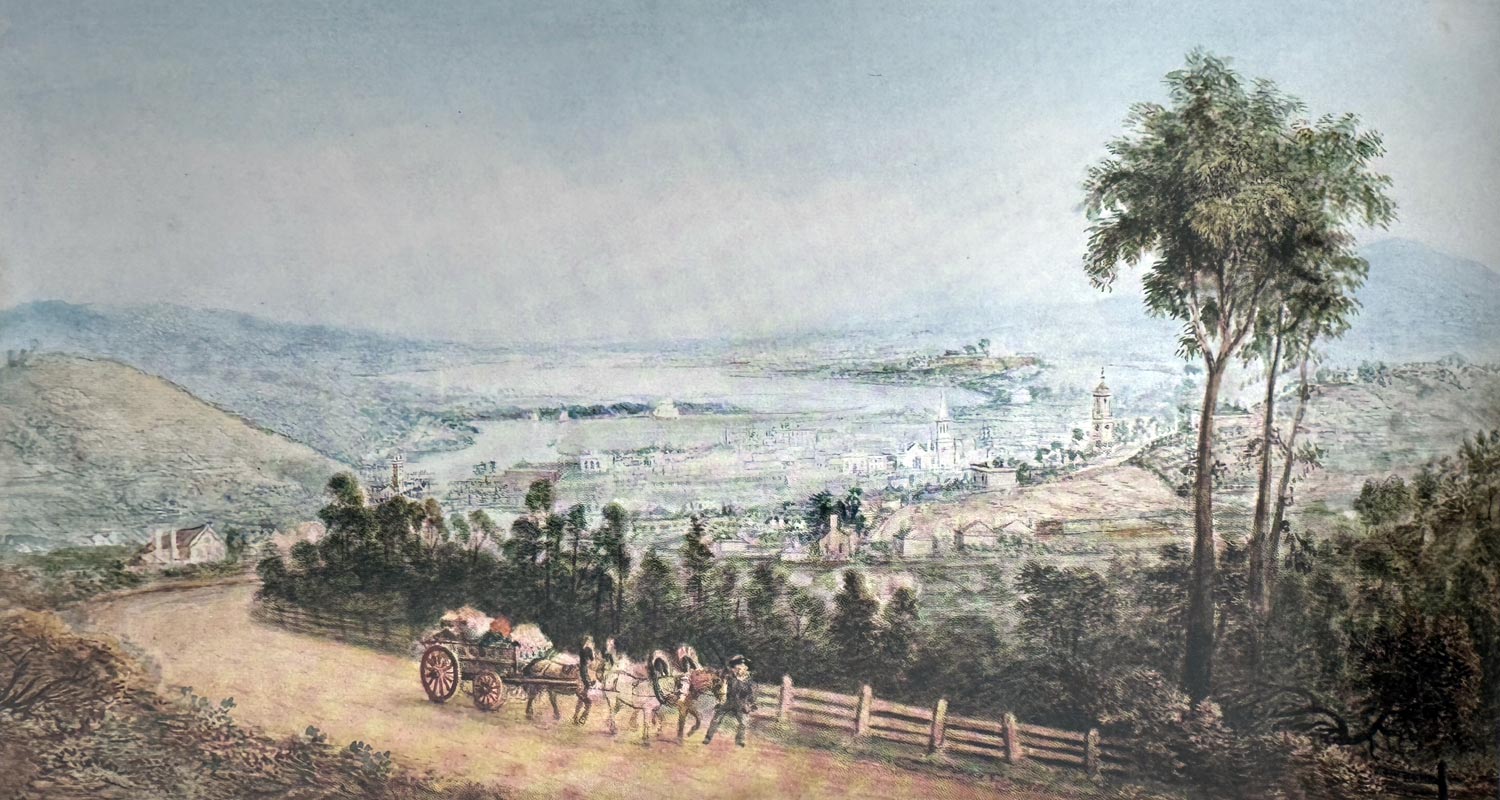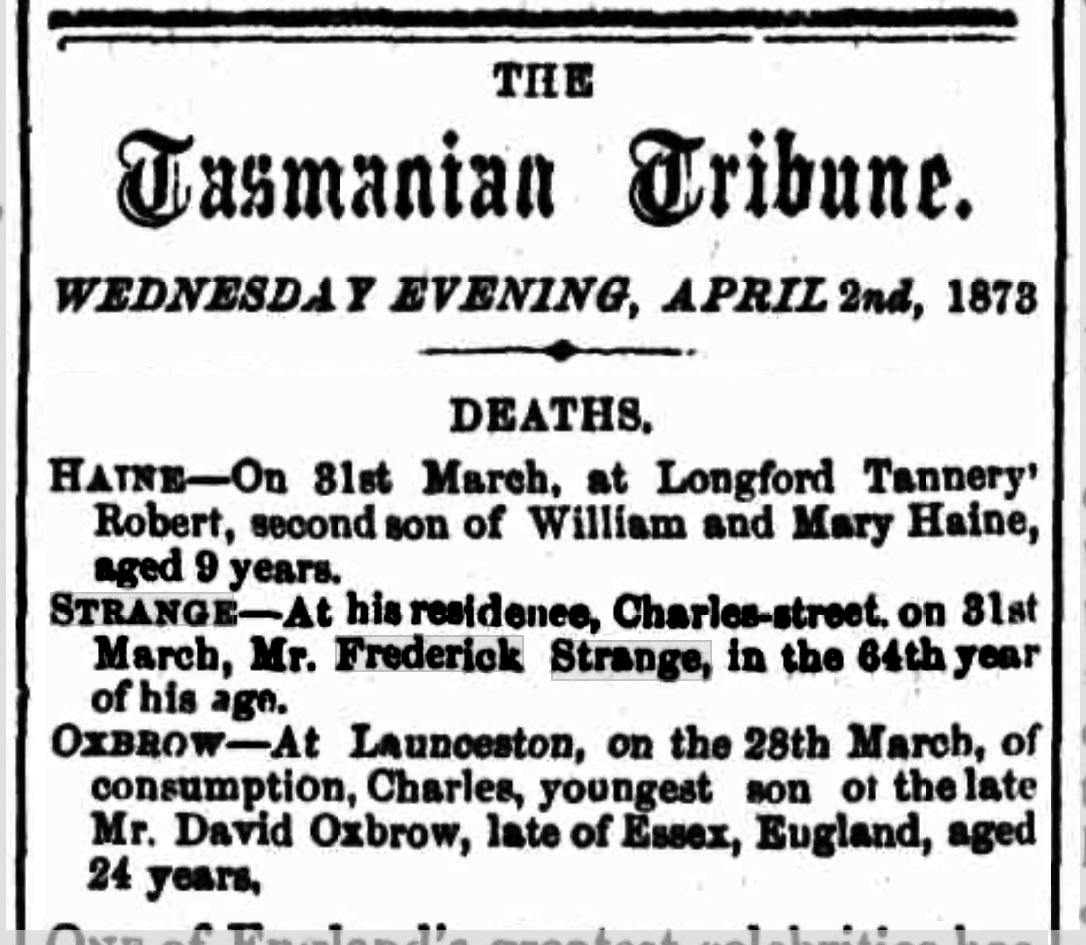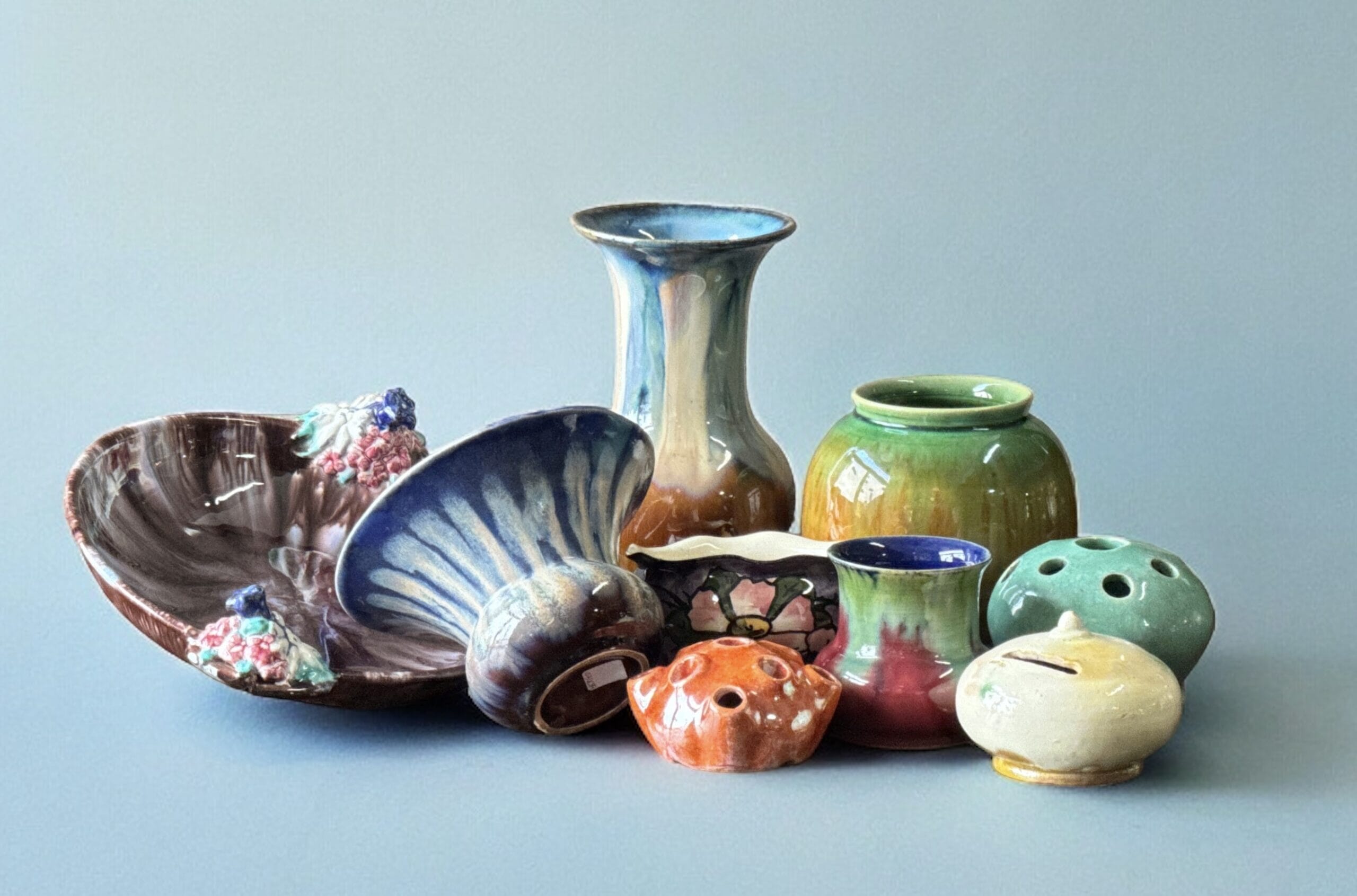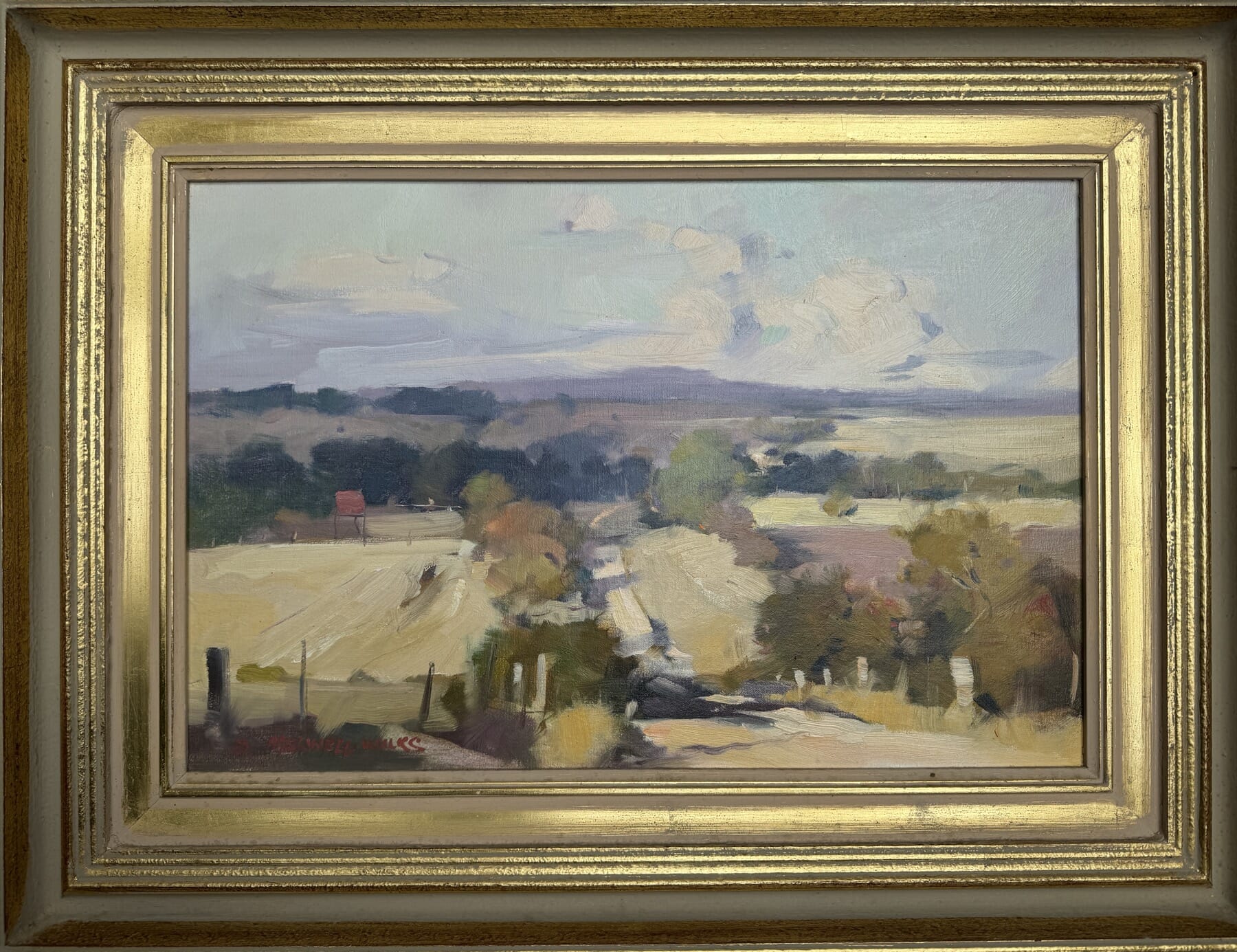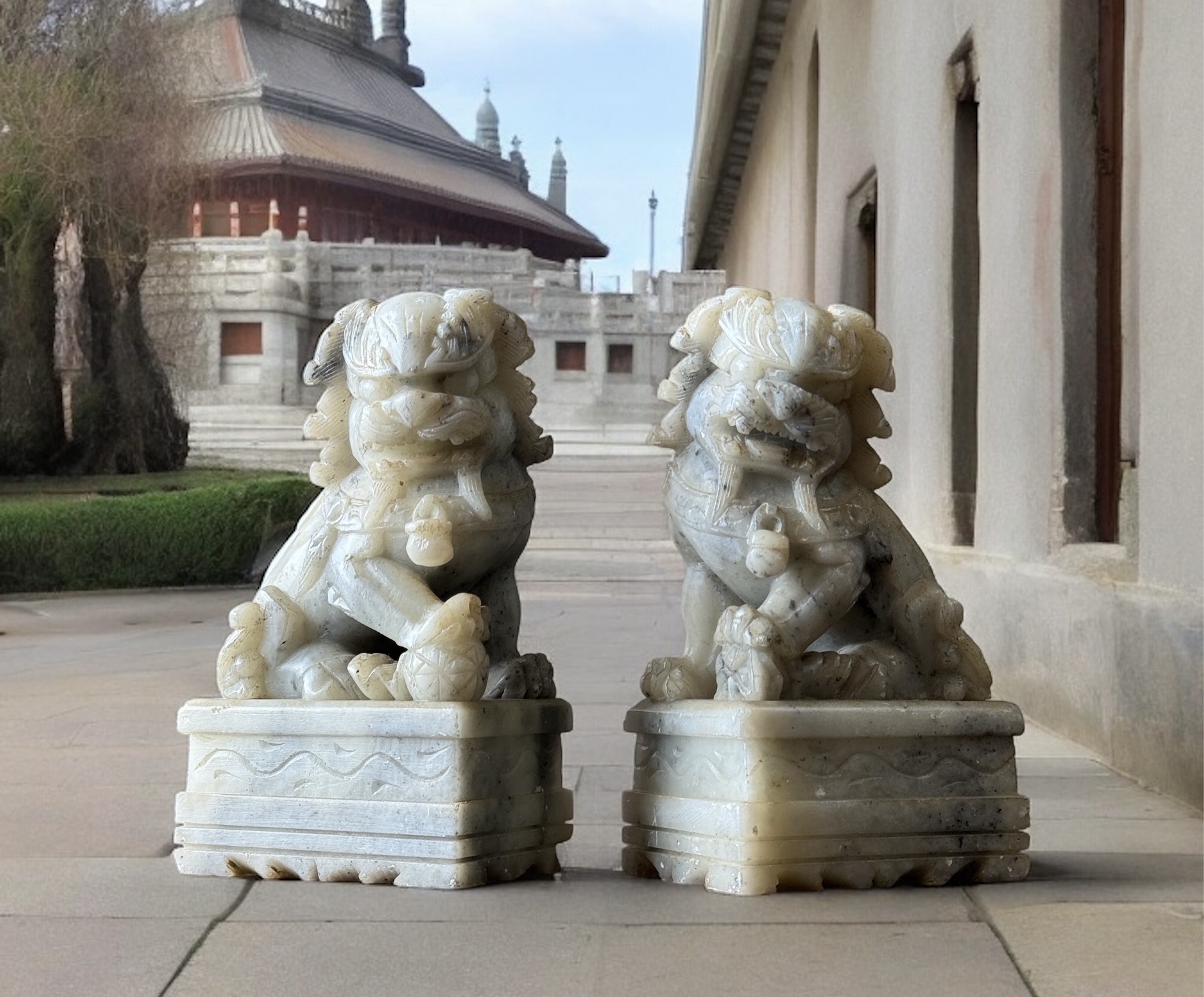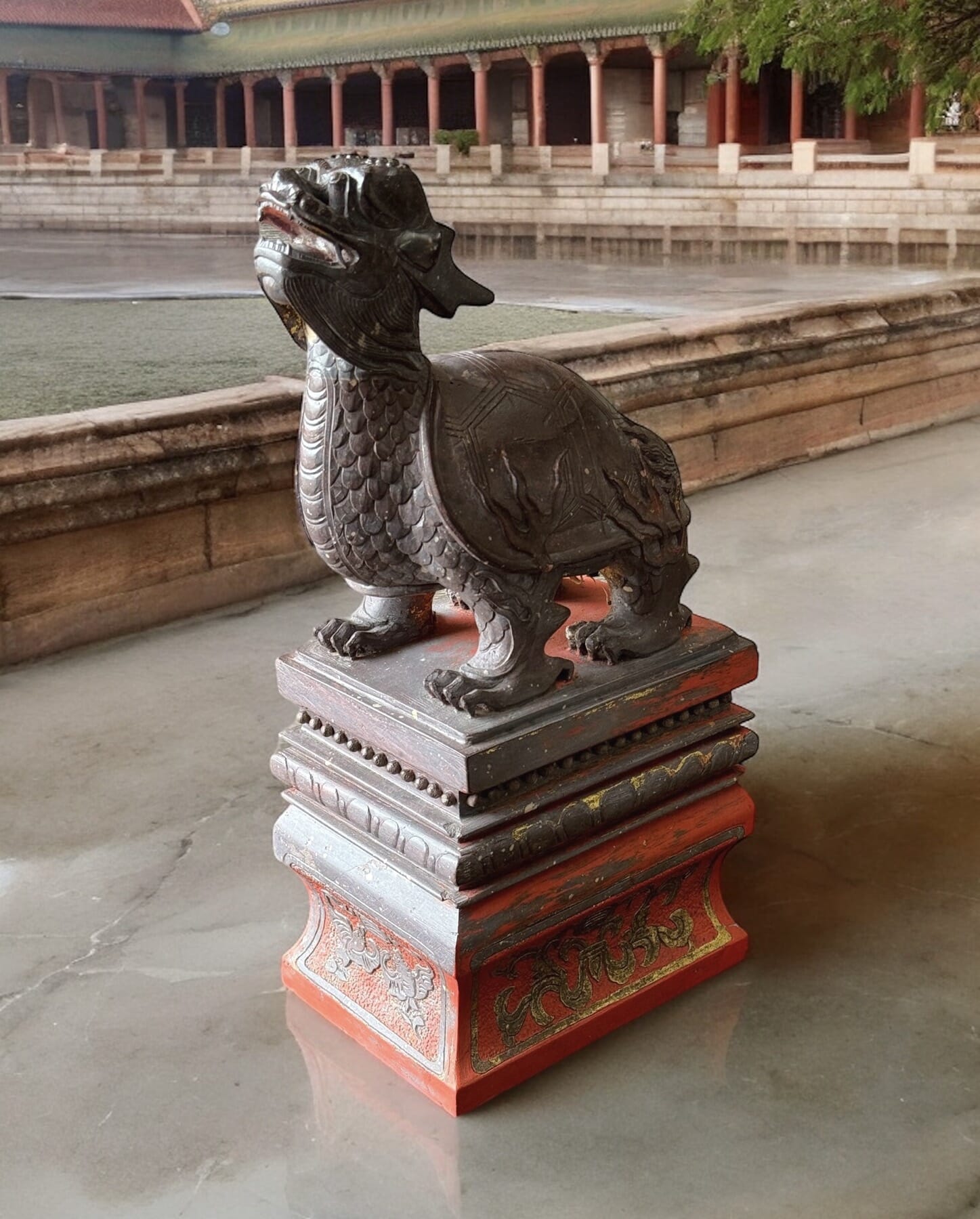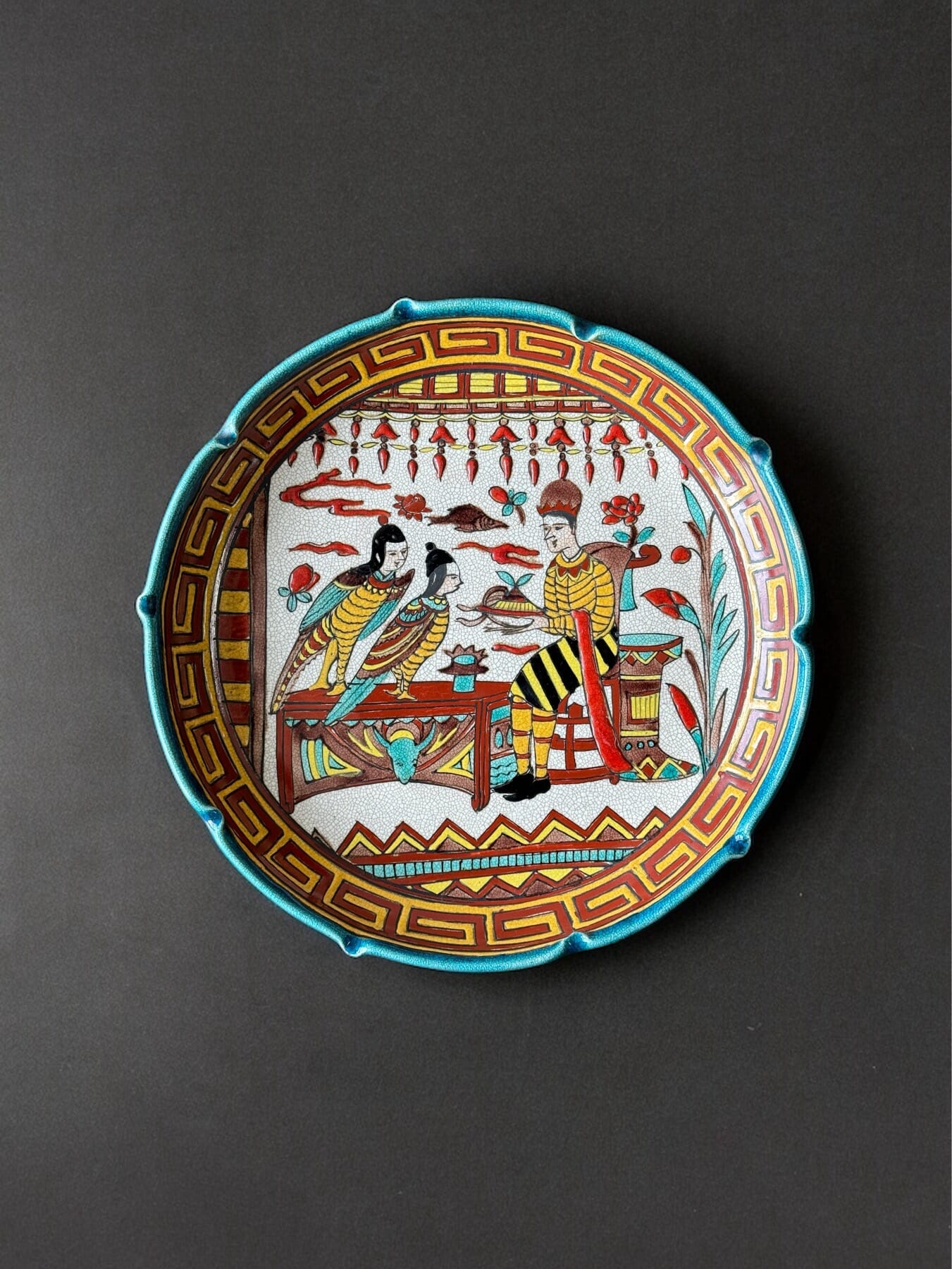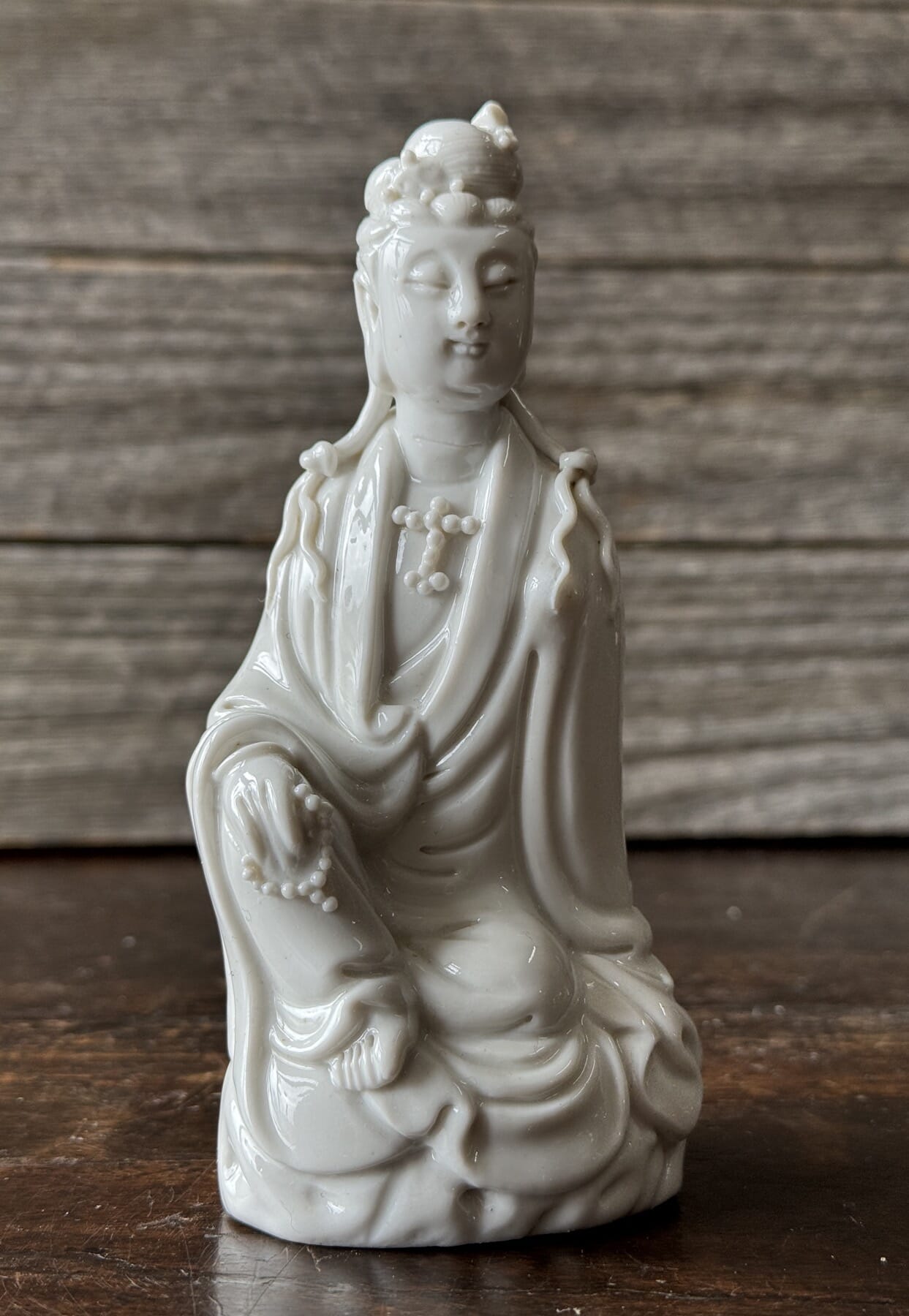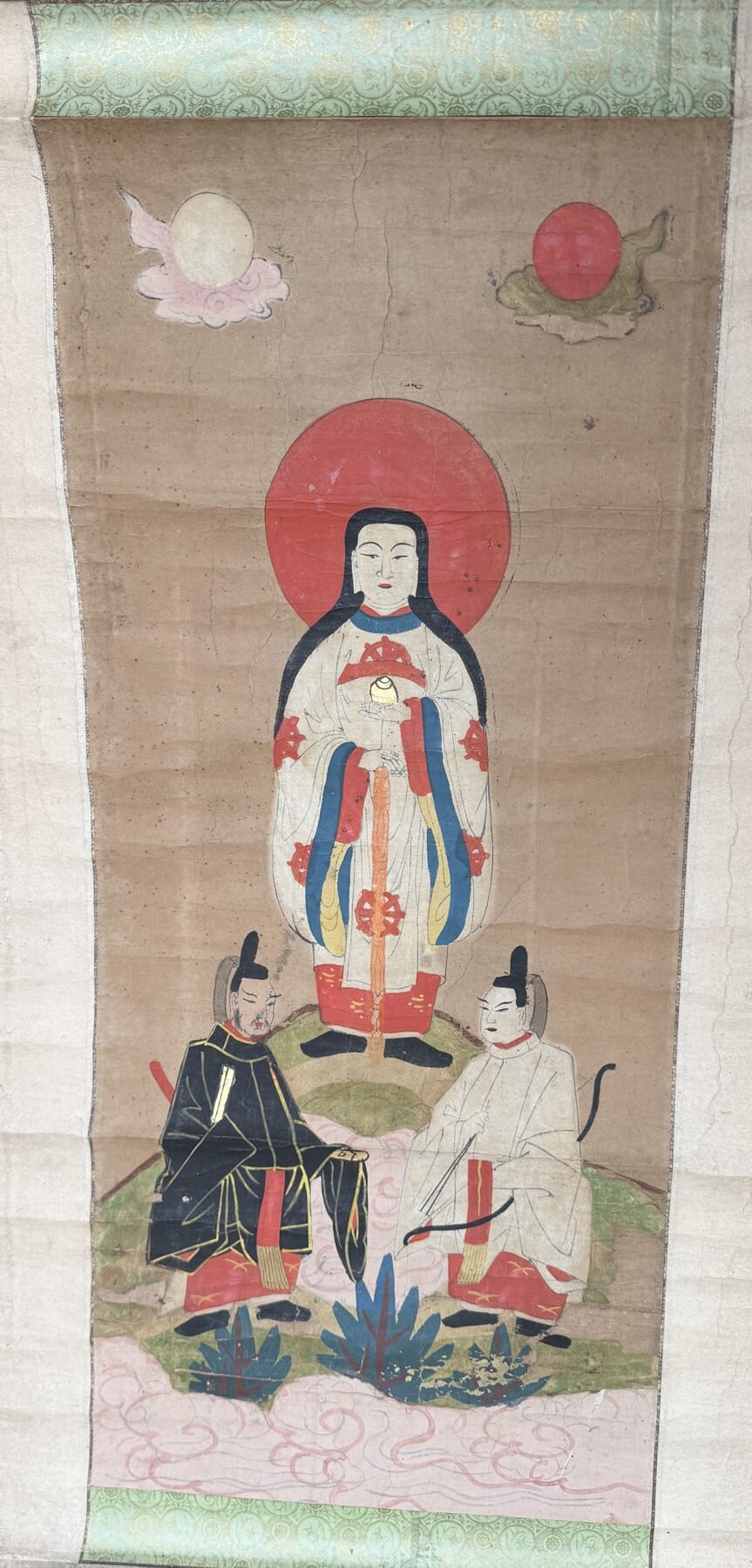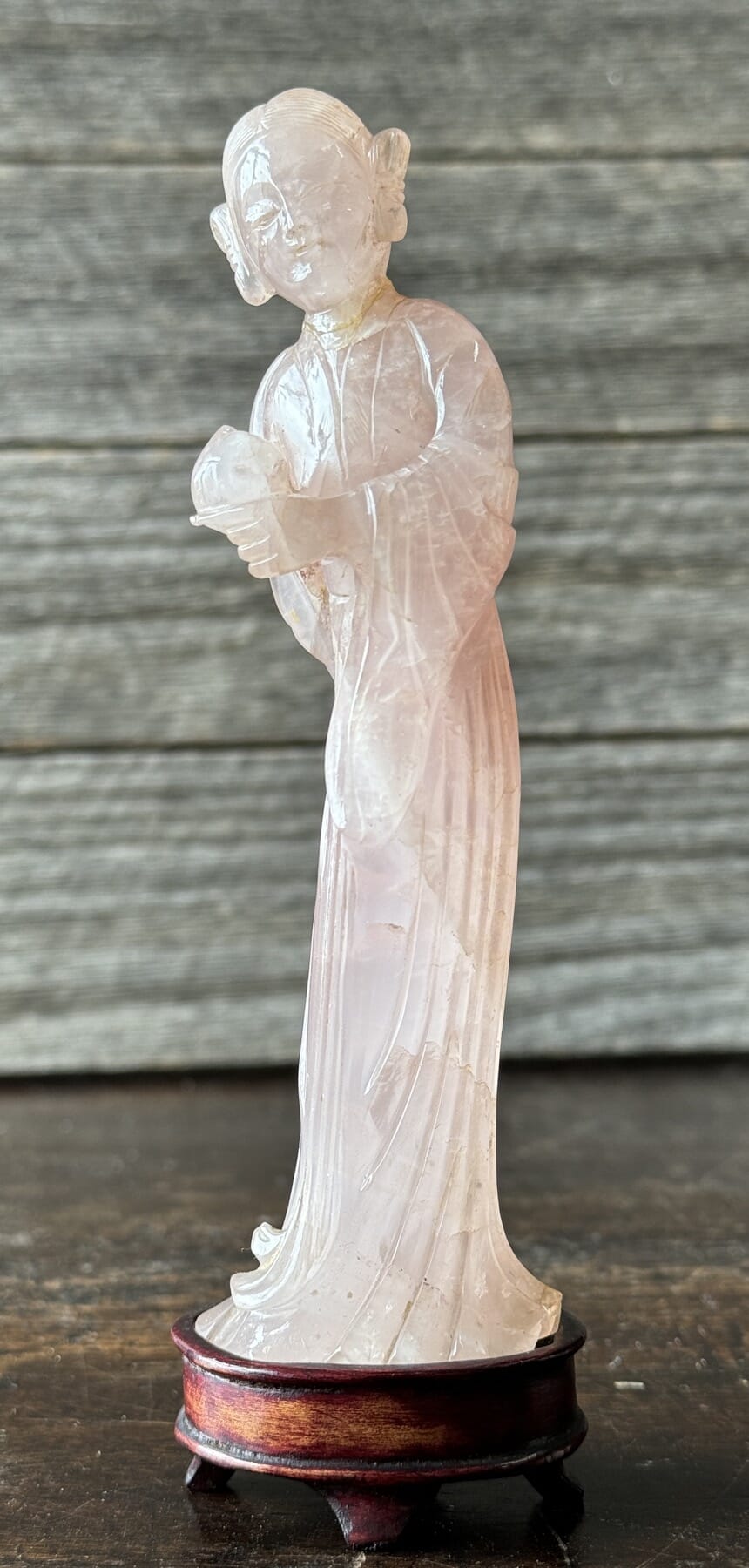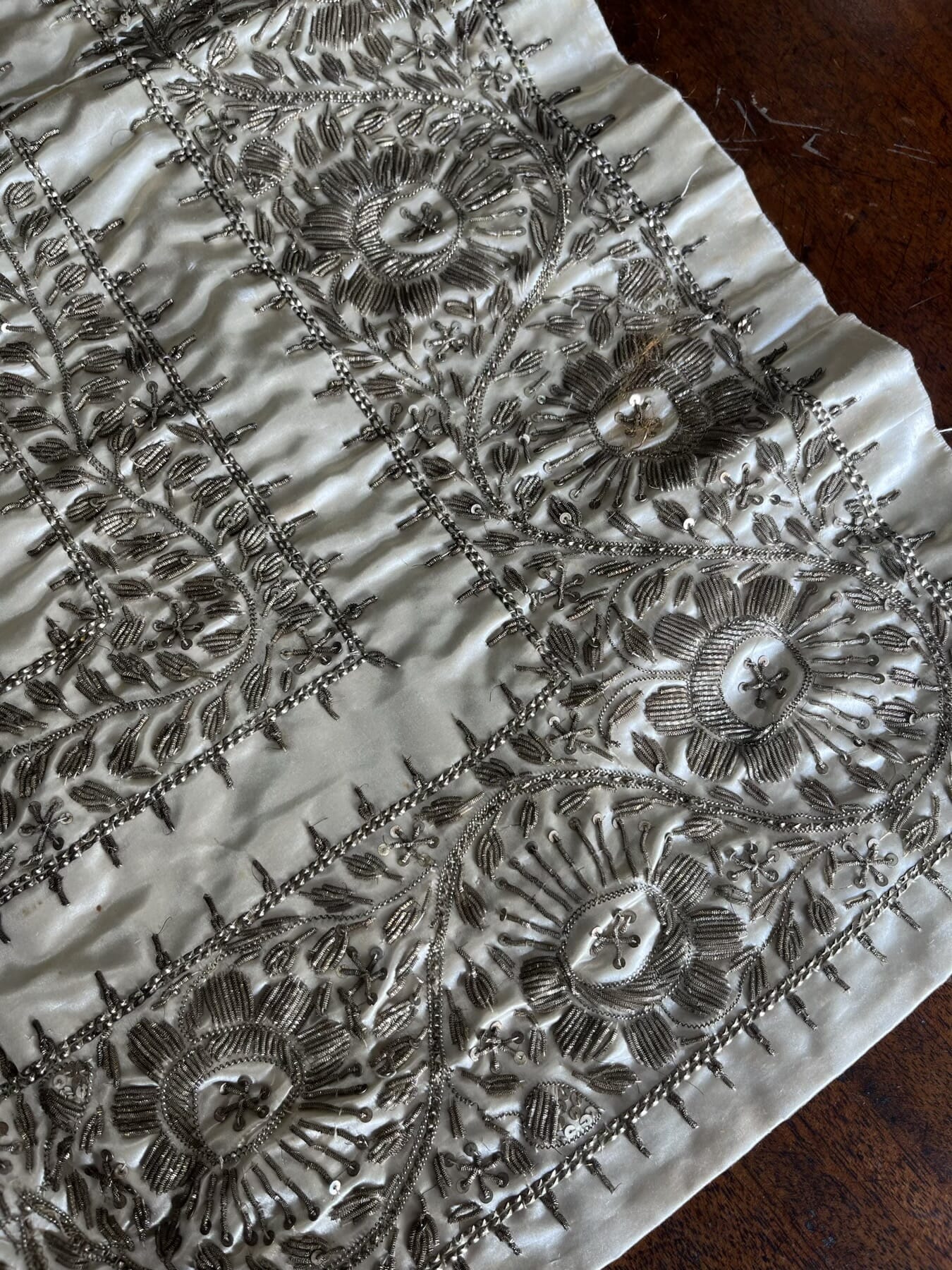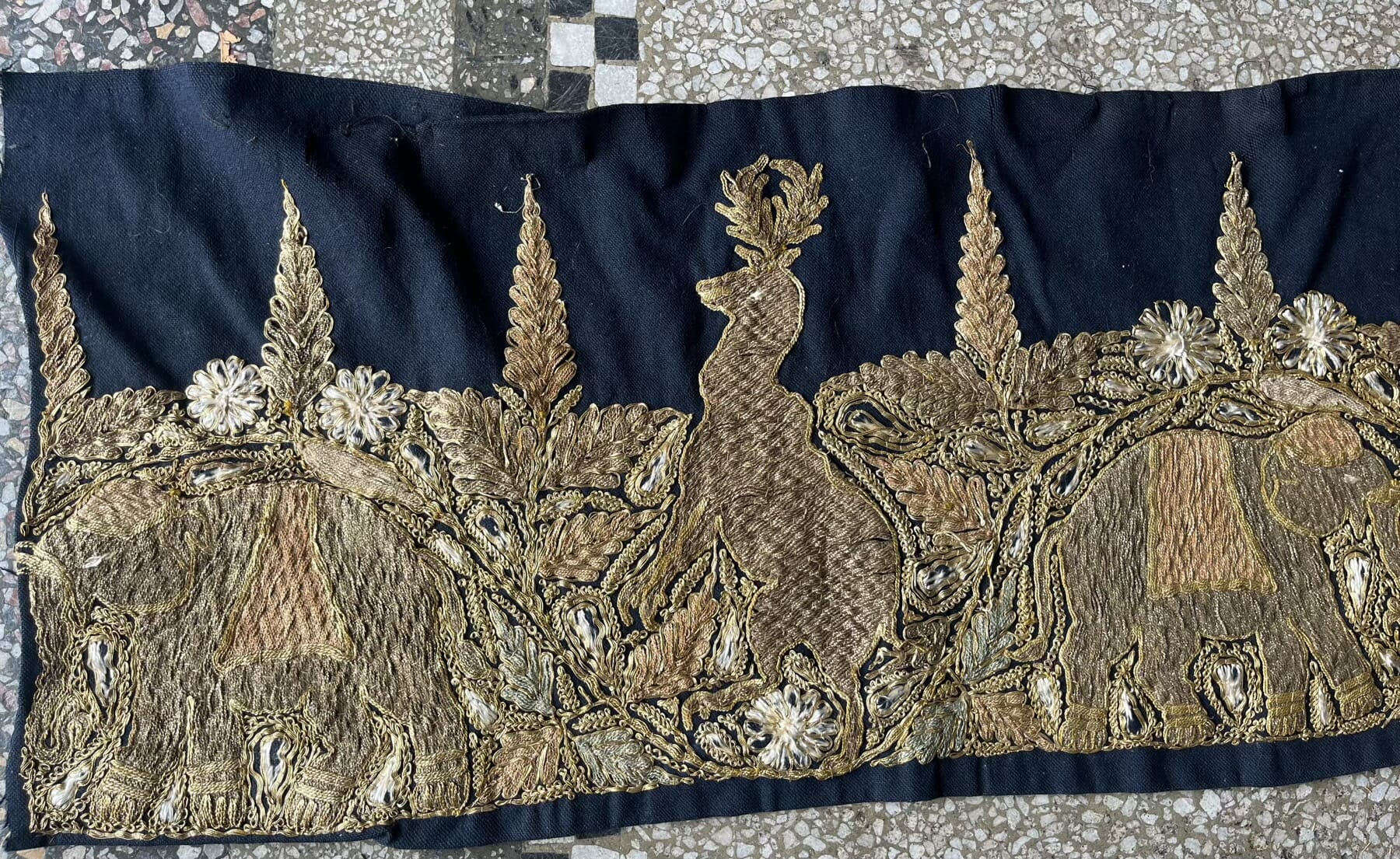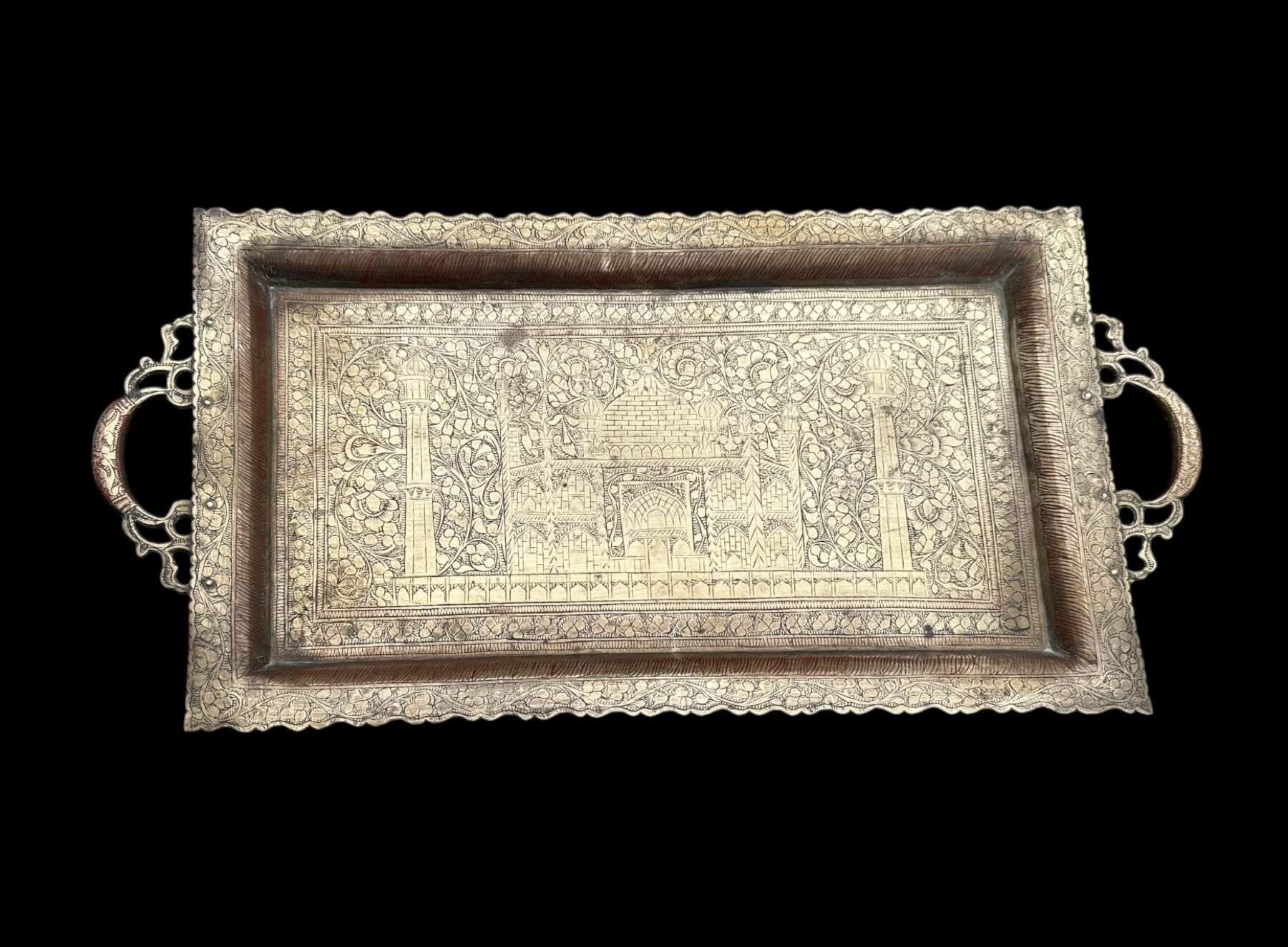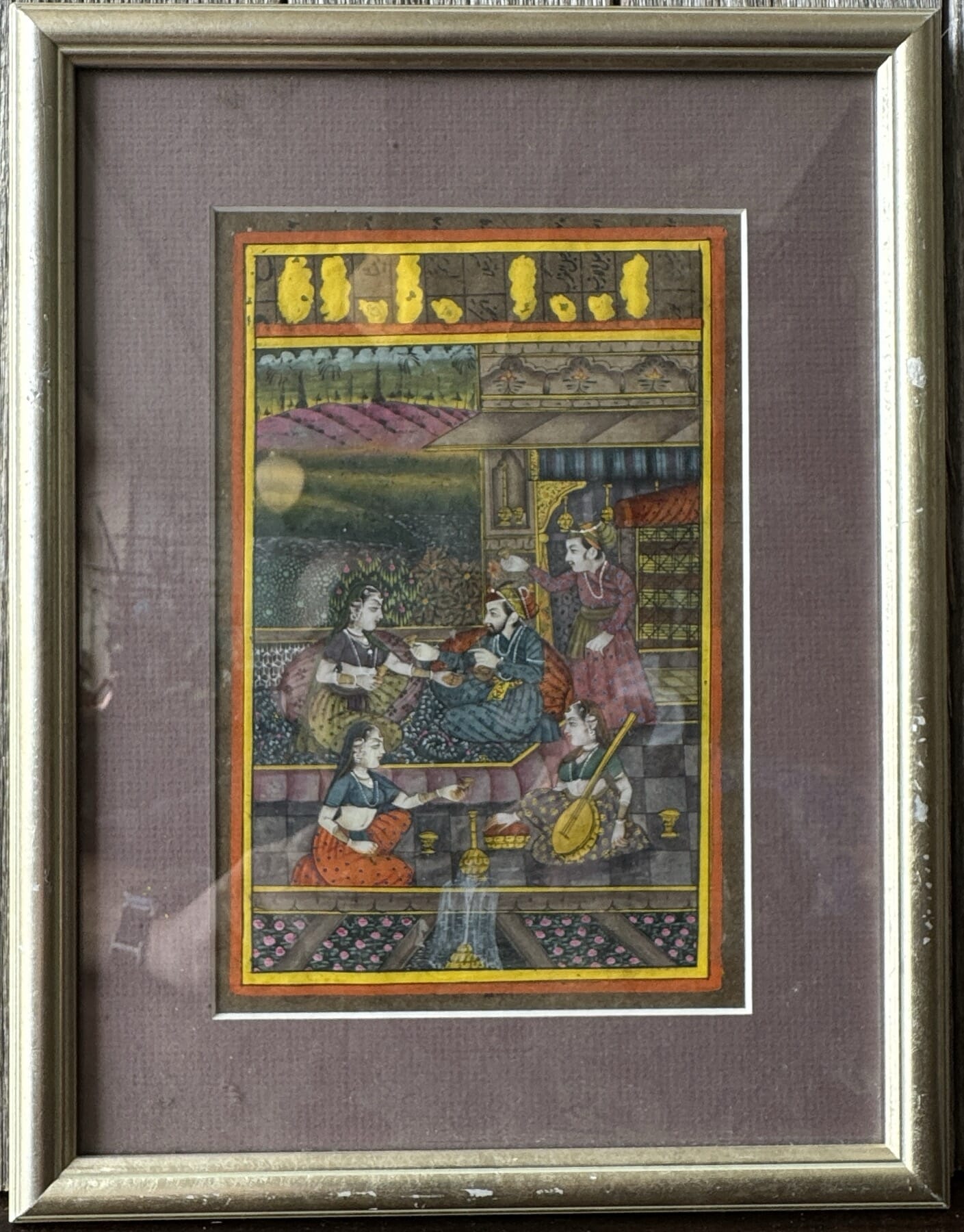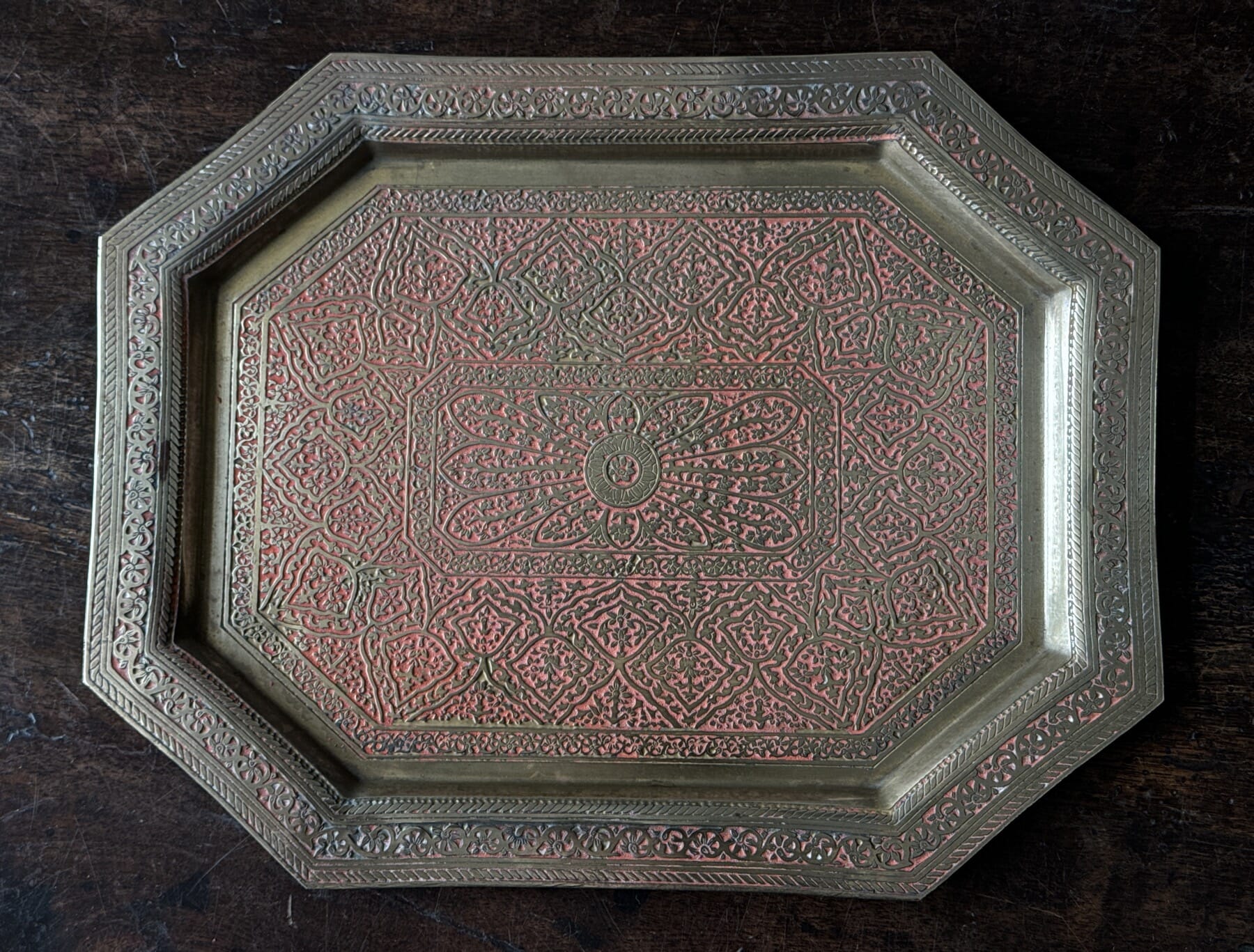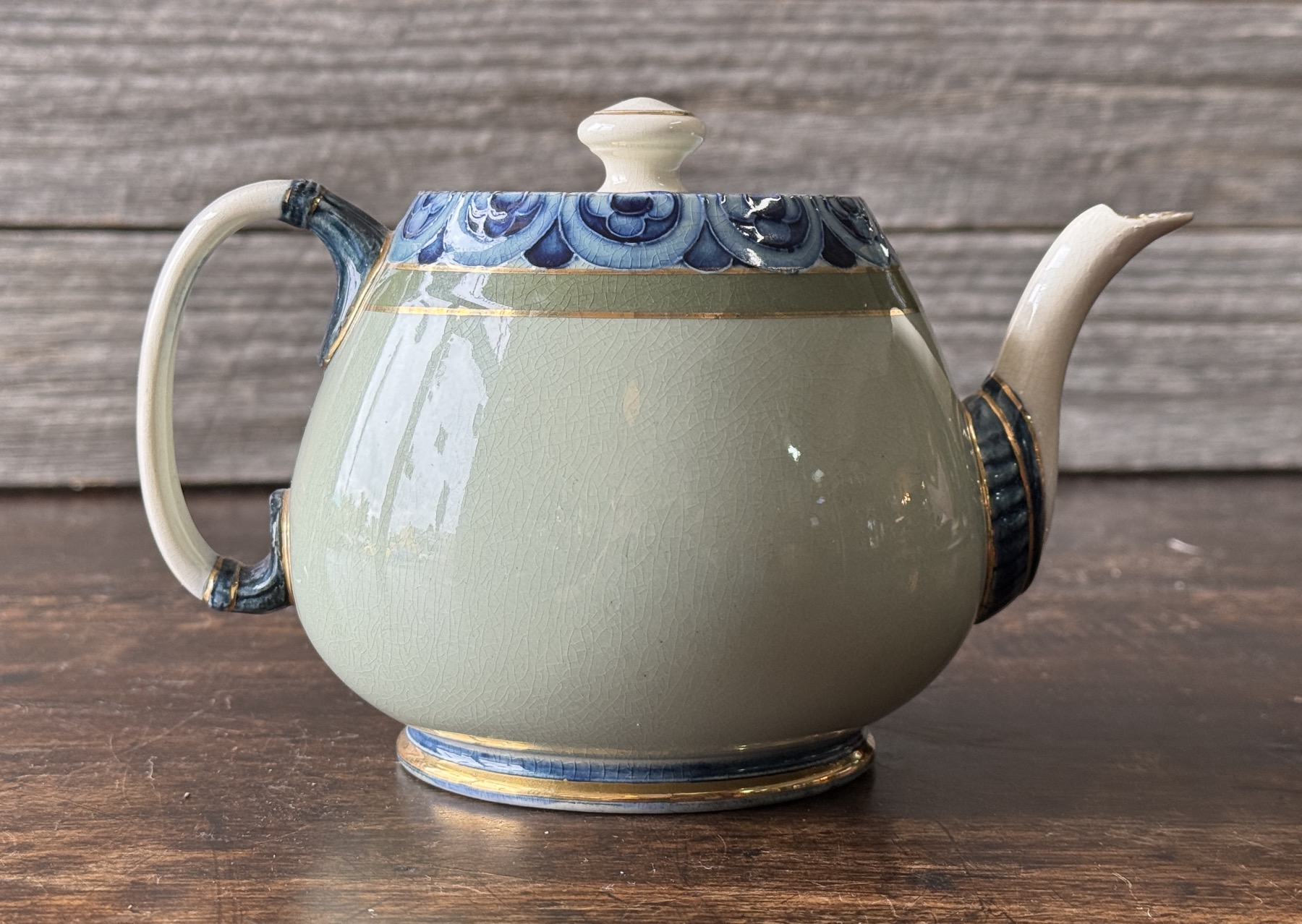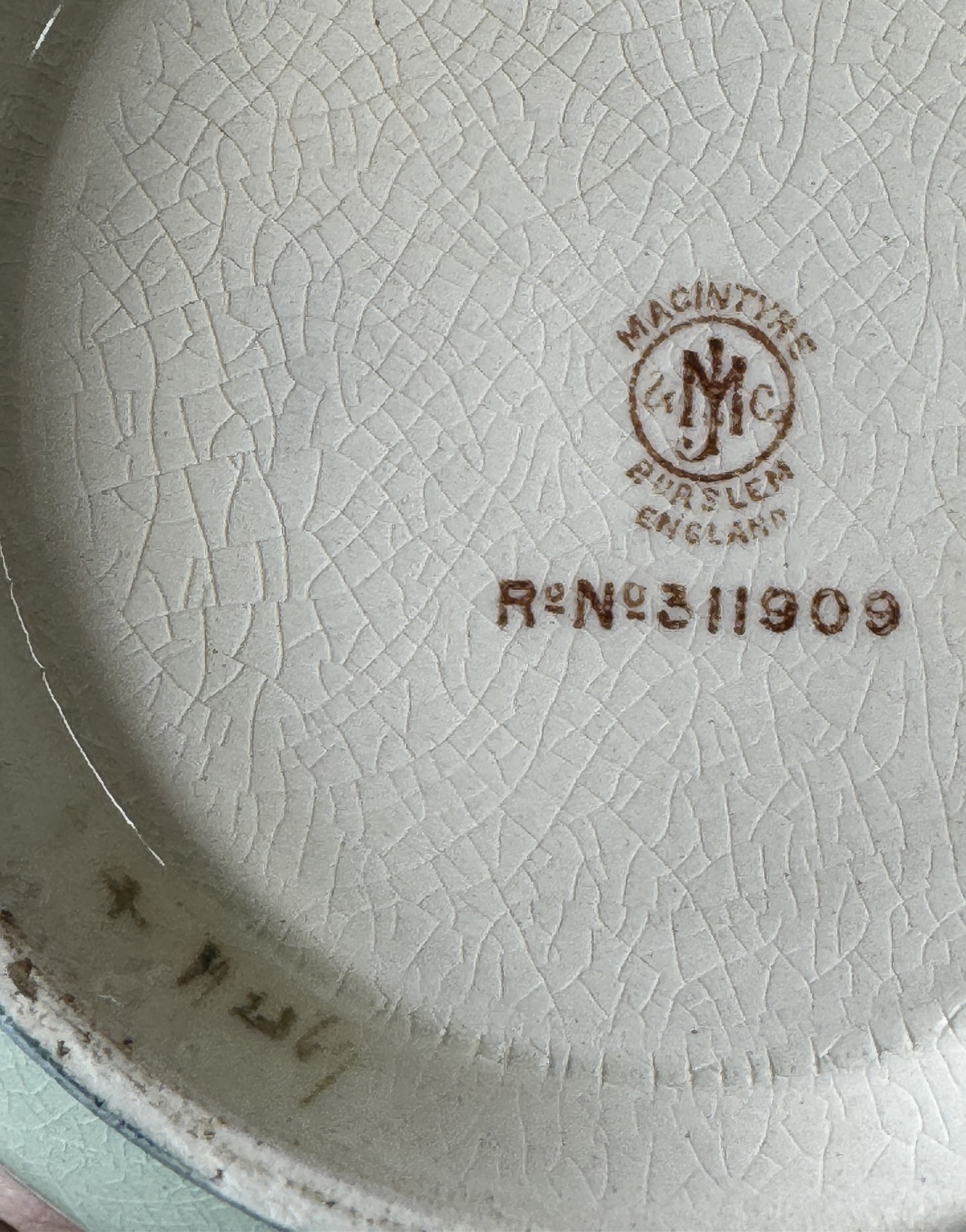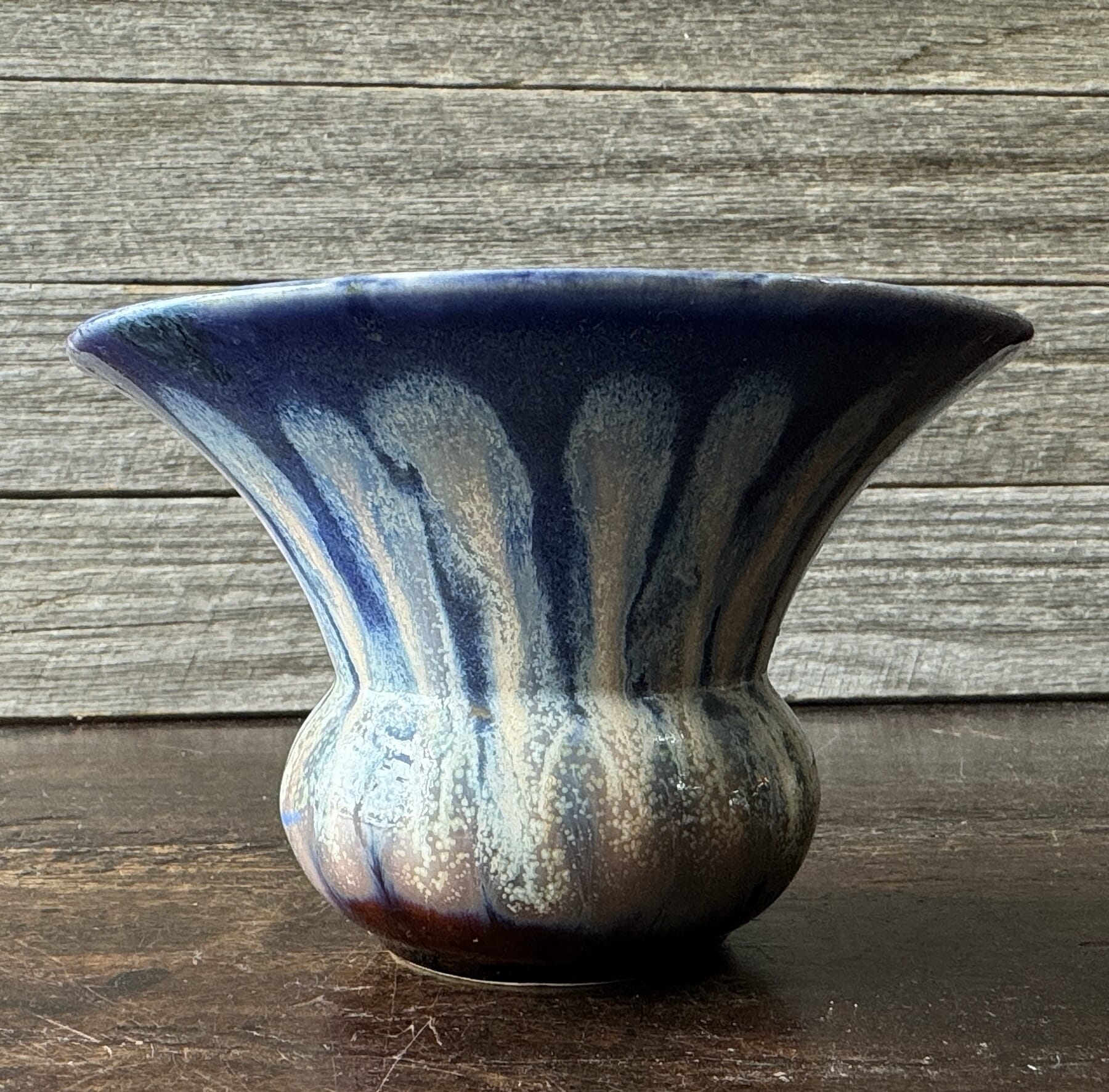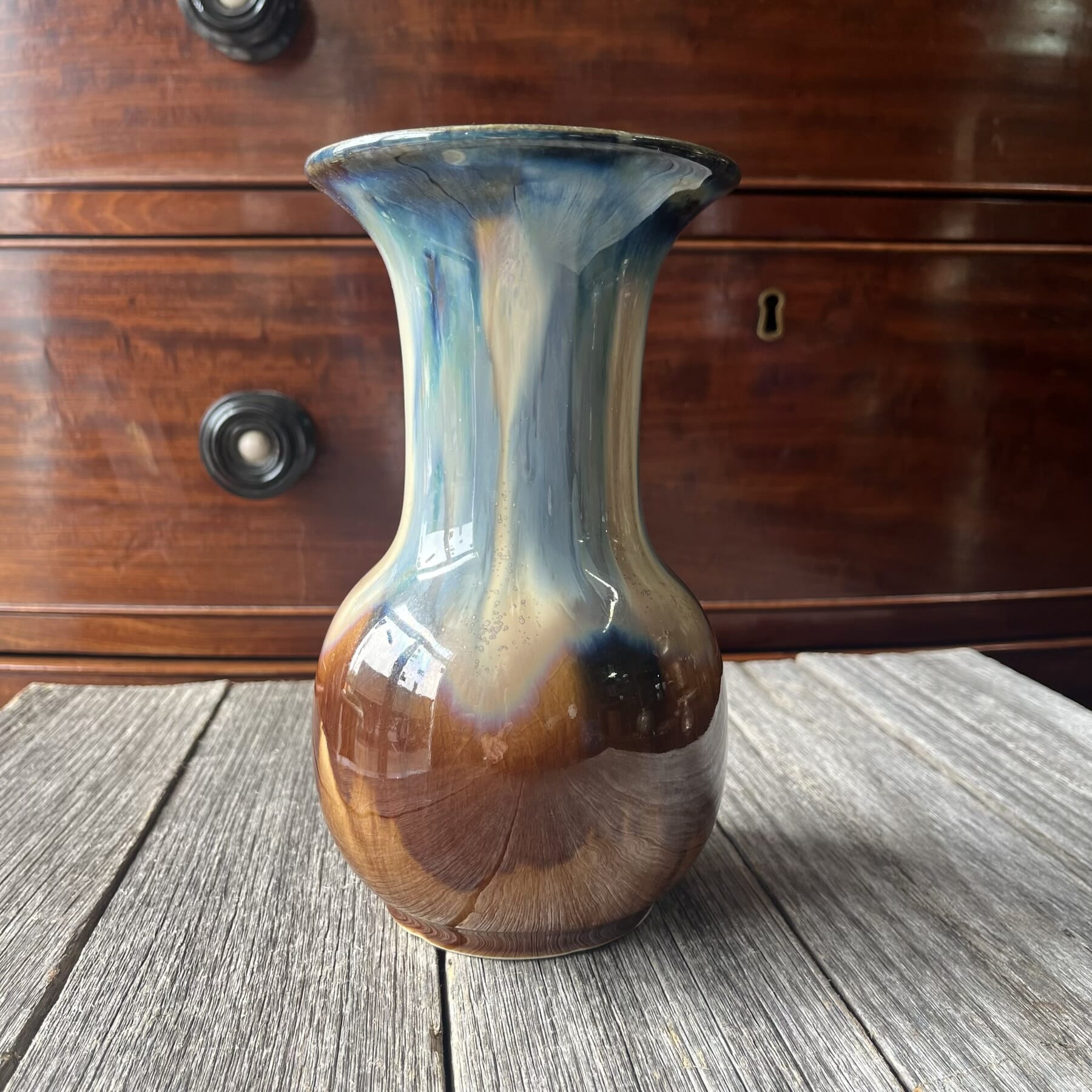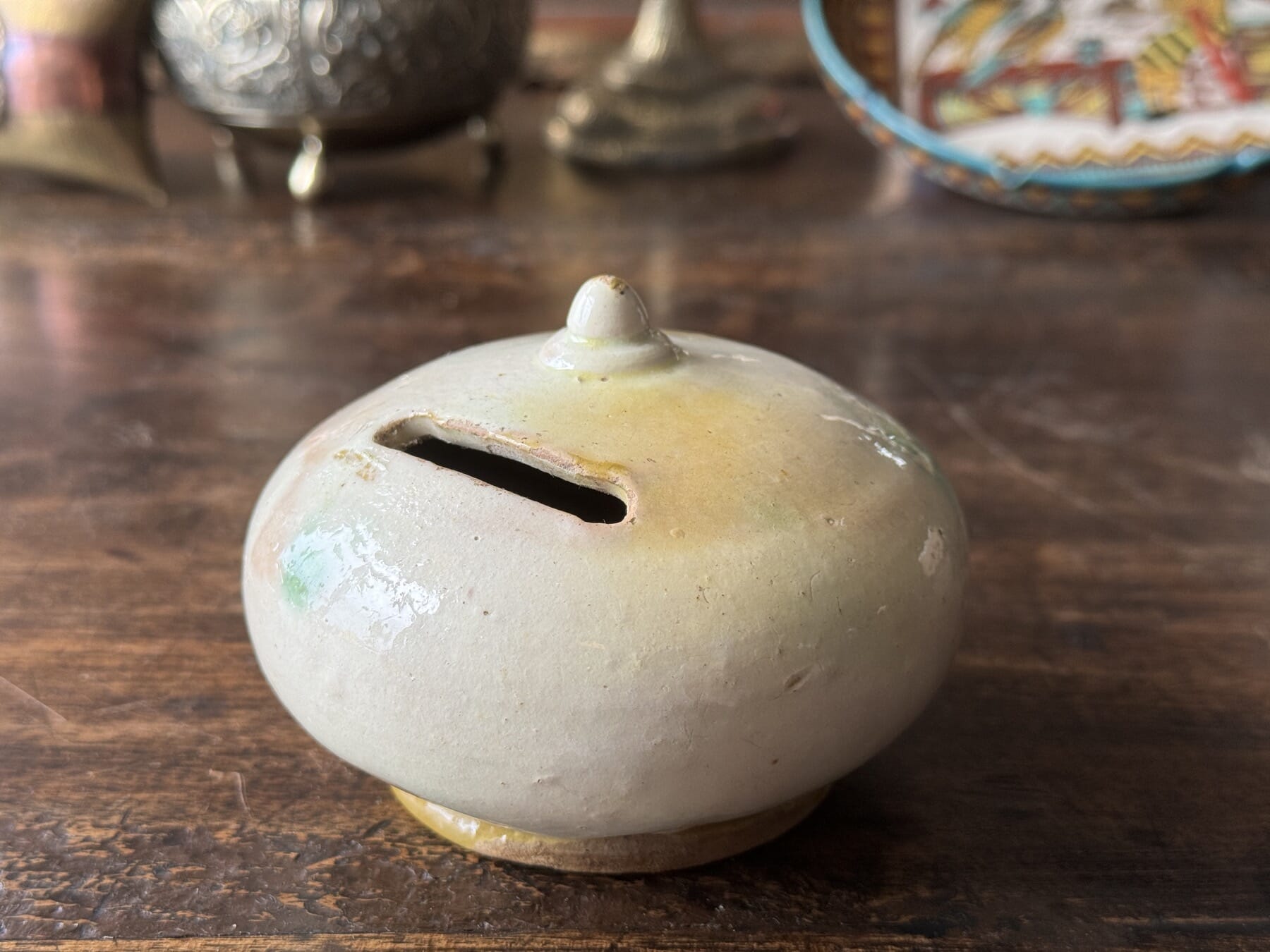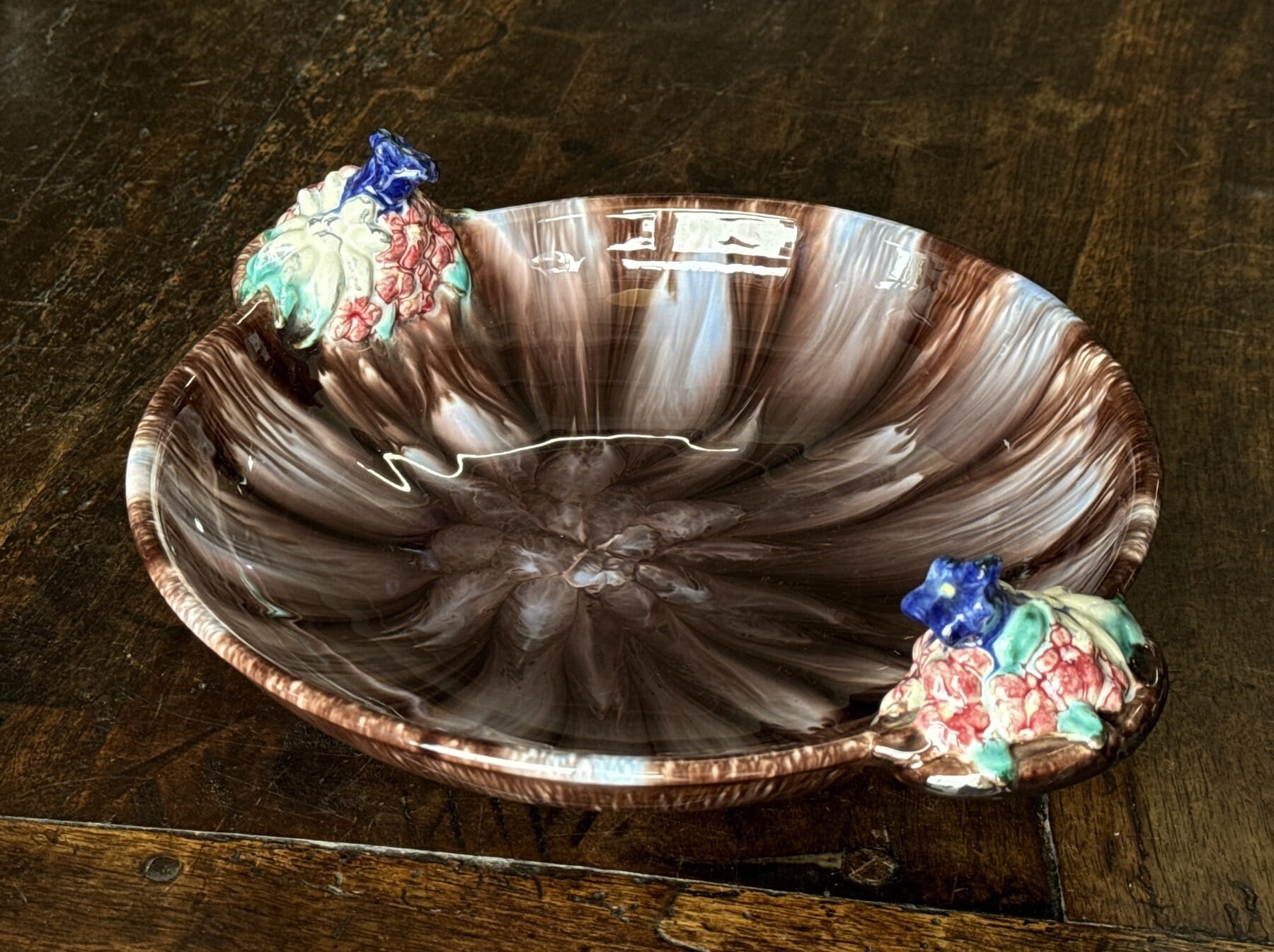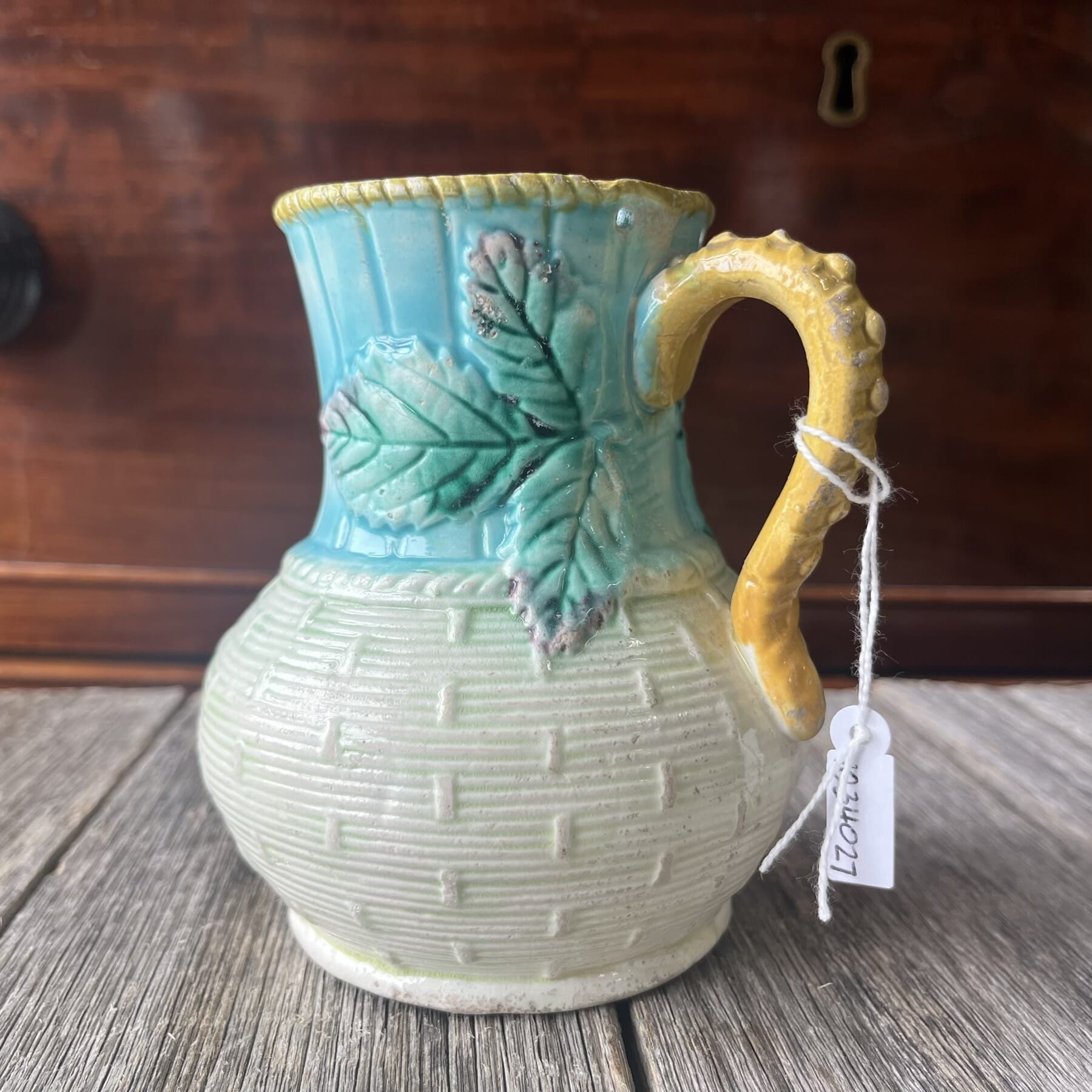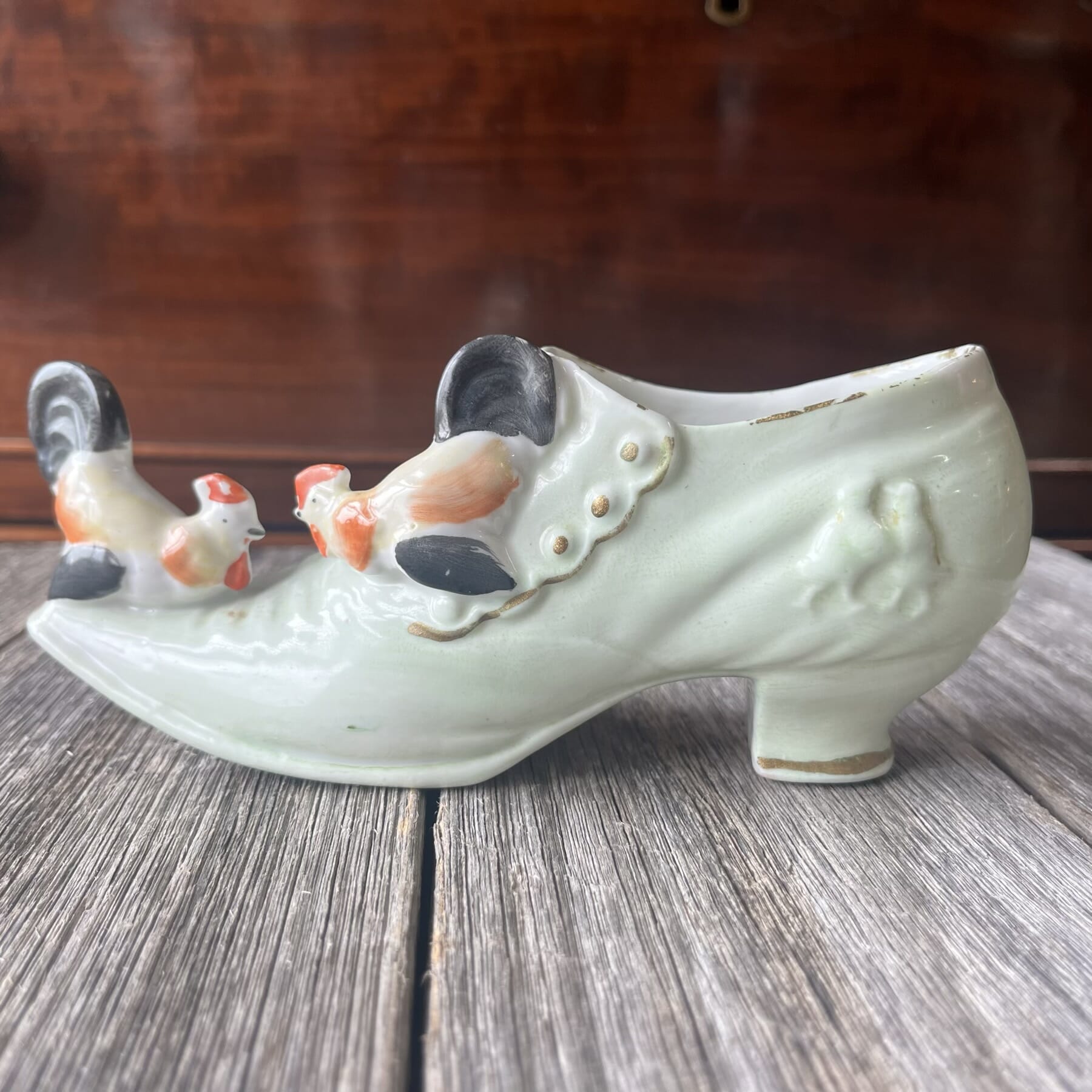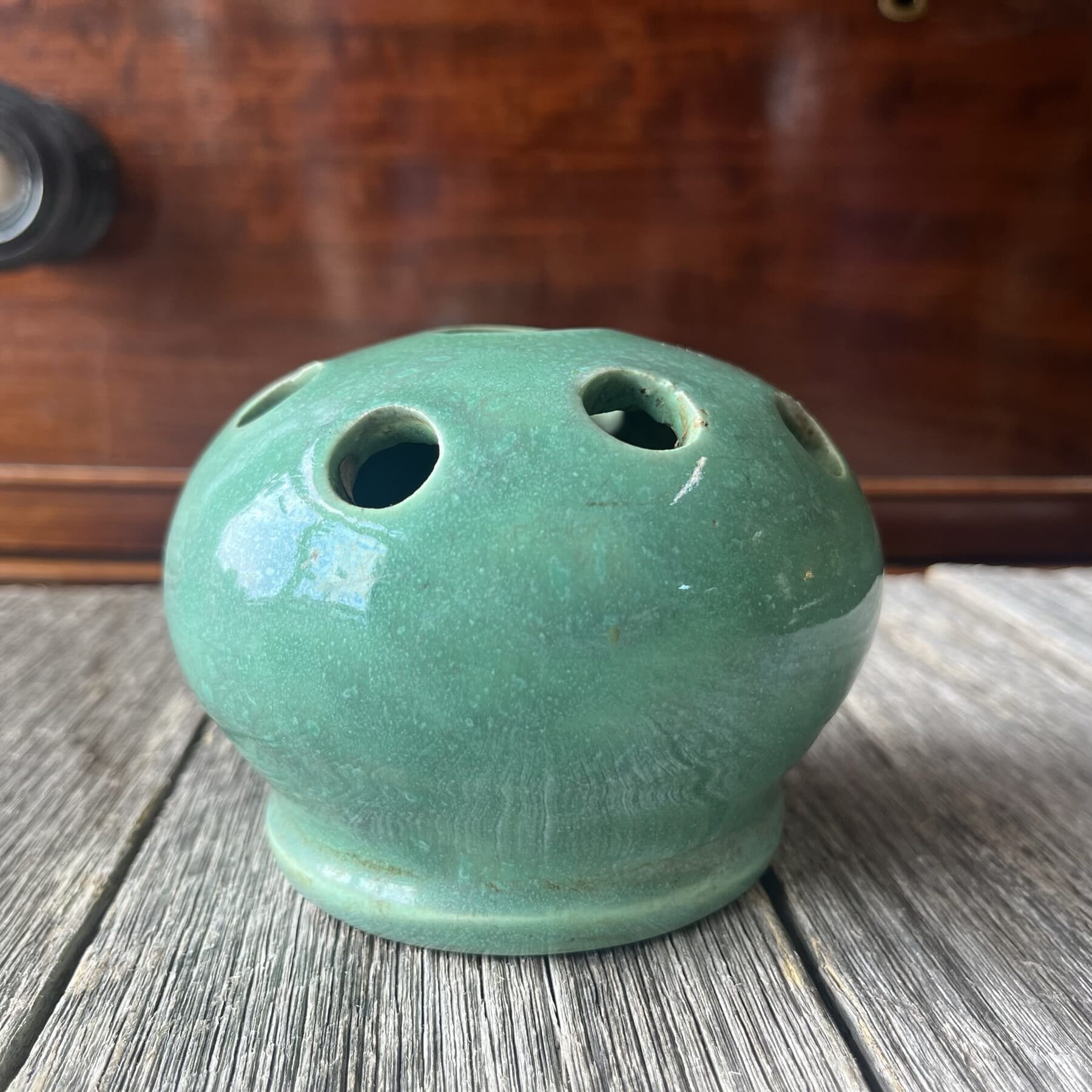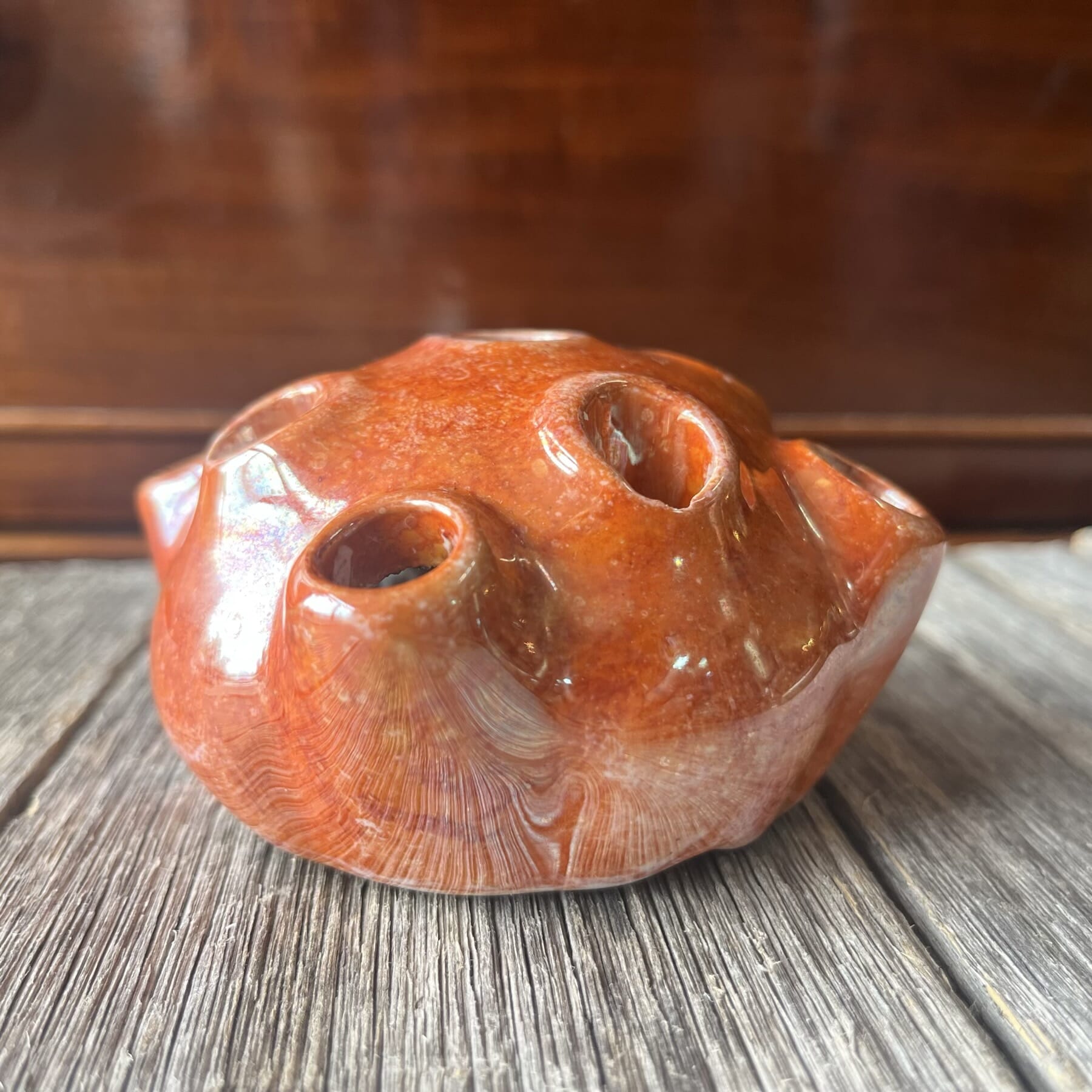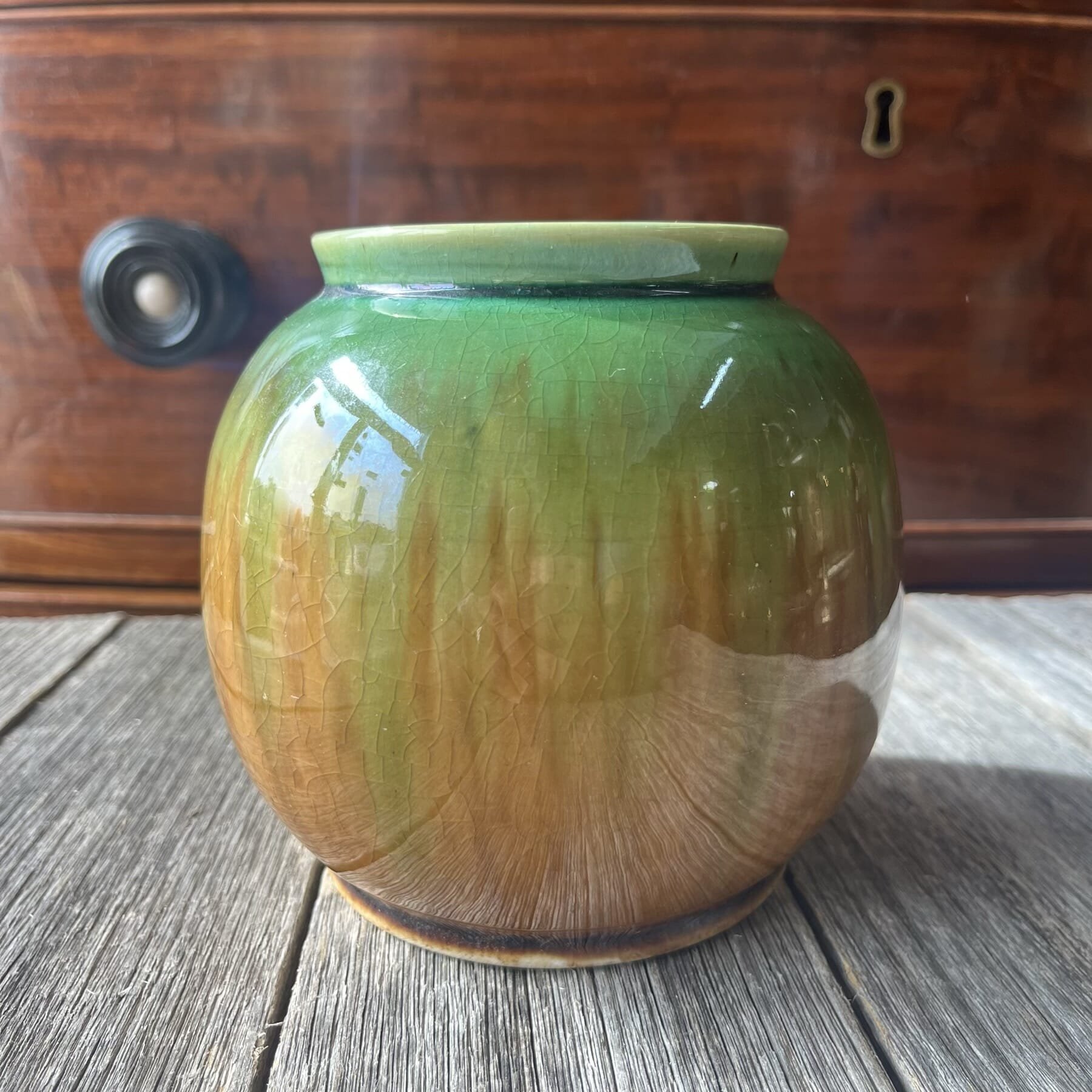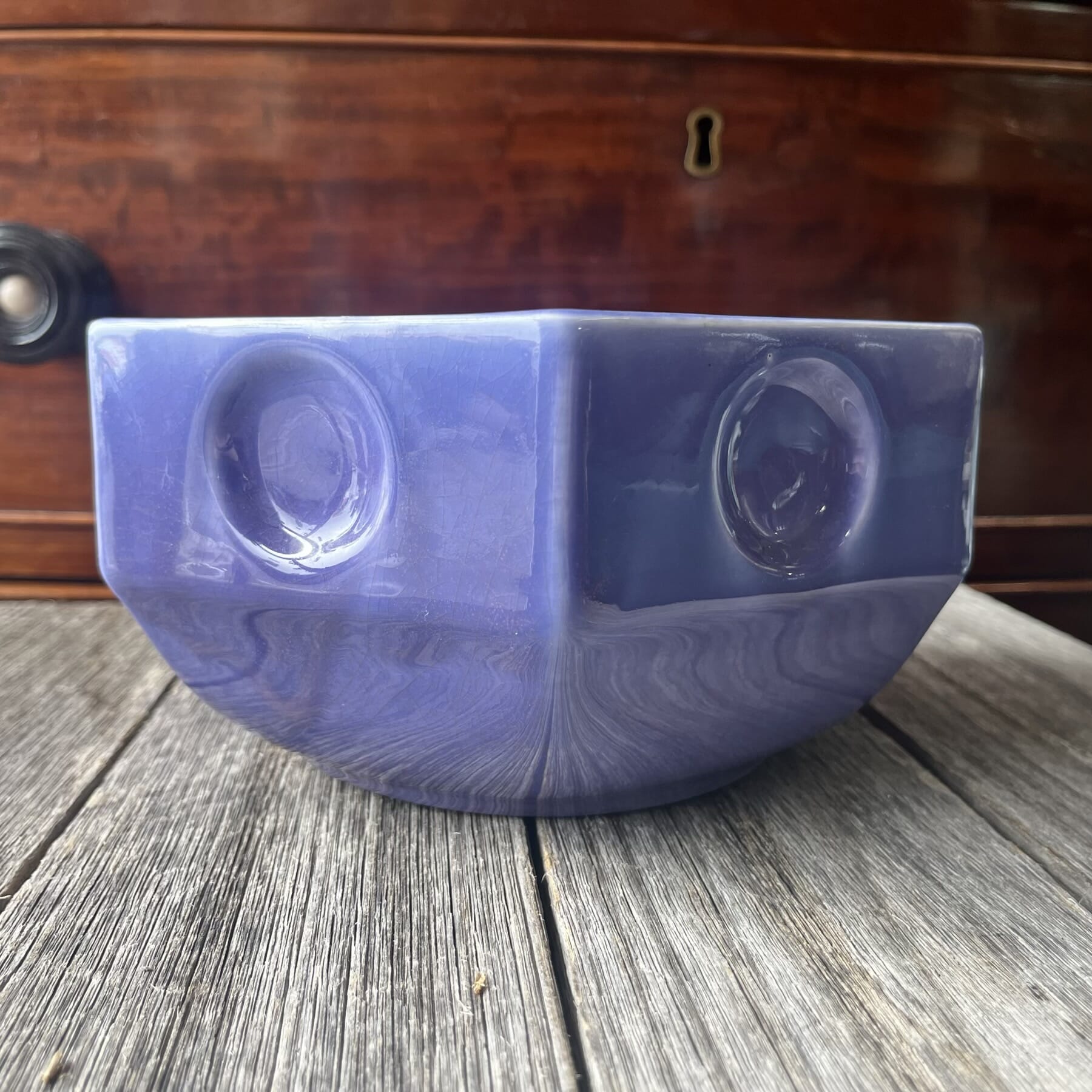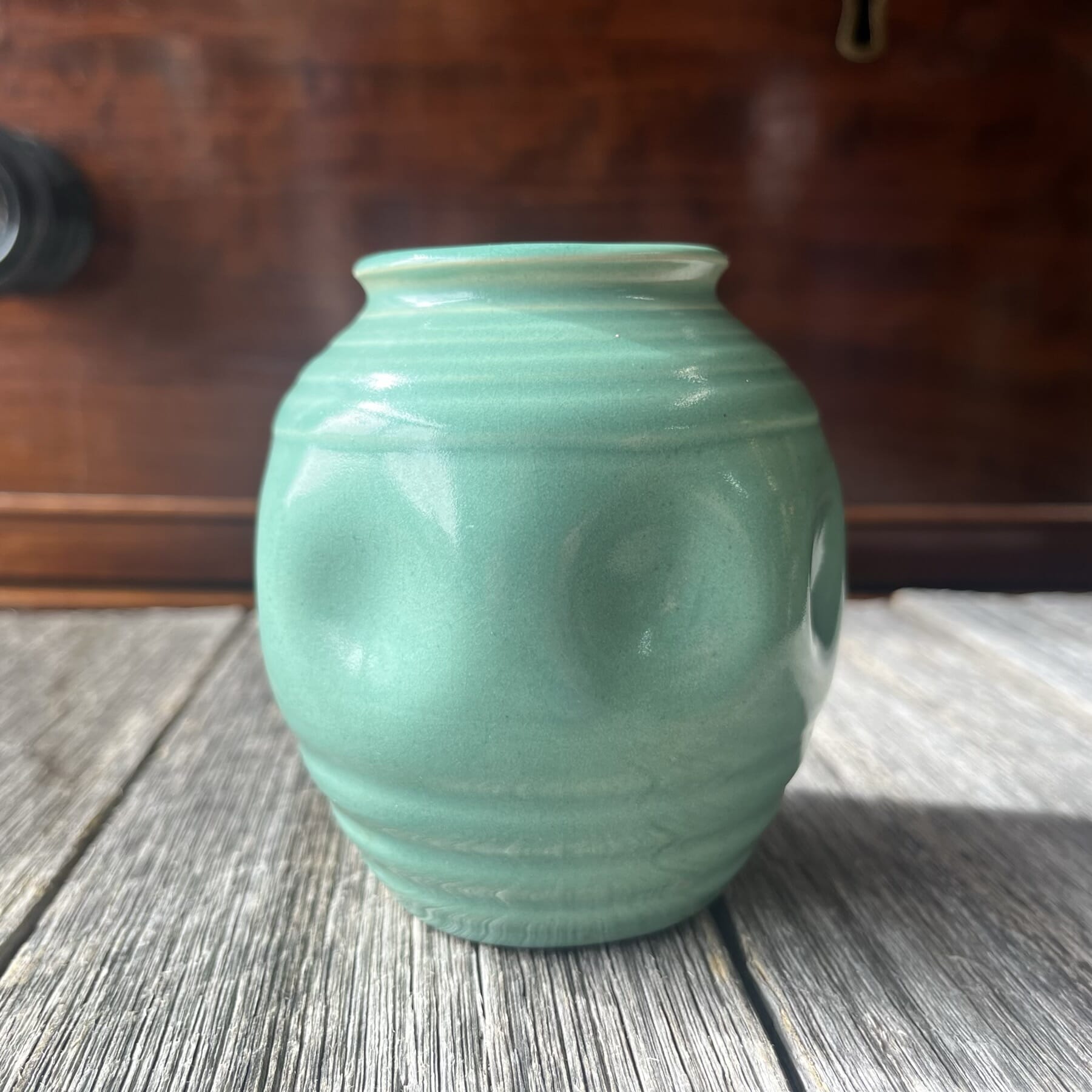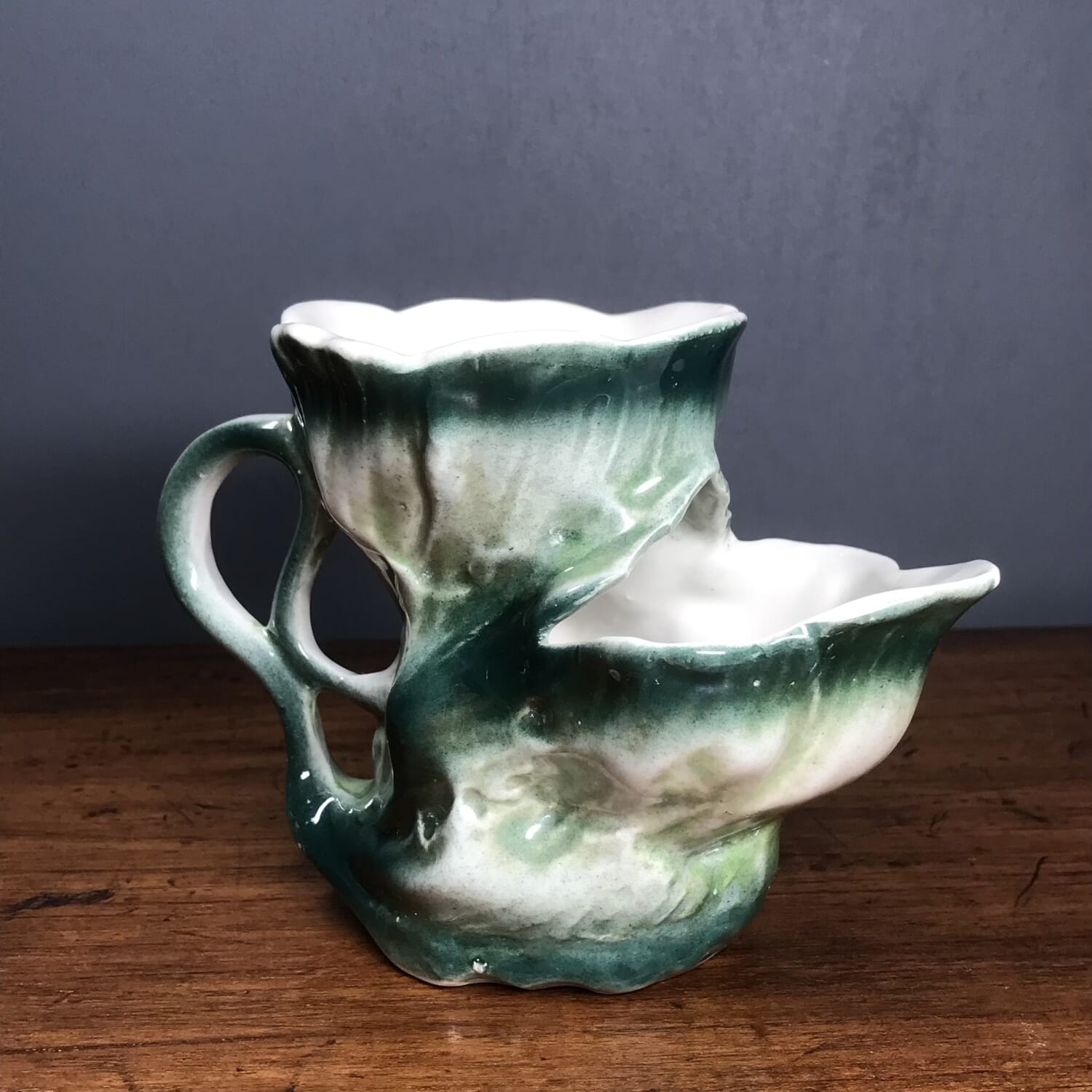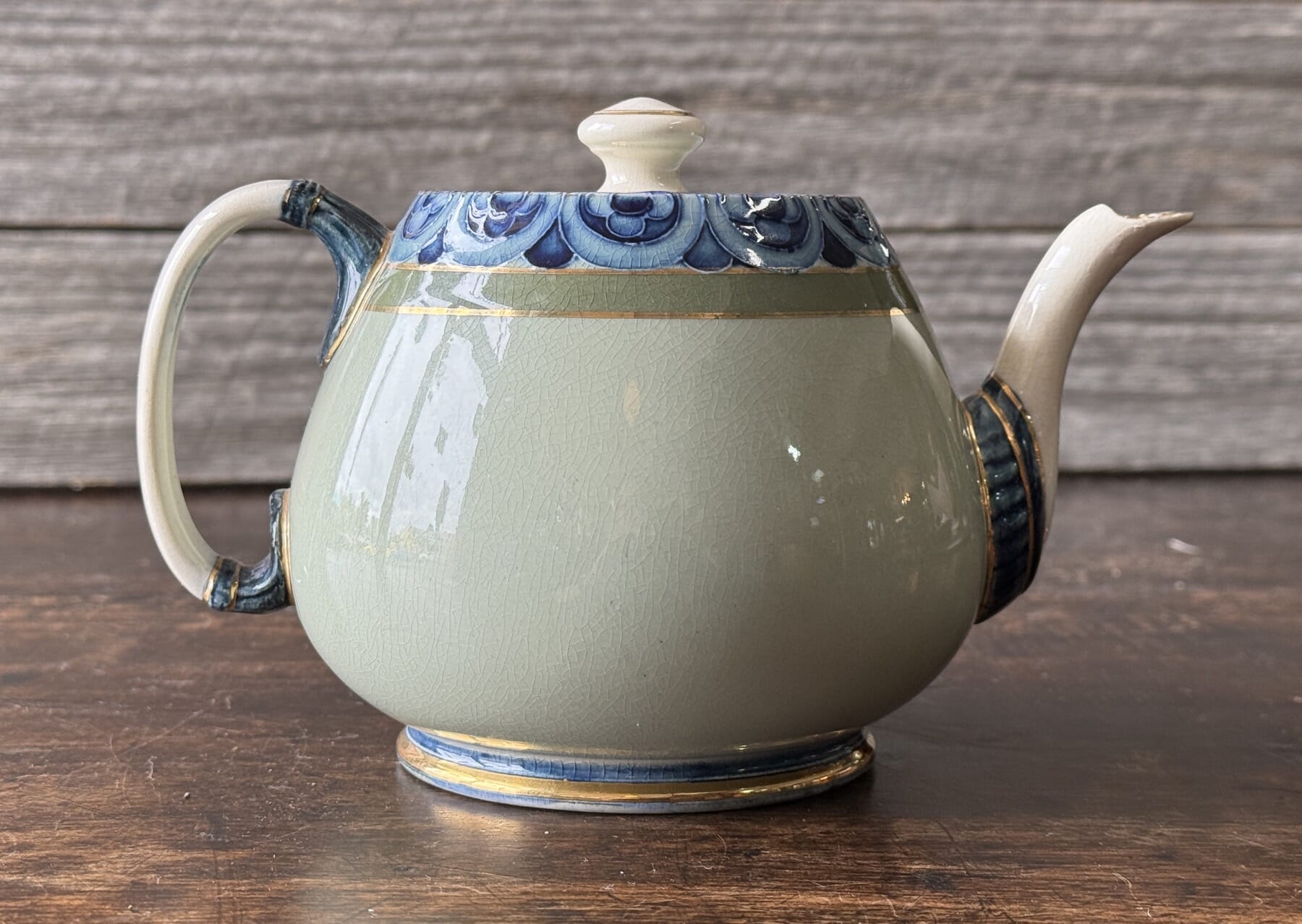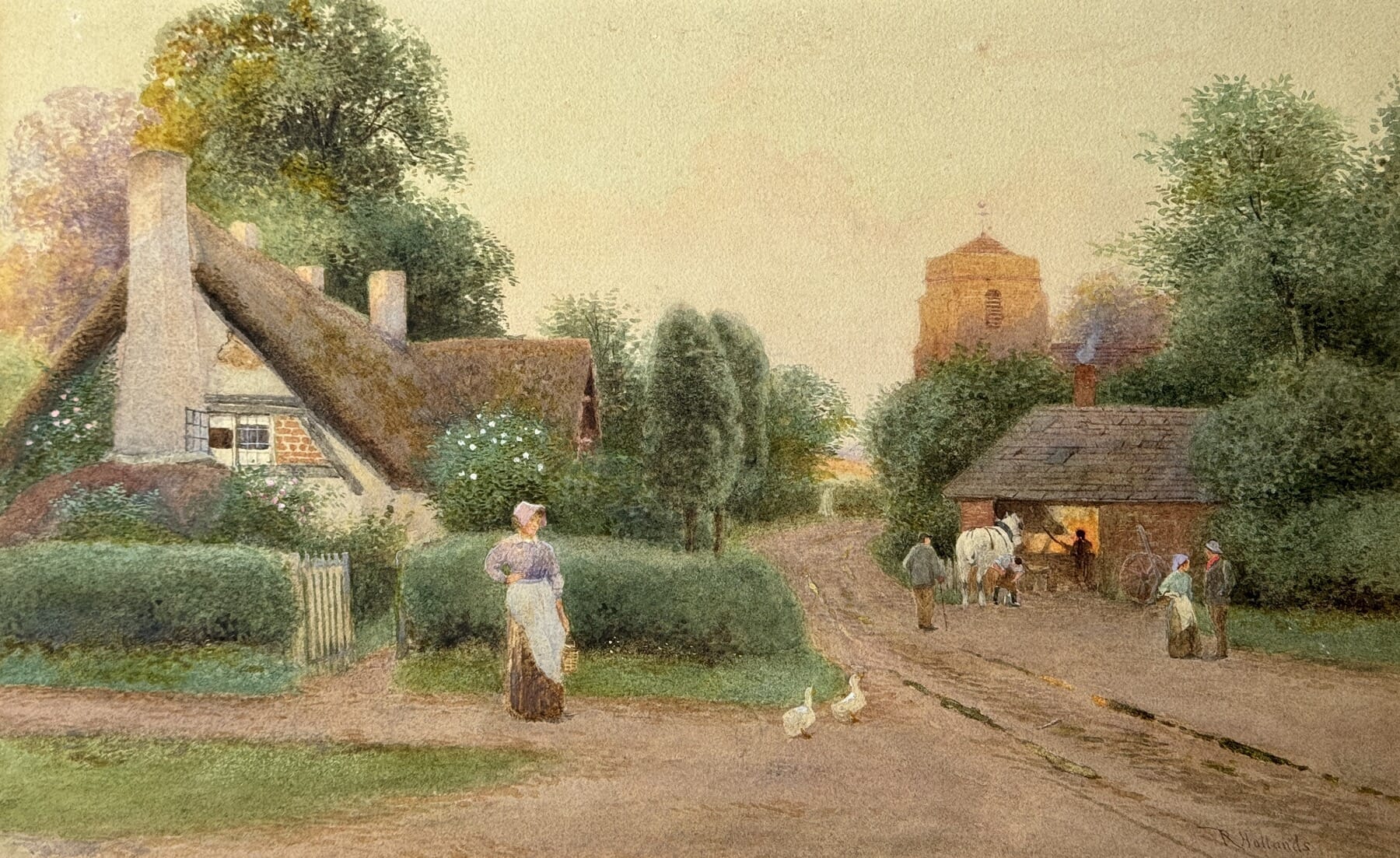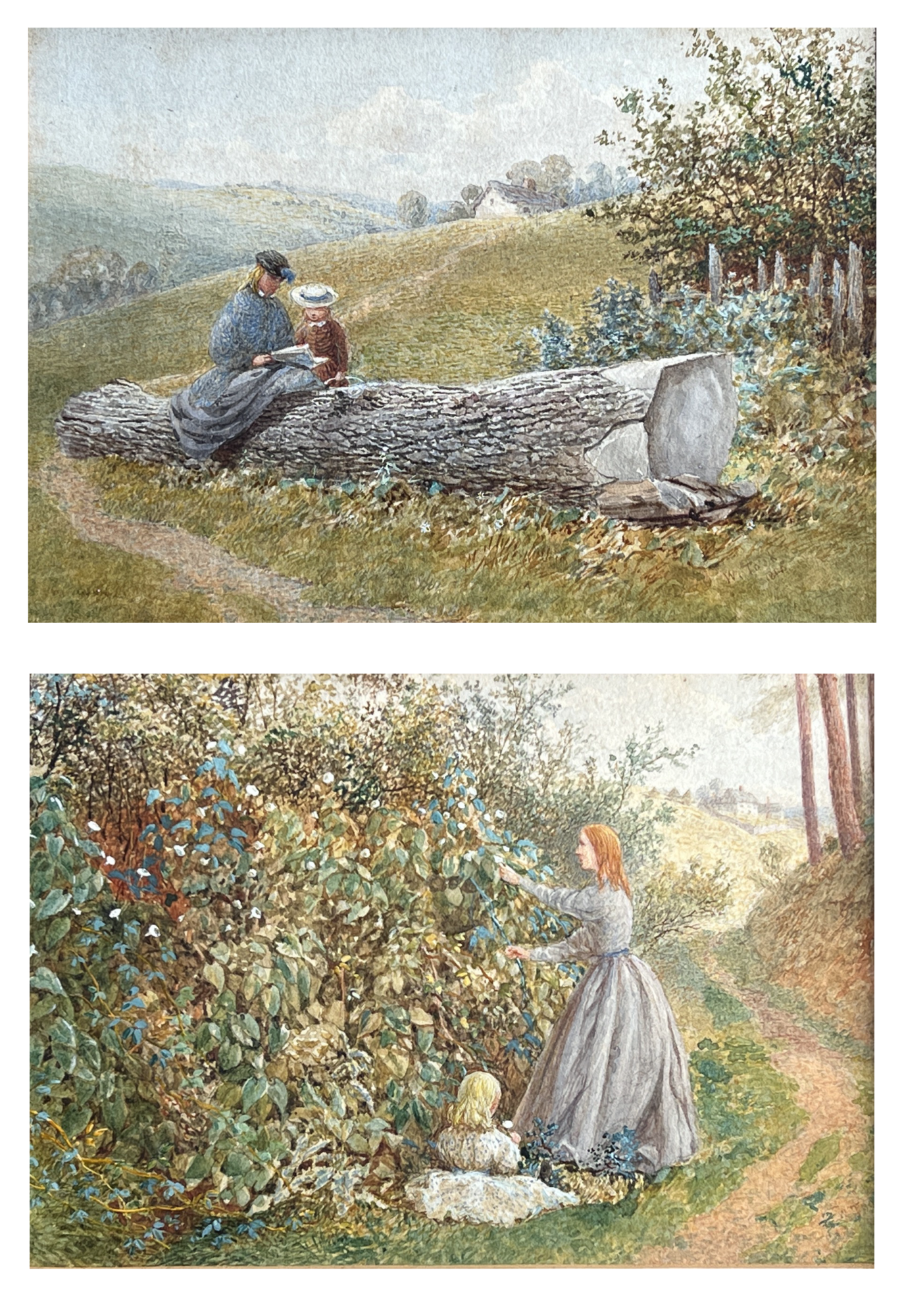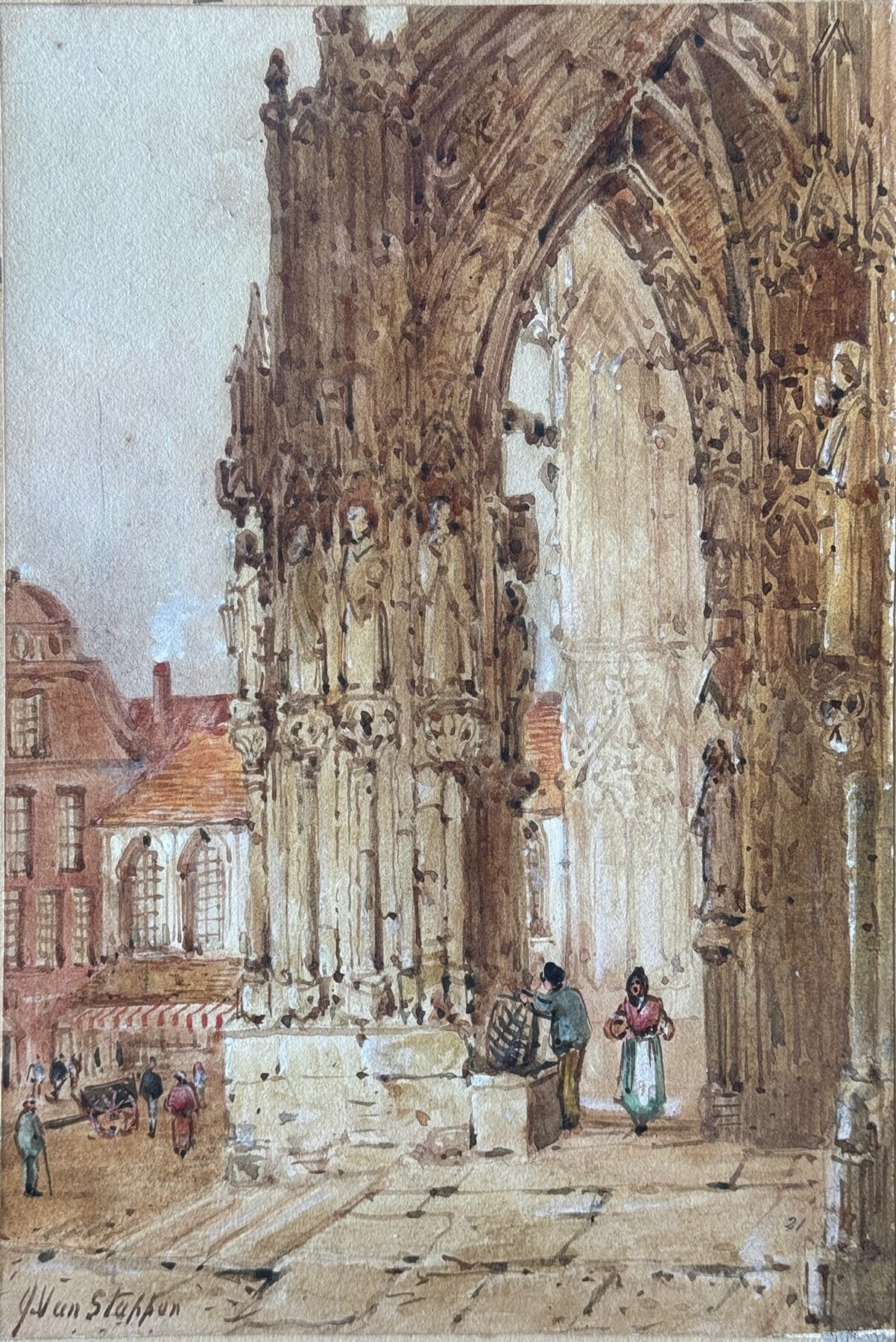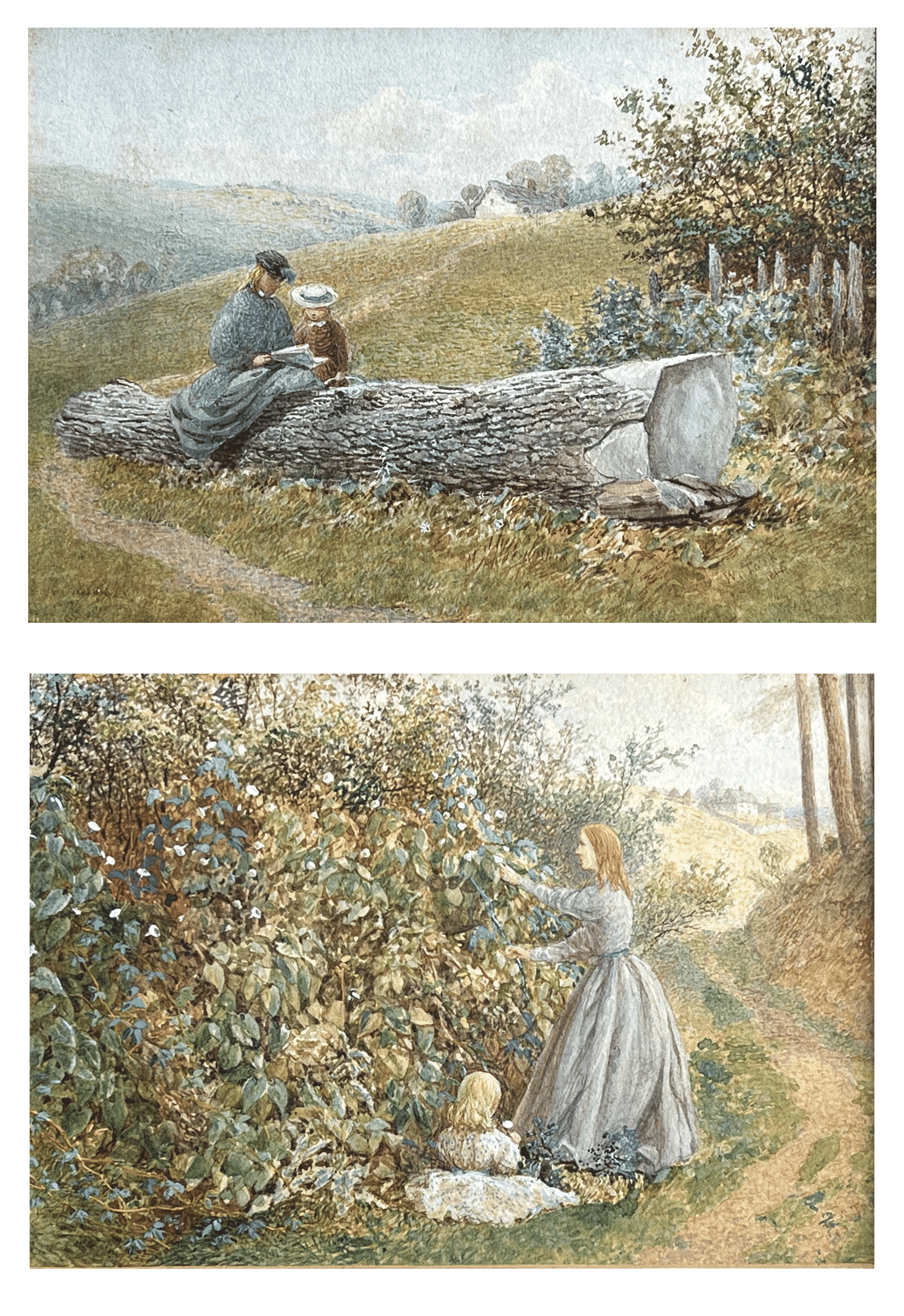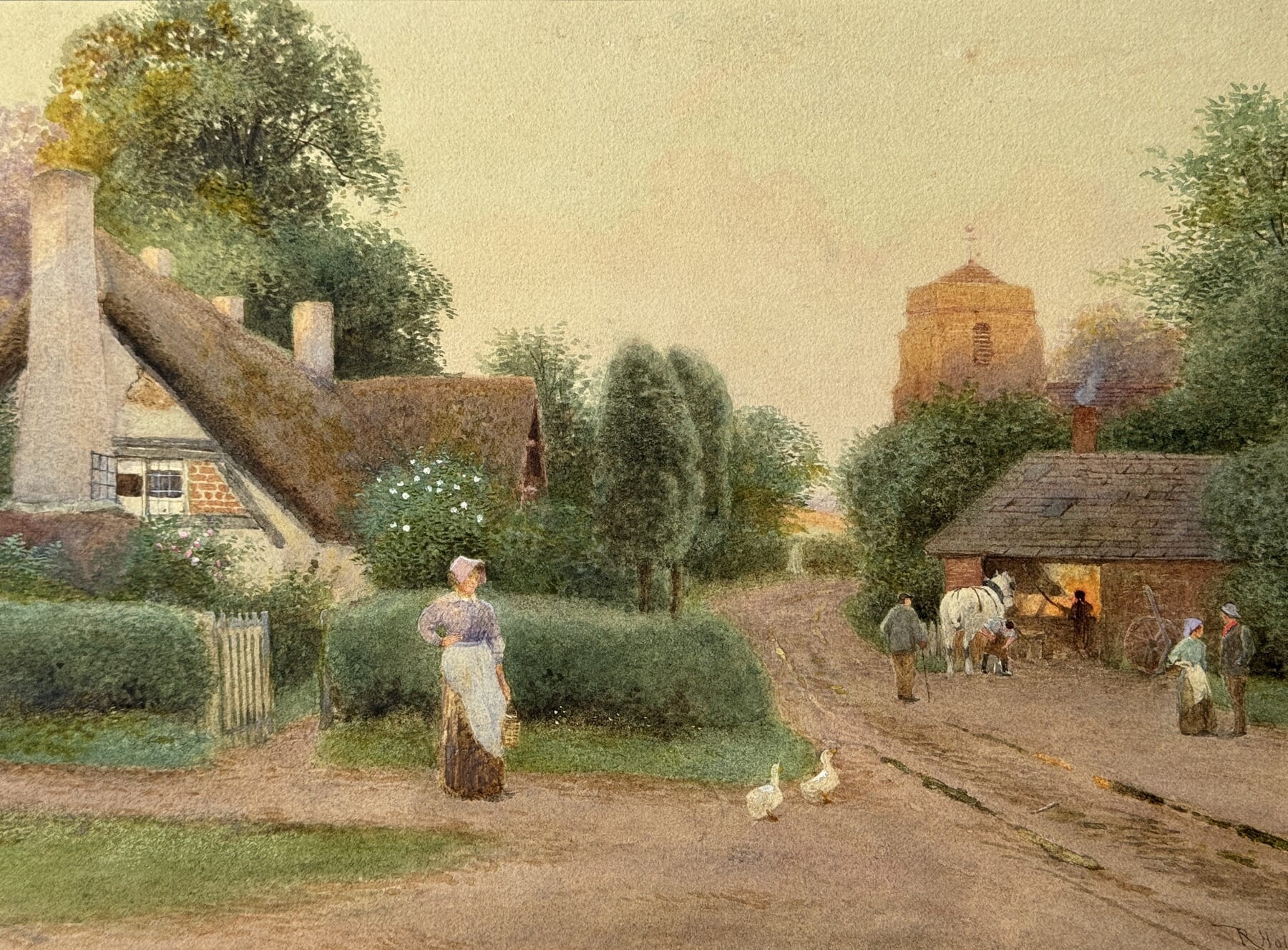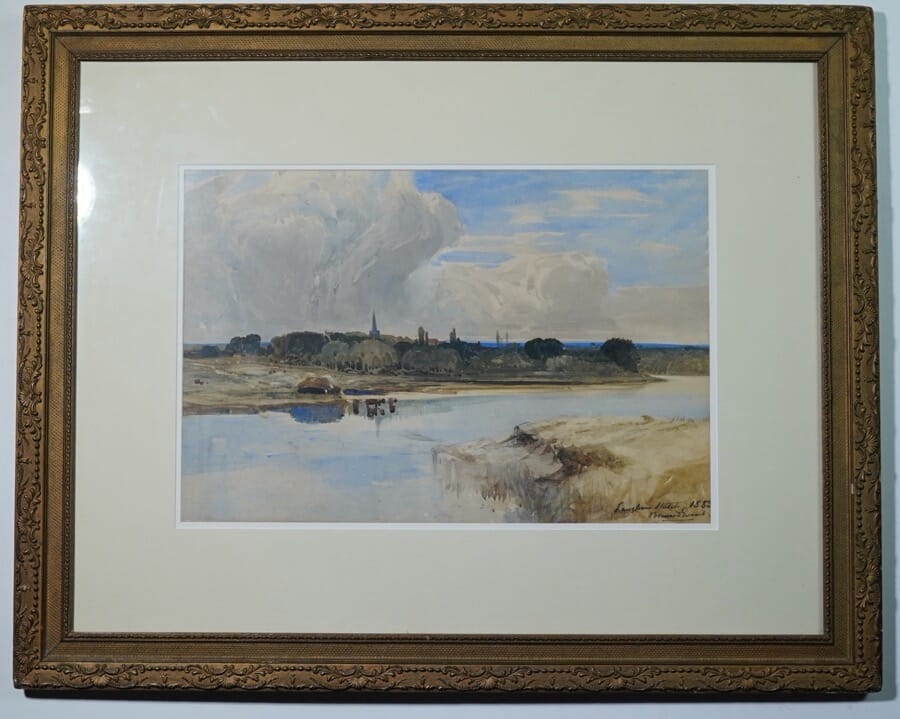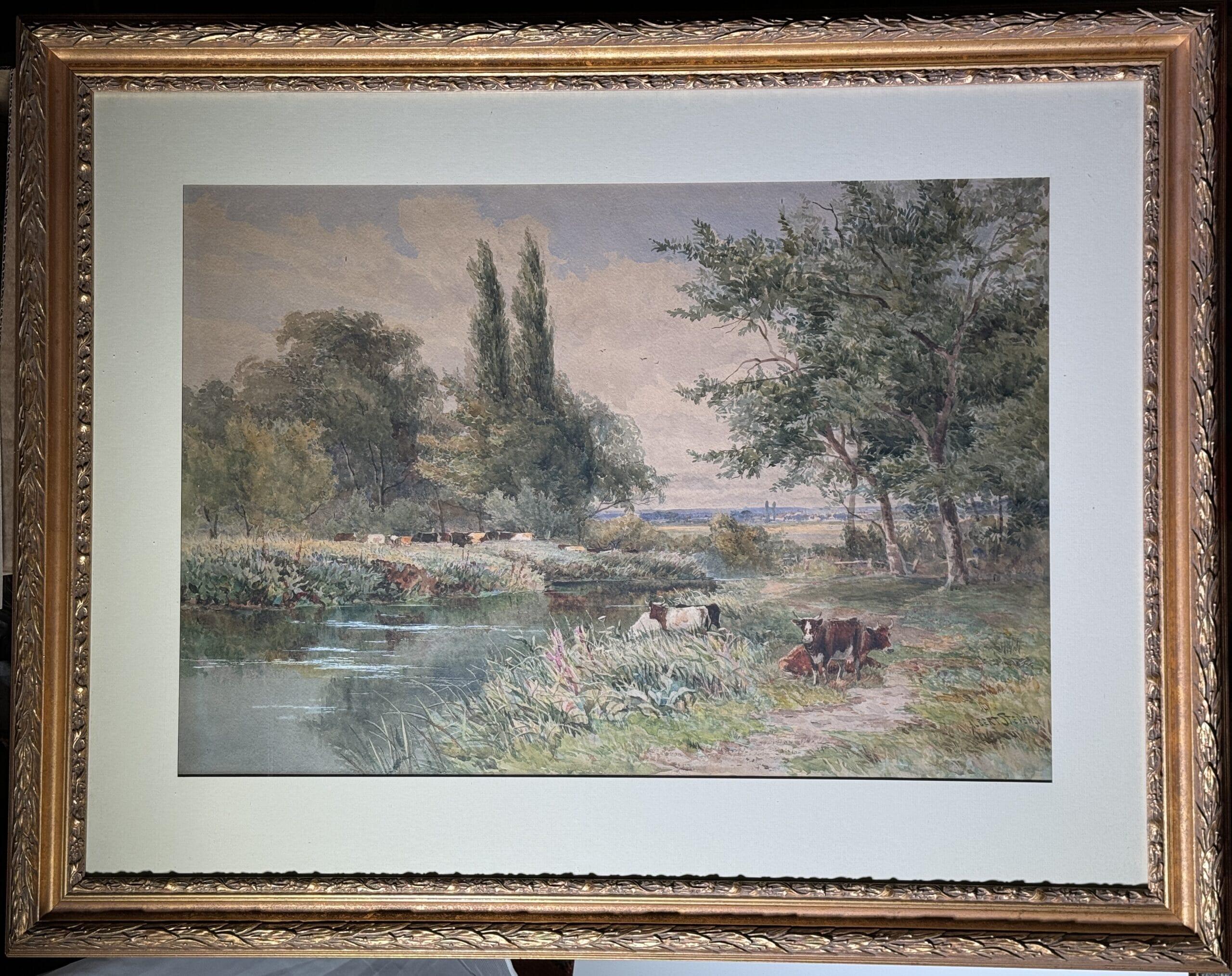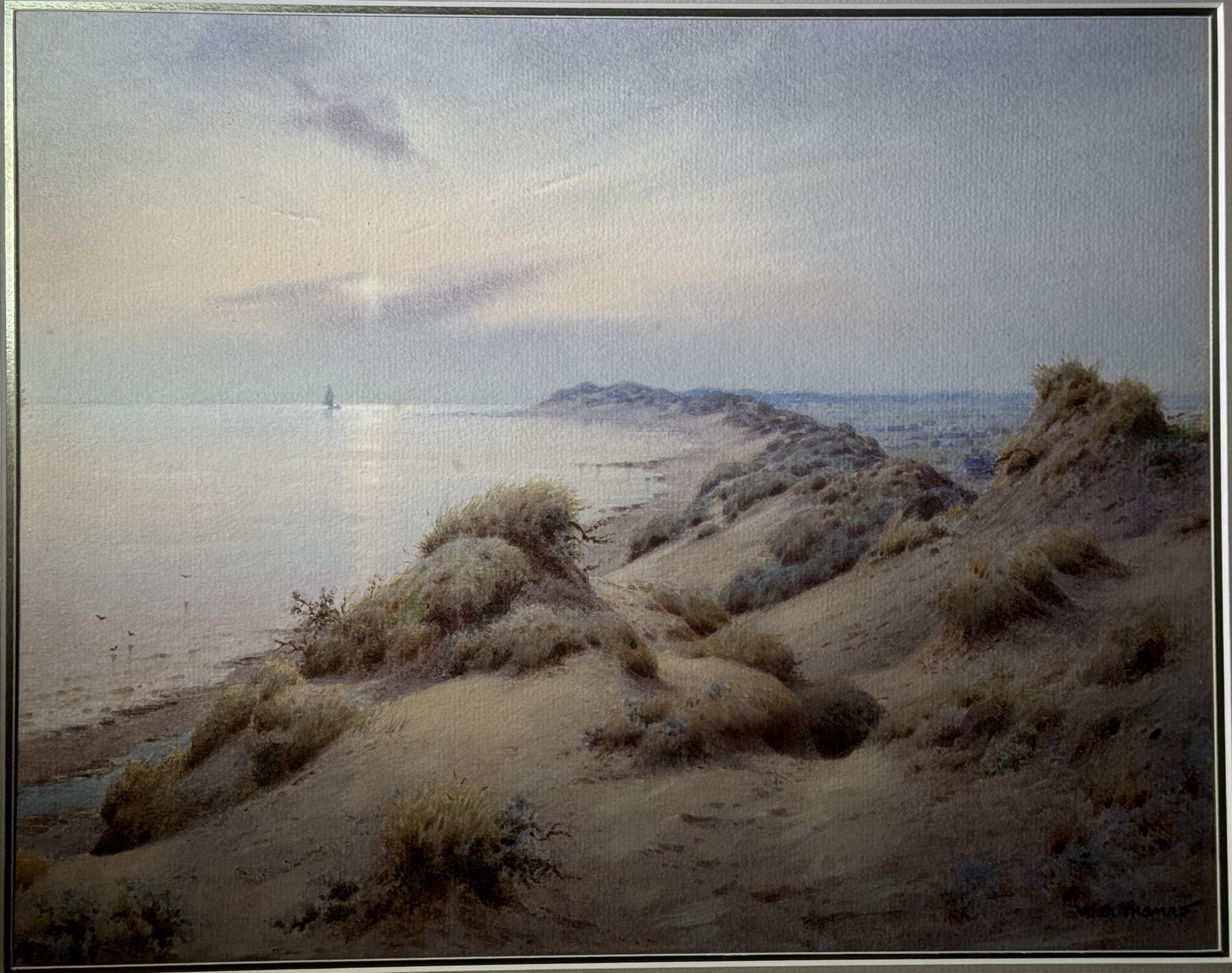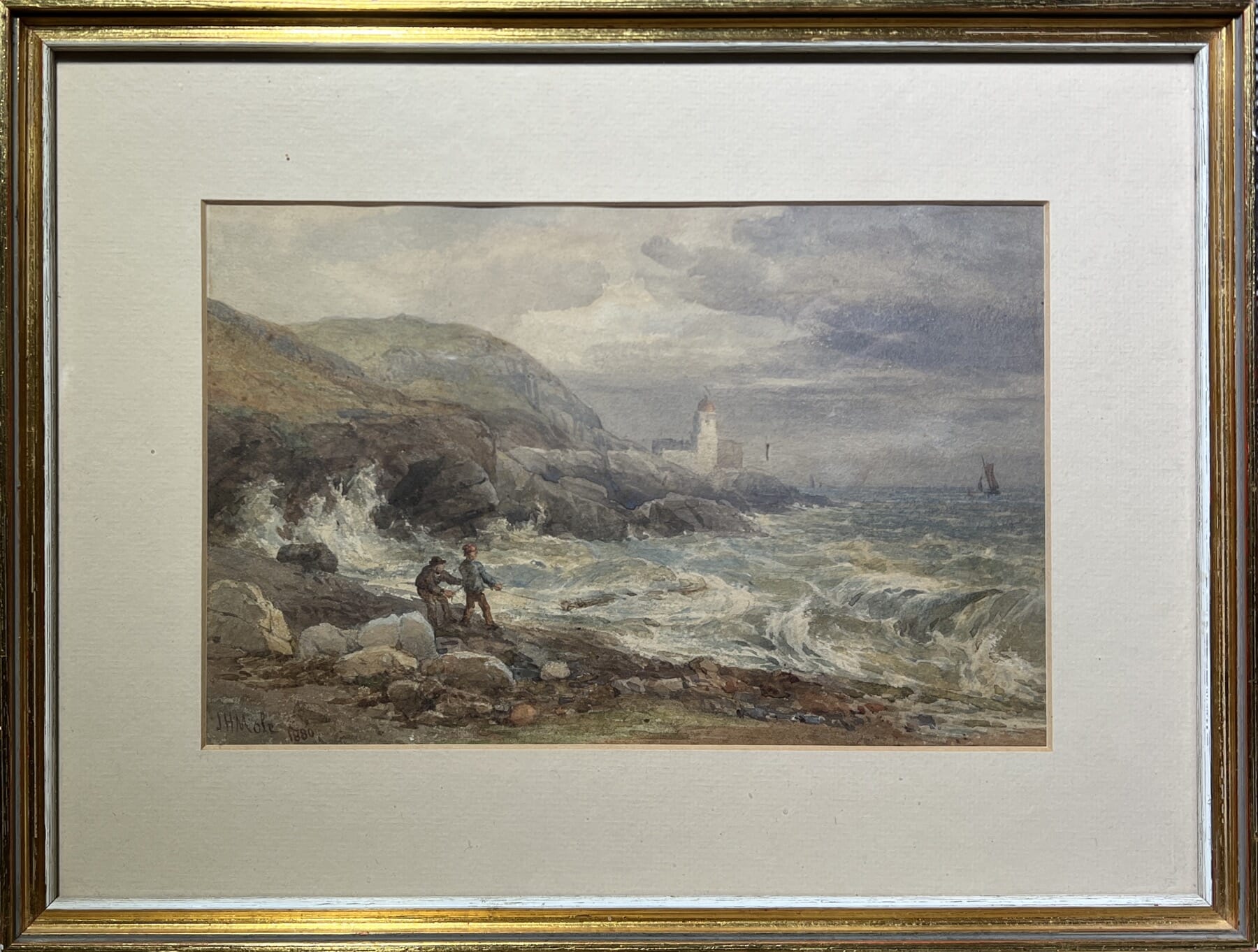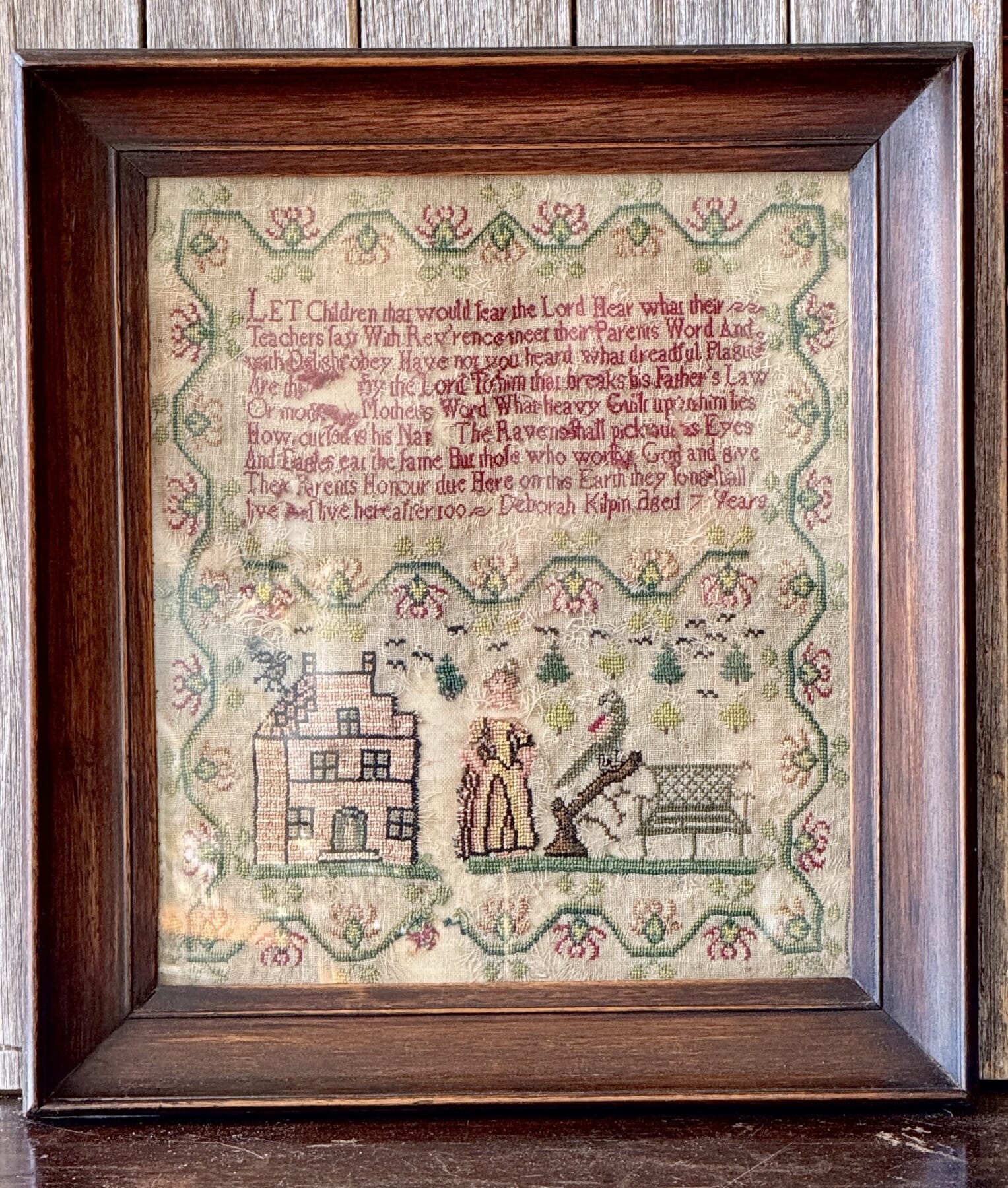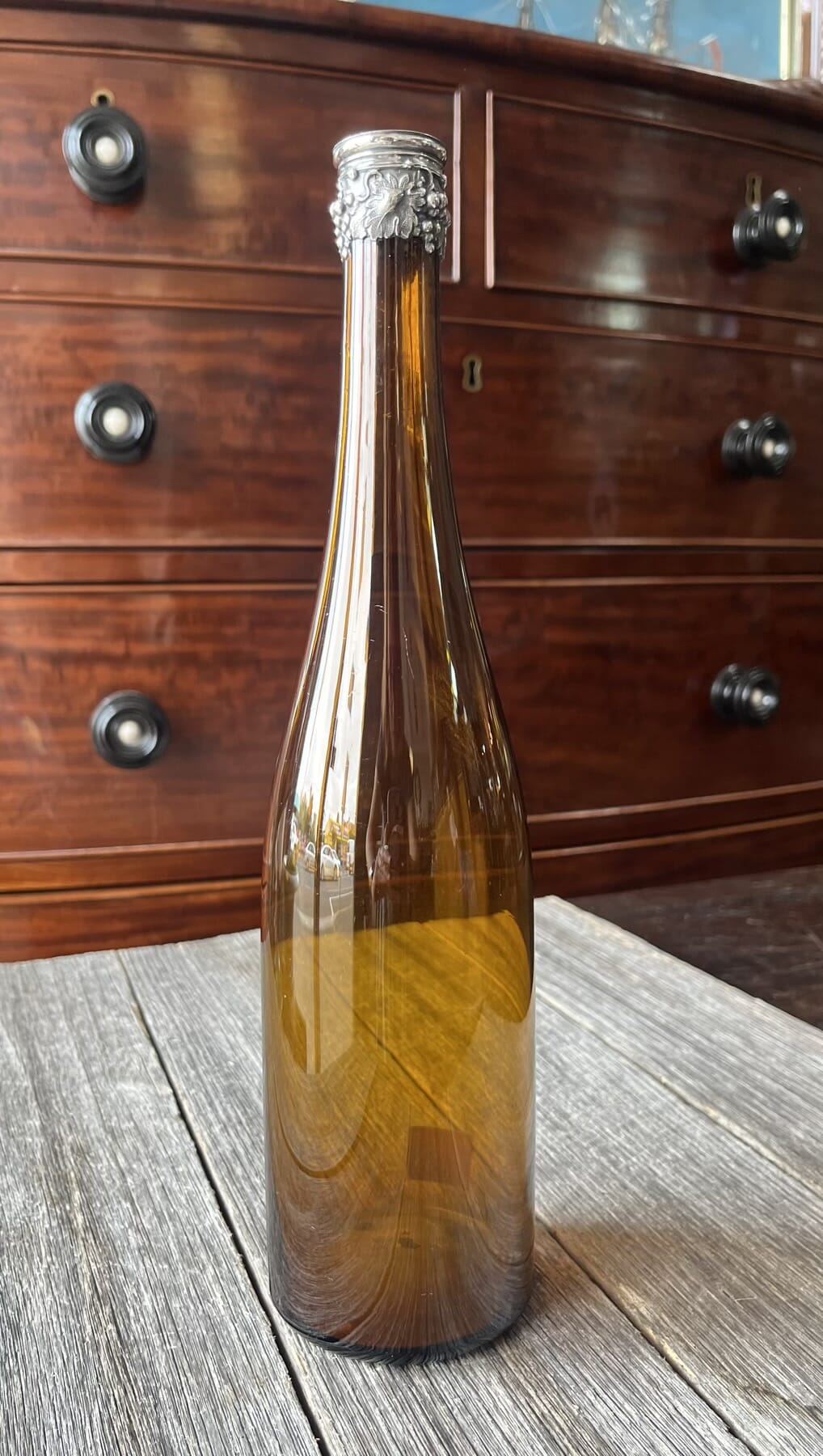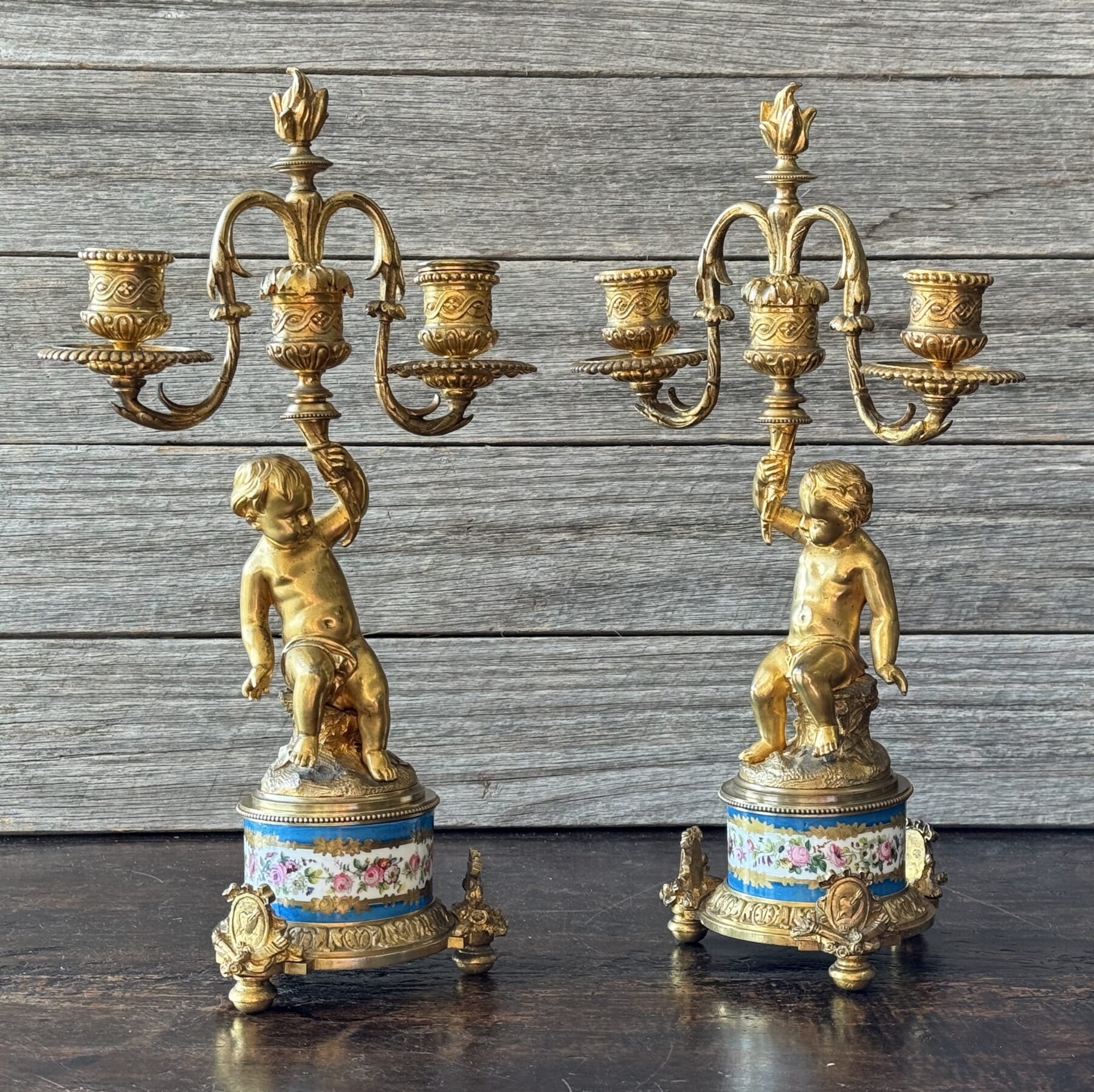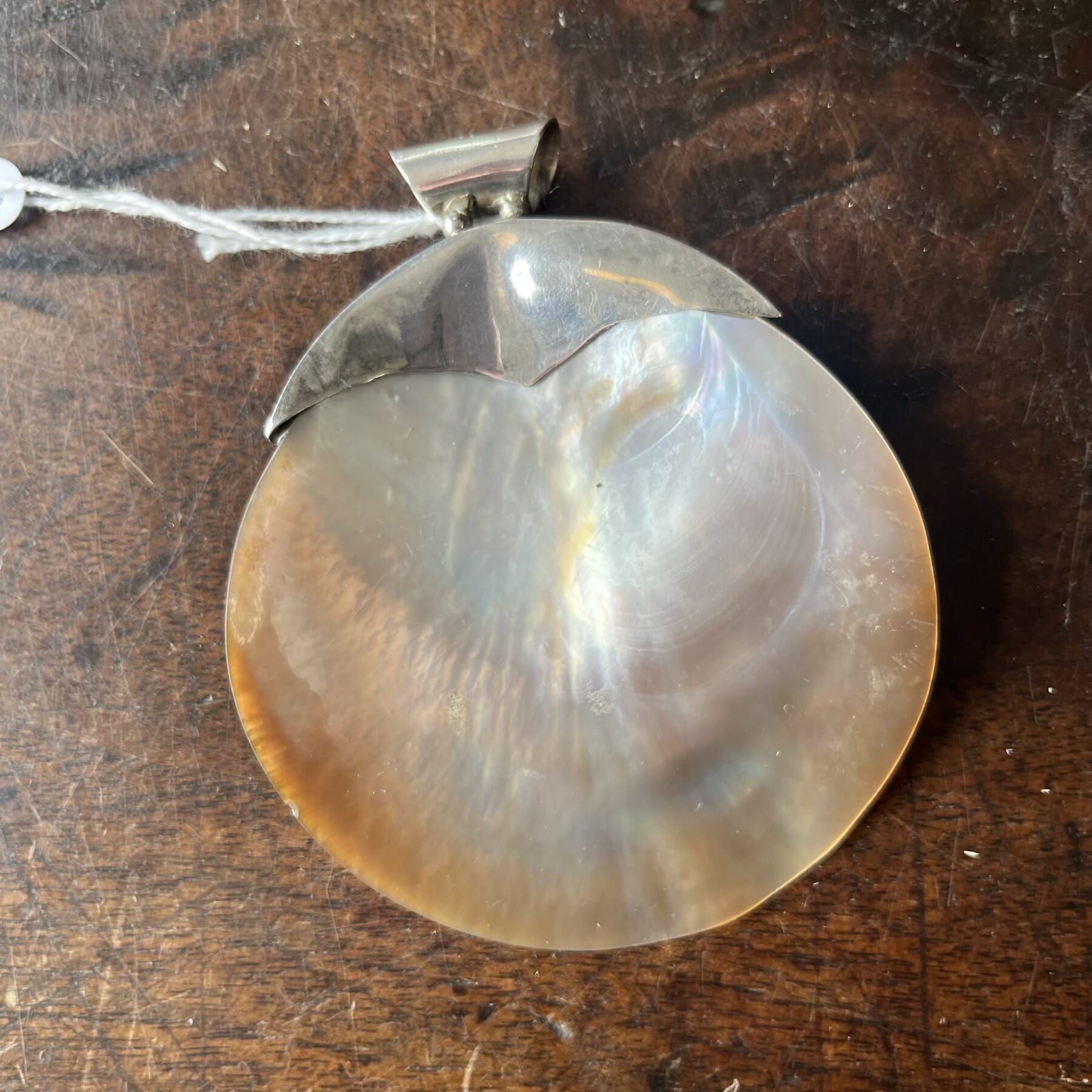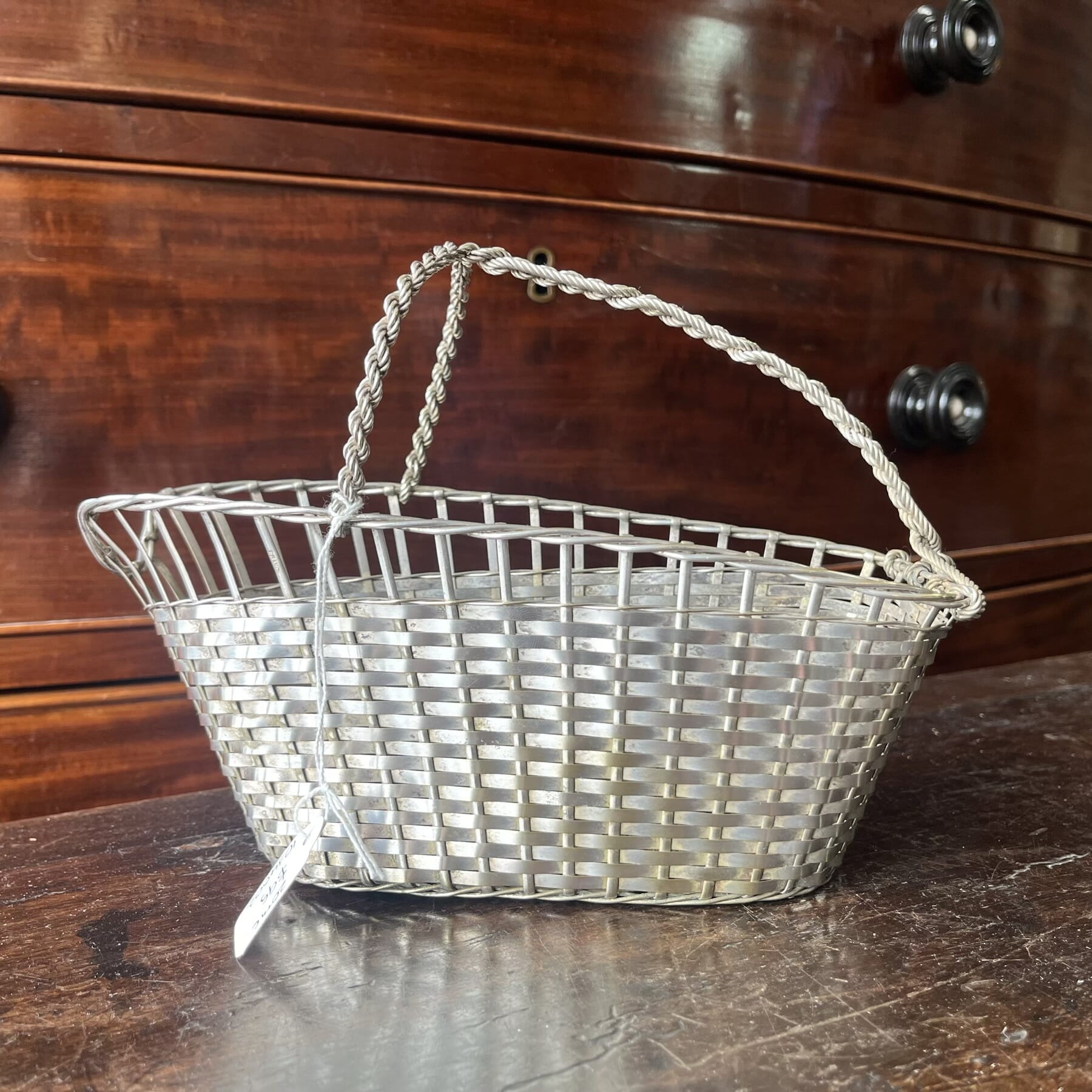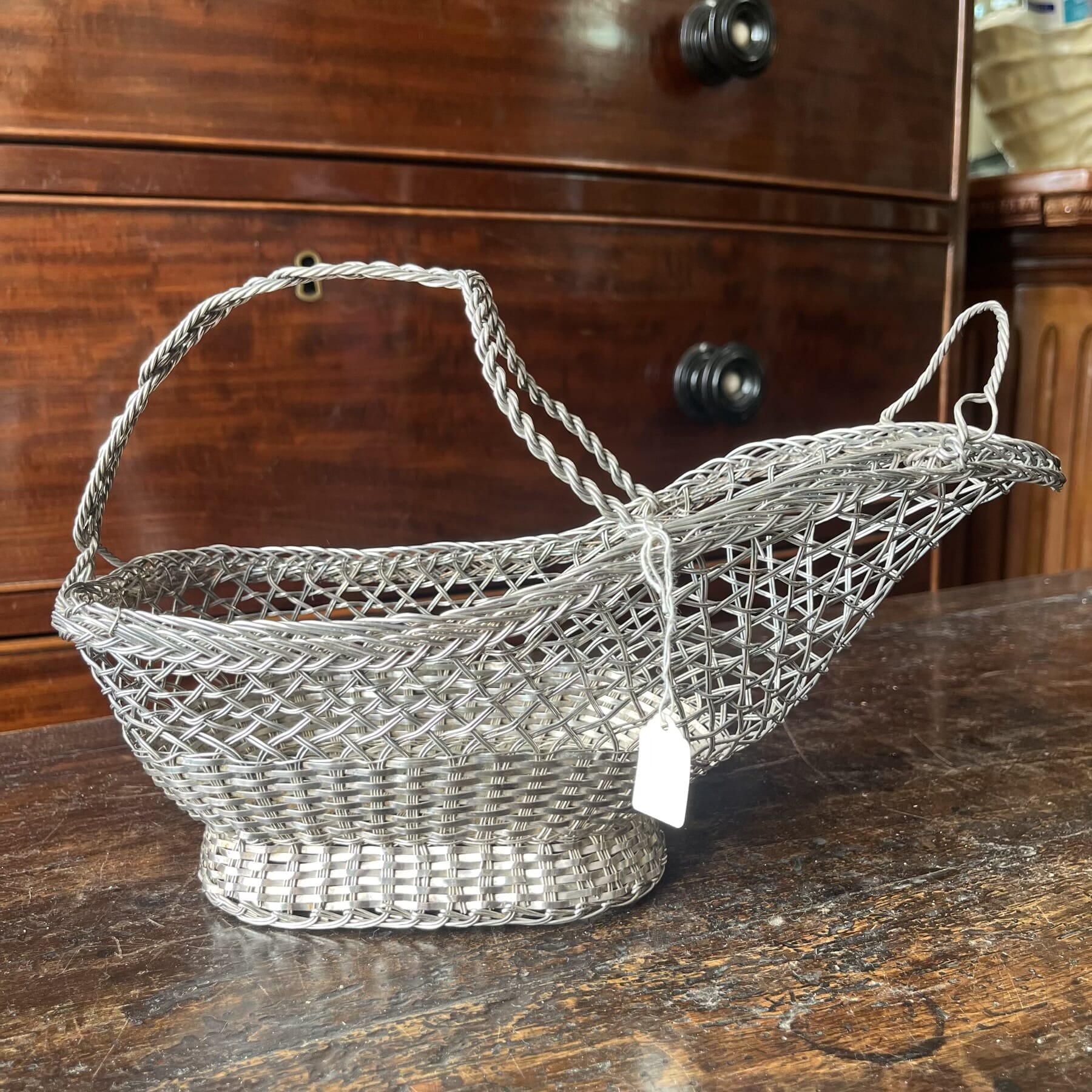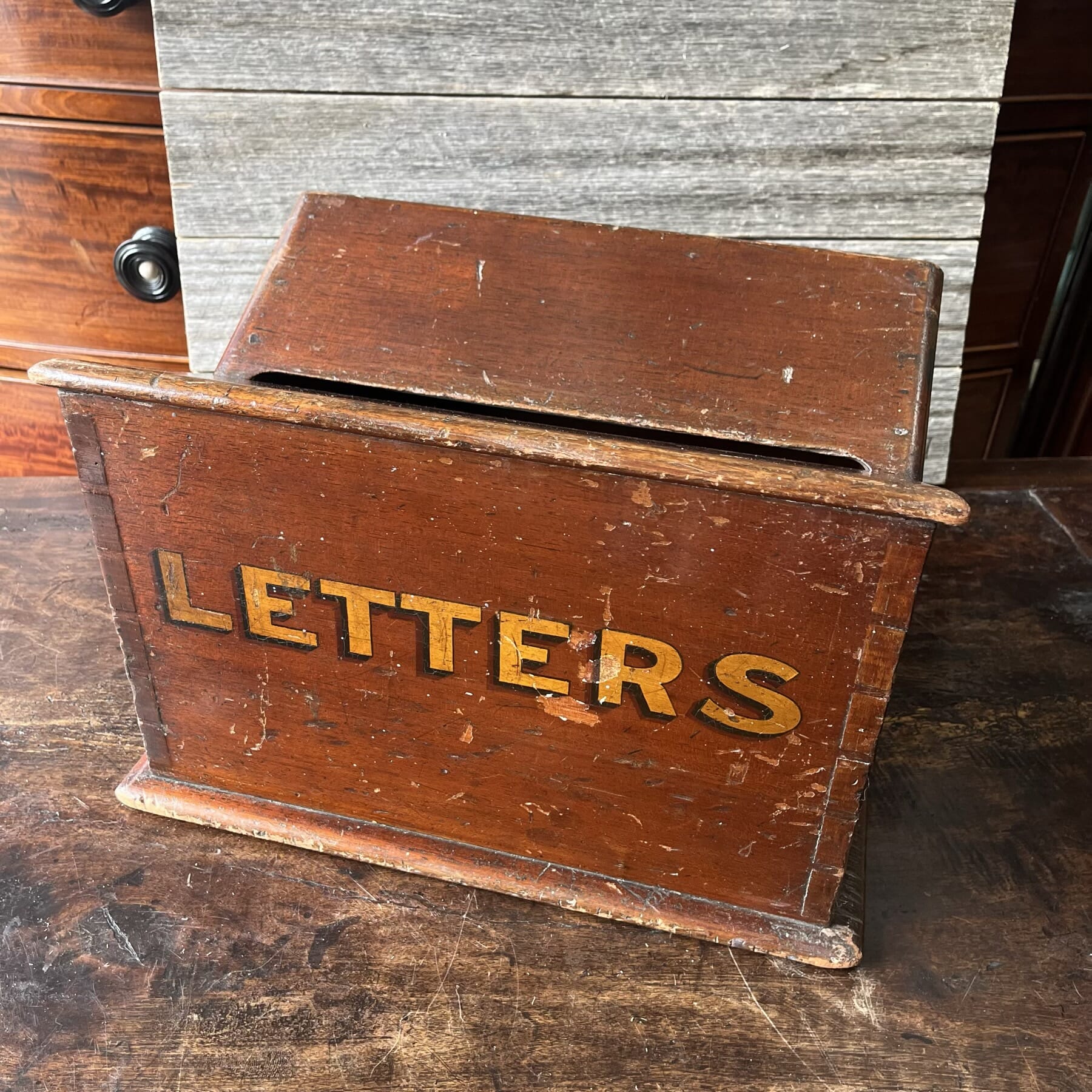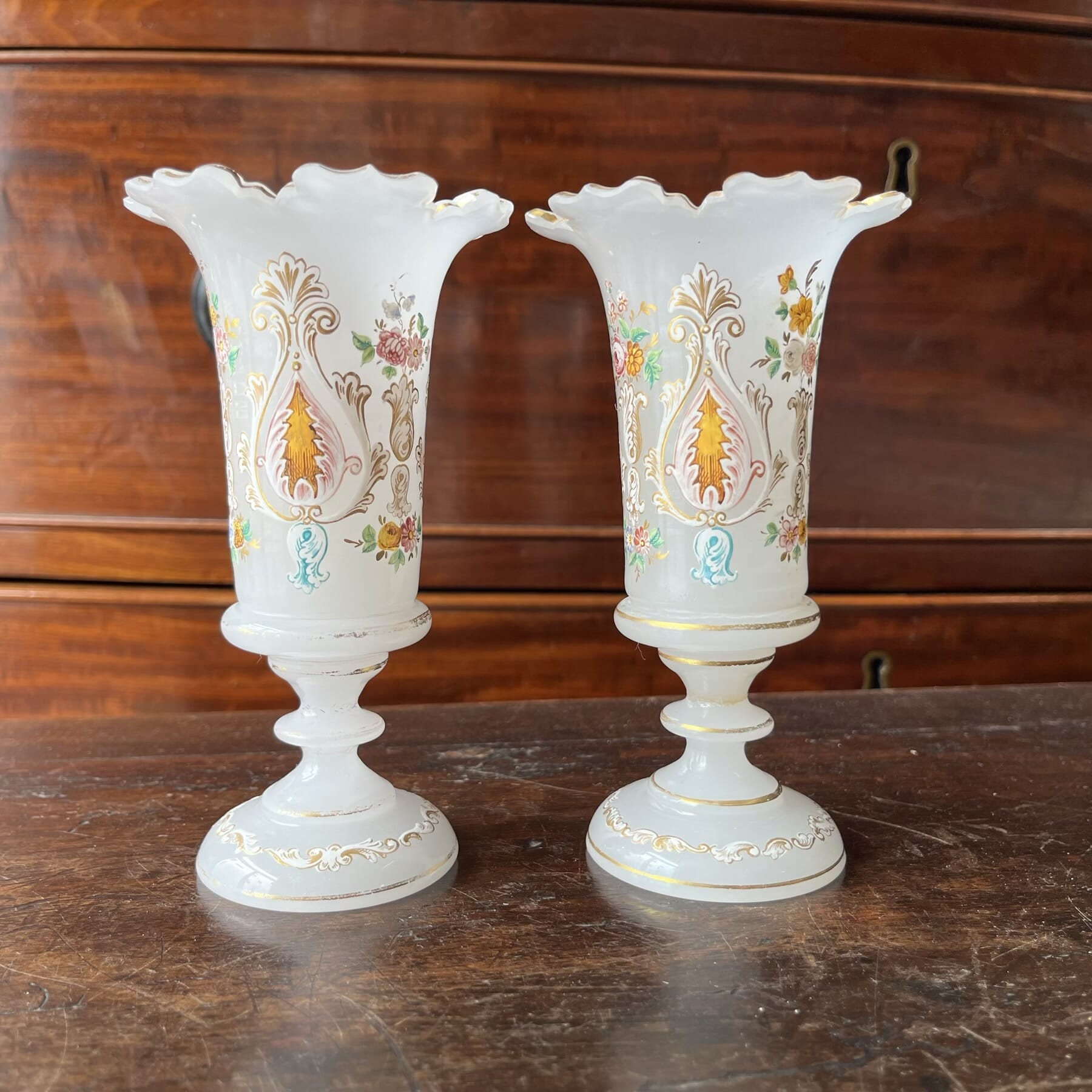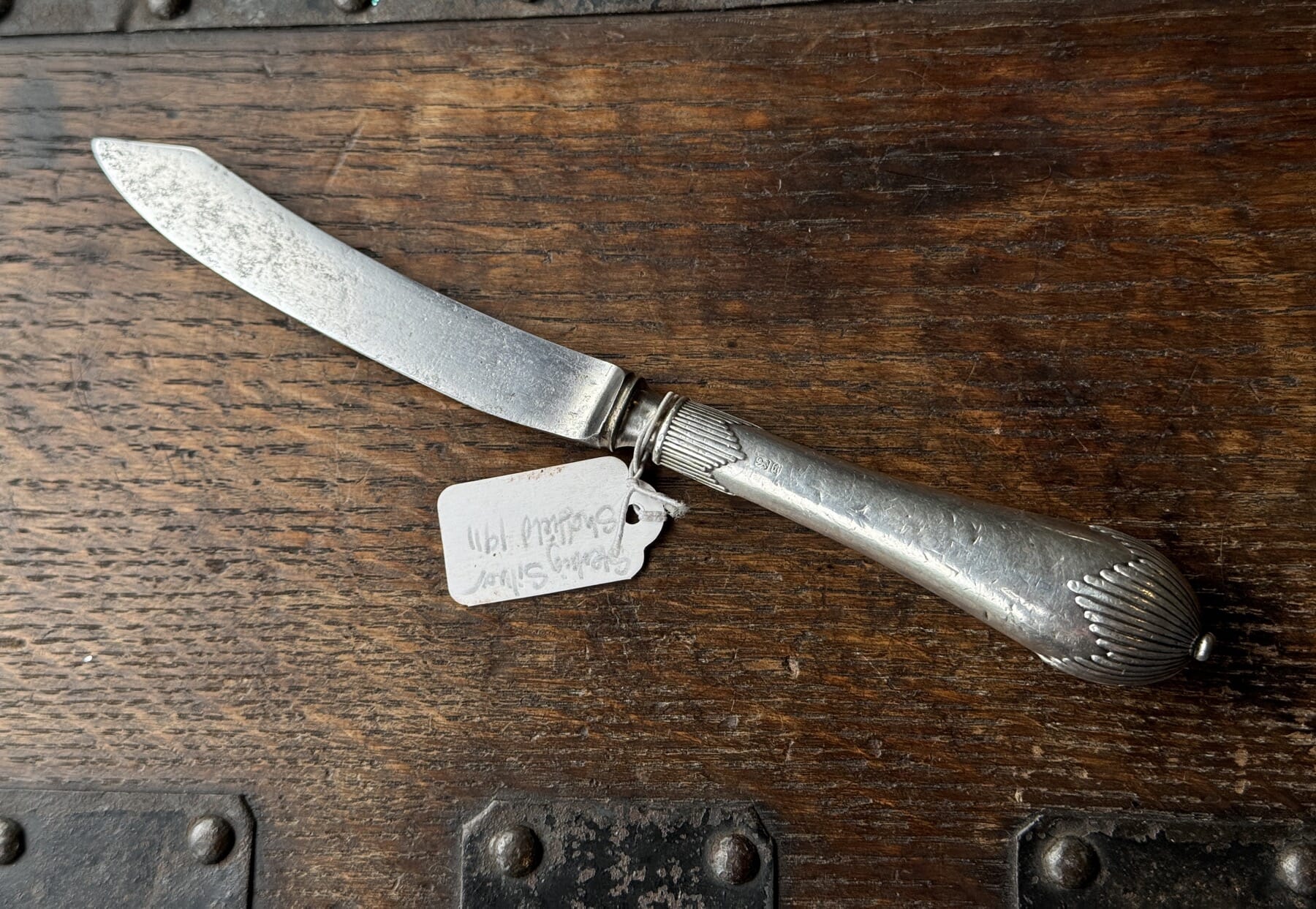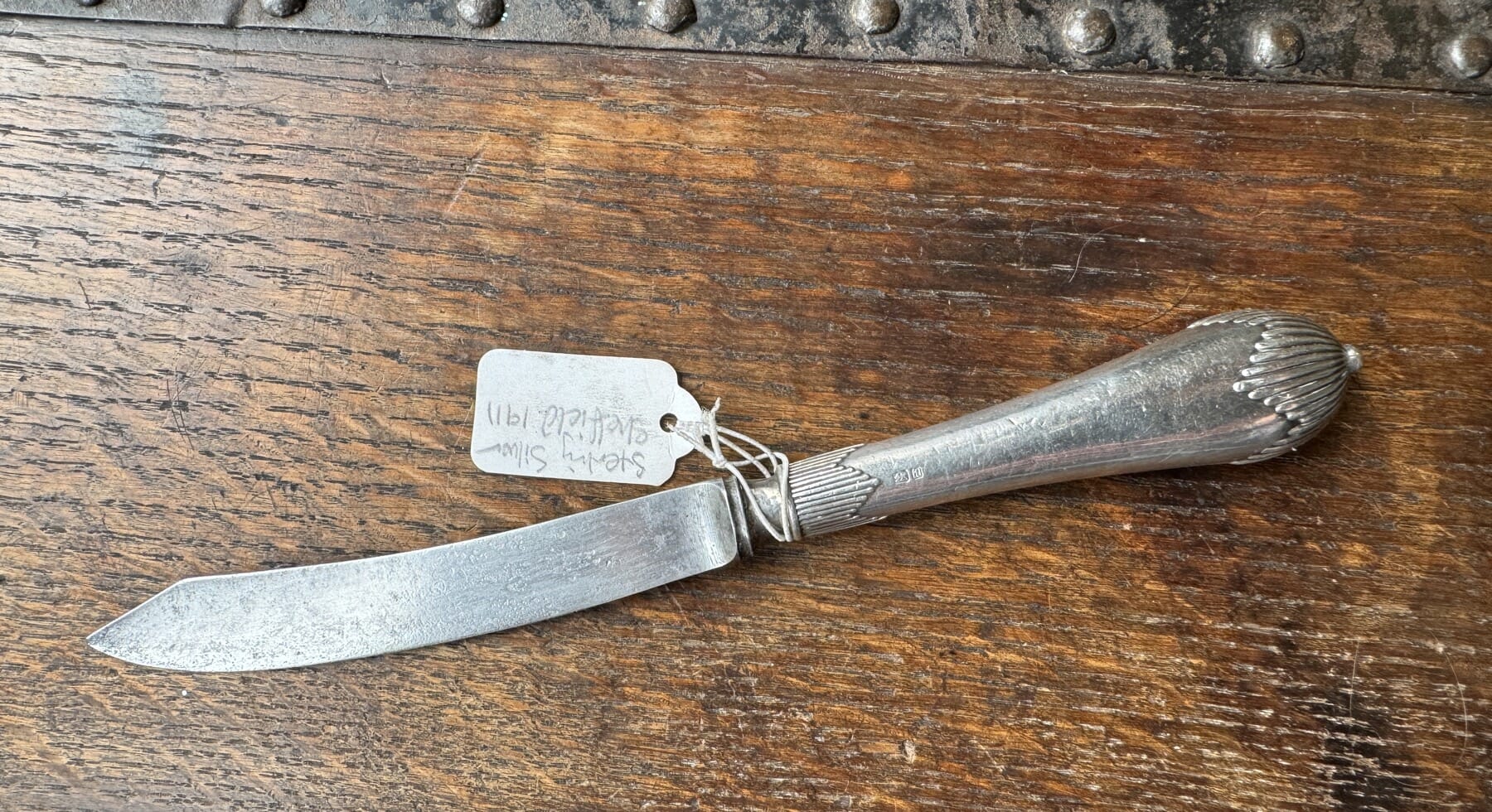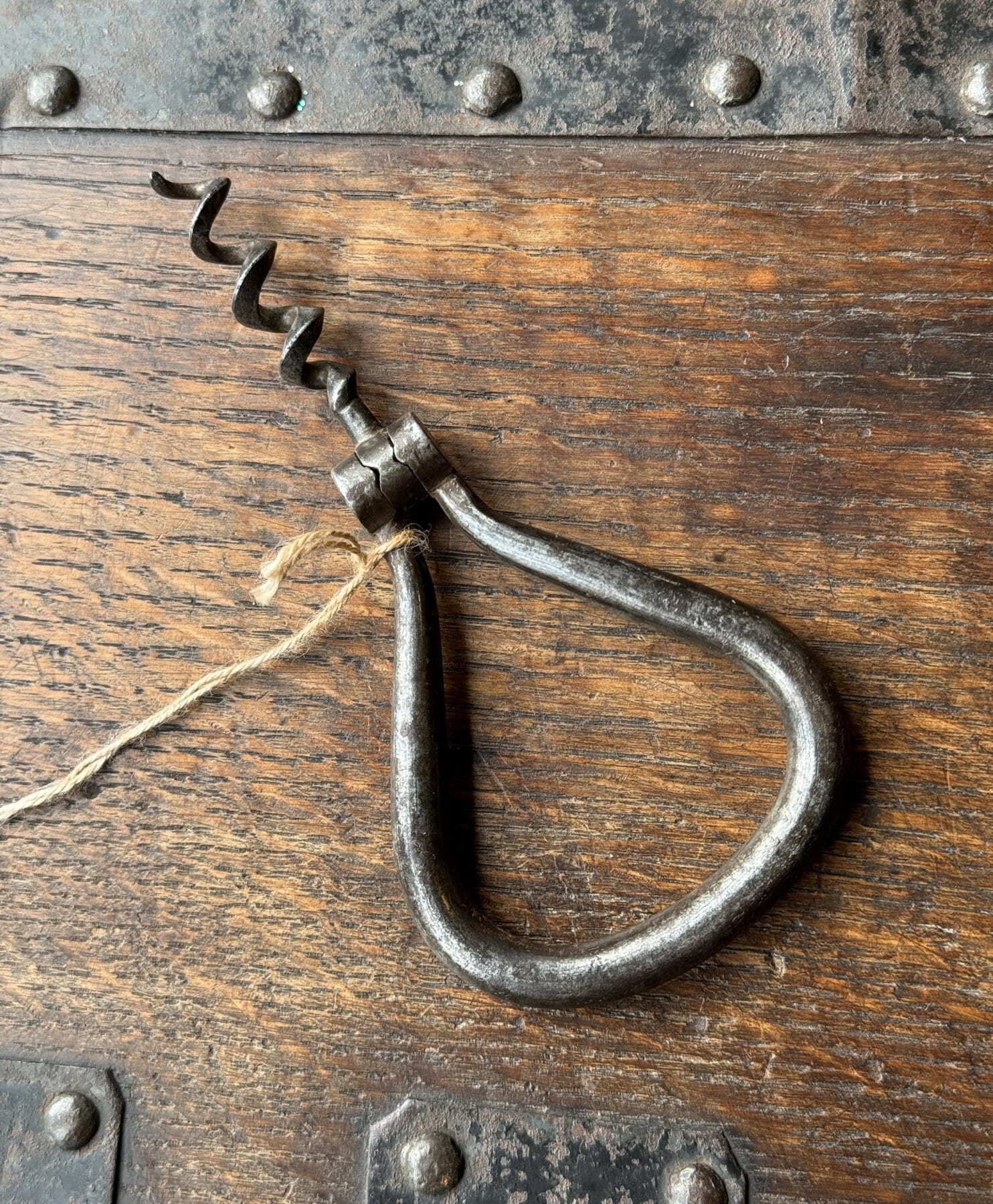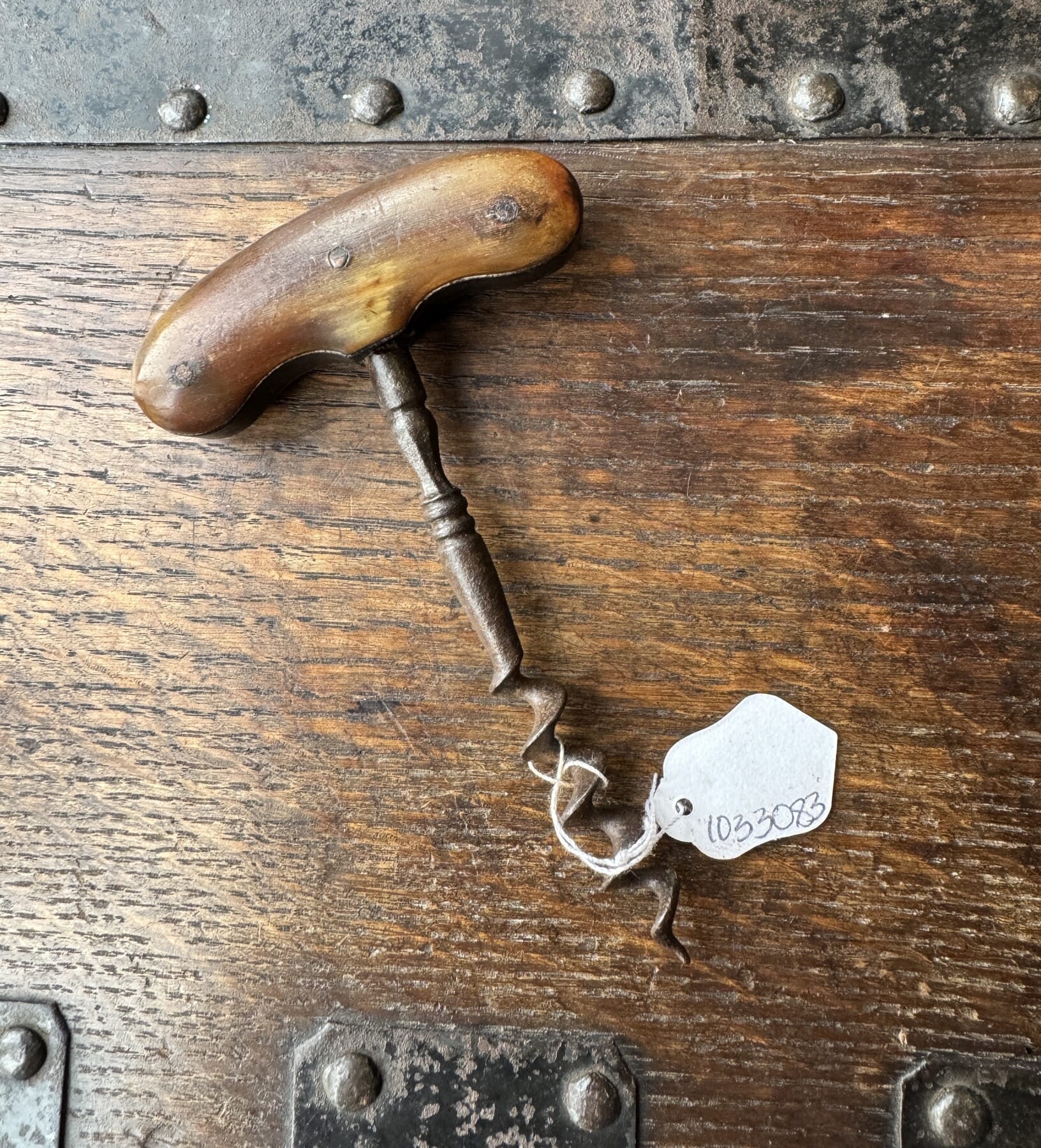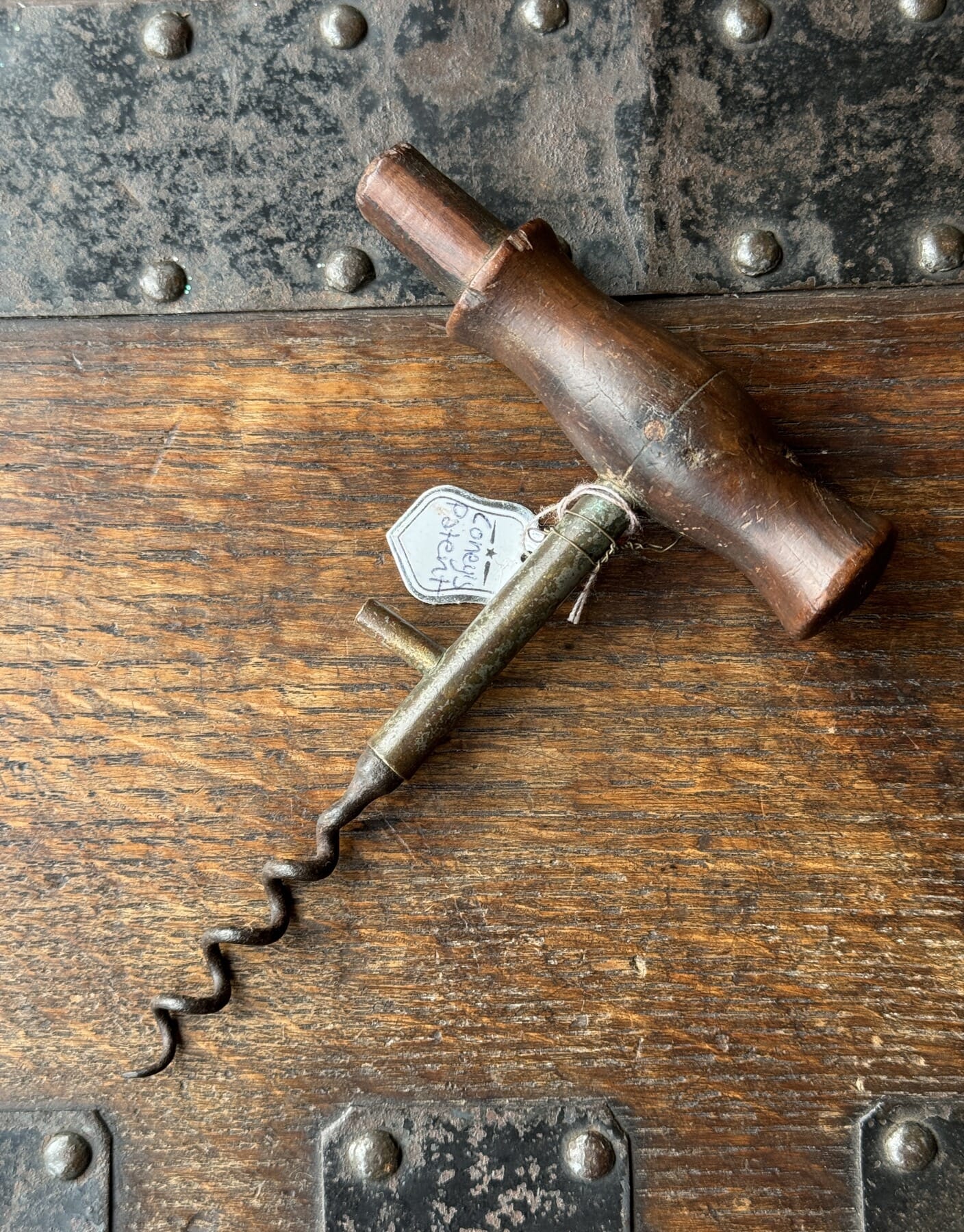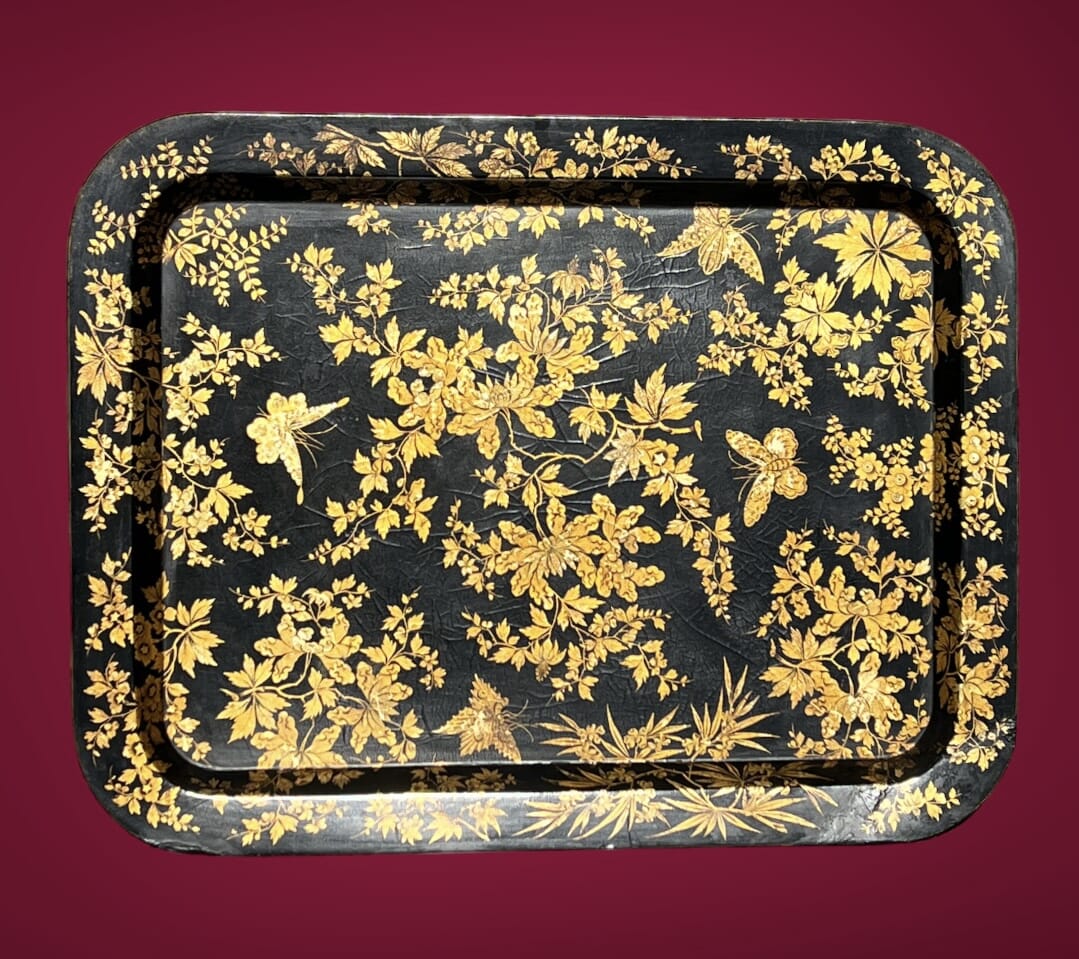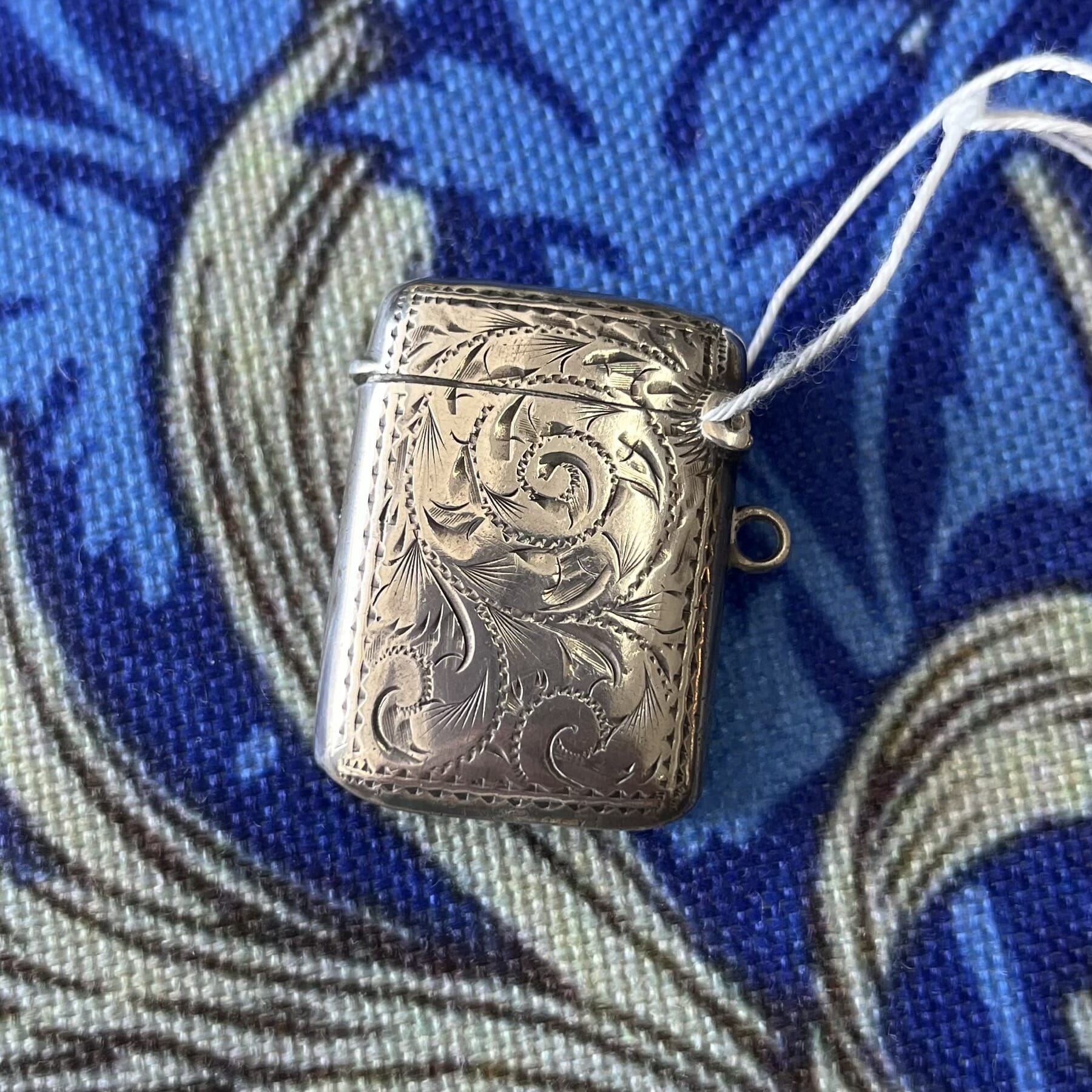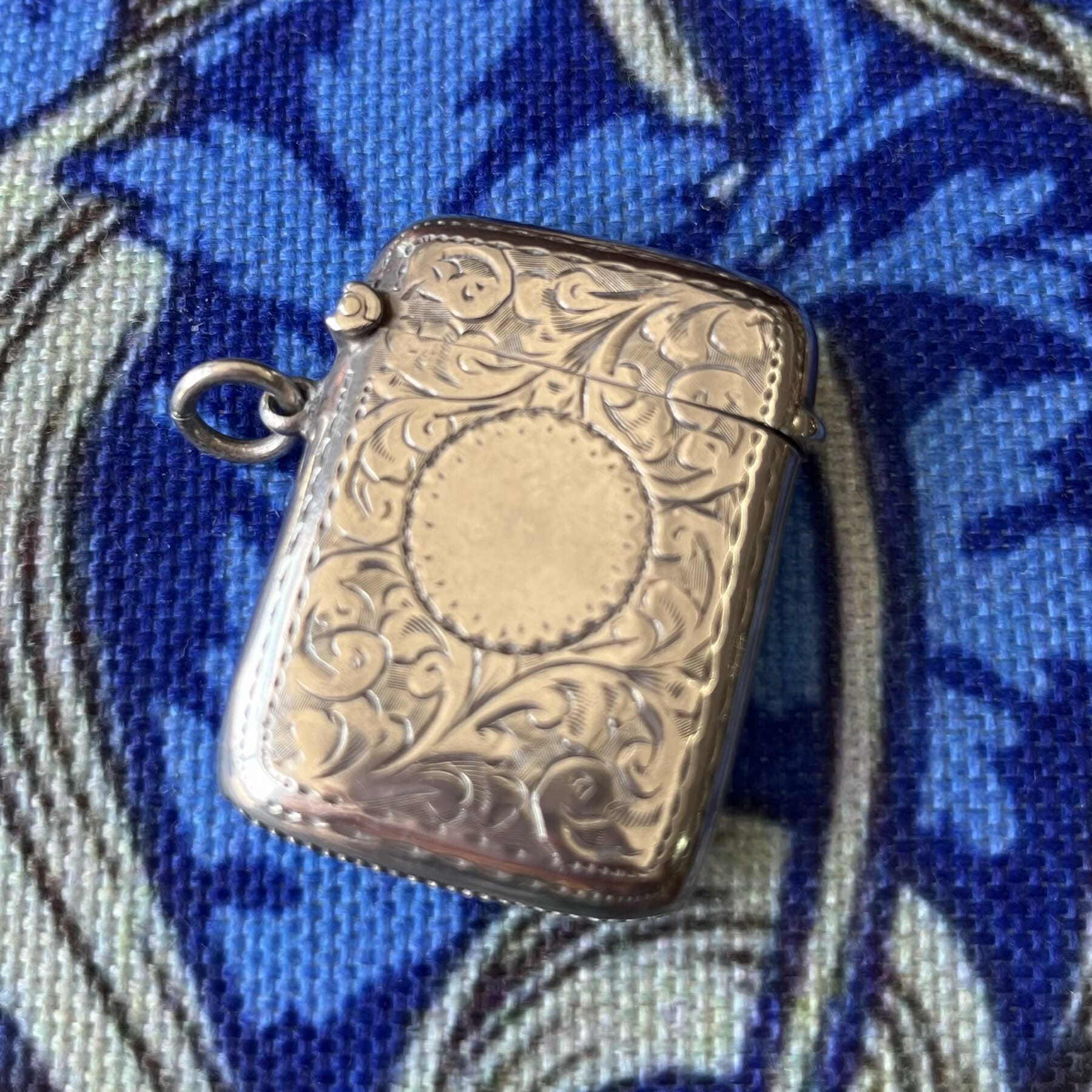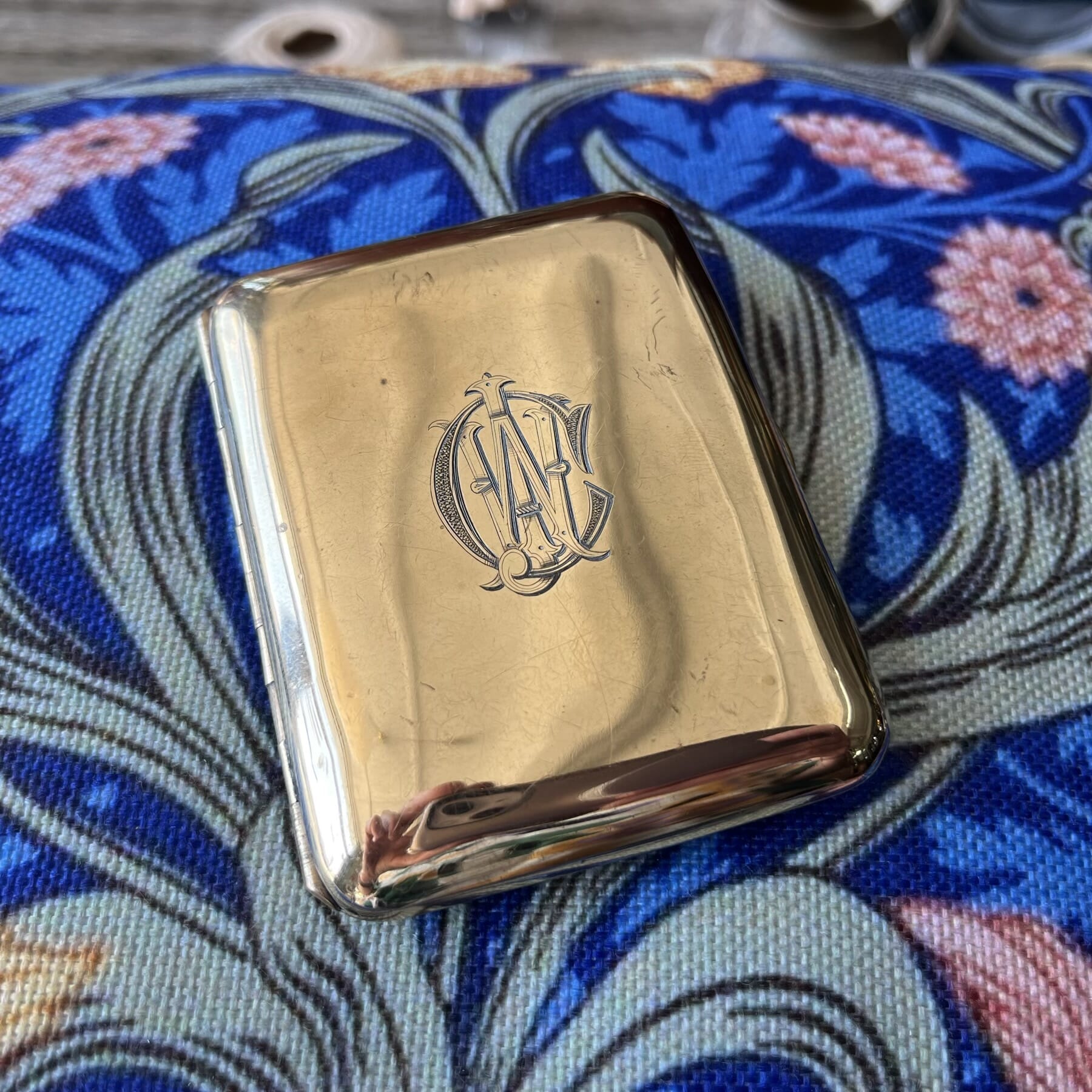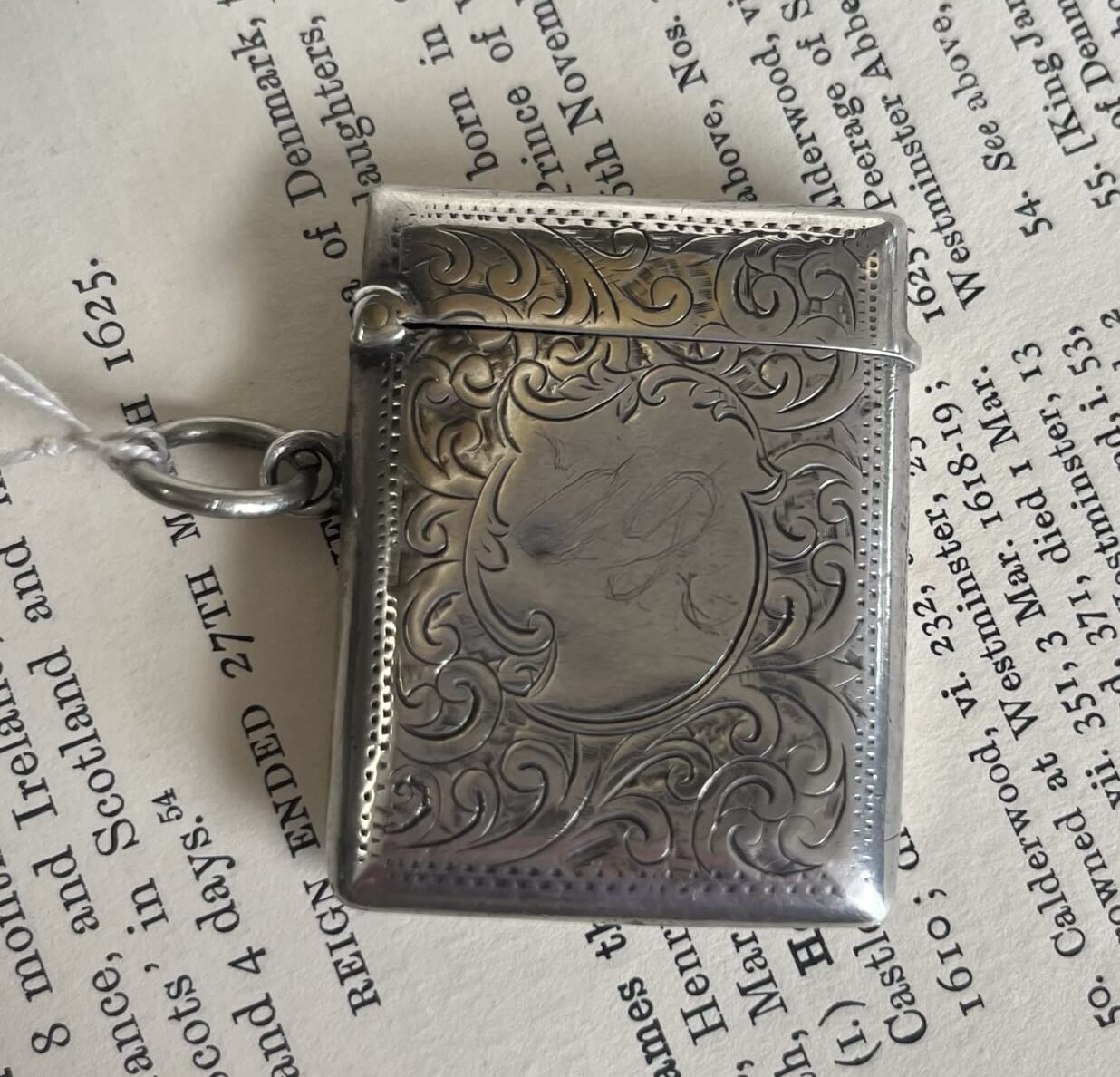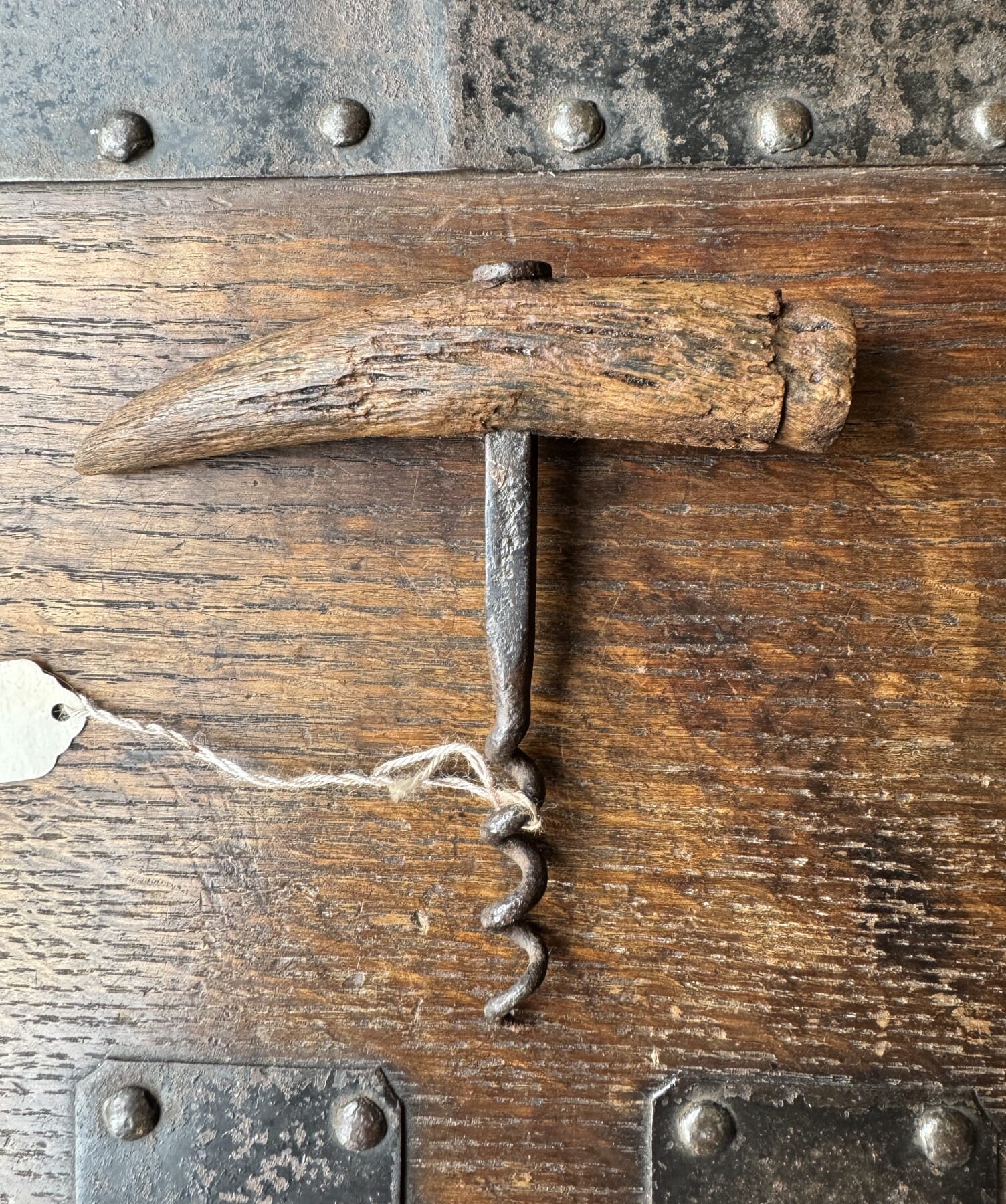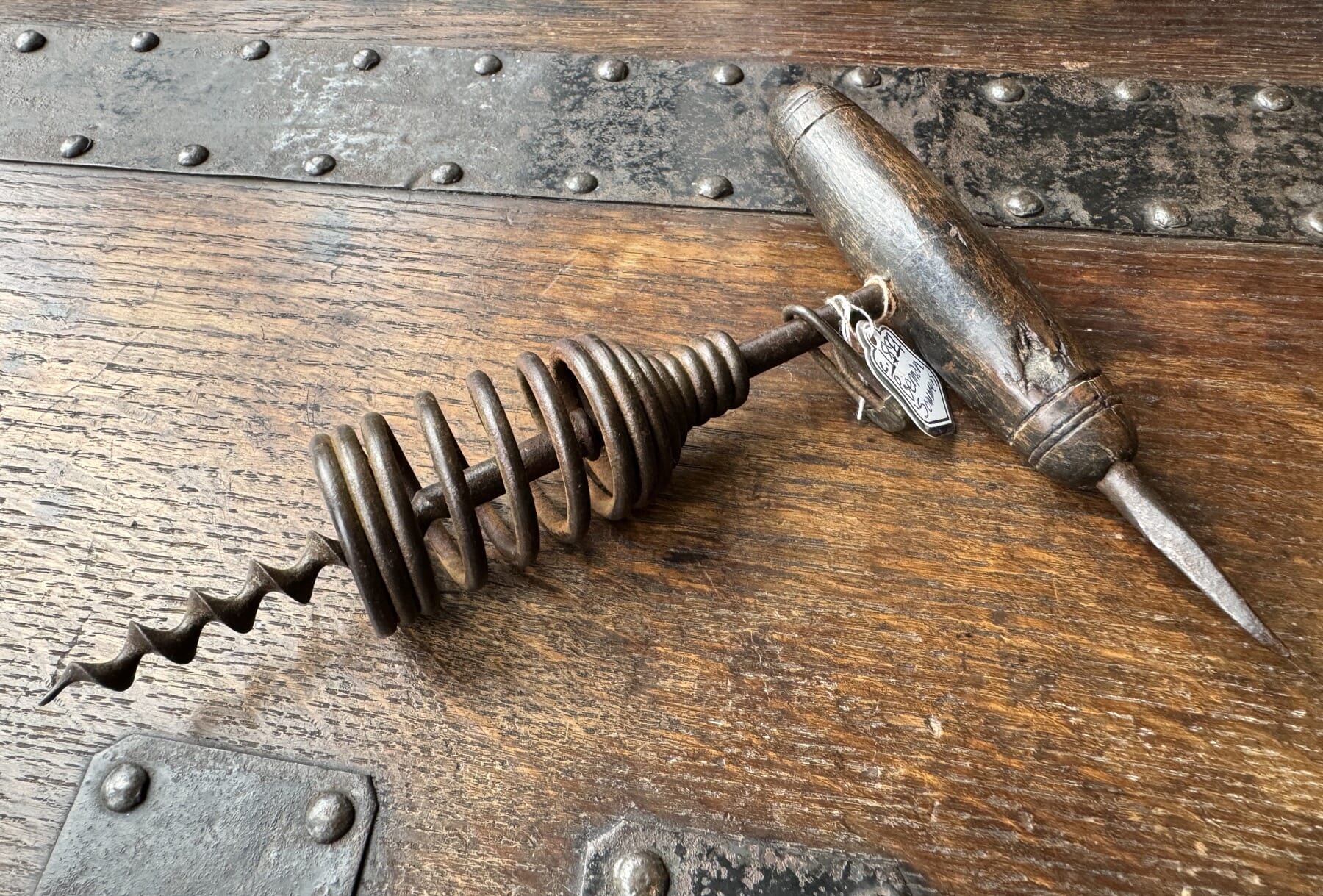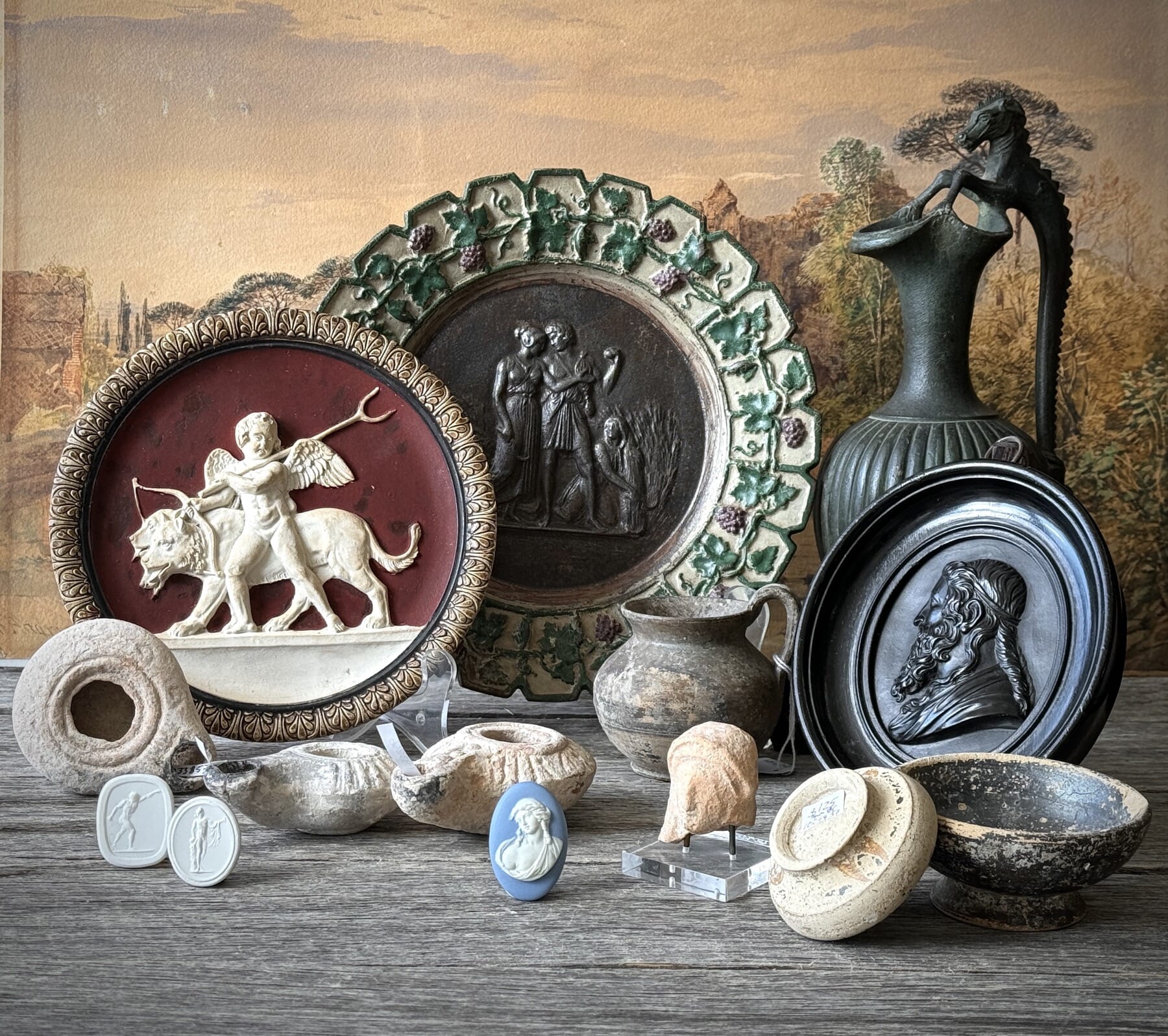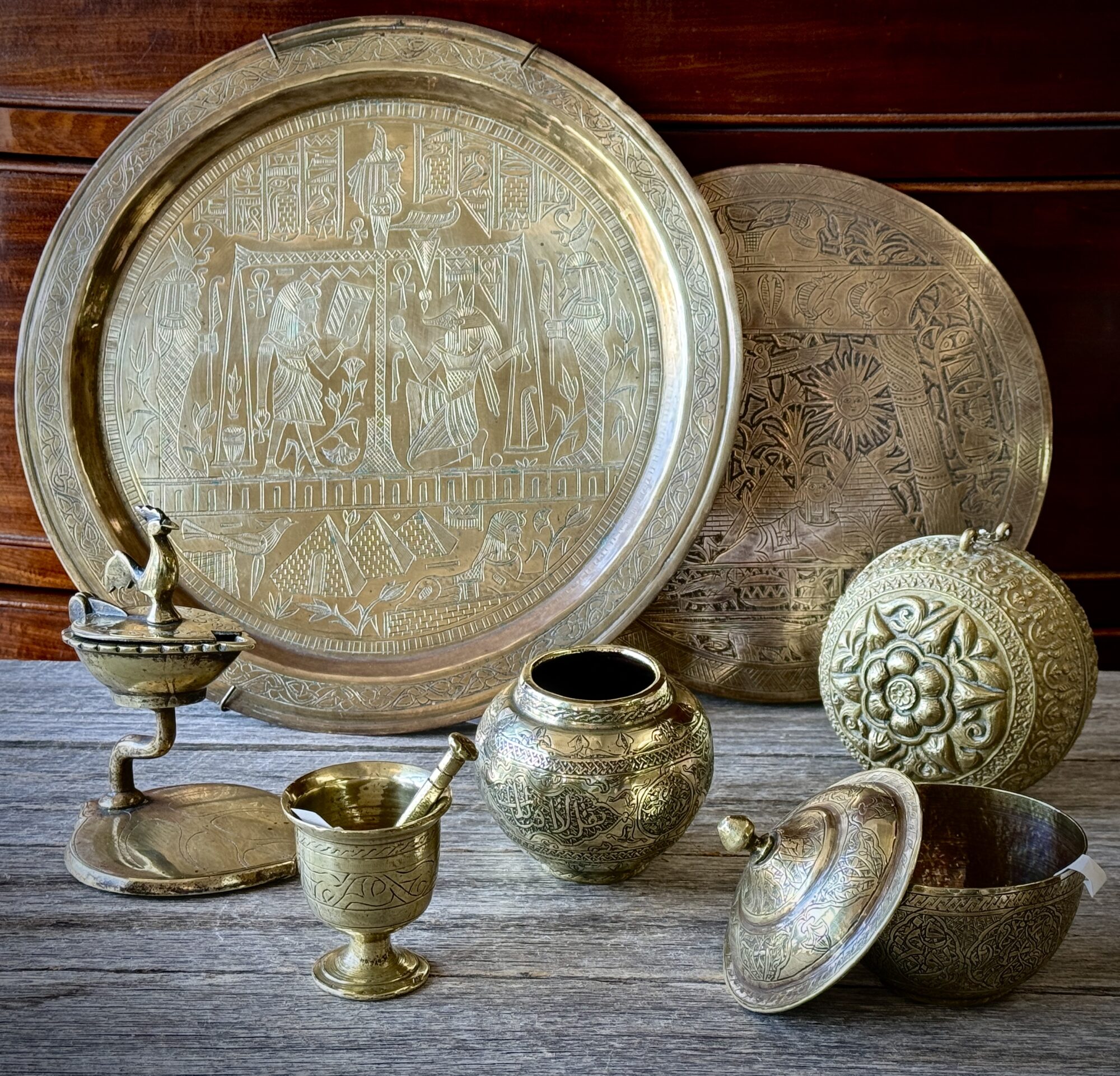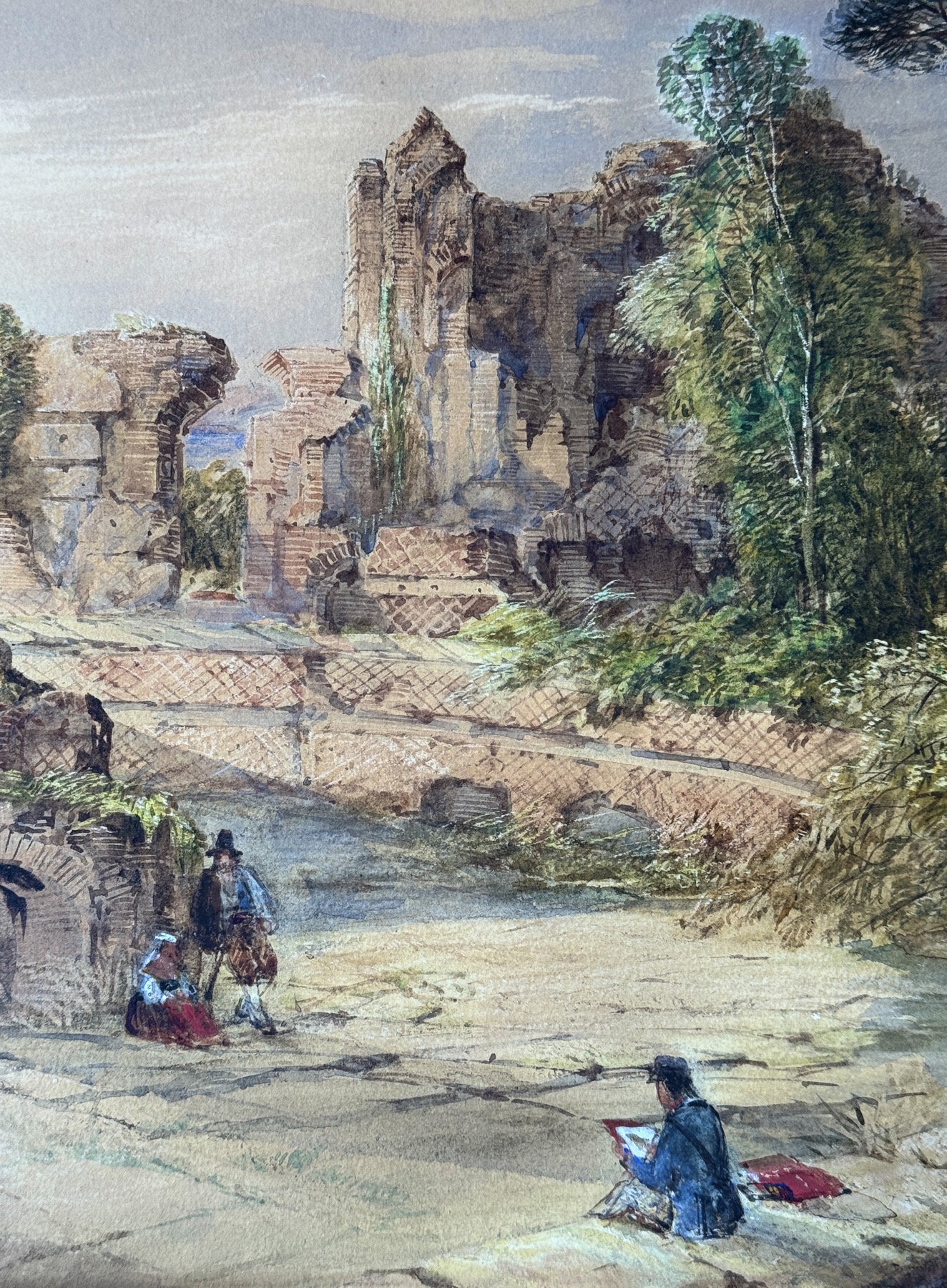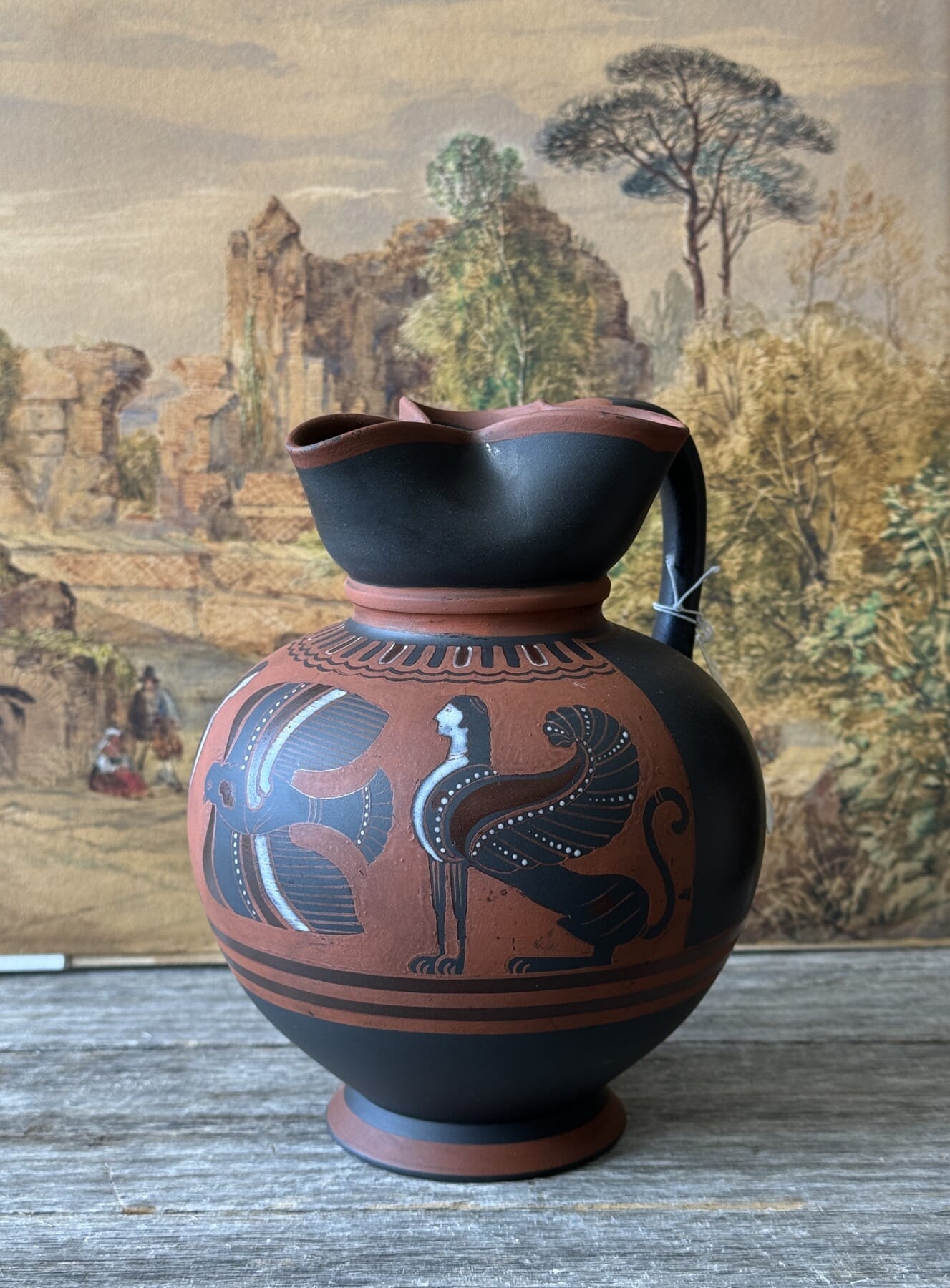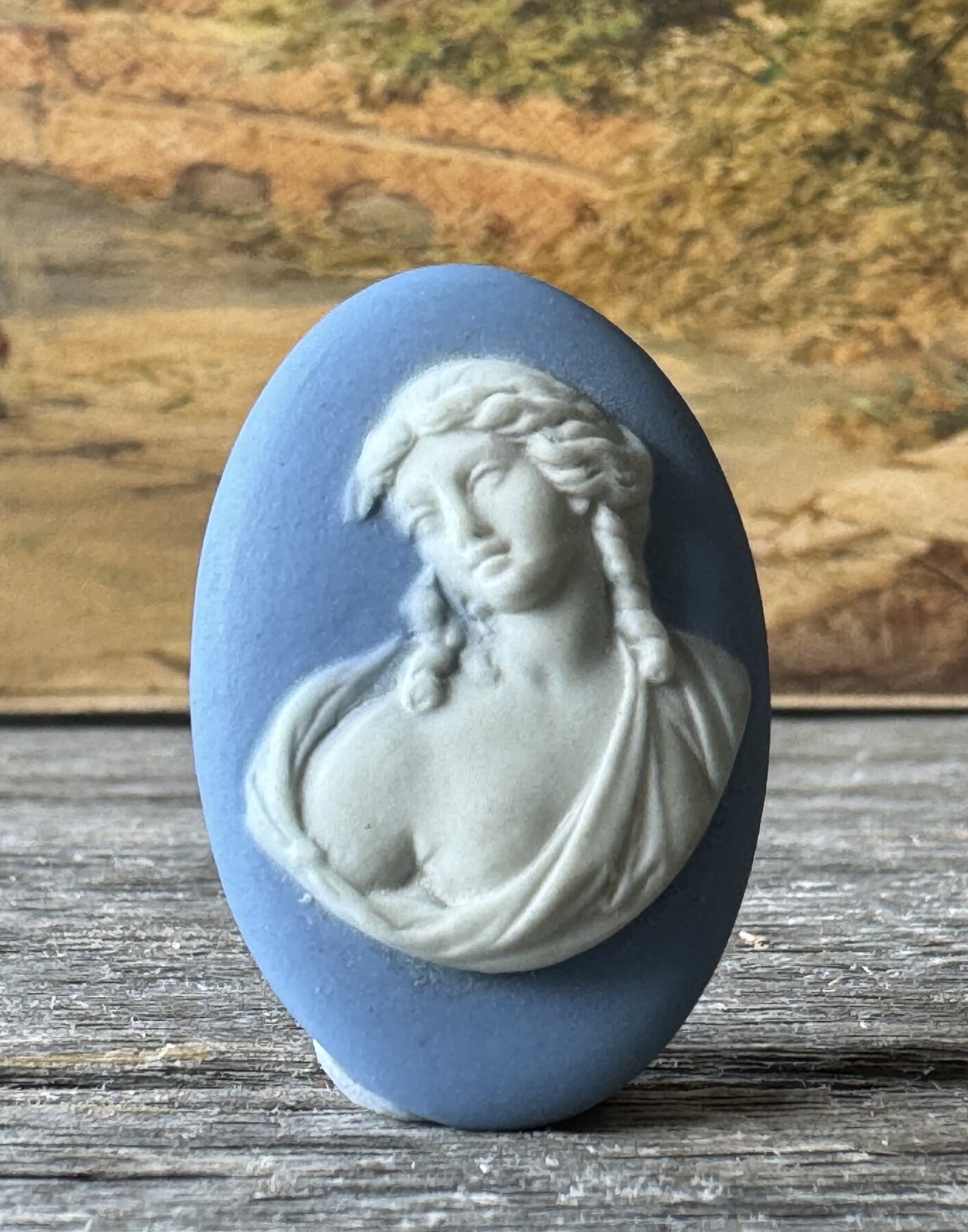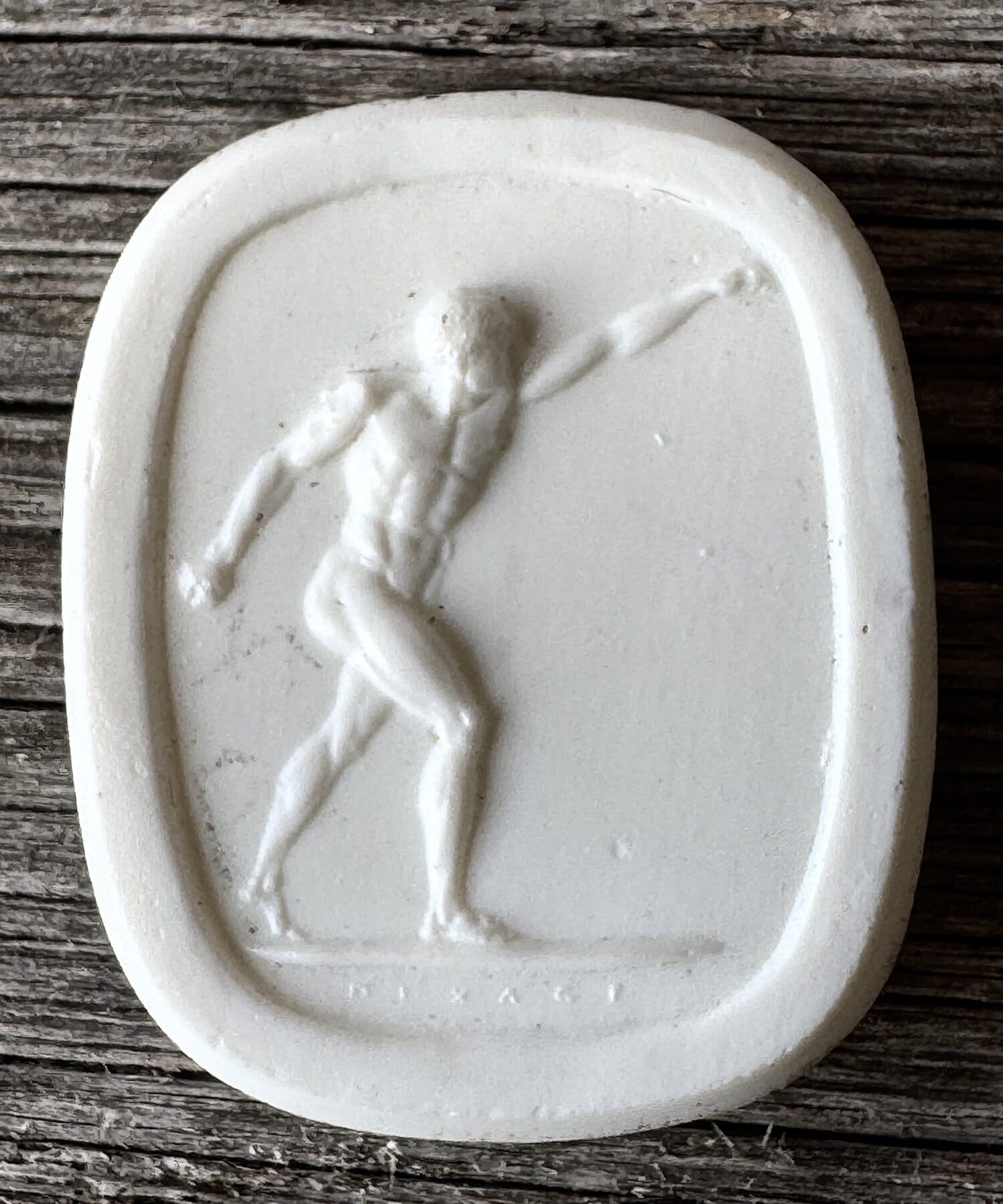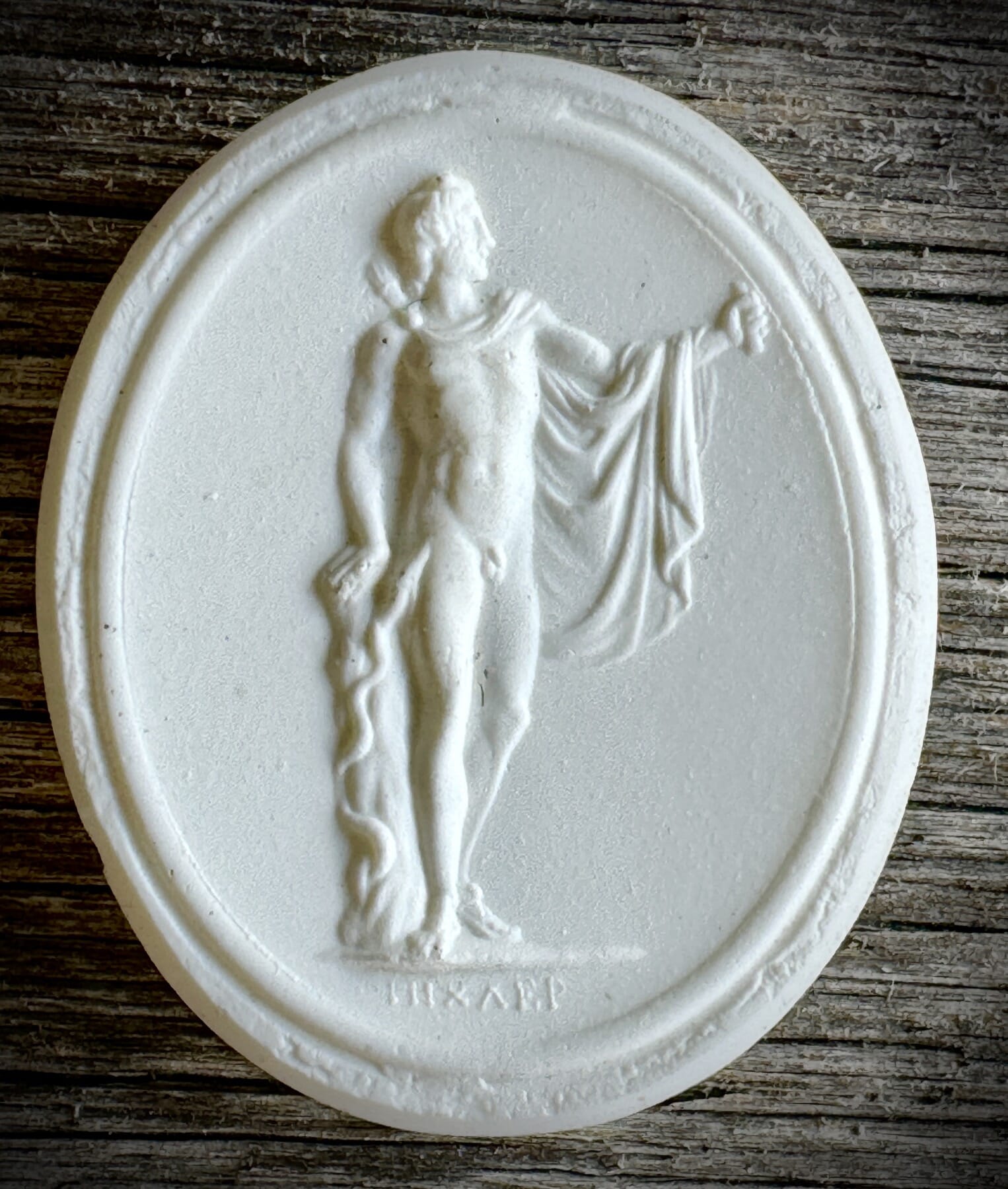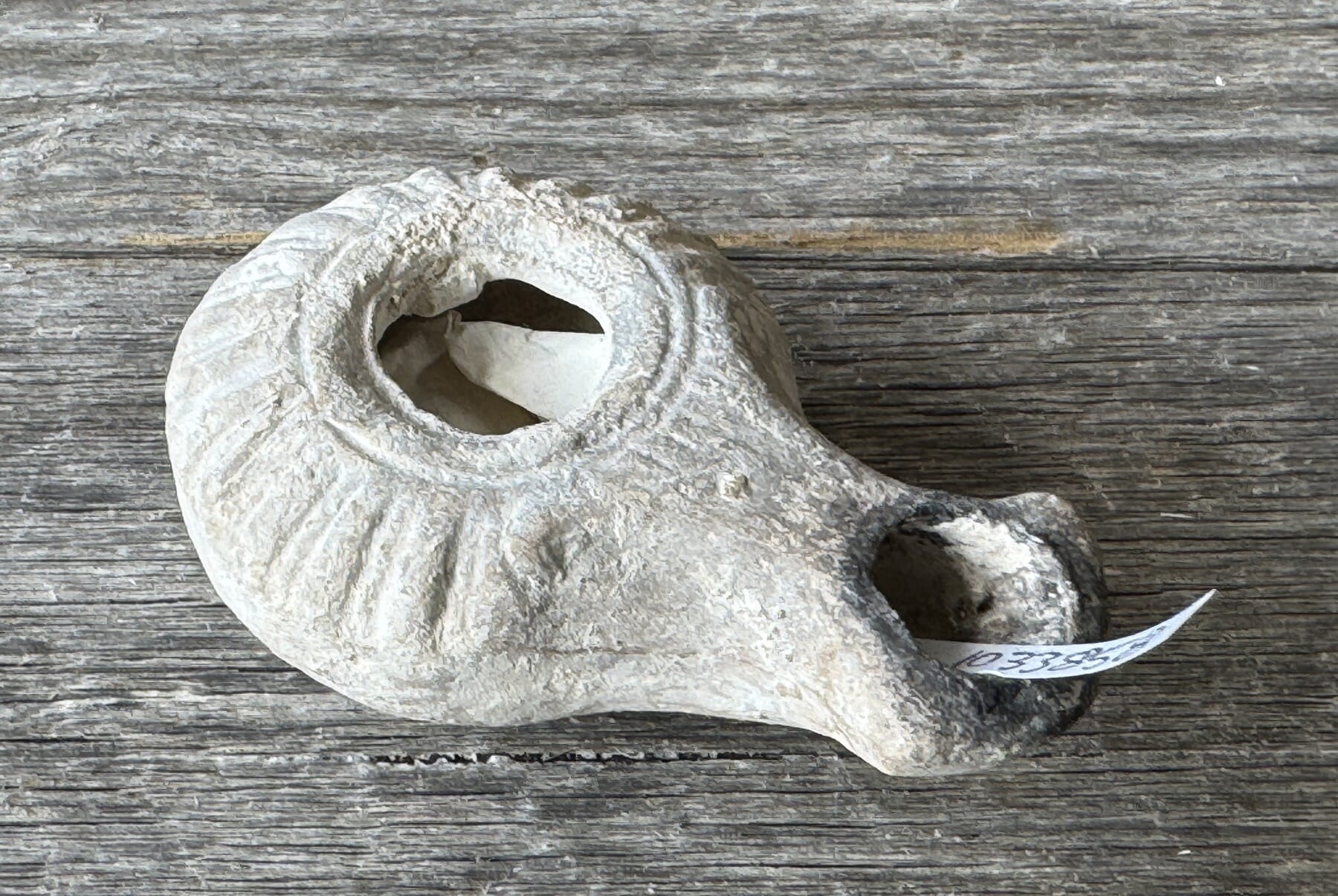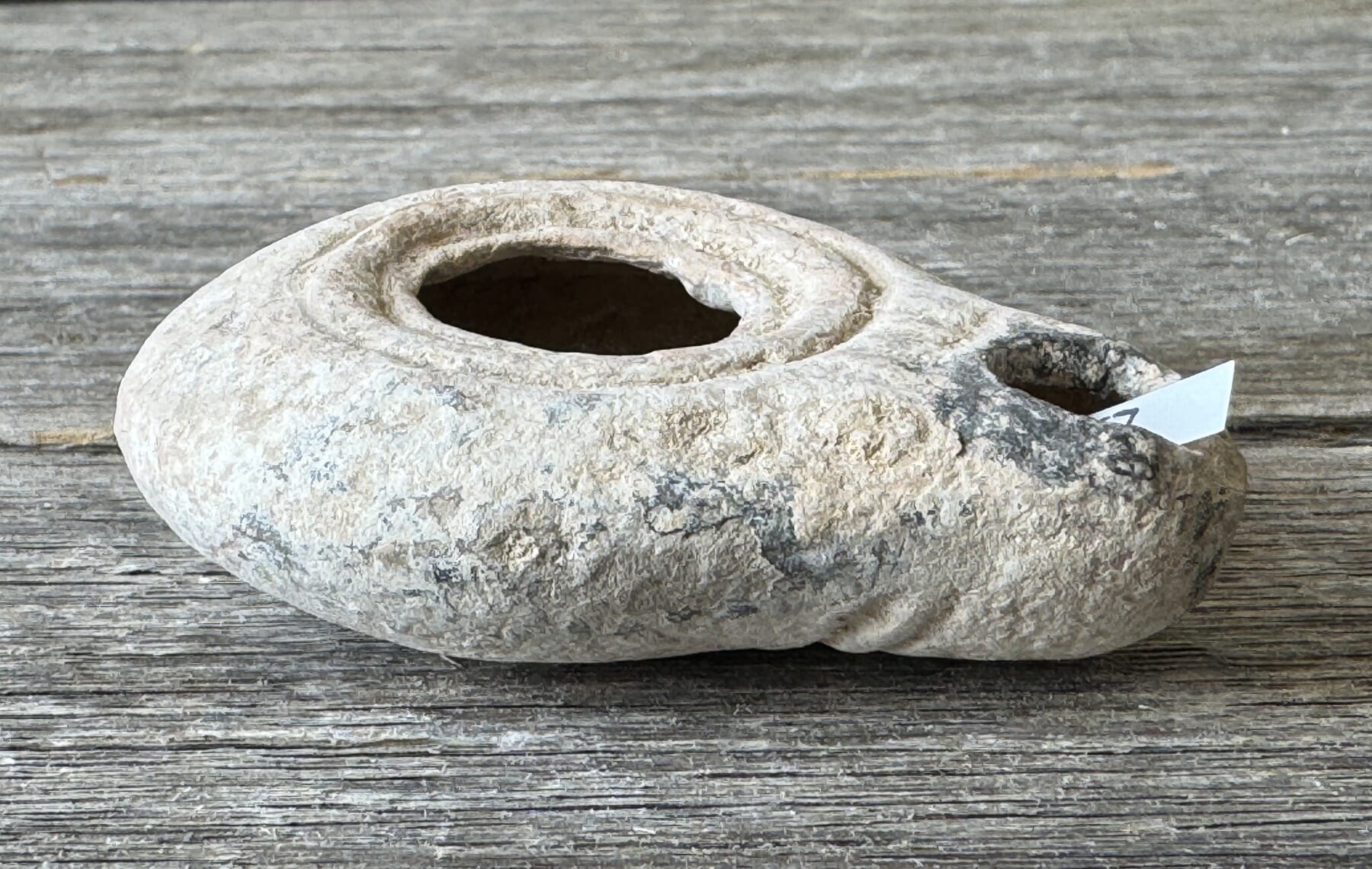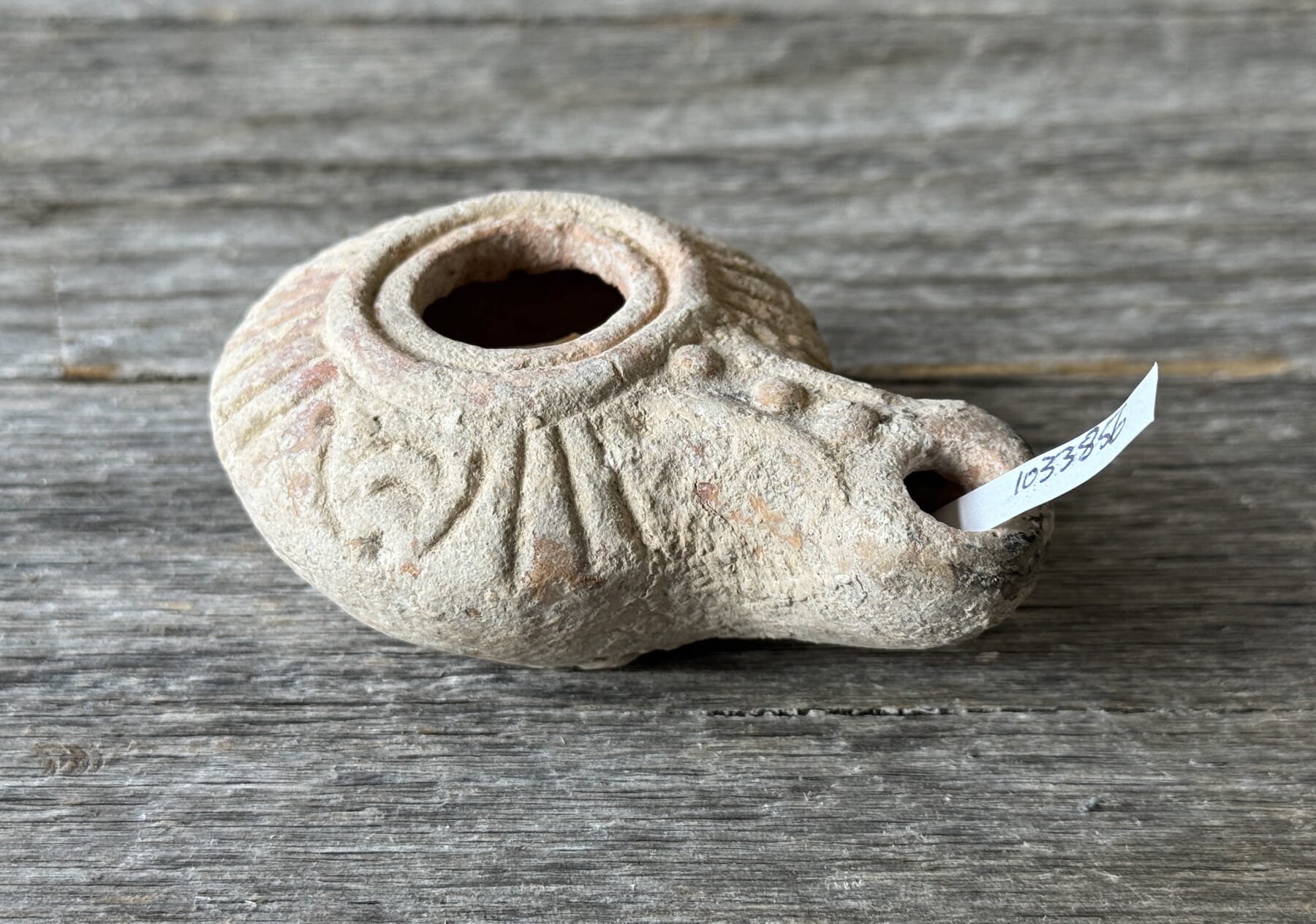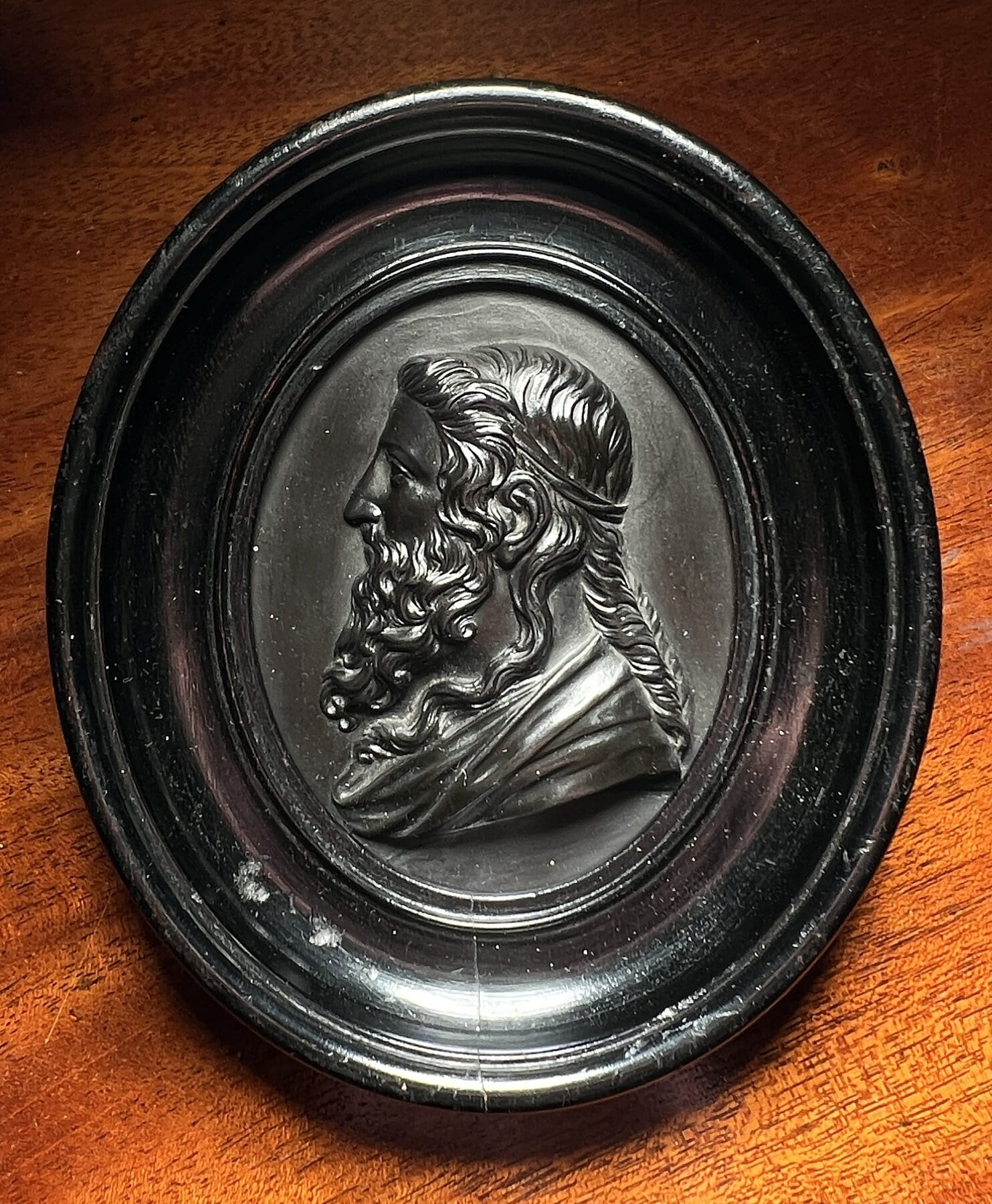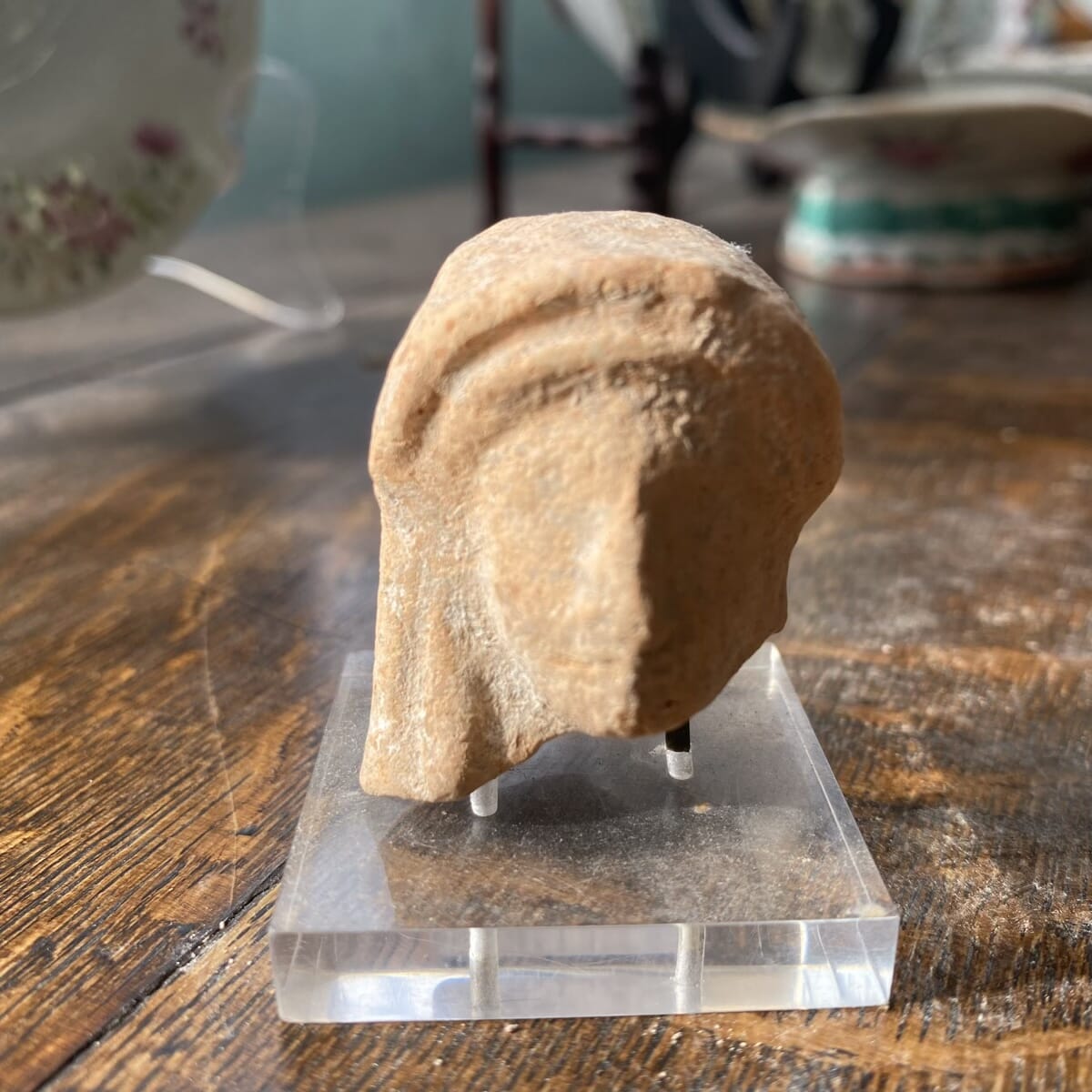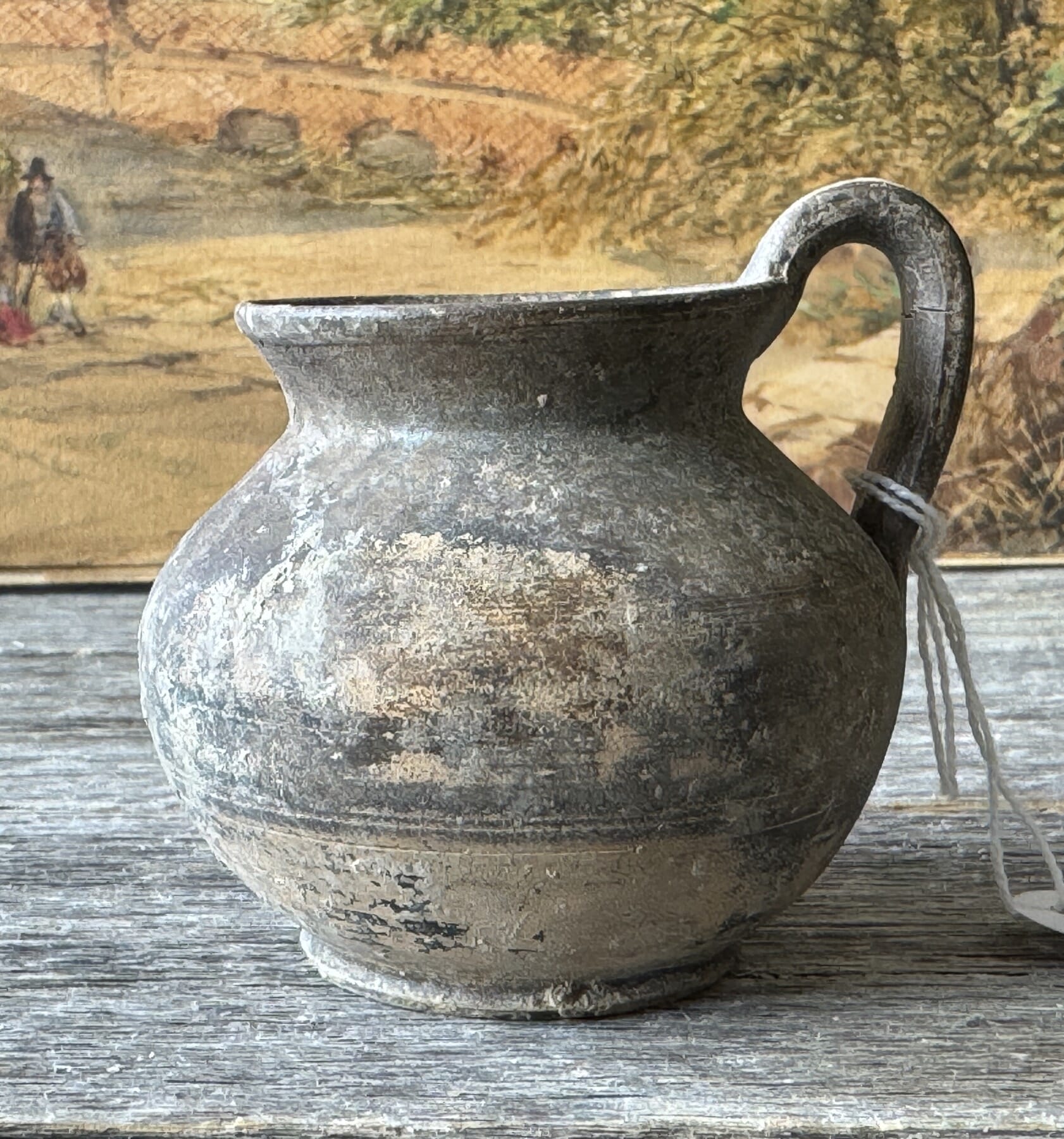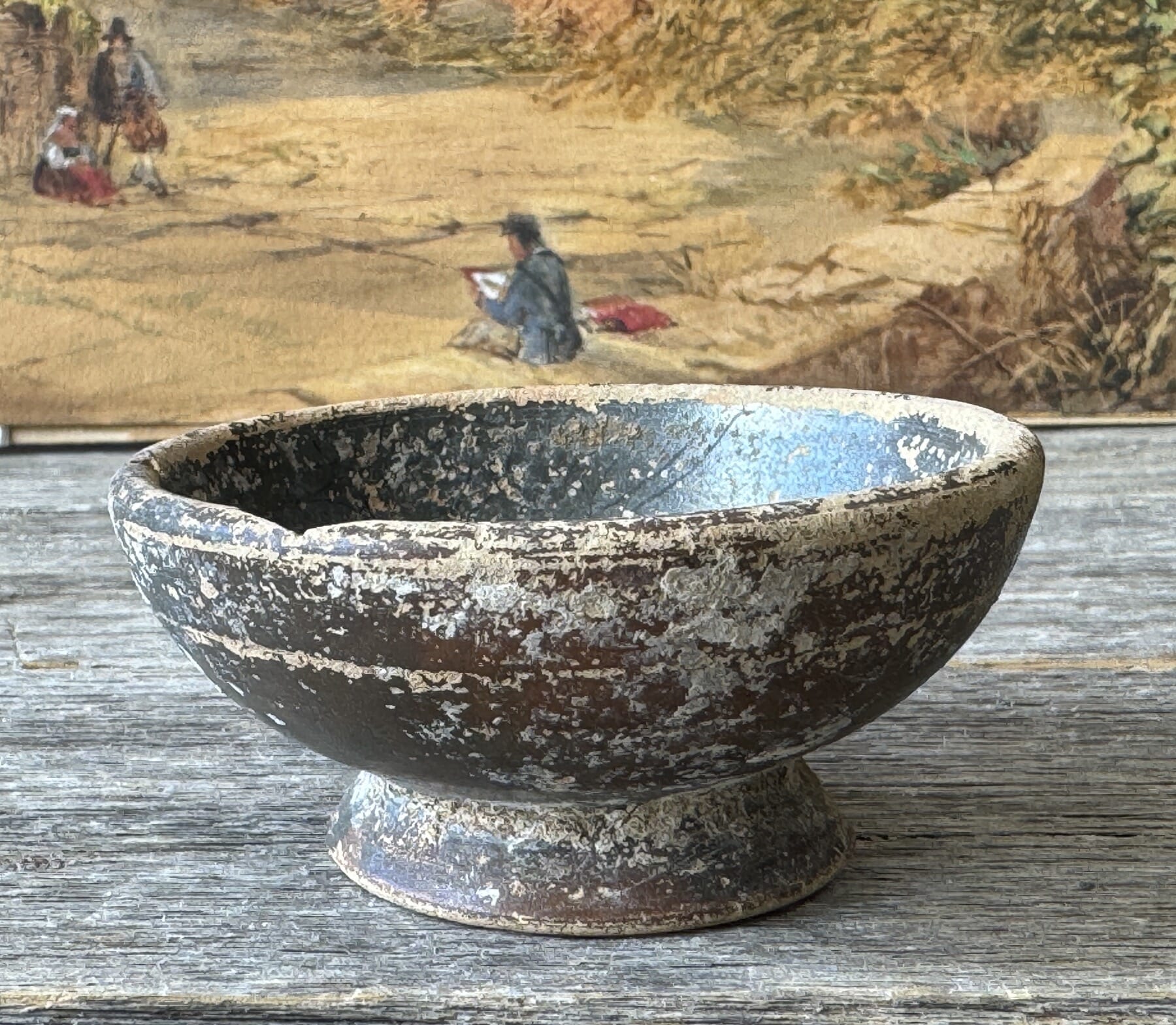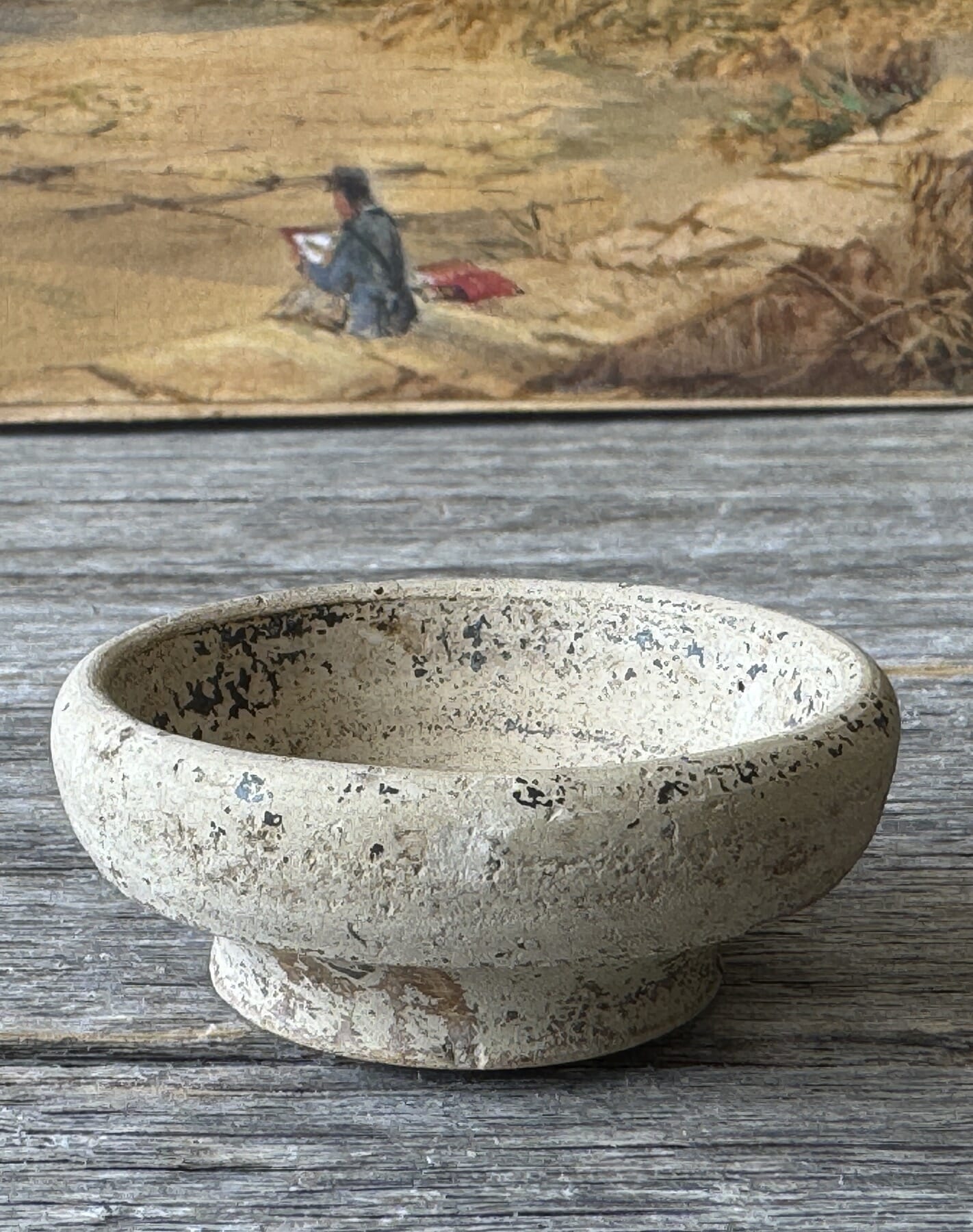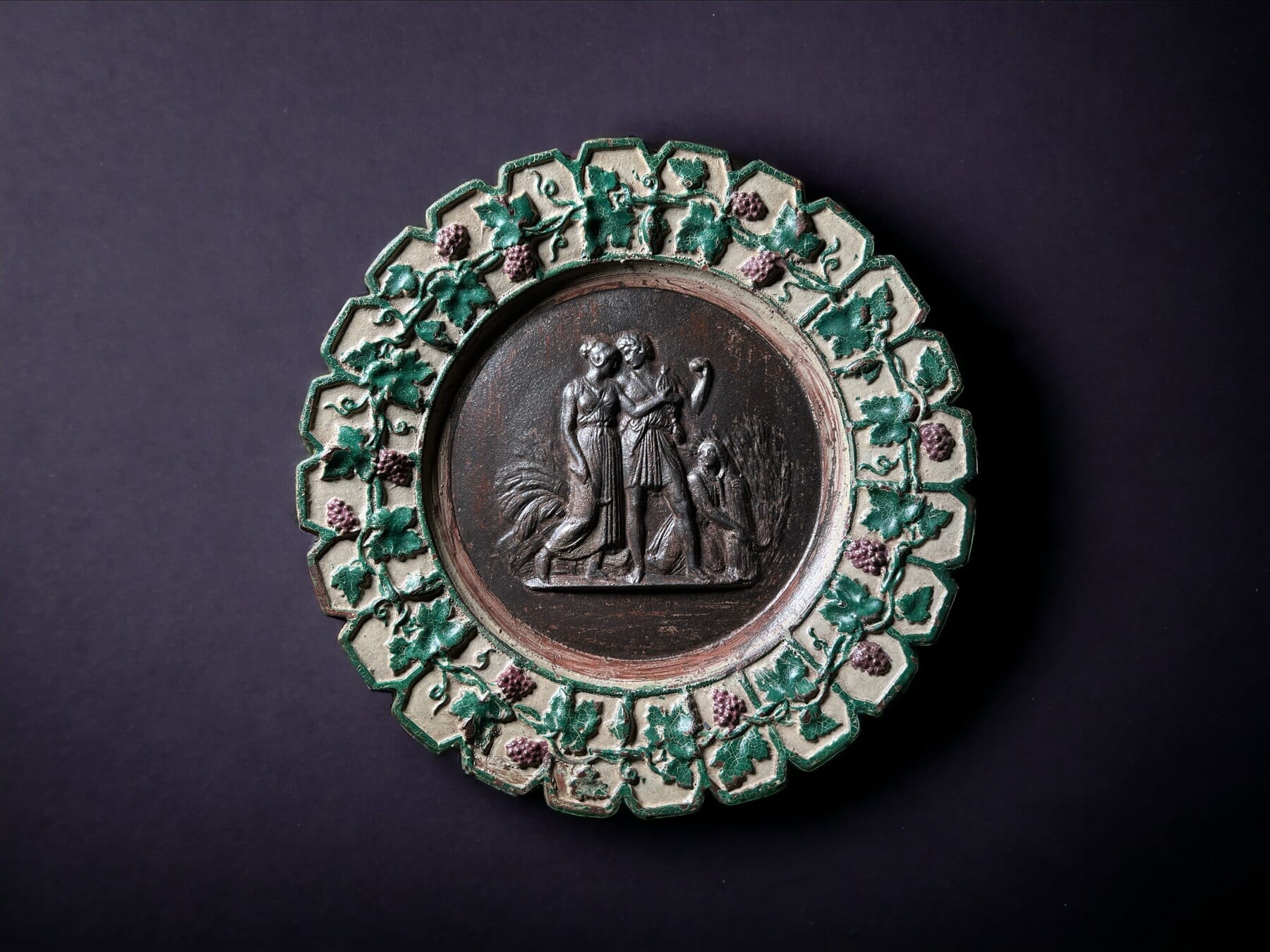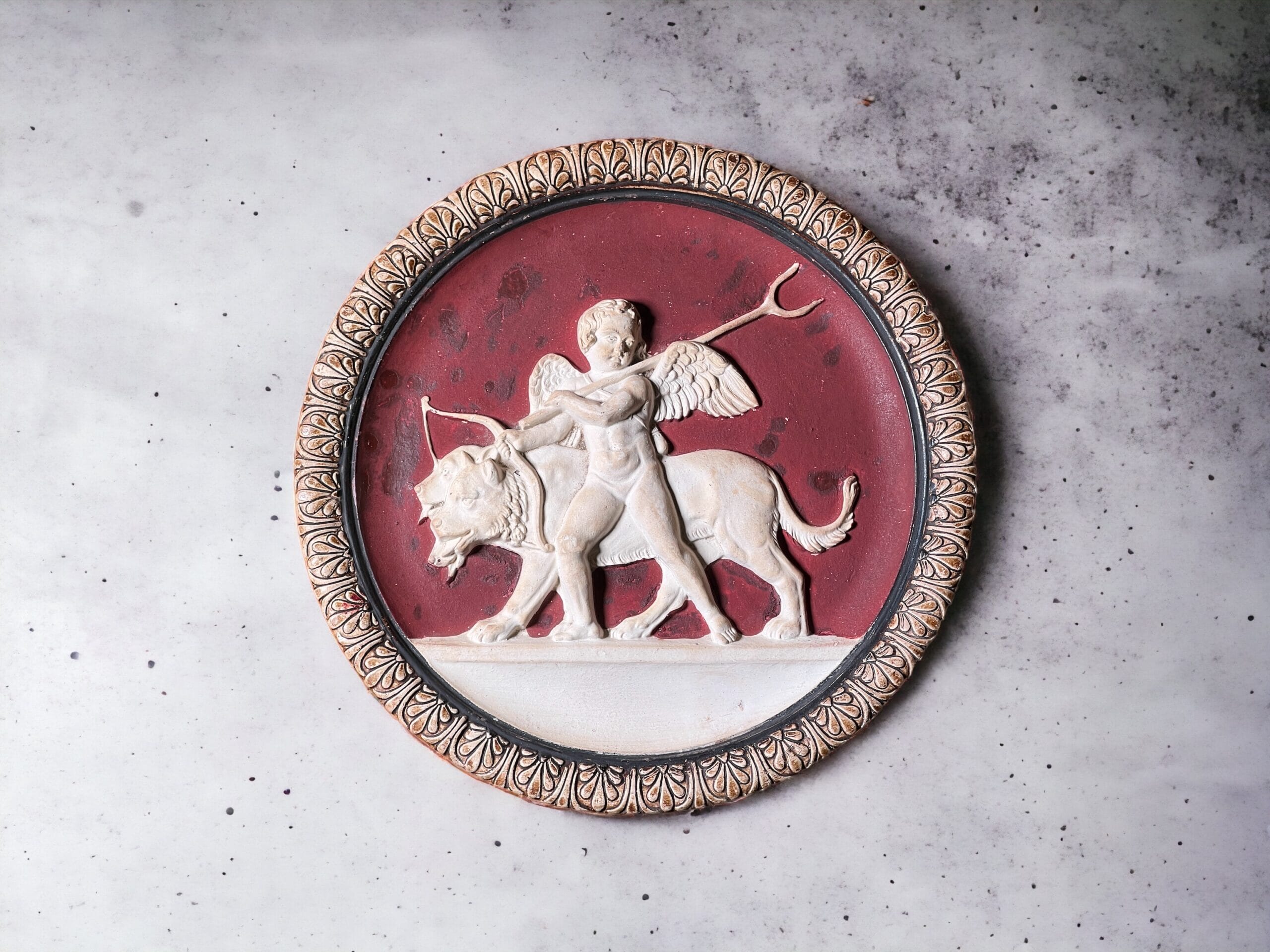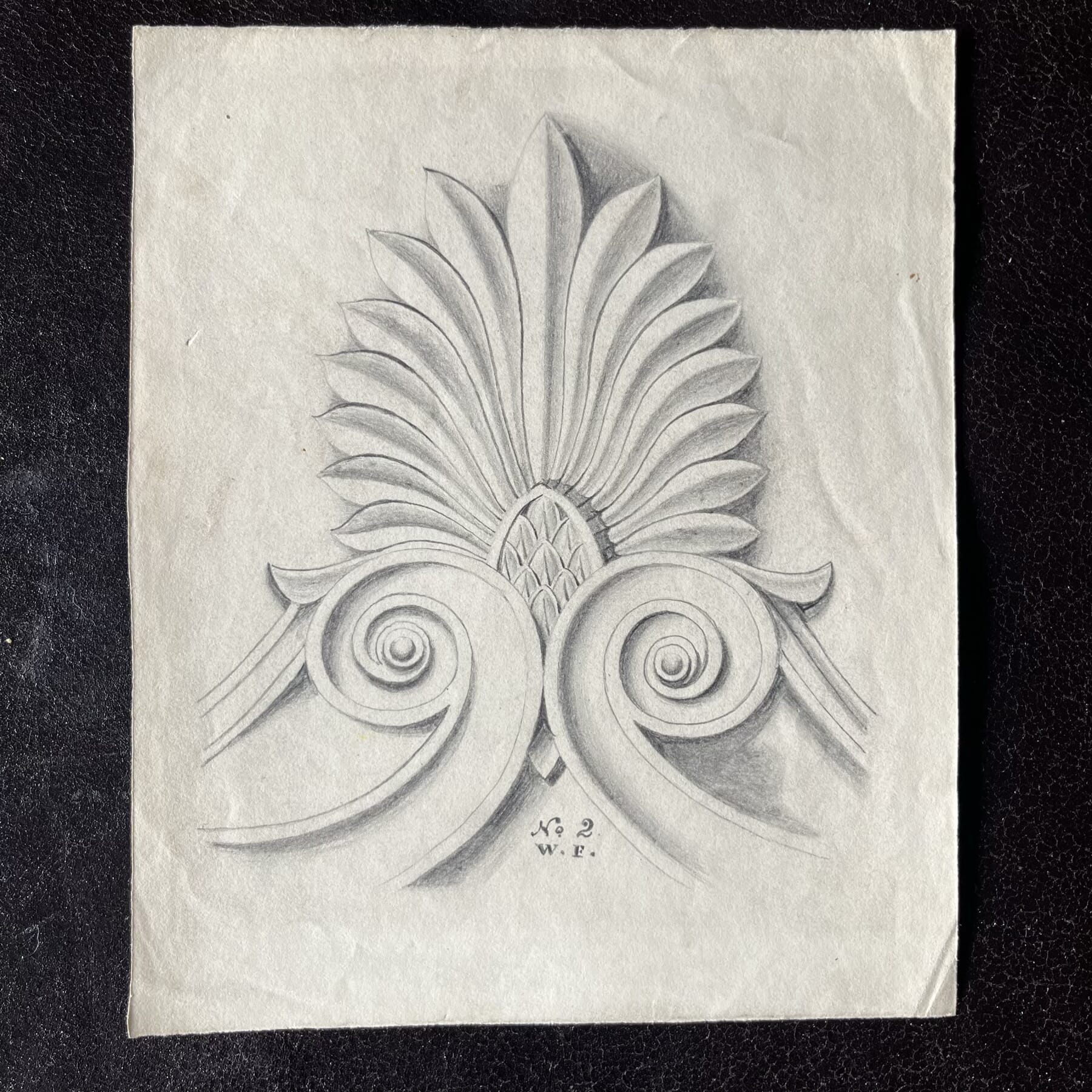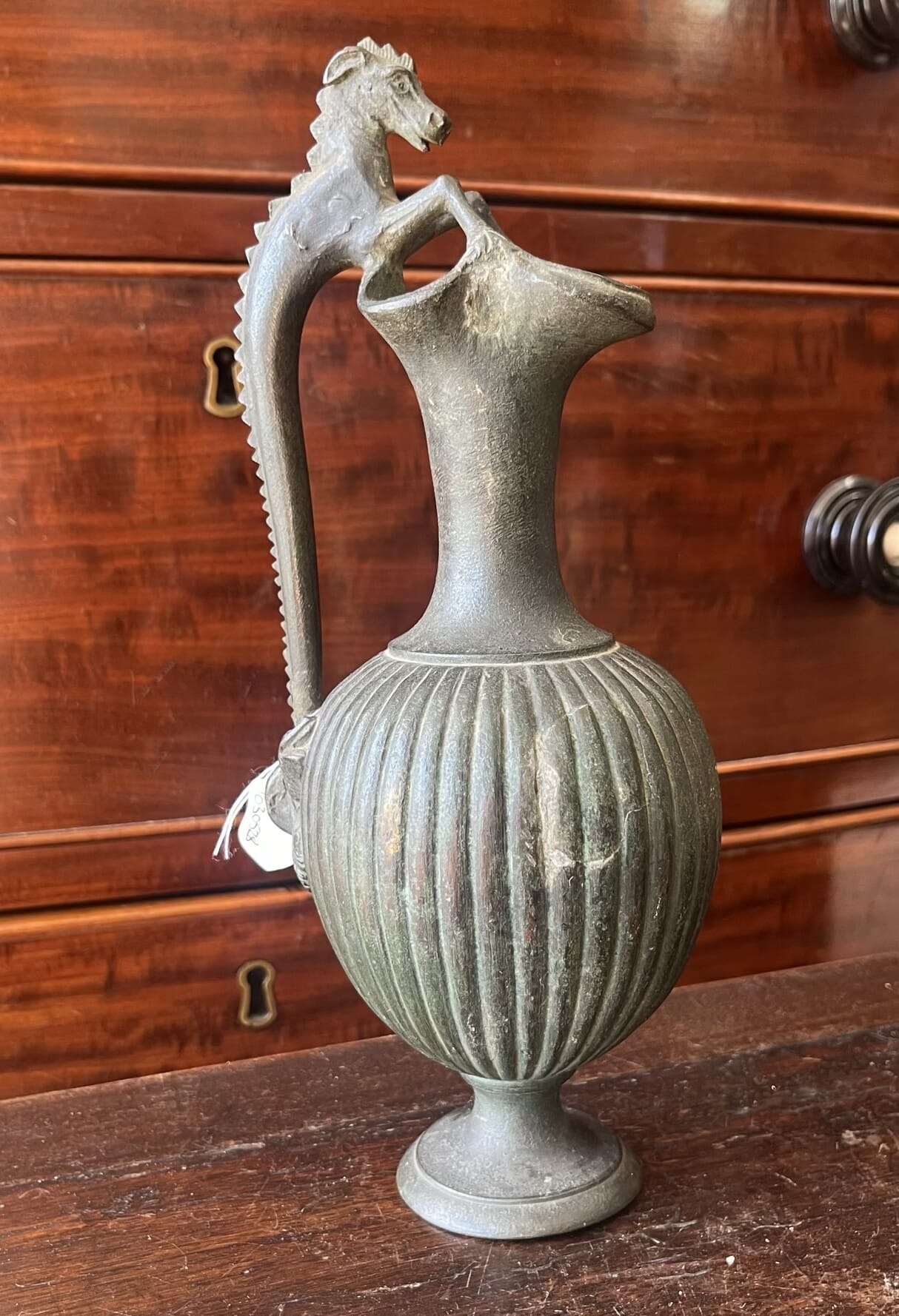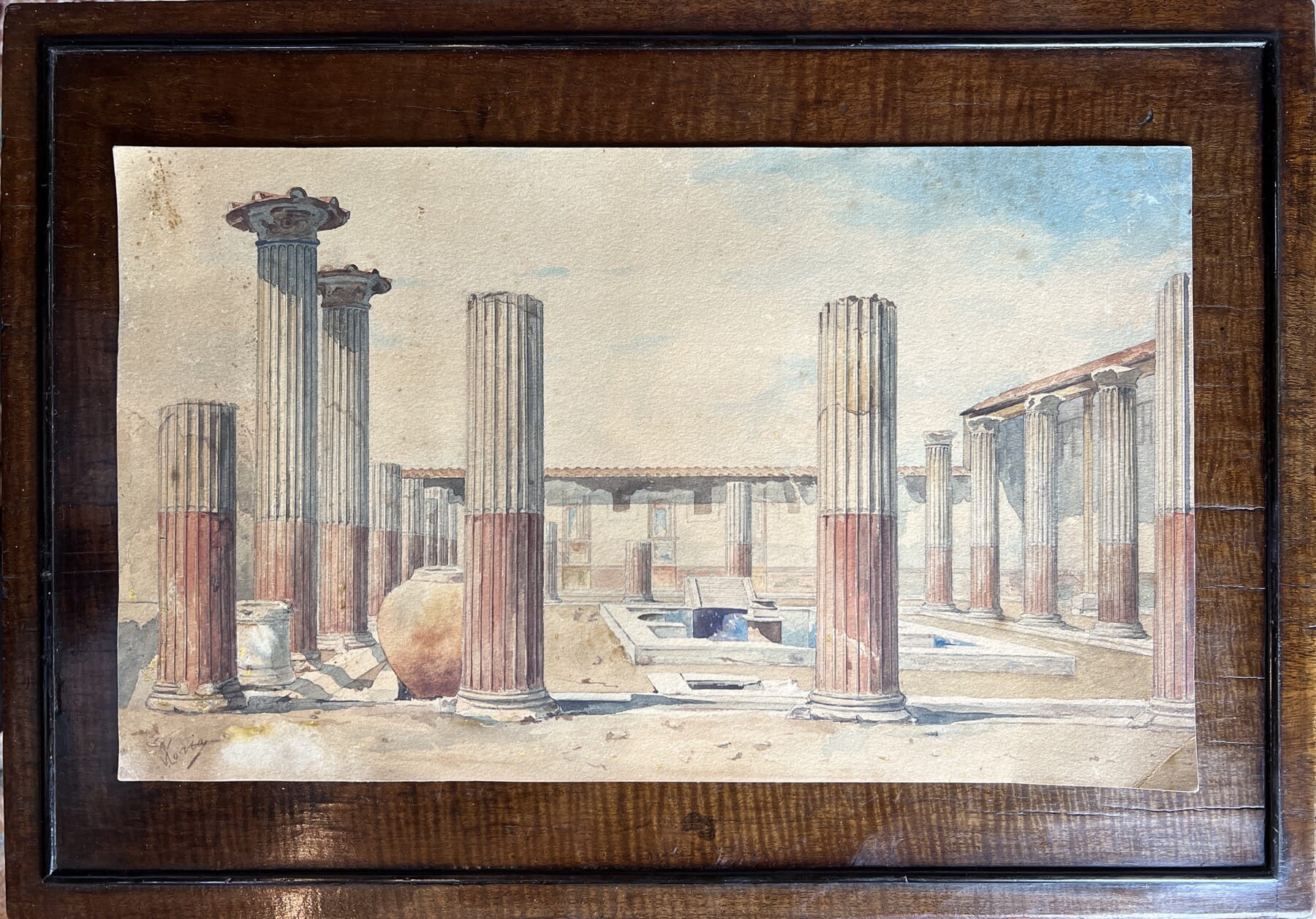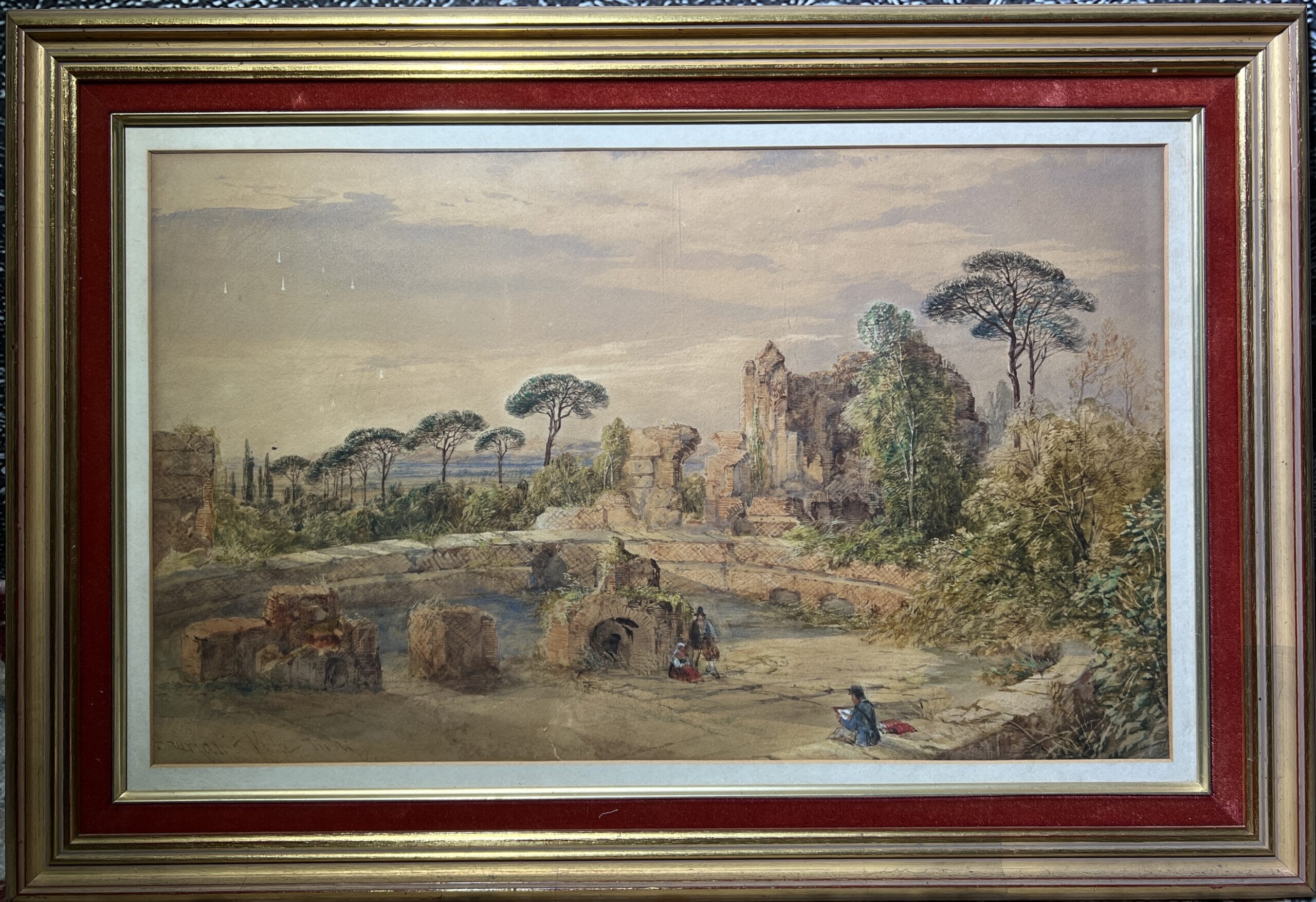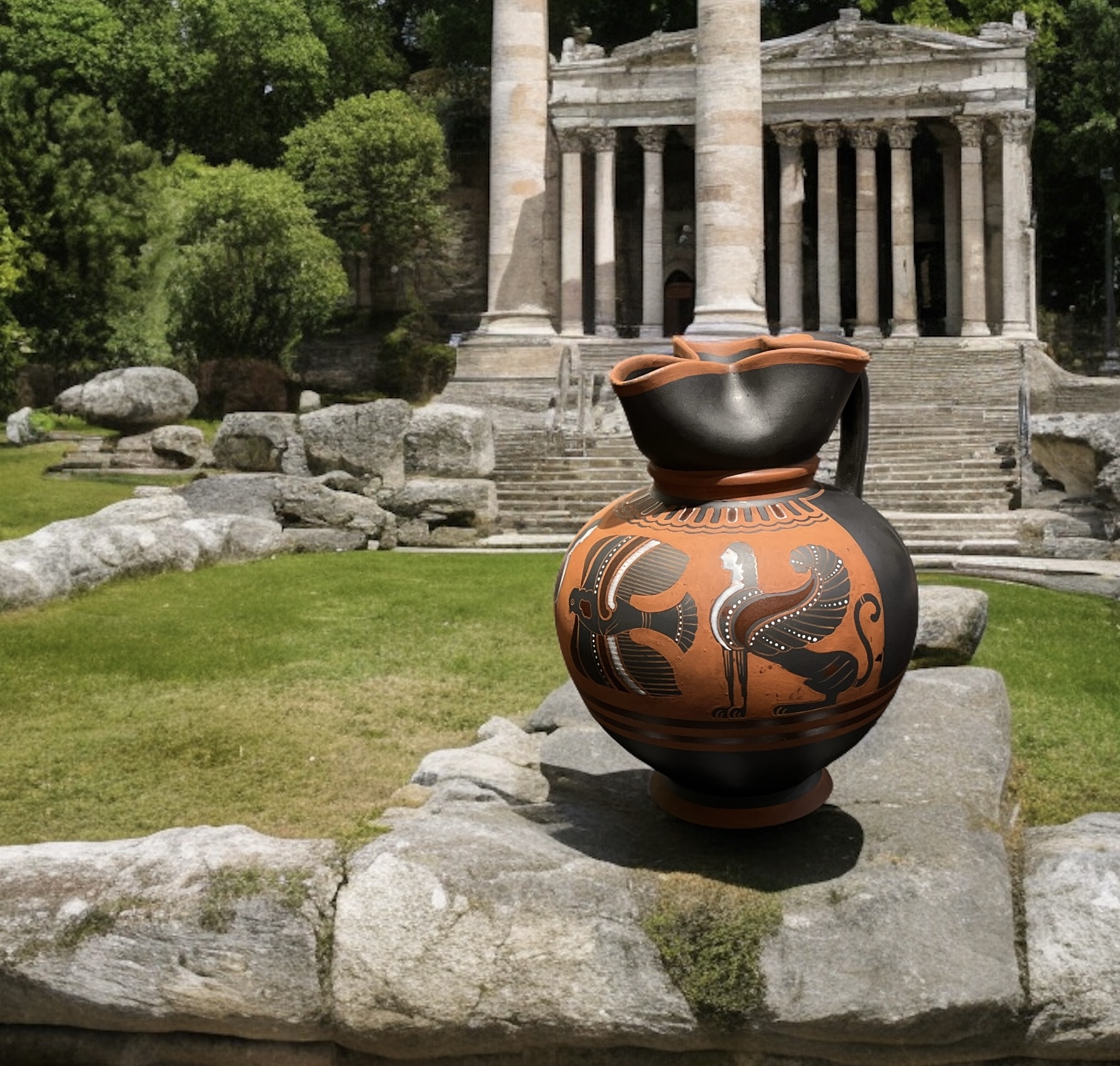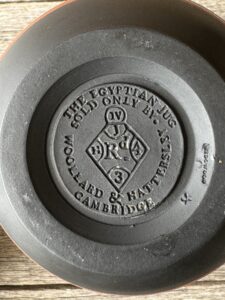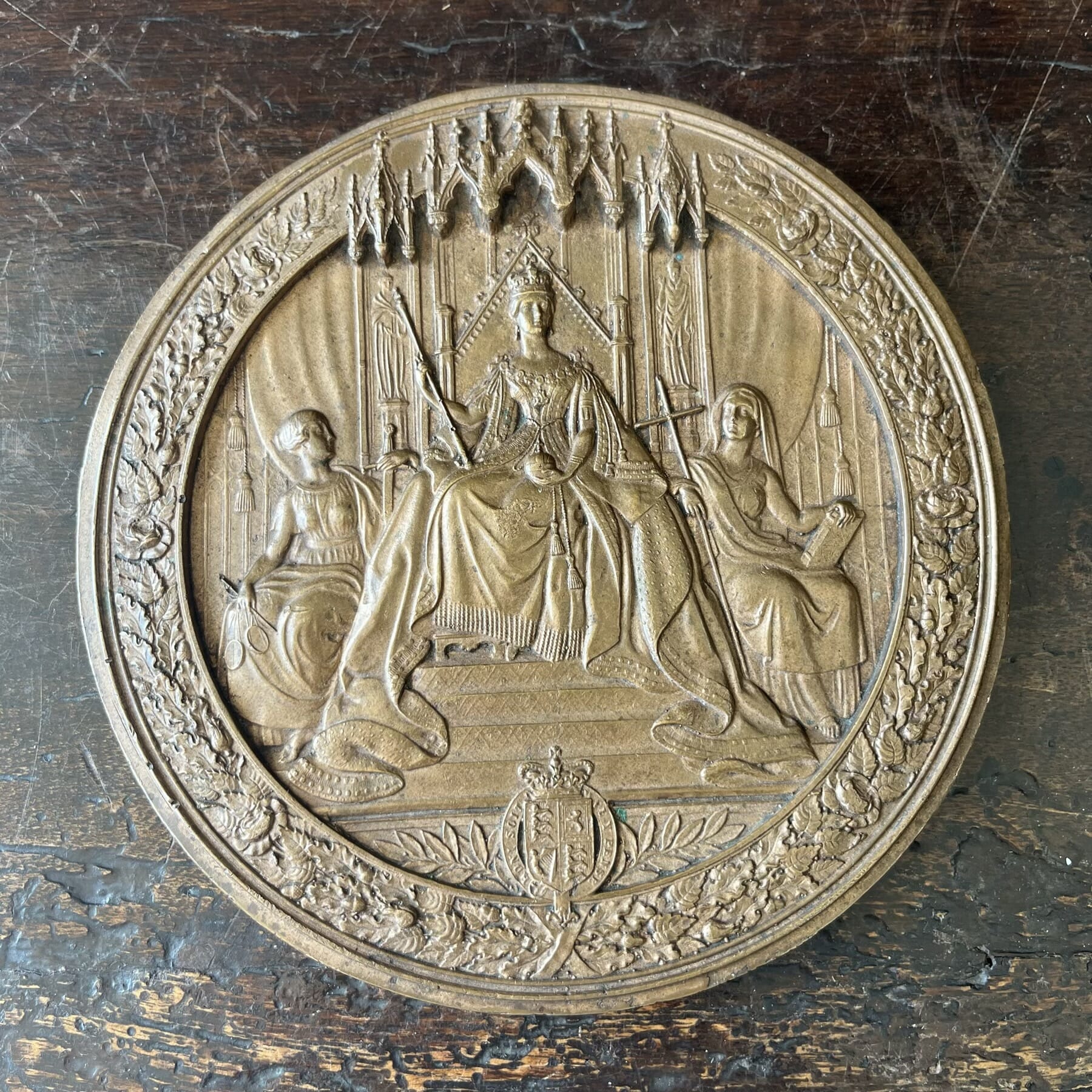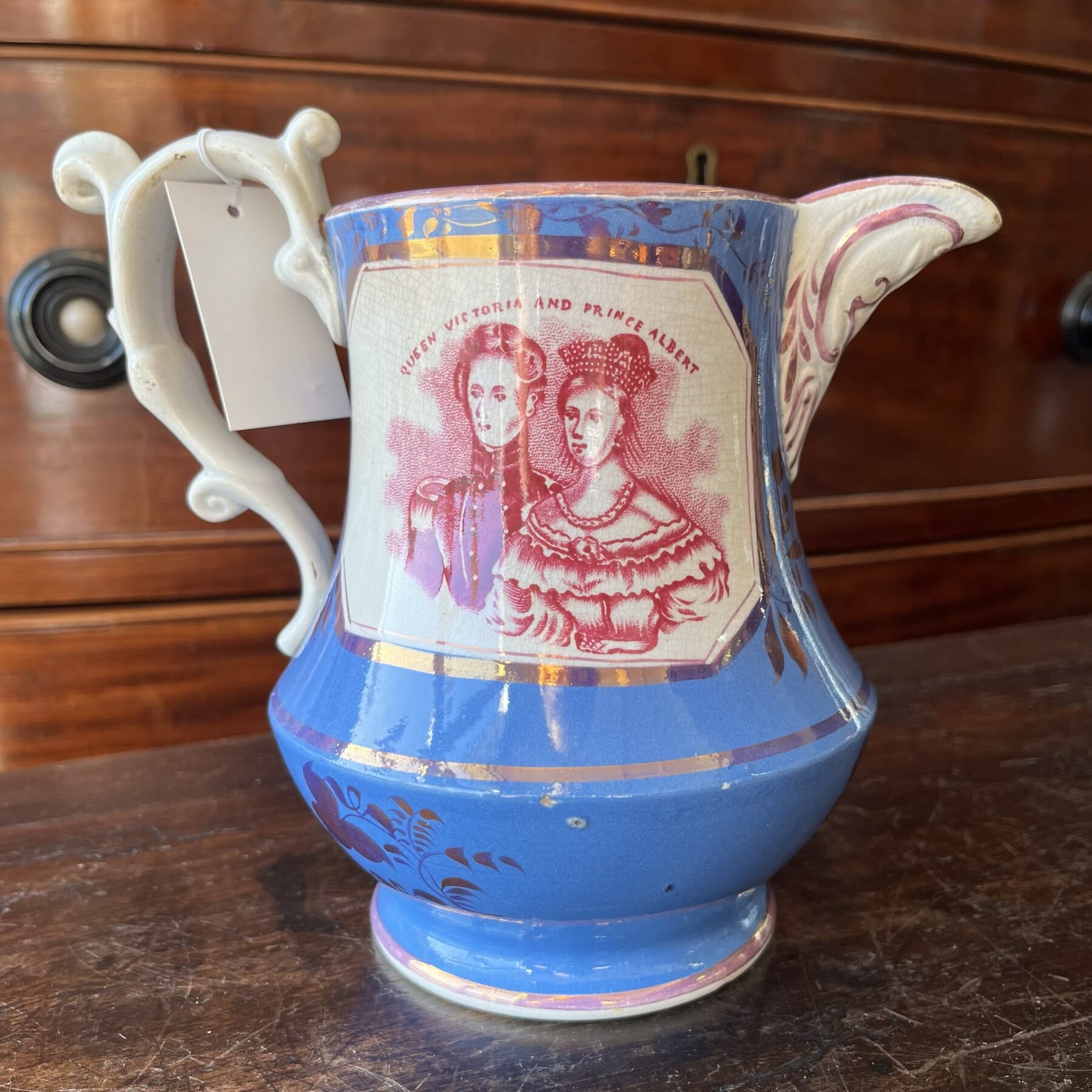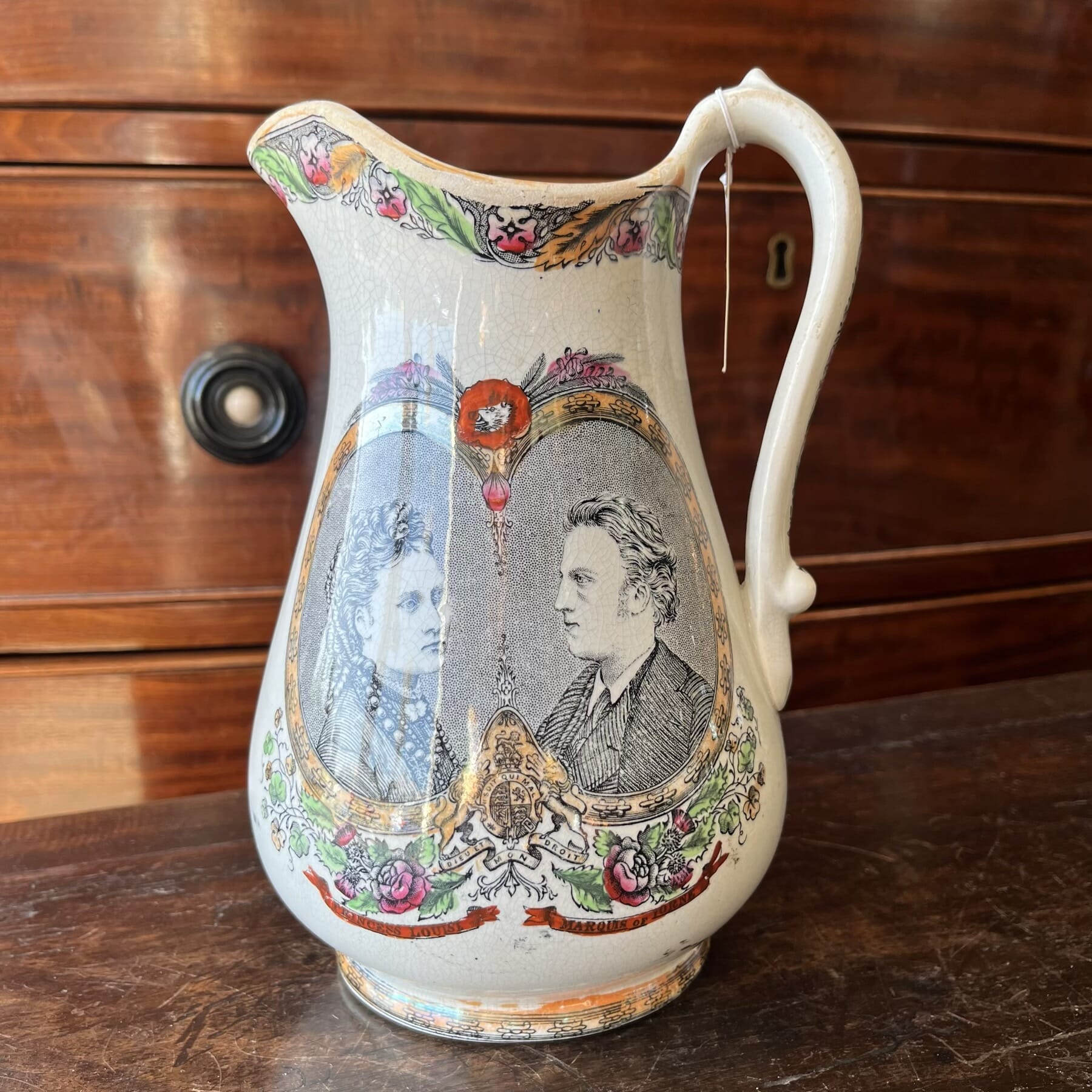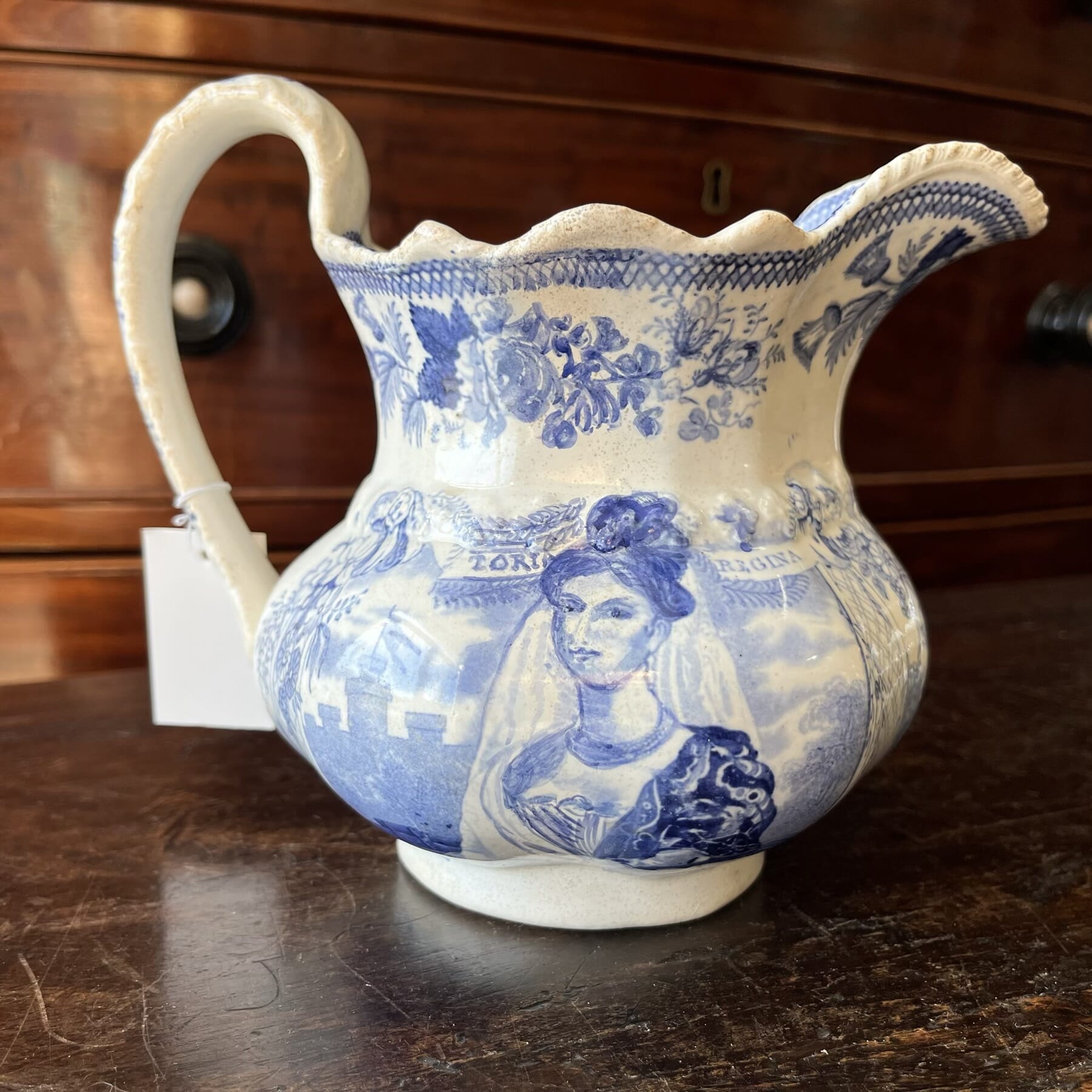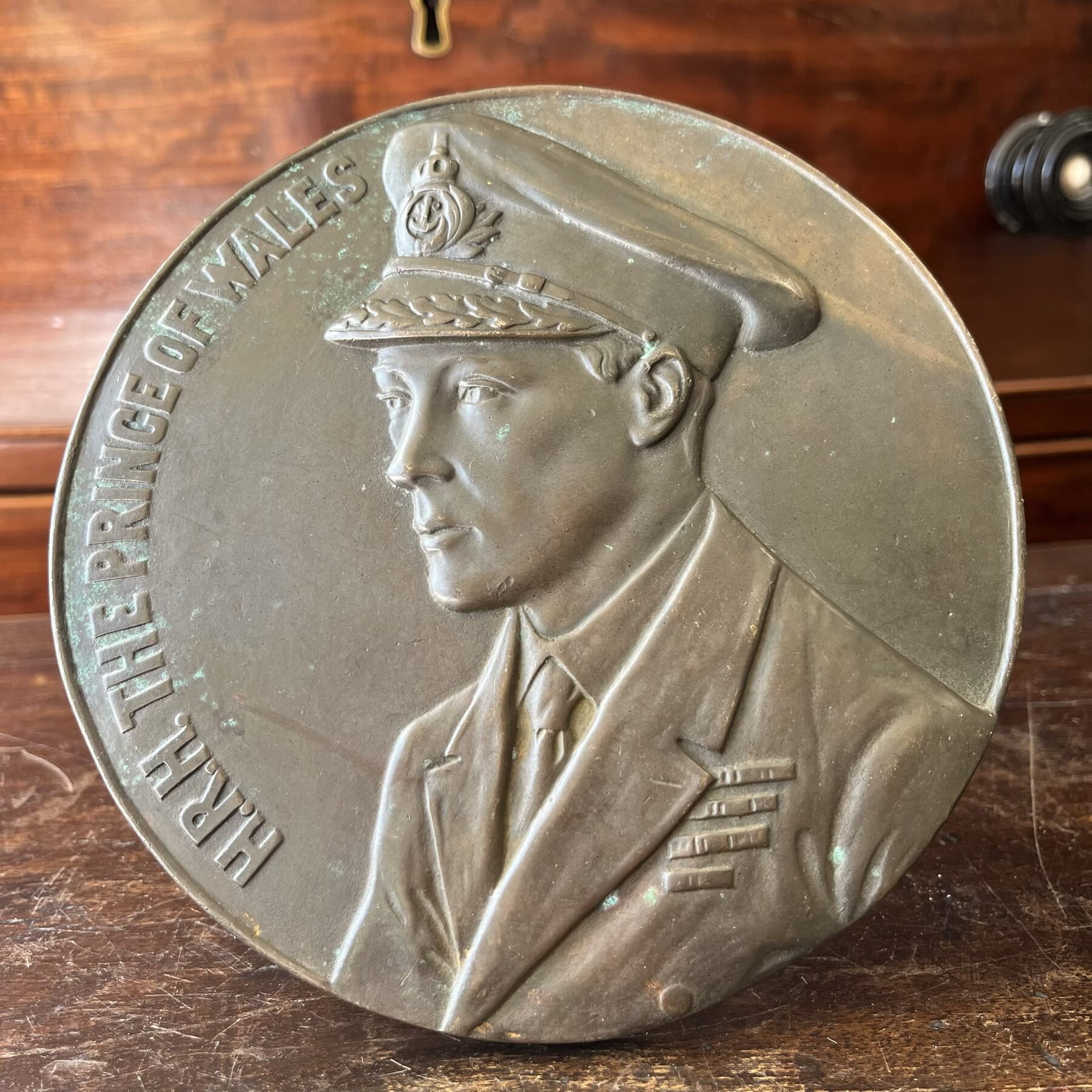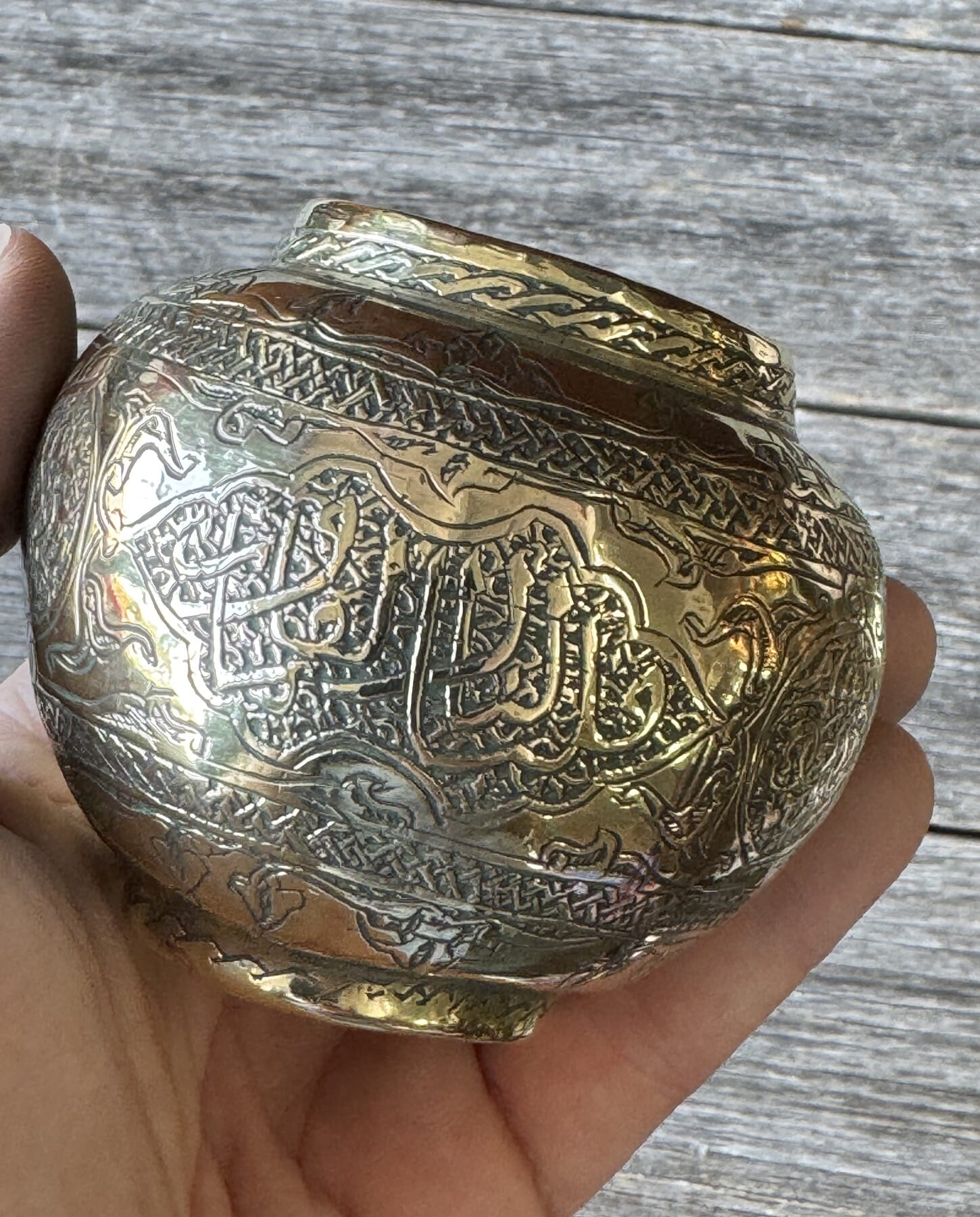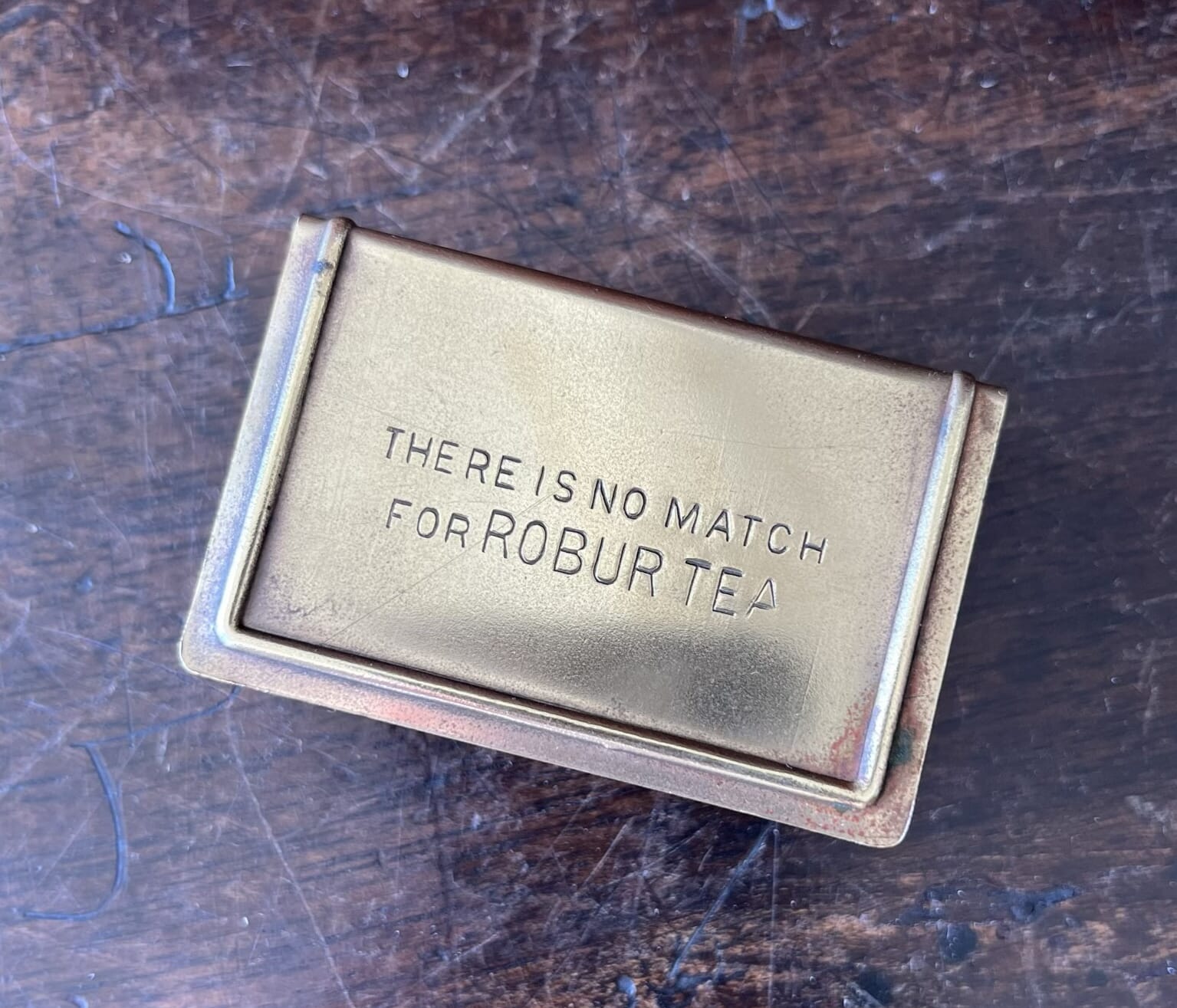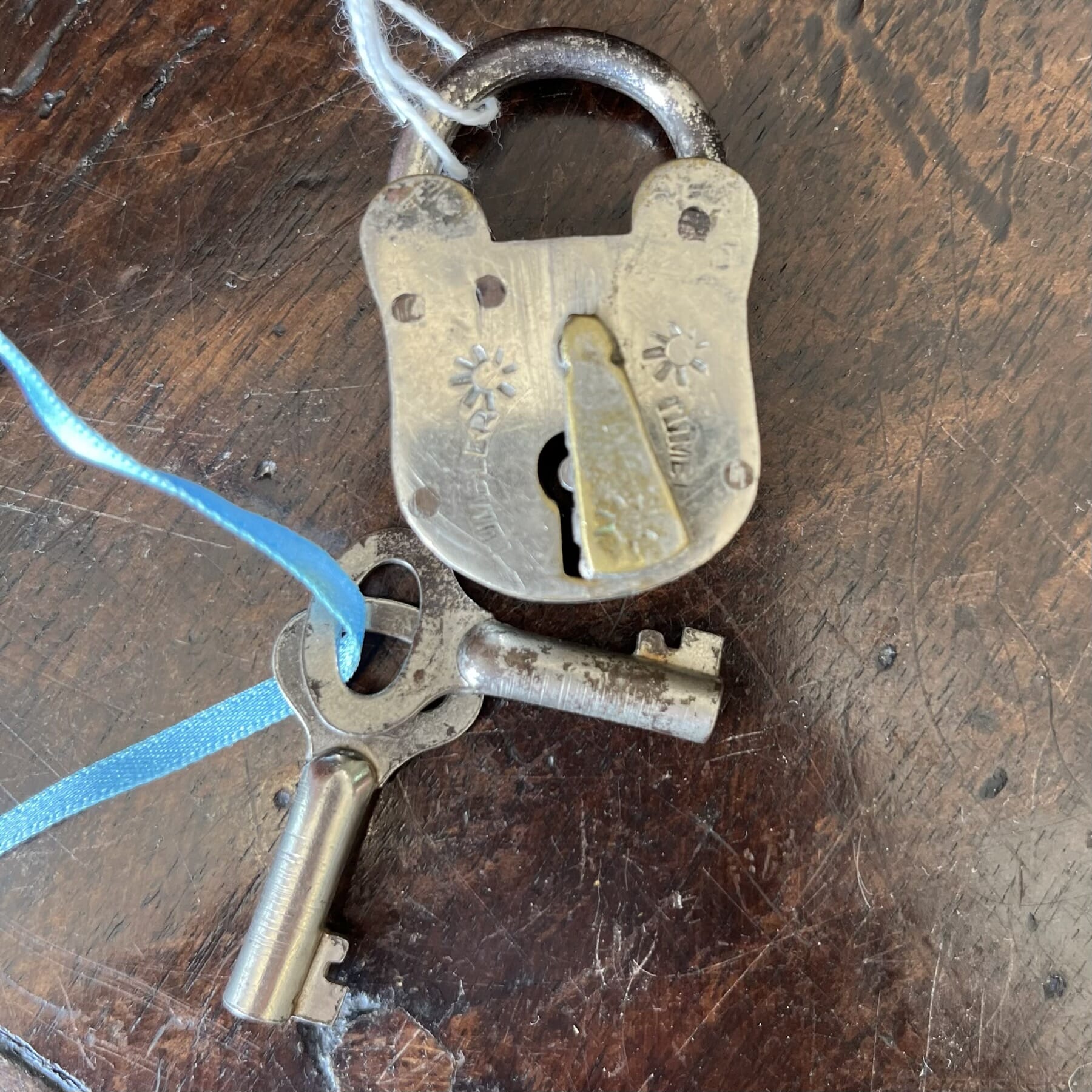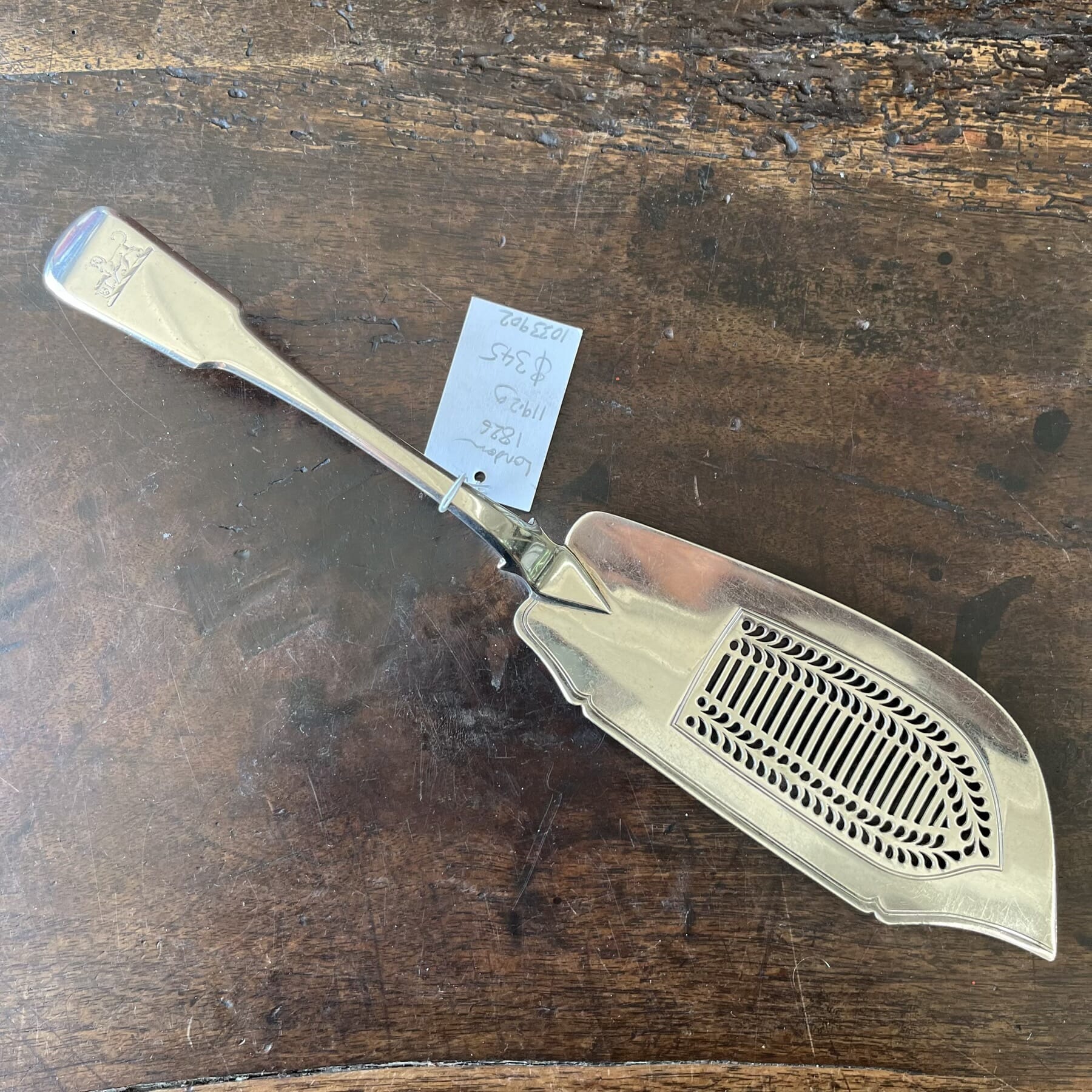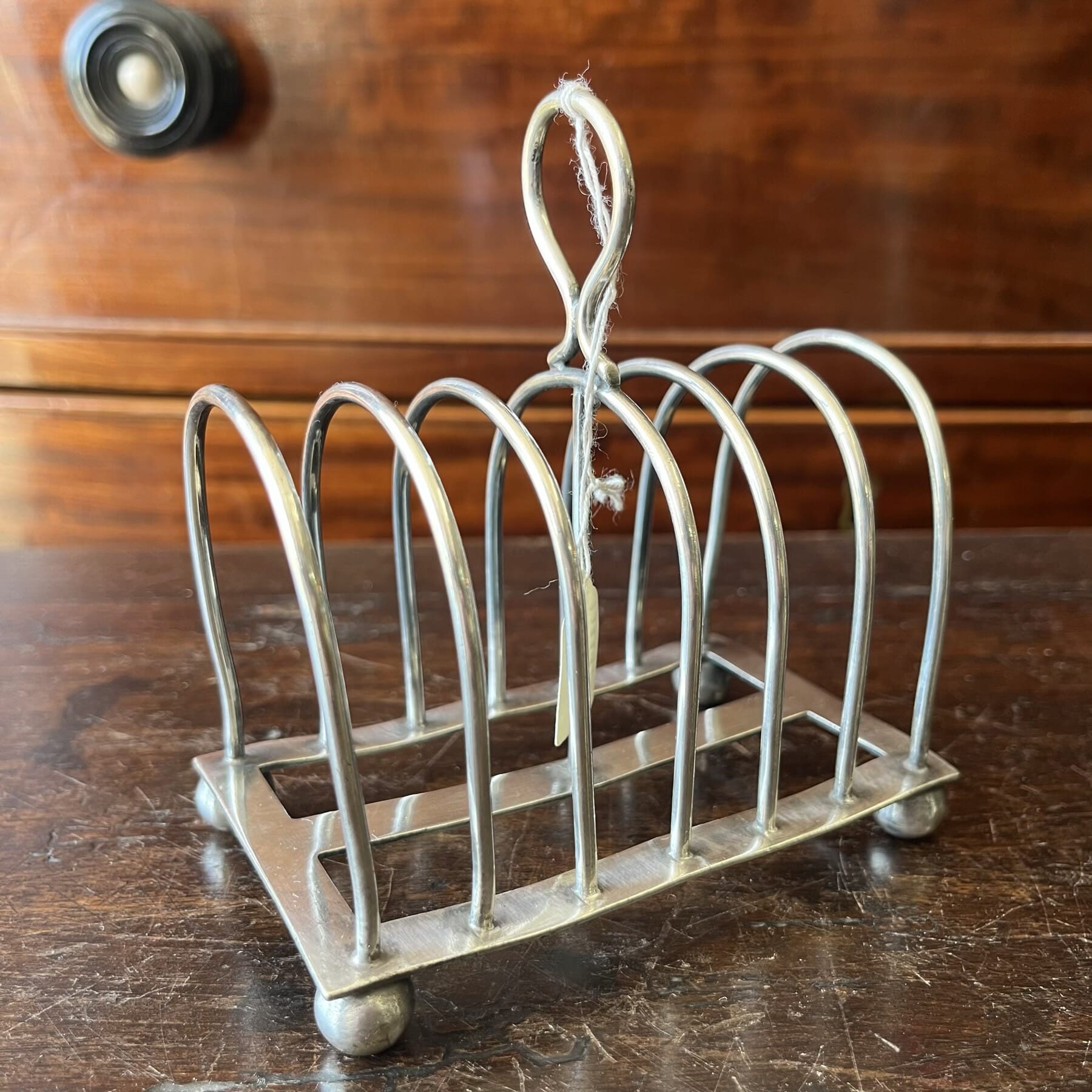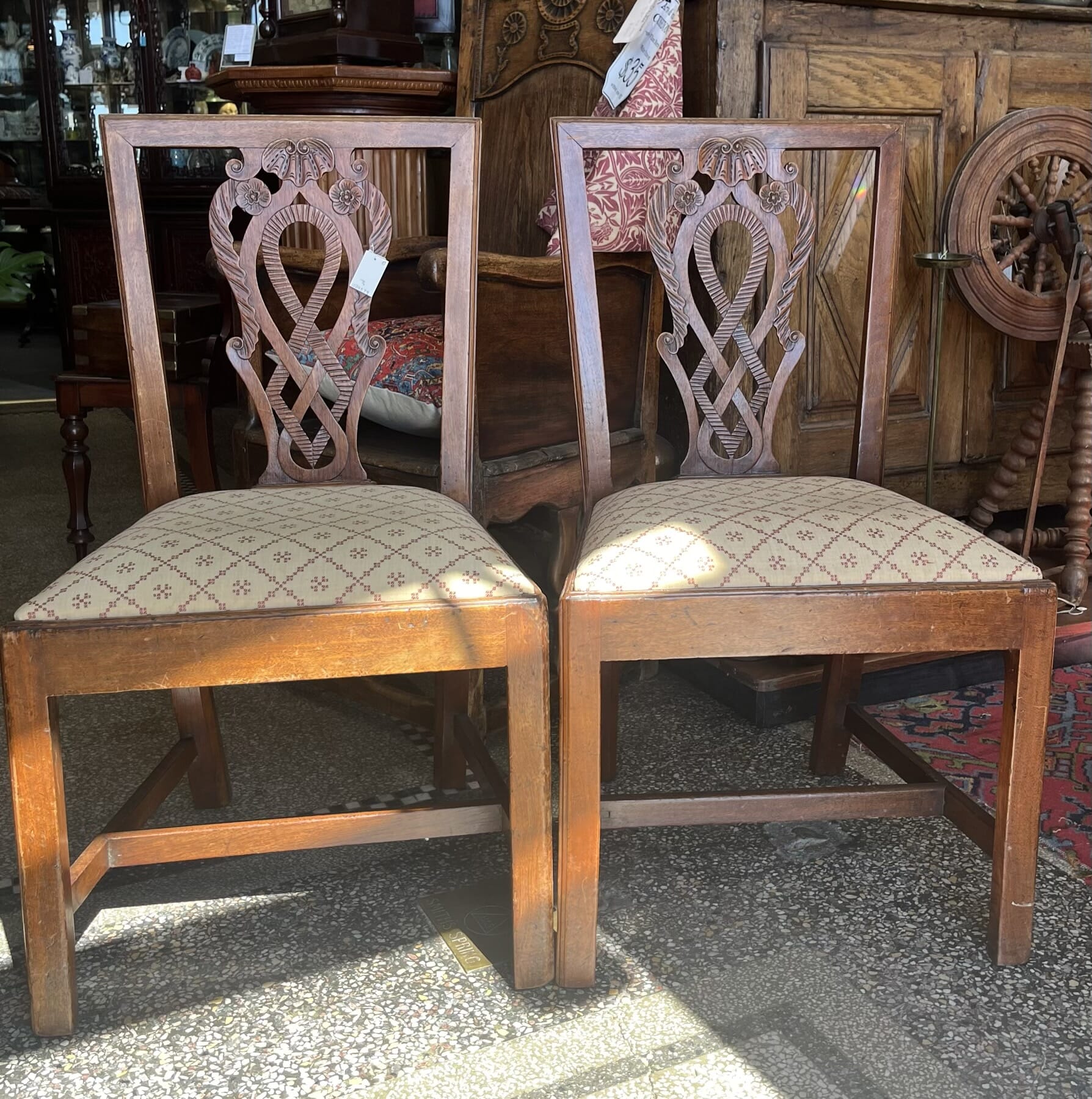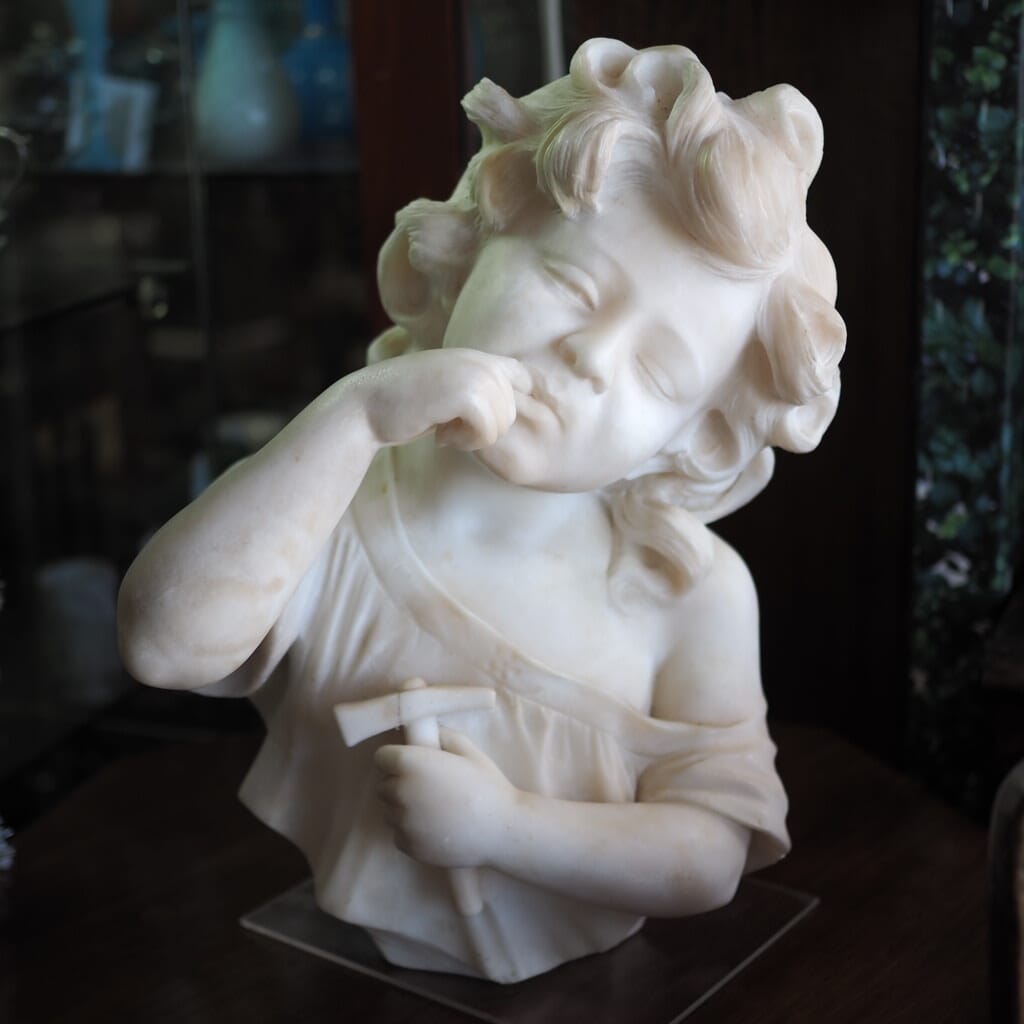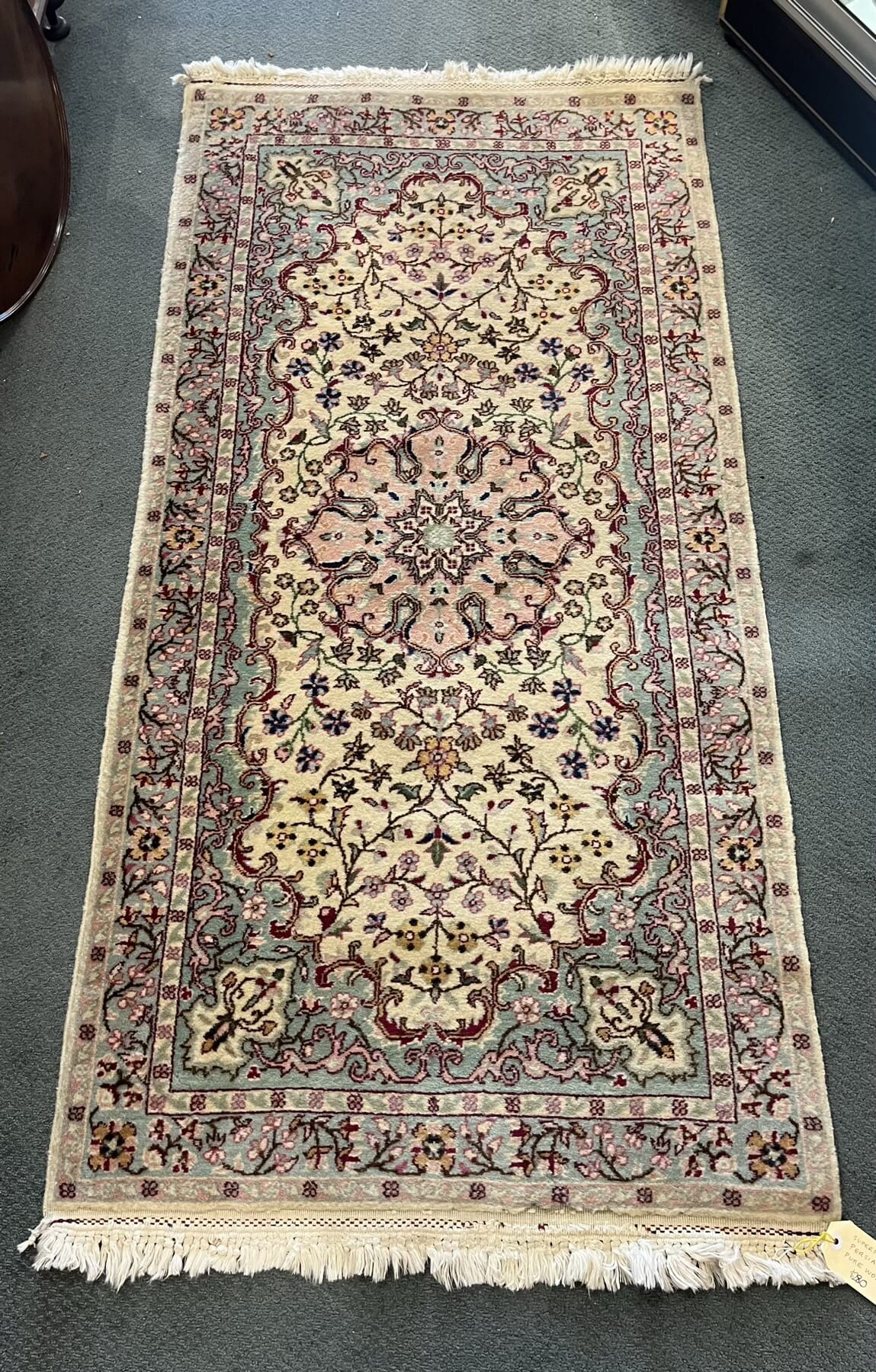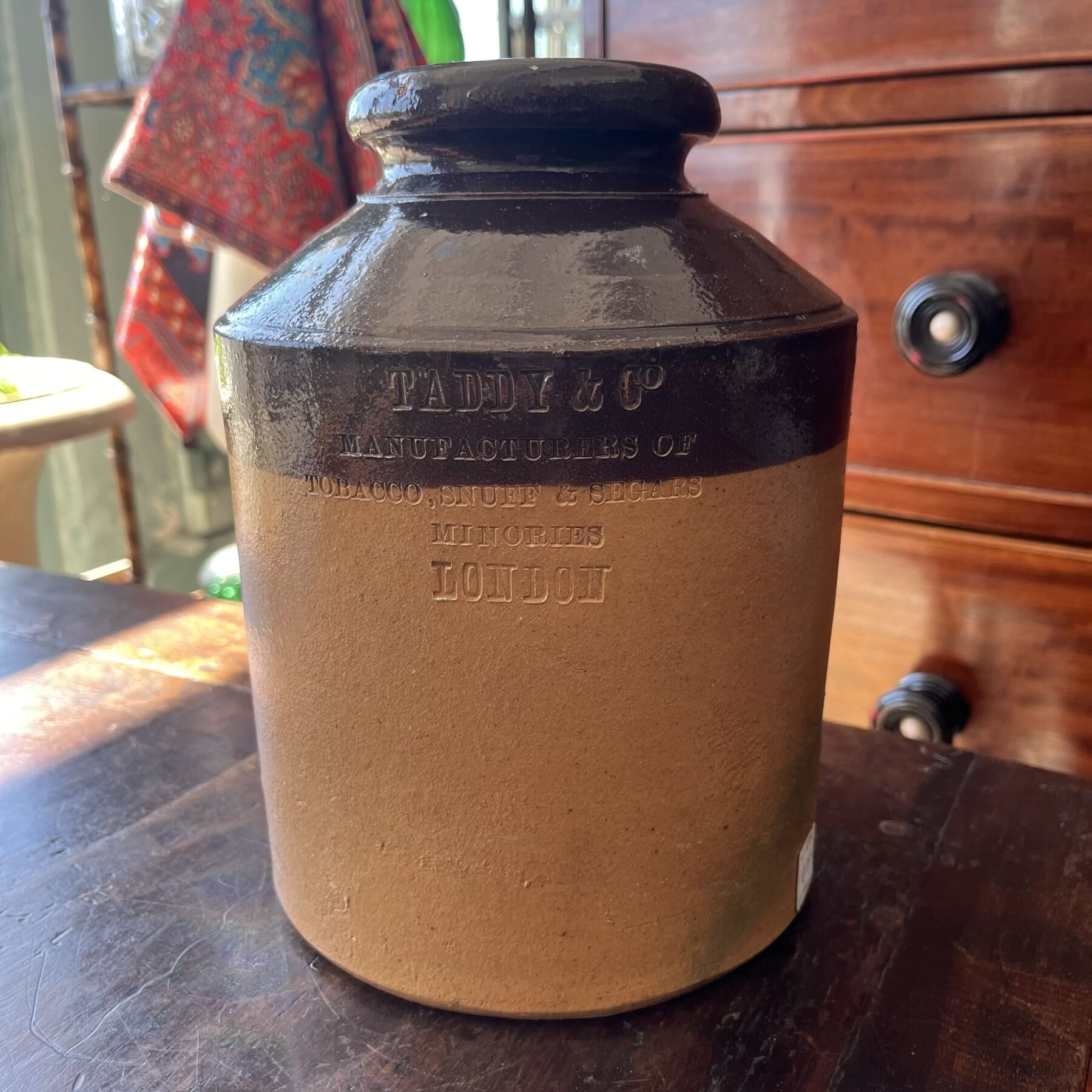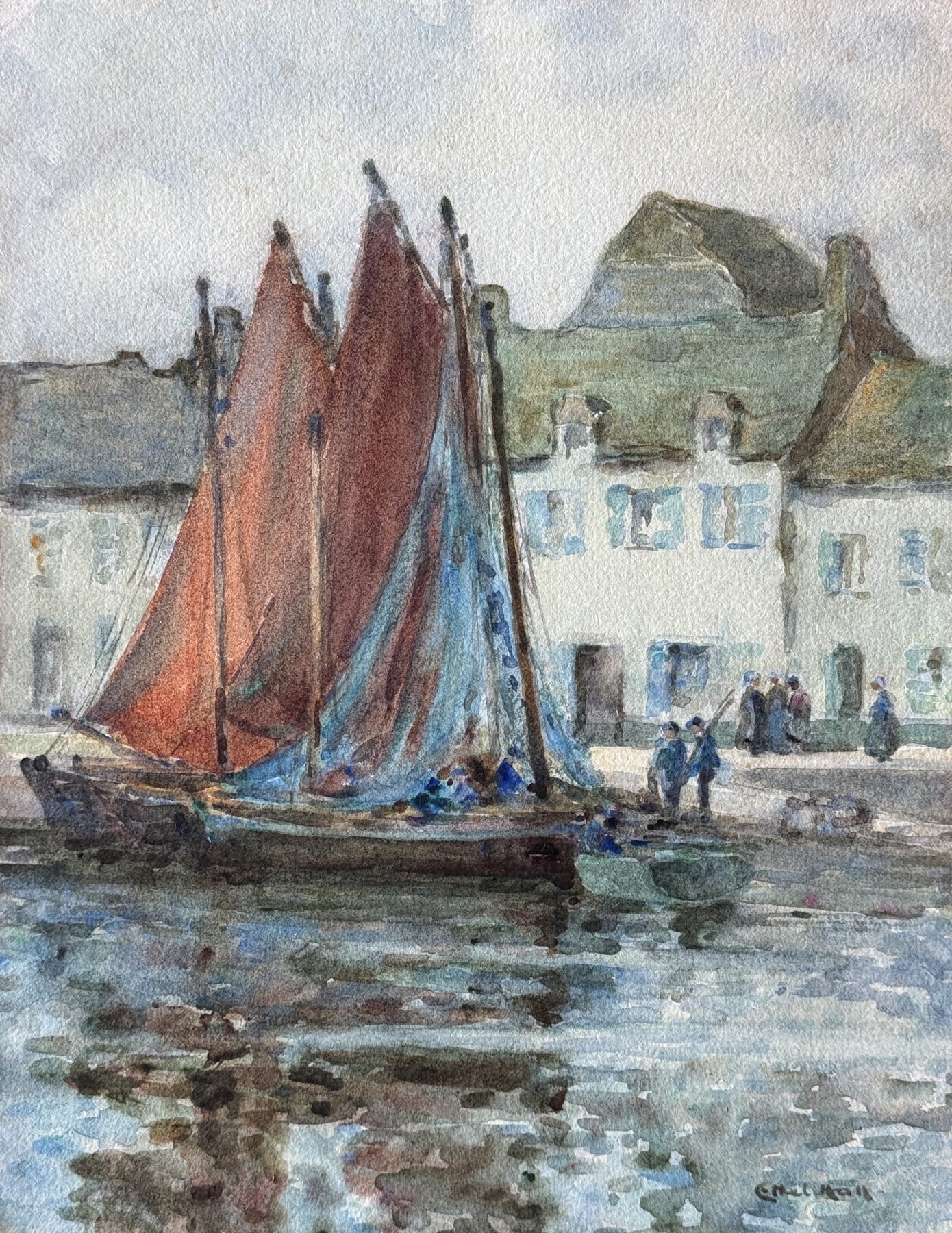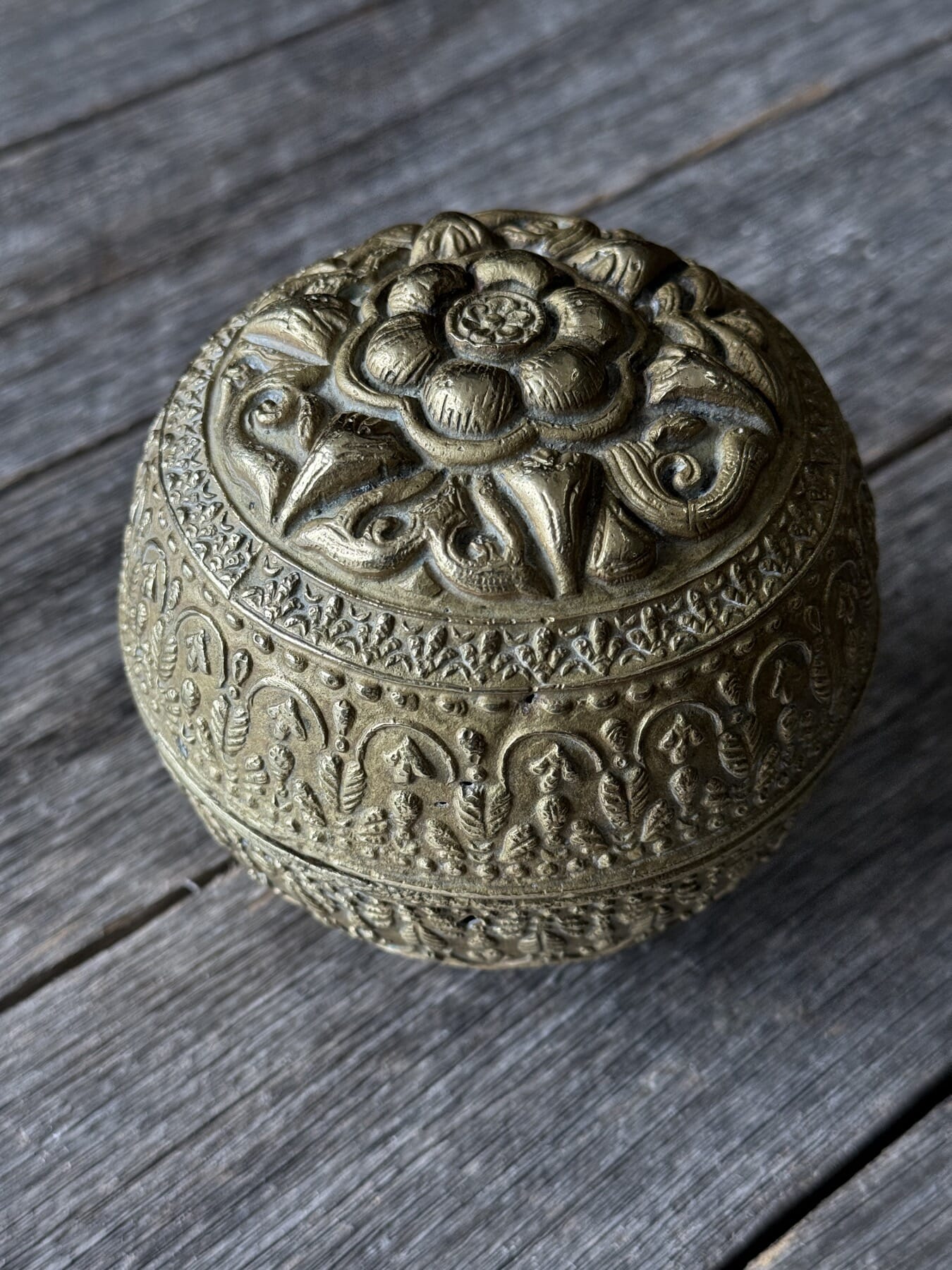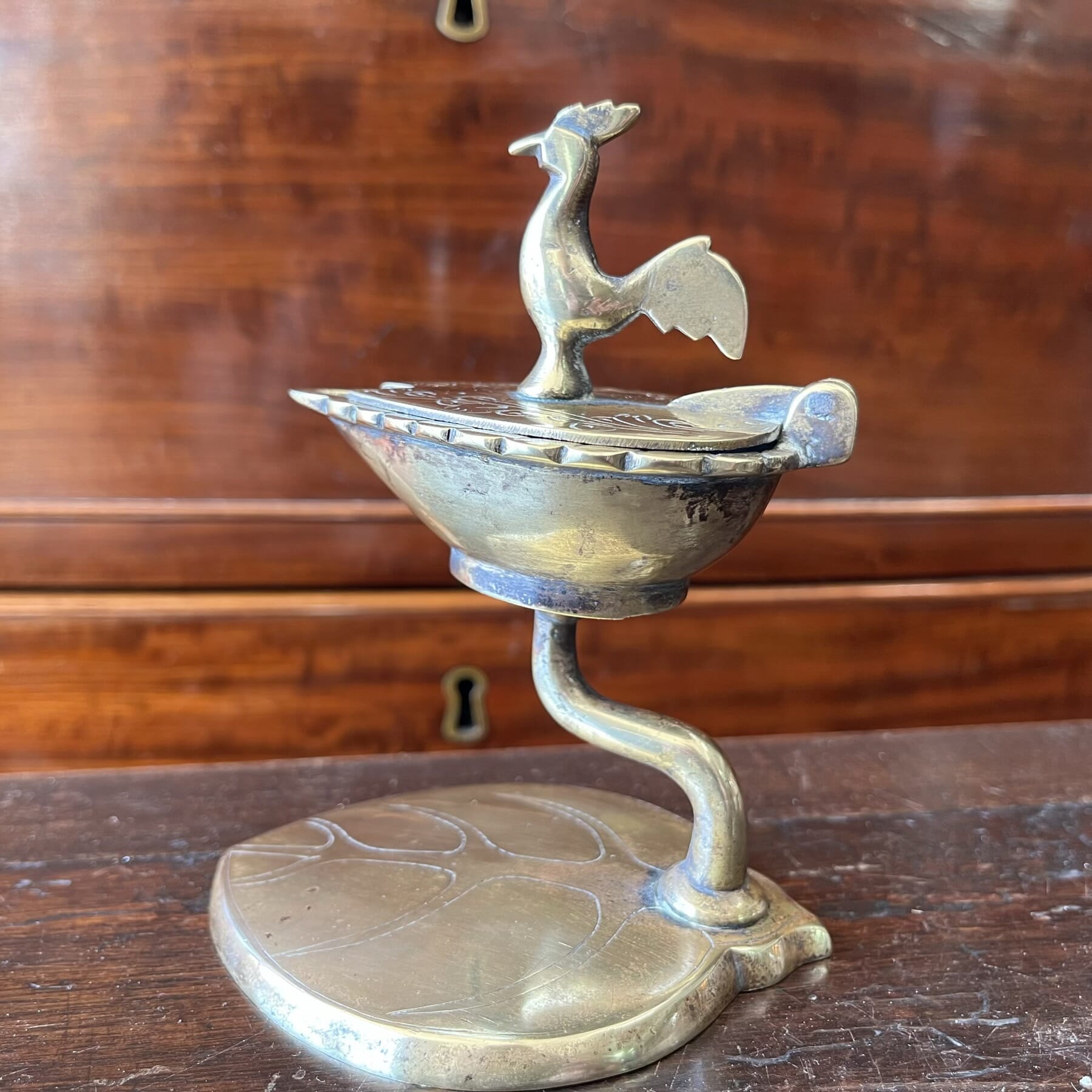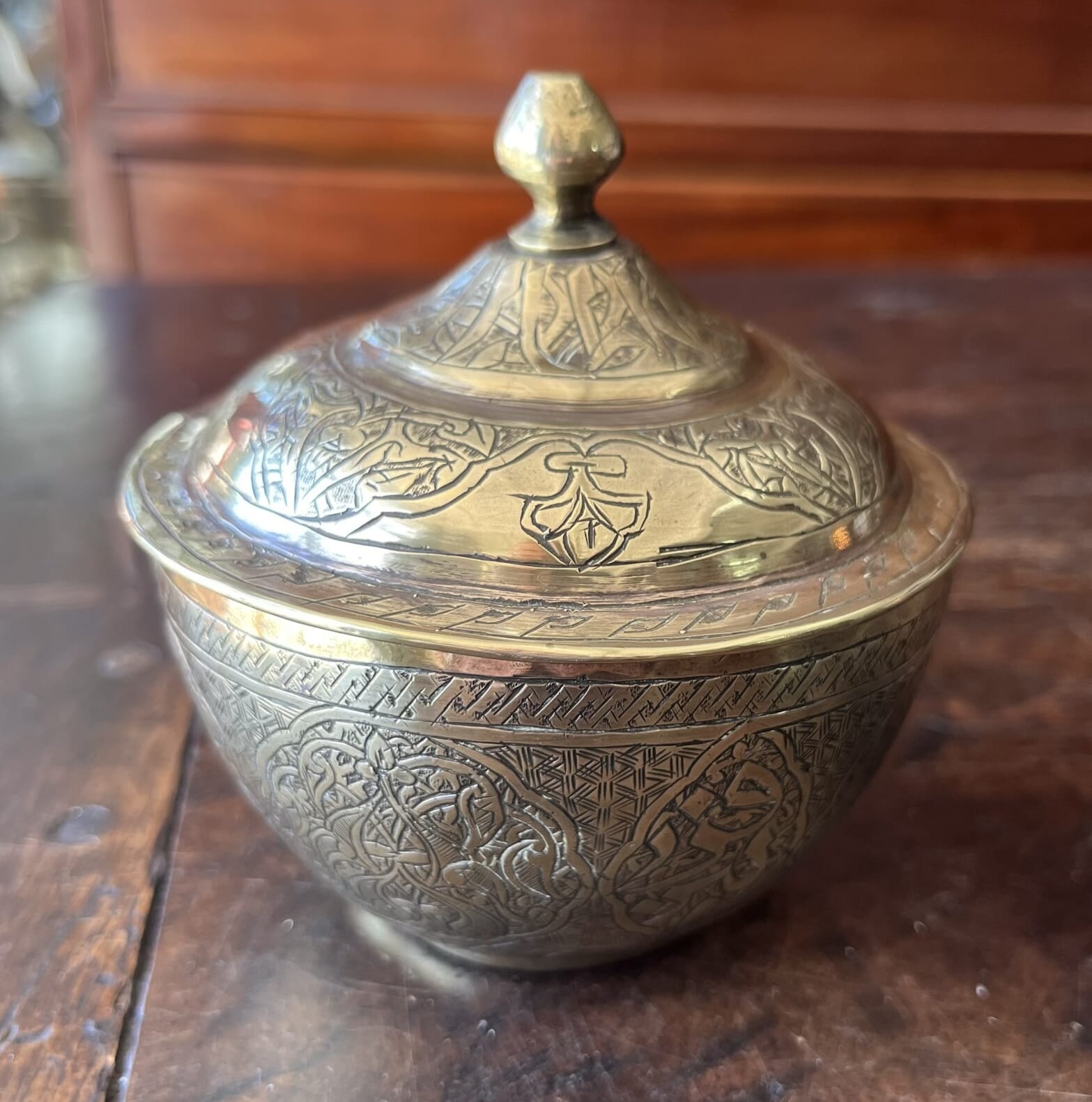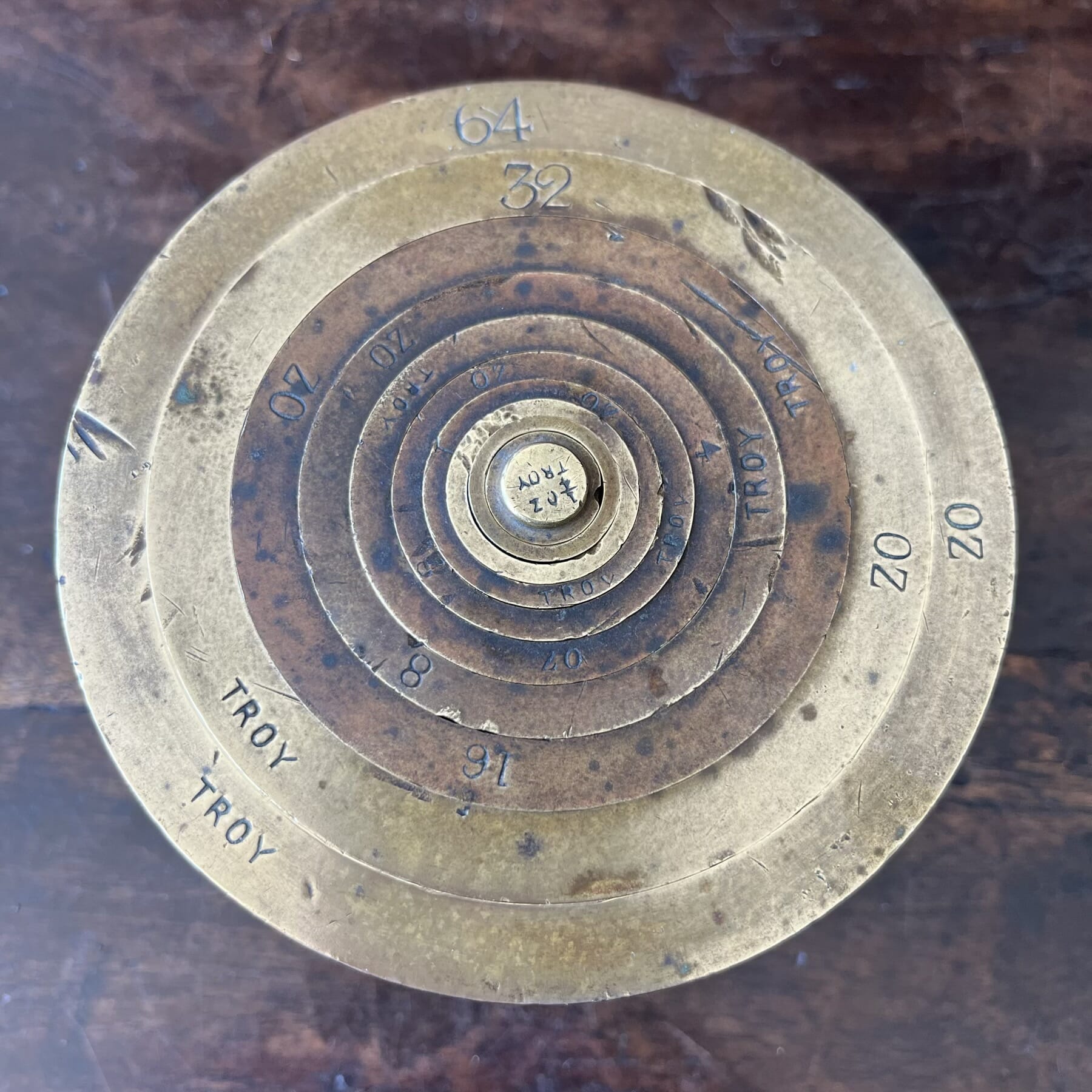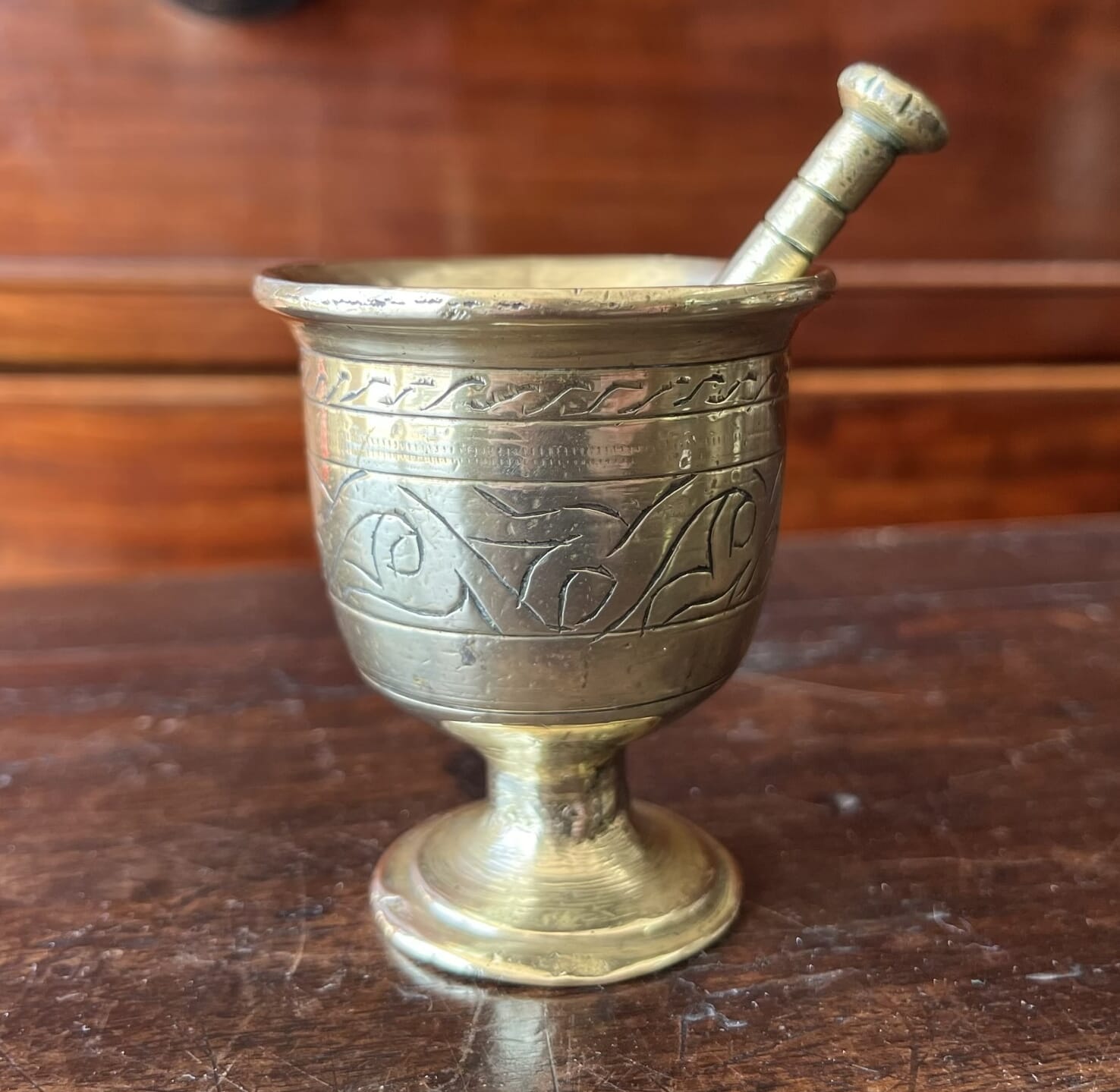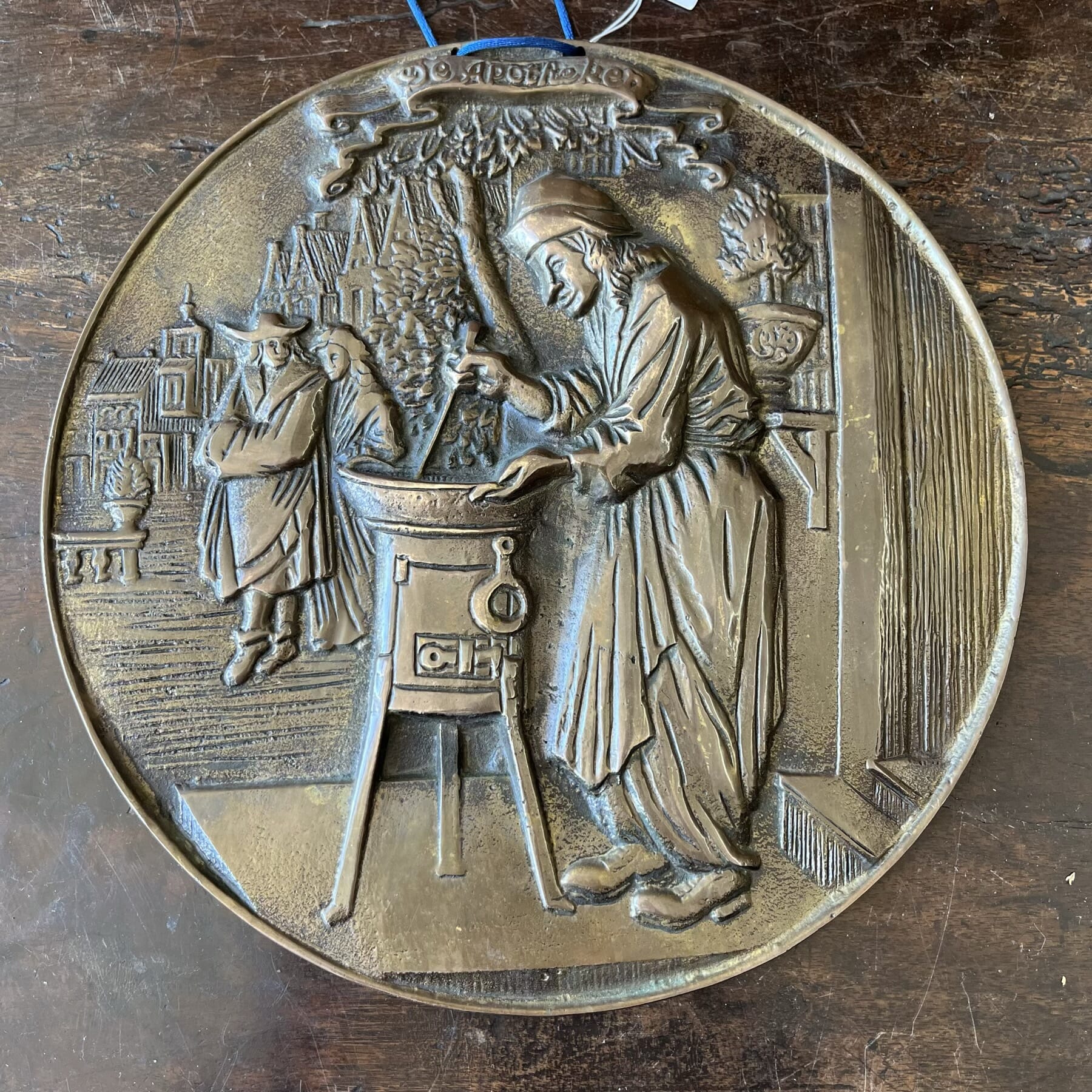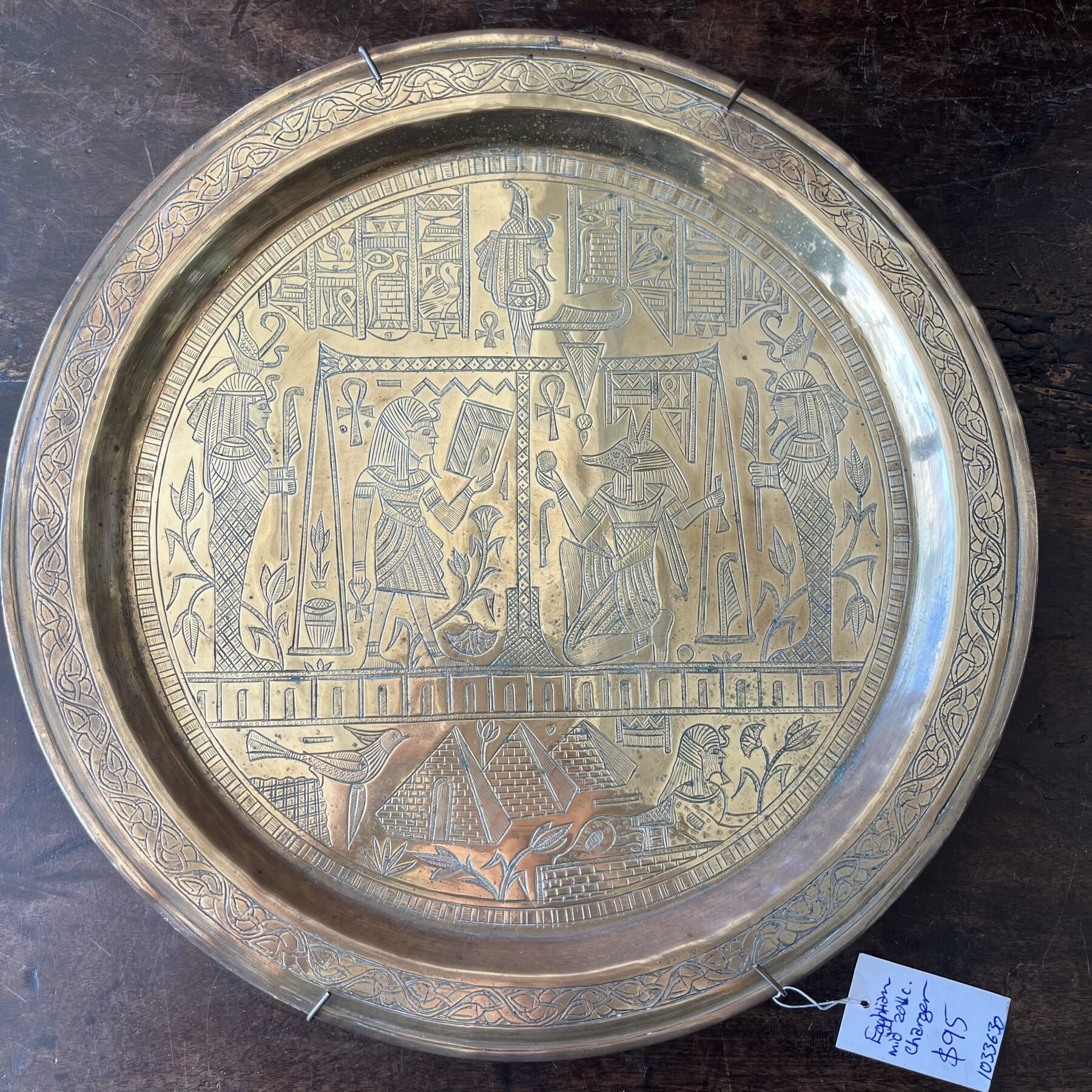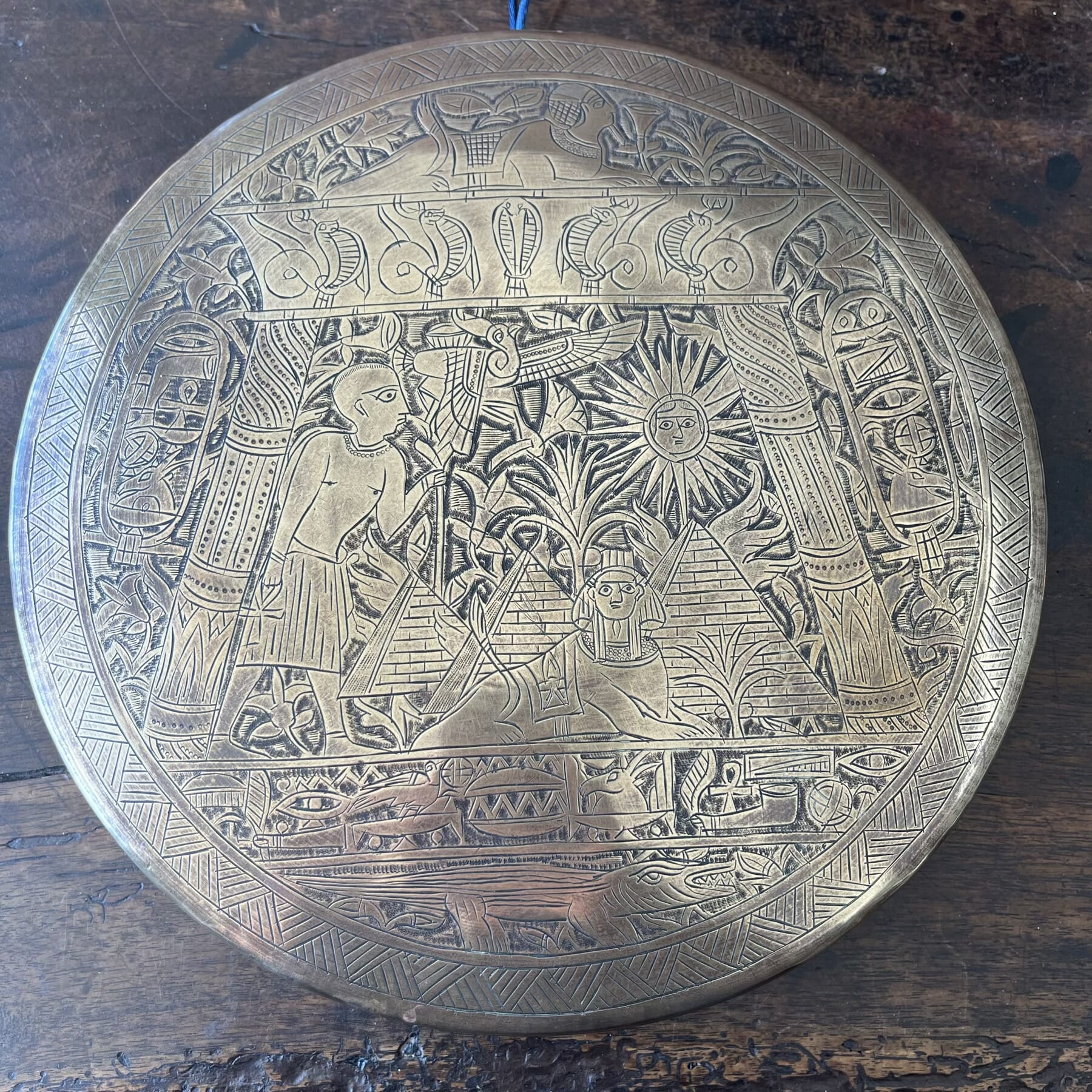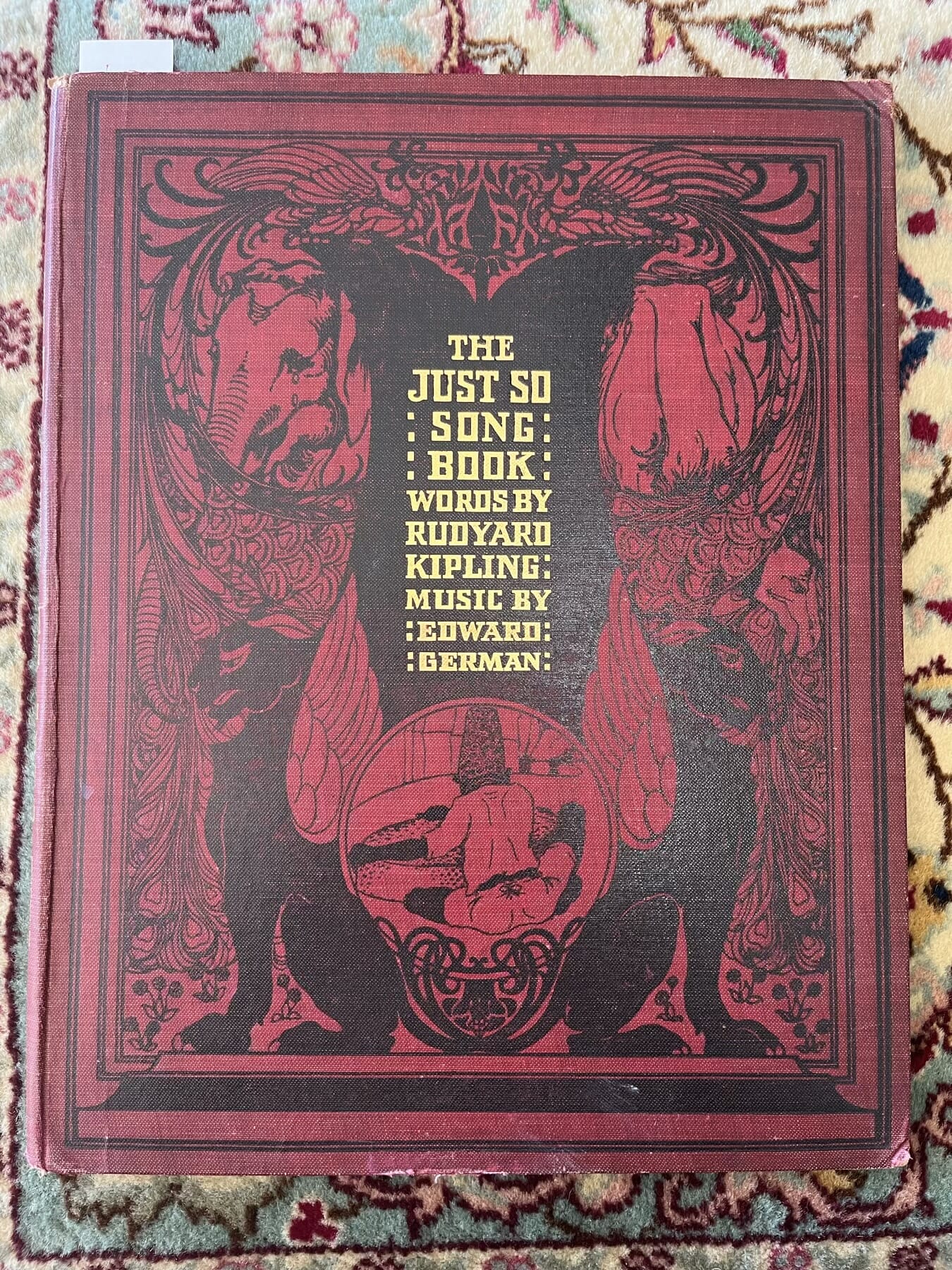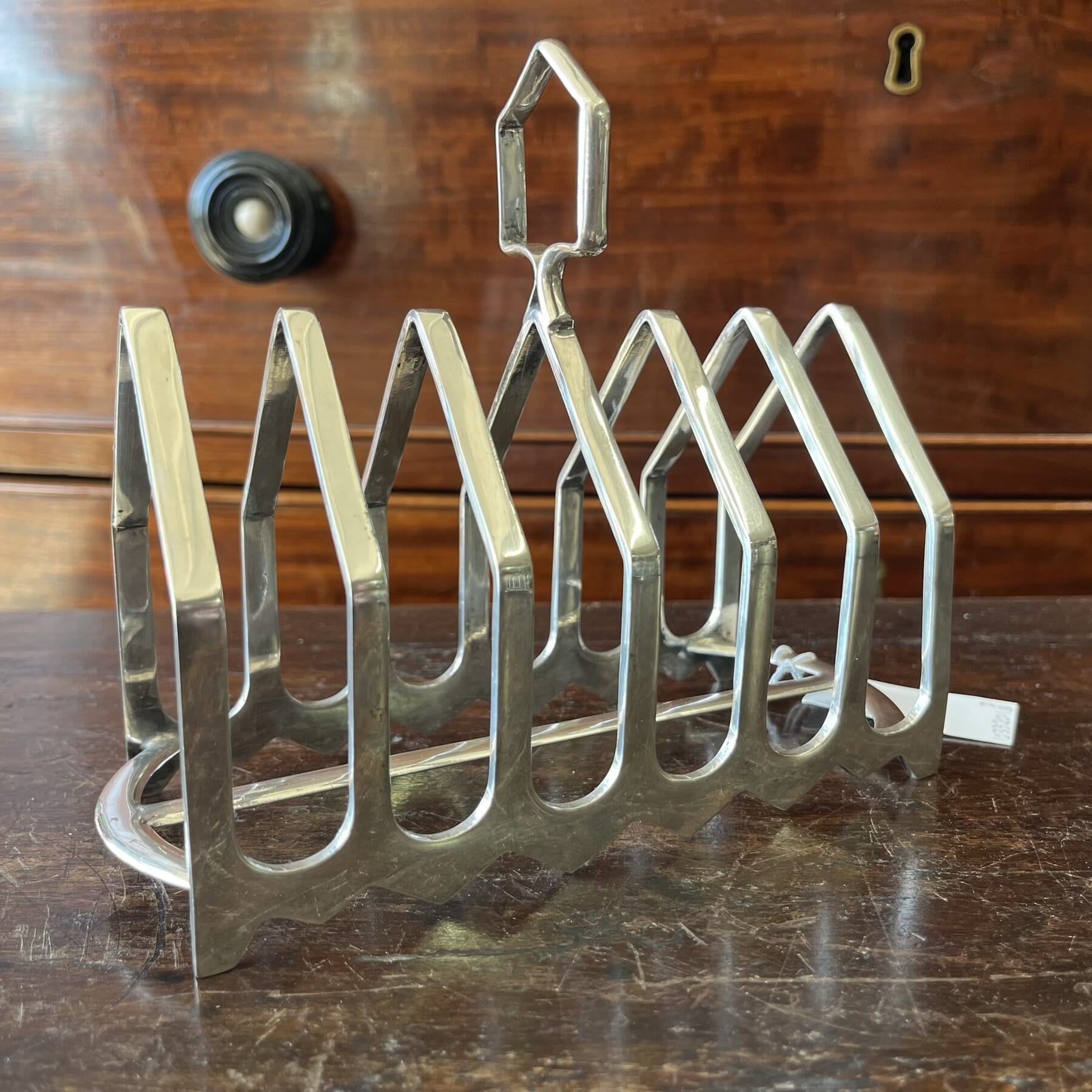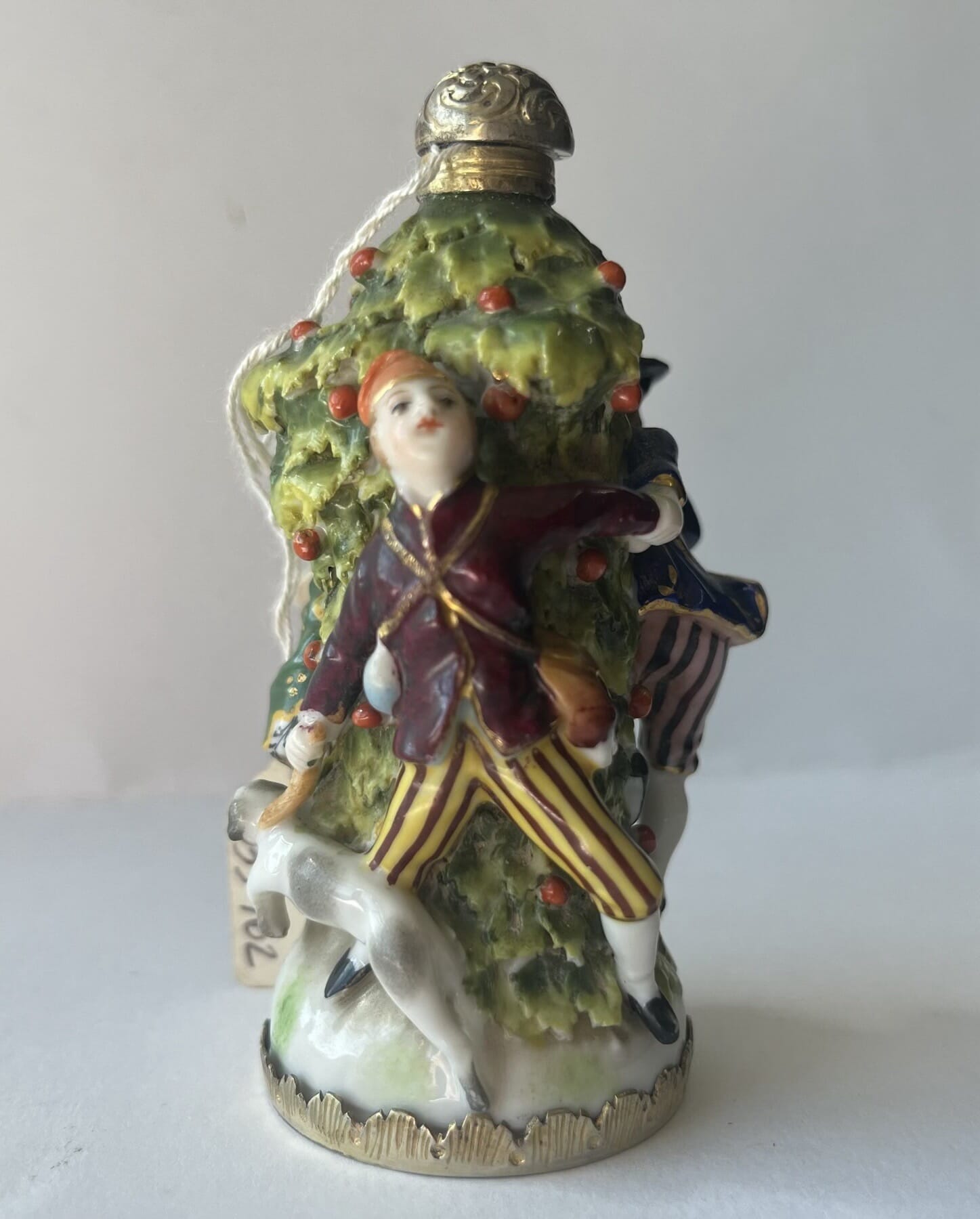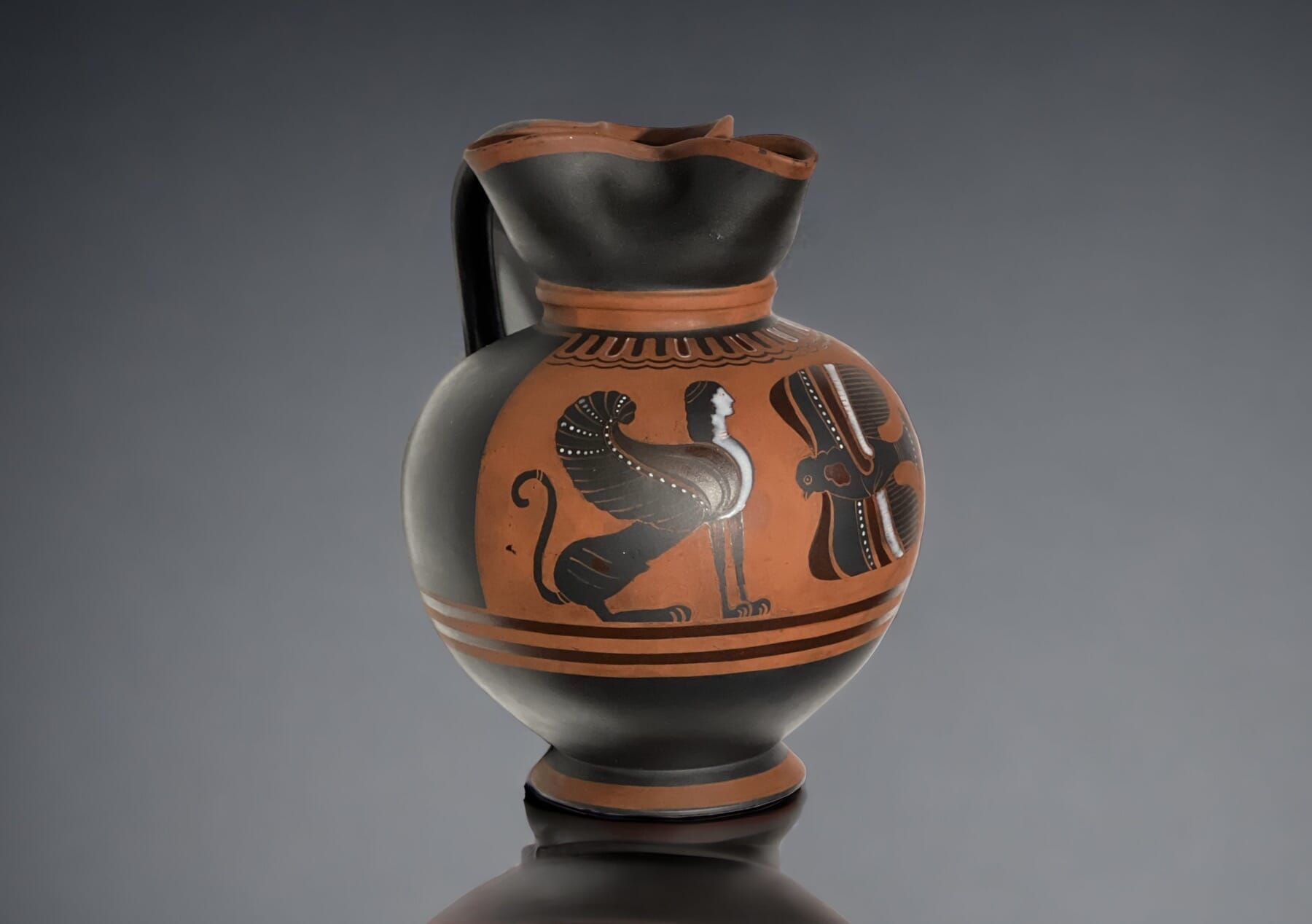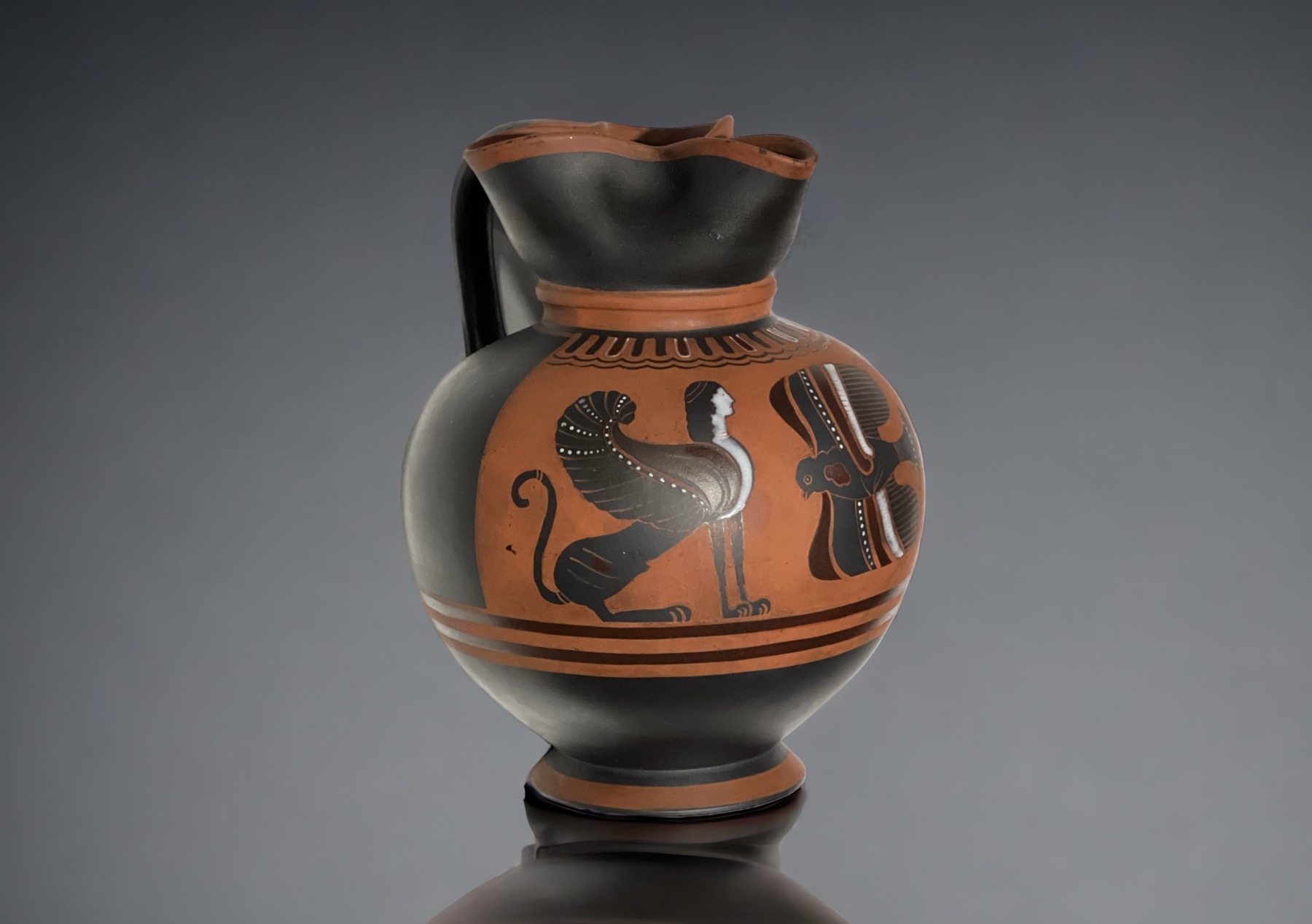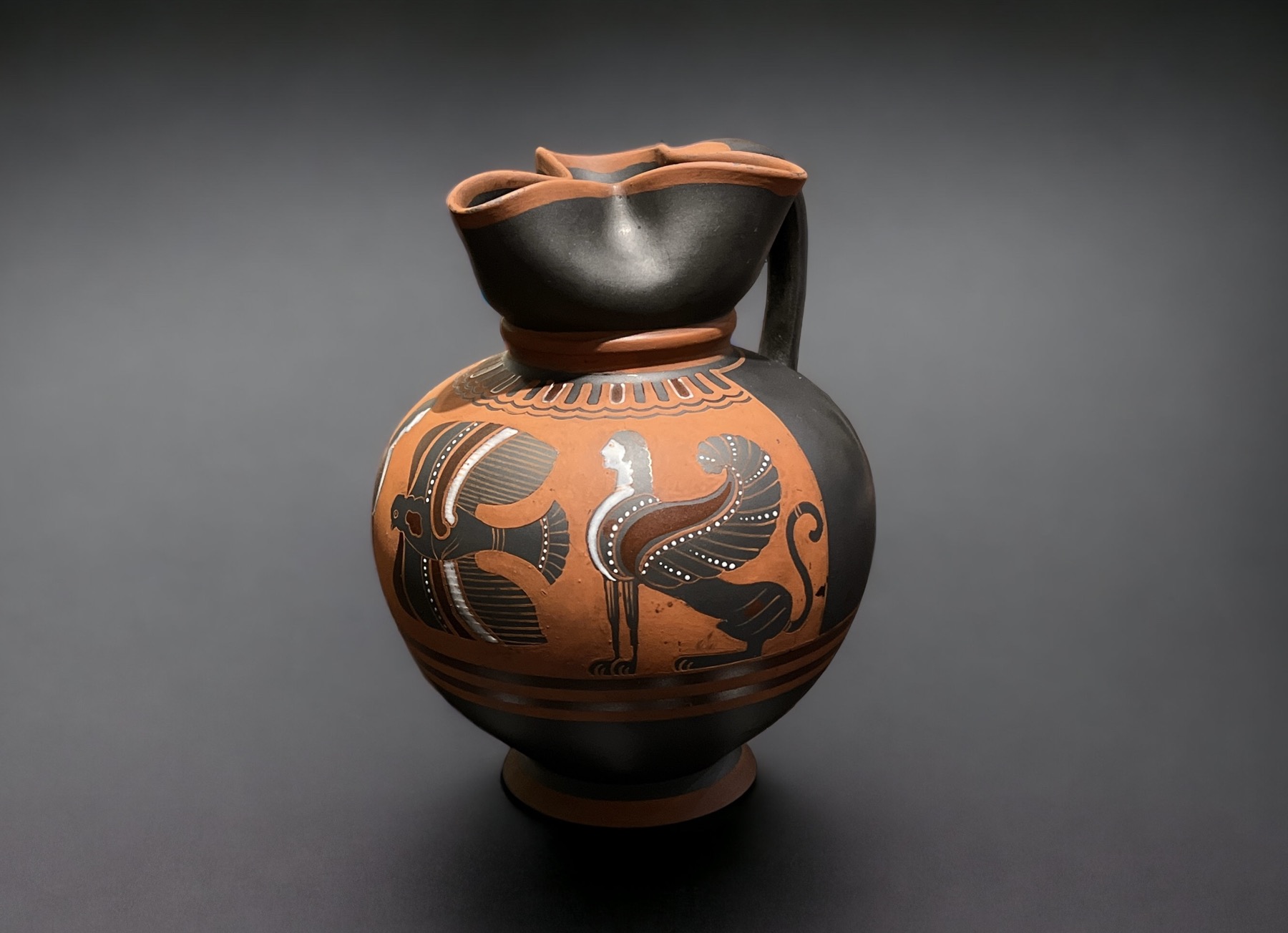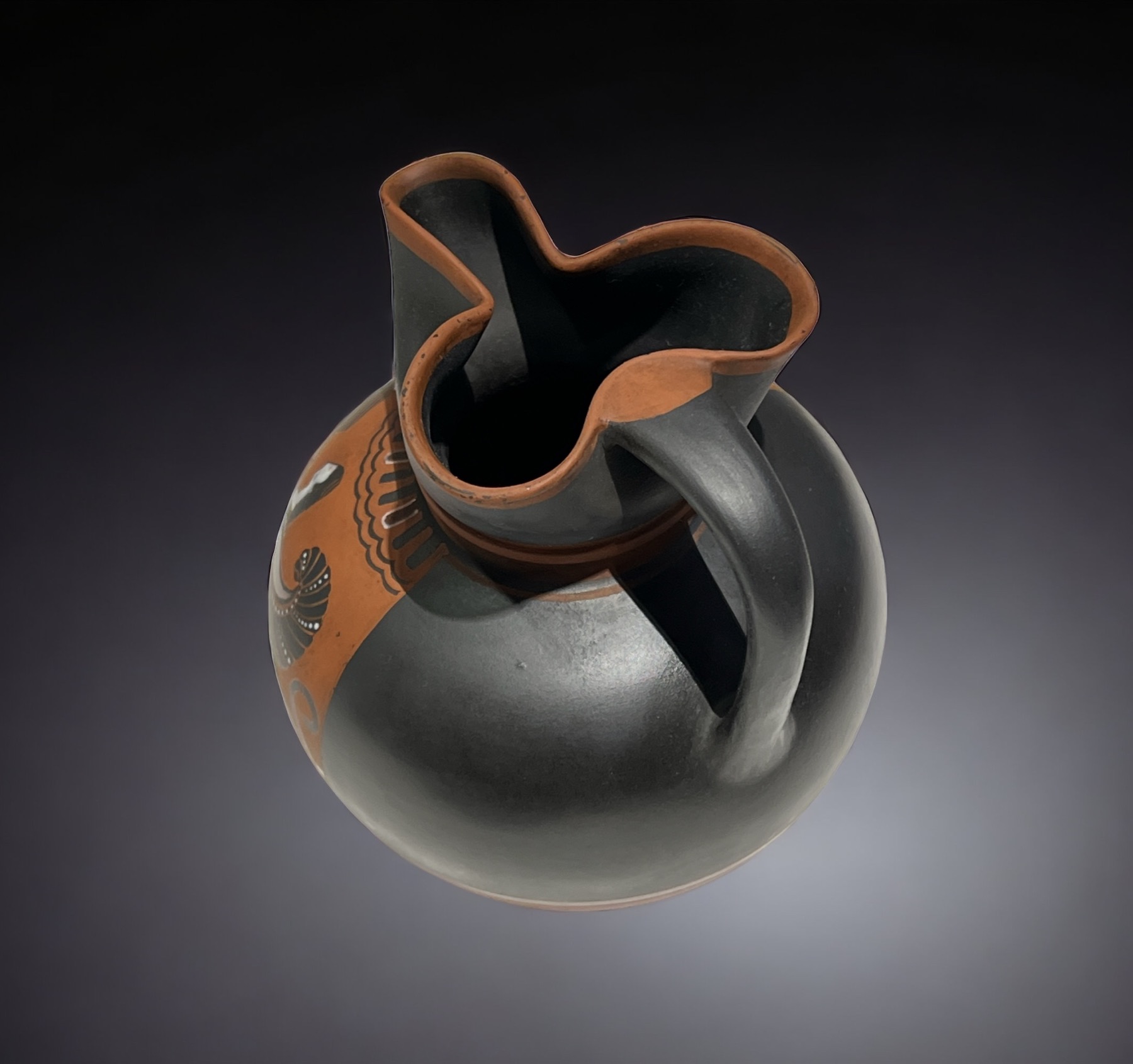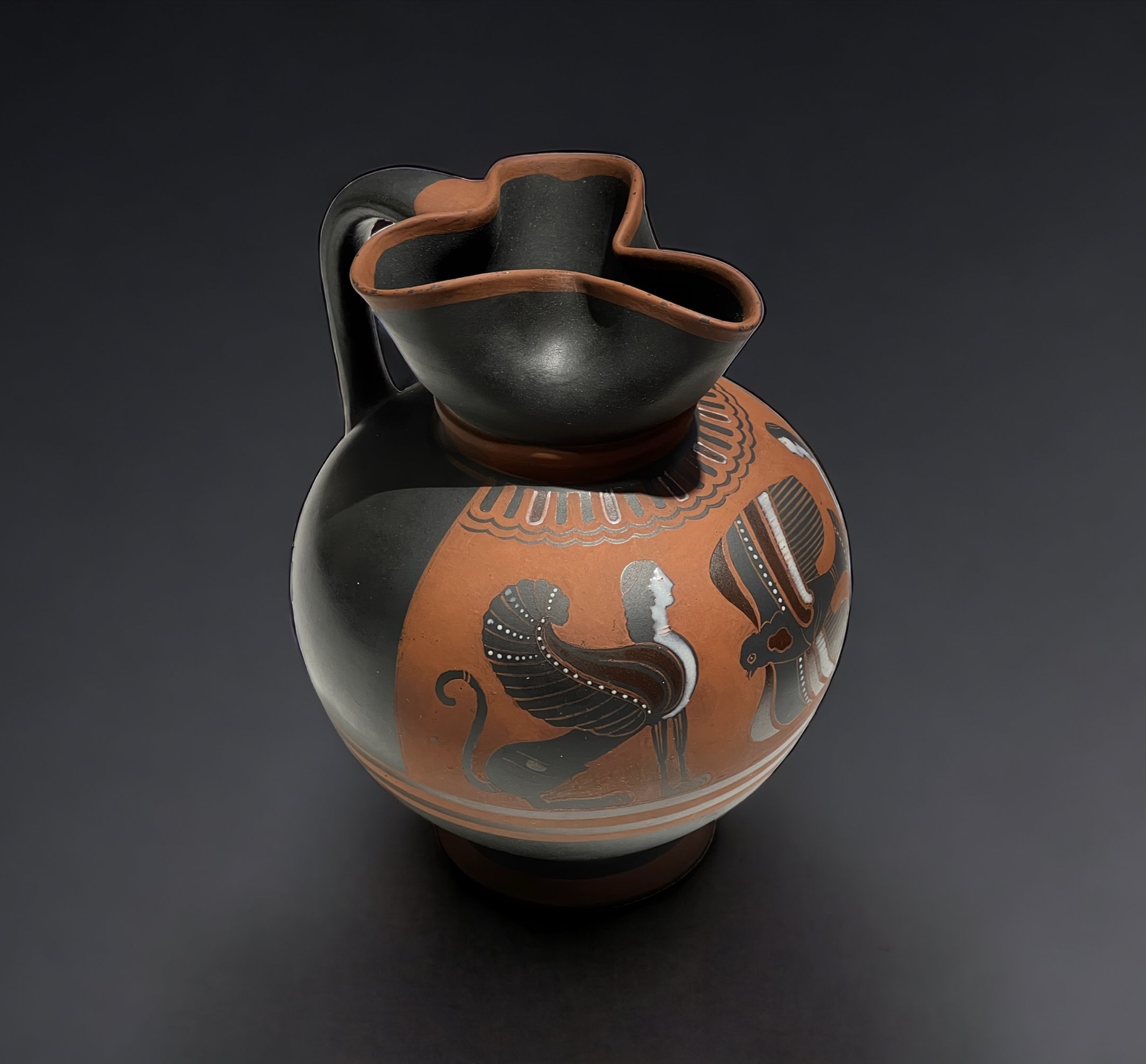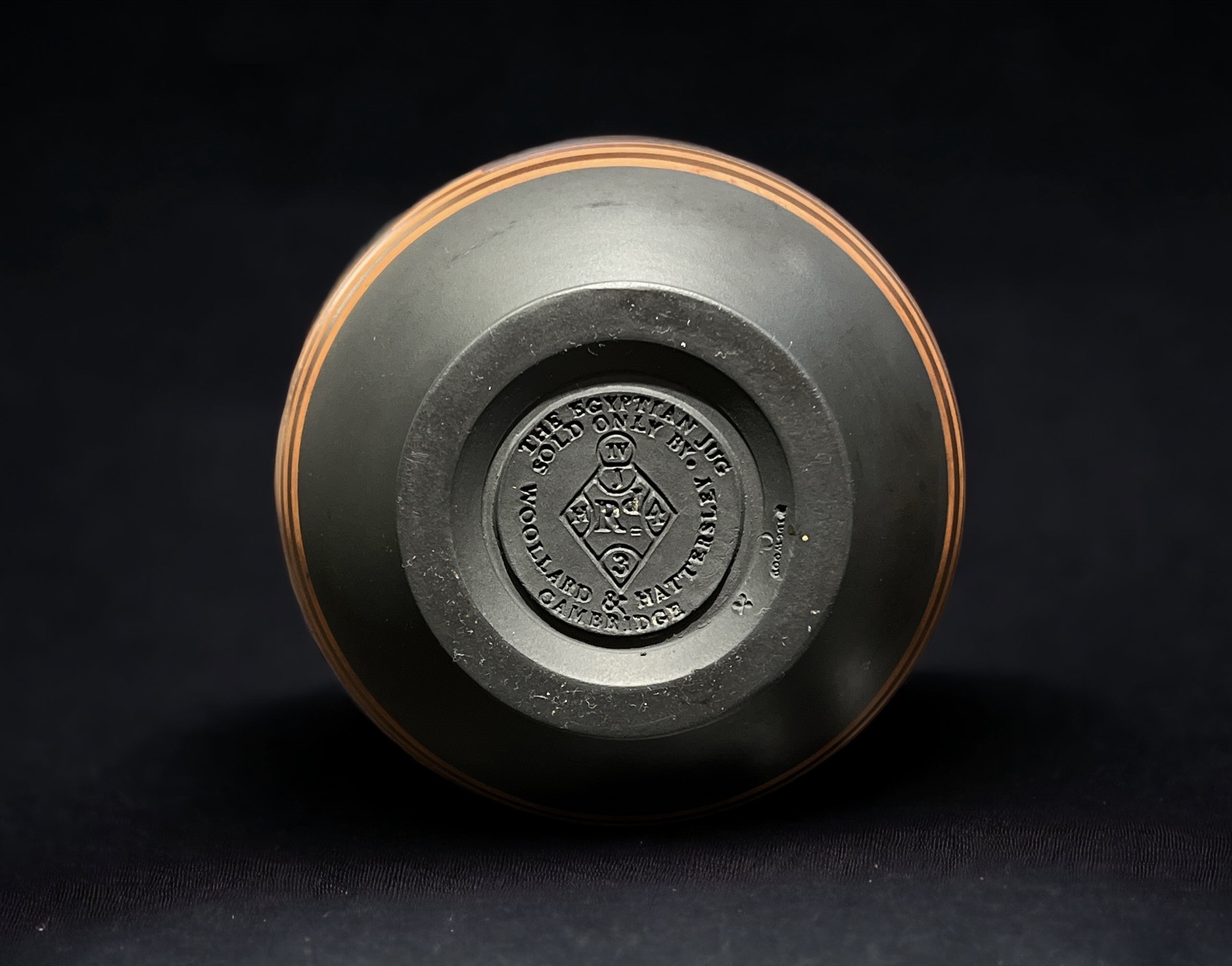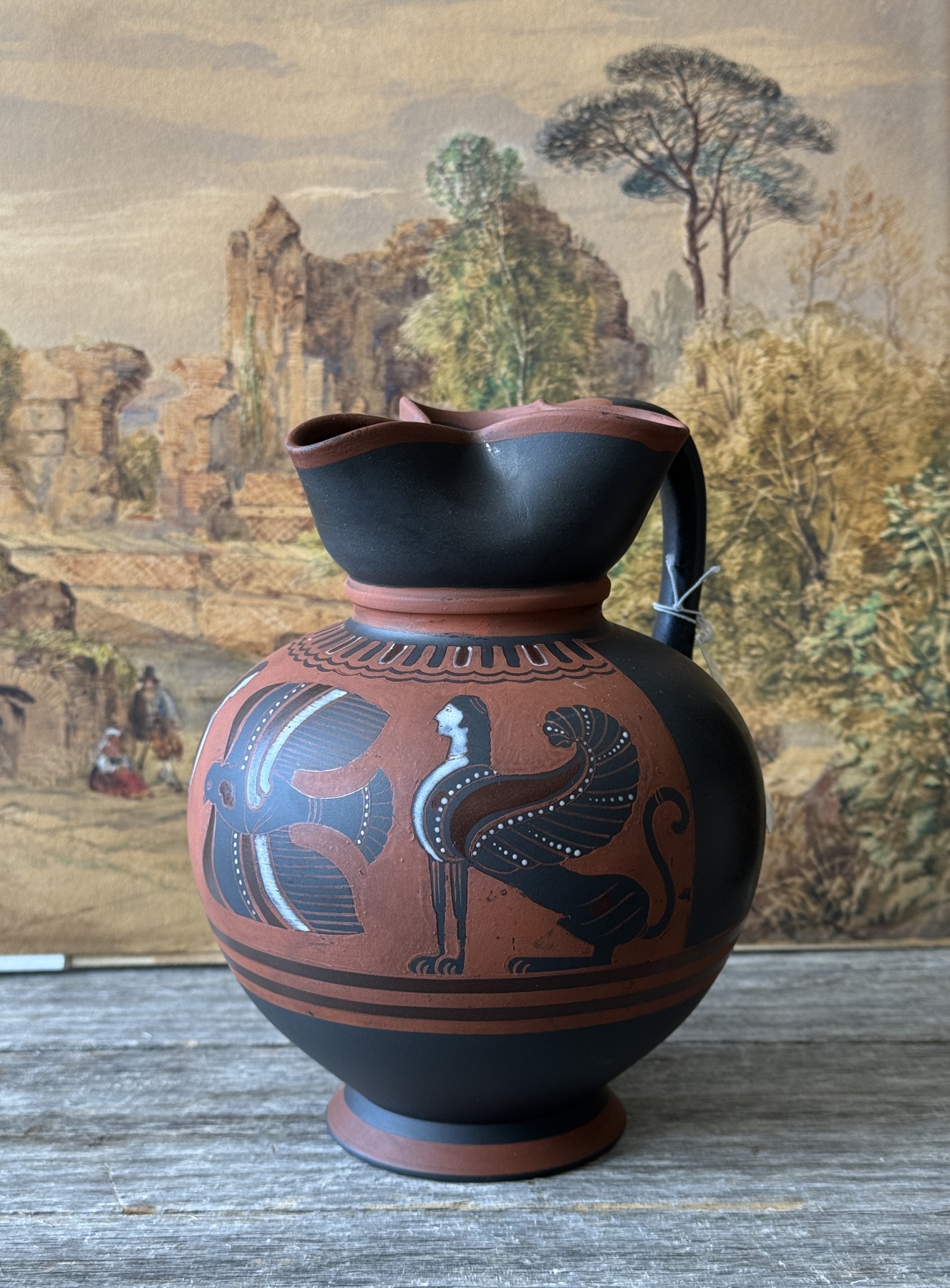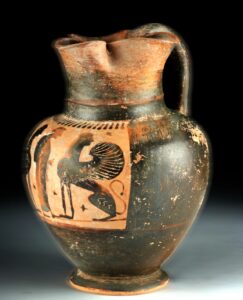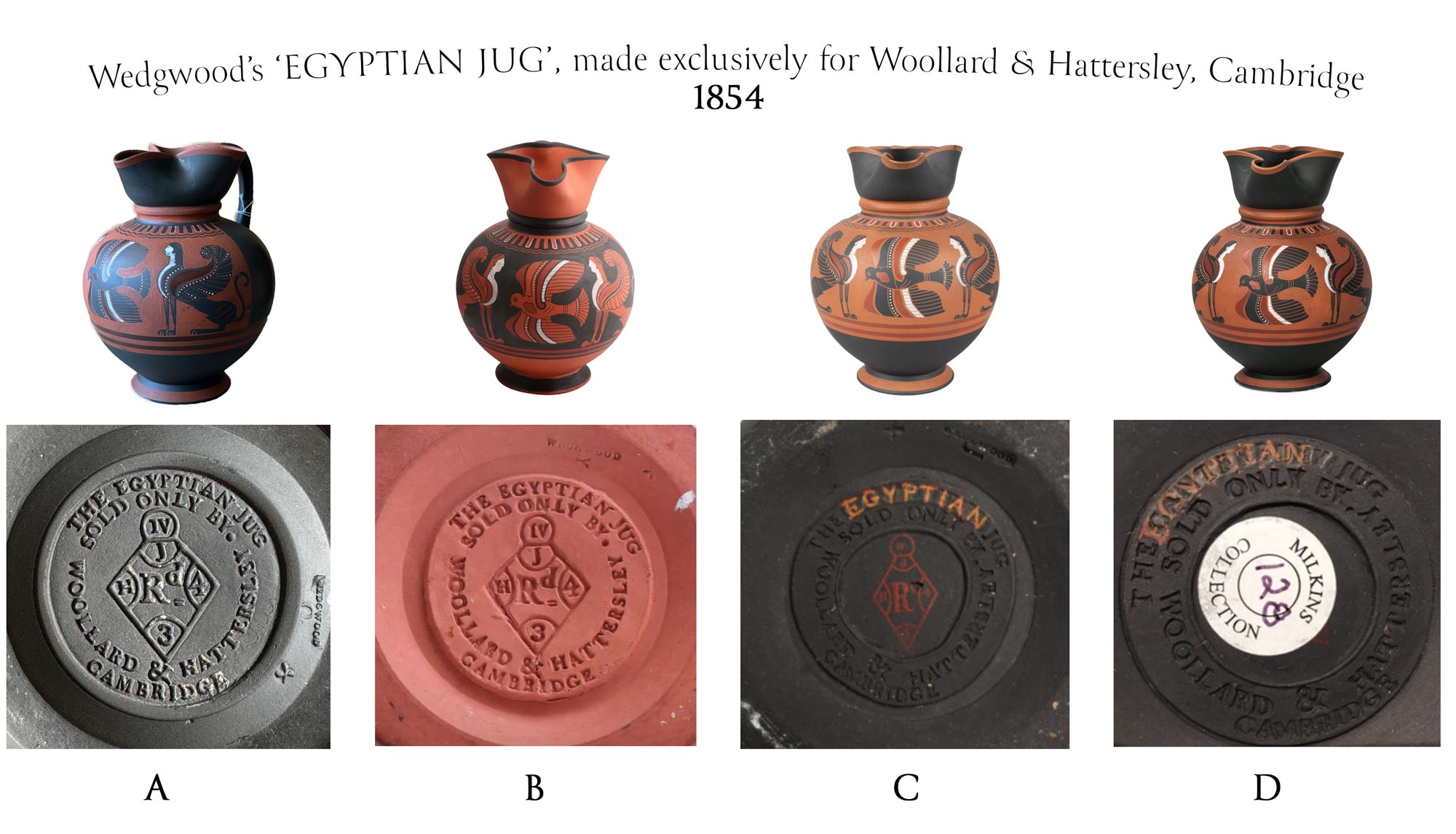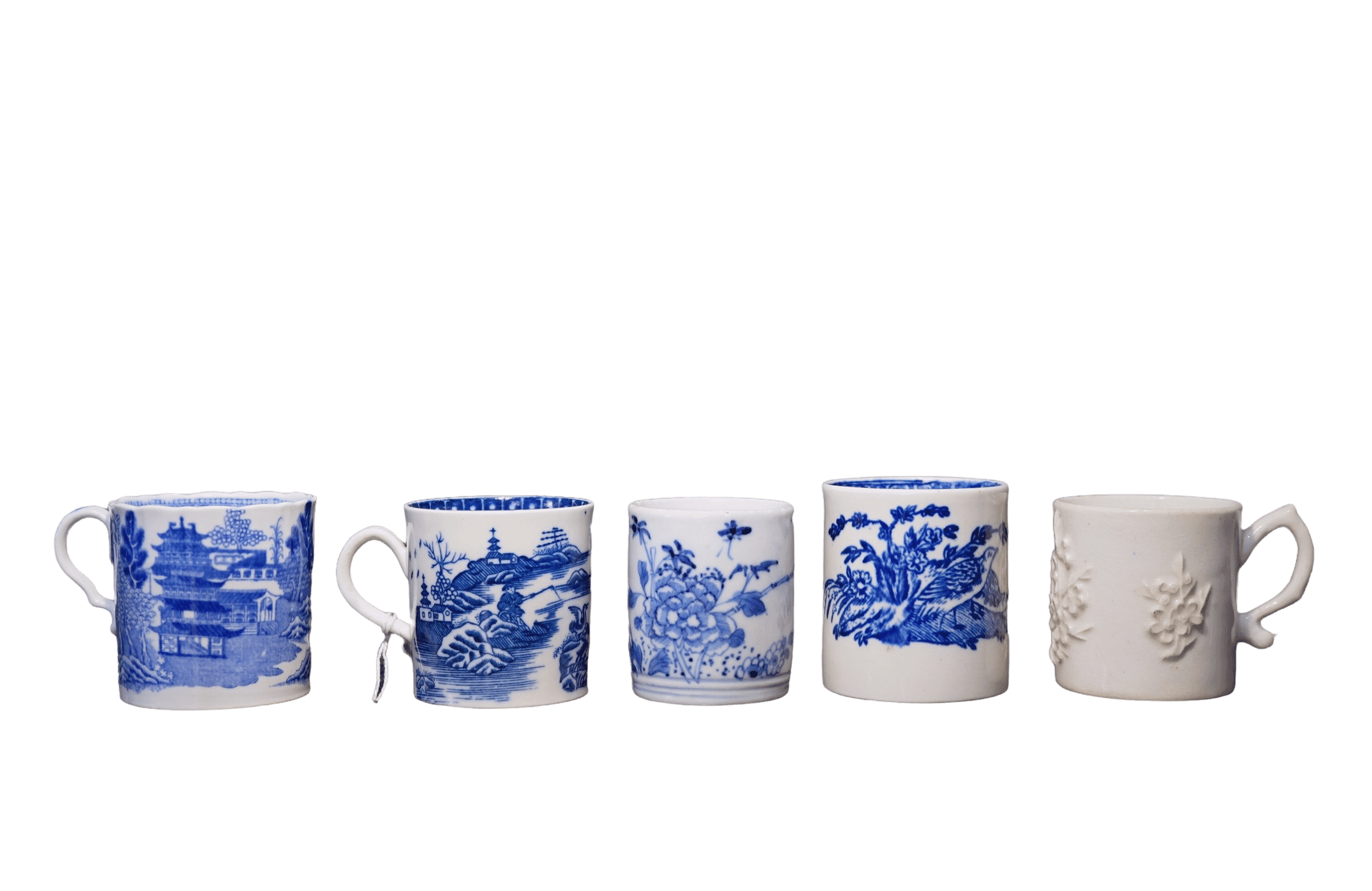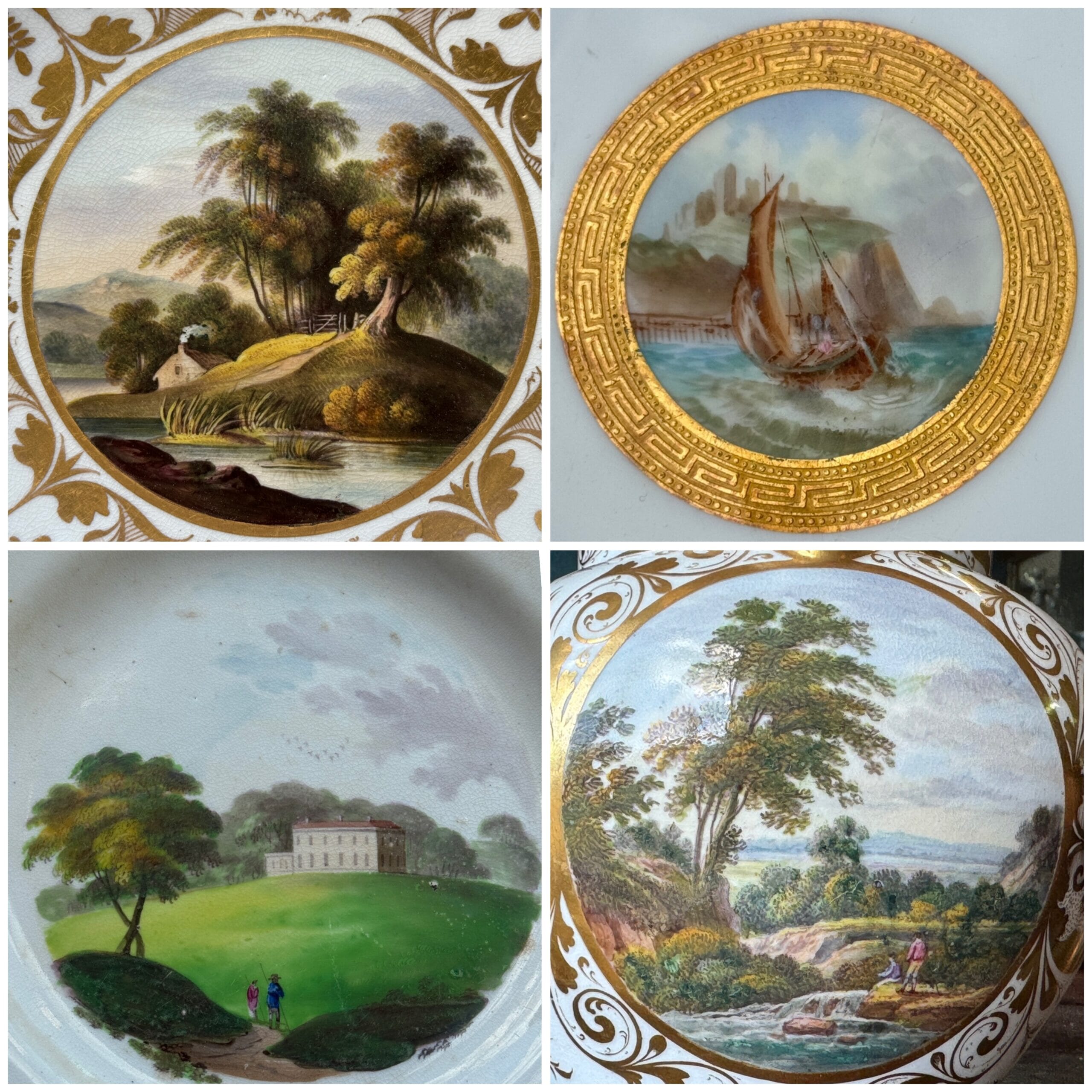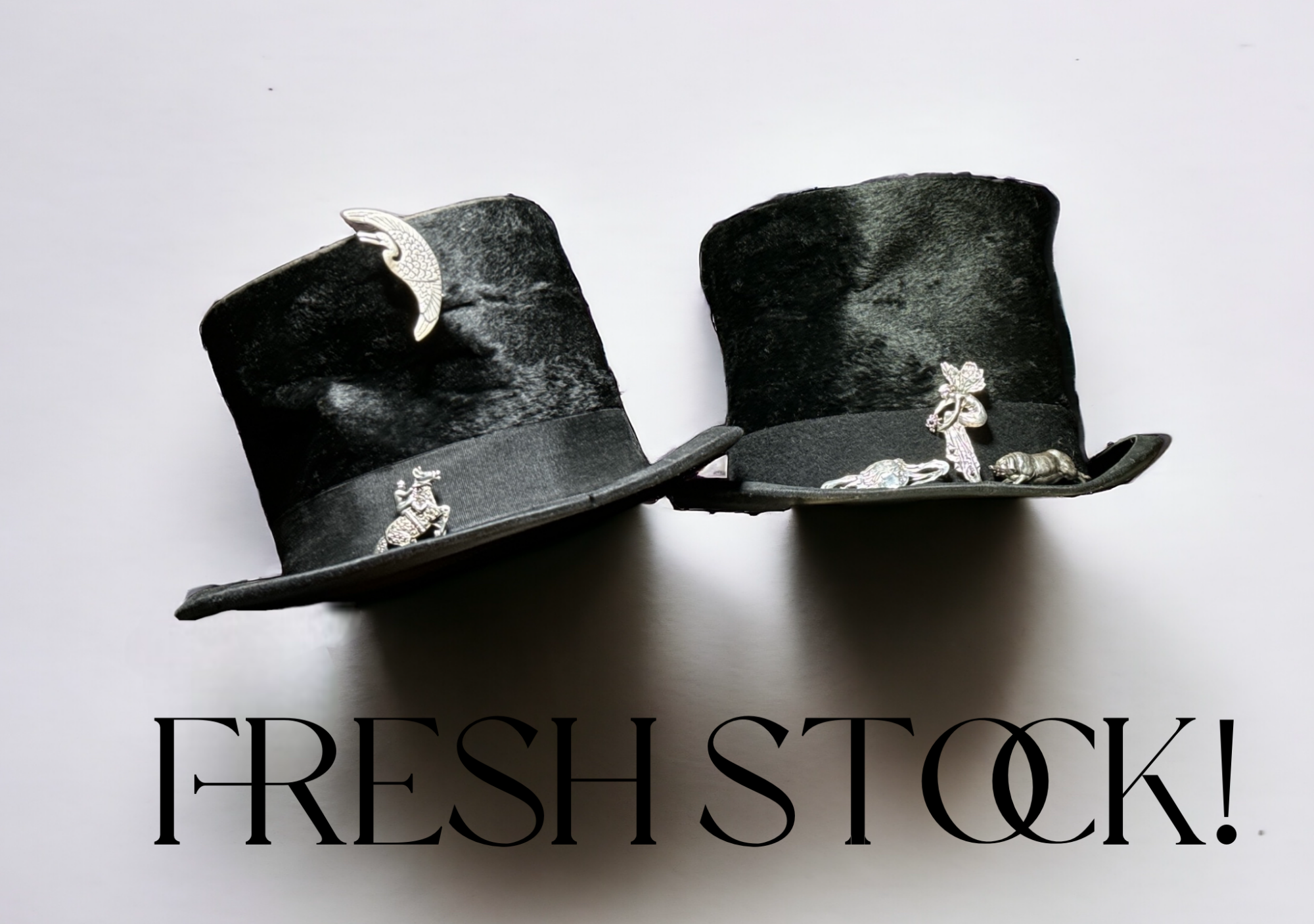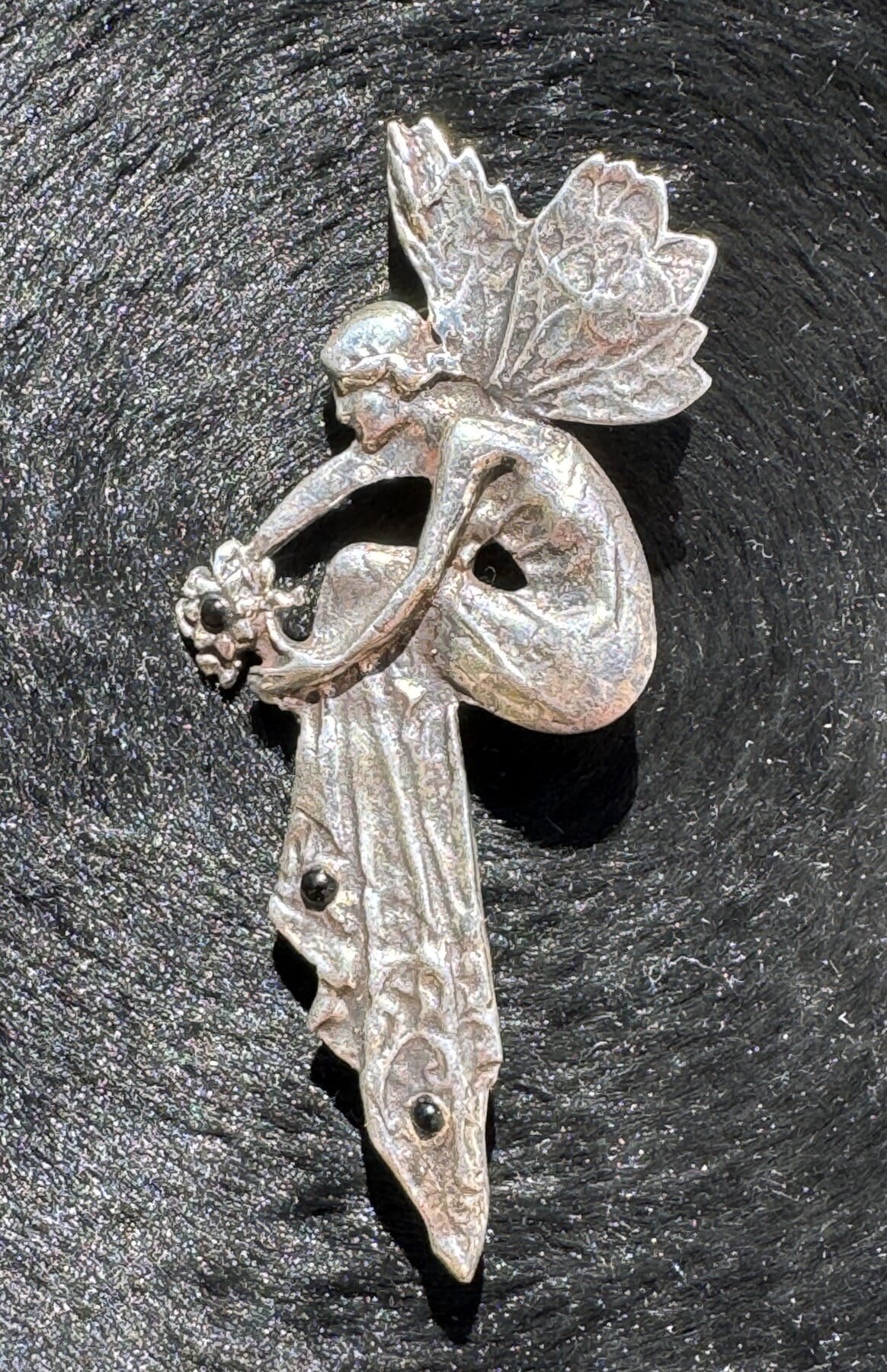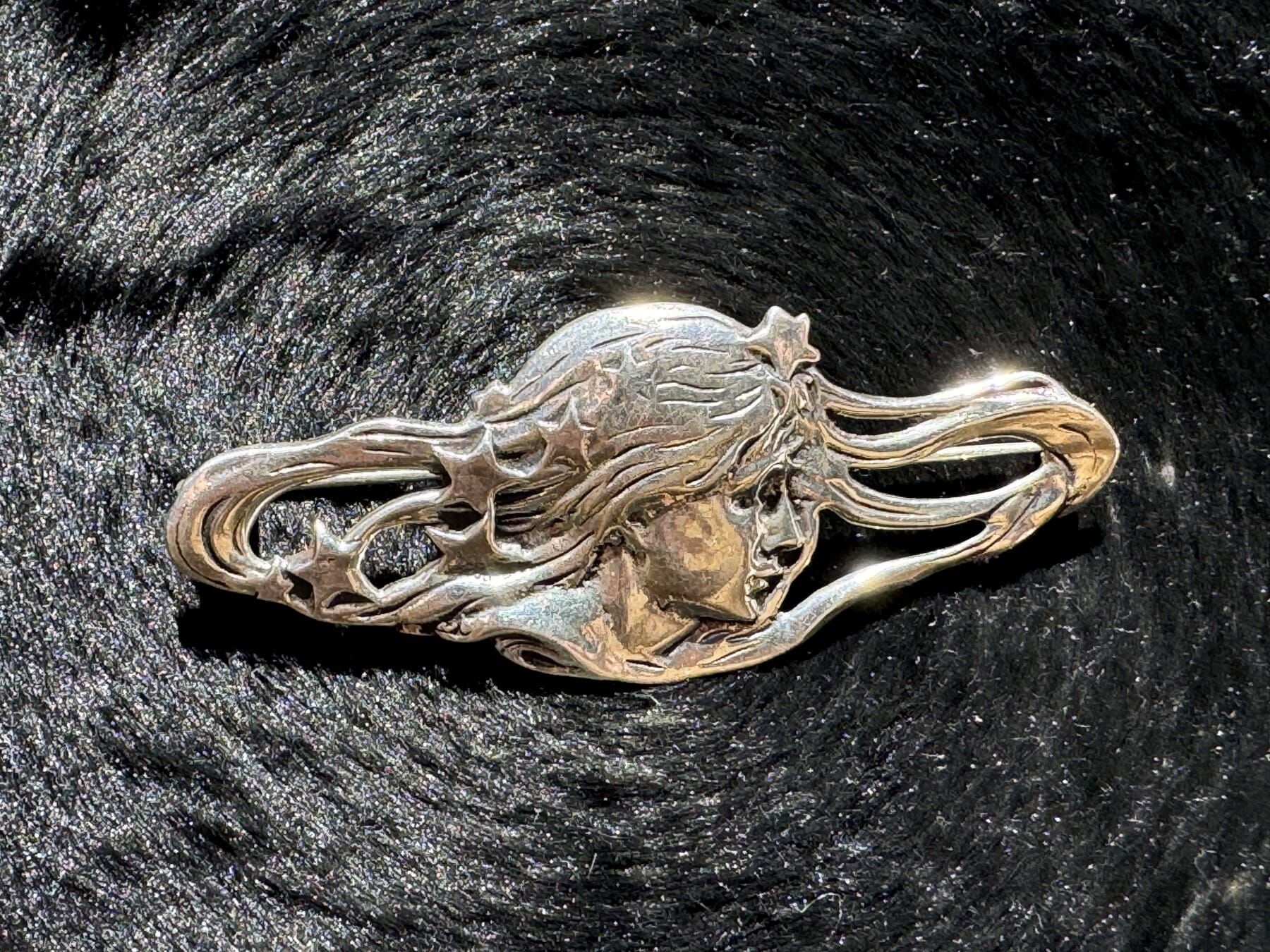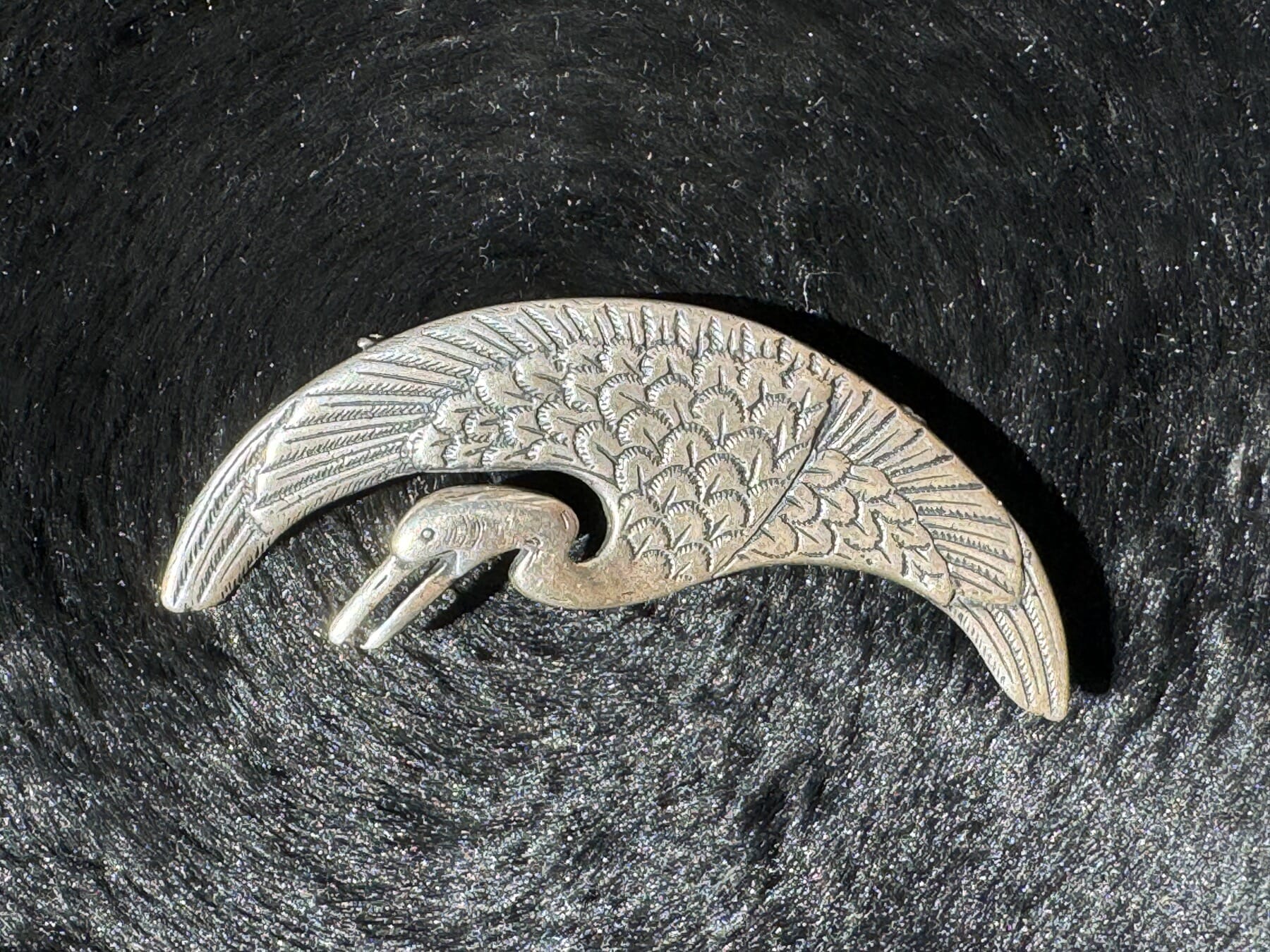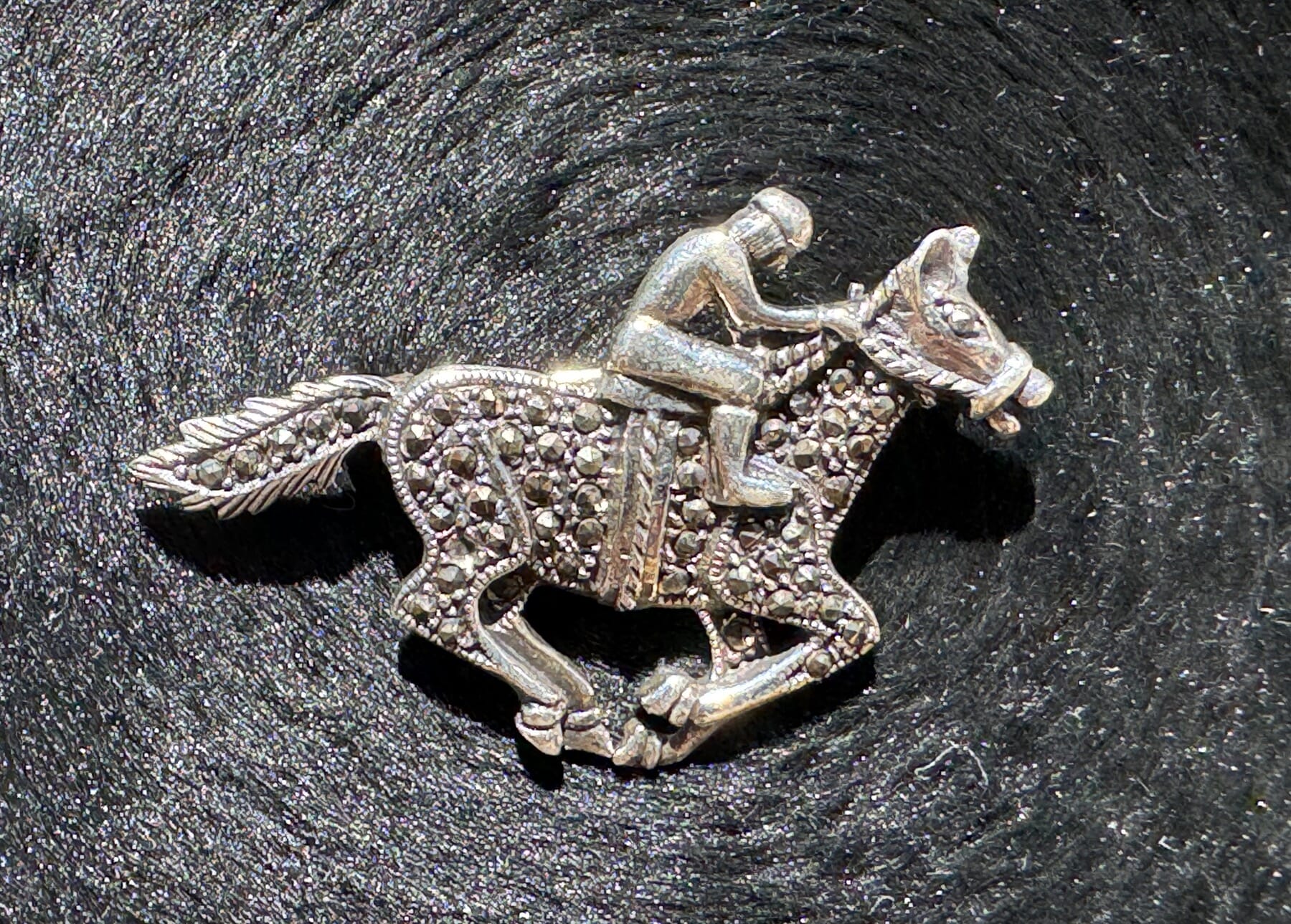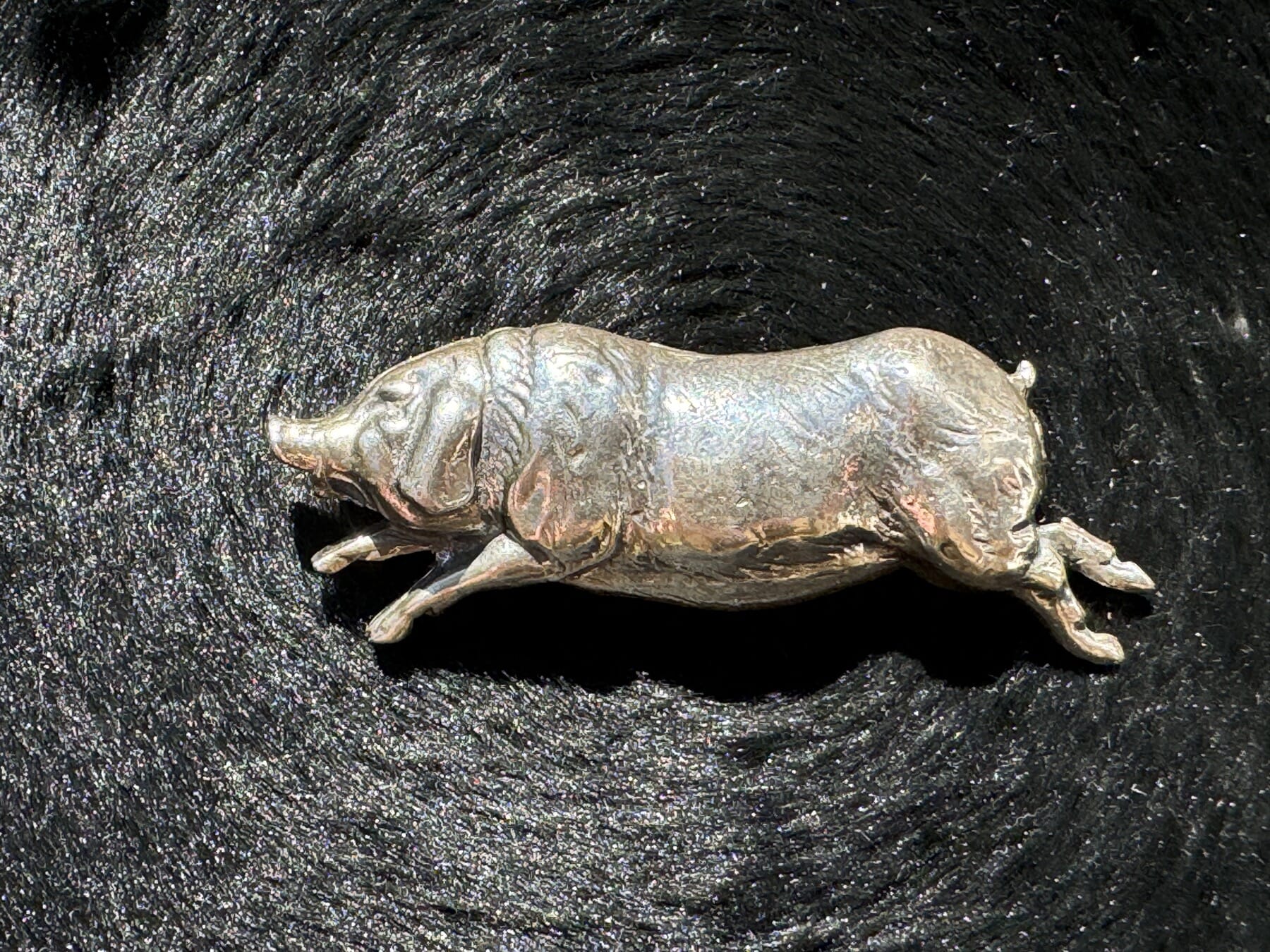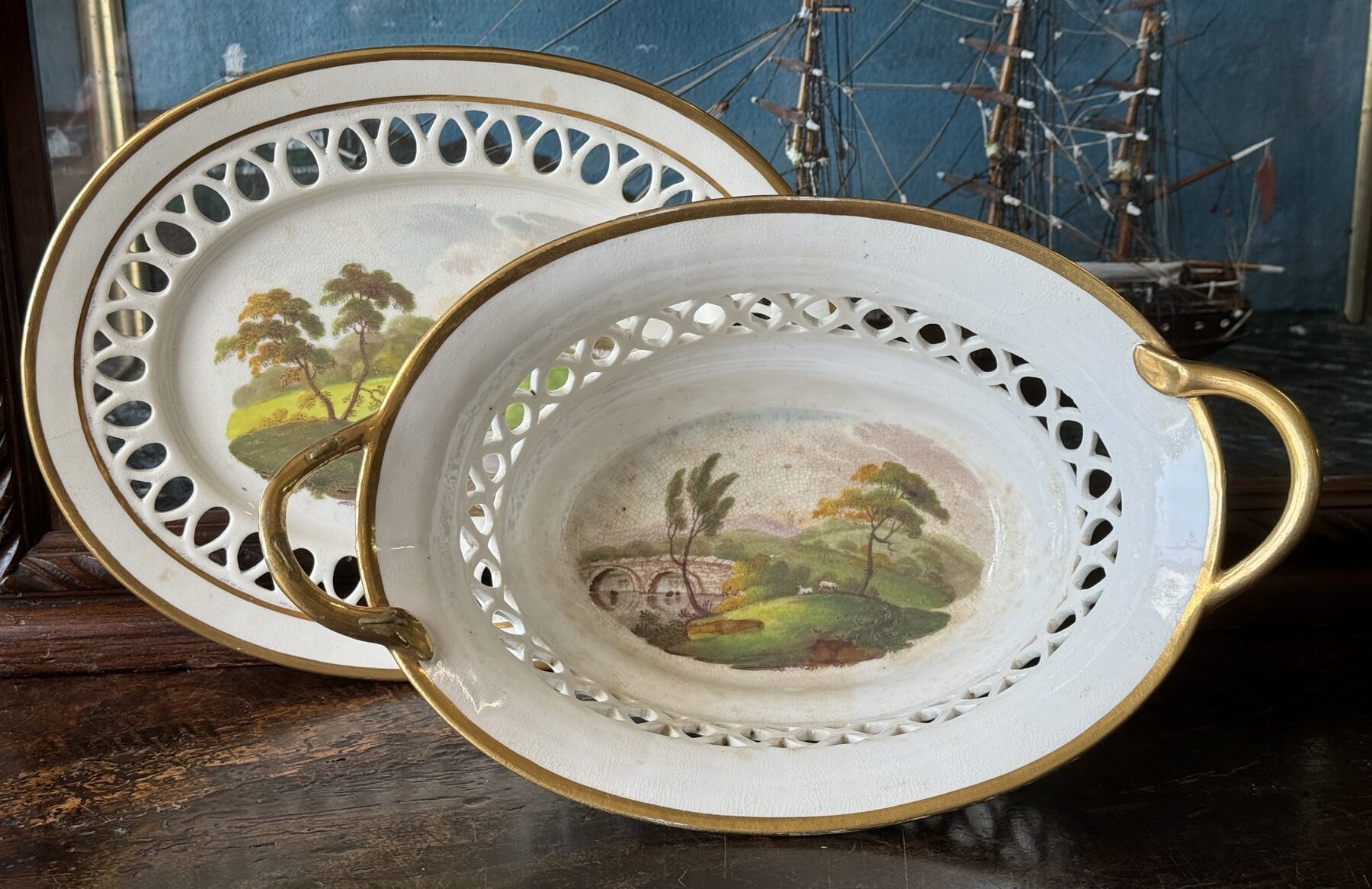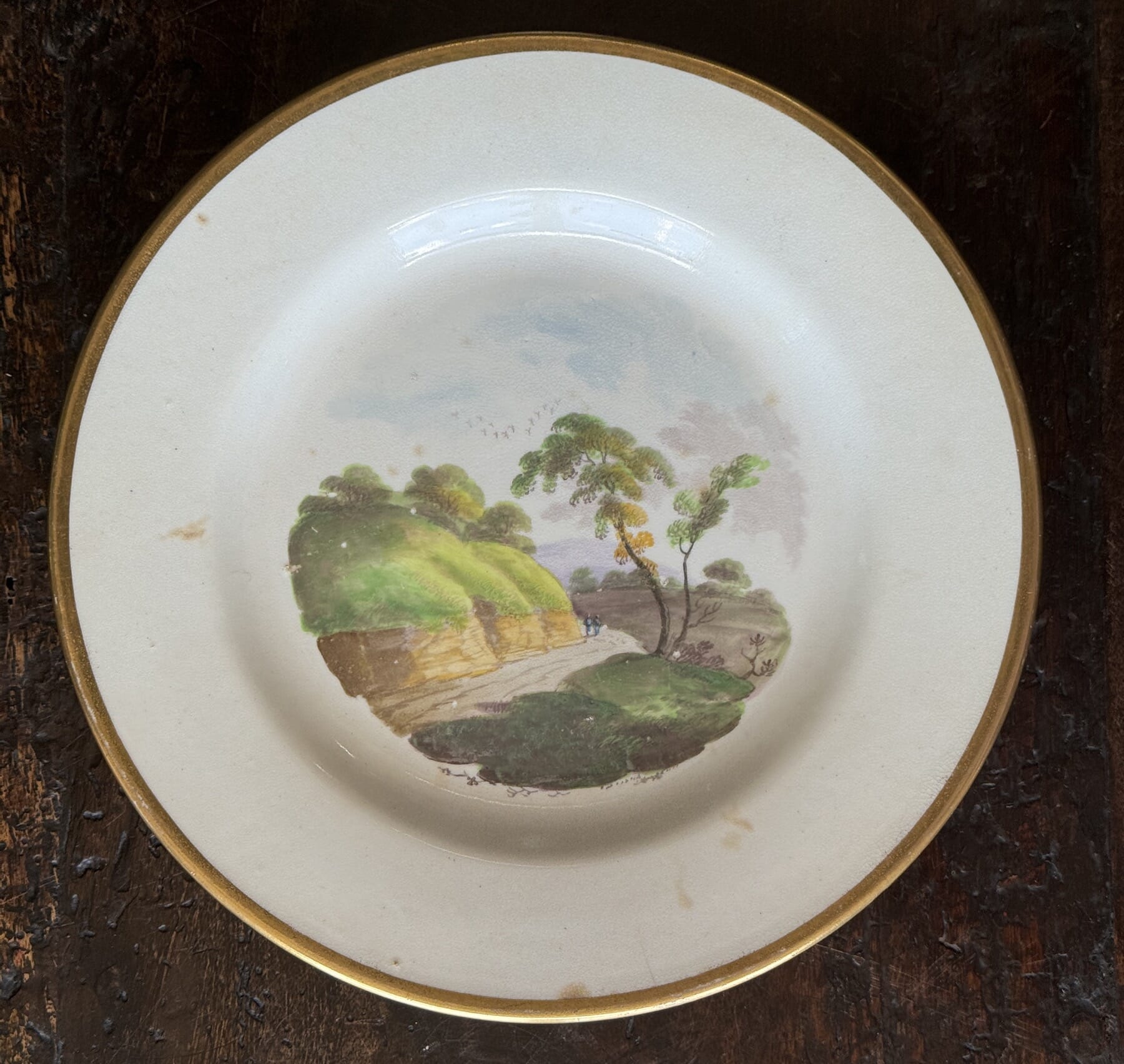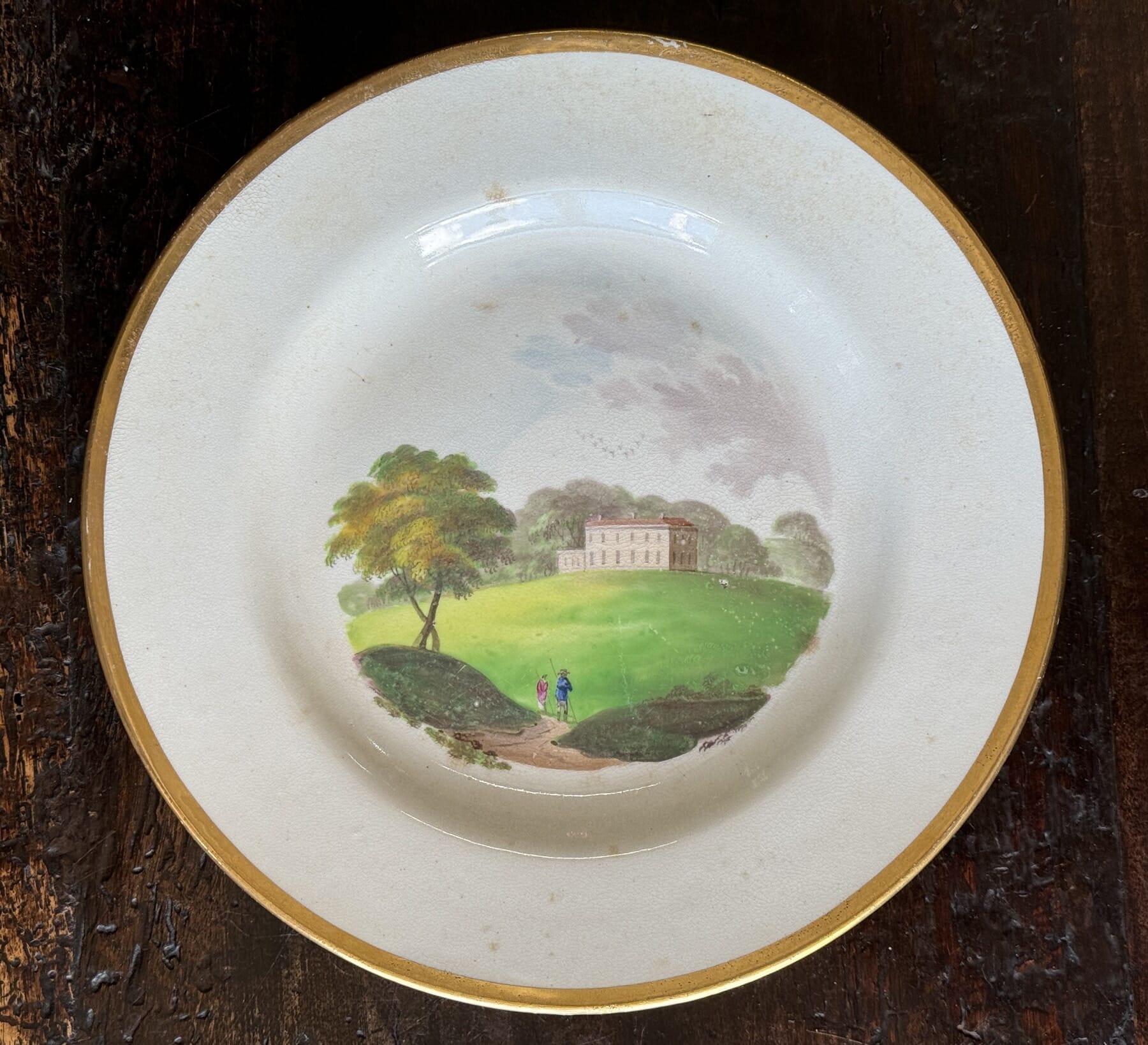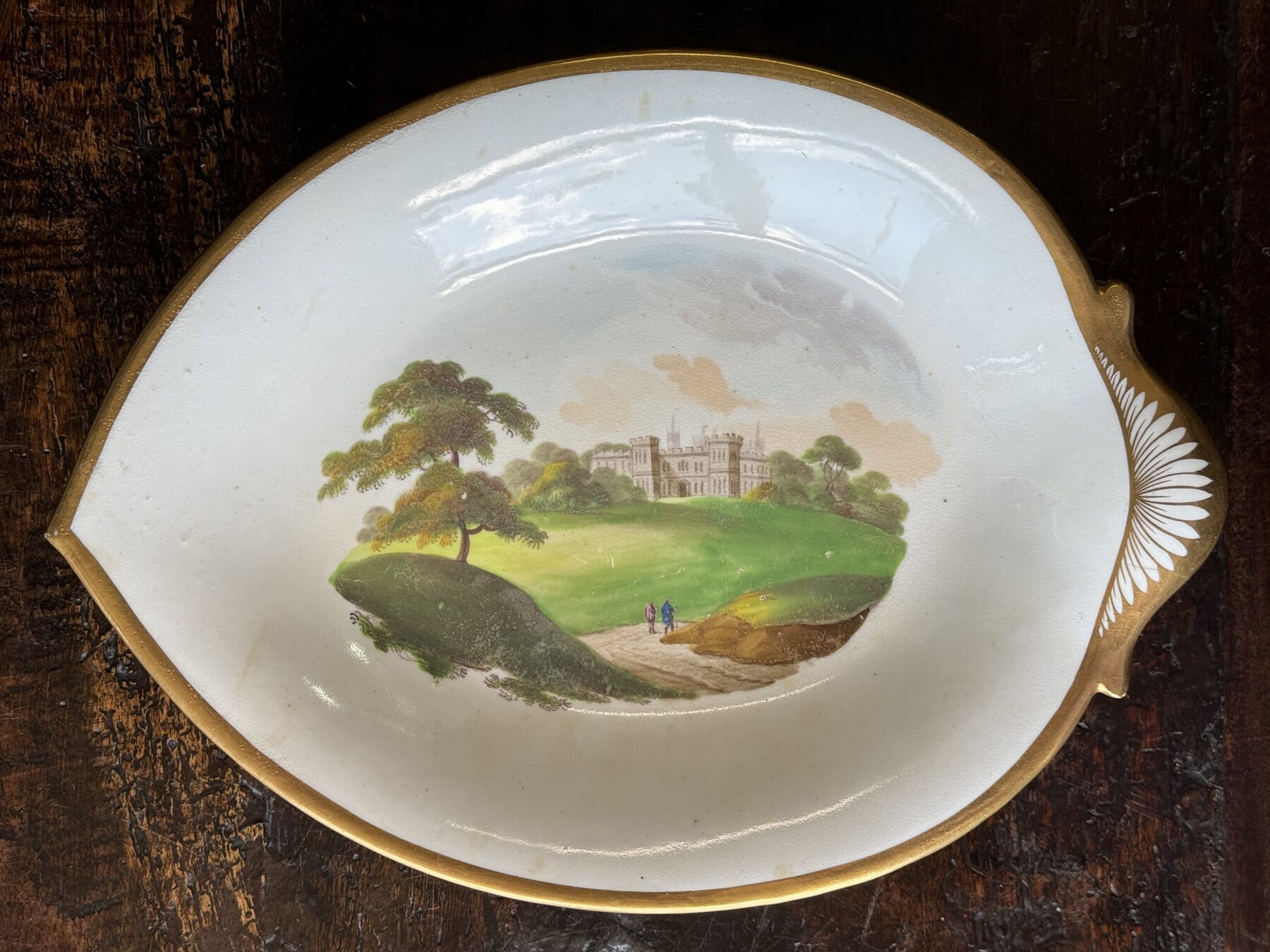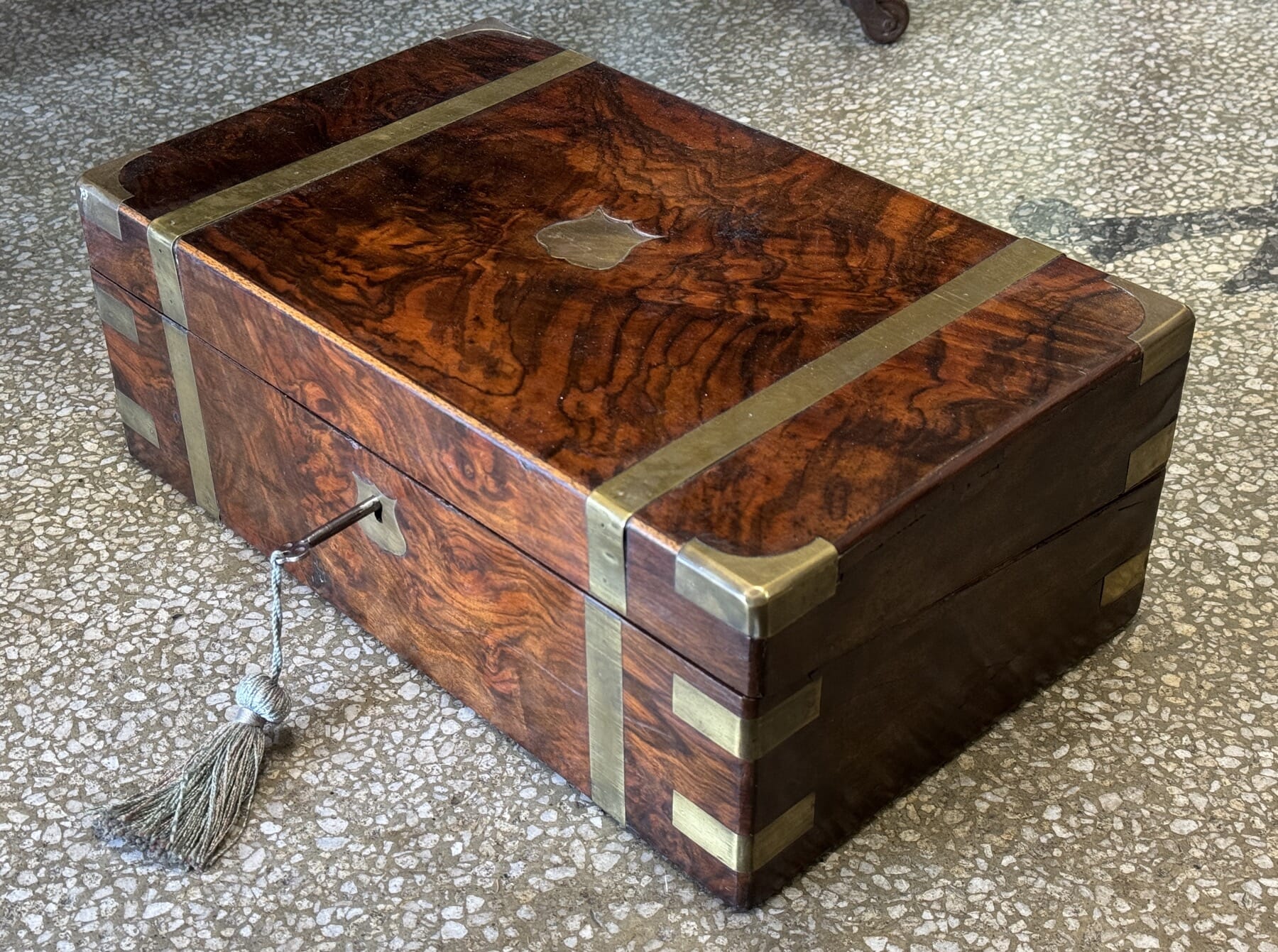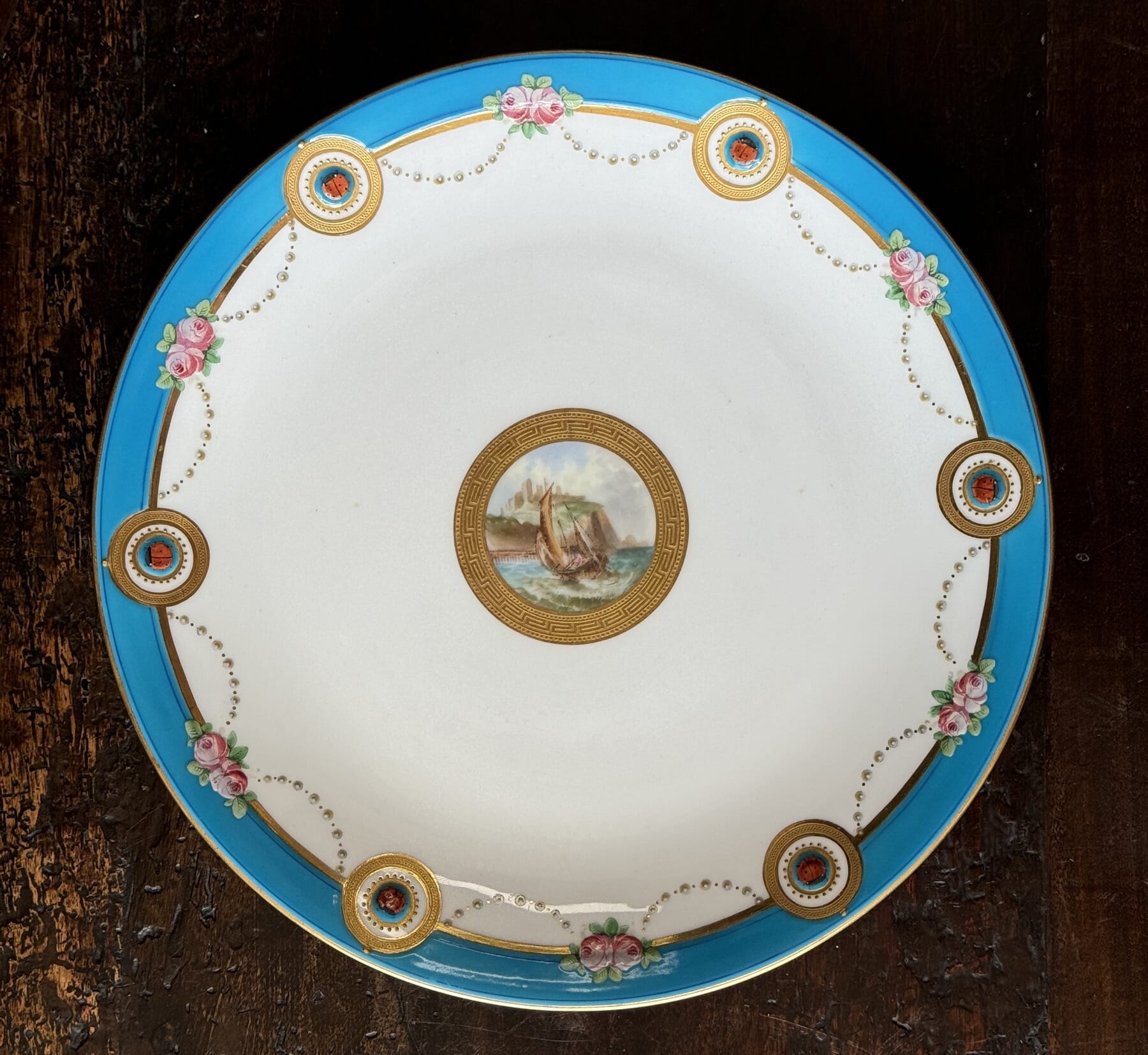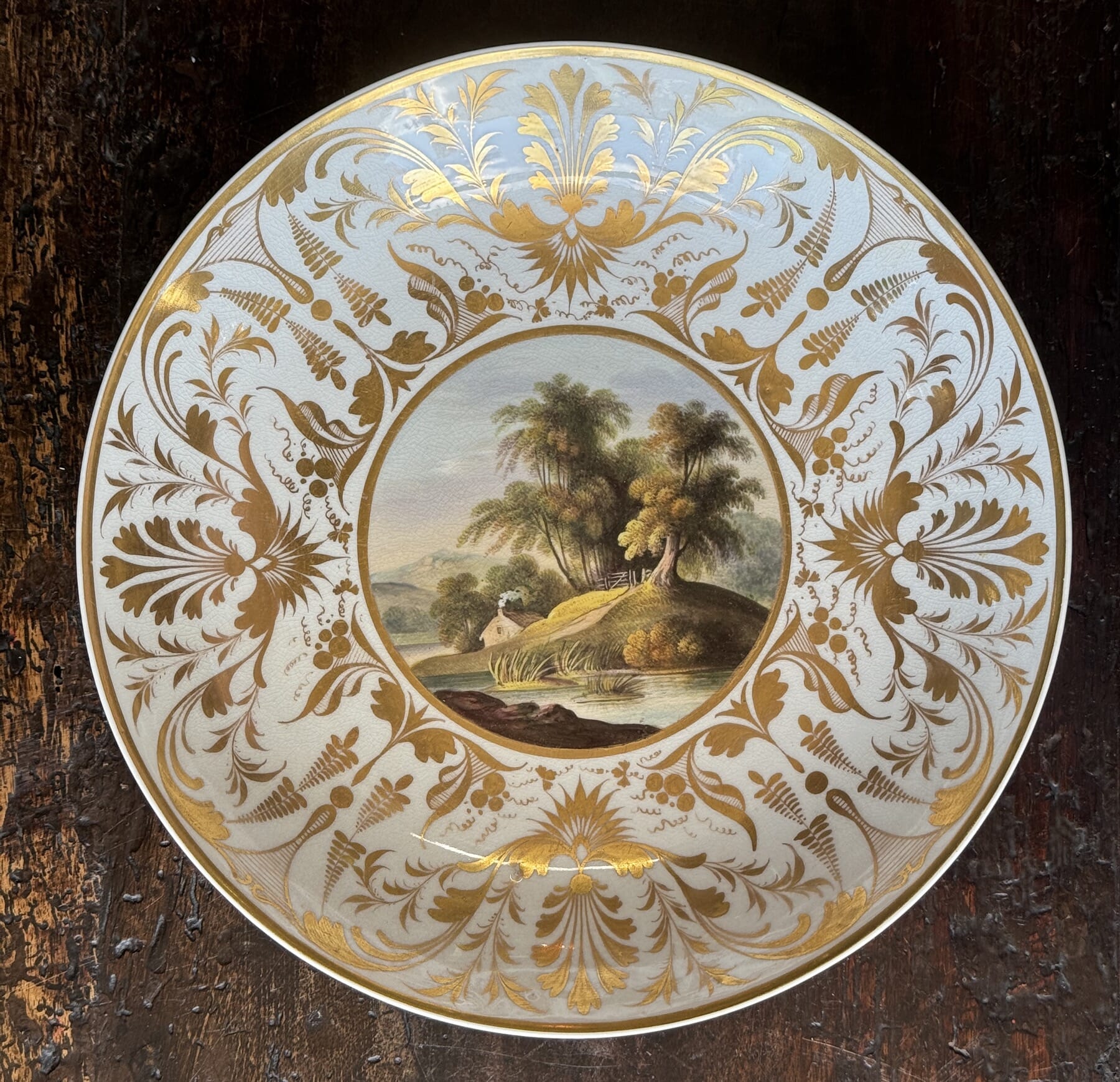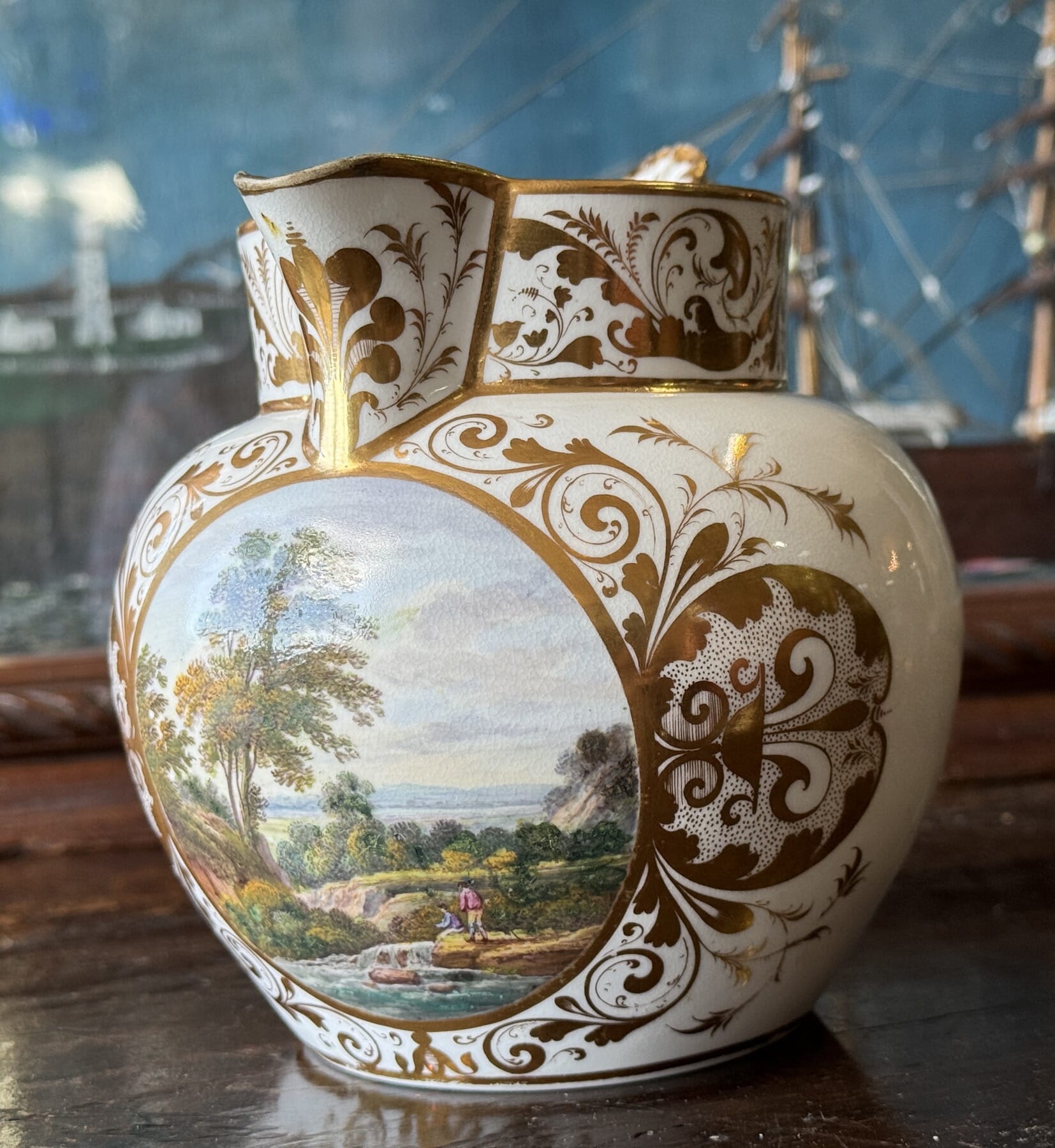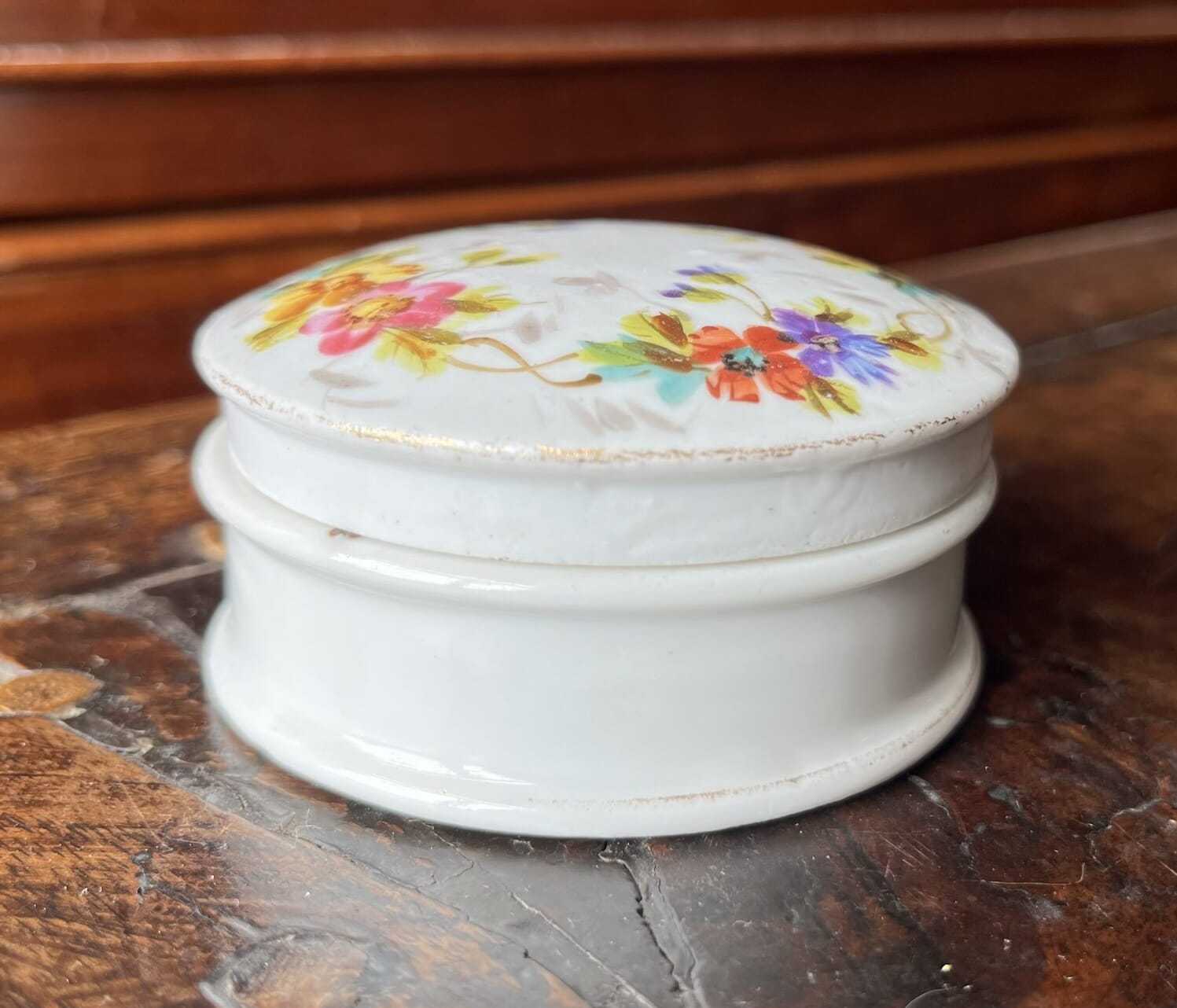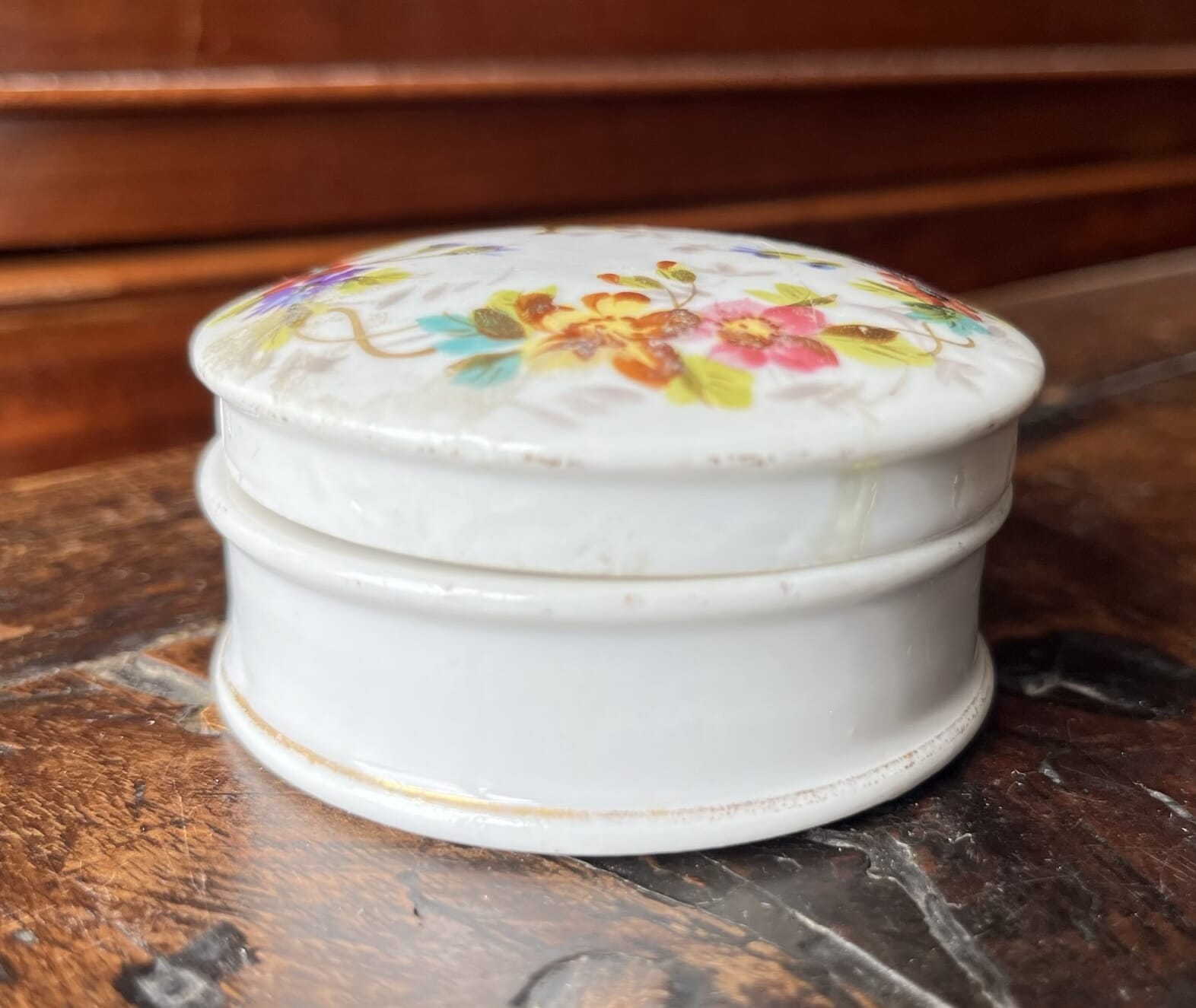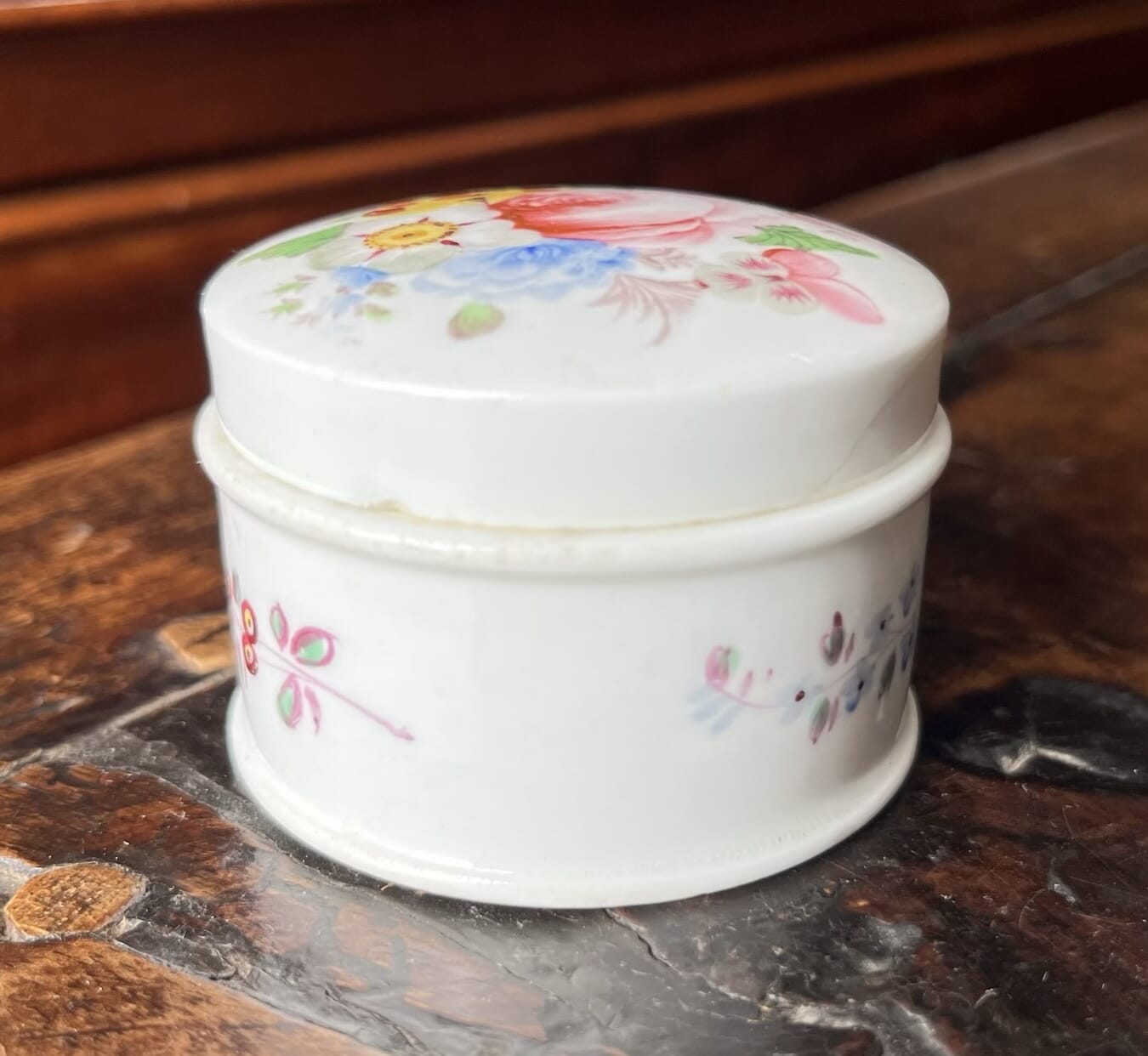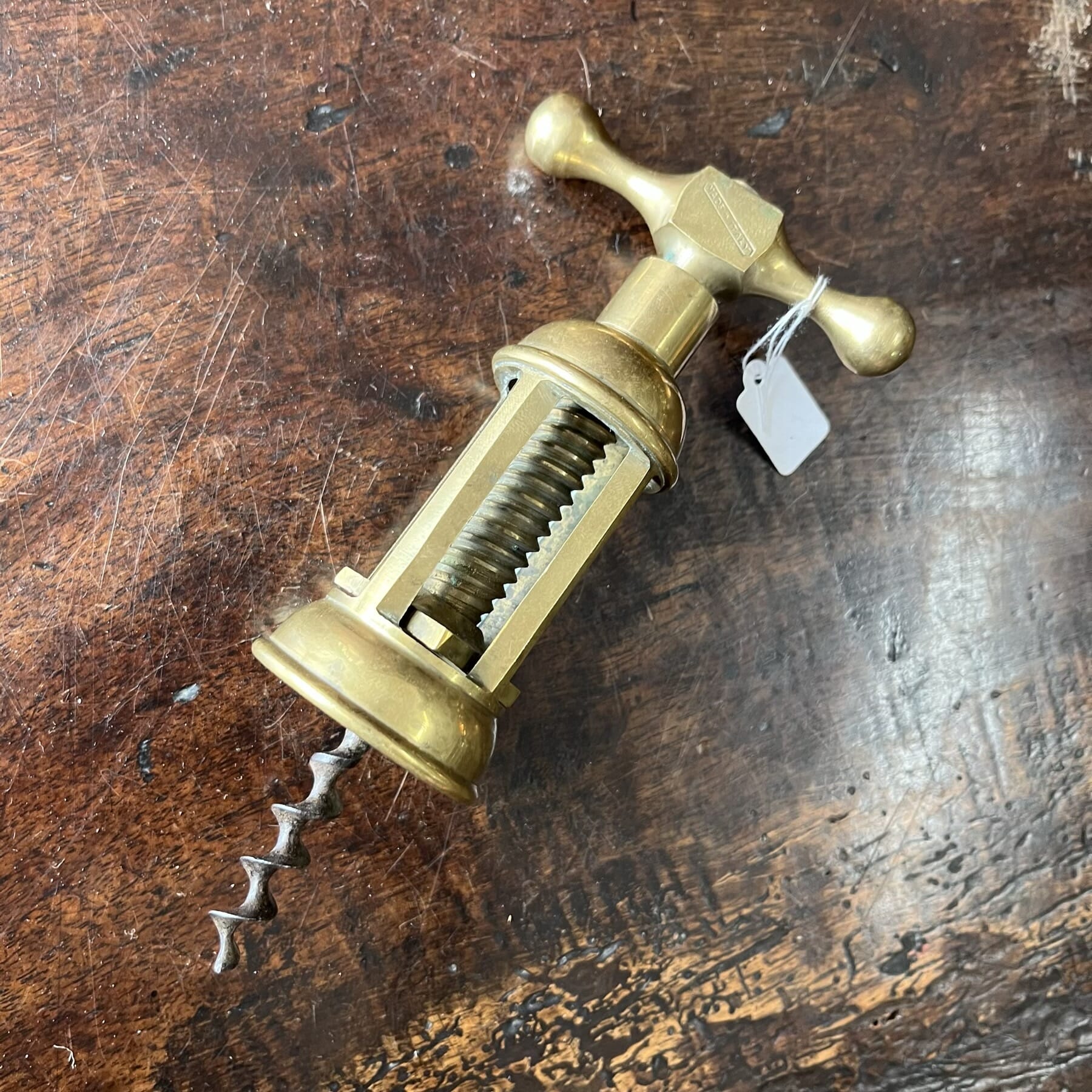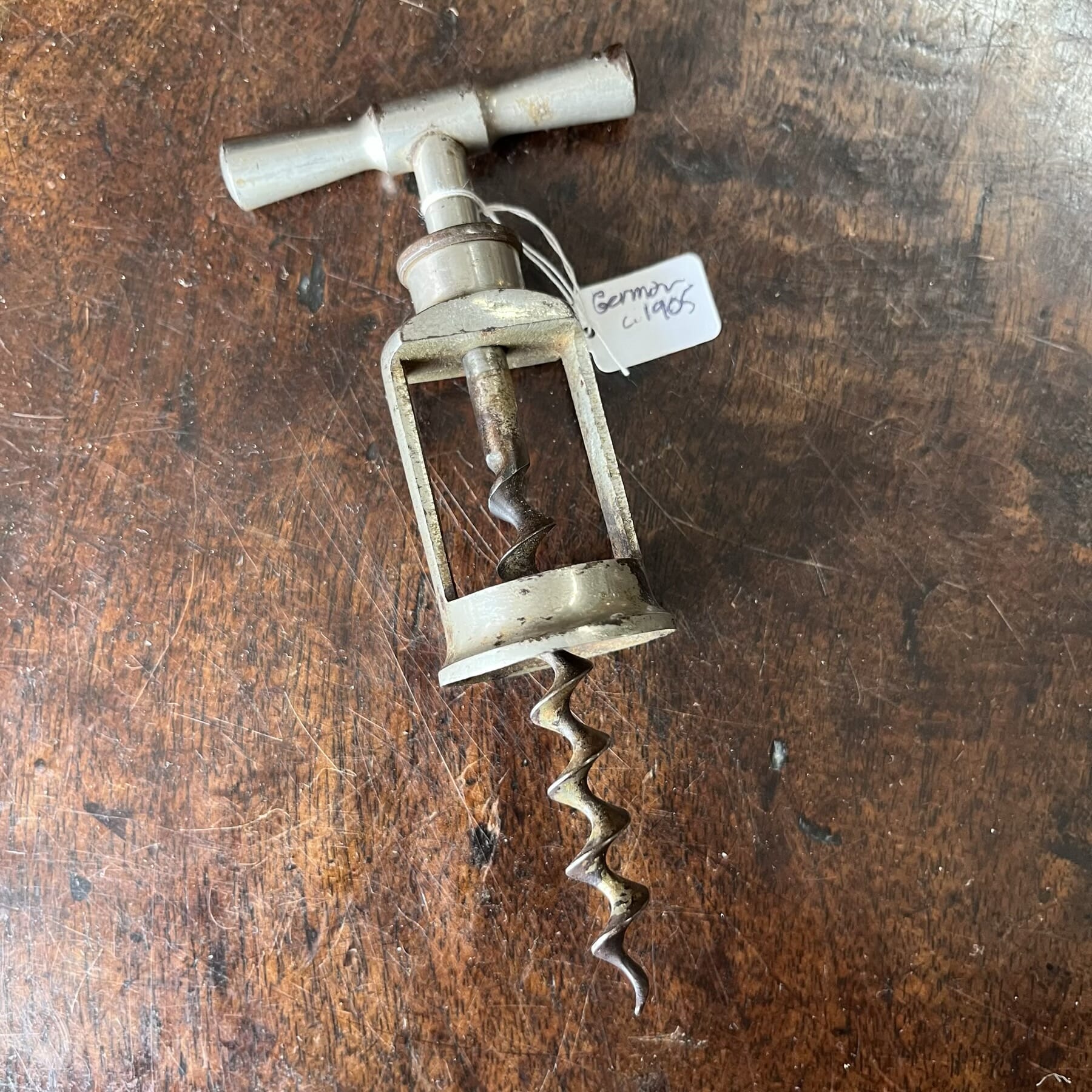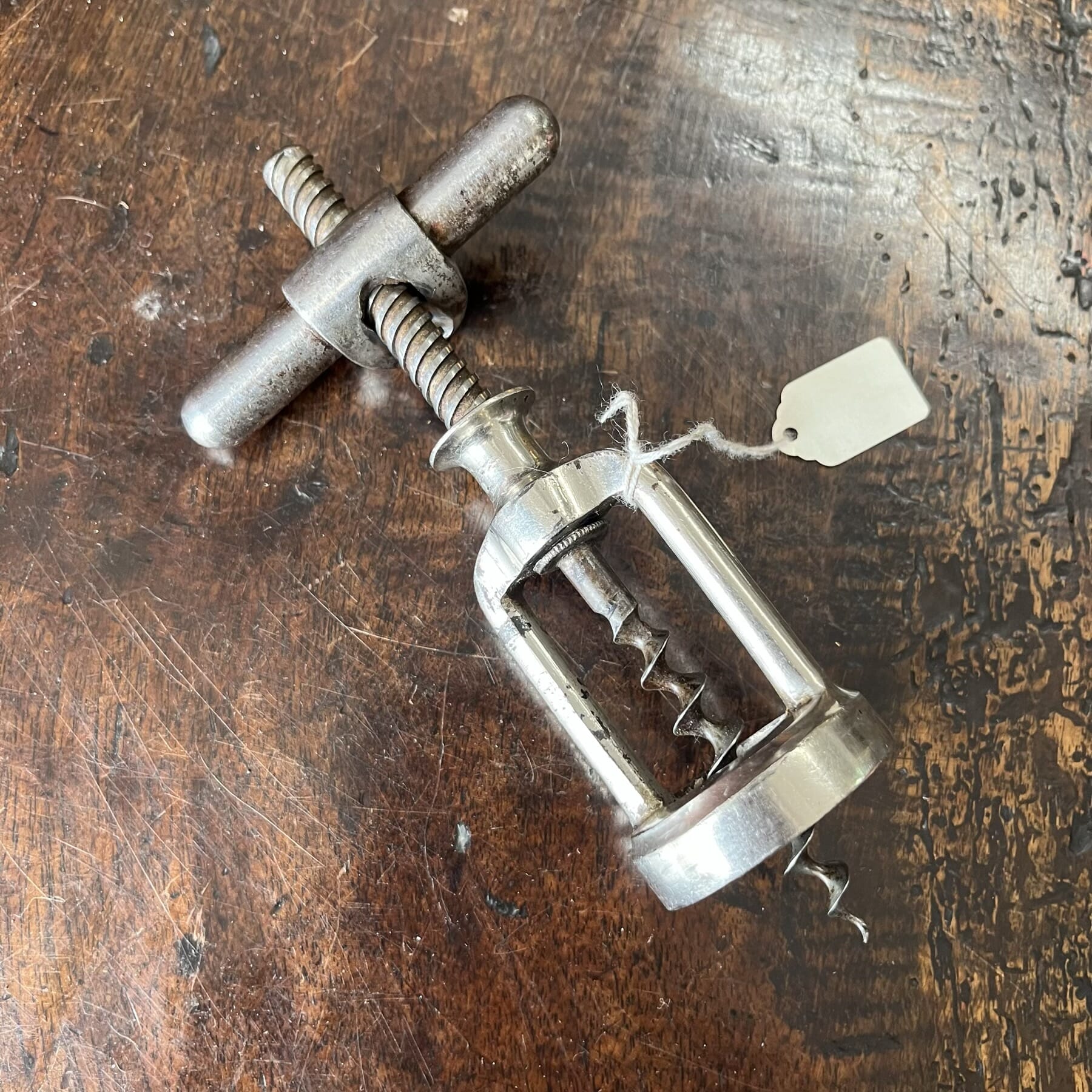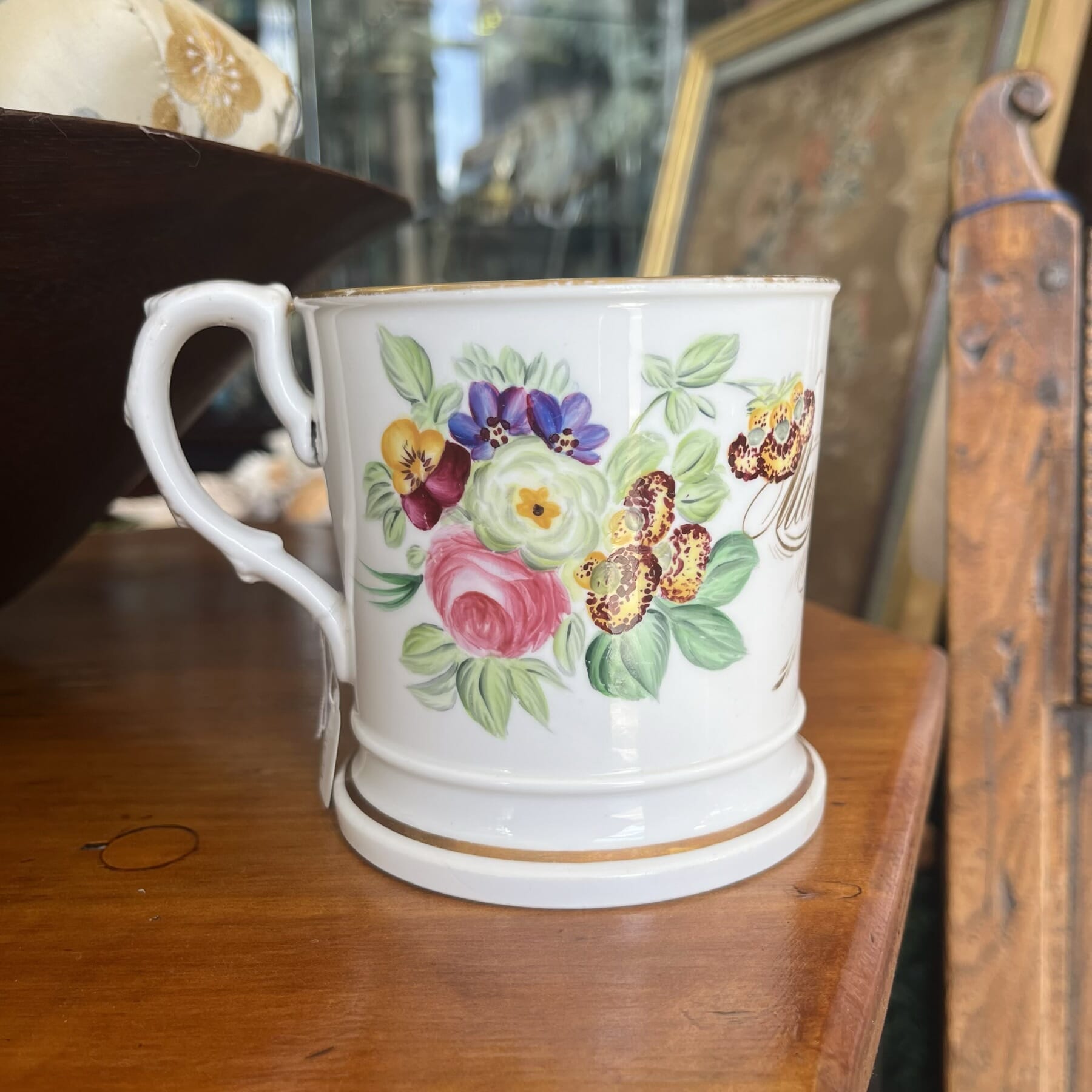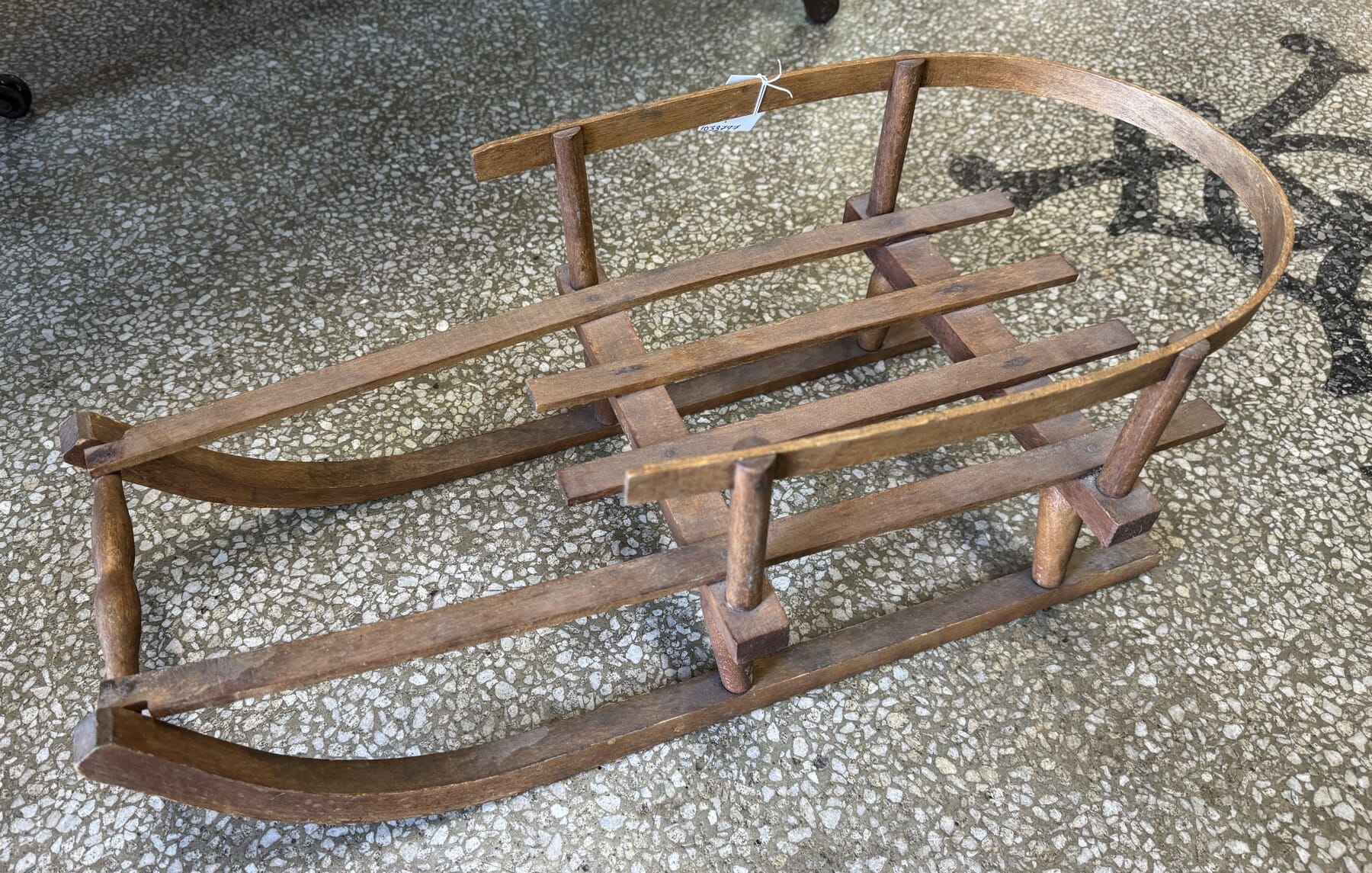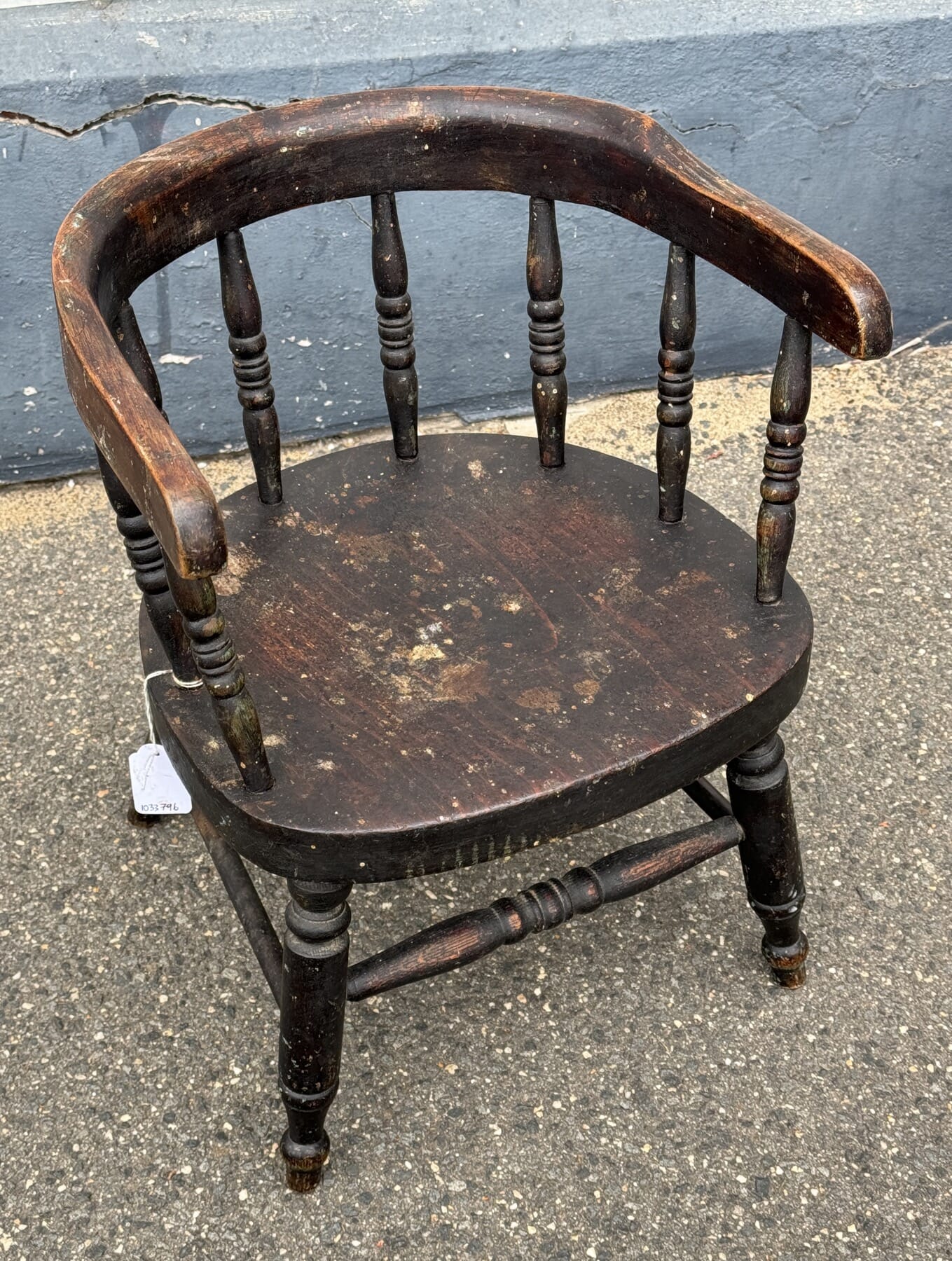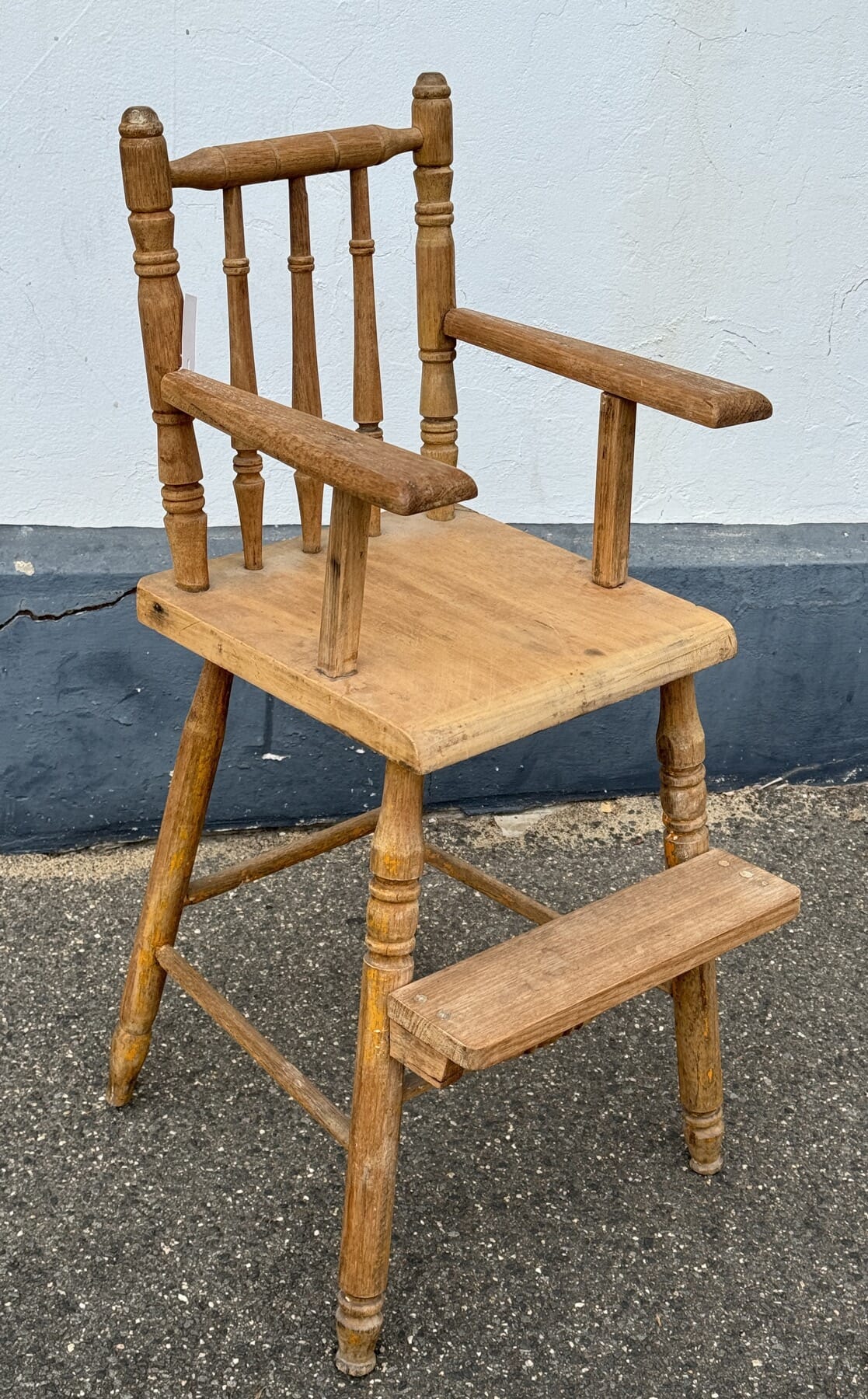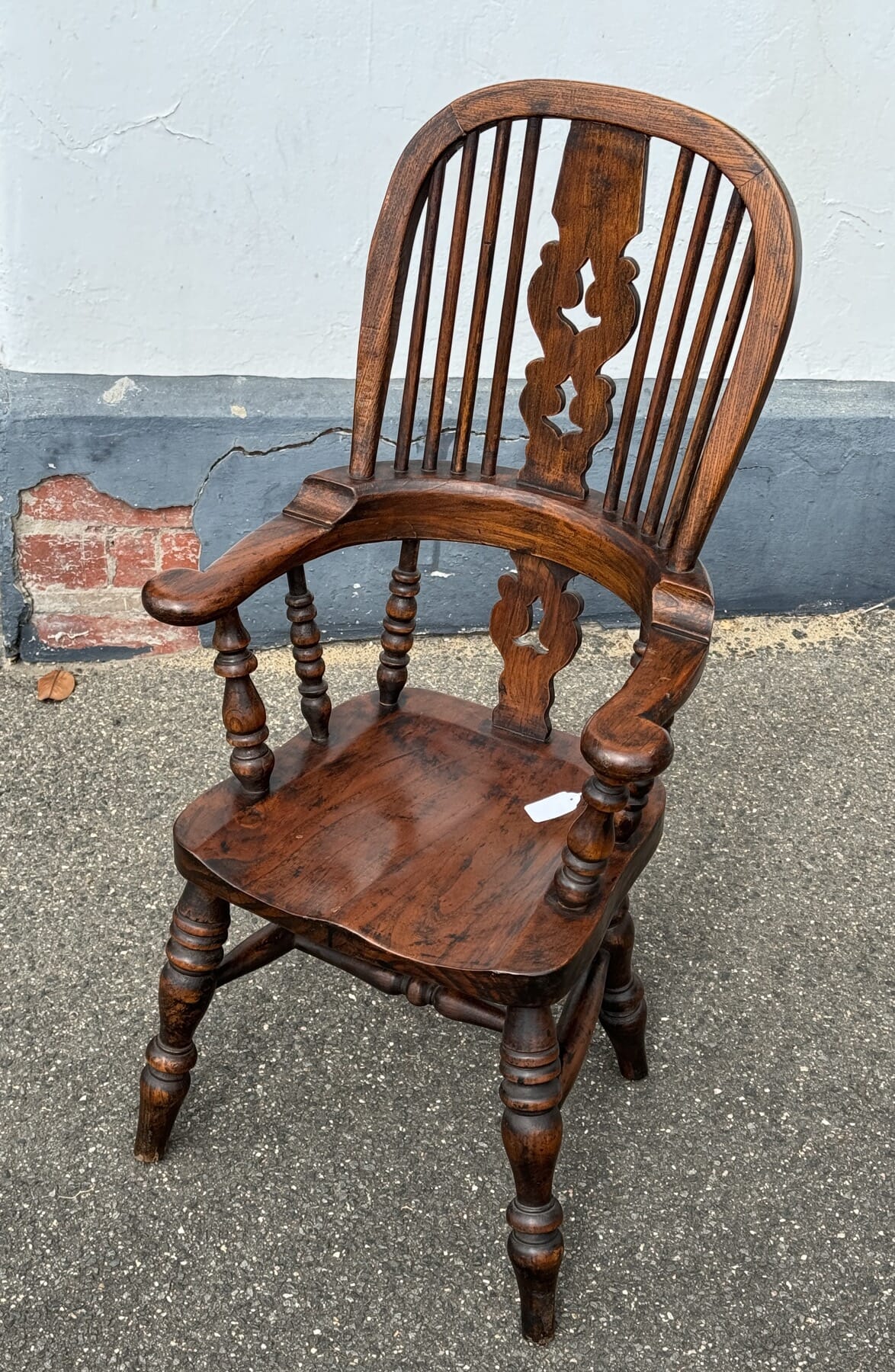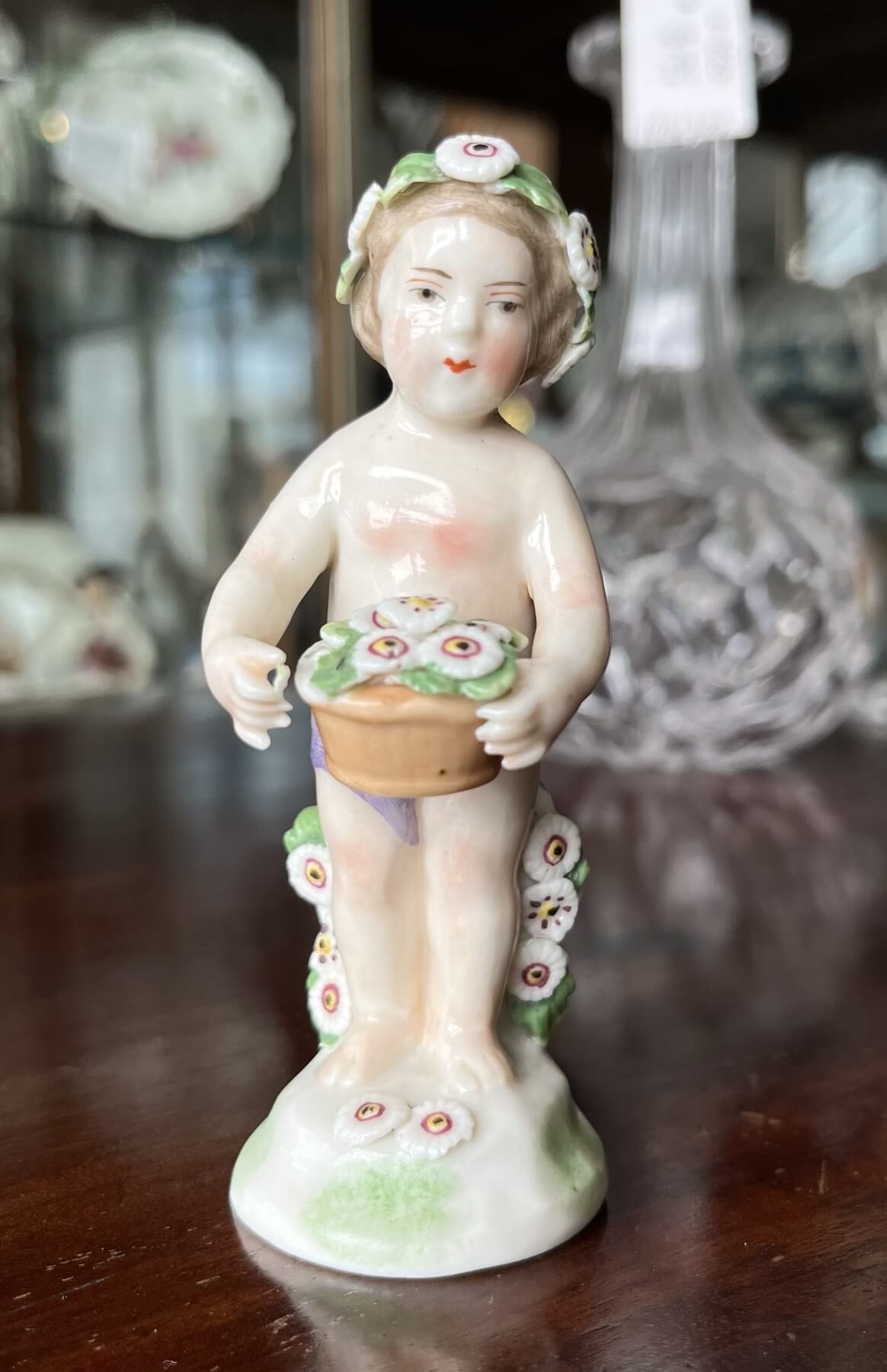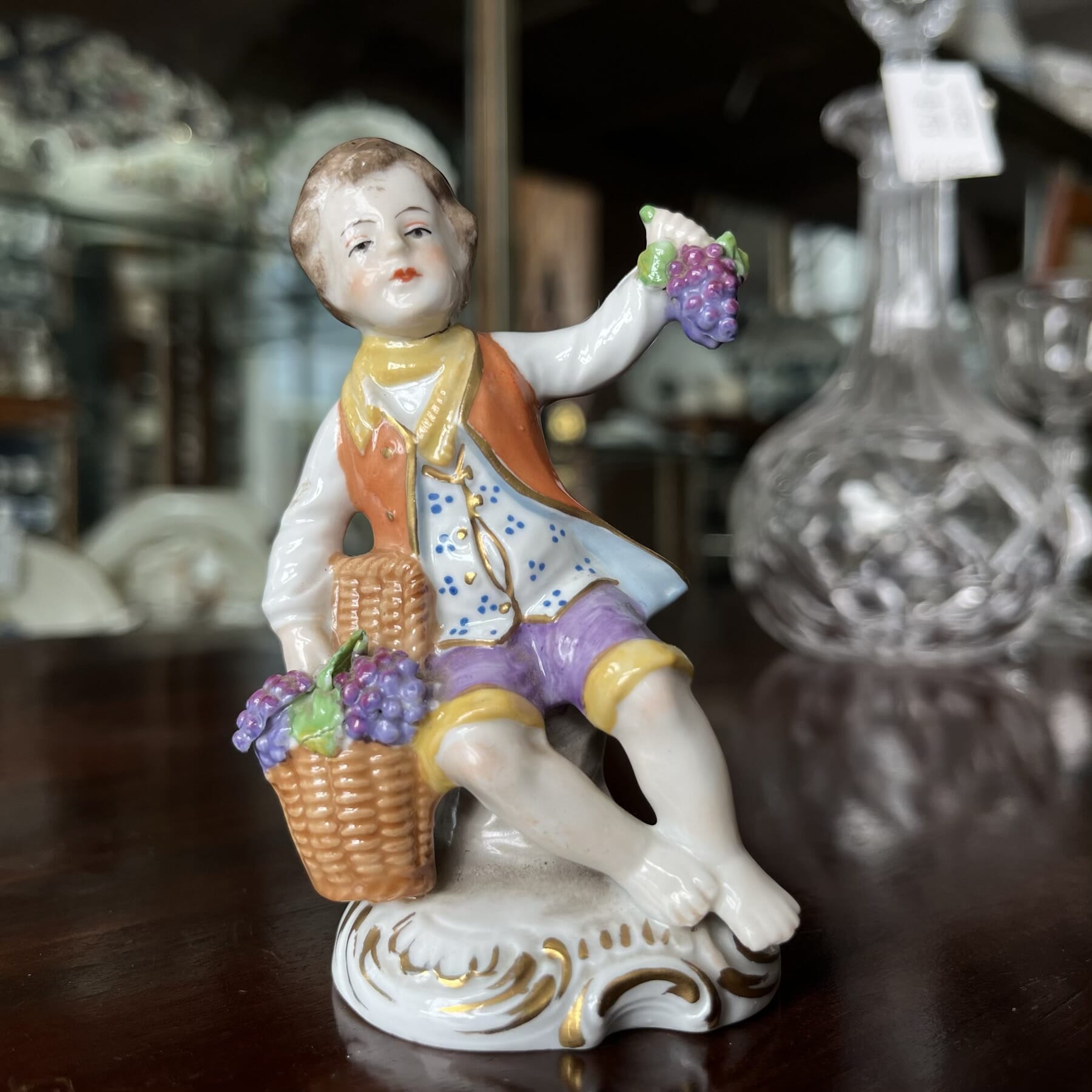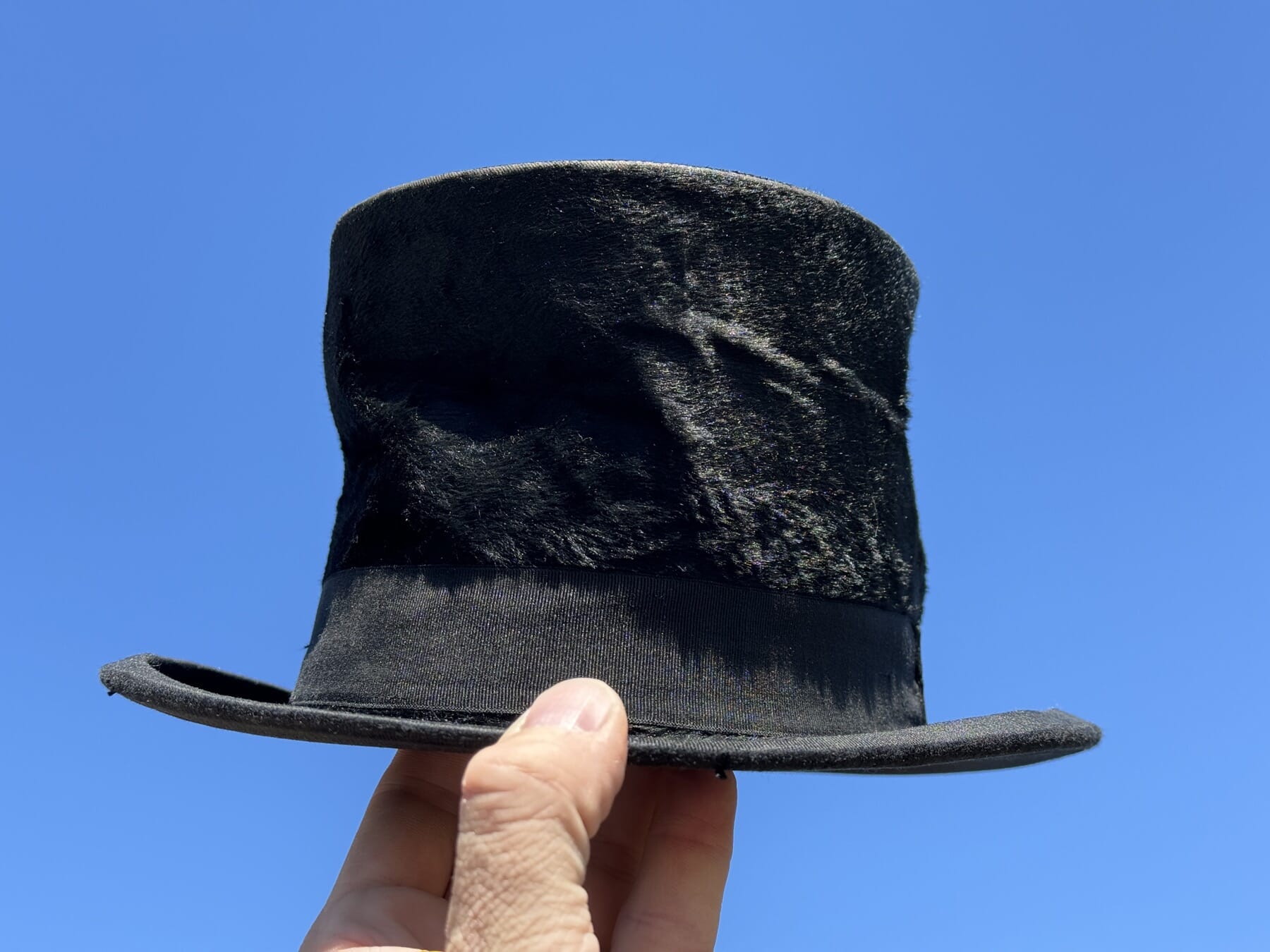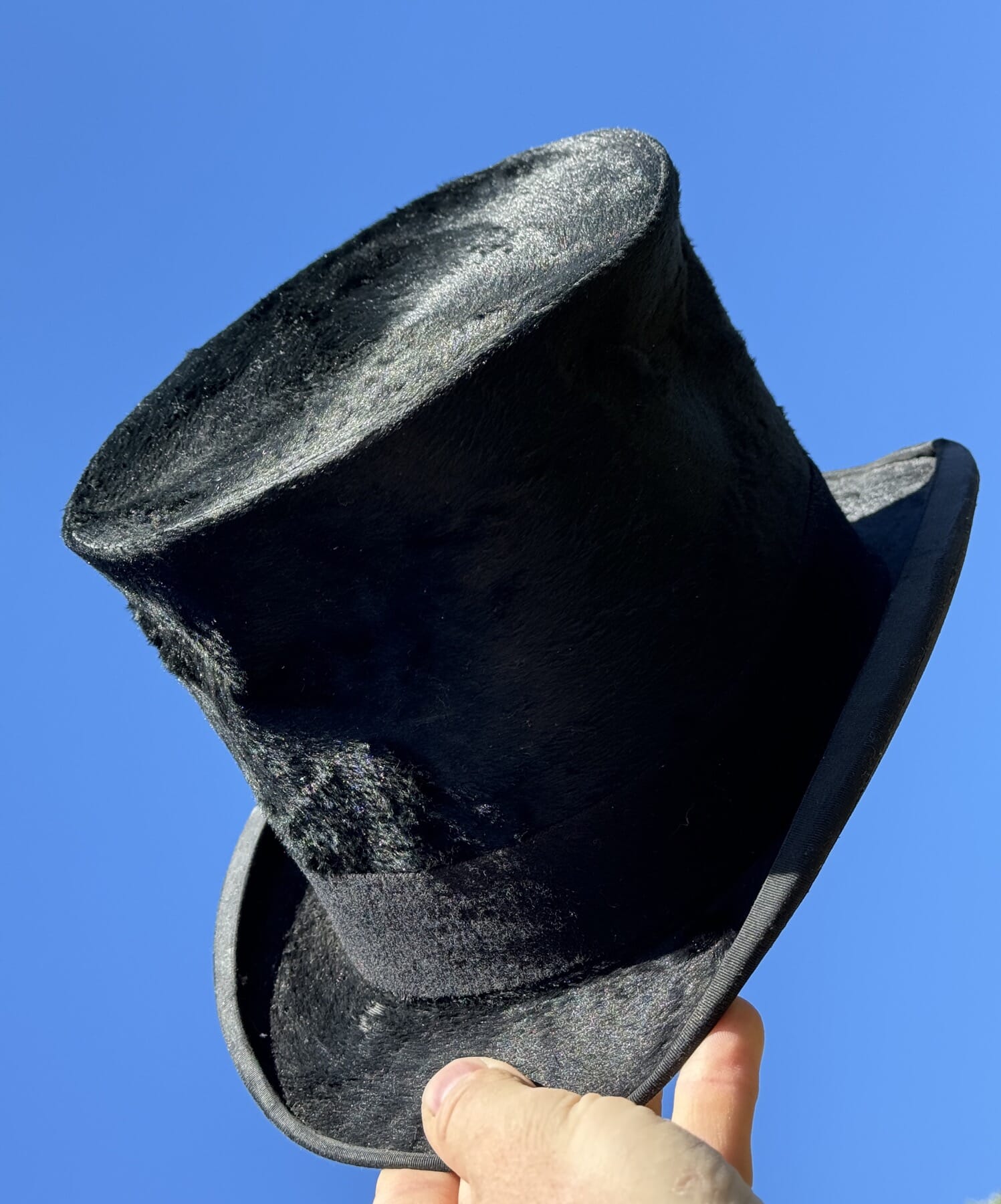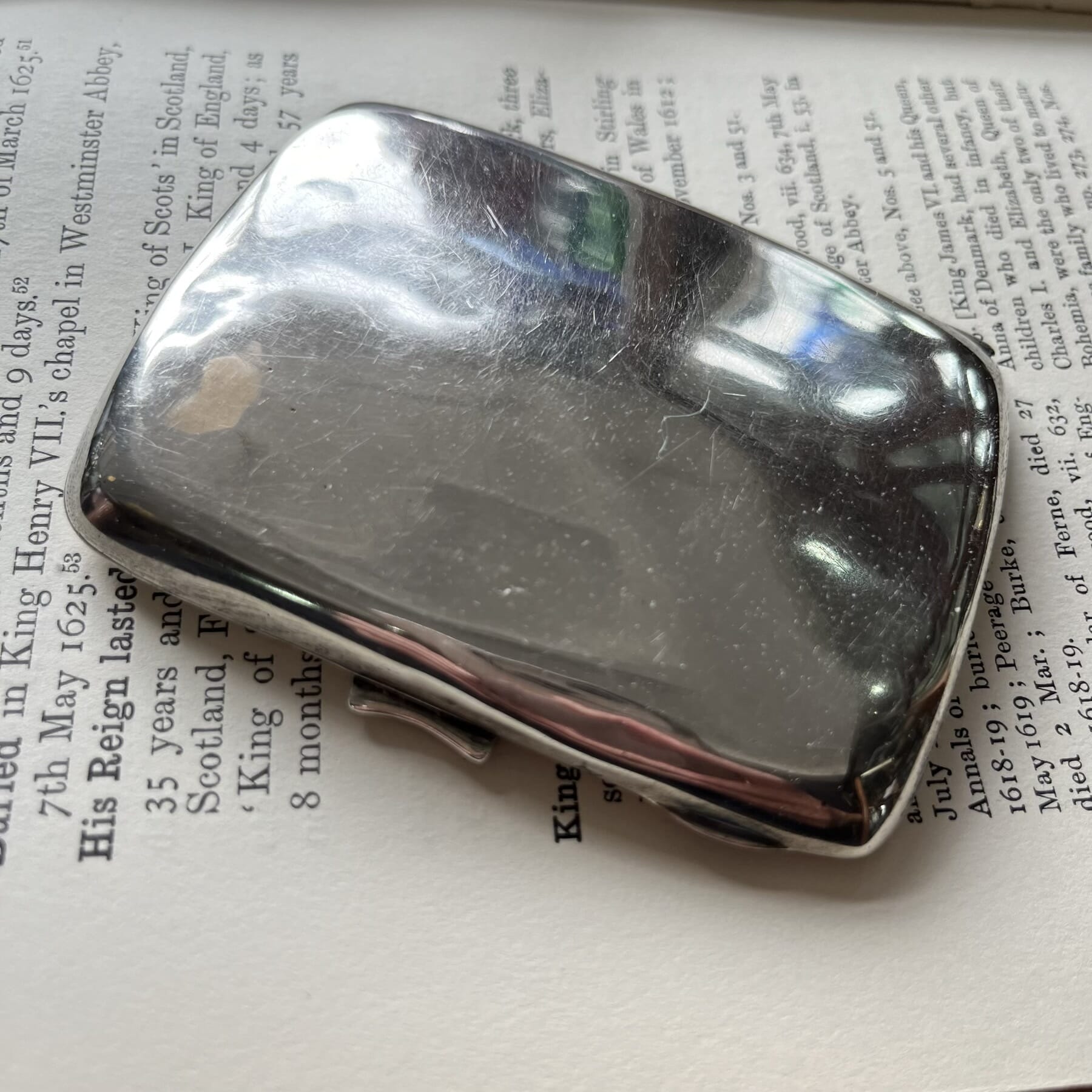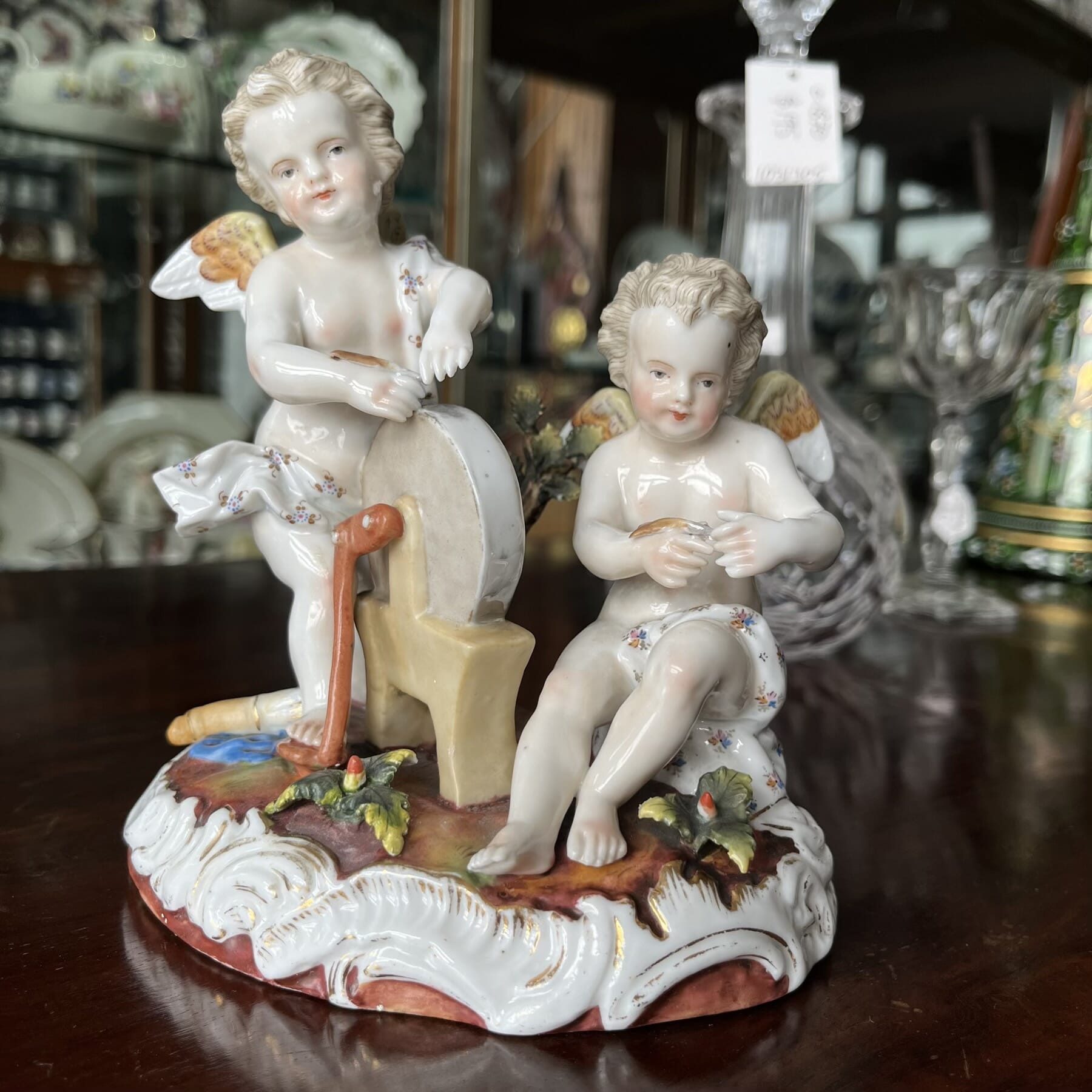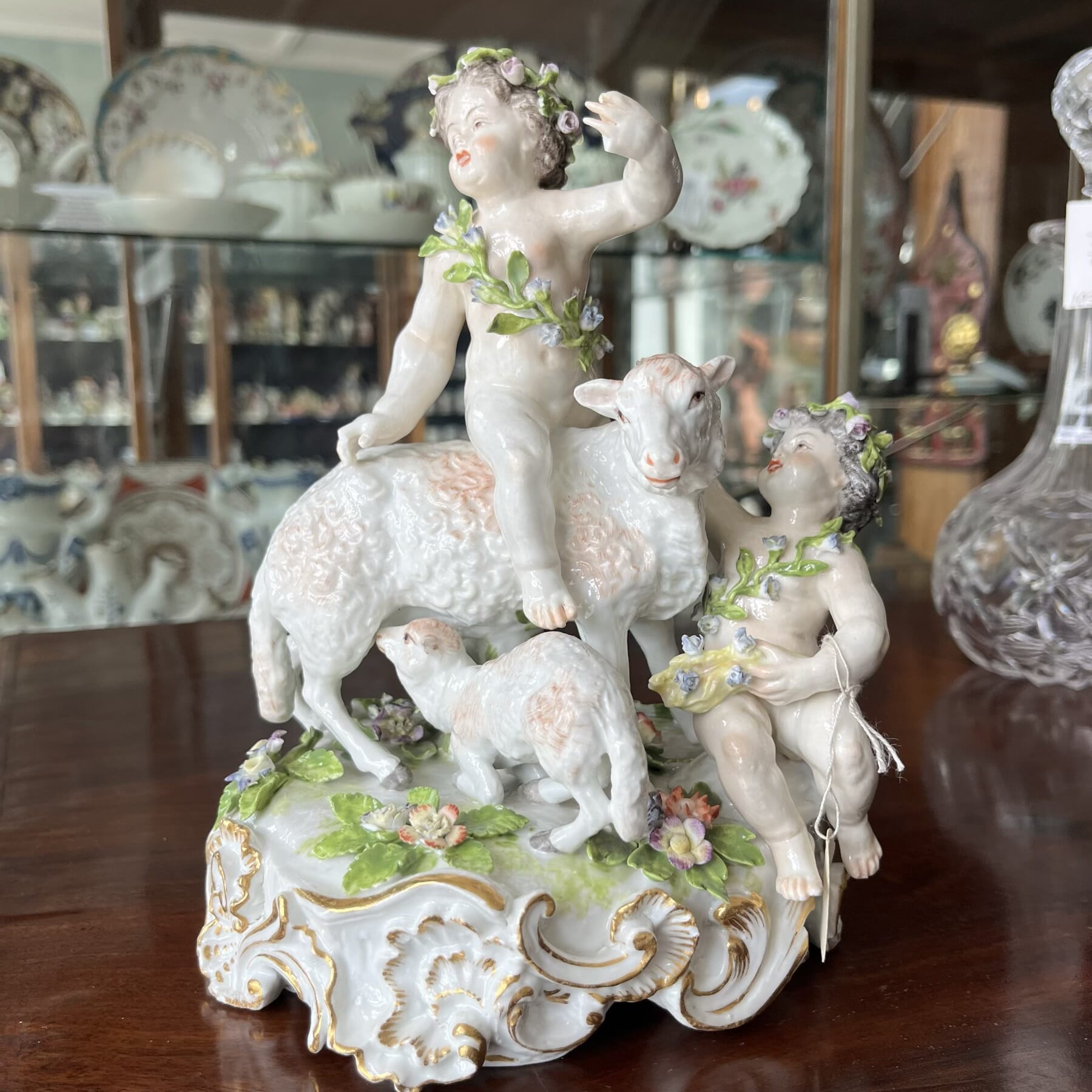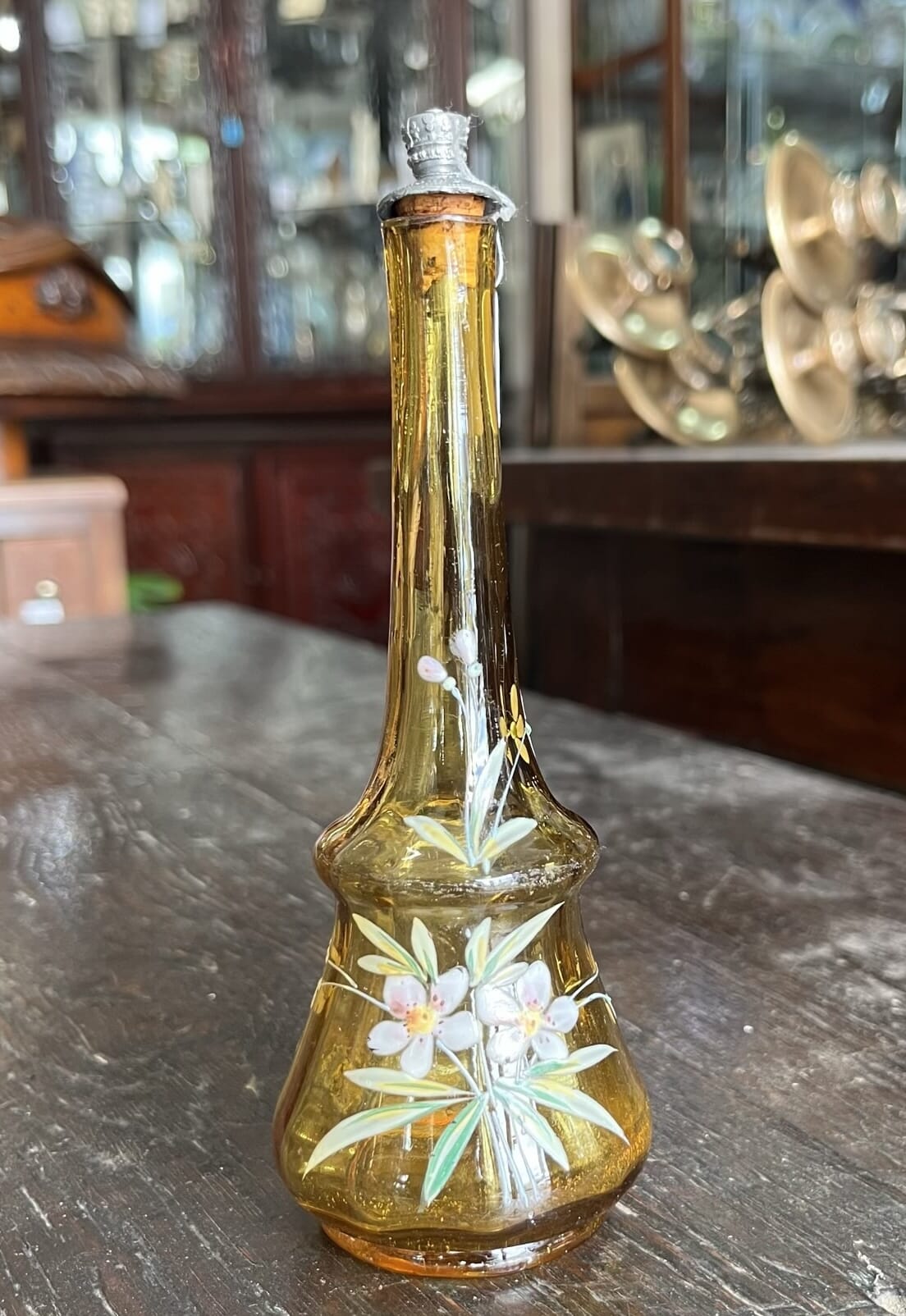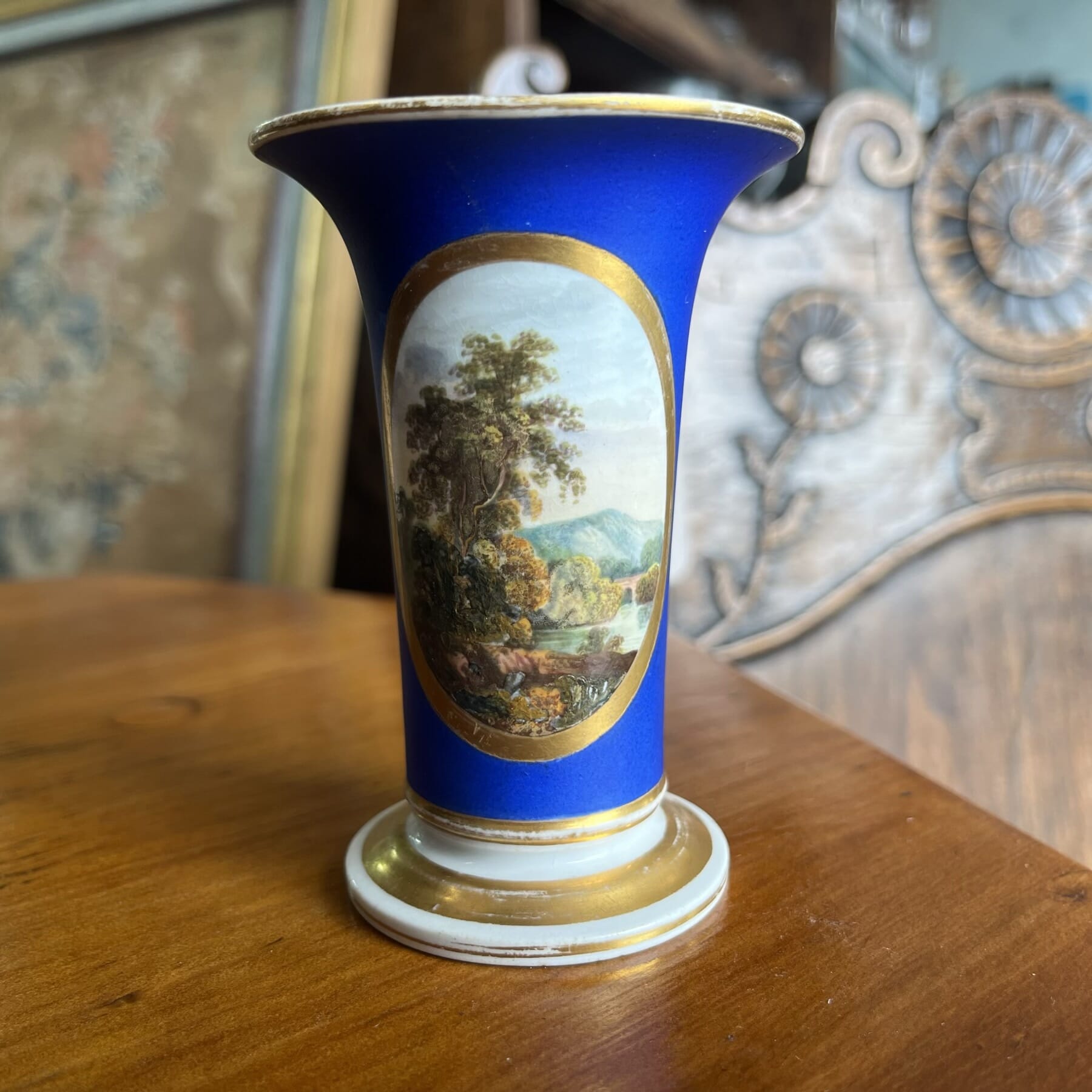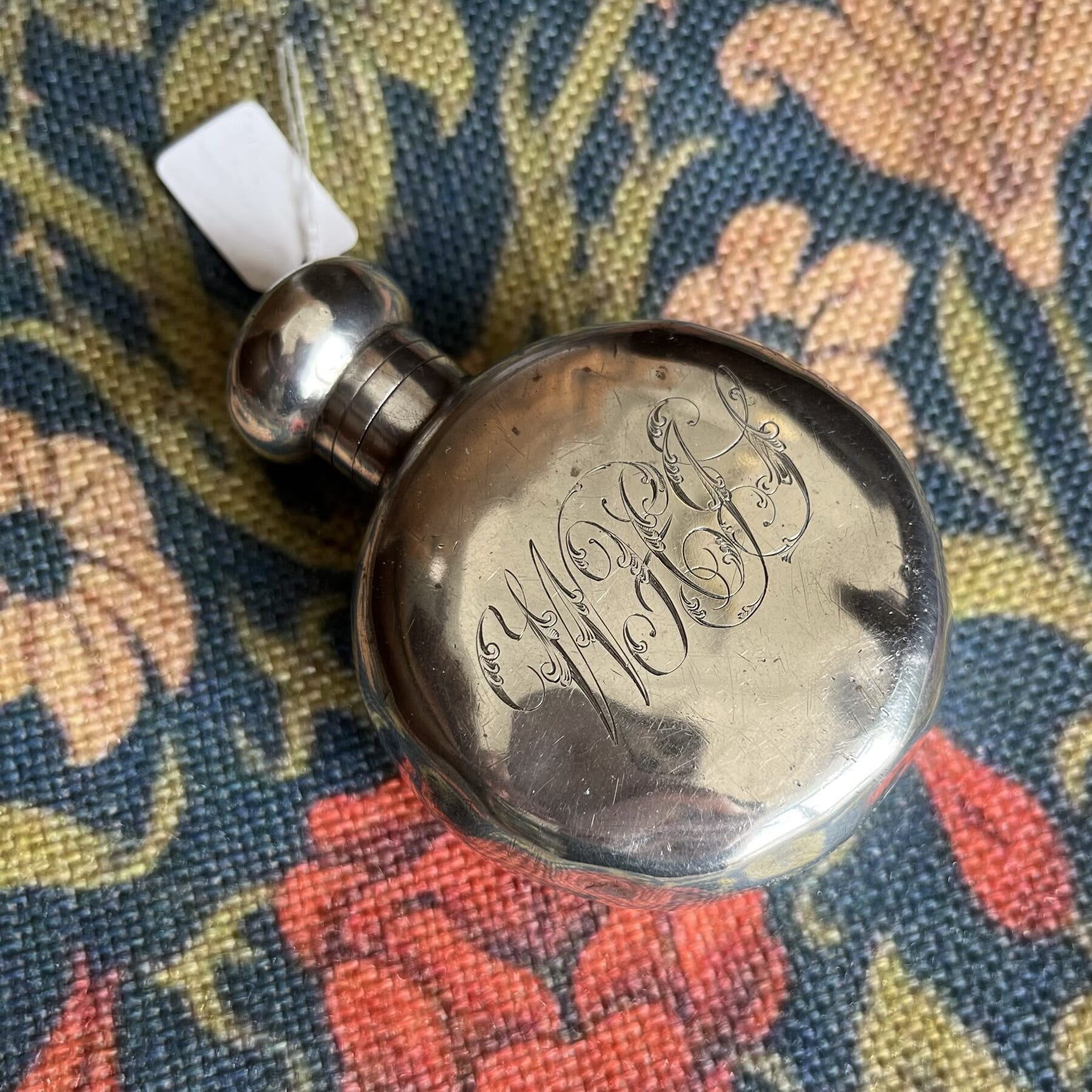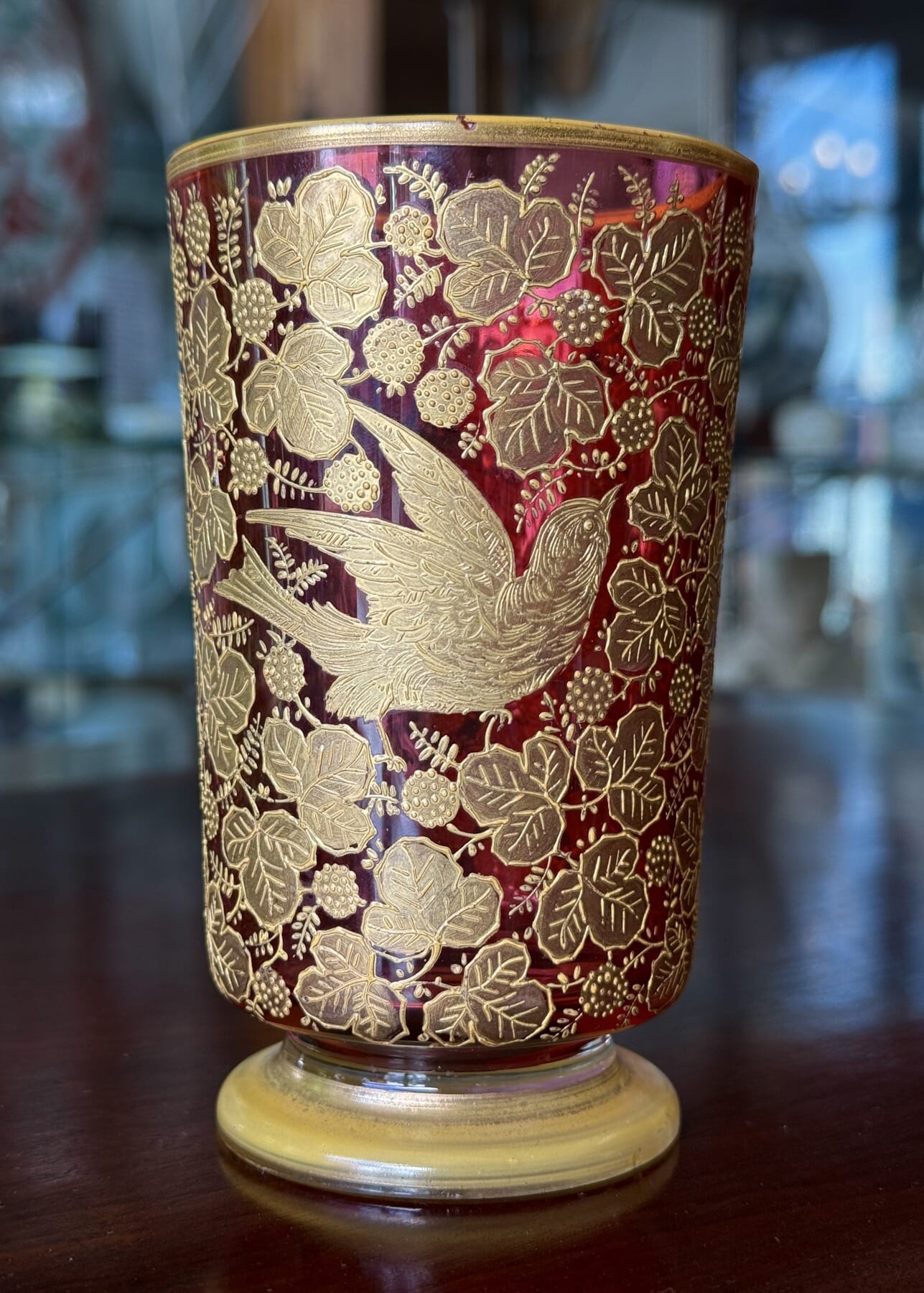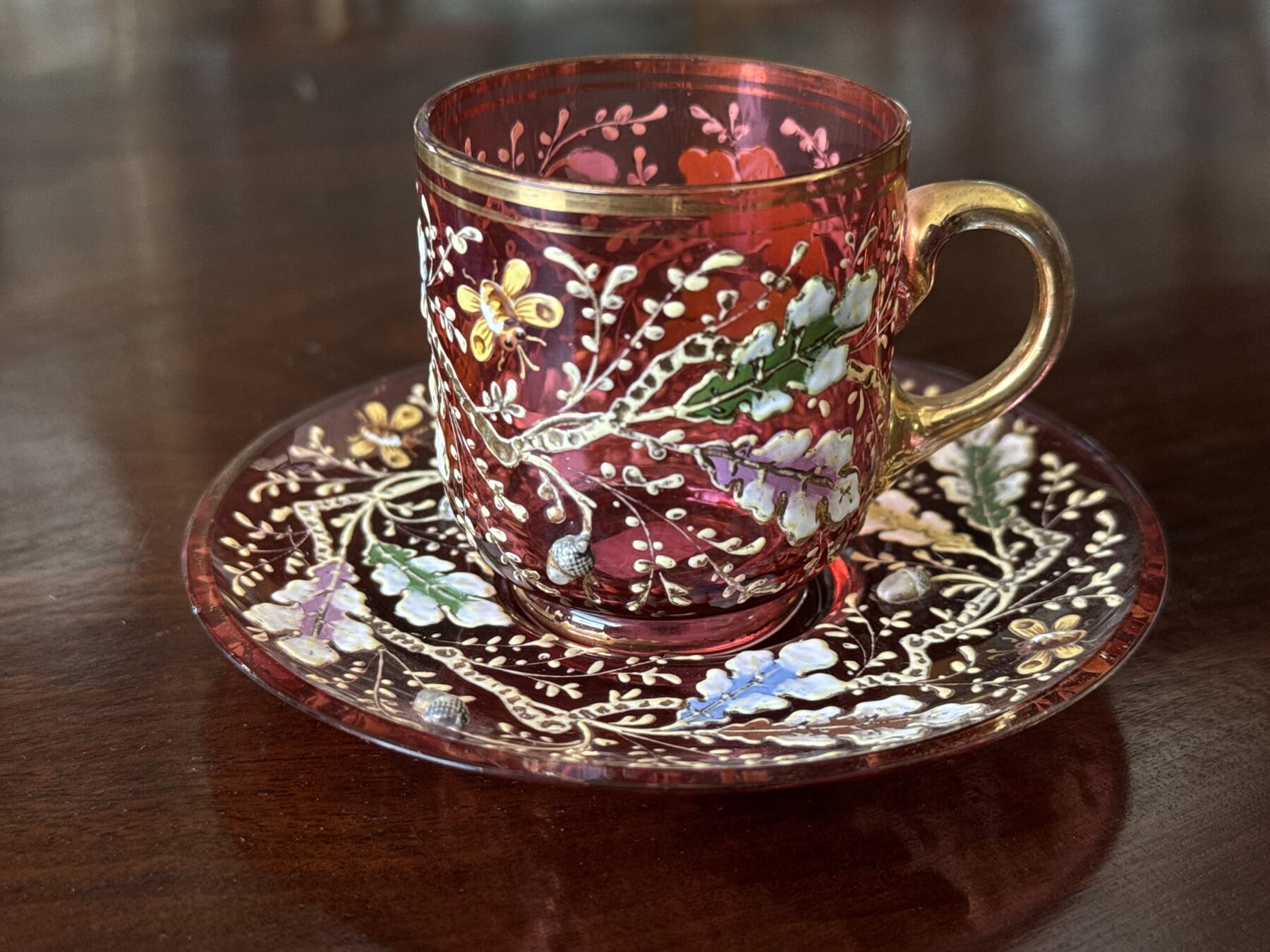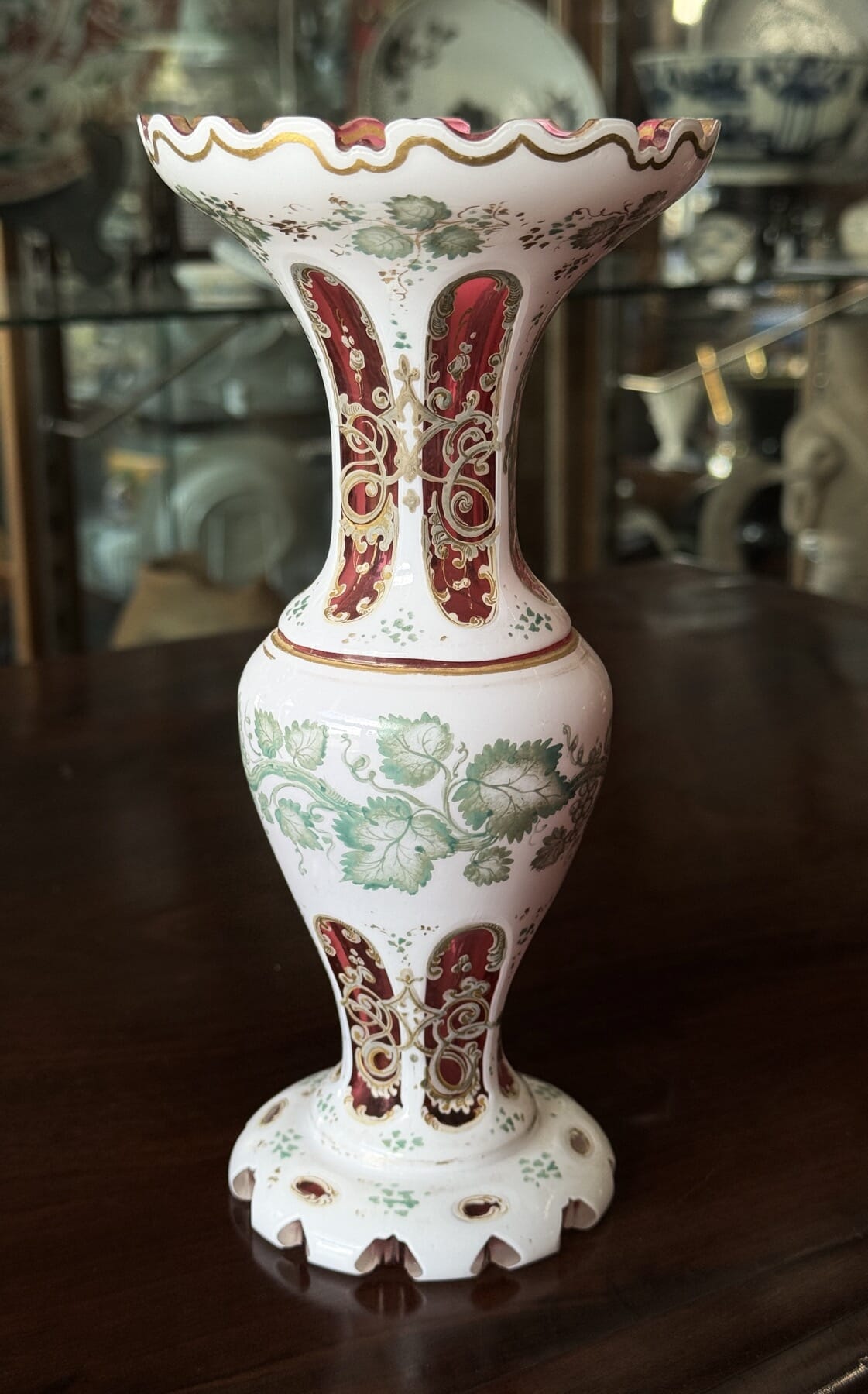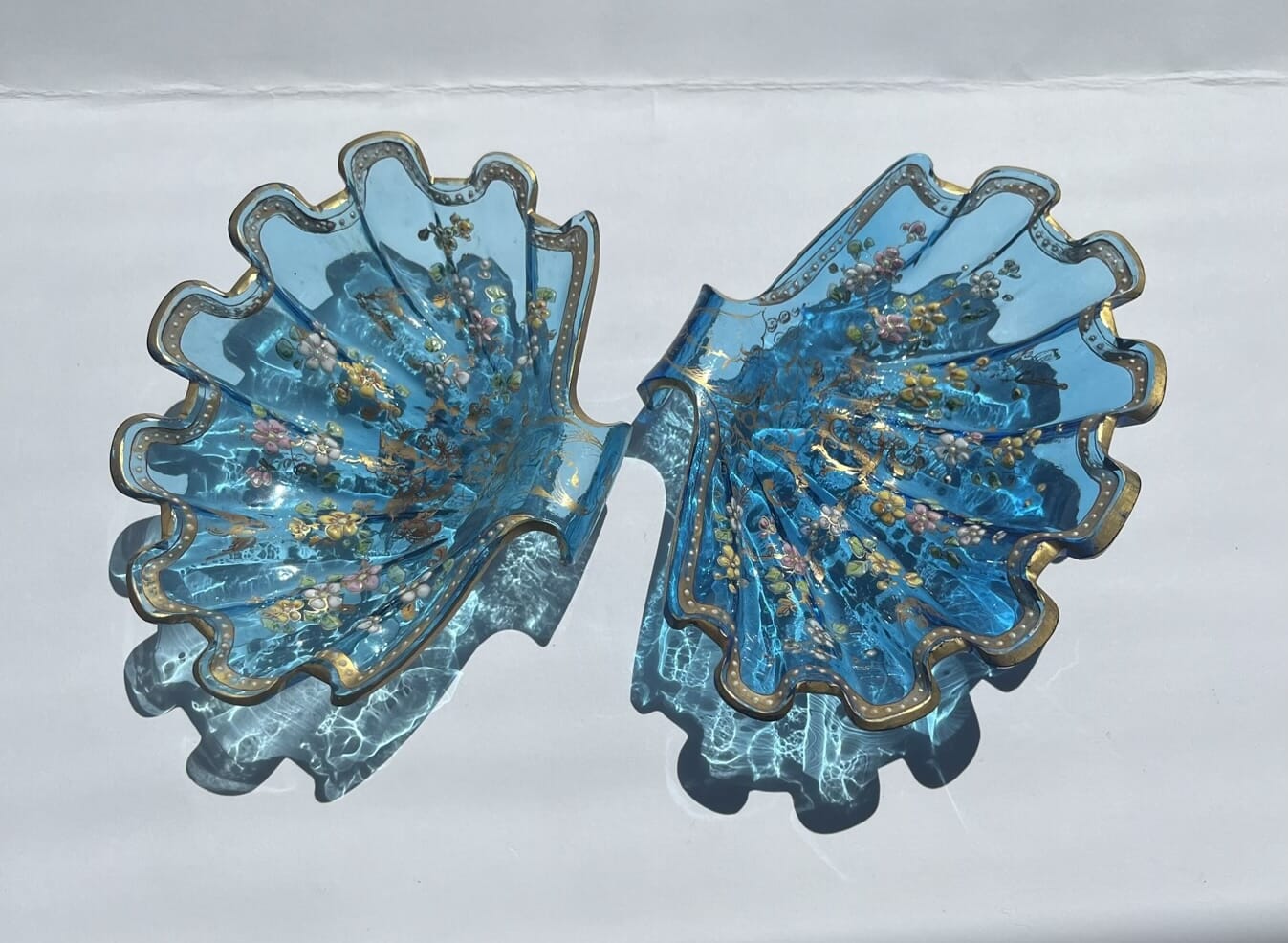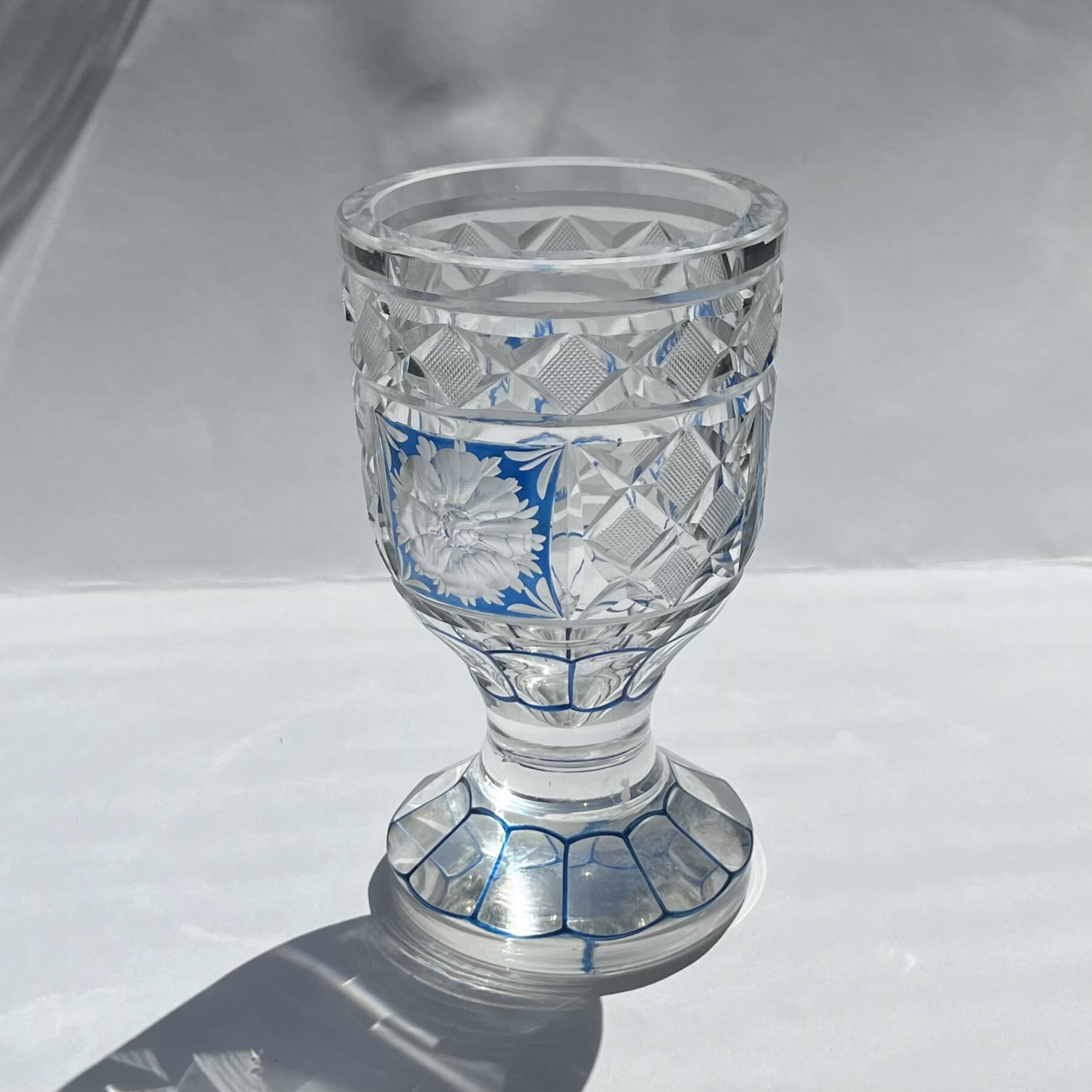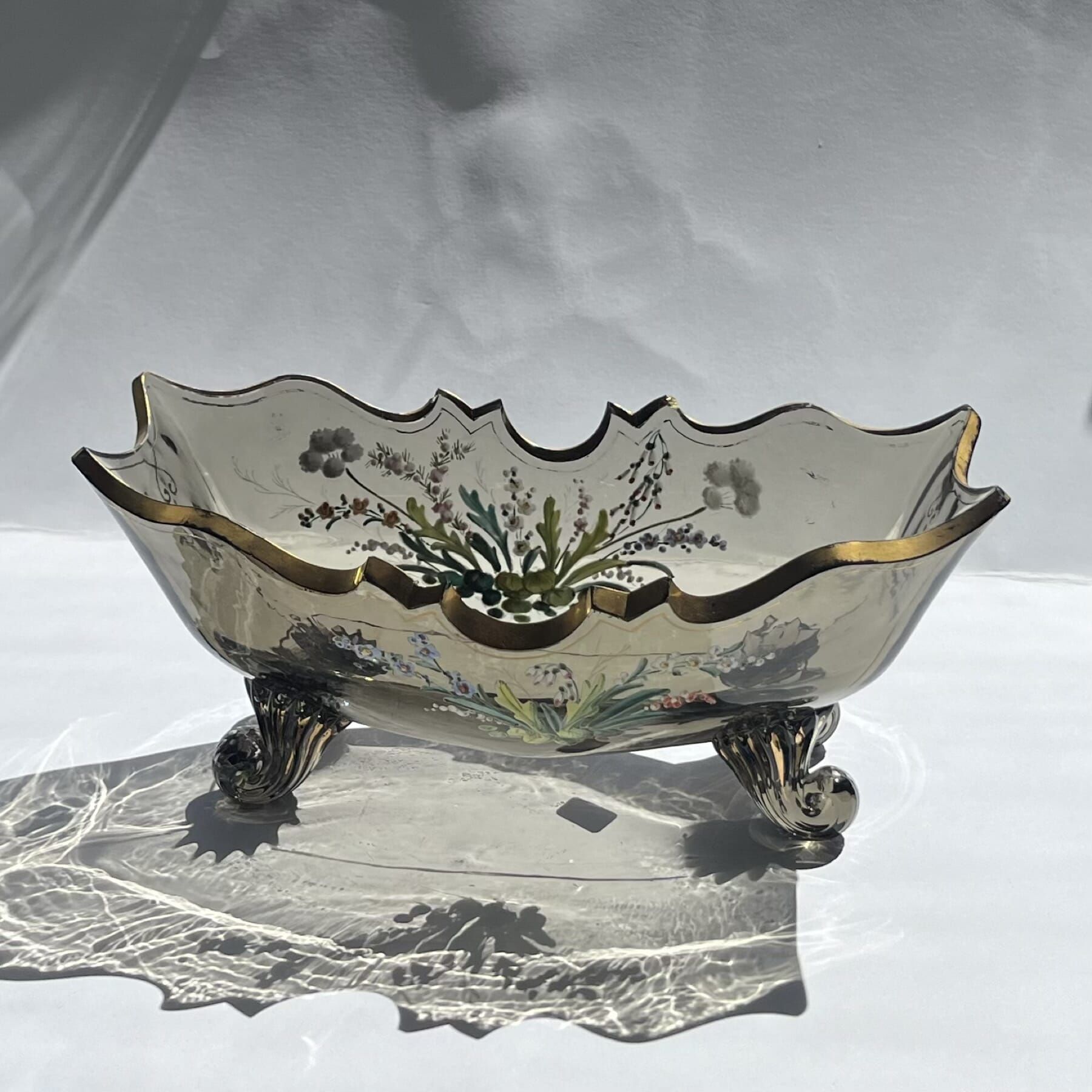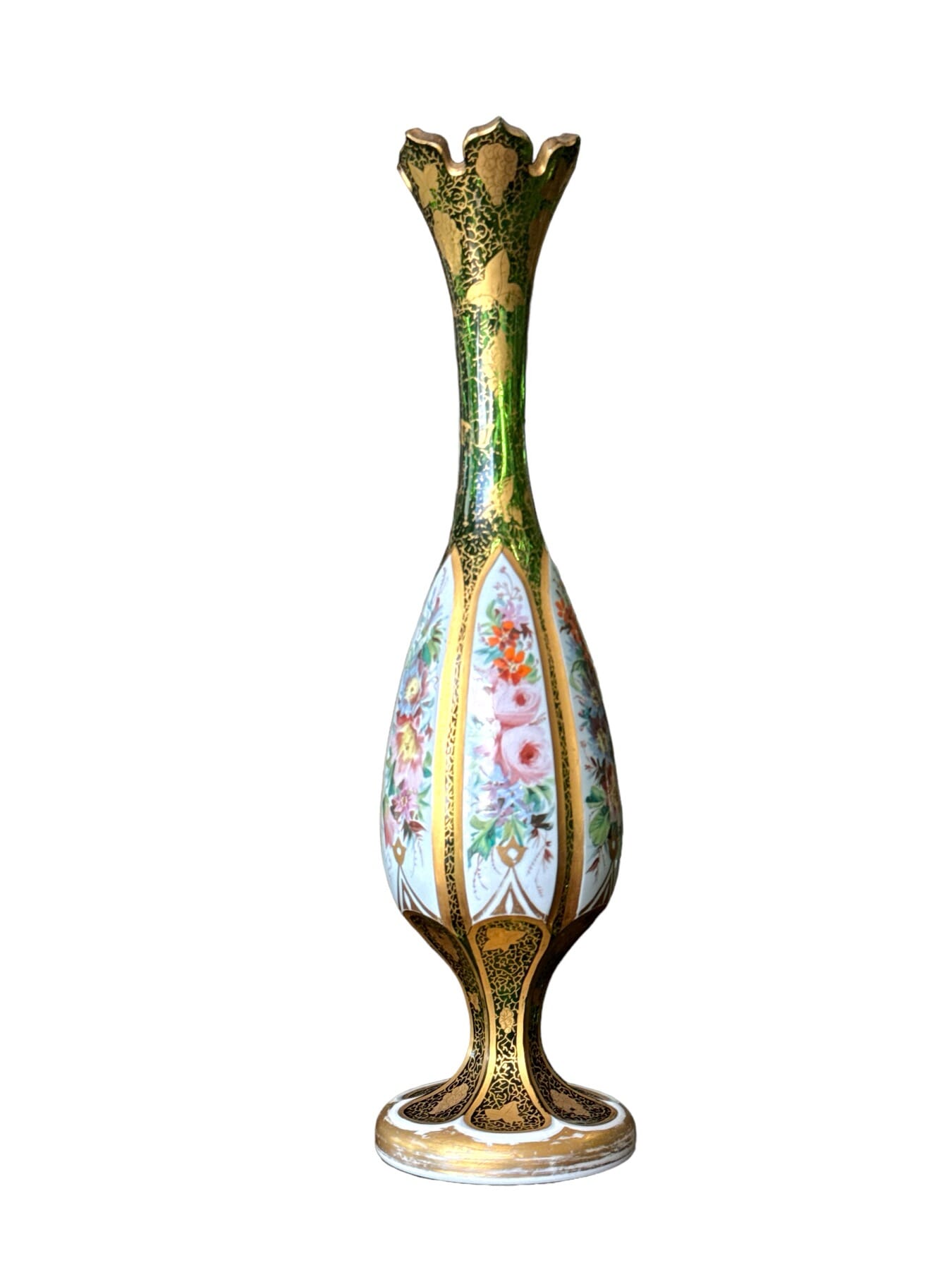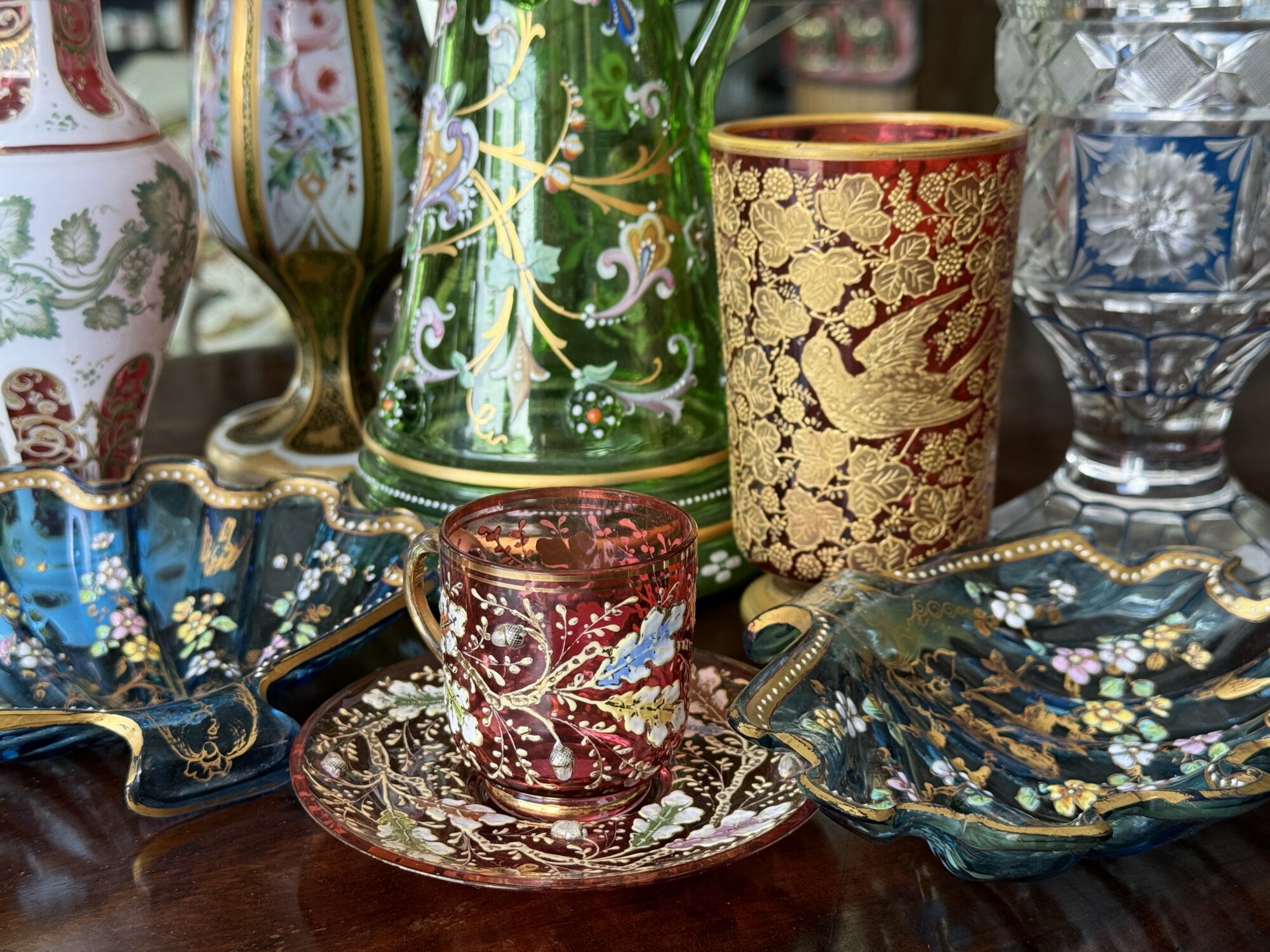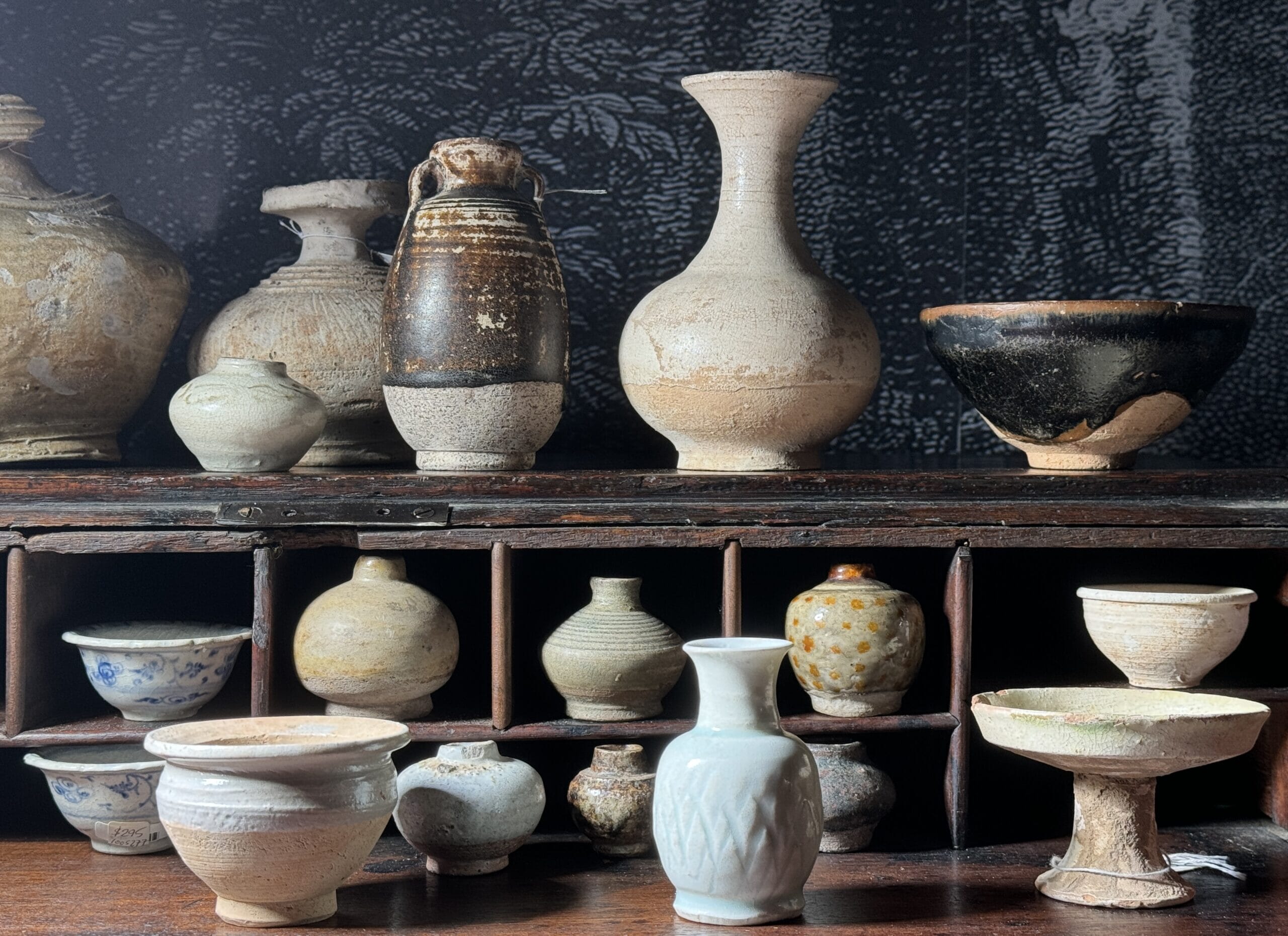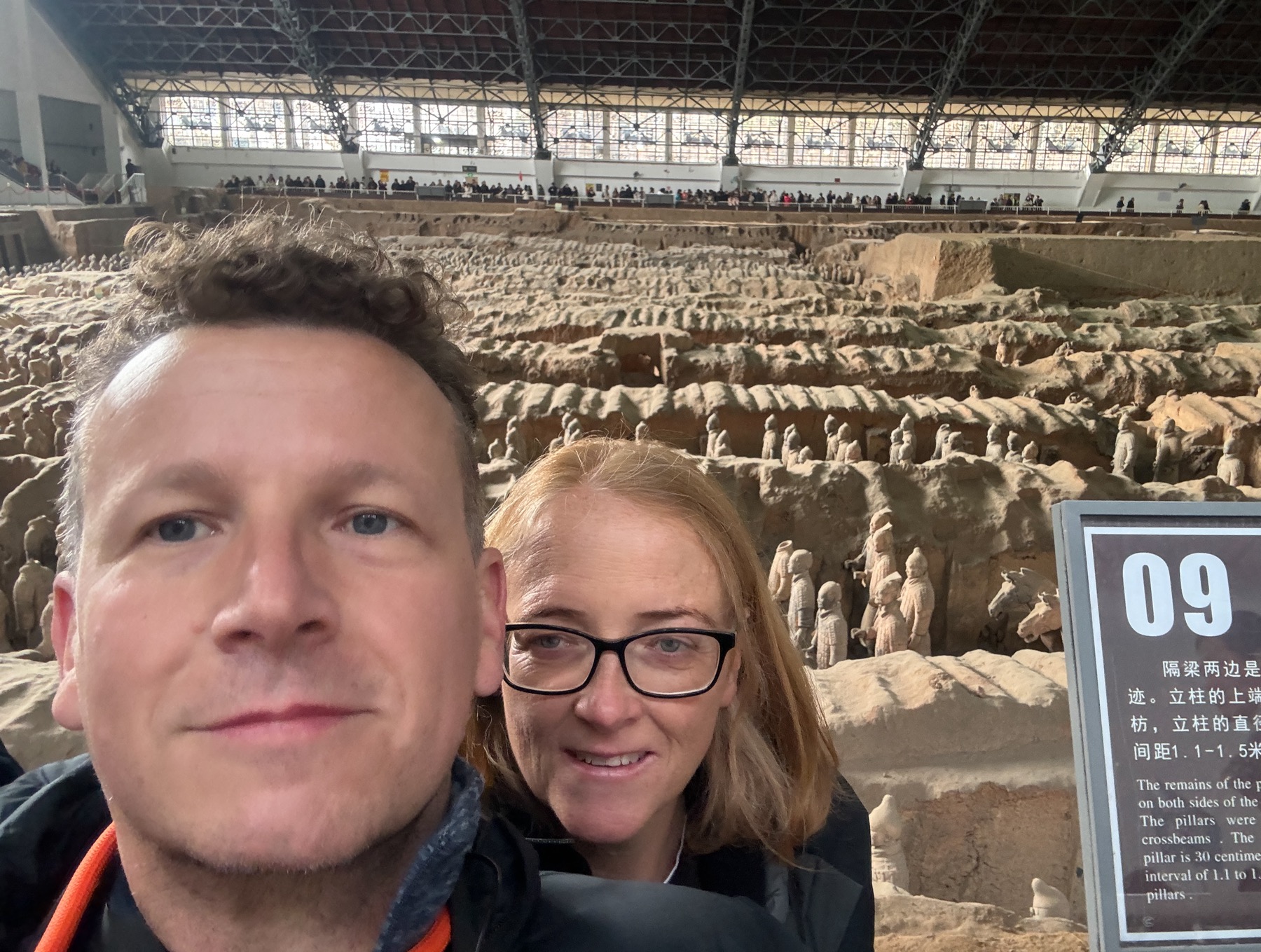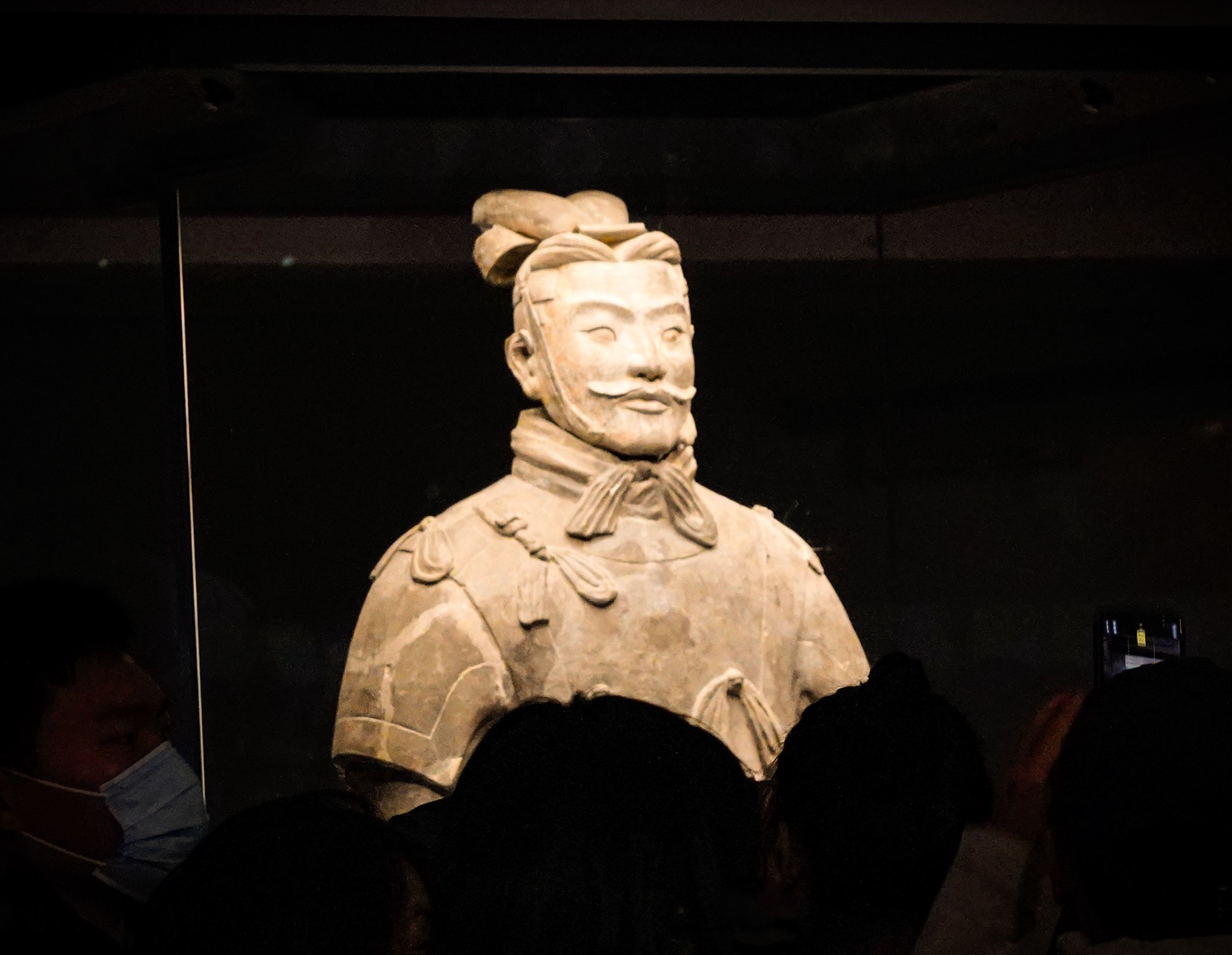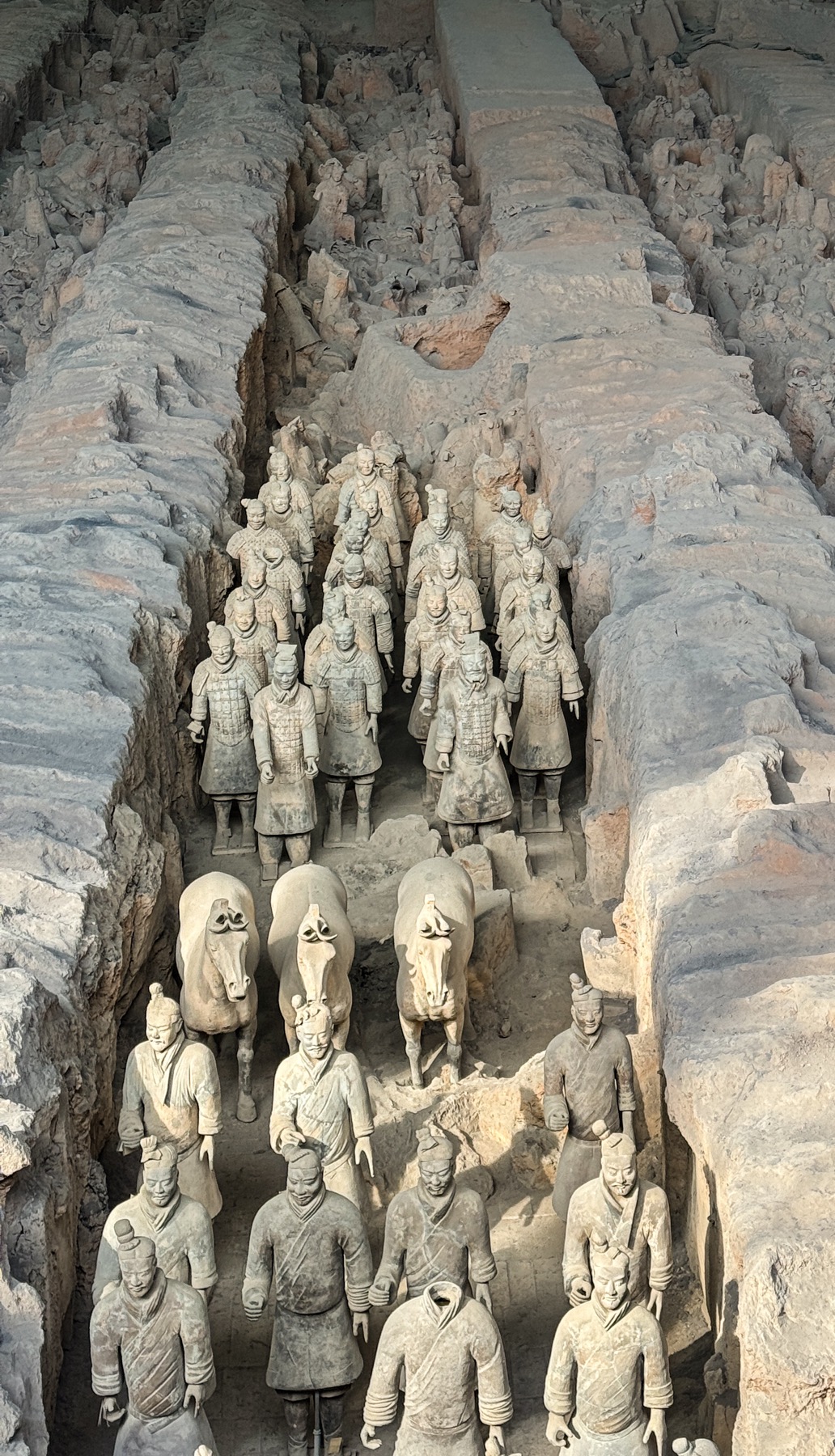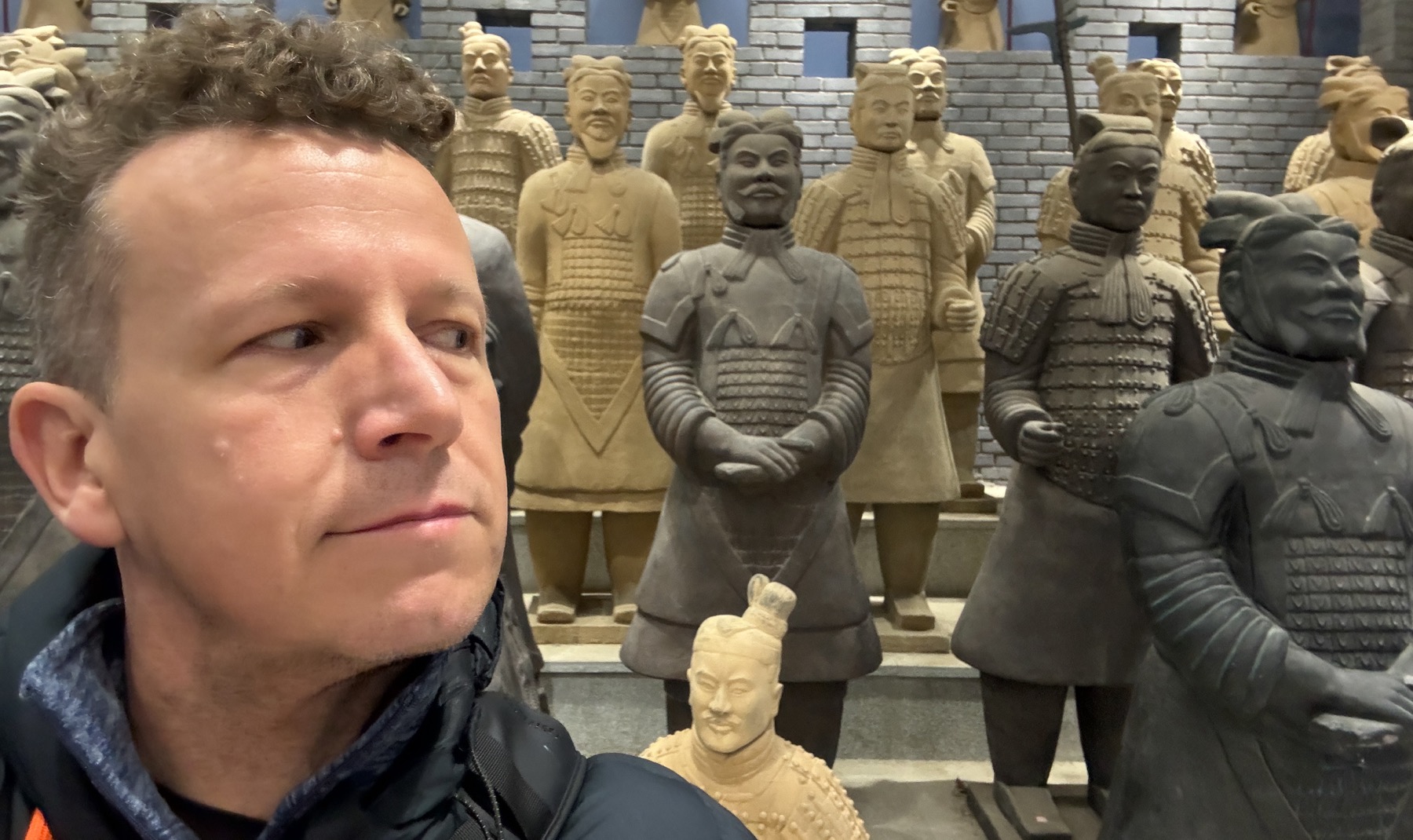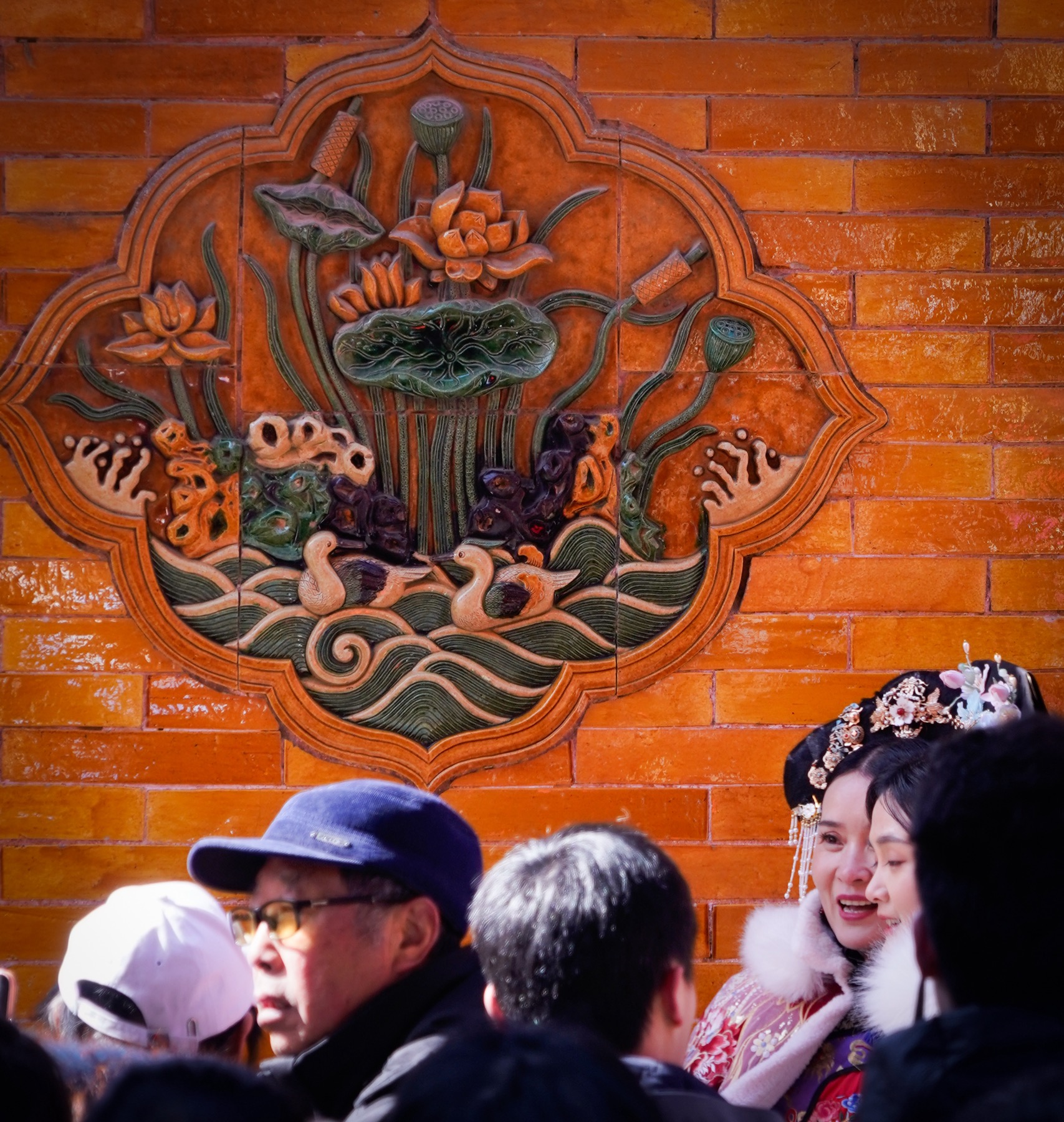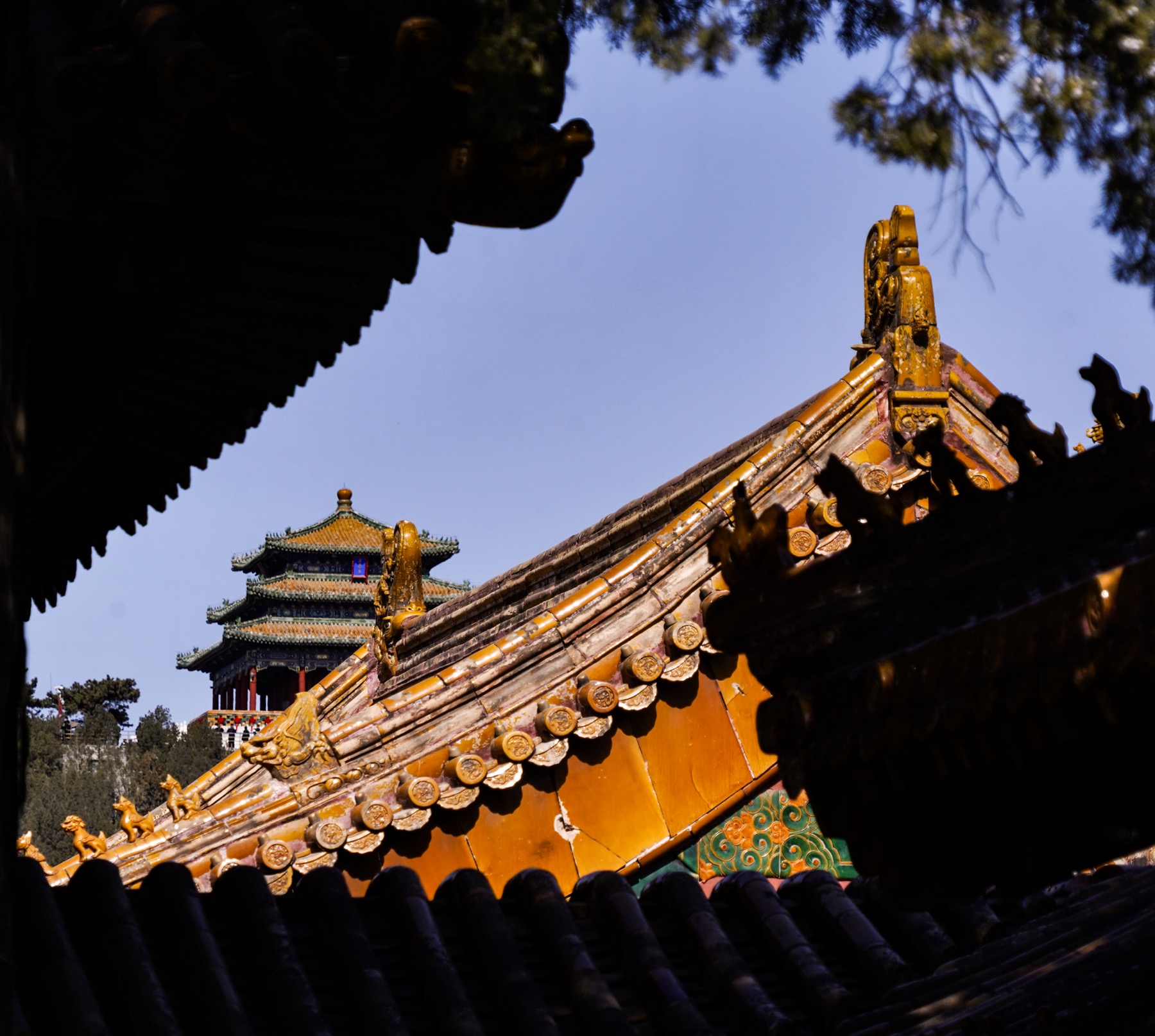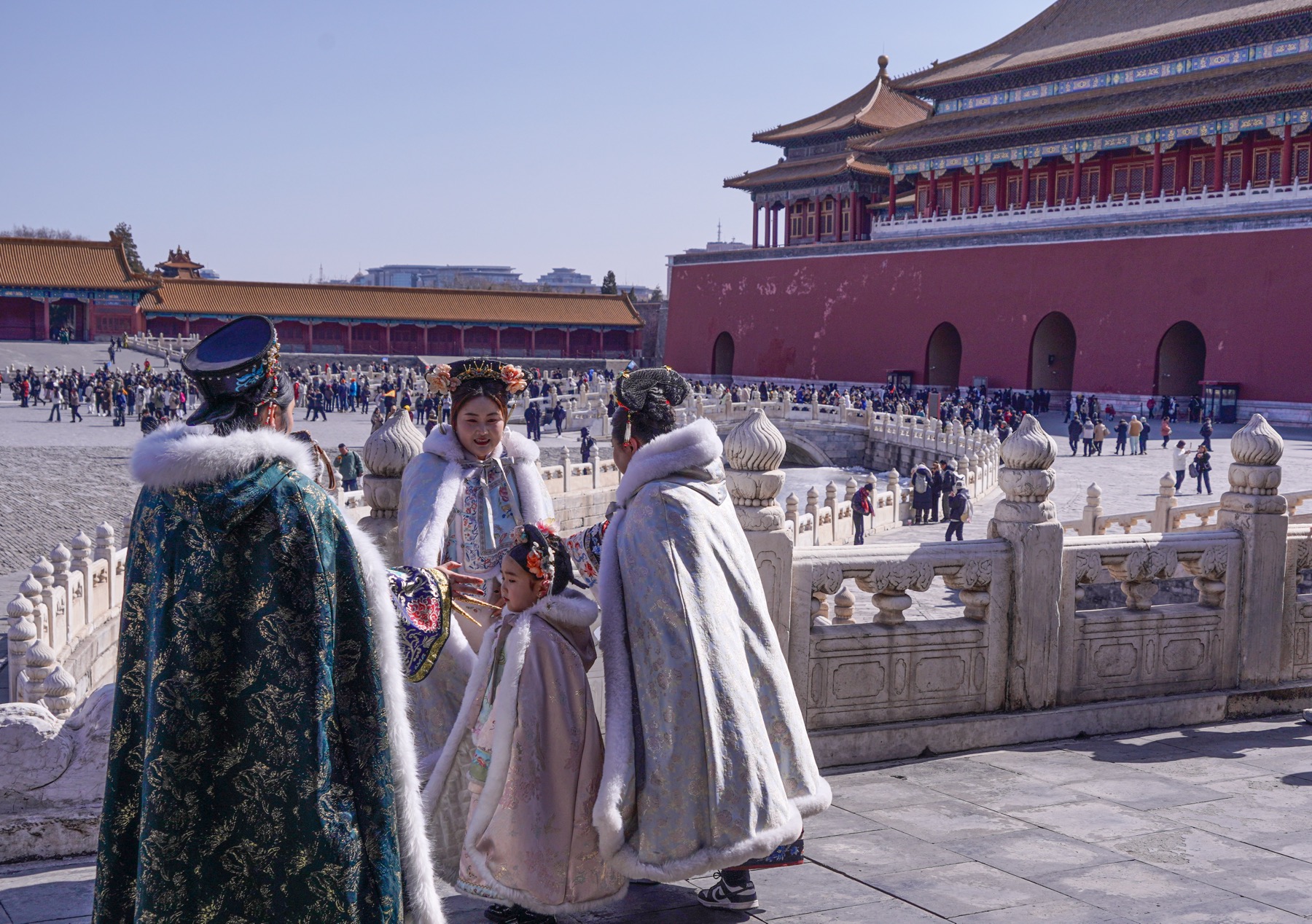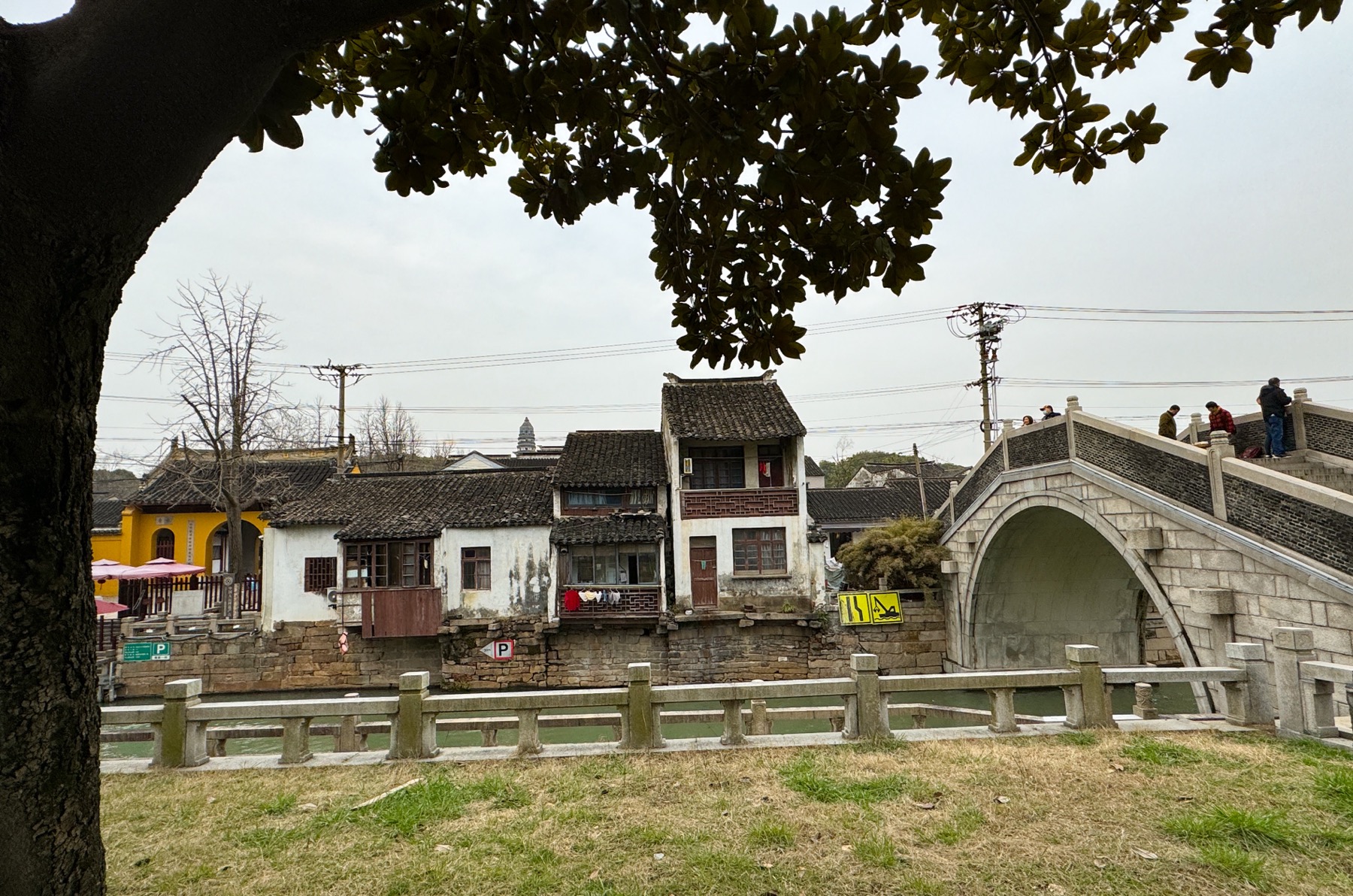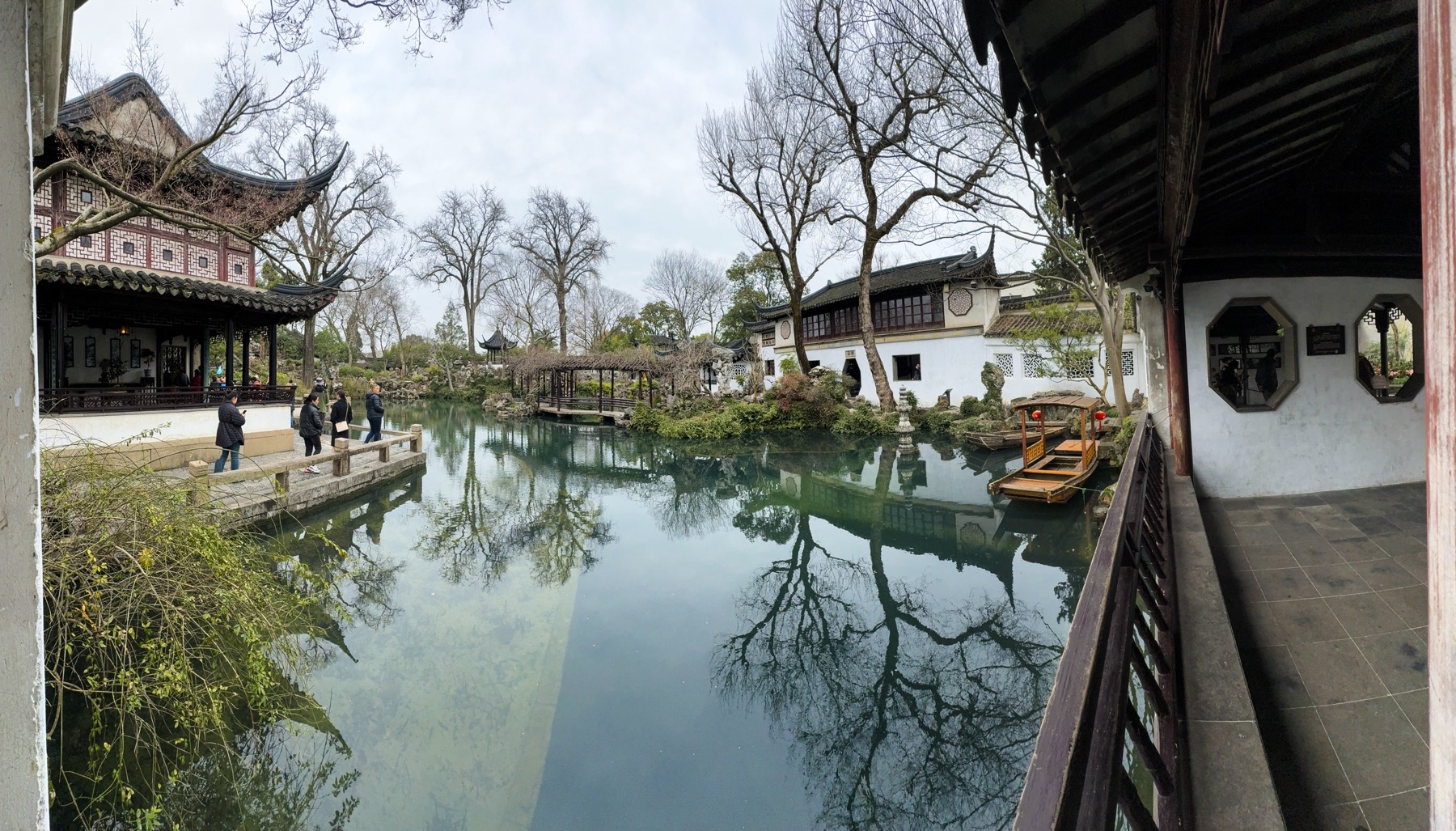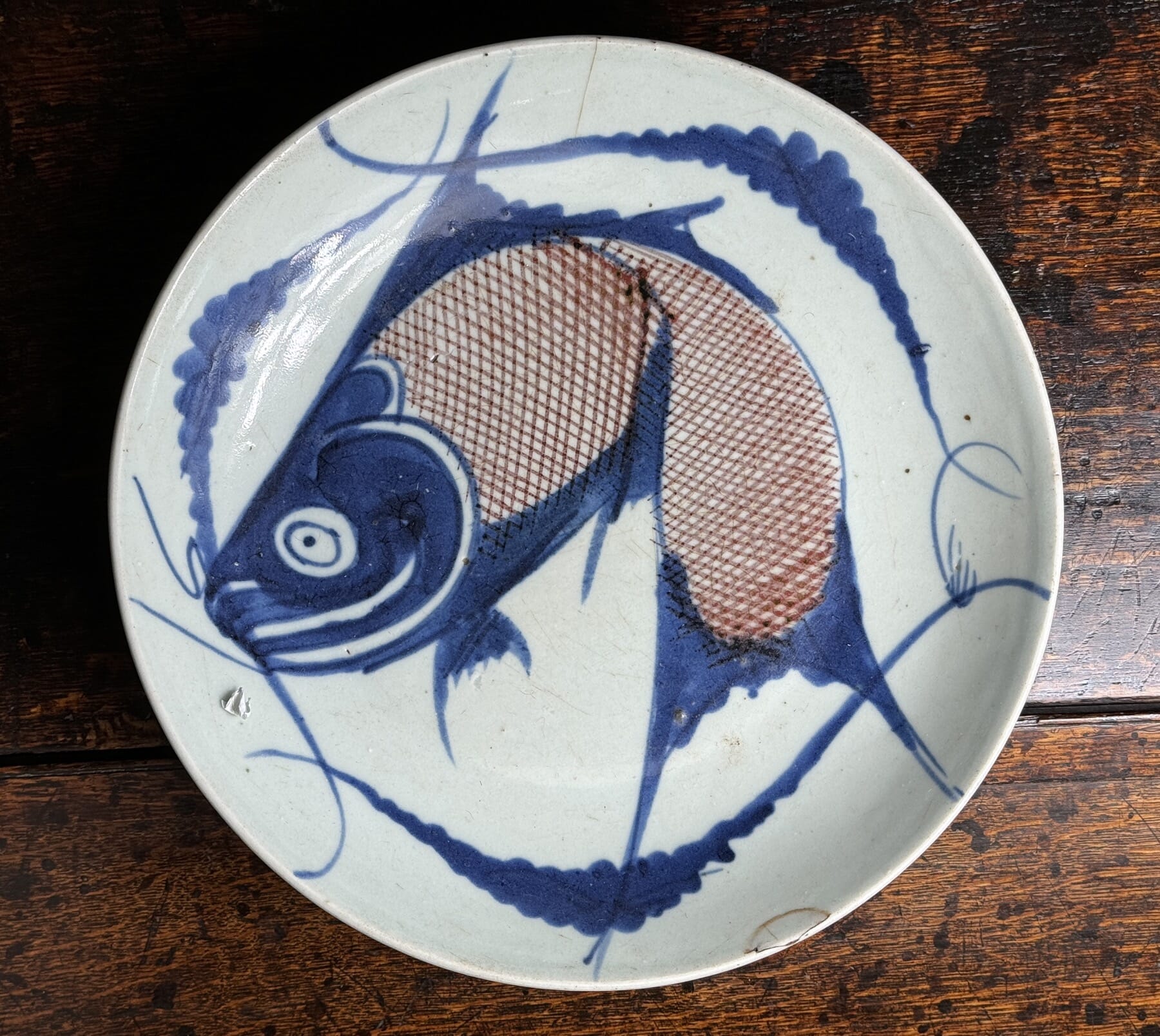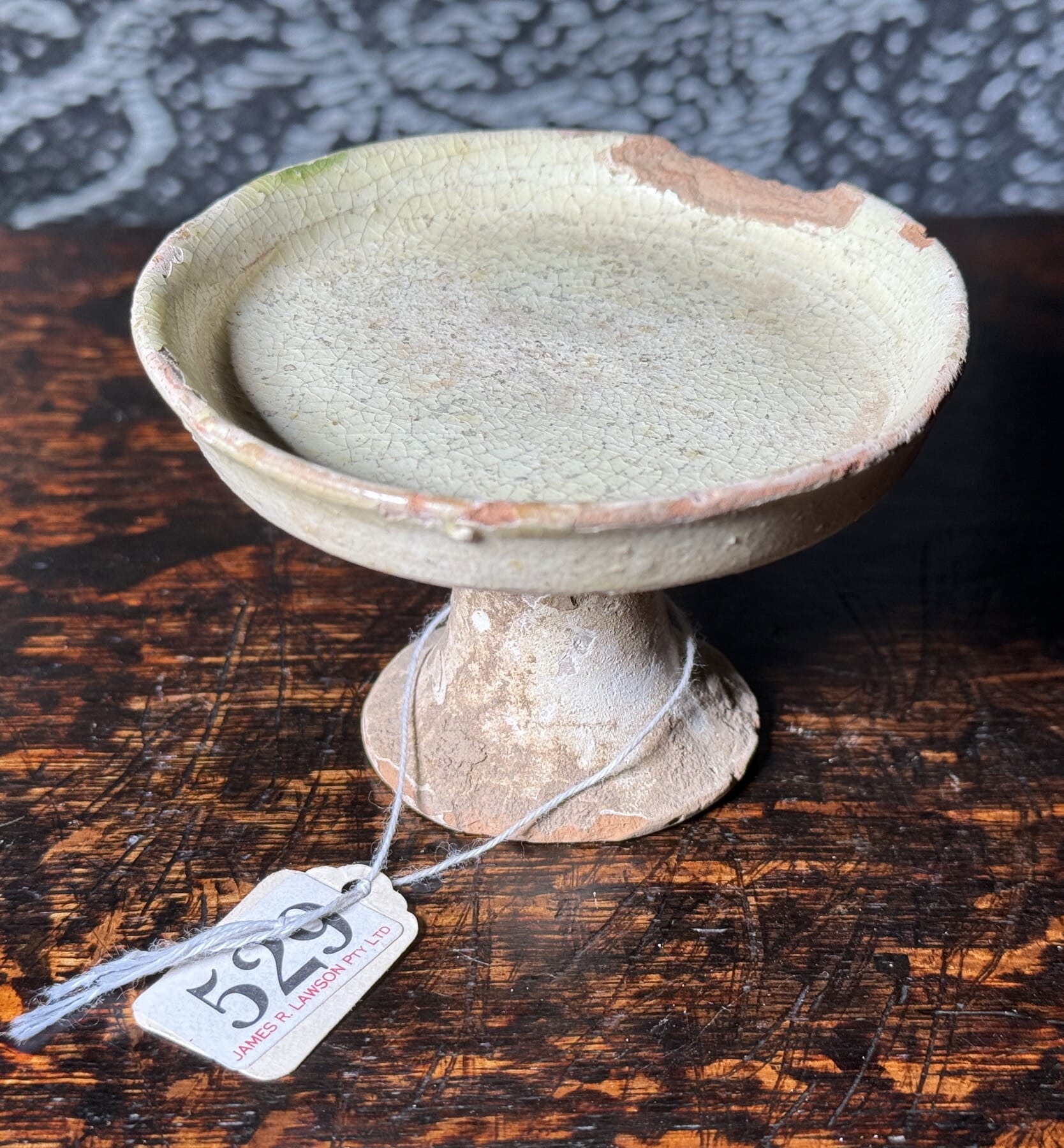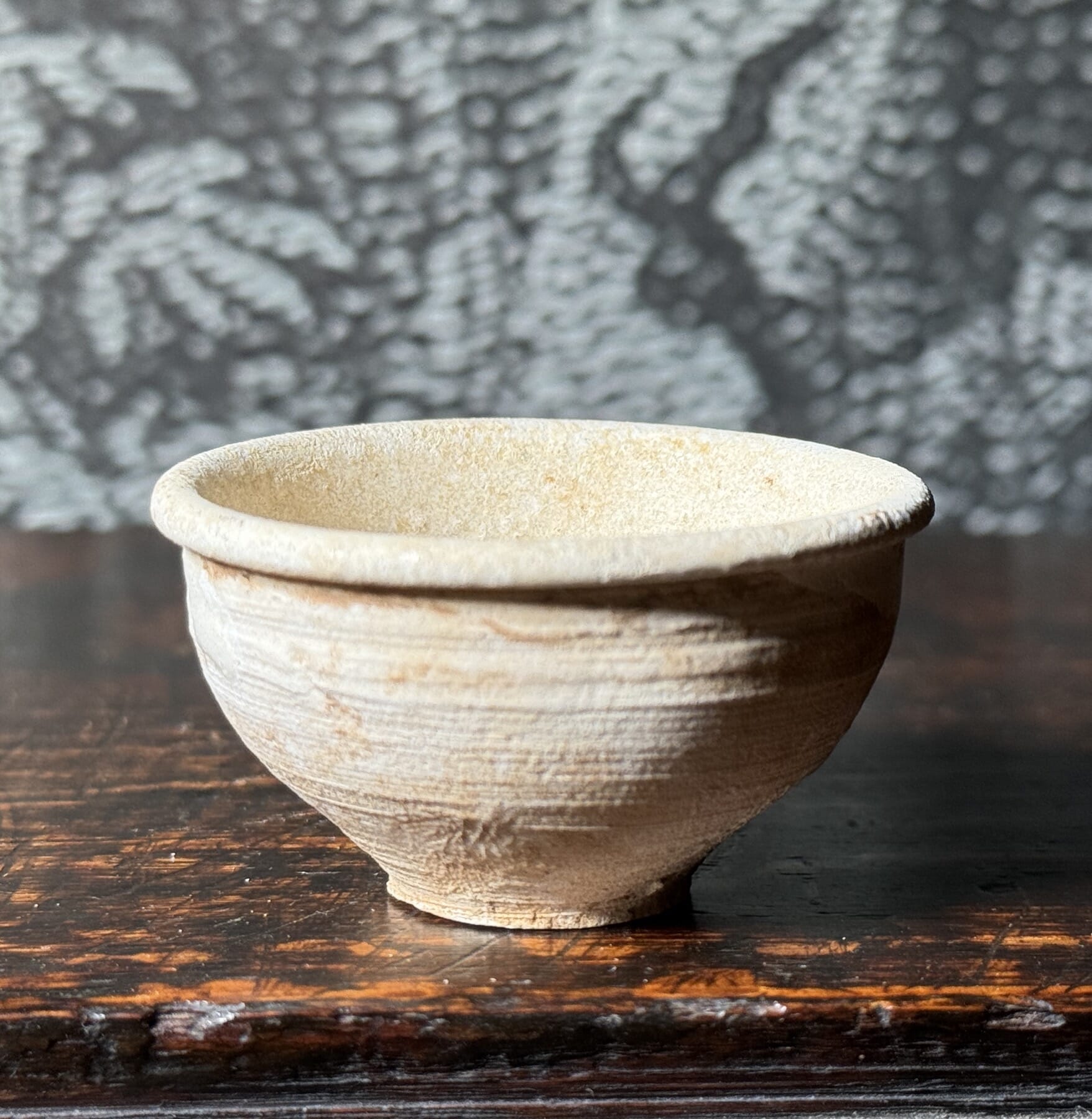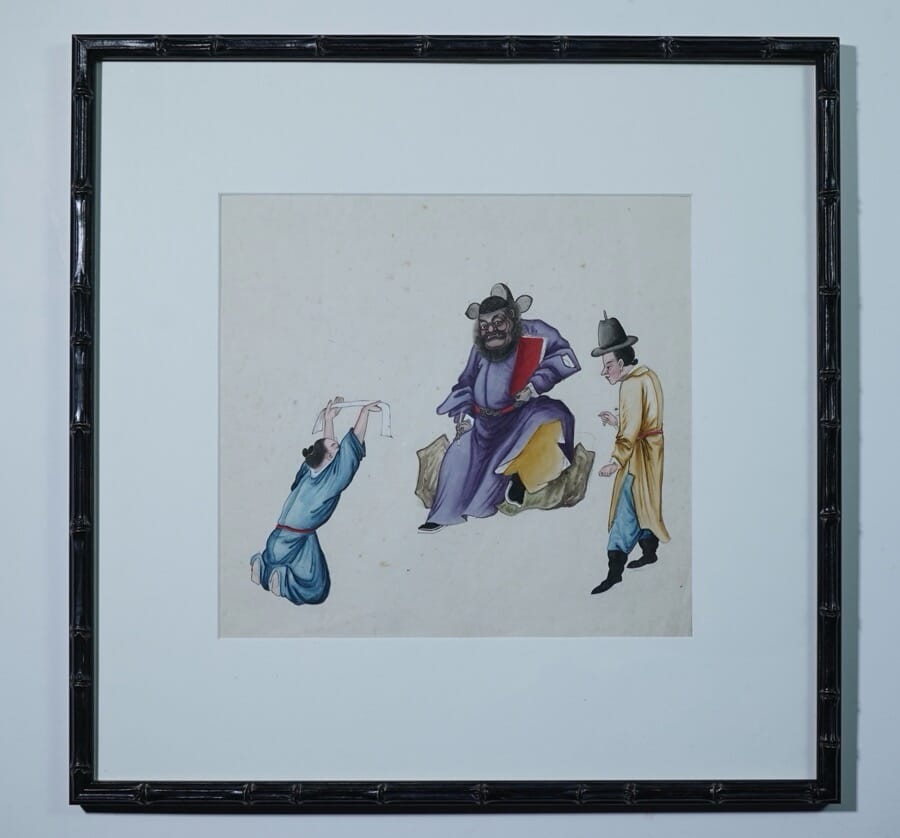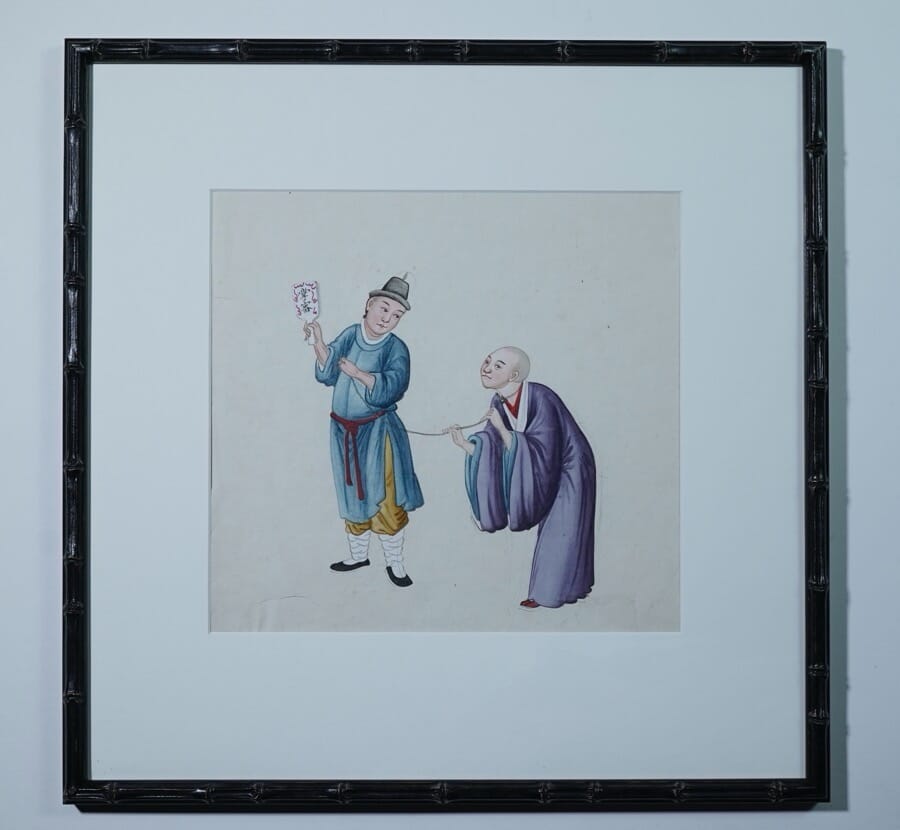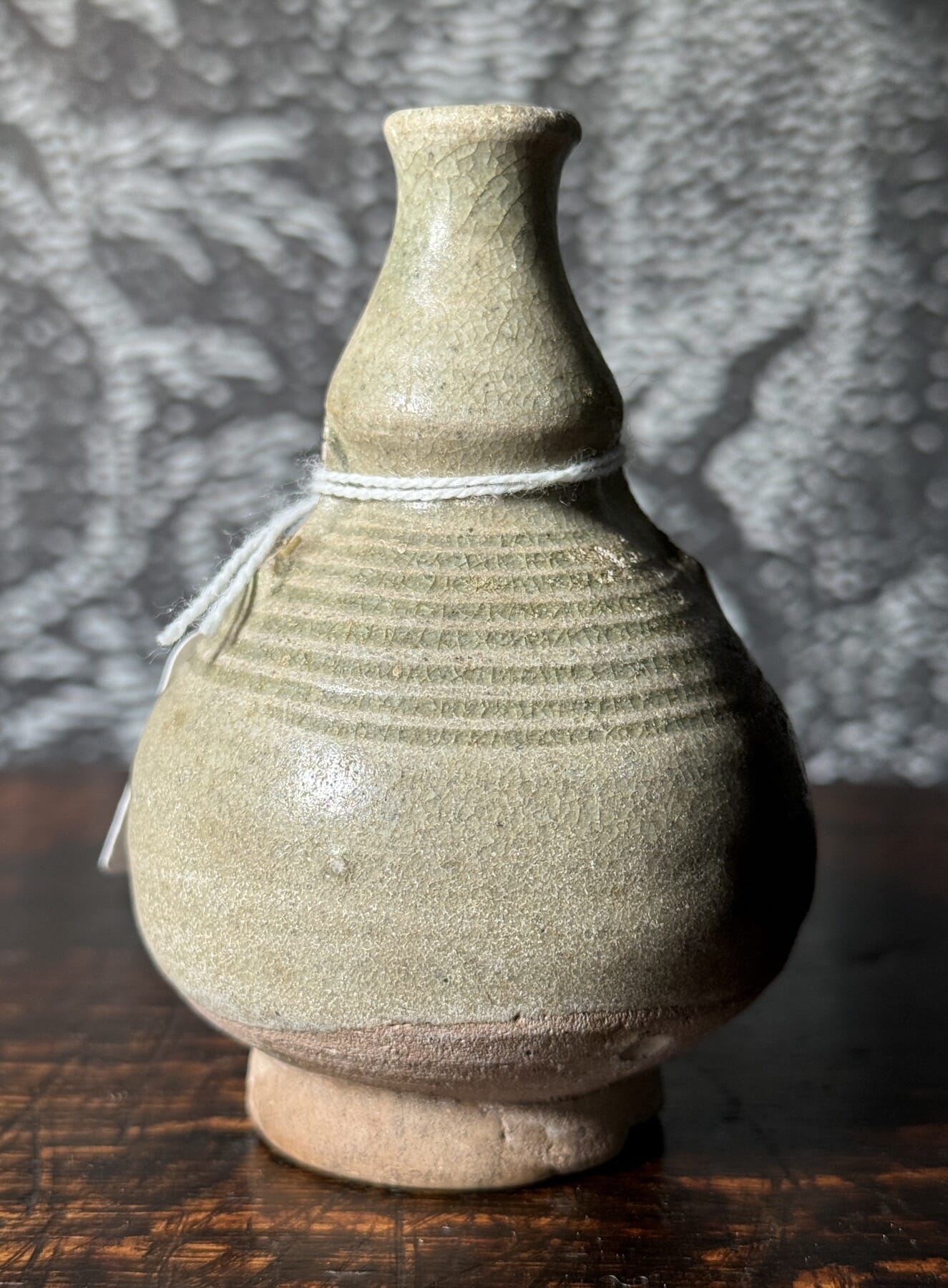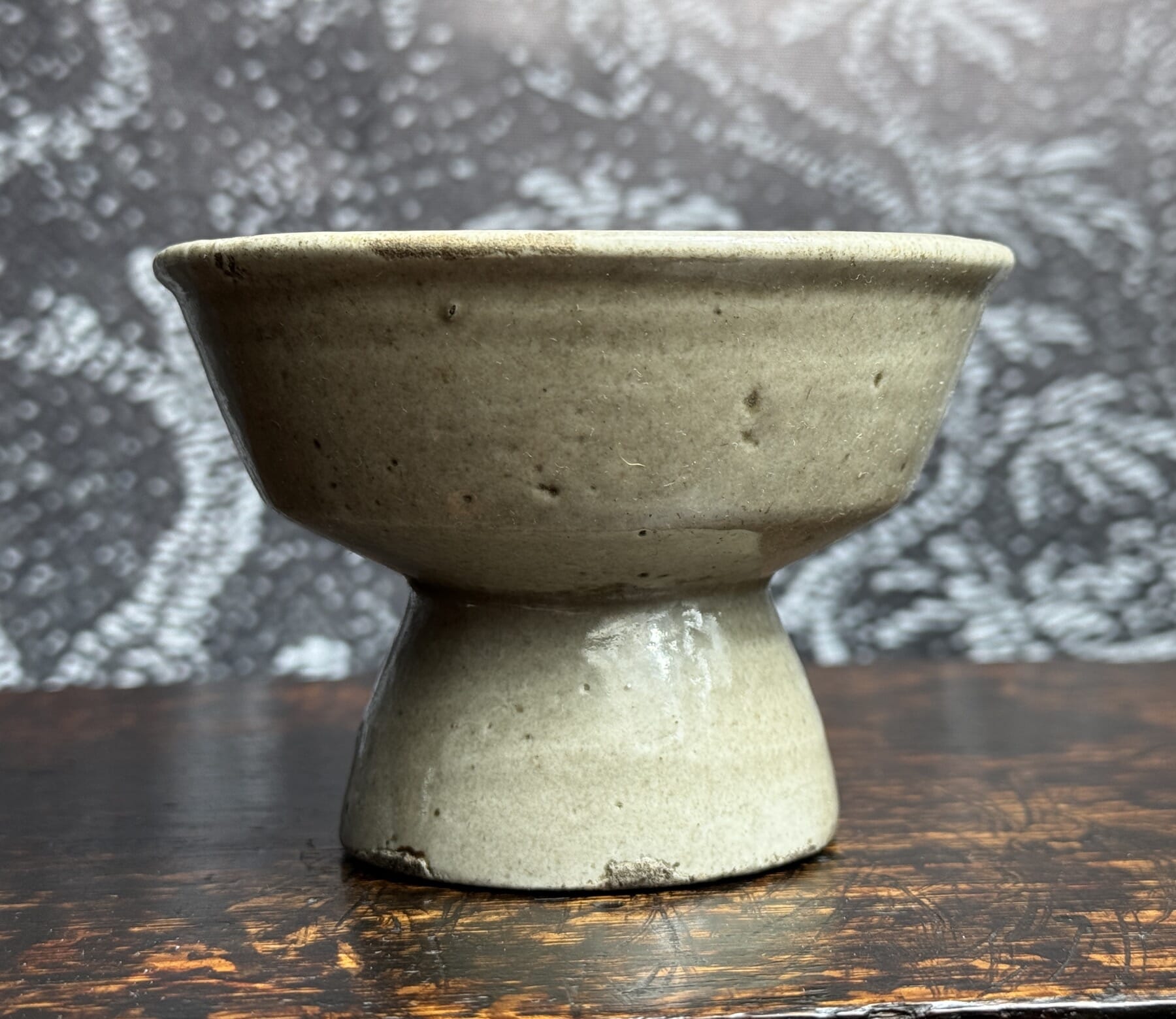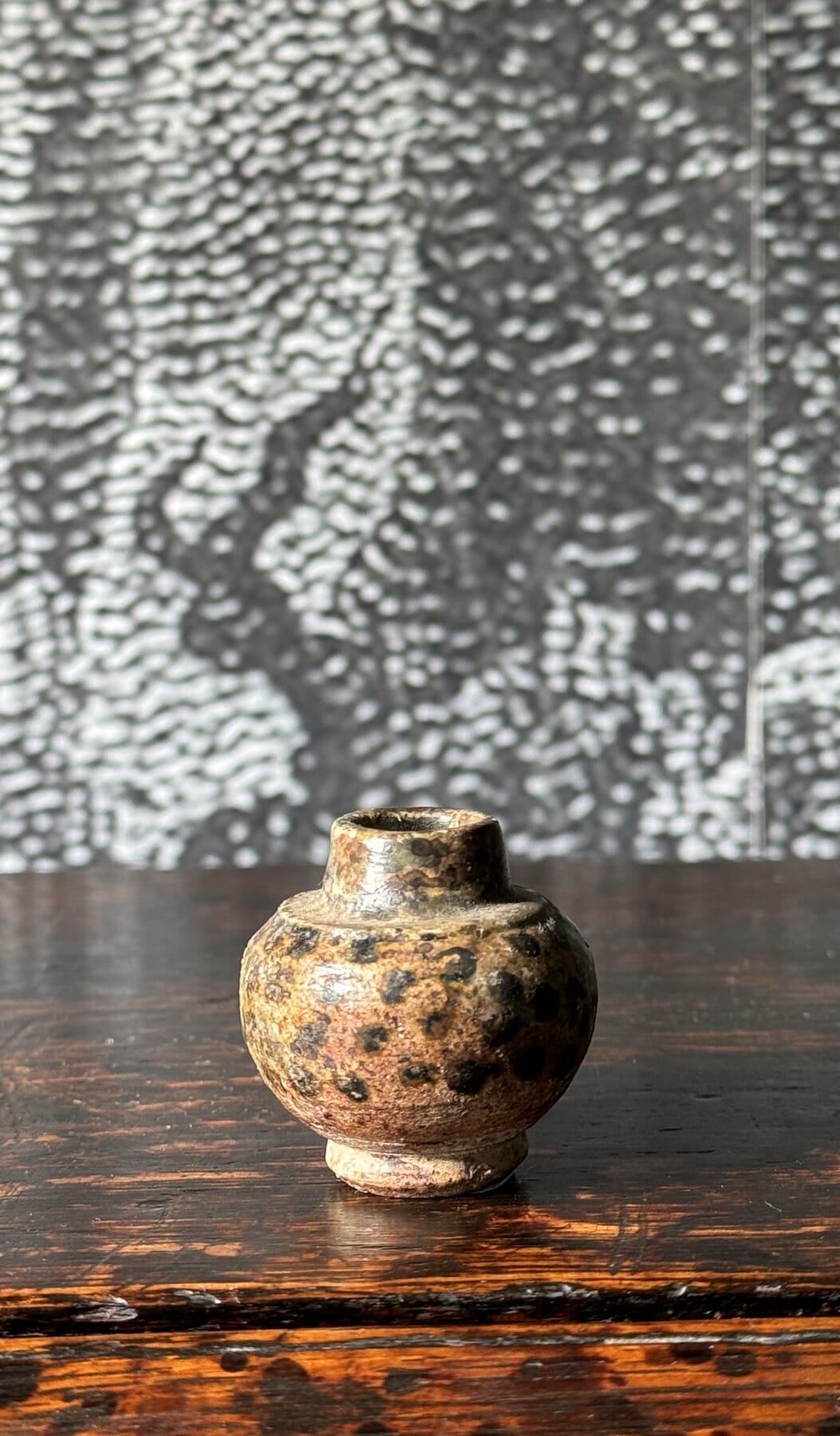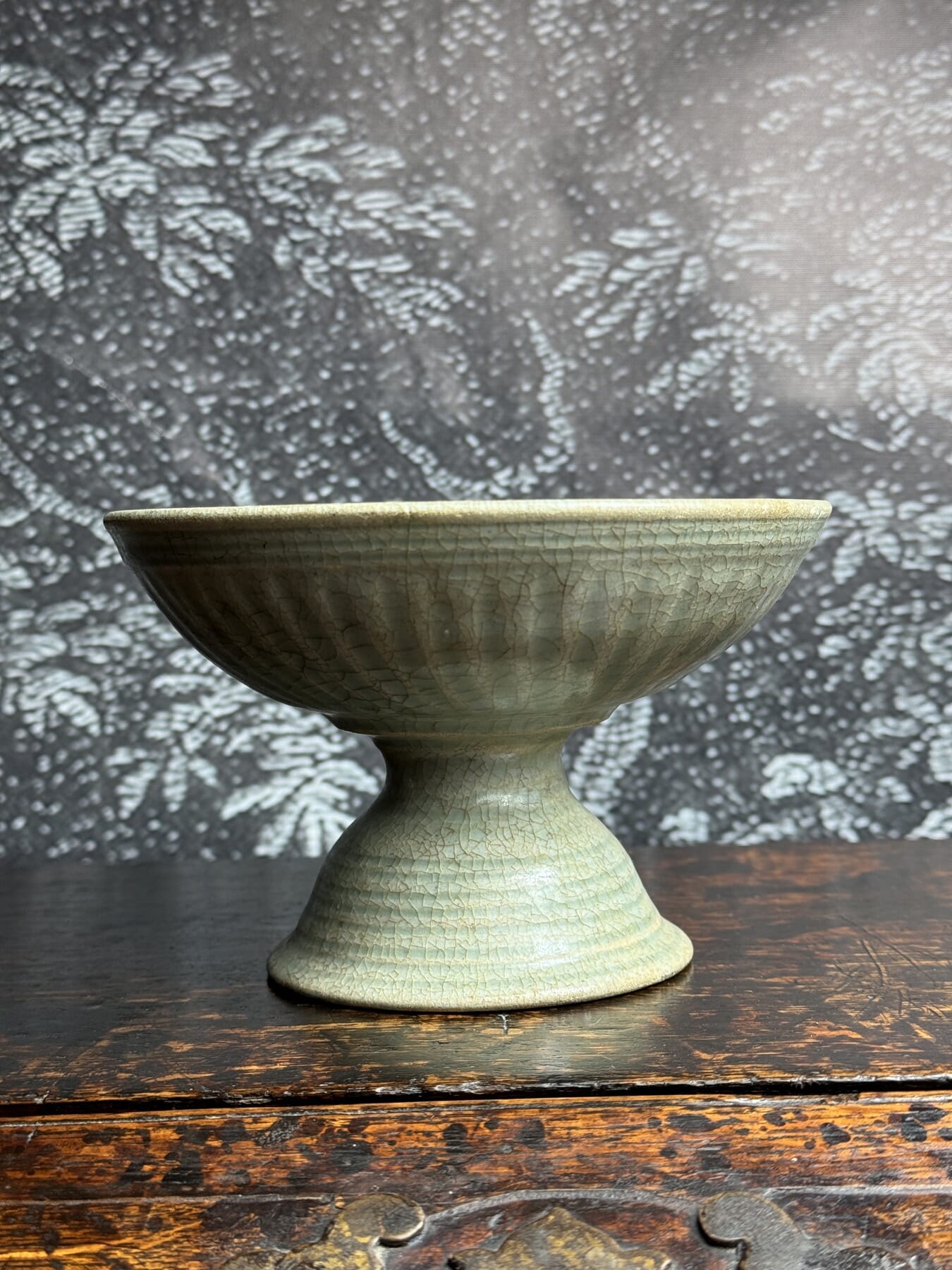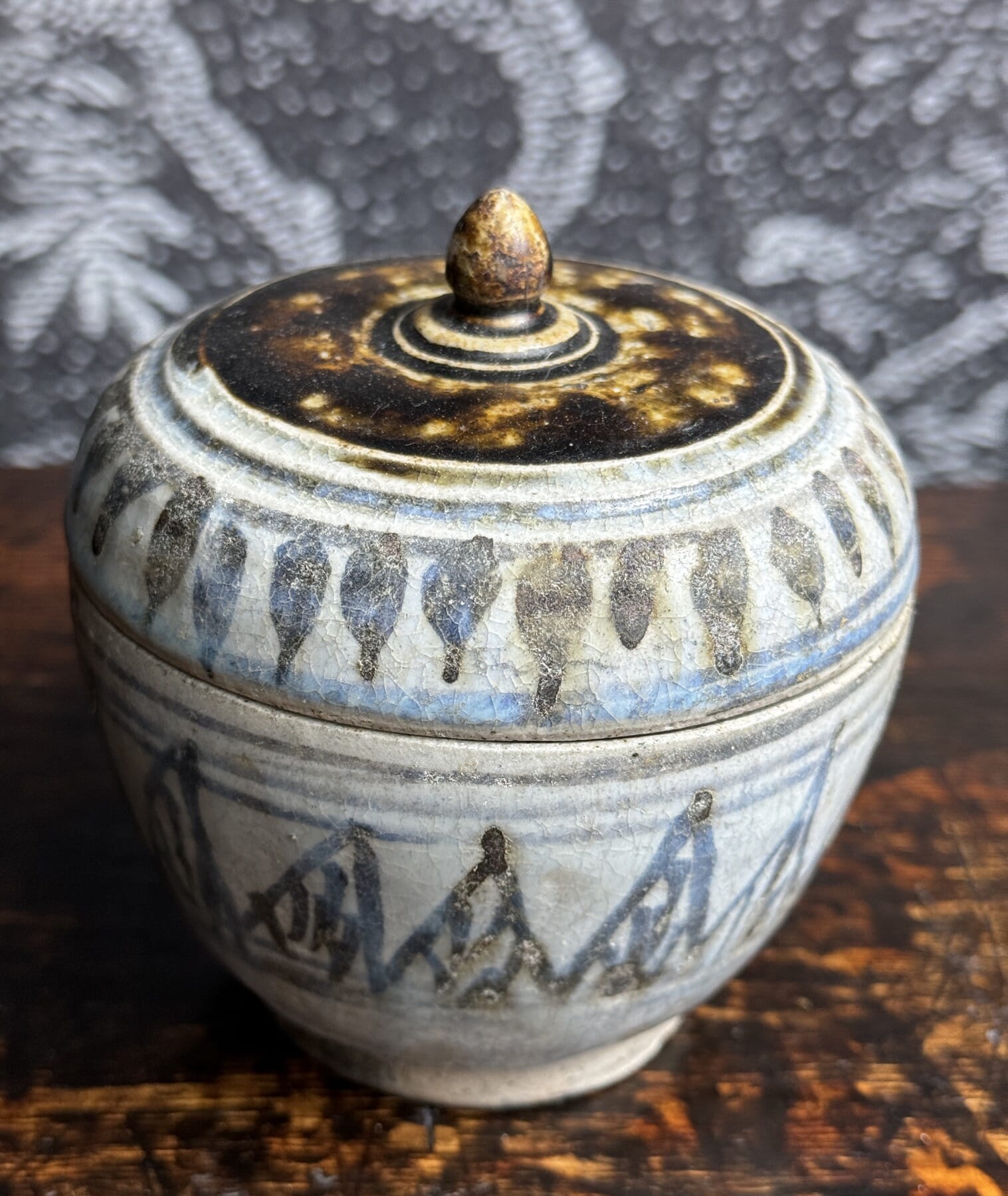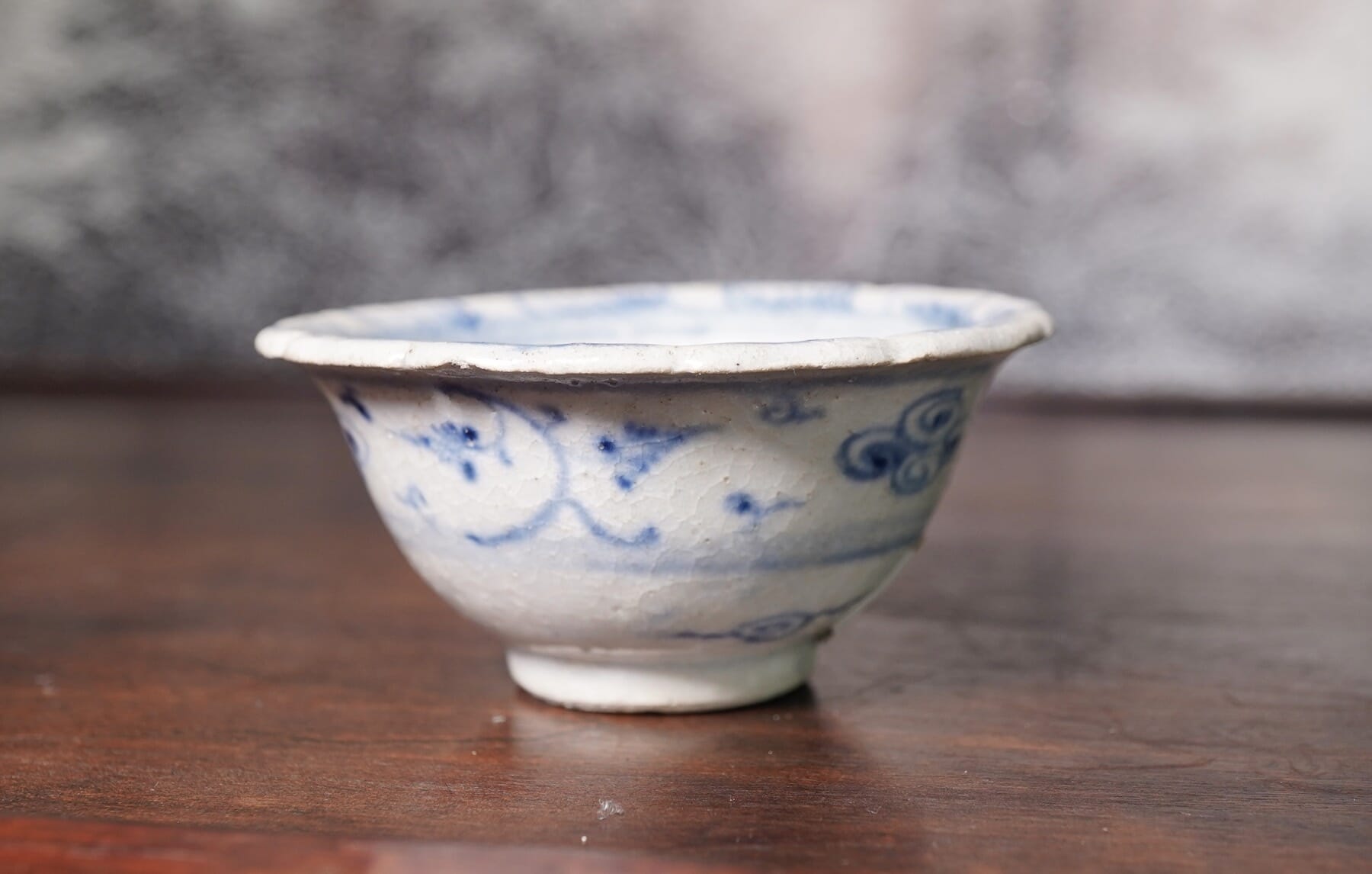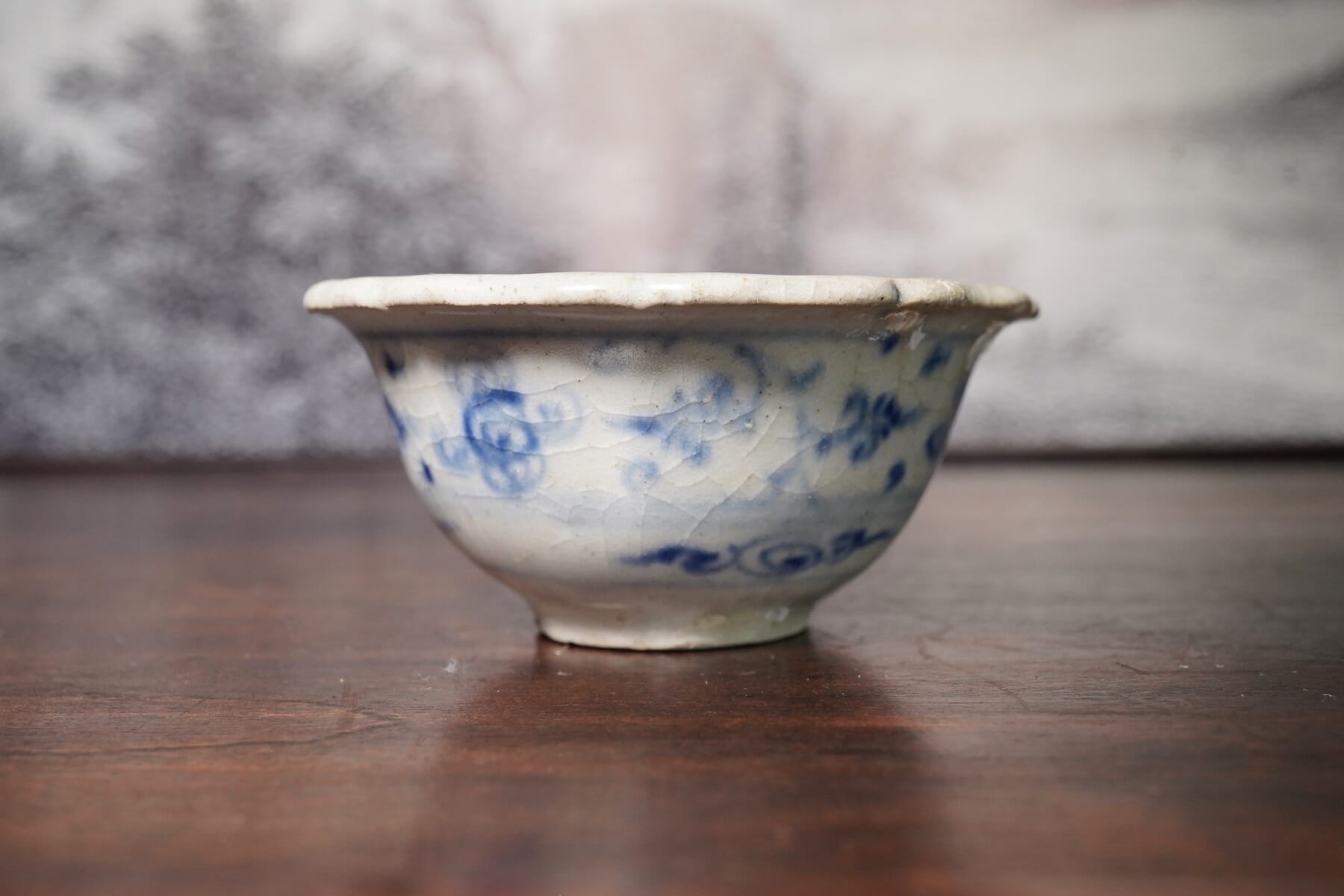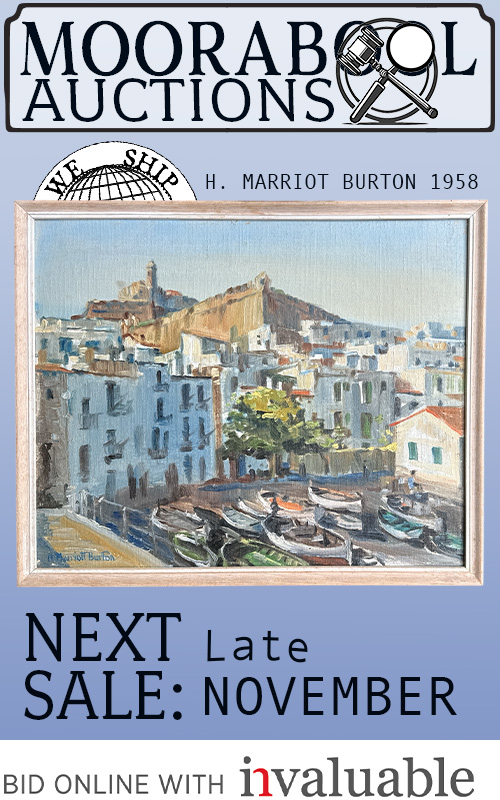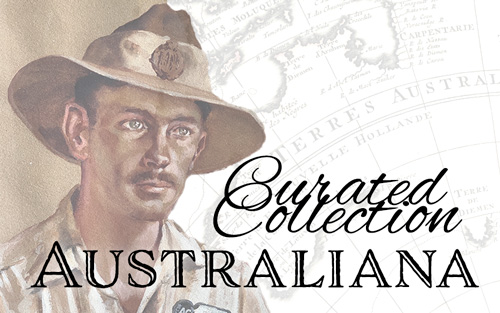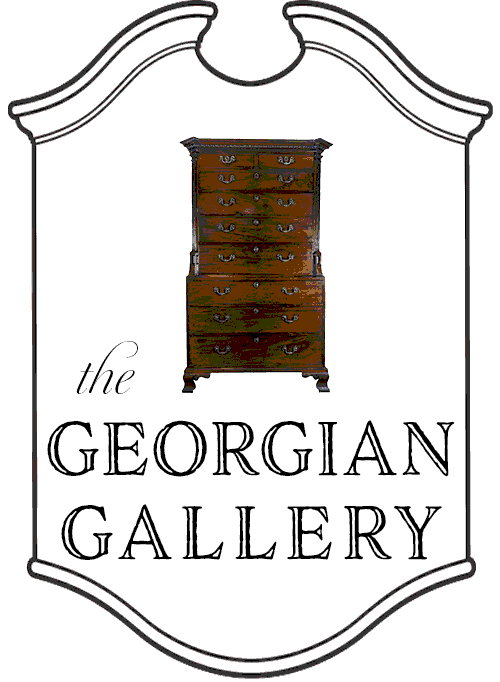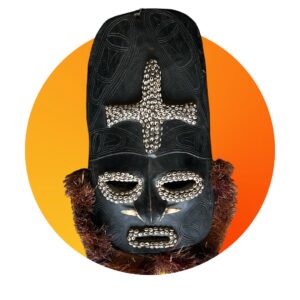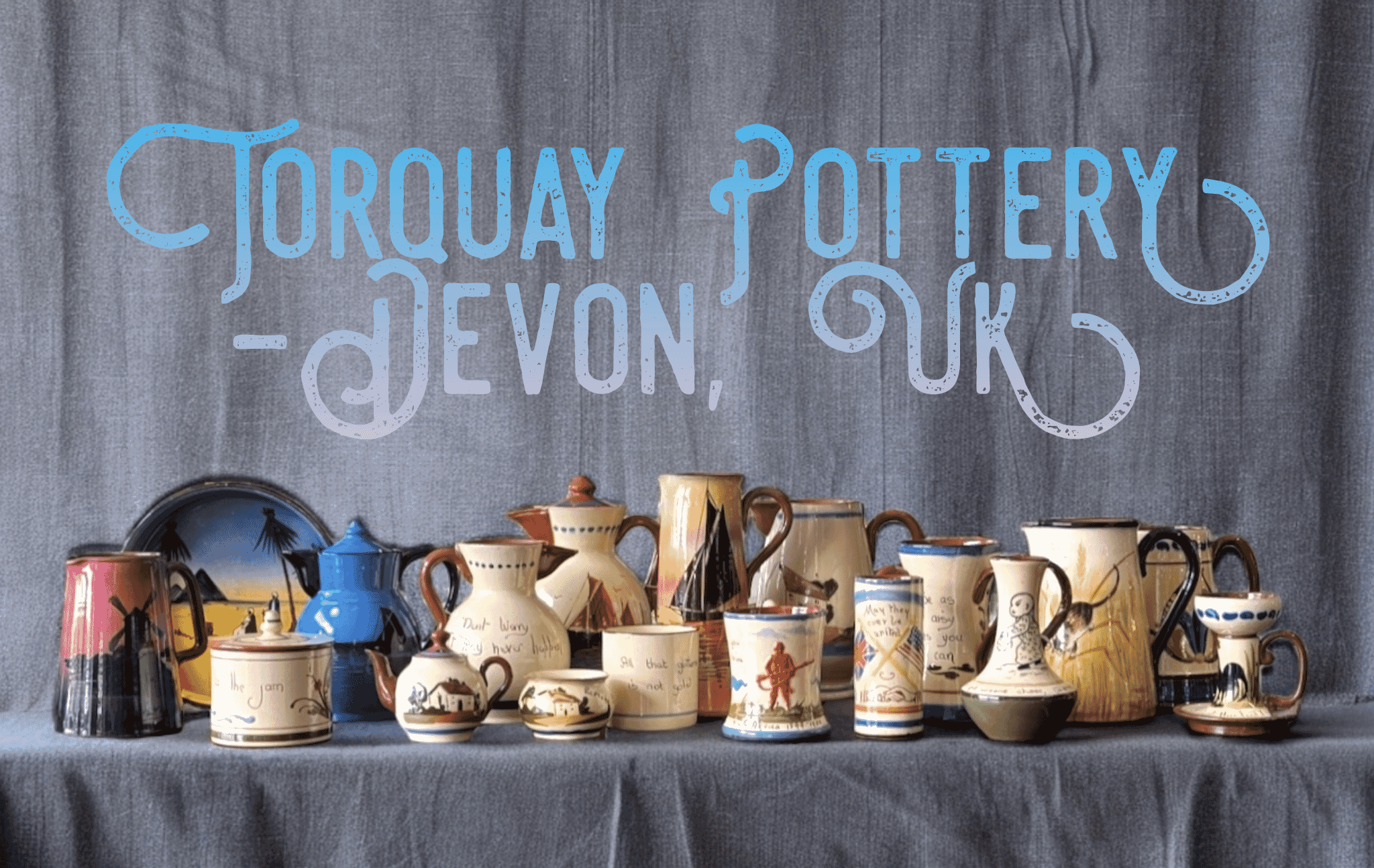
Welcome to another Moorabool ‘Fresh Stock’.
This one features a collection of English ‘Art Pottery’ from the distinct Devon potters of Torquay. They’re always nicely made pieces, with a rich terracotta-toned body slipped in colours, often scratched-through or finely painted with stylish scenes, but most notable for their inscriptions. This gives rise to a popular nick-name, ‘Mottoware’.
We have some pretty fun ones, and they read like a scroll through some Instagram memes –
There would be no shadows
If the sun were not shining
~
Empty vessels make the most noise
~
Don’t worry, it may never happen
~
To Have a Friend is to Be One …

Some were souvenirs – for example, the mini teapot is inscribed ‘The Oldest Chemist Shoppe in England, Knaresborough Est. 1720 ‘.
Among them are two particularly interesting pieces. One commemorates the friendship between Britain and the USA; the other is commemorating the Boer War.
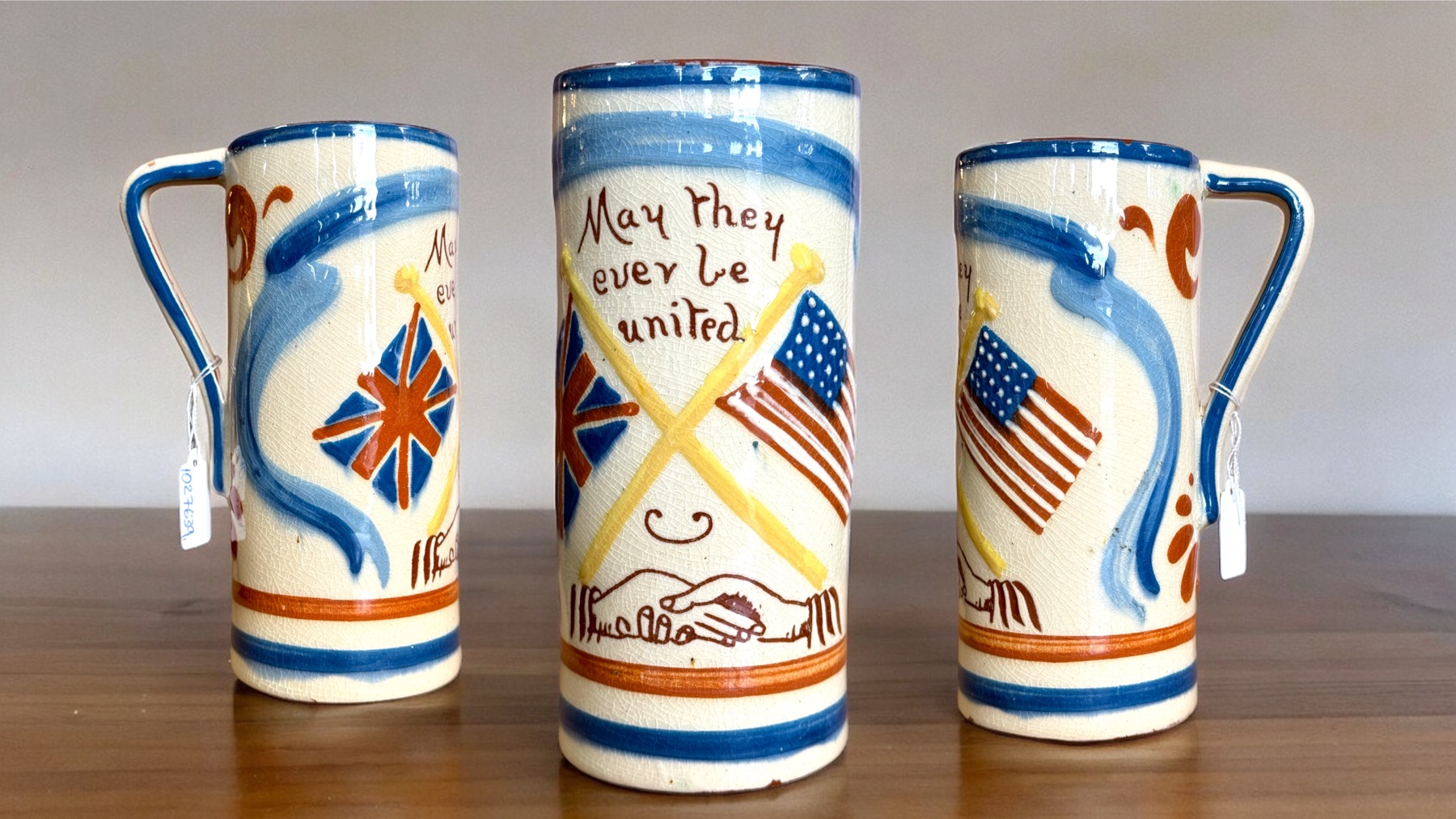
This commemorative is a bit of a mystery; the inscription ‘May They Ever Be United’ suggests an event, such as the ‘Great White Fleet’ of 1907-09, where the US sent a group of their battleships around the world on a publicity cruise – including to Australia, where many souvenirs of the event were made. However, they never visited Britain!
Instead, the mug could have been made circa 1917, when America entered WWI on the 6th April. A thankful Britain hosted American ships & troops on their way to the battlefields, and a souvenir like this would have been readily sold to the visitors. They seem to be very scarce.
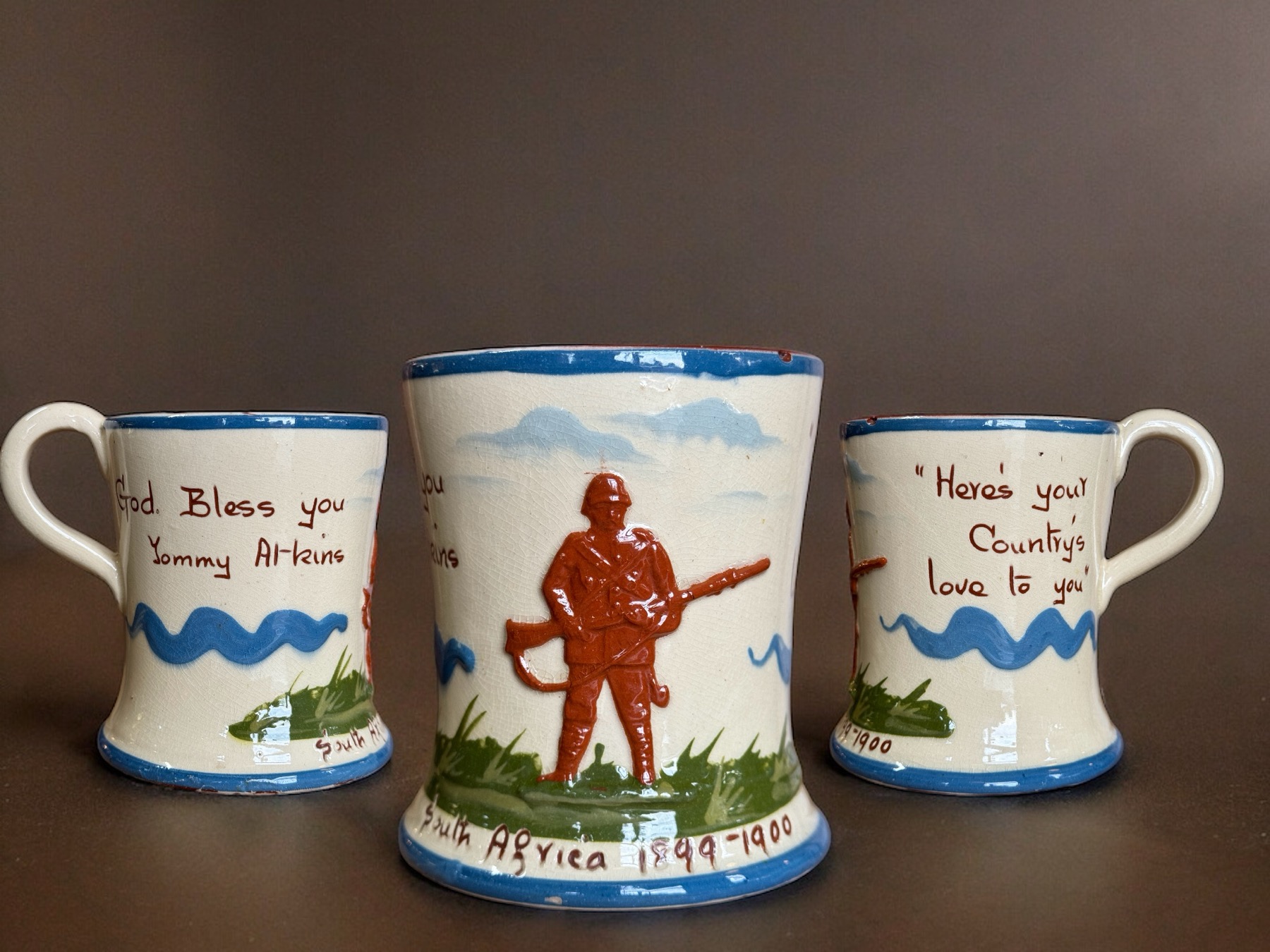
This unusual piece was made to commemorate the Boer War. Marked ‘Aller Vale’, it was made at the Aller Vale pottery, Torquay.
The Torquay Potters
A quick history.
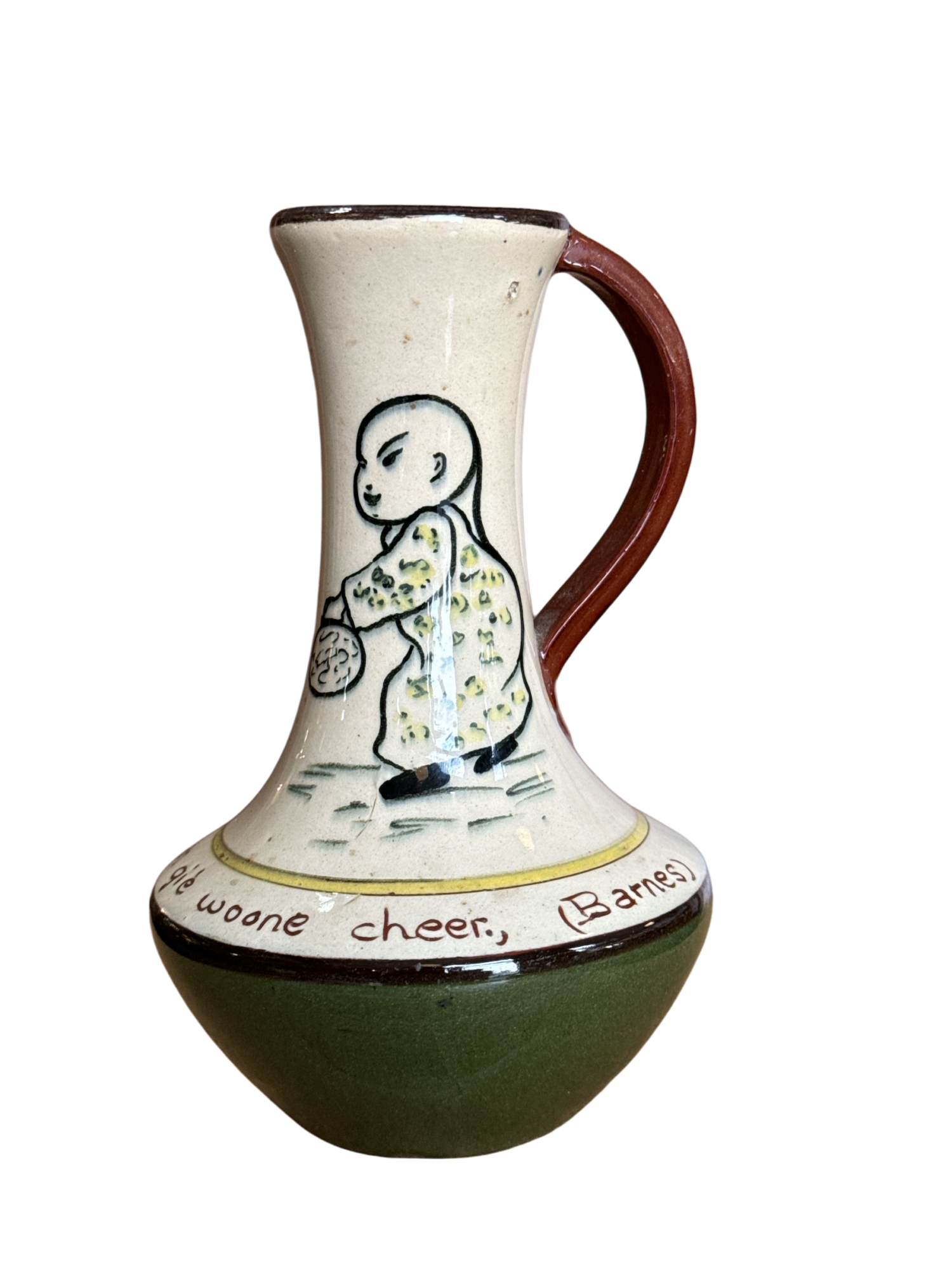
The Devon potters of the Torquay region were active back into pre-history, with a bountiful supply of rich terracotta-toned clay to use. In the late 19th century, the ‘Arts & Crafts’ movement arose, and the region came to support a flourishing industry into the 20th century of Art Potters.
The present industry was started by a Mr Allen, who established the Watcombe Clay Company Ltd on the outskirts of Torquay in 1869, with Mr Charles Brock of Staffordshire as the manager. In 1901 it merged with the Torquay pottery firm of Aller Vale, but continued to make ‘Watcombe’ marked pieces.
The styles of the group of companies in the area are often very similar – they were tapping into the same market, and the Arts & Crafts tradition provided a wonderful stimulus for shapes & decoration. Dr Christopher Dresser was the origin of some incredibly ‘modern’ designs produced at the Watcombe Pottery in the 1870’s, and this simplicity and elegance can be seen in the products of the Torquay potteries for the next few decades.
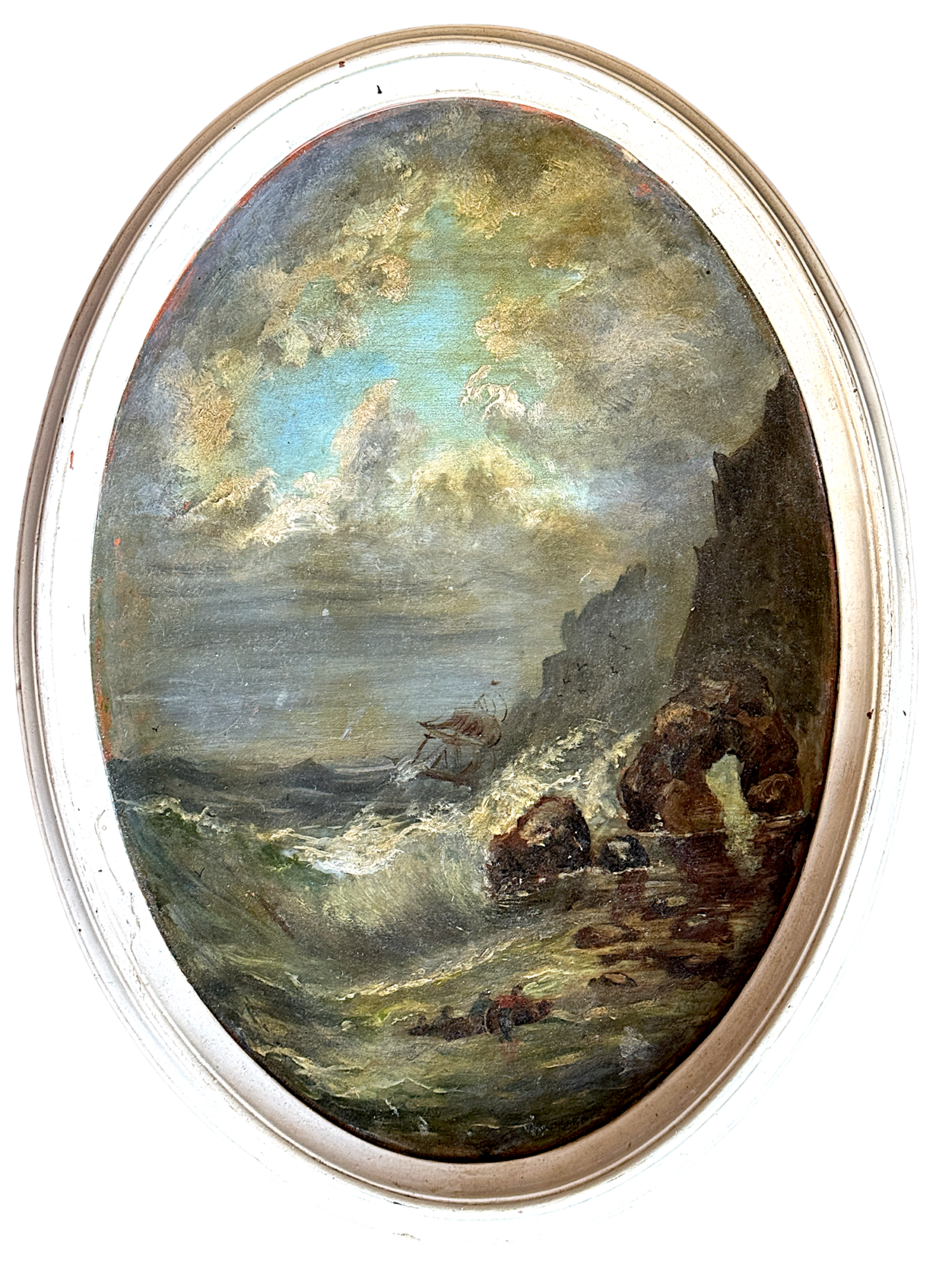

Another line sometimes seen were terracotta plaques, complete with moulded frames, ready to hang on the wall. Some quite talented artists used these as their ‘canvas’, painting in oils.
An example we have sighted comes with an interesting provenance: it has theme of Beatrice Charlotte Henty (1867-1950) on the back, with her address at ‘Tarring’, Kew. She was the granddaughter of James Henty, who is regarded as the first of the settlers to arrive in what is now Victoria in the 1830’s. The painting, of a shipwreck with survivors struggling ashore, is very well painted, and as there doesn’t seem to be any evidence of Beatrice being such a competent artist, the inscription is probably one of ownership – in fact, pieces like this were brought out to the 1880 Exhibition in Melbourne, and continued to be available in the luxury stores of Melbourne in the late 19th century.
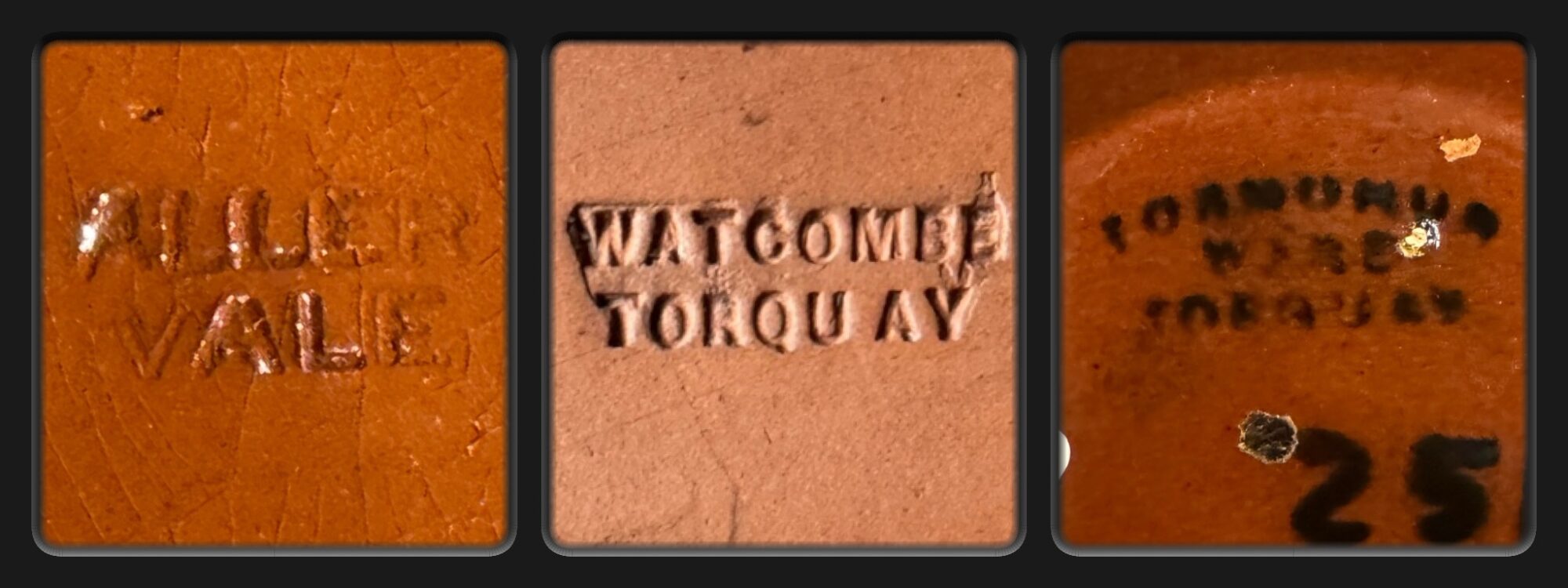
The Torquay Pottery Firms include:
The Torquay Pottery at Heel Cross, Devon, (known as Watcombe after the nearby Country House) commenced production in 1875, making terracotta vessels and plaques as seen above. It was after their merge with nearby Aller Vale that they began to make the ‘Motto Ware’, and used their ‘Royal Torquay Pottery’ mark from 1924.
The introduction of restrictions during WWII stressed the firm to the point of closure before the war finished, in the early 1940’s.
Aller Vale was one of the larger potteries in the Torquay group. Founded near Newton Abbot in 1881 by John Phillips, it was heavily influenced by the Arts & Crafts movement, and absorbed the Watcombe and Longpark potteries in the early 20th century, before being absorbed in turn by the Watcombe Pottery.
It gained a ‘Royal’ addition to its name after visits and purchases of the wares by Queen Victoria’s daughter, Princess Louise, and Alexandra, wife of Edward VII.
Liberty’s of London stocked Aller Vale slipware decorated pieces.
It closed in 1932.
Barton Pottery was founded by four workmen from other Torquay potteries in 1922, and made a variety of ‘typical’ Torquay-style Motto Wares. By 1926 this partnership had broken up, and a Limited Company established – reflected in the mark. It closed in 1935.
Longpark Pottery was founded in 1883, but it was in 1903 when Aller Vale Pottery took them over that they began making the slip-decorated ‘Motto Ware’. As well as ‘LONNGPARK’, they used the name ‘TORMOHUN’. The firm was still running after WWII, but gradually declined, closing in 1957.
There are more firms not mentioned here, but this short list covers the examples you’ll find below. They’re a rather cheerful, even inspirational thing to collect – I mean the advice alone is worth it!
‘All that Glitters is not Gold’…..
-
 Torquay Pottery vase, Chinese boy dec. with verses by William Barnes, c. 1895Sold
Torquay Pottery vase, Chinese boy dec. with verses by William Barnes, c. 1895Sold -
 Watcombe Torquay Pottery jug, hand-painted Sunset Boats, earlier 20th c.$280.00 AUD
Watcombe Torquay Pottery jug, hand-painted Sunset Boats, earlier 20th c.$280.00 AUD -
 Royal Torquay Pottery scenic jug, windmills at sunset, 1930’s$135.00 AUD
Royal Torquay Pottery scenic jug, windmills at sunset, 1930’s$135.00 AUD -
 Torquay Pottery jug, hand painted ‘field mouse’ signed J. Wallace, 1920’s$175.00 AUD
Torquay Pottery jug, hand painted ‘field mouse’ signed J. Wallace, 1920’s$175.00 AUD -
 Torquay Barton Pottery jug & lid, blue-ground fishing boats, c. 1925$295.00 AUD
Torquay Barton Pottery jug & lid, blue-ground fishing boats, c. 1925$295.00 AUD -
 Torquay Watcombe Pottery jug, sail boats, Kingsley quote, c. 1920’s$275.00 AUD
Torquay Watcombe Pottery jug, sail boats, Kingsley quote, c. 1920’s$275.00 AUD -
 Torquay Pottery pedestal bowl, unusual Egyptian scene, c. 1920’s$180.00 AUD
Torquay Pottery pedestal bowl, unusual Egyptian scene, c. 1920’s$180.00 AUD -
 Torquay Longpark Pottery chamber candlestick, Rooster, ‘Last in Bed’ motto ware, c. 1920’s$75.00 AUD
Torquay Longpark Pottery chamber candlestick, Rooster, ‘Last in Bed’ motto ware, c. 1920’s$75.00 AUD -
 Torquay Watcombe Pottery mini souvenir teapot, Knaresborough Chemist, mid 20th c.$45.00 AUD
Torquay Watcombe Pottery mini souvenir teapot, Knaresborough Chemist, mid 20th c.$45.00 AUD -
 Watcombe Torquay Pottery bowl, ‘Polperro – Bustle is not Industry’ c. 1930’s$25.00 AUD
Watcombe Torquay Pottery bowl, ‘Polperro – Bustle is not Industry’ c. 1930’s$25.00 AUD -
 Torquay Watcombe Pottery ‘Exmouth’ pot, ‘All that glitters…’ mid 20th c.$35.00 AUD
Torquay Watcombe Pottery ‘Exmouth’ pot, ‘All that glitters…’ mid 20th c.$35.00 AUD -
 Torquay Motto Ware ‘Scandy’ jampot, c. 1920’s$85.00 AUD
Torquay Motto Ware ‘Scandy’ jampot, c. 1920’s$85.00 AUD -
 Torquay Watcombe Pottery Cottageware jug, ‘Don’t worry, It may never happen’ 1920’s$95.00 AUD
Torquay Watcombe Pottery Cottageware jug, ‘Don’t worry, It may never happen’ 1920’s$95.00 AUD -
 Torquay Pottery Cottageware jug ‘Empty Vessels make the most noise’, 1920’s$95.00 AUD
Torquay Pottery Cottageware jug ‘Empty Vessels make the most noise’, 1920’s$95.00 AUD -
 Torquay Longpark Pottery ‘Tormohun’ jug, ‘There would be no shadows If the sun were not shining’ c. 1920’s$45.00 AUD
Torquay Longpark Pottery ‘Tormohun’ jug, ‘There would be no shadows If the sun were not shining’ c. 1920’s$45.00 AUD -
 Torquay Aller Vale Pottery 3-handled vase, ‘If you can’t be aisy’, c. 1910$75.00 AUD
Torquay Aller Vale Pottery 3-handled vase, ‘If you can’t be aisy’, c. 1910$75.00 AUD -
 Torquay Dartmouth Pottery motto-ware dish, ‘To have a friend is to be one’, c. 1955$54.00 AUD
Torquay Dartmouth Pottery motto-ware dish, ‘To have a friend is to be one’, c. 1955$54.00 AUD -
 Torquay Pottery pin dish ‘Say Little but think much’ 20th c.$35.00 AUD
Torquay Pottery pin dish ‘Say Little but think much’ 20th c.$35.00 AUD -
 Commemorative Torquay Aller Vale mug, ‘May they ever be united’, USA & UK, c.Sold
Commemorative Torquay Aller Vale mug, ‘May they ever be united’, USA & UK, c.Sold -
 Longpark Pottery (Torquay, UK) bowl- purple ground, pink flower, c.1920$45.00 AUD
Longpark Pottery (Torquay, UK) bowl- purple ground, pink flower, c.1920$45.00 AUD -
 Rare Aller Vale Boer War ‘Tommy Atkins’ mug with moulded soldier, ‘God Bless you Tommy Atkins’ 1900$595.00 AUD
Rare Aller Vale Boer War ‘Tommy Atkins’ mug with moulded soldier, ‘God Bless you Tommy Atkins’ 1900$595.00 AUD
FRESH to STOCK
-
 Isle-of-Man souvenir glass in case, “Just a small one from Douglas’, c. 1900Sold
Isle-of-Man souvenir glass in case, “Just a small one from Douglas’, c. 1900Sold -
 Shell-form salt, marked Samson of Paris, c. 1880$220.00 AUD
Shell-form salt, marked Samson of Paris, c. 1880$220.00 AUD -
 French majolica clock in the form of a flower, C. 1880$580.00 AUD
French majolica clock in the form of a flower, C. 1880$580.00 AUD -
 Late victorian lace bobbin made from bone and glass beads C. 1900$35.00 AUD
Late victorian lace bobbin made from bone and glass beads C. 1900$35.00 AUD -
 Late victorian lace bobbin made from bone and glass beads,C.1900$35.00 AUD
Late victorian lace bobbin made from bone and glass beads,C.1900$35.00 AUD -
 Late Victorian turned wood lace bobbin with hand blown beads C 1900$25.00 AUD
Late Victorian turned wood lace bobbin with hand blown beads C 1900$25.00 AUD -
 Late Victorian turned wood lace bobbin with hand blown beads,C. 1900$25.00 AUD
Late Victorian turned wood lace bobbin with hand blown beads,C. 1900$25.00 AUD -
 Late Victorian turned wood lace bobbin with hand blown beads C. 1900Sold
Late Victorian turned wood lace bobbin with hand blown beads C. 1900Sold -
 Italian Olivewood traveling mirror in case, swallow-painted, c. 1900$125.00 AUD
Italian Olivewood traveling mirror in case, swallow-painted, c. 1900$125.00 AUD -
 Moser green-glass decanter & stopper, enamels and prunts, c. 1880$595.00 AUD
Moser green-glass decanter & stopper, enamels and prunts, c. 1880$595.00 AUD -
 Sitzendorf Neoclassical style chamber candlestick, late 19th c.$125.00 AUD
Sitzendorf Neoclassical style chamber candlestick, late 19th c.$125.00 AUD -
 Pair of Mulgawood bookends, by Crown Mulga, A.W.G. Davey & Sons, S.A. c.1950$125.00 AUD
Pair of Mulgawood bookends, by Crown Mulga, A.W.G. Davey & Sons, S.A. c.1950$125.00 AUD -
 Edwardian giltmetal heart shape locket, c. 1910$35.00 AUD
Edwardian giltmetal heart shape locket, c. 1910$35.00 AUD -
 Sitzendorf flower encrusted potpourri vase and cover, c. 1900$195.00 AUD
Sitzendorf flower encrusted potpourri vase and cover, c. 1900$195.00 AUD -
 Indian ivory soldier on horse back, chess piece, mid 19th C$185.00 AUD
Indian ivory soldier on horse back, chess piece, mid 19th C$185.00 AUD -
 Fine quality small carved ivory camel, Indian mid-19th centurySold
Fine quality small carved ivory camel, Indian mid-19th centurySold -
 Edward VII Sterling Silver medallion with cut-out head, schilling c.Sold
Edward VII Sterling Silver medallion with cut-out head, schilling c.Sold -
 Extraordinary Paris Porcelain scent bottle, figure-painted, c. 1860$165.00 AUD
Extraordinary Paris Porcelain scent bottle, figure-painted, c. 1860$165.00 AUD -
 Minton teaset with classical gilt dec, for 8, Circa 1860$650.00 AUD
Minton teaset with classical gilt dec, for 8, Circa 1860$650.00 AUD
